Schoenus apogon
Schoenus brevifolius
Schoenus ericetorum
Schoenus lepidosperma
Schoenus maschalinus
Schoenus melanostachys
Schoenus nitens
Schoenus paludosus
Schoenus scabripes
Schoenus turbinatus
Schoenus vaginatus
Schoenus villosus
Scirpus polystachyos
Scirpus polystachyus
Scleranthus biflorus
Scleria mackaviensis
Scleria rugosa
Scleria tricuspidata
Scolopia braunii
Secamone elliptica
Selaginella uliginosa
Senecio amygdalifolius
Senecio bipinnatisectus
Senecio diaschides
Senecio linearifolius
Senecio macranthus
Senecio magnificus
Senecio minimus
Senecio pinnatifolius
Senecio prenanthoides
Senecio tenuiflorus
Senecio vagus
Senegalia albizioides
Senna acclinis
Senna artemisioides
Senna barronfieldii
Senna cardiosperma
Senna charlesiana
Senna clavigera
Senna ferraria
Senna notabilis
Senna stricta
Senna symonii
Senna venusta
Seringia arborescens
Seringia corollata
Seringia denticulata
Seringia hillii
Seringia lanceolata
Sesbania cannabina
Sesuvium portulacastrum
Setaria australiensis
Sicyos australis
Sida cordifolia
Sigsbeckia orientalis
Siphonodon australis
Sloanea australis
Sloanea woollsii
Smilax australis
Smilax glyciphylla
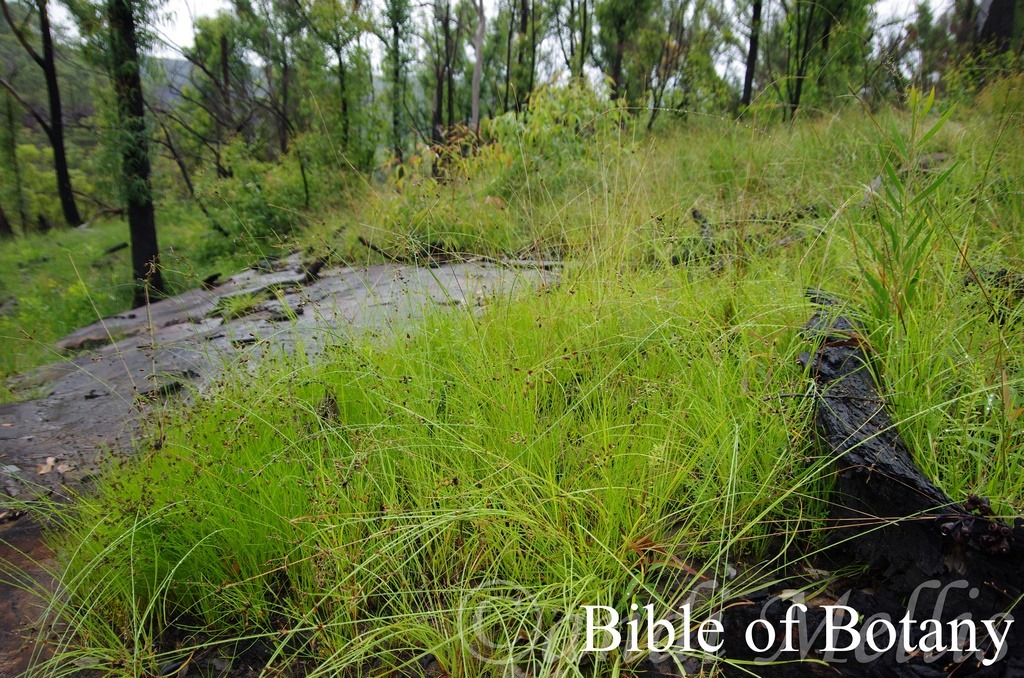
Wombat Creek Conservation Park NSW
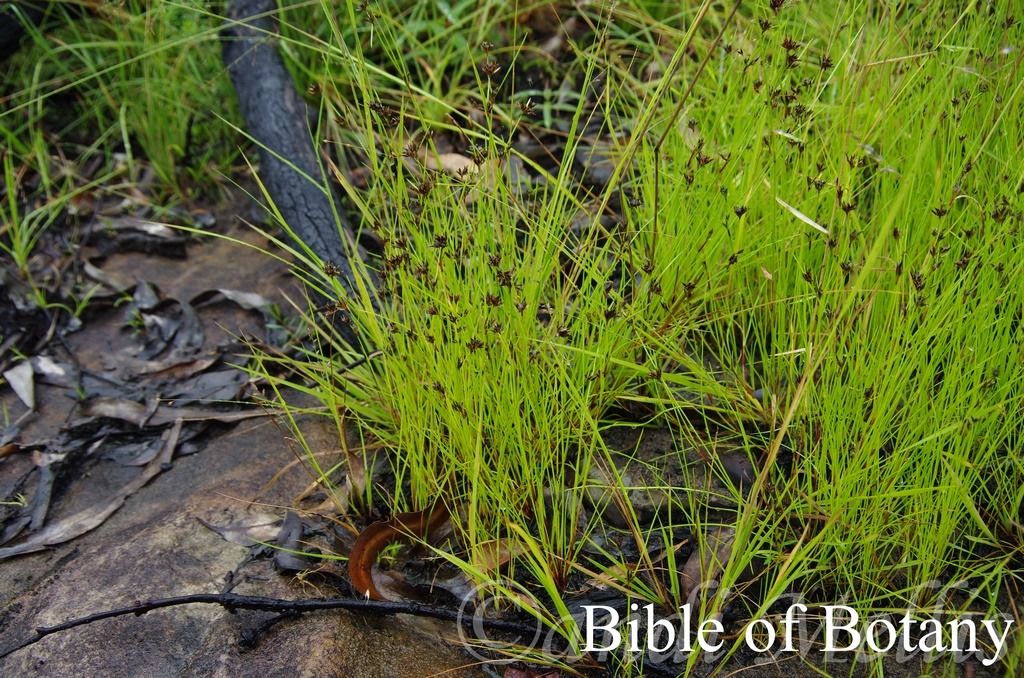
Wombat Creek Conservation Park NSW
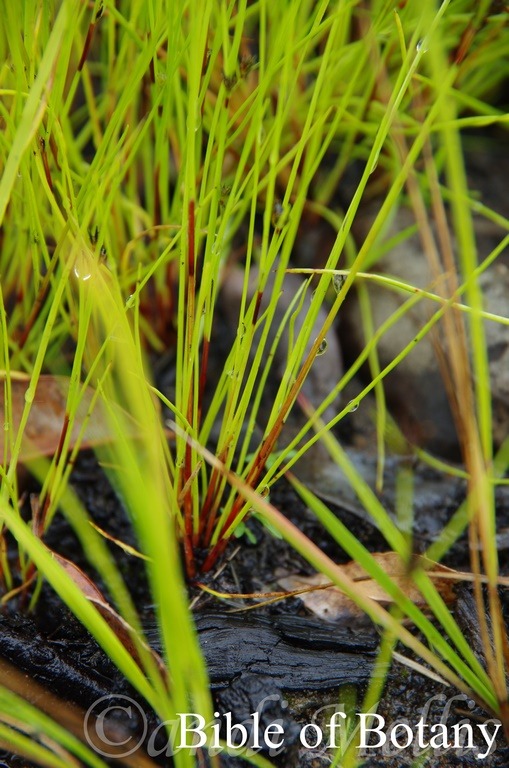
Wombat Creek Conservation Park NSW
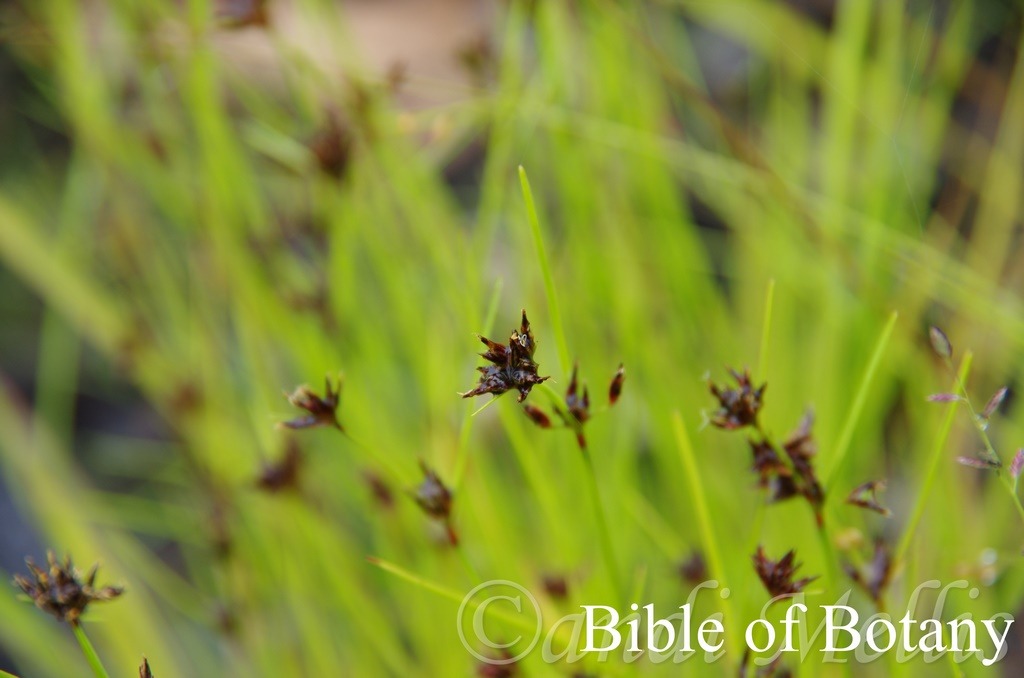
Wombat Creek Conservation Park NSW
Schoenus apogon
Classification:
Unranked: Monocots
Class: Commelinids
Order: Poales
Family: Cyperaceae
Genus: From Skhoînos, which is Ancient Greek for a sedge reed or water loving plant. It refers to plants, which resemble reeds or sedges.
Specie: From Ennea, which is Ancient Greek for nine and Pogon, which is Ancient Greek for a gandfather’s beard. It refers to lemmas or at times other organs which have nine lobes or nine feathery like awns.
Sub specie:
Common Name: Common Bog-rush or Fluke Bog-rush.
Distribution:
Schoenus apogon is found south from the Windsor Tablelands in far North east Queensland to the Flinders Ranges and southern Eyre Peninsula in southern South Australia. It is found on the eastern edge of the Western Plains, Western Slopes, on and east of the Great Dividing Range to the coast including all the major off shore Islands.
It is also found on most of Tasmania and the Bass Strait Islands except for the south west highlands.
There are 2 isolated populations in Western Australia one in the north west on the Mitchell Plateau and the other in the south west on the Young River in the Esperance province.
https://avh.ala.org.au/occurrences/search?taxa=Schoenus+apogon#tab_mapView
Habitat Aspect Climate:
Schoenus apogon prefers partial shade to dappled sun light. It grows in wet situations in seasonally wet sites in shallow depressions, drainage lines in open woodlands, open forests, heaths creek and stream meanders or river deltas. The altitude ranges from 2 meters ASL to 650 meters ASL.
The temperatures range from minus 3 degrees in August to 42 degrees in January.
Rainfalls range from lows of 400mm to 3200mm average per annum.
Soil Requirements:
Schoenus apogon prefers better quality sands to stony medium clays, rocky medium clays, light silts to heavy silts. The soils are derived from decomposed sandstones, granites, metamorphic rocks, brown basalts, black basalts, laterites, accumulated peaty beach sands or accumulated coral sands. The soils pH ranges from 4.5pH to 8pH. It tolerates waterlogged soils often growing in shallow water for long periods. Non saline soils to moderately saline soils are tolerated.
Height & Spread:
Wild Plants: 0.1m to 0.5m by 0.1m to 0.5m.
Characteristics:
Schoenus apogon grows as a tufted annual reed with short, spreading culms. The terete culms are flaccid, striate and modeless or with a single node. The culms usually measure 30mm to 300mm or rarely to 550mm in length by 0.5mm to 1.2mm in diameter. The straw coloured to deep red-brown sheaths are striate and semi glossy to glossy. The mouth is glabrous while the ligule is a minute membrane.
The long, linear leaves measure 50mm to 150mm in length by 1mm to 3mm in width. The apexes are acute. The concolourous laminas are mid green to deep green and glabrous. The margins are entire and inrolled to involute.
The inflorescences are single loosely hemispherical clusters which contain 6 to 16 spikelets, usually with 1 to 4 clusters below. The inflorescences erect and measure 10mm to 15mm in length. The lowest leaf like involucral bract measures 100mm to 170mm in length. The upper bract when present is shorter than the lower bract.
The spikelets are narrow-ovate with an acute apex and 1 to 3 individual flowers. The spikelets measure 2.5mm to 7.5mm in length.
There are 4 to 6 glumes are similar. The lowest 1 to 3 glumes are empty. The narrow ovate glumes have acute apexes and are deep red-brown to blackish, glossy and measure 2mm to 5.5mm in length. The margins are glabrous while the midvein is often scabrous. The 5 or 6 bristles are not plumose and are shorter than or equal in length to the nut.
The 3 stamens are anthers are white to cream while the anthers measure 1mm to 3.2mm in length. The flowers appear from September to February.
The fruits are trigonous, obovoid to subglobose nuts. The green nuts turn off white when ripe and are triribbed, reticulate pitted to trabeculae and glabrous. The nuts measure 1mm to 1.2mm in length by 0.6mm to 0.8mm in diameter.
Confusing Species:
Schoenus apogon is an annual without or with few leaves near the base. The bristles number 4 or 5 and are shorter than or equal in length to the nut.
Schoenus tesquorum is a perennial, with numerous filiform leaves at base. The bristles are absent or are minute.
Wildlife:
Schoenus apogon is important habitat specie for many swamp inhabiting frogs.
Cultivation:
Schoenus apogon is a small, compact interesting little plant rush with great contrasting leaves and flowers when planted in moist rockeries or fish and frog ponds. Once established on moist soils it will usually regenerate annually without being a problematic. It is ideally suited for growing in full sun to lightly shaded areas on flats where drainage problem soils exist.
It has a strong dense root system which probably makes it ideal as a soil stabilizer in wet soggy ground though it does pull easy in softer ground. In cultivation it usually grows as a very dense compact semi spreading domed rush. It grows from 200mm to 250mm in height by 300mm to 350mm in diameter when grown in an open sunny position.
It is most suitable for use around sunny swimming pools, courtyards, besides pathways, shady rockeries, along moist sandy clay banks or along drive ways or adjacent to natural bush gardens. Mass plantings of 5 or more plants separated by small colourful annuals; even in small areas, really does the plant justification especially when it is in flower.
The use of rocks and small boulders can make any water feature appear like an oasis. When making a small water scene use Schoenus apogon large rocks with few plants. Be careful not to over plant as it will look out of place and weedy. Annuals with erect stems and grey or pale blue foliages give long term appeal whereas the flowers will brighten and give a strong contrast for a short period.
If companion plants are sought then the choice of plants to use either side is limited only by size of the area to be landscaped and the size of the other plants as they should be no more than 350mm in height to emphasize Schoenus apogon. Beneath a mallee tree they can be mass planted with 1 or 2 different hobs for a natural bush setting.
Propagation:
Seeds: Collect the nuts after they turn white and begin to fall to the ground.
Sow the nuts directly into a seed raising mix and place the tray beneath 20mm shade cloth. Keep the trays moist at all times. When the seedlings are 25mm to 40mm tall, prick them out and plant them into 50mm native tubes using a seed raising mix. Return the tubes to a sunny position and place them in trays and keep wet at all times
Once the seedlings reach 100mm to 150mm in height plant them out into their permanent position. Mass plantings are best achieved with spacing’s of 1000mm to 1500mm centers. Alternatively the seedlings can be planted into 200mm squat pots. Cover the surface with a layer of gravel and placed the pots in a fish or frog pond where the water level is at the same level as the top of the pots.
Fertilize using seaweed, fish emulsion or organic chicken pellets soaked in water on an alternate basis. Fertilize every two months until the plants are established then twice annually in early September and March to maintain better colour, health, vitality and flowering.
Further Comments from Readers:
“Hi reader, it seems you use The Bible of Botany a lot. That’s great as we have great pleasure in bringing it to you! It’s a little awkward for us to ask, but our first aim is to purchase land approximately 1,600 hectares to link several parcels of N.P. into one at The Pinnacles NSW Australia, but we need your help. We’re not salespeople. We’re amateur botanists who have dedicated over 30 years to saving the environment in a practical way. We depend on donations to reach our goal. If you donate just $5, the price of your coffee this Sunday, We can help to keep the planet alive in a real way and continue to bring you regular updates and features on Australian plants all in one Botanical Bible. Any support is greatly appreciated. Thank you.”
In the spirit of reconciliation we acknowledge the Bundjalung, Gumbaynggirr and Yaegl and all aboriginal nations throughout Australia and their connections to land, sea and community. We pay our respect to their Elders past, present and future for the pleasures we have gained.
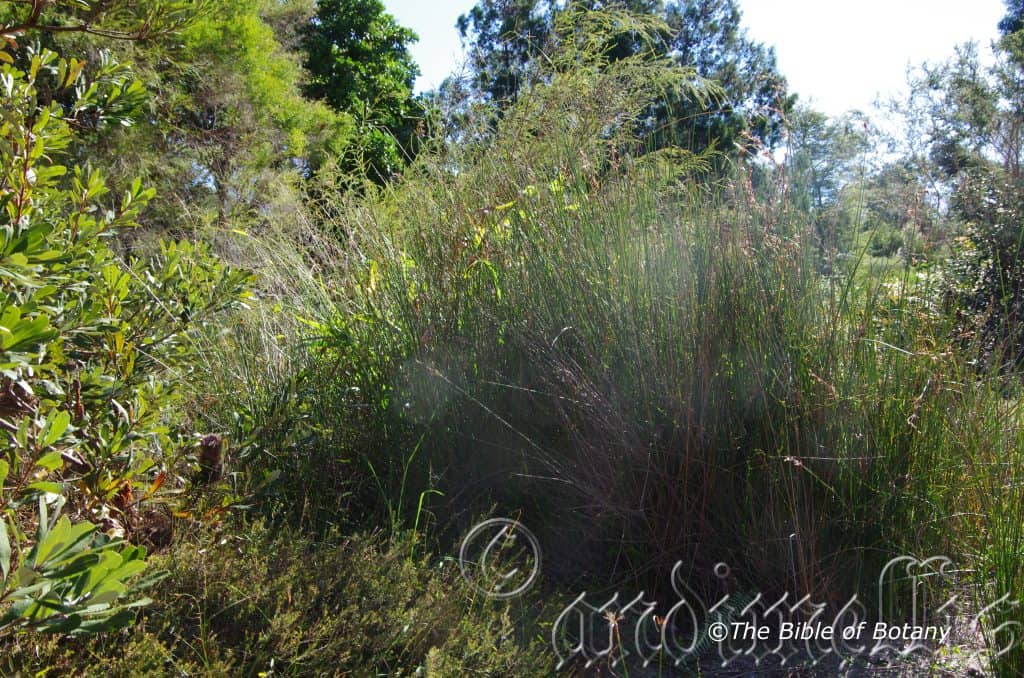
Coffs Harbour NSW
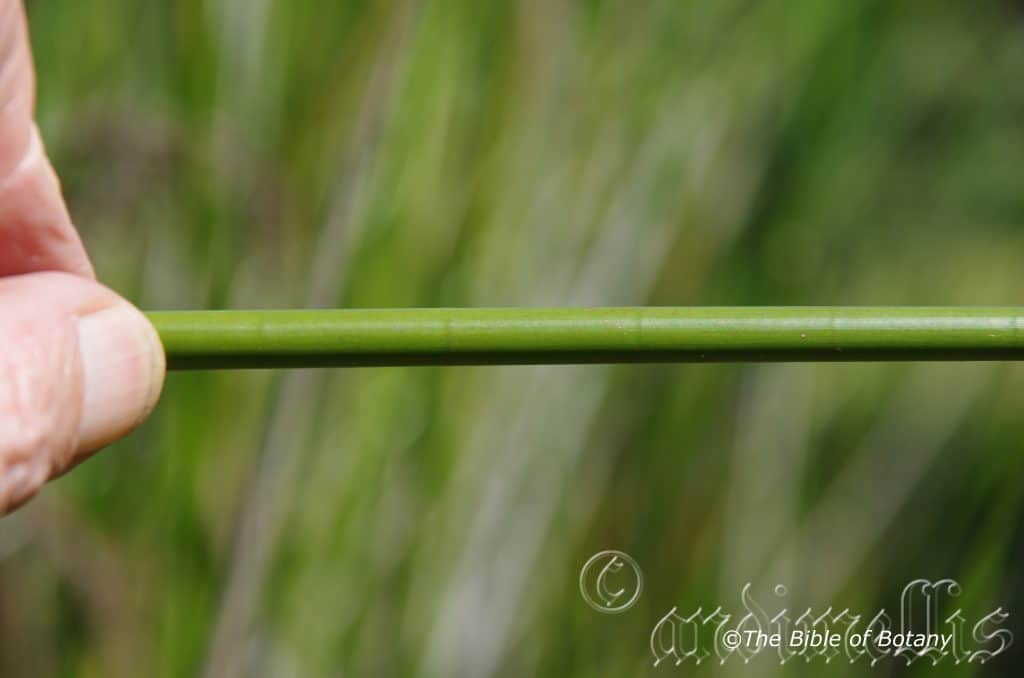
Palmatum Gardens Townsville Qld.
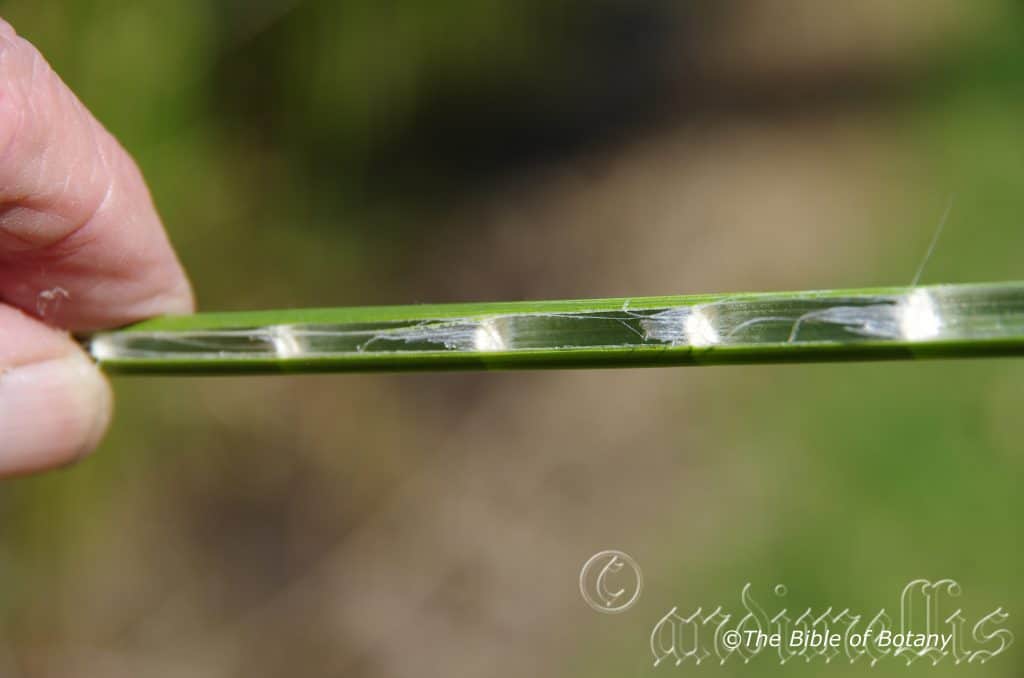
Palmatum Gardens Townsville Qld.
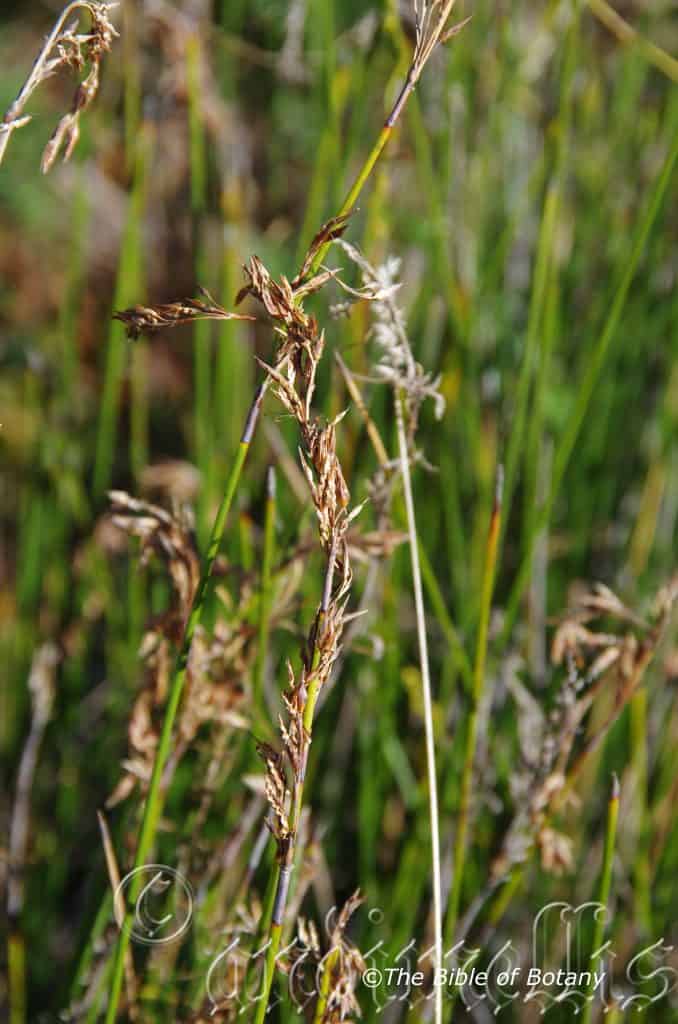
Coffs Harbour NSW
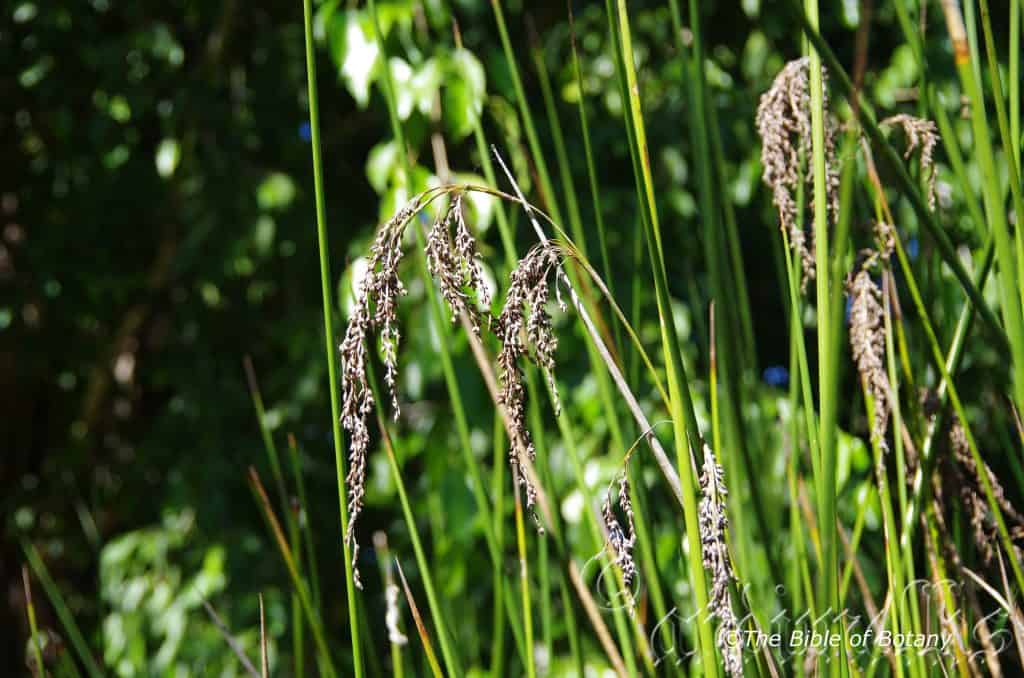
Palmatum Gardens Townsville Qld.
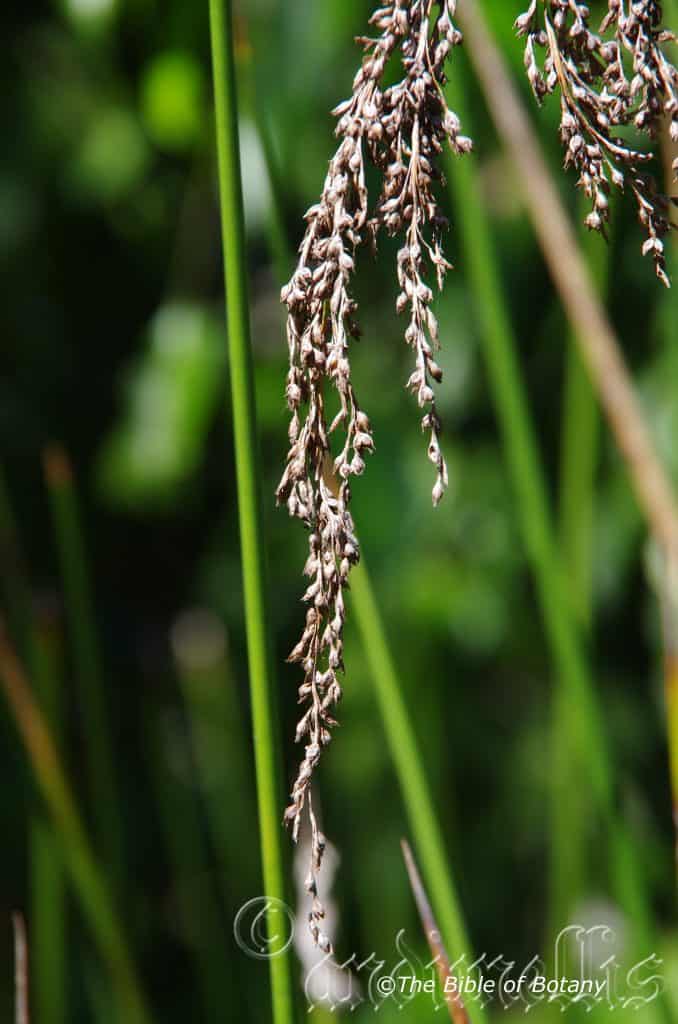
Palmatum Gardens Townsville Qld.
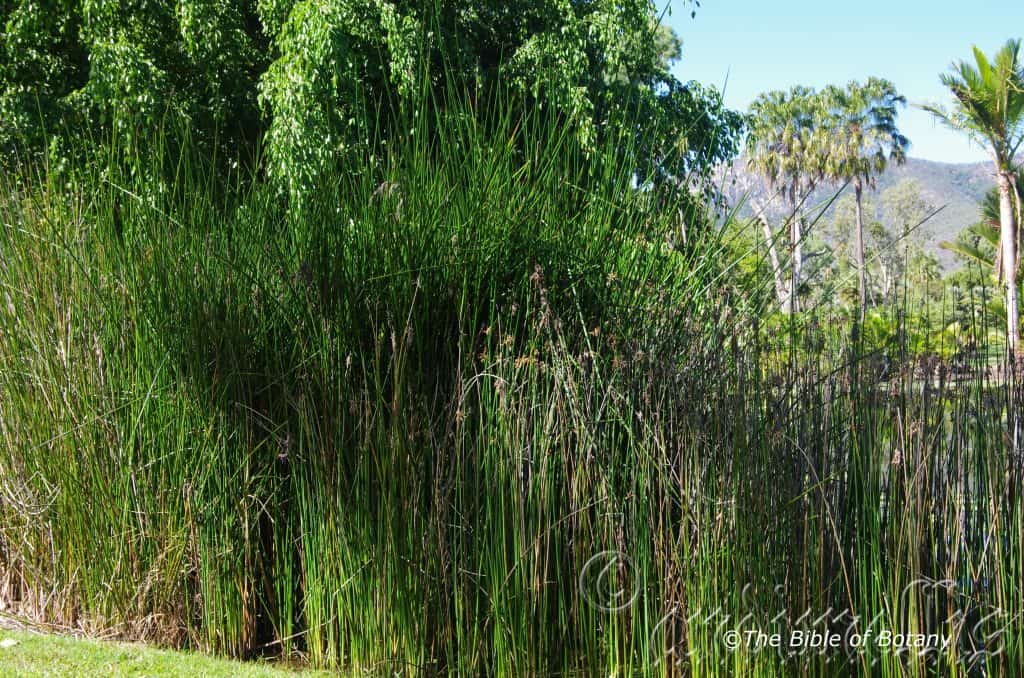
Palmatum Gardens Townsville Qld.
Schoenus brevifolius
Classification:
Unranked: Monocots
Class: Commelinids
Order: Poales
Family: Cyperaceae
Genus: From Skhoînos, which is Ancient Greek for a sedge reed or water loving plant. It refers to plants, which resemble reeds or sedges.
Specie: From Brevis, which is Latin for short and Folium, which is Latin for foliage. It refers to leaves, which are much shorter especially when compared to other species within the genus.
Sub specie:
Common Name: Zigzag Bog-rush.
Distribution:
Schoenus brevifolius is found east from Nornalup Inlet to Albany with a further population to the east on the Oldfield River delta.
In the east it is found south from Murrigal near Cardwell in far north Queensland to the lower Glenelg River in south western Victoria. It is mainly found along the coastal rim except for a few disjunct populations at Wondai, Millmeran, Gundagai and Mount Zero at Halls Gap on the Grampians.
In Tasmania it is found from Waterhouse in the far north east to Spring Bay on the central eastern coast.
https://avh.ala.org.au/occurrences/search?taxa=Schoenus+brevifolius#tab_mapView
Habitat Aspect Climate:
Schoenus brevifolius prefers light dappled shade to full sun. It grows in wet situations in shallow depressions, ephemeral pools, and drainage lines in open woodlands, open forests, moist coastal heaths or freshwater wallums. The altitude ranges from 5 meters ASL to 790 meters ASL.
The temperatures range from minus 3 degrees in August to 38 degrees in January.
Rainfalls range from lows of 600mm to 3200mm average per annum.
Soil Requirements:
Schoenus brevifolius prefers sands, sandy loams to light fatty clays or light to medium silts. The soils are usually derived from accumulated beach sands or at times decomposed sandstones, granites or metamorphic rocks. The soils pH ranges from 5pH to 7pH. It tolerates waterlogged soils often growing in shallow water for long periods. Non saline soils to moderately saline soils are tolerated.
Height & Spread:
Wild Plants: 0.3m to 0.9m by 0.5m to 1.2m
Characteristics:
Schoenus brevifolius grows as an erect loosely tufted perennial with short, stout rhizomes. The culms are rigid, deeply grooved, modeless and measure 300mm to 900mm in length by 1mm to 1.8mm in diameter.
The short, linear, erect leaves measure 15mm in length. The sheath is deep red-brown, smooth and glistening to glossy. The mouth is glabrous while the ligule is a short hyaline membrane.
The inflorescences are loosely clustered, erect, narrow spikes with 4 to 7 nodes. The peduncles and rachilla are glabrous. The spikes measure 50mm to 250mm in length. The lowest involucral bracts measure 110mm to 15mm in length.
The spikelets are narrow ovate with acute apexes. The 2 to 5 individual flowers measure 8mm to 11mm in length.
There are 7 to 10 glumes are similar. The lowest 2 to 4 glumes are empty. The narrow ovate glumes have acute apexes and are deep red-brown to blackish and are dull to semi glossy. The fertile glumes measure 7mm to 10mm in length. The margins are usually covered in off white ciliate hairs or are rarely glabrous. The bristles are absent or rarely are 1 to 3 filiform bristles which measure 2mm to 3mm in length.
The 3 stamens are anthers are white to cream while the anthers measure 3mm to 4.5mm in length. The flowers appear from October to February.
Schoenus brevifolius fruits are nuts. The glabrous green grains turn dull reddish-brown to dull brownish-red when ripe with 3 slightly rugose ribs. The grains measure 1mm to 1.5mm in length by 0.5mm to 0.7mm in diameter.
Confusing Species:
Schoenus brevifolius has a short spreading rhizome. The mouth of the leaf sheath below the ligule is glabrous. The sheaths are deep reddish-brown more or less smooth. The fertile glumes measure 7mm to 10mm in length.
Schoenus melanostachys forms large semi erect to weeping tussocks. The mouth of the leaf sheaths is villous to floccose. The leaf sheaths are very deep reddish-brown to black and scaberulous. The fertile glumes measure 4mm to 7mm in length.
Wildlife:
Schoenus brevifolius is important habitat specie for many swamp inhabiting frogs.
Cultivation:
Schoenus brevifolius is a medium, open rush with great contrasting culms and flowers when planted in moist rockeries or fish and frog ponds. Once established on moist soils it will usually regenerate annually without being a problematic. It is ideally suited for growing in full sun to lightly shaded areas on flats where drainage problem soils exist.
It has a strong dense root system which makes it ideal as a soil stabilizer in wet soggy ground though it does pull easy in wet sandy soils. In cultivation it usually grows as a very dense compact semi spreading domed rush. It grows from 800mm to 900mm in height by 400mm to 500mm in diameter when grown in an open sunny position.
It is most suitable for use around sunny swimming pools, courtyards, besides pathways, shady rockeries, below retaining walls that have seepage problems or along drive ways or adjacent to natural bush gardens. Mass plantings of 5 or more plants separated by small colourful annuals; even in small areas, really does the plant justification especially when it is in flower. It looks great as the taller feature at the back surrounded by procumbent annuals.
The use of rocks and boulders can make any water feature appear like an oasis. When making a medium to large water scene use Schoenus brevifoliuslarge rocks with few plants. Be careful not to over plant as it will look out of place and weedy. Annuals with erect stems and grey or pale blue foliages give long term appeal whereas the flowers will brighten and give a strong contrast for a short period.
If companion plants are sought then the choice of plants to use either side is limited only by size of the area to be landscaped and the size of the other plants as they should be no more than 350mm in height to emphasize Schoenus brevifolius. The smaller Scaevola specie, Ranunculus species, Hibbertia species, Lechenaultia species or even some of the dwarf ferns like Doodia media or Adiantum aethiopicum where it is in semi-shade as all have great contrasting foliages and add colour and texture as do the herbs with colour when in flower.
Propagation:
Seeds: Collect the nuts after they turn white and begin to fall to the ground.
Sow the nuts directly into a seed raising mix and place the tray beneath 20mm shade cloth. Keep the trays moist at all times. When the seedlings are 25mm to 40mm tall, prick them out and plant them into 50mm native tubes using a seed raising mix. Return the tubes to a sunny position and place them in trays and keep wet at all times
Once the seedlings reach 100mm to 150mm in height plant them out into their permanent position. Mass plantings are best achieved with spacing’s of 1000mm to 1500mm centers. Alternatively the seedlings can be planted into 200mm squat pots. Cover the surface with a layer of gravel and placed the pots in a fish or frog pond where the water level is at the same level as the top of the pots.
Fertilize using seaweed, fish emulsion or organic chicken pellets soaked in water on an alternate basis. Fertilize every two months until the plants are established then twice annually in early September and March to maintain better colour, health, vitality and flowering.
Further Comments from Readers:
“Hi reader, it seems you use The Bible of Botany a lot. That’s great as we have great pleasure in bringing it to you! It’s a little awkward for us to ask, but our first aim is to purchase land approximately 1,600 hectares to link several parcels of N.P. into one at The Pinnacles NSW Australia, but we need your help. We’re not salespeople. We’re amateur botanists who have dedicated over 30 years to saving the environment in a practical way. We depend on donations to reach our goal. If you donate just $5, the price of your coffee this Sunday, We can help to keep the planet alive in a real way and continue to bring you regular updates and features on Australian plants all in one Botanical Bible. Any support is greatly appreciated. Thank you.”
In the spirit of reconciliation we acknowledge the Bundjalung, Gumbaynggirr and Yaegl and all aboriginal nations throughout Australia and their connections to land, sea and community. We pay our respect to their Elders past, present and future for the pleasures we have gained.
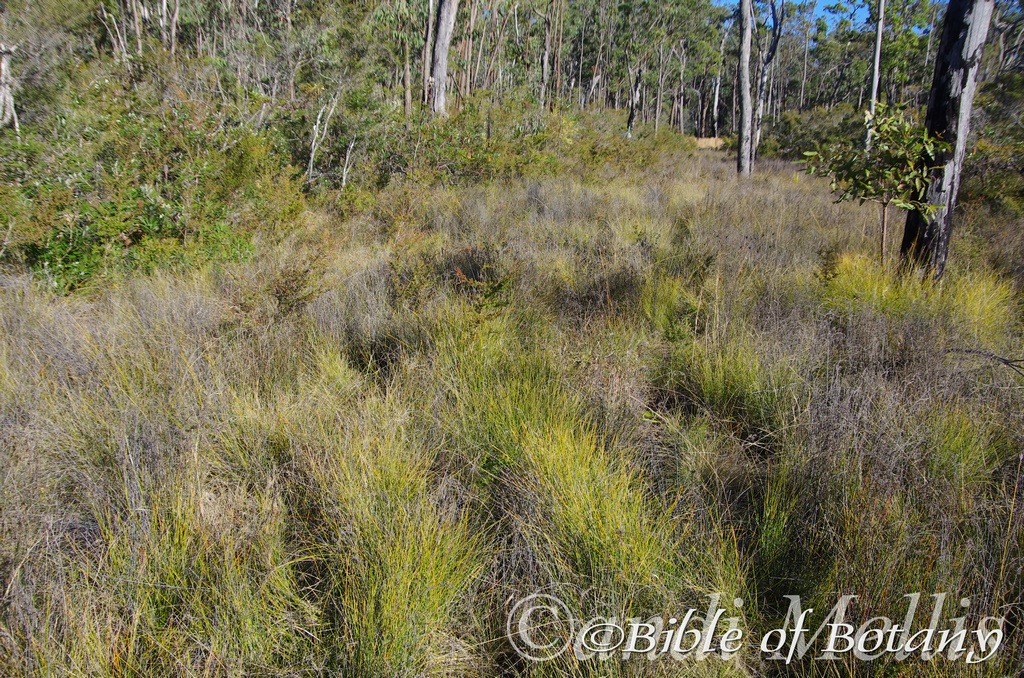
The Pinnacles NSW
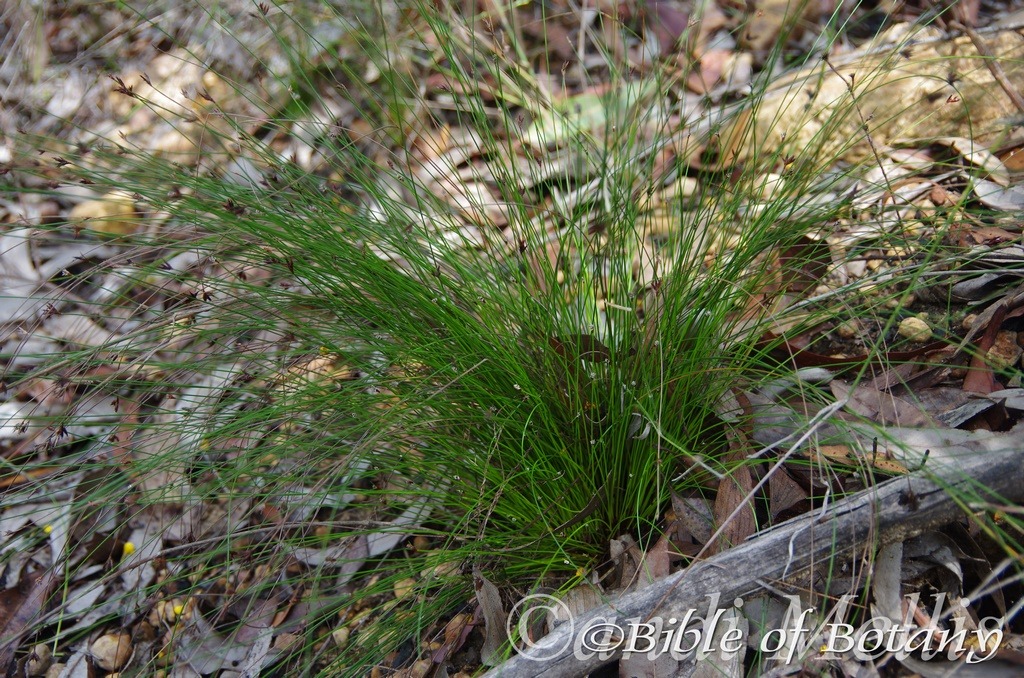
Banyabba National Park NSW
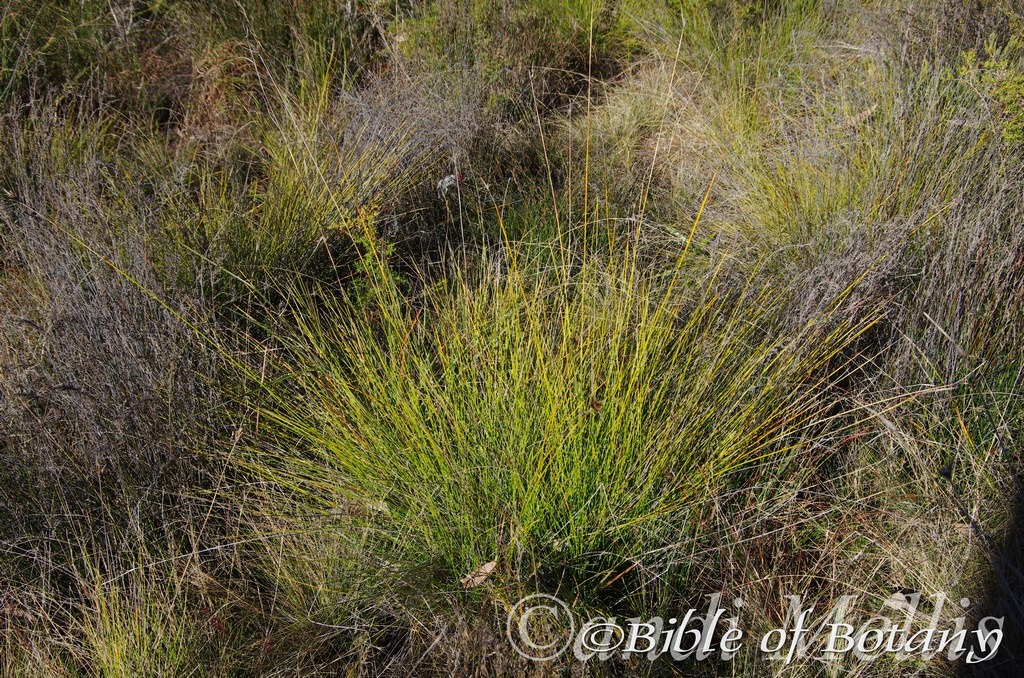
The Pinnacles NSW
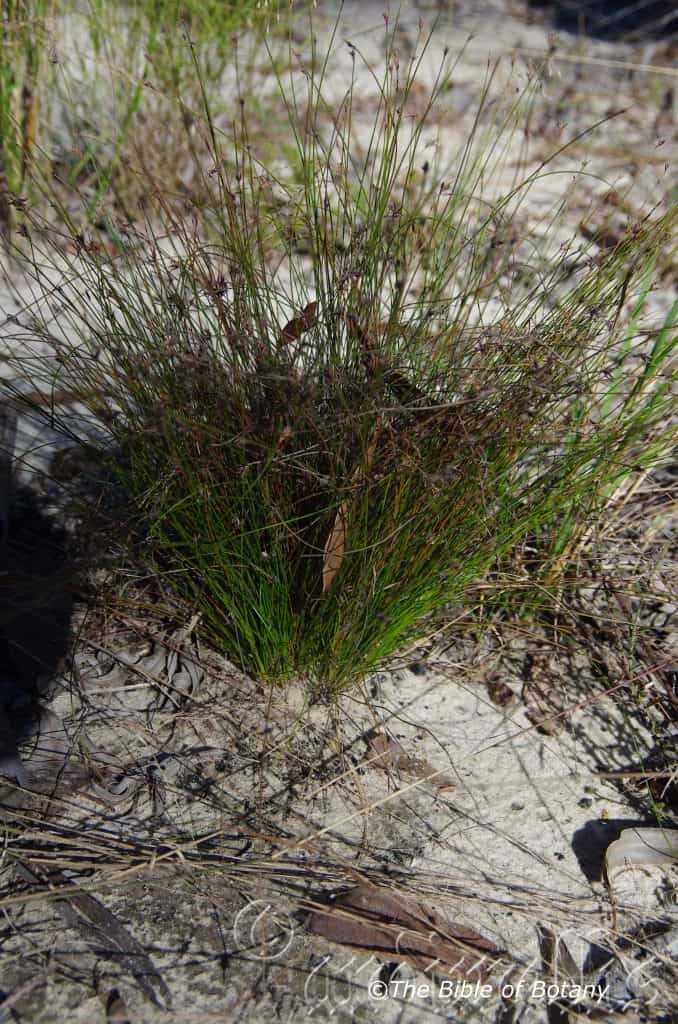
The Pinnacles NSW
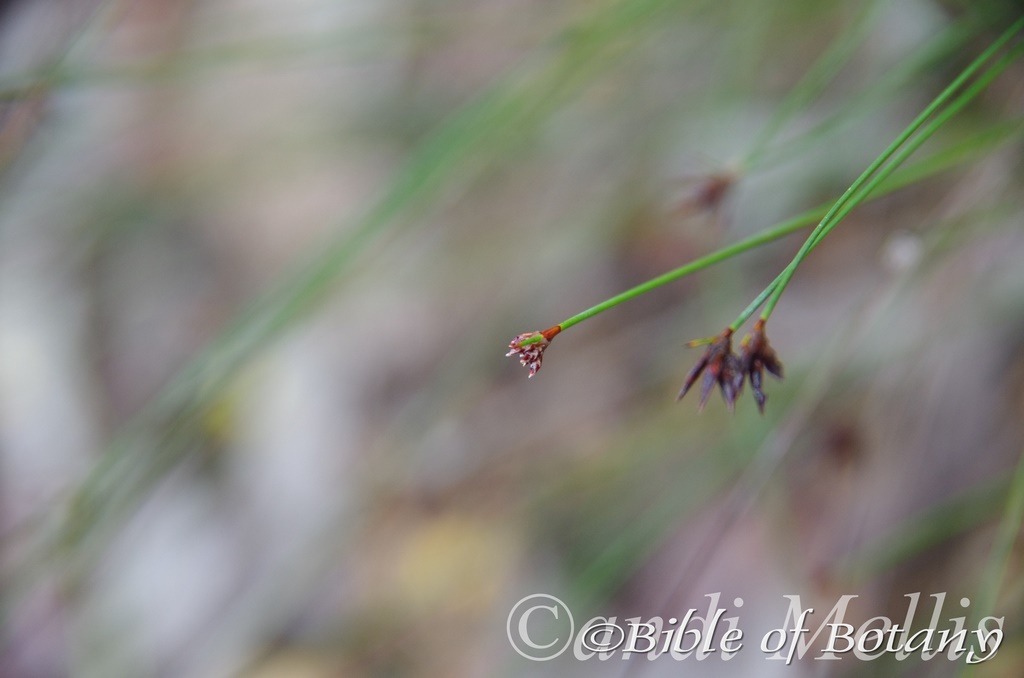
Banyabba National Park NSW
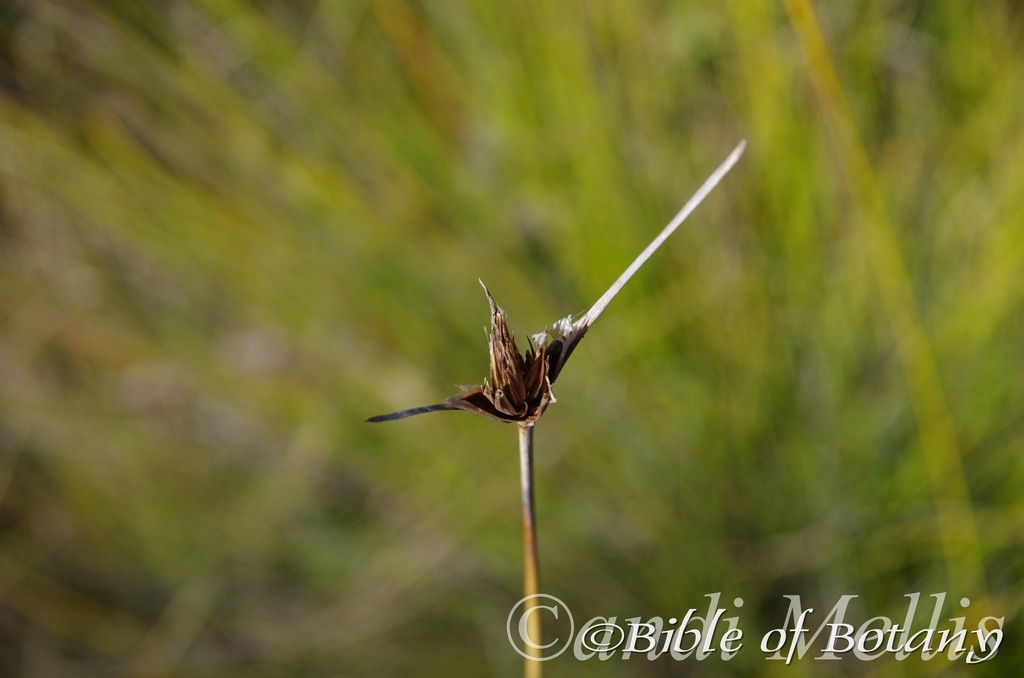
The Pinnacles NSW
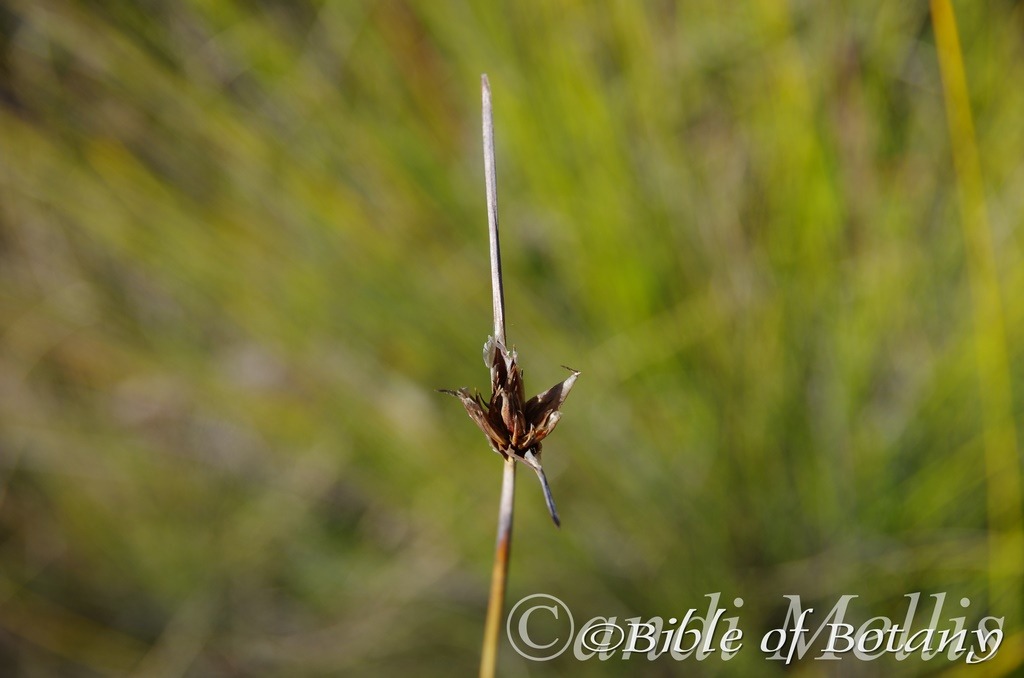
The Pinnacles NSW
Schoenus ericetorum
Classification:
Unranked: Monocots
Class: Commelinids
Order: Poales
Family: Cyperaceae
Genus: From Skhoînos, which is Ancient Greek for a sedge reed or water loving plant. It refers to plants, which resemble reeds or sedges.
Specie: From Ericetorum, which is Latin for of the heathlands or moorlands. It refers to plants, which prefer to grow around warmer, drier or seasonal, swampy marshlands or in native wallums.
Sub specie:
Common Name: Heath Bog-rush.
Distribution:
Schoenus ericetorum is found in 3 connecting populations bounded by Blue Lake on Moreton Island in south east coastal Queensland to Coonabarrabran then south east to the Cox River then south to Kydra Peaks in New South Wales then south to Mallacoota in north eastern coastal Victoria.
The interesting thing with Schoenus ericetorum is that it has not found on the Granite Belt or New England Plateau from the Torrington Recreational Reserve in the north, south to the Goulburn river near Murumbo in central eastern New South Wales despite the soils, weather and aspects all being conducive for the plants liking.
https://avh.ala.org.au/occurrences/search?taxa=Schoenus+ericetorum#tab_mapView
Habitat Aspect Climate:
Schoenus ericetorum prefers partial shade to full sun. It grows in moist open woodlands, open Eucalyptus forests, dry sclerophyll forests or dry heaths. The altitude ranges from 3 meters ASL to 1100 meters ASL.
The temperatures range from minus 5 degrees in August to 39 degrees in January.
Rainfalls range from lows of 400mm to 2000mm average per annum.
Soil Requirements:
Schoenus ericetorum prefers sands to light fatty clays. The soils are usually derived from decomposed sandstones or granites. The soils pH ranges from 5.5pH to 6.5pH. It does not tolerate waterlogged soils. Non saline soils to moderately saline soils are tolerated.
Height & Spread:
Wild Plants: 0.15m to 0.4m by 0.1m to 0.25m.
Characteristics:
Schoenus ericetorum grows as a small tufted perennial with erect rigid culms. The terete culms are grooved, smooth or scabrous and nodeless. The culms measure 100mm to 400mm in length by0.4mm to 0.8mm in diameter. The scaberulous or papillose sheaths are red-brown and dull to semi glossy. The mouth is covered in long, white ciliate or floccose hairs while the ligule is a short hyaline membrane.
The short, linear leaves measure 10mm to 16mm in length by 1mm to 3mm in width. The concolourous laminas are mid grass-green and glabrous to sparsely covered in white hirsute hairs. The margins are entire and inrolled to involute. The apexes are acute.
The inflorescences are loose, turbinate panicles with 1 to 14 spikelets in 1 or 2 clusters. The peduncles and rachilla are glabrous. The clusters measure 5mm to 15mm in length. The lowest involucral bracts measure 2omm in length while the upper bracts are shorter.
The spikelets are narrow ovate to linear with acute apexes. The 1 or 2 individual flowers measure 4mm to 7mm in length.
There are 6 to 11 glumes are similar. The lowest 4 to 8 glumes are empty. The narrow ovate glumes have acute apexes and are deep red-brown to blackish on the middle section and apical half and straw coloured near the base. It is dull to semi glossy. The margins are usually covered in off white floccose hairs while the upper glumes may be glabrous. The fertile glumes measure 4mm to 5mm in length. The bristles are absent.
The 3 stamens are anthers are white to cream while the anthers measure 1.7mm to 3.7mm in length. The flowers appear from September to November.
Schoenus ericetorum fruits are trigonous, obovoid to ellipsoid nuts. The green nuts turn red-brown with darker patches when ripe and are faintly rugose, papillose, glabrous, dull. The nuts measure 1.4mm to 1.8mm in length by 0.8mm to 1.1mm in diameter.
Confusing Species:
Schoenus ericetorum’s mouth of the leaf sheaths is covered in long white ciliate hairs. There are 6 to 11 glumes with the lowest 4 to 8 being empty.
Schoenus imberbis’s mouth of the leaf sheaths is covered in white glabrous or sparsely and minutely ciliolate hairs. There are 5 to 7 glumes with the lowest 3 to 5 being empty.
Wildlife:
Schoenus ericetorum is important habitat specie for many swamp inhabiting frogs.
Cultivation:
Schoenus ericetorum is a medium, loosely compact rush with great contrasting erect culms and flowers when planted in moist rockeries or fish and frog ponds. Once established on moist soils it will usually regenerate annually without being a problematic. It is ideally suited for growing in full sun to lightly shaded areas on flats where drainage problem soils exist.
It has a strong dense root system which makes it ideal as a soil stabilizer in wet soggy ground though it does pull easy in wet sandy soils. In cultivation it usually grows as a very dense compact semi spreading domed rush. It grows from 250mm to 400mm in height by 100mm to 250mm in diameter when grown in an open sunny position.
It is most suitable for use around sunny swimming pools, courtyards, besides pathways, shady rockeries, below retaining walls that have seepage problems or along drive ways or adjacent to natural bush gardens. Mass plantings of 5 or more plants separated by small colourful annuals; even in small areas, really does the plant justification especially when it is in flower. It looks great as the taller feature at the back surrounded by procumbent annuals.
The use of rocks and boulders can make any water feature appear like an oasis. When making a medium to large water scene use Schoenus ericetorumlarge rocks with few plants. Be careful not to over plant as it will look out of place and weedy. Annuals with erect stems and grey or pale blue foliages give long term appeal whereas the flowers will brighten and give a strong contrast for a short period.
If companion plants are sought then the choice of plants to use either side is limited only by size of the area to be landscaped and the size of the other plants as they should be no more than 350mm in height to emphasize Schoenus ericetorum. The smaller Scaevola specie, Ranunculus specie, Hibbertia specie, Lecshenaltia specie or even some of the dwarf Doodia ferns like Doodia media or Adiantum aethiopicum all have great contrasting foliages and add colour and texture as do the herbs with colour when in flower.
Propagation:
Seeds: Collect the nuts after they turn white and begin to fall to the ground.
Sow the nuts directly into a seed raising mix and place the tray beneath 20mm shade cloth. Keep the trays moist at all times. When the seedlings are 25mm to 40mm tall, prick them out and plant them into 50mm native tubes using a seed raising mix. Return the tubes to a sunny position and place them in trays and keep wet at all times
Once the seedlings reach 100mm to 150mm in height plant them out into their permanent position. Mass plantings are best achieved with spacing’s of 1000mm to 1500mm centers. Alternatively the seedlings can be planted into 200mm squat pots. Cover the surface with a layer of gravel and placed the pots in a fish or frog pond where the water level is at the same level as the top of the pots.
Fertilize using seaweed, fish emulsion or organic chicken pellets soaked in water on an alternate basis. Fertilize every two months until the plants are established then twice annually in early September and March to maintain better colour, health, vitality and flowering.
Further Comments from Readers:
“Hi reader, it seems you use The Bible of Botany a lot. That’s great as we have great pleasure in bringing it to you! It’s a little awkward for us to ask, but our first aim is to purchase land approximately 1,600 hectares to link several parcels of N.P. into one at The Pinnacles NSW Australia, but we need your help. We’re not salespeople. We’re amateur botanists who have dedicated over 30 years to saving the environment in a practical way. We depend on donations to reach our goal. If you donate just $5, the price of your coffee this Sunday, We can help to keep the planet alive in a real way and continue to bring you regular updates and features on Australian plants all in one Botanical Bible. Any support is greatly appreciated. Thank you.”
In the spirit of reconciliation we acknowledge the Bundjalung, Gumbaynggirr and Yaegl and all aboriginal nations throughout Australia and their connections to land, sea and community. We pay our respect to their Elders past, present and future for the pleasures we have gained.
Schoenus maschalinus
Classification:
Unranked: Monocots
Class: Commelinids
Order: Poales
Family: Cyperaceae
Genus: From Skhoînos, which is Ancient Greek for a sedge reed or water loving plant. It refers to plants, which resemble reeds or sedges.
Specie: Possibly from Mâschalinus, which is Ancient Greek for to have flowers in the axis. It refers to monocotyledons, which have their flowers appearing from the leaf axis.
Sub specie:
Common Name:
Distribution:
Schoenus maschalinus is found in 3 disjunct populations in the east and an isolated population in south west Western Australia.
The Western Australia population is found along the coastal strip from the western side of the Pearce Air force Base on the Swan Plain and Tornndirrup National Park near Albany.
The eastern Populations are found south from Pie Creek near Port Macquarie to Kangaroo Island in southern South Australia, the bass Strait Islands and most of Tasmania’s mainland except for the north east Highlands.
It is found further north around the Koombooloomba Dam near Tully, Kroombit Creek on the Kroombit Tablelands and an area bounded by the Ships Stern, Bald Rock, Kyogle and the Whian Whian National Park on the Queensland New South Wales border region.
https://avh.ala.org.au/occurrences/search?taxa=Schoenus+maschalinus#tab_mapView
Habitat Aspect Climate:
Schoenus maschalinus prefers partial shade to dappled sun light. It grows in shallow depressions, moist heaths especially in mud of freshwater swamps or wallums. The altitude ranges from 5 meters ASL to 650 meters ASL.
The temperatures range from minus 3 degrees in August to 38 degrees in January.
Rainfalls range from lows of 400mm to 3200mm average per annum.
Soil Requirements:
Schoenus maschalinus prefers better quality light fatty clays to medium clays. The soils are usually derived from granites, black basalts or at times reddish sandstones. The soils pH ranges from 5pH to 6pH. It does not tolerate waterlogged soils however good soil moisture and seasonal flooding are tolerated. Non saline soils to moderately saline soils are tolerated.
Height & Spread:
Wild Plants: 0.04m to 0.2m by 0.1m to 0.3m.
Characteristics:
Schoenus maschalinus grows as a small, loose matted perennial with very slender culms. The culms area flaccid, decumbent, branching and root at the nodes. The culms measure 40mm to 200mm in length by 0.3mm to 0.5mm in diameter. The sheath is straw coloured to reddish-yellow, striated and semi glossy. The mouth is glabrous while the ligule absent.
The linear leaves measure 15mm to 30mm in length by 1mm to 1.5mm in width. The concolourous laminas are spreading, mid grass-green to deep grass-green and glabrous. The laminas are flat or decurve slightly at the margins while the margins are usually finely toothed or at times entire. The apexes are obtuse.
The inflorescences are short, solid spikes with 2 to 6 nodes and each node has 1 or 2 spikelets. The ovate spikelets have acute apexes while the peduncle, rachilla and pedicels are scabrous. The spikelets measure 30mm to 80mm in length.
The 3 to 5 similar glumes are ovate-lanceolate to ovate with 1 or 2 of the lower ones being empty. The apexes are obtuse to obtuse-acute. The whitish to dark red-brown, glossy glume’s margins are glabrous while the midvein is often scabrous. The fertile glumes measure 2mm to 3.5mm in length. The usually 6 or a at times 3 to 5 bristles are filiform, scale like and are slightly shorter than nuts.
The 2 or 3 anthers are white to cream and measure 0.8mm to 1mm in length. The white to cream style is trifid. The flowers appear from October to February but may appear throughout the year in warmer locations where optimum conditions prevail.
The fruits are trigonous, ellipsoid nuts. The green nuts turn white to pastel fawnish-yellow and glossy when ripe. The nuts measure 0.8mm to 1.3mm in length by 0.6mm to 0.8mm in diameter.
Confusing Species:
Schoenus maschalinus’s culms are decumbent and leafy at the nodes. The glumes are acute. The anthers measure 0.8mm to 1mm in length. The 3 to 6 bristles are not plumose and shorter than nut.
Schoenus nitens’s culms are erect, nodeless. The glumes are obtuse to broad acute. The anthers measure 1.5mm to 2mm in length. The 6 bristles are plumose and are about as long as nuts.
Wildlife:
Schoenus maschalinus wildlife is unknown to the author.
Cultivation:
Schoenus maschalinus is a low growing matted rush which makes an ideal lawn once it can be established. It is particularly useful in moderate traffic areas where full sun to deep shady conditions vary greatly throughout the different seasons. It is an excellent small rush for moist to wet problemsome areas for small to large gardens. It can be mown and will recover very quickly and because of its height mowing is far less frequent than with normal grass lawns.
It is a not a preferred fodder crop of grazing stock or native animals but has been observed as a stand by rush when pressure mounts on surrounding grasses in times of severe drought. It has a strong bitter nutty taste. It has a dense root system which makes it ideal as a soil stabilizer in wet soggy ground though it does pull easy in sandy type soils.
Propagation:
Seeds: Collect the nuts after they turn white and begin to fall to the ground.
Sow the nuts directly into a seed raising mix and place the tray beneath 20mm shade cloth. Keep the trays moist at all times. When the seedlings are 20mm to 30mm tall, prick them out and plant them into 50mm native tubes using a seed raising mix. Return the tubes to a sunny position and place them in trays and keep moist at all times
Once the seedlings reach 80mm to 100mm in diameter plant them out into their permanent position. Mass plantings are best achieved with spacing of 500mm to 750mm centers.
Fertilize using Seaweed, fish emulsion or organic chicken pellets soaked in water and apply the liquid on an alternate basis. Fertilize every 2 months until the plants are well established to maintain health, vigour and better flowering.
Further Comments from Readers:
“Hi reader, it seems you use The Bible of Botany a lot. That’s great as we have great pleasure in bringing it to you! It’s a little awkward for us to ask, but our first aim is to purchase land approximately 1,600 hectares to link several parcels of N.P. into one at The Pinnacles NSW Australia, but we need your help. We’re not salespeople. We’re amateur botanists who have dedicated over 30 years to saving the environment in a practical way. We depend on donations to reach our goal. If you donate just $5, the price of your coffee this Sunday, We can help to keep the planet alive in a real way and continue to bring you regular updates and features on Australian plants all in one Botanical Bible. Any support is greatly appreciated. Thank you.”
In the spirit of reconciliation we acknowledge the Bundjalung, Gumbaynggirr and Yaegl and all aboriginal nations throughout Australia and their connections to land, sea and community. We pay our respect to their Elders past, present and future for the pleasures we have gained.
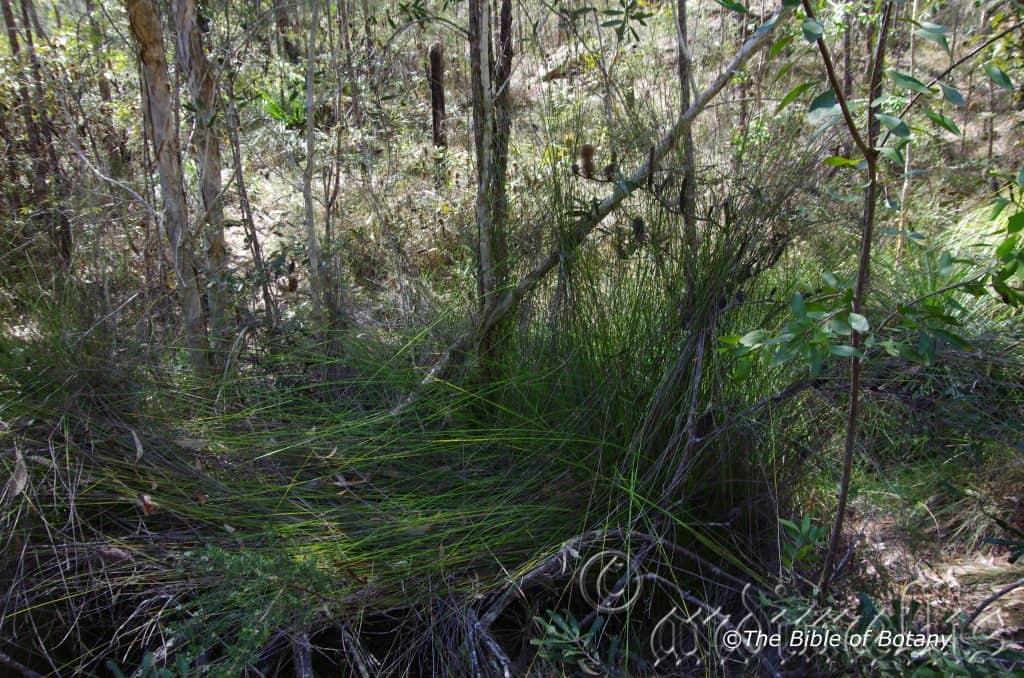
The Pinnacles NSW
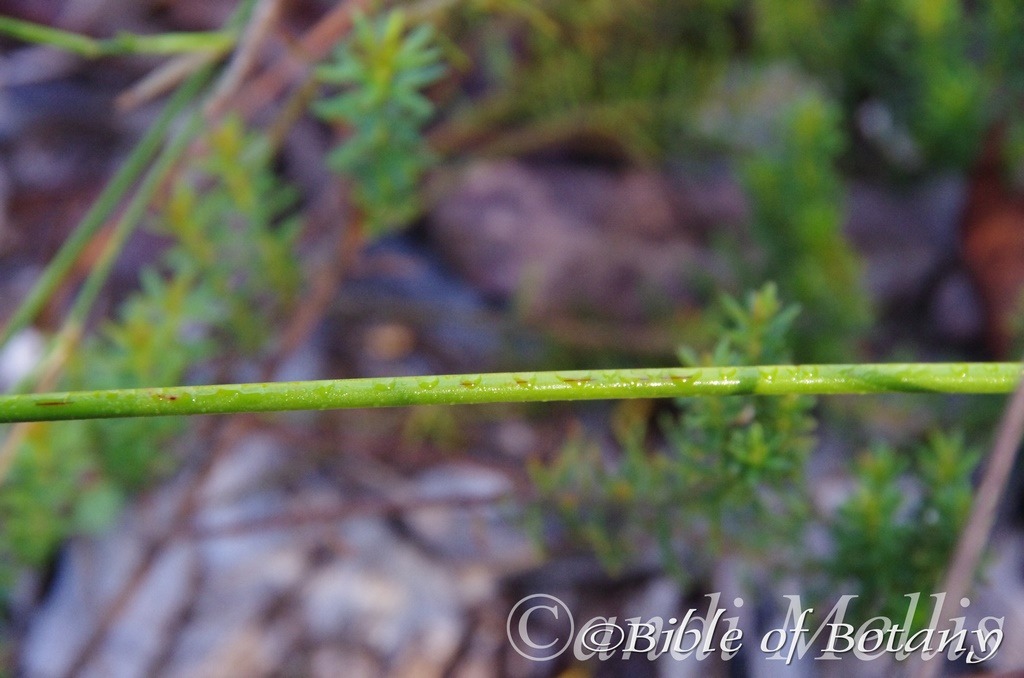
Author’s Garden The Pinnacles NSW
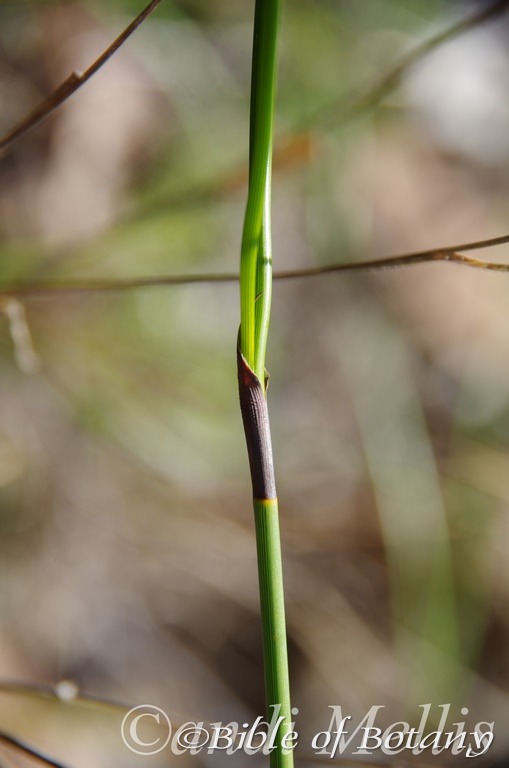
Author’s Garden The Pinnacles NSW
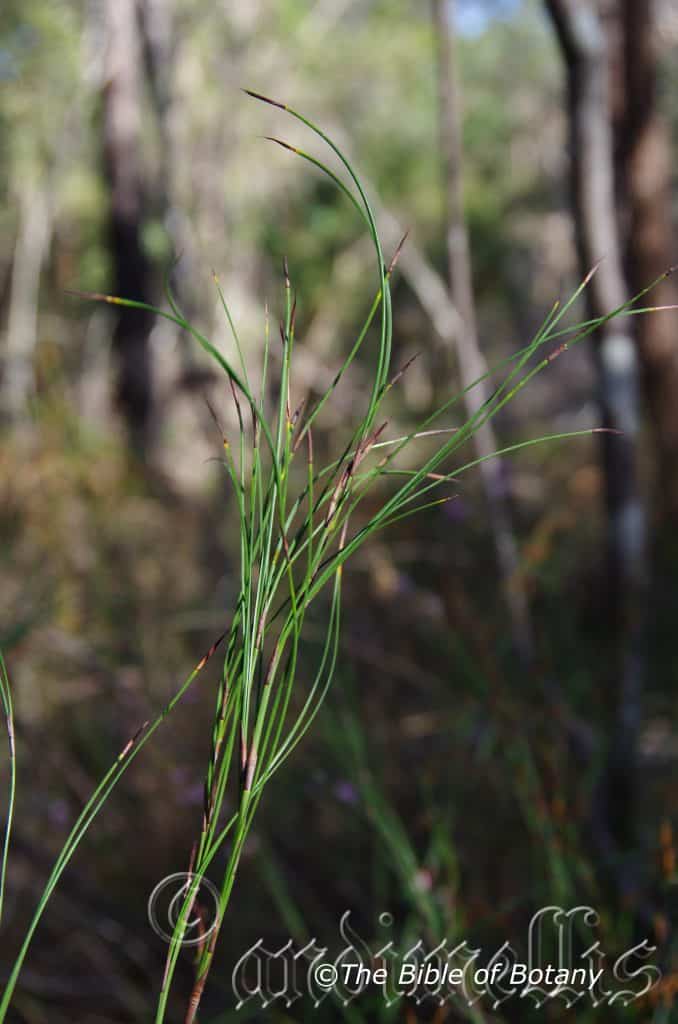
The Pinnacles NSW
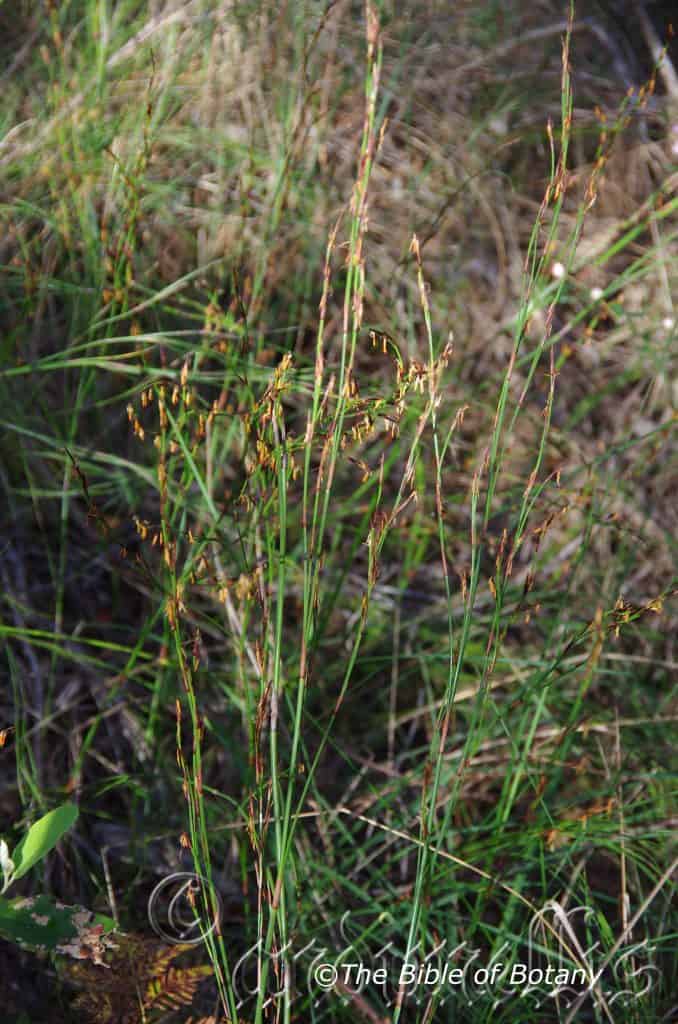
Author’s Garden The Pinnacles NSW
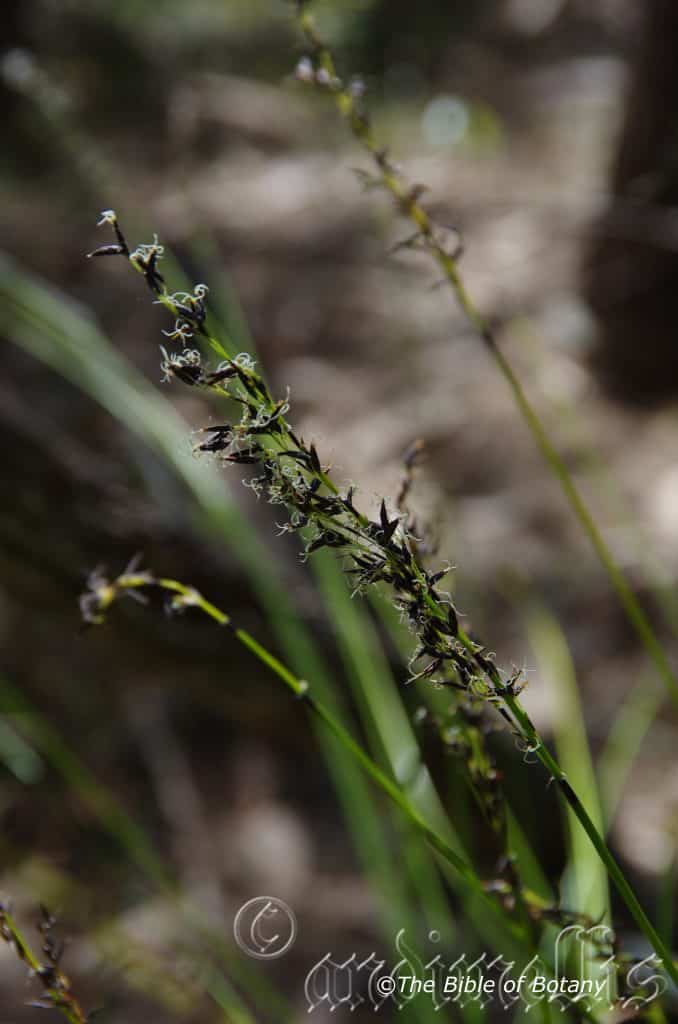
The Pinnacles NSW

Author’s Garden The Pinnacles NSW
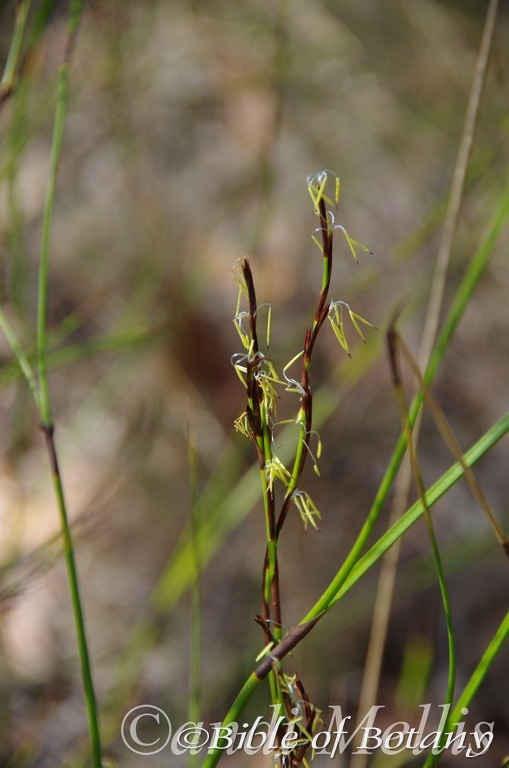
Author’s Garden The Pinnacles NSW

Author’s Garden The Pinnacles NSW
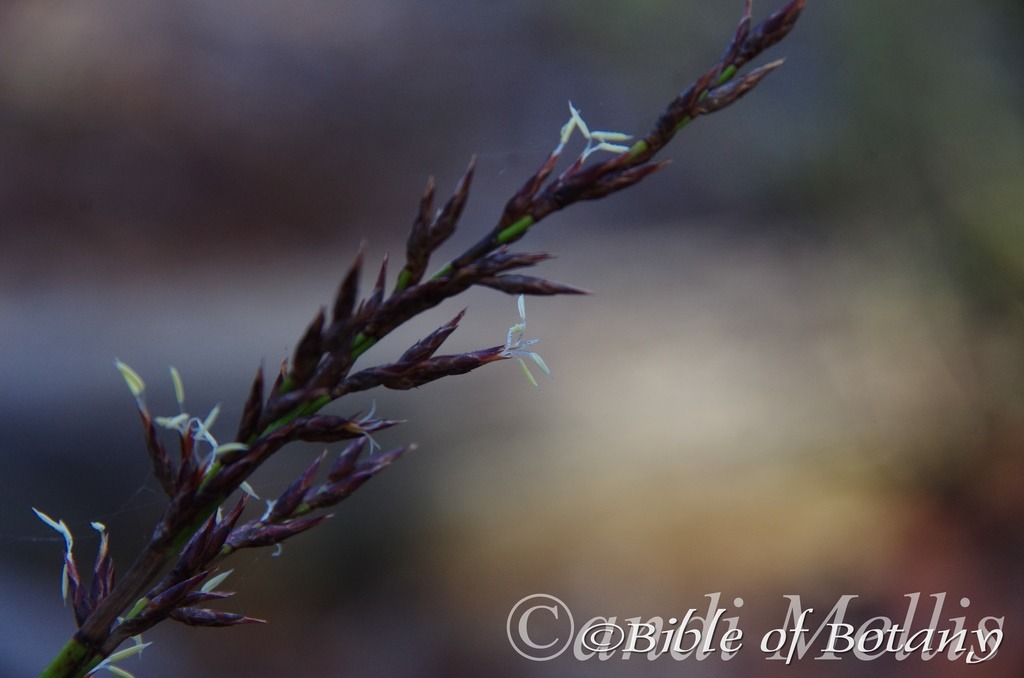
Author’s Garden The Pinnacles NSW
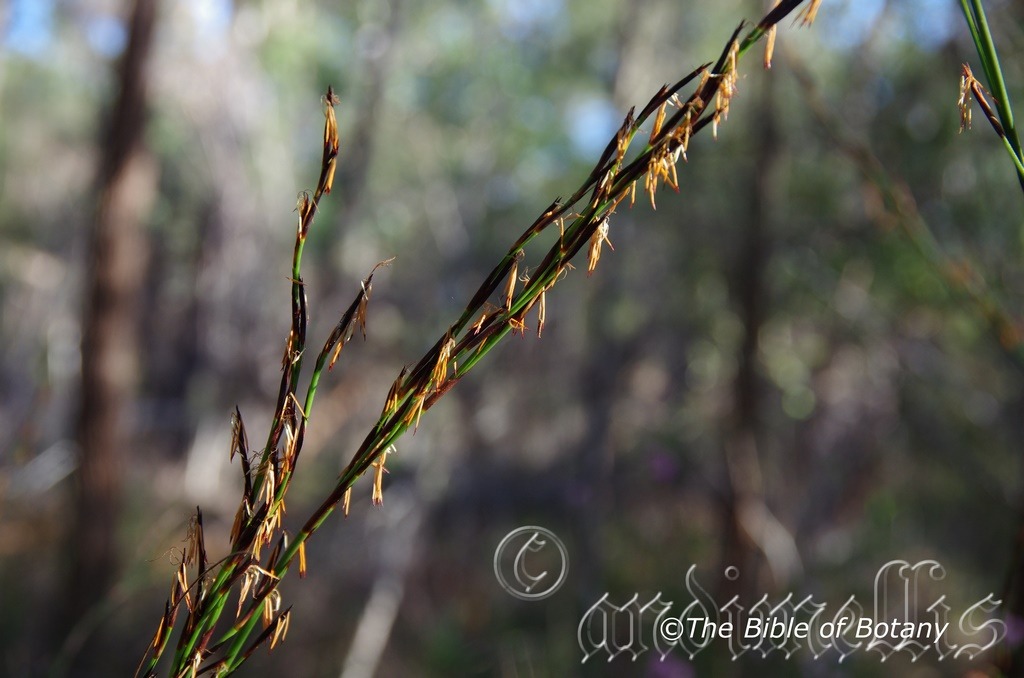
Author’s Garden The Pinnacles NSW
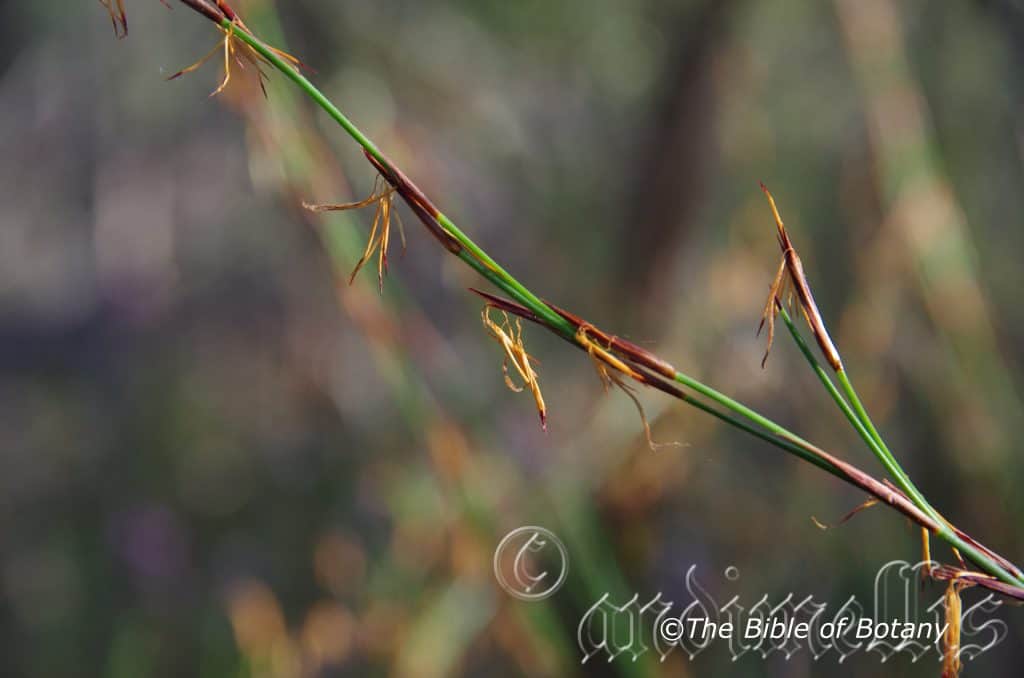
Author’s Garden The Pinnacles NSW
Schoenus melanostachys
Classification:
Unranked: Monocots
Class: Commelinids
Order: Poales
Family: Cyperaceae
Genus: From Skhoînos, which is Ancient Greek for a sedge reed or water loving plant. It refers to plants, which resemble reeds or sedges.
Specie: From Mélas, which is Ancient Greek for black and From Stákhus, which is Ancient Greek for a flowering spike. It refers to flower spikes, which are black.
Sub specie:
Common Name: Black Bog Rush or Bendy Grass.
Distribution:
Schoenus melanostachys is found in 2 disjunct populations along the east coast. The northern population is found south from the Endeavour River to Mount Bowen on Hinchinbrook Island in far north Queensland.
The southern population is found south from Mimosa Creek on the Blackdown Tablelands and Mount Parnassus near Mackay in central eastern Queensland to the Tonghi Plain near Orbost in north eastern Victoria including most the off shore Islands.
https://avh.ala.org.au/occurrences/search?taxa=Schoenus+melanostachys#tab_mapView
Habitat Aspect Climate:
Schoenus melanostachys prefers partial shade to dappled sun light. It grows in shallow depressions, heaths, moist, sandy wallums, adjacent to swamp in open forests or open woodlands. The altitude ranges from 10 meters ASL to 1050 meters ASL.
The temperatures range from minus 3 degrees in August to 38 degrees in January.
Rainfalls range from lows of 850mm to 3200mm average per annum.
Soil Requirements:
Schoenus melanostachys prefers sand, fatty light clays to medium clays. The soils are usually derived from granites, sandstones, brown basalts, black basalts, shales or metamorphic rocks. The soils pH ranges from 4.5pH to 7pH. It does not tolerate waterlogged soils however good soil moisture and seasonal inundations or seasonal high water tables are tolerated. Non saline soils to moderately saline soils are tolerated as are salt laden winds.
Height & Spread:
Wild Plants: 0.8m to 1.25m by 1m to 1.6m.
Characteristics:
Schoenus melanostachys grows as an erect, caespitose perennial rush with short stout rhizome. The erect, rigid, terete and striate culms are nodeless and measure 300mm to 1250mm in length by 1.3mm to 2.5mm in diameter. The 3 or 4 nodes along the culms are glabrous. The sheaths are very deep red-brown to almost black, scaberulous, dull glossy. The mouth is covered in off white villous hairs while the ligule present as narrow membranous line.
The long, filiformis, linear leaves measure 2mm to 5mm in length by 1mm to 3mm in width. The concolourous laminas are mid grass-green and glabrous. The margins are entire. The apexes are obtuse.
The inflorescences are erect, nodding or loosely clustered spikelets with 4 to 7 nodes. The peduncles and rachilla are glabrous. The narrow ovate spikes measure 40mm to 200mm in length. The 1 to 3 spikelets measure 4mm to 10mm in length. The lowest involucral bract measures 1mm to 3mm in length.
The 7 to 11 similar ovate glumes are deep maroon-brown, burgundy-brown to black while the margins are covered in white woolly or ciliate hairs. The glumes have acute apexes and are dull to semi glossy. The lowest 4 to 6 glumes are empty. The fertile glumes measure 4mm to 7mm in length. The 0 to 5 filiform to scale like bristles are shorter than the nuts.
The 3 white anthers are feather like and measure 2.3mm to 4.5mm in length. The style is white. The flowers appear from October to February.
The fruits are trigonous, ellipsoid nuts. The green nuts turn pale red-brown and are scarcely 3 ribbed, transversely wrinkled, glabrous and dull when ripe. The nuts measure 1.5mm to 1.7mm in length by 0.8mm to 1mm in diameter.
Confusing Species:
Schoenus melanostachys forms large semi erect to weeping tussocks.
Schoenus brevifolius has a short spreading rhizome.
Wildlife:
Schoenus melanostachys wildlife is unknown to the author.
Cultivation:
Schoenus melanostachys is a tall, compact, erect to somewhat spreading, tufted grass for medium to large gardens with wet problematic acid soils or farms above the high water mark of dams or above the water lines of slow moving water courses where it can form small colonies. It can be slashed but is hard on blades. It will recover very quickly and is not suitable for grazing.
It is ideally suited for growing in full sun to lightly shaded areas on flats where it is used as feature plant.
Its flower stems make very suitable for dried flowered arrangements.
Propagation:
Seeds: Collect the nuts of Schoenus melanostachysafter they turn brown and begin to fall to the ground.
Sow the nuts directly into a seed raising mix and place the tray beneath 20mm shade cloth. Keep the trays moist at all times. When the seedlings are 25mm to 40mm tall, prick them out and plant them into 50mm native tubes using a seed raising mix. Return the tubes to a sunny position and place them in trays and keep wet at all times
Once the seedlings reach 100mm to 150mm in height plant them out into their permanent position. Mass plantings are best achieved with spacing’s of 1000mm to 1500mm centers. Alternatively the seedlings can be planted into 200mm squat pots. Cover the surface with a layer of gravel and placed the pots in a fish or frog pond where the water level is at the same level as the top of the pots.
Fertilize using seaweed, fish emulsion or organic chicken pellets soaked in water on an alternate basis. Fertilize every two months until the plants are established then twice annually in early September and March to maintain better colour, health, vitality and flowering.
Further Comments from Readers:
“Hi reader, it seems you use The Bible of Botany a lot. That’s great as we have great pleasure in bringing it to you! It’s a little awkward for us to ask, but our first aim is to purchase land approximately 1,600 hectares to link several parcels of N.P. into one at The Pinnacles NSW Australia, but we need your help. We’re not salespeople. We’re amateur botanists who have dedicated over 30 years to saving the environment in a practical way. We depend on donations to reach our goal. If you donate just $5, the price of your coffee this Sunday, We can help to keep the planet alive in a real way and continue to bring you regular updates and features on Australian plants all in one Botanical Bible. Any support is greatly appreciated. Thank you.”
In the spirit of reconciliation we acknowledge the Bundjalung, Gumbaynggirr and Yaegl and all aboriginal nations throughout Australia and their connections to land, sea and community. We pay our respect to their Elders past, present and future for the pleasures we have gained.
Schoenus nitens
Classification:
Unranked: Monocots
Class: Commelinids
Order: Poales
Family: Cyperaceae
Genus: From Skhoînos, which is Ancient Greek for a sedge reed or water loving plant. It refers to plants, which resemble reeds or sedges.
Specie:From Nitere/Nitidus, which is Latin for shiny, bright or polished. It refers to leaves and stems which are bright and shiny.
Sub specie:
Common Name: Shinny Bog-rush.
Distribution:
Schoenus nitens is found in 2 isolated populations, one in south west Western Australia with the second population along the east coast.
The Western Australia population is found along the coastal strip from Beekeepers Reserve to the Thomas River delta on Cape Arid National Park in the south west corner.
The eastern Population is mainly found on and east of the Great Dividing Range south from Fraser Island in southern coastal Queensland to Streaky Bay in southern coastal South Australia including the Moreton Bay Islands and Kangaroo Island. It is found further at the west at Lake Morars and at the base of the Weeping Walls near Ulan.
In Tasmania it is found on the Bass Strait Islands and most of the lowland areas of the mainland.
https://avh.ala.org.au/occurrences/search?taxa=Schoenus+nitens#tab_mapView
Habitat Aspect Climate:
Schoenus nitens prefers partial shade to dappled sun light. It usually grows in damp areas behind the frontal dunes in moist wallums, along brackish estuaries, adjacent to brackish soaks or inland swamps. The altitude ranges from 2 meters ASL to 650 meters ASL.
The temperatures range from minus 3 degrees in August to 42 degrees in January.
Rainfalls range from lows of 400mm to 3200mm average per annum.
Soil Requirements:
Schoenus nitens prefers white sands to grey or black sandy silts or muddy silts. The soils are usually derived from accumulated peaty beach sands or alluvial deposits often mixed with accumulated sands. The soils pH ranges from 5pH to 7pH. It tolerates waterlogged soils often growing in shallow water for long periods. Non saline soils to extremely saline soils are tolerated.
Height & Spread:
Wild Plants: 0.03m to 0.35m by 0.05m to 0.15m.
Characteristics:
Schoenus nitens grows as a small perennial, with short, slender creeping rhizome. The culms are erect, rigid, grooved and nodeless. The culms measure 30mm to 370mm in length by 0.5 to 1mm in diameter. The sheath is red-brown, smooth or striate and semi glossy. The mouth is glabrous while the ligule is a short membranous lip.
The long linear leaves measure 15mm to 160mm in length by 1mm to 3mm in width. The concolourous laminas are mid grass-green and glabrous. The margins are entire while the apexes are acute.
The inflorescences are loosely hemispherical heads or reduced to a single spikelet. The peduncles and rachilla are glabrous. The linear, lanceolate-ovate or lanceolate panicles have numerous spikelets. The erect heads measure 3.5mm to 10mm in length by 2mm to 10mm in diameter. The lowest leaf like involucral bract measures 10mm to 60mm in length.
The spikelets are ovate with acute apexes. The 2 or 3 florets measure 3mm to 5mm in length.
The 4 to 7 similar glumes are red-brown to dark yellow-brown, semi glossy and glabrous with hyaline, red-dotted margins. The 1 to 3 lower glumes are empty. The broad ovate glumes have obtuse to broad acute apexes. The fertile glumes measure 2.7mm to 4mm in length by 2mm to 3mm in width. The 3 to 6 bristles are plumose and measure 1mm to 1.7mm in length
The 3 anthers are white and measure 1.5mm to 2mm in length. The style is white. The flowers appear from October to February.
The fruits are trigonous, ellipsoid to obovoid nuts. The green nuts turn pale fawnish-yellow to golden brown, smooth or minutely and faintly scrobiculatum, glabrous and semi glossy when ripe. The nuts measure 1.1mm to 1.6mm in length by 0.7mm to 1.1mm in diameter.
Confusing Species:
Schoenus nitens’s culms are erect, nodeless. The glumes are obtuse to broad acute. The anthers measure 1.5mm to 2mm in length. The 6 bristles are plumose and are about as long as nuts.
Schoenus maschalinus’s culms are decumbent and leafy at the nodes. The glumes are acute. The anthers measure 0.8mm to 1mm in length. The 3 to 6 bristles are not plumose and shorter than nut.
Wildlife:
Schoenus nitens is a very important frog habitat plant on the margins of swamps and wallums.
Cultivation:
Schoenus nitens is a medium, compact, erect, tufted rush for small to medium gardens which experience wet problematic soils. On farms it can be successfully grown above the high water mark of dams or above the water lines of slow moving water courses where it can form small colonies and stabilize the banks. It can be slashed and will recover very quickly. It is ideally suited for growing in full sun to lightly shaded areas.
In cultivation it will grow from 0.25 meters to 0.38 meters by 0.15 meters in length to 0.25 meters in diameter when grown in the open sunny position.
It is the ideal height for small and medium fish and frog ponds which looks at home surrounded by small colourful herbs like Viola betonicifolia or Hibbertia linariifolia and annuals like Scaevola aemula or any of the native Ranunculus like Ranunculus inundatus, Ranunculus lappaceus or Ranunculus plebeius depending how wet the ground is.
It is not a preferred fodder crop for either domestic or native animals.
Propagation:
Seeds: Collect nuts of Schoenus nitens after they turn golden-brown and begin to fall to the ground.
Sow the nuts directly into a seed raising mix and place the tray beneath 20mm shade cloth. Keep the trays moist at all times. When the seedlings are 25mm to 40mm tall, prick them out and plant them into 50mm native tubes using a seed raising mix. Return the tubes to a sunny position and place them in trays and keep wet at all times
Once the seedlings reach 100mm to 150mm in height plant them out into their permanent position. Mass plantings are best achieved with spacing’s of 500mm to 1500mm centers.
Alternatively the seedlings can be planted into 200mm squat pots. Cover the surface with a layer of gravel and placed the pots in a fish or frog pond where the water level is at the same level as the top of the pots.
Fertilize using seaweed, fish emulsion or organic chicken pellets soaked in water on an alternate basis. Fertilize every two months until the plants are established then twice annually in early September and March to maintain better colour, health, vitality and flowering.
Further Comments from Readers:
“Hi reader, it seems you use The Bible of Botany a lot. That’s great as we have great pleasure in bringing it to you! It’s a little awkward for us to ask, but our first aim is to purchase land approximately 1,600 hectares to link several parcels of N.P. into one at The Pinnacles NSW Australia, but we need your help. We’re not salespeople. We’re amateur botanists who have dedicated over 30 years to saving the environment in a practical way. We depend on donations to reach our goal. If you donate just $5, the price of your coffee this Sunday, We can help to keep the planet alive in a real way and continue to bring you regular updates and features on Australian plants all in one Botanical Bible. Any support is greatly appreciated. Thank you.”
In the spirit of reconciliation we acknowledge the Bundjalung, Gumbaynggirr and Yaegl and all aboriginal nations throughout Australia and their connections to land, sea and community. We pay our respect to their Elders past, present and future for the pleasures we have gained.
Schoenus pachylepis
Classification:
Unranked: Monocots
Class: Commelinids
Order: Poales
Family: Cyperaceae
Genus: From Skhoînos, which is Ancient Greek for a sedge reed or water loving plant. It refers to plants, which resemble reeds or sedges.
Specie:From Pakhús, which is Ancient Greek for thick or thickness and Lepis, which is Ancient Greek for scale or scaly. It refers to structures or organs, which have thick scales.
Sub specie:
Common Name:
Distribution:
Schoenus pachylepis is found south from Caboolture in south eastern coastal Queensland to Orbost on north eastern coastal Victoria including the off shore Islands.
https://avh.ala.org.au/occurrences/search?taxa=Schoenus+pachylepis#tab_mapView
Habitat Aspect Climate:
Schoenus pachylepis prefer partial shade to full sun. It often grows as a helophytic species in wet situations in shallow depressions, drainage lines in open woodlands, open forests or wallum heaths behind the frontal dunes or coastal ranges. The altitude ranges from 3 meters ASL to 550 meters ASL.
The temperatures range from minus 2 degrees in August to 40 degrees in January.
Rainfalls range from lows of 850mm to 2100mm average per annum.
Soil Requirements:
Schoenus pachylepis prefers white sands to grey or black sandy silts and muddy silts. The soils are usually derived from accumulated peaty beach sands or alluvial deposits often mixed with accumulated sands. The soils pH ranges from 5pH to 7pH. It tolerates waterlogged soils often growing in shallow water for long periods. Non saline soils to very saline soils are tolerated.
Height & Spread:
Wild Plants: 0.5m to 0.6m by 0.3m to 0.5m.
Characteristics:
Schoenus pachylepis grows as a tufted or rarely very shortly rhizomatous perennial reed. The relatively coarse, terete culms are erect, rigid and deeply grooved and nodeless. The culms measure 100mm to 600mm in length by 0.5mm to 1.2mm in diameter. The sheath is usually red-brown on the basal half and pastel fawnish–yellow on the apical half, smooth to striate and semi glossy. The mouth is glabrous while the ligule is thin and membranous.
The short linear leaves measure 5mm to 40mm in length by 1mm to 2mm in width. The concolourous laminas are mid grass-green and glabrous to sparsely covered in white hirsute hairs. The margins are entire and inrolled to involute. The apexes are acute.
The inflorescences comprise of 1 to usually 3 spikelets that measure 20mm to 30mm in length. The lowest involucral bracts measure 1mm 2mm in length. The peduncles and rachilla are glabrous.
The spikelets are narrow ovate with acute apexes and have 1 to 3 florets.
The 5 to 8 similar glumes are pale fawnish-yellow to reddish-brown or almost black and are evenly coloured to very patchy. The 3 to 5 lowest glumes are empty. The glumes are glabrous with the margins except for a covering of some white ciliate near the apex. The ovate to narrow ovate glumes have acute apexes and measure 13mm to 16mm in length by 7mm to 9mm in width.
The 2 anthers are cream to pastel yellow and measure 7mm to 11mm in length including the 0.8mm to 1.8mm appendage. The style is white and measures 7mm to 10mm in length. The hypogynous scales are obtuse or rarely acute, very broad and scarcely reaching to top of stipe. The flowers appear from September to February.
Schoenus pachylepis fruits are cylindrical nuts. The green nuts turn off white to very deep brown almost black, smooth or finely reticulate, glabrous, dull or semi glossy when ripe. The scarcely 3-ribbed nuts measure 4.2mm to 5mm in length including the stipe by 2mm to 2.5mm in diameter.
Confusing Species:
Schoenus pachylepis’s rhizomes are very shortly tufted. The culms are relatively coarse and measure 0.5mm to 1.2mm in diameter. The spikelets measure 15mm to 22mm in length. The fertile glumes measure 13mm to 16mm in length. The anthers measure 7mm to 11mm in length including the apical appendages which measure 0.8mm to 1.8mm in length. The broad hypogynous scales are usually obtuse or rarely acute and extend 80mm to 95mm of the length of the nut. The nut including the stipe measures 4.2mm to 5mm in length by 2mm to 2.5mm in diameter.
Schoenus lepidosperma’s rhizomes are short. The culms are slender, and measure 0.3mm to 0.5mm in diameter. The spikelets measure 8mm to 14mm in length. The fertile glumes measure 8mm to 11mm in length. The anthers measure 3.6mm to 5mmin length including the apical appendages which measure 0.3mm to 0.5mm in length. The narrow hypogynous scales are acute to acuminate and extend a 30mm to 50mm of the length of the nut. The nut measures 3.1mm to 3.5mm in length by 1.8mm to 2.0mm in diameter.
Wildlife:
Schoenus pachylepis’s wildlife is unknown to the author.
Cultivation:
Schoenus pachylepis is a medium, compact, erect, tufted grass for small to large bush gardens and rockeries. It can be slashed occasionally and will recover very quickly.
It is ideally suited for growing in full sun to lightly shaded areas. In cultivation it will grow from 0.5 meters to 0.6 meters by 0.35 meters in length to 0.45 meters in diameter when grown in the open sunny position.
It is the ideal height for small and medium fish and frog ponds which looks at home surrounded by small colourful herbs like Viola betonicifolia or Hibbertia linariifolia and annuals like Scaevola aemula.
It is not a preferred fodder crop for either domestic or native animals.
Propagation:
Seeds: Collect the nuts of Schoenus pachylepis after they turn white and begin to fall to the ground.
Sow the nuts directly into a seed raising mix and place the tray beneath 20mm shade cloth. Keep the trays moist at all times. When the seedlings are 25mm to 40mm tall, prick them out and plant them into 50mm native tubes using a seed raising mix. Return the tubes to a sunny position and place them in trays and keep wet at all times
Once the seedlings reach 100mm to 150mm in height plant them out into their permanent position. Mass plantings are best achieved with spacing’s of 1000mm to 1500mm centers.
Alternatively the seedlings can be planted into 200mm squat pots. Cover the surface with a layer of gravel and placed the pots in a fish or frog pond where the water level is at the same level as the top of the pots.
Fertilize using Seaweed, fish emulsion or organic chicken pellets soaked in water and apply the liquid on an alternate basis. Fertilize every 2 months until the plants are well established to maintain health, vigour and better flowering.
Further Comments from Readers:
“Hi reader, it seems you use The Bible of Botany a lot. That’s great as we have great pleasure in bringing it to you! It’s a little awkward for us to ask, but our first aim is to purchase land approximately 1,600 hectares to link several parcels of N.P. into one at The Pinnacles NSW Australia, but we need your help. We’re not salespeople. We’re amateur botanists who have dedicated over 30 years to saving the environment in a practical way. We depend on donations to reach our goal. If you donate just $5, the price of your coffee this Sunday, We can help to keep the planet alive in a real way and continue to bring you regular updates and features on Australian plants all in one Botanical Bible. Any support is greatly appreciated. Thank you.”
In the spirit of reconciliation we acknowledge the Bundjalung, Gumbaynggirr and Yaegl and all aboriginal nations throughout Australia and their connections to land, sea and community. We pay our respect to their Elders past, present and future for the pleasures we have gained.
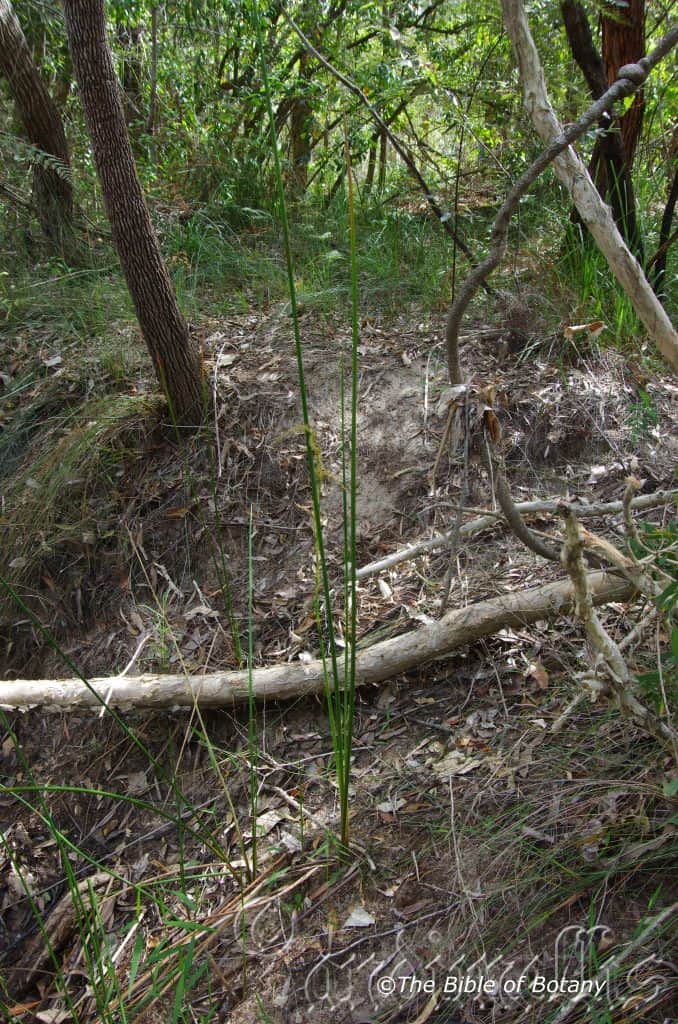
Warrigai Creek NSW
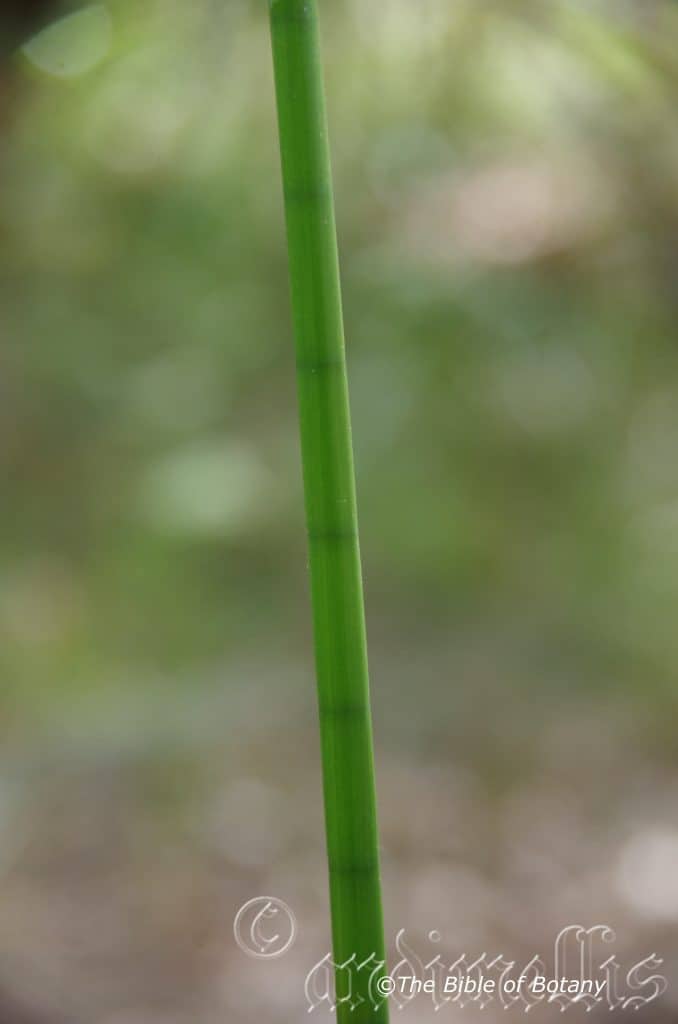
Warrigai Creek NSW
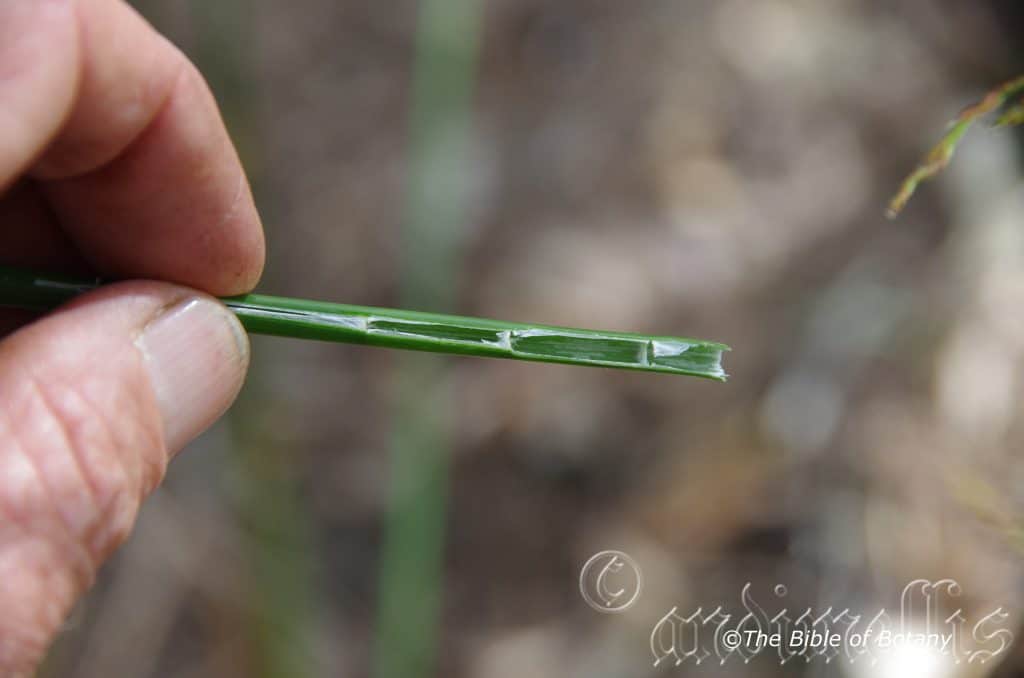
Warrigai Creek NSW
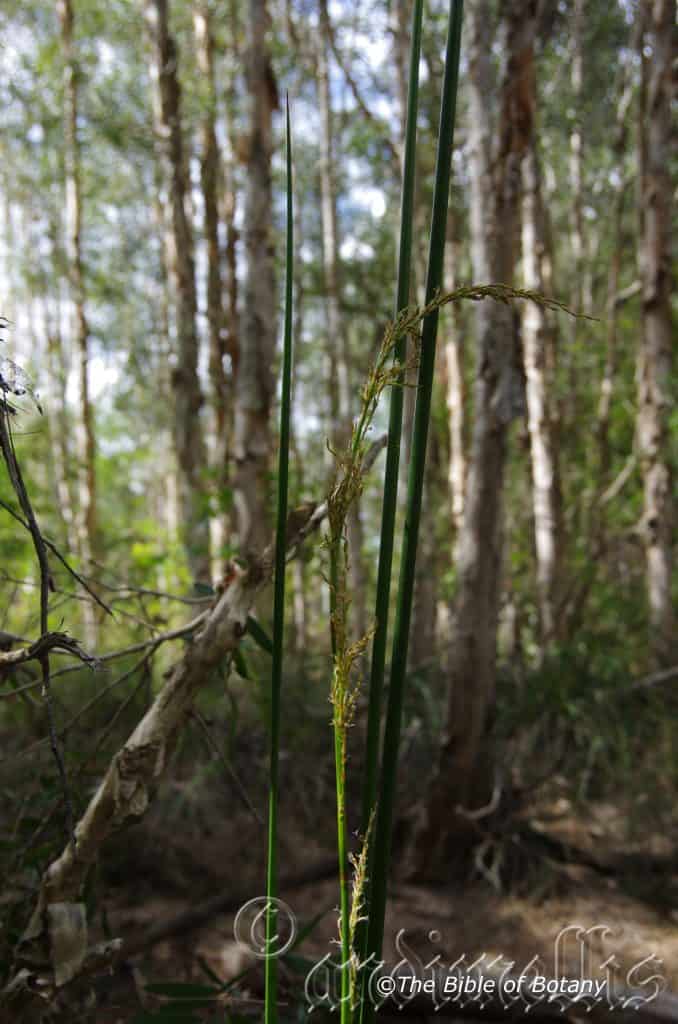
Warrigai Creek NSW
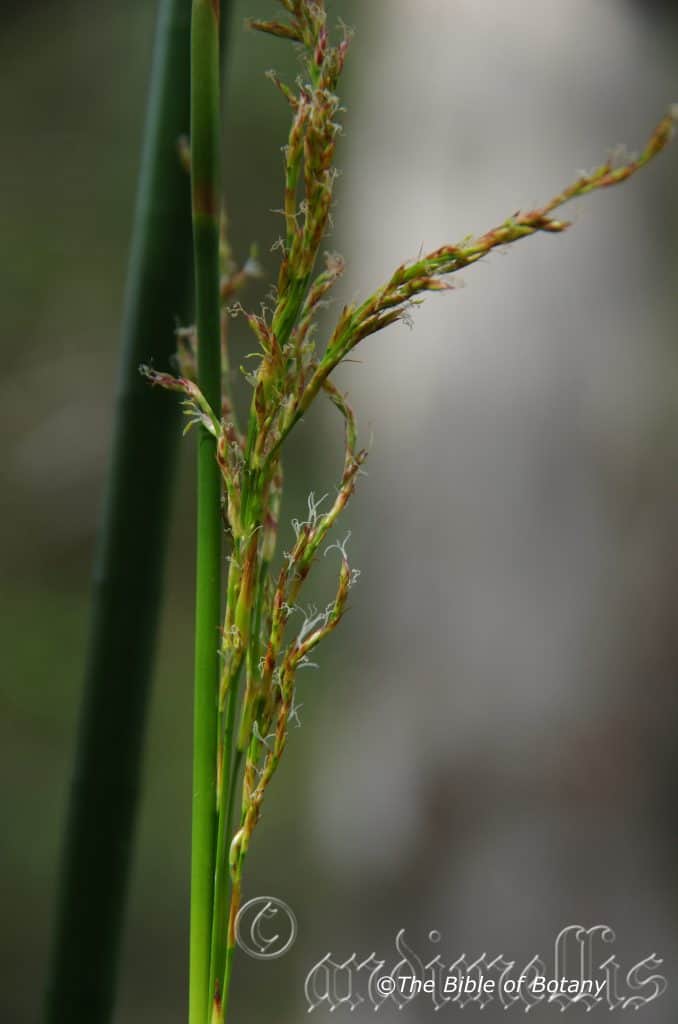
Warrigai Creek NSW
Schoenus paludosus
Classification:
Unranked: Monocots
Class: Commelinids
Order: Poales
Family: Cyperaceae
Genus: From Skhoînos, which is Ancient Greek for a sedge reed or water loving plant. It refers to plants, which resemble reeds or sedges.
Specie: From Paludosa which is Greek or Palūs/Palūdōsum, which is Latin for wallums, swamps or marshes. It refers to the habitats, which are wet as in marshes or swamplands.
Sub specie:
Common Name:
Distribution:
Schoenus paludosus is found south from Samual Hill in the Byfield National Park in southern coastal Queensland to Hayman’s Beach in Jervis Bay in central coastal New South Wales.
https://avh.ala.org.au/occurrences/search?taxa=Schoenus+paludosus#tab_mapView
Habitat Aspect Climate:
Schoenus paludosus prefers light dappled shade to full sun. It grows as a seasonal helophytic species in moist situations in shallow depressions, drainage lines in open woodlands, open forests or especially wallum heaths behind the frontal dunes. The altitude ranges from 3 meters ASL to 732 meters ASL.
The temperatures range from minus 2 degrees in August to 40 degrees in January.
Rainfalls range from lows of 950mm to 2000mm average per annum.
Soil Requirements:
Schoenus paludosus prefers better quality white sands to reddish light fatty clays. The soils are derived from accumulated peaty beach sands or at times reddish to reddish-brown sandstones. The soils pH ranges from 4.5pH to 8pH. It tolerates waterlogged soils often growing in shallow water for long periods. Non saline soils to very saline soils are tolerated.
Height & Spread:
Wild Plants: 0.5m to 0.6m by 0.3m to 4m.
Characteristics:
Schoenus paludosus grows as a tufted, annual reed with erect, rigid, terete, striate, smooth, usually nodeless or at times with a single node. The culms measure 5mm to 15mm in length by 0.7mm to 1mm in diameter. The leaf sheath is yellow-brown to red-brown, striate and semi glossy. The mouth is glabrous while the ligule absent.
The long linear leaves measure 20mm to 70mm in length by 1mm to 3mm in width. The concolourous laminas are mid grass-green and glabrous. The margins are entire while the apexes are acute.
The inflorescences are erect, linear spikes. The peduncles and rachilla are glabrous. The spikes measure 50mm to 400mm in length with the spikelets clustered at 5 to 9 nodes along the spike. The lowest involucral bract measures 10mm to 50mm in length.
The spikelets are narrowing ovate with acute apexes. The 1 or 2 florets measure 4mm to 6mm in length.
The 4 to 7 dissimilar glumes are pale fawnish-yellow with pale reddish patches, semi glossy and glabrous. The lowest 3 to 4 glumes are empty. The glumes measure 4.5mm to 5mm in length.
The 3 anthers are white to pastel yellow and measure 1.5mm to 2.3mm in length. The style is white and measures 1.5mm to 2.2mm in length. The flowers appear from October to February.
Schoenus paludosus fruits are trigonous, obovoid nuts. The green nuts turn deep chocolate-brown almost black, off white and scabrous near apex, reticulate and dull when ripe. The nuts measure 1mm to 1.3mm in length by 0.7mm to 0.8mm in diameter. The 6 bristles are not plumose and are shorter than nut.
Confusing Species:
Schoenus paludosus is an annual without nodes. The inflorescences are 5 to 9 distant clusters of mostly long-pedicillate spikelets. The glumes are straw coloured with red-brown patches. The nuts are deep brownish-black to blackish-brown.
Schoenus apogon is an annual with without numerous filiform leaves at base. The bristles number 4 or 5 and are shorter than or equal in length to the nut.
Schoenus tesquorum is a perennial, with numerous filiform leaves at base. The bristles are absent or are minute.
Wildlife:
Schoenus paludosus is a very important species for frog habitat and for small water fowl like the Little Grebe, Tachybaptus ruficollis for nesting amongst and the protection of their young.
Cultivation:
Schoenus paludosus is a medium, compact, erect, tufted grass for small to large gardens around water features or farmers above the high water mark of dams or above the water lines of slow moving water courses where it can form small colonies. It can be slashed occasionally and will recover very quickly.
It is ideally suited for growing in full sun to lightly shaded areas. In cultivation it will grow from 0.5 meters to 0.6 meters by 0.3 meters in length to 0.4 meters in diameter when grown in the open sunny position.
It is the ideal height for small and medium fish and frog ponds which looks at home surrounded by small colourful herbs like Viola betonicifolia or Hibbertia linariifolia and annuals like Scaevola aemula depending how wet the ground is.
It is not a preferred fodder crop for either domestic or native animals.
Propagation:
Seeds:
Collect the nuts of Schoenus paludosus after they turn white and begin to fall to the ground.
Sow the nuts directly into a seed raising mix and place the tray beneath 20mm shade cloth. Keep the trays moist at all times. When the seedlings are 25mm to 40mm tall, prick them out and plant them into 50mm native tubes using a seed raising mix. Return the tubes to a sunny position and place them in trays and keep wet at all times
Once the seedlings reach 100mm to 150mm in height plant them out into their permanent position. Mass plantings are best achieved with spacing’s of 1000mm to 1500mm centers. Alternatively the seedlings can be planted into 200mm squat pots. Cover the surface with a layer of gravel and placed the pots in a fish or frog pond where the water level is at the same level as the top of the pots.
Fertilize using seaweed, fish emulsion or organic chicken pellets soaked in water on an alternate basis. Fertilize every two months until the plants are established then twice annually in early September and March to maintain better colour, health, vitality and flowering.
Further Comments from Readers:
“Hi reader, it seems you use The Bible of Botany a lot. That’s great as we have great pleasure in bringing it to you! It’s a little awkward for us to ask, but our first aim is to purchase land approximately 1,600 hectares to link several parcels of N.P. into one at The Pinnacles NSW Australia, but we need your help. We’re not salespeople. We’re amateur botanists who have dedicated over 30 years to saving the environment in a practical way. We depend on donations to reach our goal. If you donate just $5, the price of your coffee this Sunday, We can help to keep the planet alive in a real way and continue to bring you regular updates and features on Australian plants all in one Botanical Bible. Any support is greatly appreciated. Thank you.”
In the spirit of reconciliation we acknowledge the Bundjalung, Gumbaynggirr and Yaegl and all aboriginal nations throughout Australia and their connections to land, sea and community. We pay our respect to their Elders past, present and future for the pleasures we have gained.
Schoenus scabripes
Classification:
Unranked: Monocots
Class: Commelinids
Order: Poales
Family: Cyperaceae
Genus: From Skhoînos, which is Ancient Greek for a sedge reed or water loving plant. It refers to plants, which resemble reeds or sedges.
Specie: From Scabrous, which is Latin for somewhat roughened. It refers to structures or organs, which are slightly rough in texture.
Sub specie:
Common Name:
Distribution:
Schoenus scabripes is found south from Lake Weybanorth of Peregian Beach in southern coastal Queensland to Limeburners Creek Nature Reserve between Port Macquarrie and Kempsey in coastal northern New South Wales with a disjunct population further south at Jervis Bay National Park and an isolated population much further north on Cape York Peninsula at Fruit Bat Falls on the Elliot River. It is mainly found along the coastal strip.
https://avh.ala.org.au/occurrences/search?taxa=Schoenus+scabripes#tab_mapView
Habitat Aspect Climate:
Schoenus scabripes prefers dappled shade to full sun. It grows as a seasonal helophytic species in moist situations in shallow depressions or drainage lines in open woodlands, open forests and especially wallum heaths behind the frontal dunes. The altitude ranges from 3 meters ASL to 72 meters ASL.
The temperatures range from minus 3 degrees in August to 42 degrees in January.
Rainfalls range from lows of 400mm to 3200mm average per annum.
Soil Requirements:
Schoenus scabripes prefers better quality white sands to light reddish fatty clays. The soils are usually derived from accumulated peaty beach sands or at times reddish to reddish-brown sandstones. The soils pH ranges from 4.5pH to 7pH. It tolerates waterlogged soils often growing in shallow water for extended periods following the wet season. Non saline soils to very saline soils are tolerated.
Height & Spread:
Wild Plants: 0.6m to 2m by 0.2m to 0.8m.
Characteristics:
Schoenus scabripes grows as a perennial with a short stout rhizome. The terete culms are erect, rigid, grooved, smooth, and glabrous with 1 or 2 nodes. The culms usually measure 60mm to 130mm or rarely to 200mmin length by 1.5mm to 2.3mm in diameter. The sheath is reddish-brown on the basal half and yellowish-brown on the apical half, smooth, glabrous and semi glossy. The mouth is usually sparsely covered in off white ciliate hairs or at times glabrous while the ligule is a thin membrane.
The short, linear leaves measure 5mm to 20mm in length by 1mm to 2mm in width. The concolourous laminas are mid grass-green and glabrous. The margins are entire while the apexes are acute.
The inflorescences are erect spikelets with 2 to 3 loosely clustered disjunct nodes. The spikes measure 70mm to 250mm in length. The peduncles and rachilla are glabrous. The lowest involucral bract measures 1mm to 3mm in length.
The spikelets are narrow ovate with an acute apex. The 1 or 2 florets measure 12mm to 21mm in length.
The 6 to 8 similar glumes are narrow ovate with a long acute apex which has an obtuse mucronate tip. The lower 4 to 6 glumes are empty. The glabrous glumes are semi glossy pale fawnish-yellow to deep chocolate brown almost black with straw-coloured margins. The margins are glabrous or sparsely covered in off white ciliate hairs especially at the apex. The fertile glumes measure 12mm to 15mm in length with firm membranous margins that are purplish. The bristles are absent or minute.
The 3 anthers are pastel yellow and measure 5.7mm to 6.2mm in length. The flowers appear from September to February.
The fruits are trigonous, cylindrical nuts with a long angular stipe. The green nuts turn dull, pale fawnish-yellow to reddish-brown, triribbed, transversely wrinkled and glabrous when ripe. The nuts measure 5mm to 6.5mm in length including the stipe by 1.3mm to 1.4mm in diameter.
Confusing Species:
Schoenus scabripes’s inflorescences have 2 or 3 nodes. The spikelets measure 12mm to 21mm in length. The fertile glumes measure 12mm to 15mm in length. The anthers measure 5.7mm to 6.2mm length including the stipple. The nuts measure 5.5mm to 5.7mm in length by 1.3 to 1.4mm in diameter.
Schoenus vaginatus’s inflorescences have 5 to 9 nodes. The spikelets measure 8mm to 11mm in length. The fertile glumes measure 7mm to 9mm in length. The anthers measure 3.0mm to 4.5mm length while the stipples nut measures 1.5mm to 1.8mm in length by 0.8mm to 0.9mm in diameter.
Wildlife:
Schoenus scabripes is a very important species for frog habitat and for small water fowl like the Little Grebe, Tachybaptus ruficollis.
Cultivation:
Schoenus scabripes is a medium, compact, erect, tufted grass for small to large gardens around water features or farmers above the high water mark of dams or above the water lines of slow moving water courses where it can form small colonies. It can be slashed occasionally and will recover very quickly.
In cultivation it will grow from 1.5 meters to 1.8 meters by 0.3 meters in length to 0.4 meters in diameter when grown in the open sheltered sunny position.
It is a large reed suitable for larger fish and frog ponds and restoration work besides marshes, swamps, dams and backwaters. It looks at home surrounded by medium colourful annuals and perennials with larges horizontal leaves like Ranunculus inundatus, Hibertia scandens or Actinotis helianthi to mention a few.
It is not a preferred fodder crop for either domestic or native animals.
Propagation:
Seeds: Collect the nuts of Schoenus scabripes after they turn yellow to brown and begin to fall to the ground.
Sow the nuts directly into a seed raising mix and place the tray beneath 20mm shade cloth. Keep the trays moist at all times. When the seedlings are 25mm to 40mm tall, prick them out and plant them into 50mm native tubes using a seed raising mix. Return the tubes to a sunny position and place them in trays and keep wet at all times
Once the seedlings reach 100mm to 150mm in height plant them out into their permanent position. Mass plantings are best achieved with spacing’s of 1000mm to 1500mm centers. Alternatively the seedlings can be planted into 200mm squat pots. Cover the surface with a layer of gravel and placed the pots in a fish or frog pond where the water level is at the same level as the top of the pots.
Fertilize using seaweed, fish emulsion or organic chicken pellets soaked in water on an alternate basis. Fertilize every two months until the plants are established then twice annually in early September and March to maintain better colour, health, vitality and flowering.
Further Comments from Readers:
“Hi reader, it seems you use The Bible of Botany a lot. That’s great as we have great pleasure in bringing it to you! It’s a little awkward for us to ask, but our first aim is to purchase land approximately 1,600 hectares to link several parcels of N.P. into one at The Pinnacles NSW Australia, but we need your help. We’re not salespeople. We’re amateur botanists who have dedicated over 30 years to saving the environment in a practical way. We depend on donations to reach our goal. If you donate just $5, the price of your coffee this Sunday, We can help to keep the planet alive in a real way and continue to bring you regular updates and features on Australian plants all in one Botanical Bible. Any support is greatly appreciated. Thank you.”
In the spirit of reconciliation we acknowledge the Bundjalung, Gumbaynggirr and Yaegl and all aboriginal nations throughout Australia and their connections to land, sea and community. We pay our respect to their Elders past, present and future for the pleasures we have gained.
Schoenus turbinatus
Classification:
Unranked: Monocots
Class: Commelinids
Order: Poales
Family: Cyperaceae
Genus: From Skhoînos, which is Ancient Greek for a sedge reed or water loving plant. It refers to plants, which resemble reeds or sedges.
Specie: From Tumidus, which is Latin for like a toy top in shape. It refers to organs, which resemble a broad inverted cone or top.
Sub specie:
Common Name:
Distribution:
Schoenus turbinatus is found in several disjunct populations south from Woodgate in southern coastal Queensland to the Grampians in south western Victoria and down the eastern Bass Strait Islands of and circumnavigates most of Tasmania.
https://avh.ala.org.au/occurrences/search?taxa=Schoenus+turbinatus#tab_mapView
Habitat Aspect Climate:
Schoenus turbinatus prefers partial shade to dappled sun light. It grows as a seasonal helophytic species in wet situations in shallow depressions or drainage lines in open woodlands along the coast, especially coastal wallum heaths. The altitude ranges from 5 meters ASL to 1090 meters ASL.
The temperatures range from minus 3 degrees in August to 38 degrees in January.
Rainfalls range from lows of 950mm to 2000mm average per annum.
Soil Requirements:
Schoenus turbinatus prefers better quality white sands to light reddish fatty clays. The soils are derived from accumulated peaty beach sands or at times reddish to reddish-brown sands over sandstones. The soils pH ranges from 4.5pH to 7pH. It tolerates waterlogged soils often growing in shallow water for extended periods following the wet season but more often is found in association with seasonal high water tables which often form shallow surface swamps. Non saline soils to moderately saline soils are tolerated.
Height & Spread:
Wild Plants: 0.2m to 0.4m by 0.15m to 0.2m
Characteristics:
Schoenus turbinatus grows as a tufted perennial with erect culms. The terete culms are rigid, often longitudinally grooved, smooth, glabrous and nodeless. The culms measure 140mm to 400mm in length by 0.6mm to 1.7mm in diameter. The sheath is pale fawnish-yellow and striated with broad glabrous hyaline margins. The mouth is glabrous while the ligule absent.
The linear leaves measure 50mm to 160mm in length by 2mm to 3mm in width. The twisted, concolourous laminas are mid grass-green and glabrous. The margins are entire while the apexes are acute.
The inflorescences are erect, elongated and head like. The peduncles and rachilla are glabrous. The linear, lanceolate-ovate or lanceolate panicles have numerous spikelets. The heads measure 6mm to 14mm in length. The 2 to 4 involucral bracts exceed the inflorescence and measure 80mm in length.
The spikelets are narrow ovate with acute apexes. The single floret measures 5.5mm to 7mm in length.
The 5 to 8 similar ovate, glabrous glumes are pale reddish-brown, dull and covered in white ciliate hairs on the margins. The lowest 3 to 5 glumes are empty. The fertile glumes measure 4.5mm to 6mm in length with firm membranous margins that are purplish. The 6 bristles are plumose and measure 1.2mm to 2.1mm in length.
The 3 anthers are pale pinkish-yellow to yellowish-pink and measure 1.8mm to 2.5mm. The flowers appear from October to February.
The fruits are trigonous, pyriform to obovoid nuts. The green nuts turn dull, grey to red-brown, are triribbed, faintly reticulate and minutely scabrous to tuberculate near apex when ripe. The grains measure 1.3mm to 2mm in length by 1mm 1.4mm in diameter.
Wildlife:
Schoenus turbinatus’s wildlife is unknown to the author.
Cultivation:
Schoenus turbinatus is a small, compact, erect, tufted grass for small to large gardens around water features or farmers above the high water mark of dams or above the water lines of slow moving water courses where it can form small colonies. It can be slashed occasionally and will recover very quickly.
In cultivation it will grow from 0.3 meters to 0.4 meters by 0.15 meters in length to 0.2 meters in diameter when grown in the open sheltered sunny position.
It is the ideal height for small and medium fish and frog ponds which looks at home surrounded by small colourful herbs like Viola specie, annuals like Scaevola aemula or Hibbertia species depending how wet the ground is.
It is not a preferred fodder crop for either domestic or native animals.
Propagation:
Seeds: Collect the nuts of Schoenus turbinatus after they turn grey or reddish-brown and begin to fall to the ground.
Sow the nuts directly into a seed raising mix and place the tray beneath 20mm shade cloth. Keep the trays moist at all times. When the seedlings are 25mm to 40mm tall, prick them out and plant them into 50mm native tubes using a seed raising mix. Return the tubes to a sunny position and place them in trays and keep wet at all times
Once the seedlings reach 100mm to 150mm in height plant them out into their permanent position. Mass plantings are best achieved with spacing’s of 1000mm to 1500mm centers. Alternatively the seedlings can be planted into 200mm squat pots. Cover the surface with a layer of gravel and placed the pots in a fish or frog pond where the water level is at the same level as the top of the pots.
Fertilize using seaweed, fish emulsion or organic chicken pellets soaked in water on an alternate basis. Fertilize every two months until the plants are established then twice annually in early September and March to maintain better colour, health, vitality and flowering.
Further Comments from Readers:
“Hi reader, it seems you use The Bible of Botany a lot. That’s great as we have great pleasure in bringing it to you! It’s a little awkward for us to ask, but our first aim is to purchase land approximately 1,600 hectares to link several parcels of N.P. into one at The Pinnacles NSW Australia, but we need your help. We’re not salespeople. We’re amateur botanists who have dedicated over 30 years to saving the environment in a practical way. We depend on donations to reach our goal. If you donate just $5, the price of your coffee this Sunday, We can help to keep the planet alive in a real way and continue to bring you regular updates and features on Australian plants all in one Botanical Bible. Any support is greatly appreciated. Thank you.”
In the spirit of reconciliation we acknowledge the Bundjalung, Gumbaynggirr and Yaegl and all aboriginal nations throughout Australia and their connections to land, sea and community. We pay our respect to their Elders past, present and future for the pleasures we have gained.
Schoenus vaginatus
Classification:
Unranked: Monocots
Class: Commelinids
Order: Poales
Family: Cyperaceae
Genus: From Skhoînos, which is Ancient Greek for a sedge reed or water loving plant. It refers to plants, which resemble reeds or sedges.
Specie: From Vaginatus, which is Latin for having a sheath. It refers to a structure like a culm which has split or fold like vagina opening where a flower or plantlet develops.
Sub specie:
Common Name:
Distribution:
Schoenus vaginatus is found south from Shoalwater Bay and Scotts Peak Capella in south eastern Queensland to Wauchope in north eastern New South Wales. It grows on and east of the Great Dividing Range.
https://avh.ala.org.au/occurrences/search?taxa=Schoenus+vaginatus#tab_mapView
Habitat Aspect Climate:
Schoenus vaginatus prefers partial shade to dappled sun light. It grows on rocky slopes. The altitude ranges from 10 meters ASL to 650 meters ASL.
The temperatures range from minus 3 degrees in August to 42 degrees in January.
Rainfalls range from lows of 400mm to 3200mm average per annum.
Soil Requirements:
Schoenus vaginatus prefers better quality, skeletal sandy loams to medium clays. The soils are derived from decomposed sandstones, granites, metamorphic rocks, brown basalts or black basalts. The soils pH ranges from 4.5pH to 6pH. It does not tolerate waterlogged soils. Non saline soils to moderately saline soils are tolerated.
Height & Spread:
Wild Plants: 0.3m to 0.6m by 0.2m to 0.5m.
Characteristics:
Schoenus vaginatus grows as a tufted perennial, with a very short, stout rhizome. The erect, terete culms are rigid, striate, smooth to scabrous with several nodes. The culms measure 30mm to 60mm in length by 0.9mm to 1.5mm in length. The semi glossy sheath is reddish-brown, paler near the apex and papillose to smooth. The mouth is moderately covered in short white ciliate hairs while ligule is a short, thin membrane.
The short, linear leaves measure 5mm to 150mm in length by 1mm to 1.5mm in width. The concolourous laminas are mid grass-green and glabrous. The margins are entire while the apexes are acute.
The inflorescences are erect, narrow spikes with spikelets loosely clustered at 5 to 9 disjunct nodes. The spikes measure 80mm to 300mm in length. The peduncles and rachilla are glabrous. The lowest involucral bract measures 5mm to 15mm in length.
The narrow ovate spikelets have acute apexes, have 2 or 3 florets and measure 8mm to 11mm in length.
The 4 to 7 similar glumes are narrow ovate with a long acute, mucronate tip. The reddish-brown to red-brown glumes are dull. The margins are covered in off white ciliate hairs though the upper fertile glumes may be glabrous. The lower 2 to 5 glumes are empty. The fertile glumes measure 7mm to 9mm in length. The bristles are absent on this specie.
The 3 anthers are pale yellow and measure 3mm to 4.5mm in length. The flowers appear from October to February.
Schoenus vaginatus fruits are trigonous, ellipsoid to obovoid nuts. The green nuts turn dull, yellow-brown to red-brown when ripe, are transversely wrinkled, reticulate and glabrous. The faintly triribbed nuts measure 1.5mm to 1.8mm in length by 0.8mm to 1mm in diameter.
Confusing Specie:
Schoenus vaginatus inflorescences have 5 to 9 nodes. The spikelets measure 8mm to 11mm in length. The fertile glumes measure 7mm to 9mm in length. The anthers measure 3.0mm to 4.5mm length while the stipeless nut measures 1.5mm to 1.8mm in length by 0.8mm to 0.9mm in diameter.
Schoenus scabripes’s inflorescences have 2 or 3 nodes. The spikelets measure 12mm to 21mm in length. The fertile glumes measure 12mm to 15mm in length. The anthers measure 5.7mm to 6.2mm length including the stipple. The nuts measure 5.5mm to 5.7mm in length by 1.3 to 1.4mm in diameter.
Wildlife:
Schoenus vaginatus is a very important species for frog habitat and for small water fowl like the Little Grebe, Tachybaptus ruficollis.
Cultivation:
Schoenus vaginatus is a small, compact, erect, tufted grass for small to large gardens around water features or farmers above the high water mark of dams or above the water lines of slow moving water courses where it can form small colonies. It can be slashed occasionally and will recover very quickly.
In cultivation it will grow from 0.5 meters to 0.6 meters by 0.2 meters in length to 0.3 meters in diameter when grown in the open sheltered sunny position.
It is the ideal height for small and medium fish and frog ponds which looks at home surrounded by small colourful herbs like Viola betonicifolia or Hibbertia linearifolia and annuals like Scaevola aemula depending how wet the ground is. In drier, sandy soils Actinotis helianthi would look great if pruned in the early stages to encourage more growth.
It is not a preferred fodder crop for either domestic or native animals.
Propagation:
Seeds:
Collect the nuts of Schoenus vaginatus after they turn white and begin to fall to the ground.
Sow the nuts directly into a seed raising mix and place the tray beneath 20mm shade cloth. Keep the trays moist at all times. When the seedlings are 25mm to 40mm tall, prick them out and plant them into 50mm native tubes using a seed raising mix. Return the tubes to a sunny position and place them in trays and keep wet at all times
Once the seedlings reach 100mm to 150mm in height plant them out into their permanent position. Mass plantings are best achieved with spacing’s of 1000mm to 1500mm centers. Alternatively the seedlings can be planted into 200mm squat pots. Cover the surface with a layer of gravel and placed the pots in a fish or frog pond where the water level is at the same level as the top of the pots.
Fertilize using seaweed, fish emulsion or organic chicken pellets soaked in water on an alternate basis. Fertilize every two months until the plants are established then twice annually in early September and March to maintain better colour, health, vitality and flowering.
Further Comments from Readers:
“Hi reader, it seems you use The Bible of Botany a lot. That’s great as we have great pleasure in bringing it to you! It’s a little awkward for us to ask, but our first aim is to purchase land approximately 1,600 hectares to link several parcels of N.P. into one at The Pinnacles NSW Australia, but we need your help. We’re not salespeople. We’re amateur botanists who have dedicated over 30 years to saving the environment in a practical way. We depend on donations to reach our goal. If you donate just $5, the price of your coffee this Sunday, We can help to keep the planet alive in a real way and continue to bring you regular updates and features on Australian plants all in one Botanical Bible. Any support is greatly appreciated. Thank you.”
In the spirit of reconciliation we acknowledge the Bundjalung, Gumbaynggirr and Yaegl and all aboriginal nations throughout Australia and their connections to land, sea and community. We pay our respect to their Elders past, present and future for the pleasures we have gained.
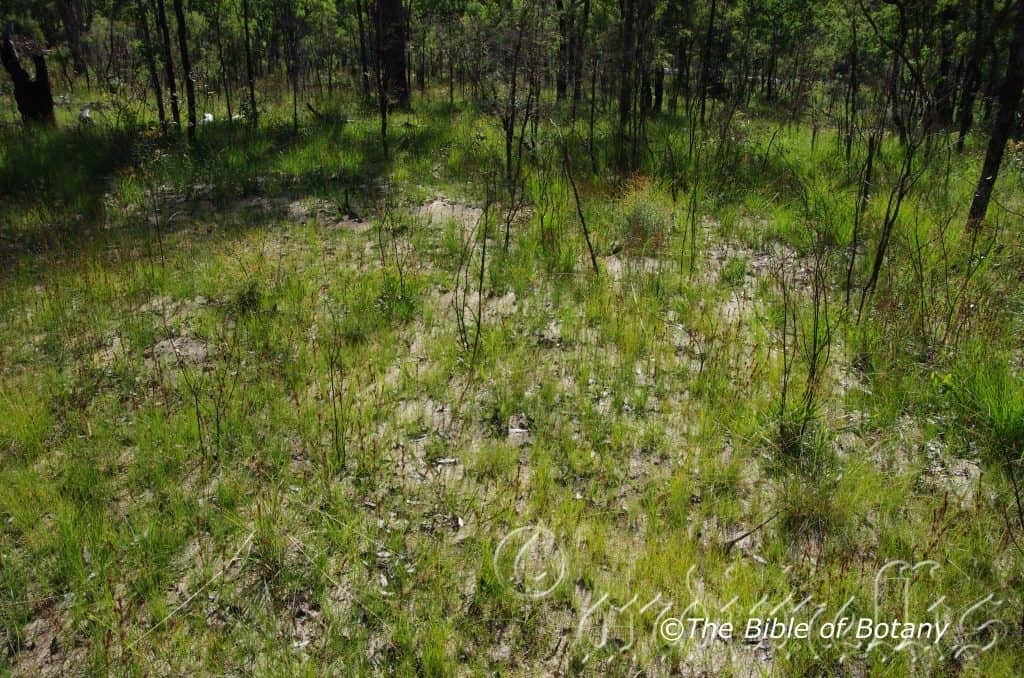
Kremnos NSW
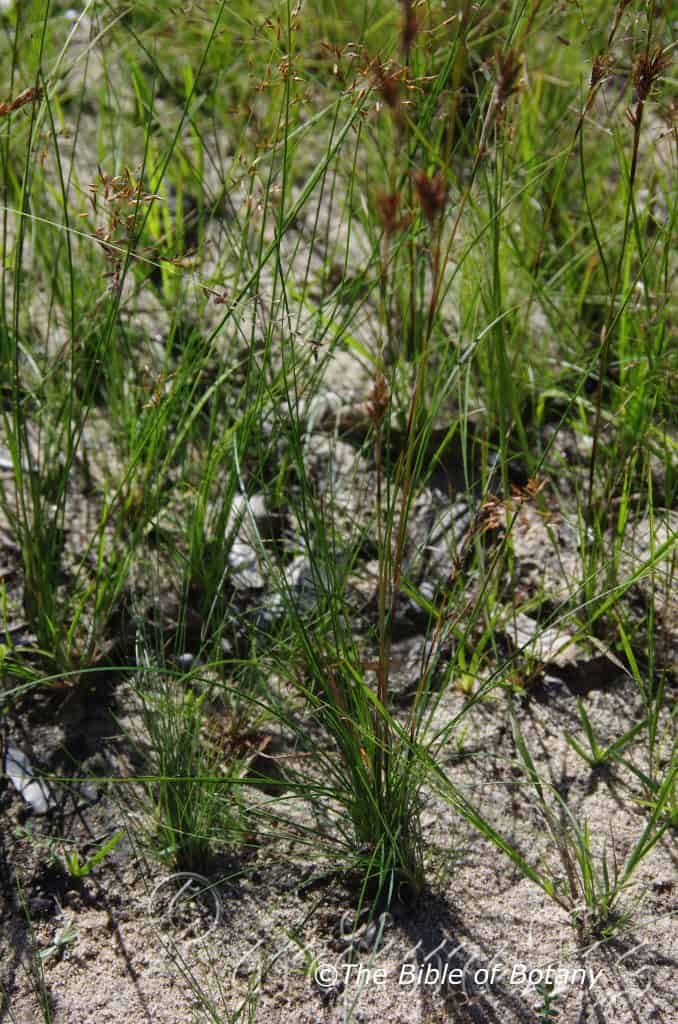
Kremnos NSW
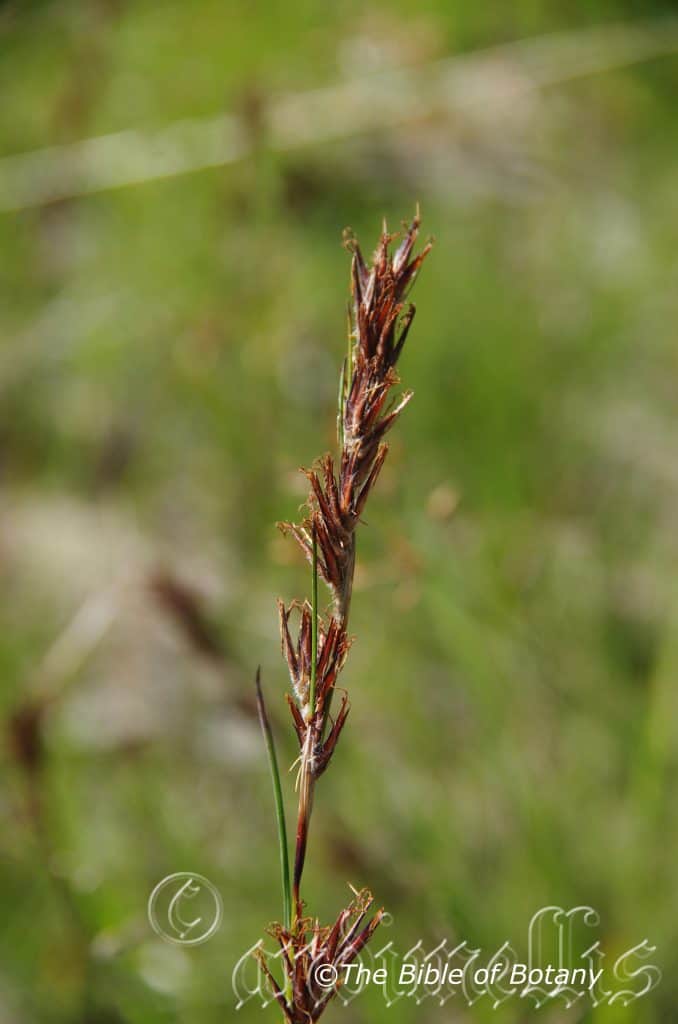
Kremnos NSW
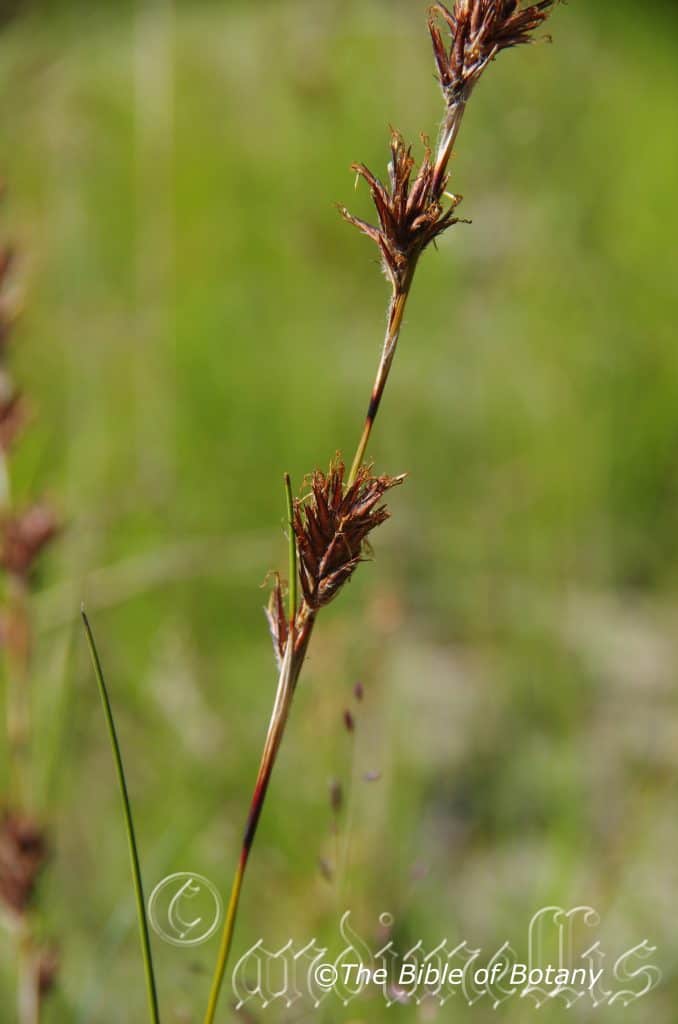
Kremnos NSW
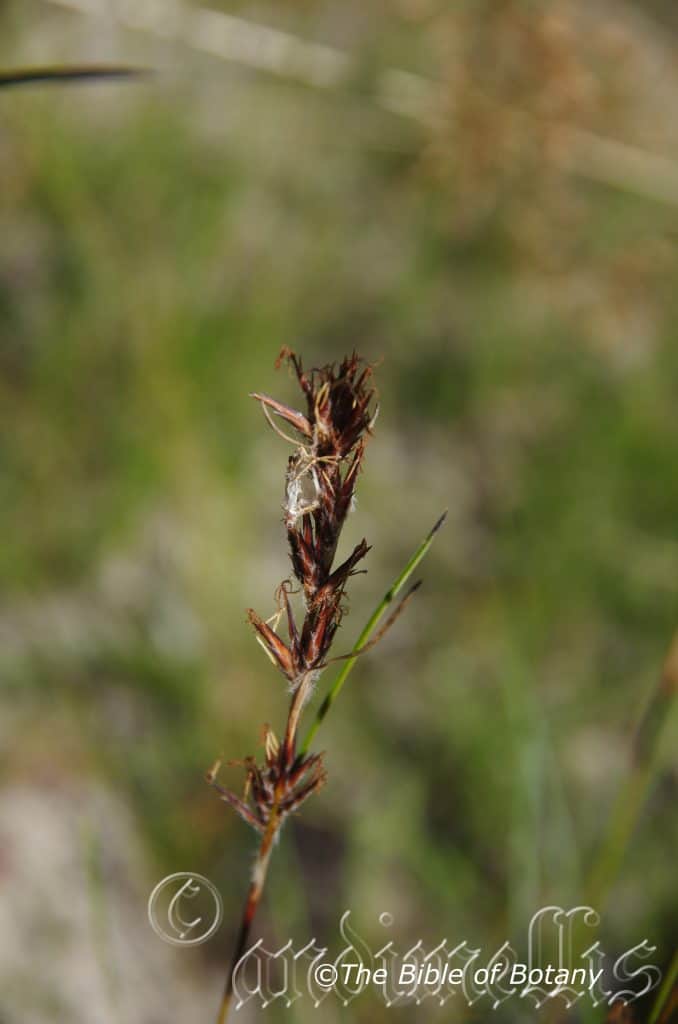
Kremnos NSW
Schoenus villosus
Classification:
Unranked: Monocots
Class: Commelinids
Order: Poales
Family: Cyperaceae
Genus: From Skhoînos, which is Ancient Greek for a sedge reed or water loving plant. It refers to plants, which resemble reeds or sedges.
Specie: From Villus, which is Latin for hairy and – ōsus, which is Latin for full of. It refers to organs or structures, which are more densely covered in longer villous hairs especially when compared to other species in the genus.
Sub specie:
Common Name: Hairy Rush.
Distribution:
Schoenus villosus is found in several disjunct populations south from the Blackdown Tabland and Moreton region in south eastern Queensland to Kangaroo Creek and Kremnos Creek along the Orara River, Newcastle to Wyanbene in central eastern New South Wales and in and around the Nadge Nature Reserve in far south eastern coastal New South Wales. It grows on and east of the Great Dividing Range.
https://avh.ala.org.au/occurrences/search?taxa=Schoenus+villosus#tab_mapView
Habitat Aspect Climate:
Schoenus villosus prefers to grow in moist heaths and woodland in sandy soils on the coast and nearby ranges.The altitude ranges from 5 meters ASL to 60 meters ASL.
The temperatures range from minus 3 degrees in August to 42 degrees in January.
Rainfalls range from lows of 800mm to 1200mm average per annum.
Soil Requirements:
Schoenus villosus prefers skeletal red sands or peaty white sands. The soils are derived from decomposed sandstones or accumulated beach sands. The soils pH ranges from 4.5pH to 6pH. It does not tolerate waterlogged soils. Non saline soils to very saline soils are tolerated as are salt laden winds.
Height & Spread:
Wild Plants: 0.25m to 0.35m by 0.2m to 0.3m.
Characteristics:
Schoenus villosus grows as a small erect tufted perennial, with a very short, stout rhizome. The erect, terete to slightly grooved culms are rigid with a smooth node. The culms measure 150mm to 400mm in length by 1.2mm to 1.7mm in diameter. The semi glossy sheath is reddish-brown, paler near the apex and papillose to smooth. The mouth is moderately covered in short white ciliate hairs while ligule is a short, thin membrane.
The short, linear leaves of Schoenus villosus measure 150mm to 320mm in length by 1mm to 1.5mm in width. The concolourous laminas are mid green and glabrous. The deep red-brown to blackish, glossy sheath is striated and glabrous to sparsely covered in soft, white papillose hairs. The ligule is absent, while the opening is densely covered in long, white ciliate hairs.
The inflorescences of Schoenus villosus are erect, narrow spikes with spikelets loosely clustered at 4 to 6 disjunct nodes. The spikes measure 50mm to 300mm in length. The peduncles and rachilla are glabrous. The lowest involucral bract measures 5mm to 15mm in length.
The lowest involucral bract measures 50mm to 90mm in length. The ovate to acute spike have 2 to 6 individual spikelets that measure 8mm to 14mmin length. The 4 to 7 lowest, narrow-ovate to long-acute glumes are straw coloured near the base, while the apexes are deep red-brown to blackish and dull. The margins are ciliate to flocose.
The 7 to 14 fertile glumes measure 7mm to 10mm in length. There are 6 minute bristle. The 3 stamens’ anthers measure 3mm to 4.8mm in length. The flowers appear from September to early December.
Schoenus villosus obovoid to ellipsoidal trigonous nut measures 1.3mm to 1.7mm in length by 0.8mm to 1mm in diameter. The nut has 3 prominent ribsand is transversely wrinkled. The glabrous, semi glossy to dull nuts are pale reddish-brown to grey.
Wildlife:
Schoenus villosus is unknown to the author.
Cultivation:
Schoenus villosus is a small, compact, erect, tufted grass for small to large gardens around water features or farmers above the high water mark of dams or above the water lines of slow moving water courses where it can form small colonies. It can be slashed occasionally and will recover very quickly.
In cultivation it will grow from 0.5 meters to 0.6 meters by 0.2 meters in length to 0.3 meters in diameter when grown in the open sheltered sunny position.
It is the ideal height for small and medium fish and frog ponds which look at home surrounded by small colourful herbs like Viola betonicifolia or Hibbertia linearifolia and annuals like Scaevola aemula depending how wet the ground is. In drier, sandy soils Actinotis helianthi would look great if pruned in the early stages to encourage more lateral growth.
It is not a preferred fodder crop for either domestic or native animals.
Propagation:
Seeds:
Collect the nuts of Schoenus villosus after they turn white and begin to fall to the ground.
Sow the nuts directly into a seed raising mix and place the tray beneath 20mm shade cloth. Keep the trays moist at all times. When the seedlings are 25mm to 40mm tall, prick them out and plant them into 50mm native tubes using a seed raising mix. Return the tubes to a sunny position and place them in trays and keep wet at all times
Once the seedlings reach 100mm to 150mm in height plant them out into their permanent position. Mass plantings are best achieved with spacing’s of 1000mm to 1500mm centers. Alternatively the seedlings can be planted into 200mm squat pots. Cover the surface with a layer of gravel and placed the pots in a fish or frog pond where the water level is at the same level as the top of the pots.
Fertilize using seaweed, fish emulsion or organic chicken pellets soaked in water on an alternate basis. Fertilize every two months until the plants are established then twice annually in early September and March to maintain better colour, health, vitality and flowering.
Further Comments from Readers:
“Hi reader, it seems you use The Bible of Botany a lot. That’s great as we have great pleasure in bringing it to you! It’s a little awkward for us to ask, but our first aim is to purchase land approximately 1,600 hectares to link several parcels of N.P. into one at The Pinnacles NSW Australia, but we need your help. We’re not salespeople. We’re amateur botanists who have dedicated over 30 years to saving the environment in a practical way. We depend on donations to reach our goal. If you donate just $5, the price of your coffee this Sunday, We can help to keep the planet alive in a real way and continue to bring you regular updates and features on Australian plants all in one Botanical Bible. Any support is greatly appreciated. Thank you.”
In the spirit of reconciliation we acknowledge the Bundjalung, Gumbaynggirr and Yaegl and all aboriginal nations throughout Australia and their connections to land, sea and community. We pay our respect to their Elders past, present and future for the pleasures we have gained.
Scirpus polystachyus
Classification:
Class: Monocots
Class: Commelinids
Order: Poales
Family: Poaceae
Genus: From Skirpus, which is the Latin name for the bull rush. It refers to the plants being in the same family as the bull rush.
Specie: From Polús, which is Ancient Greek for many and Stákhus, which is Ancient Greek for a spike (Cob of corn). It refers to the plants, which have a lot more flowering spikes than other species in the genus.
Sub specie:
Common Name: Large Headed Club Rush.
Distribution:
Scirpus polystachyus is found south from Acacia Creek near Killarney in northern New South Wales to Lake Omeo and Bidwell in north eastern Victoria. It is found on the western side, on and on the eastern side of the Great Dividing Range.
https://avh.ala.org.au/occurrences/search?taxa=Scirpus+polystachyus#tab_mapView
Habitat Aspect Climate:
Scirpus polystachyus prefers partial shade to full sun. It grows in swampy freshwater, banks along creeks and streams or in coastal swamps and wallums. The altitude ranges from 150 meters ASL to 1350 meters ASL.
The temperatures range from minus 5 degrees in August to 34 degrees in January.
Rainfalls range from lows of 600mm to 1280mm average per annum.
Soil Requirements:
Scirpus polystachyus prefers sandy loams to light fatty clays. The soils are usually derived from decomposed granites or at times sandstones. The soils pH ranges from 5.5pH to 6.6pH. It tolerates waterlogged soils often growing in shallow water for extended periods. Non saline soils to slightly saline soils are tolerated.
Height & Spread:
Wild Plants: 0.5m to 2m by 0.5m to 1m.
Characteristics:
Scirpus polystachyus grows as a robust tufted perennial with short, stout rhizomes. The terete to trigonous culms are erect, smooth and glabrous. The culms measure 500mm to 2000mm in length by 2.5mm to 5mm in diameter. The sheaths are mid grass-green to yellow-brown and disintegrate into persistent as fibrous remnants. The ligule is usually present on the basal leaves as a thin membrane.
The long, linear leaves are shorter than the culms and measure 4mm to 7.5mm in width. The concolourous laminas are mid grass-green and glabrous to sparsely covered in white hirsute hairs. The margins are entire and inrolled to involute. The apexes are acute.
The inflorescences are oblong to ovate in outline panicles. The peduncles, rachilla and pedicels are glabrous. The slender drooping branches measure 60mm to 300mm in length while the spikelets measure 6mm to 9mm in length.
The similar obtuse glumes have acute or at times are mucronate. The glabrous glumes are deep grey-green with a prominent green midrib. The glumes measure 2.4mm to 2.6mm in length.
The 3 anthers are pastel yellow and measure 1.2mm to 1.7mm in length including the 0.1mm appendage. The flowers appear from October to February.
The fruits are ellipsoid to obovoid, plano-convex or with distinct dorsal angle nuts. The green grains turn pale yellow-brown, punctulate and semi glossy when ripe. The nuts measure 1.2mm to 1.5mm in length by 0.6 to 0.8mm in diameter.
Wildlife:
Scirpus polystachyus is host to the Alpine Skipper butterfly, Oreisplanus munionga.
It is also a good habitat species for water fowl and is used as a nesting material by larger water birds.
Cultivation:
Scirpus polystachyus is a medium, compact, erect, tufted grass for large water gardens features or on farms and properties above the high water mark of dams or above the water lines of slow moving water courses or along back waters where it can form small colonies. It can be slashed and will recover very quickly but is not suitable for long term heavy grazing.
It is ideally suited for growing in full sun to lightly shaded areas on flats where poor draining exists but maintains soil moisture for extended periods following good rain.
It is not a preferred fodder crop by domestic animals or native animals. It has a strong dense root system which makes it ideal as a soil stabilizer in wet soggy ground.
Propagation:
Seeds:
Collect the nuts of Scirpus polystachyus after they turn white and begin to fall to the ground.
Sow the nuts directly into a seed raising mix and place the tray beneath 20mm shade cloth. Keep the trays moist at all times. When the seedlings are 25mm to 40mm tall, prick them out and plant them into 50mm native tubes using a seed raising mix. Return the tubes to a sunny position and place them in trays and keep wet at all times
Once the seedlings reach 100mm to 150mm in height plant them out into their permanent position. Mass plantings are best achieved with spacing’s of 1000mm to 1500mm centers. Alternatively the seedlings can be planted into 200mm squat pots. Cover the surface with a layer of gravel and placed the pots in a fish or frog pond where the water level is at the same level as the top of the pots.
Fertilize using seaweed, fish emulsion or organic chicken pellets soaked in water on an alternate basis. Fertilize every two months until the plants are established then twice annually in early September and March to maintain better colour, health, vitality and flowering.
Further Comments from Readers:
“Hi reader, it seems you use The Bible of Botany a lot. That’s great as we have great pleasure in bringing it to you! It’s a little awkward for us to ask, but our first aim is to purchase land approximately 1,600 hectares to link several parcels of N.P. into one at The Pinnacles NSW Australia, but we need your help. We’re not salespeople. We’re amateur botanists who have dedicated over 30 years to saving the environment in a practical way. We depend on donations to reach our goal. If you donate just $5, the price of your coffee this Sunday, We can help to keep the planet alive in a real way and continue to bring you regular updates and features on Australian plants all in one Botanical Bible. Any support is greatly appreciated. Thank you.”
In the spirit of reconciliation we acknowledge the Bundjalung, Gumbaynggirr and Yaegl and all aboriginal nations throughout Australia and their connections to land, sea and community. We pay our respect to their Elders past, present and future for the pleasures we have gained.
Scleranthus biflorus
Classification:
Unranked: Eudicots
Order: Caryophyllales
Family: Caryophyllaceae
Genus: From Scleros, which is Ancient Greek for hard and Anthos, which is Ancient Greek for the male reproductive organs on the flower or the flower. It refers to anthers, which are hard and scaly.
Specie: From Bi/Bis, which is Greek/Latin for two and Flōris, which is Latin for a flower or Flōs which is Roman for the Goddess of spring and flowers, which is the Roman goddess for spring and flowers. It refers to plants, which have two flowers at each leaf node.
Sub specie:
Common Name: Knawel or Cushion Bush or Two Flowered Knawel or Canberra Grass.
Distribution:
Scleranthus biflorus is found south from Castle Mountain near Boonah in far south eastern Queensland to Portland on the Narracoorte Coastal Plains. It is usually found at higher elevations on the Great Dividing Range in the north and lower elevations in the far south.
It is found on the Bass Strait Islands and the eastern two thirds of mainland Tasmania with 2 disjunct populations further west at Stanley and Pennerowne Point on the Modder River mouth plains.
https://avh.ala.org.au/occurrences/search?taxa=Scleranthus+biflorus#tab_mapView
Habitat Aspect Climate:
Scleranthus biflorus prefers partial shade to full sun. It grows in grassy woodlands, increasingly in prevalence at higher altitudes in open sparse grassy woodlands or amongst sub alpine heaths. The altitude ranges from 10 meters ASL to 1700 meters ASL.
The temperatures range from minus 6 degrees in July to 32 degrees in January.
The rainfalls range from lows of 650mm to 3200mm average per annum.
Soil Requirements:
Scleranthus biflorus prefers to grow on rocky sandy loams to clay loams. The soils are usually derived from partially decomposed to decomposed sandstones or granites. The soils pH ranges from 5pH to 7pH. It does not tolerate waterlogged soils. Non saline soils to slightly saline soils are tolerated.
Height & Spread:
Wild Plants: 0.03m to 0.06m by 0.2m to 0.5m.
Characteristics:
Scleranthus biflorus grows as a compact, creeping much branched perennial with either lax or spreading stems. It forms a dense compact mat often domed mat. The new growth and lateral shoots are glabrous and are semi glossy lime-green to deep green.
The opposite or decussate, linear to subulate leaves are often crowded and measure 4mm to 9mm in length by 0.8mm to 1.5mm in width. The petioles measure 5mm to 10mm in length. The caudate bases are straight while the apexes are acute. The concolourous laminas are pale lemon–green, lime-green to deep grass-green, semi glossy and glabrous. The laminas are terete to flat on both surfaces and one surface. The margins are entire. The mid vein and 2 main laterals are prominent on the lower laminas.
The inflorescences are born in pairs on short glabrous peduncles. The pale lemon-green to pale greenish-yellow peduncles measure 3mm to 36mm in length. The 4 acute bracts are much shorter than the flowers and usually measure 1.5mm to 2.5mm in length. The 4 or 5 linear to narrow ovate pale green to orangey-yellow, calyx lobes are erect, glabrous and measure 1mm to 1.6mm in length. The lemon-green to orangey-yellow corolla tube measures 2mm to 2.5mm in length while the petals are absent on this species. The flowers appear from early September through to late December.
Scleranthus biflorus’s fruits are ovoidal nuts which are flattened on one side. The persistent calyx is surrounds the mature nuts.
The nuts are glabrous and measure 1.8mm to 2.1mm in length. The green capsules first turn deep brown when ripe.
Wildlife:
Scleranthus biflorus is unknown to the author.
Cultivation:
Scleranthus biflorus is a magnificent small cushion plant for cool temperate to cold alpine regions depending on the form acquired. Lower elevation plants from warmer areas are more compact than higher altitude colder forms. It is best grown as a border plant along hard edges, as a ground cover in confined places or rockery plant. It grows well in crevices nooks and crannies between paving stones and rocks by rooting onto the rocks and shaping itself into the form of the solid article.
It is not fussy on the soil type provided it is in full sun and adequate soil moisture in maintained at all times. Be careful with high nitrogenous and phosphate fertilizers as the plants are sensitive to salts. Fertilize using an organic fertilizer as recommended below.
The fine textured, rather ‘moss-like’ appearance contrasts beautifully with broad leaved plants that are set further back and large flat rocks and pavers. It may be planted successfully either singly or as a group, and complements rock features.
Rhyzoctonia fungi specie along with prolonged hot weather hot can lead dead to dead patches appearing within a plant mound and eventually to its demise. If the mound is cleaned out of the dead tissue the suitable fungicide applied immediately the plants can be saved. New shoots will replace the dead center within a few weeks.
The plants are very susceptible to weed competition especially on very acid soils. Garden areas that are relatively weed free are preferred as strong growing weeds such as sheep sorrel (Rumex acetosella), oxalis (Oxalis corniculata) and even the native Oxalis (Oxalis chnoodes) can be very competitive along with grasses and reeds.
Propagation:
Seeds: The seeds of Scleranthus biflorus are difficult to collect.
Sow seeds directly into a seed raising mix, keeping them moist not wet. Do not over water as the seeds will rot off before germination takes place. Place the trays in a warm shaded area with 50mm shade cloth in the bush house. The seeds are erratic in germination even from the same tree in the same season. Seeds may germinate as quickly as 3 weeks but usually take 2 to 6 months to germinate.
When the seedlings are 20mm to 25mm tall, prick them out and plant them into 100mm squat pots using a good organic mix.
As the seedlings roots reach the bottom of the tubes plant them out into their permanent position.
Fertilize using seaweed, fish emulsion or organic chicken pellets soaked in water on an alternate basis. Fertilize every two months until the plants are established then twice annually in early September and March to maintain better colour, health, vitality and flowering.
Division: Scleranthus biflorus is most often propagated by dividing mature clumps and replanting the divisions. First select a healthy plant. Secondly it is best to divide plants just prior to the onset of new growth in early spring or late winter. Prior to removing the plant from the pot or ground plants should be given a deep watering about 2 hours before removing them from the ground. It is best to soak potted plants in water for a couple of hours prior to removing the plant from the pot.
Divide the clumps so that there are several square centremetres with healthy roots on each division. This is best done using a sharp knife.
Remove any unwanted or dead material that can be seen.
Do not remove the soil from around the roots. Replant the divided section into the new container to the same depth.
Water thoroughly but do not fertilize. Place the containers beneath 30mm to 50mm shade cloth and keep moist. After a fortnight or after the signs of new roots or shoots appear fertilize with our recommended fertilizer and repeat after about a month.
Once the plants have re-established themselves plant out and fertilize as before.
Fertilize using seaweed, fish emulsion or organic chicken pellets soaked in water on an alternate basis. Fertilize every two months until the plants are established then twice annually in early September and March to maintain better colour, health, vitality and flowering.
Further Comments from Readers:
“Hi reader, it seems you use The Bible of Botany a lot. That’s great as we have great pleasure in bringing it to you! It’s a little awkward for us to ask, but our first aim is to purchase land approximately 1,600 hectares to link several parcels of N.P. into one at The Pinnacles NSW Australia, but we need your help. We’re not salespeople. We’re amateur botanists who have dedicated over 30 years to saving the environment in a practical way. We depend on donations to reach our goal. If you donate just $5, the price of your coffee this Sunday, We can help to keep the planet alive in a real way and continue to bring you regular updates and features on Australian plants all in one Botanical Bible. Any support is greatly appreciated. Thank you.”
In the spirit of reconciliation we acknowledge the Bundjalung, Gumbaynggirr and Yaegl and all aboriginal nations throughout Australia and their connections to land, sea and community. We pay our respect to their Elders past, present and future for the pleasures we have gained.
Scleria mackaviensis
Classification:
Unranked: Monocots
Class: Commelinids
Order: Poales
Family: Cyperaceae
Genus: From Scleros, which is Ancient Greek for hard. It refers to the stems or culms on some species, which are hard.
Specie: From Mackavie which is unknown and Anum/Ensis, which is Latin for to originate from.
Variety: Scleria mackaviensis var. atrata. From Mackavie which is unknown and Anum/Ensis, which is Latin for to originate from.
Variety: Scleria mackaviensis var. mackaviensis. From Mackavie which is unknown and Anum/Ensis, which is Latin for to originate from.
Common Name: Large Headed Club Rush.
Distribution:
Scleria mackaviensis var. atrata is found south from Melville Island to the Daly River and east to Imimbar Creek head waters in the Northern Territory.
In the east it is found south from the Tip of Cape York Peninsula in far Northern Queensland to Pariagara Creek near Inglewood and the Coomera River in south east Queensland. It is found on the Western Slopes, on and east of the Great Dividing Range to the coast.
Scleria mackaviensis var. mackaviensis is found south from the Tip of Cape York Peninsula and the Torres Strait Islands in far North eastern Queensland to Bemboka and Candelo near Bega in southern coastal New South Wales. It is found on the Western Slopes, on and east of the Great Dividing Range to the coast.
https://avh.ala.org.au/occurrences/search?taxa=Scleria+mackaviensis#tab_mapView
Habitat Aspect Climate:
Scleria mackaviensis prefers partial shade to full sun. It grows on drier sites in open forest or woodlands often on rocky slopes along the coastal ranges. The altitude ranges from 150 meters ASL to 1050 meters ASL.
The temperatures range from minus 5 degrees in August to 34 degrees in January.
Rainfalls range from lows of 500mm to 3200mm average per annum.
Soil Requirements:
Scleria mackaviensis prefers sandy loams to medium clays. The soils are usually derived from decomposed granites, sandstones, brown basalts, black basalts, metamorphic rocks or shales. The soils pH ranges from 5pH to 7pH. It does not tolerate waterlogged soils. Non saline soils to slightly saline soils are tolerated.
Height & Spread:
Wild Plants: 0.1m to 0.3m by 0.3m to 0.5m.
Characteristics:
Scleria mackaviensis grows as a slender perennial grass with very short rhizomes and semi erect culms. The culms are scabrous and measure 60mm to 300mm in length by 0.8mm to 1.5mm in diameter.
The long, filiformis, linear leaves measure 50mm to 300mm in length by 1mm to 2mm in width. The bases are longitudinally caudate along the culms with a contra ligule of white hairs while the apexes are acute. The concolourous laminas are mid grass-green and sparsely covered in white puberulent to hispid hairs. The laminas are widely conduplicate. The margins are entire while the apexes are acute.
The inflorescences are 2 to 4 small clusters born on a spike. The grass-green peduncles are glabrous. The linear, lanceolate-ovate or lanceolate spikelets are numerous on the spike. The spikes measure 30mm to 200mm in length.
The spikelets are bisexual or male and measure 4mm to 6mm in length. The male spikelets are several flowered. The bisexual spikelets have several male florets in a cluster. The lower leaf like bract is grass-green and measures 24mm to 36mm in length and reduce in size with each successive cluster up the spike.
The dissimilar glumes are narrow elliptical to long acute with a narrow acute apex. It is green to straw-coloured, tinged purplish-red along the margins. The female glumes are longer and measure 4.5mm to 5.5mm in length. The glumes are glabrous to sparsely covered in white puberulent to hispid hairs near midrib. The lobes are somewhat spreading, membranous, broad, truncate and undulate.
The 3 anthers are pastel greenish and measure 2mm to 2.5mm in length. The tri lobed disc is off white to pale brown. The flowers appear from October to April.
The fruits are obscurely trigonous, globose to ellipsoid nuts. The green nuts turn fawnish, rugose and are occasionally covered in white puberulent hairs when ripe. The nuts measure 1.6mm to 2.3mm in length by 1.6mm to 2mm in diameter.
Wildlife:
Scleria mackaviensis is the host plant for the Small Dingy Skipper butterfly, Hesperilla crypsigramma.
Cultivation:
Scleria mackaviensis is a medium, open semi erect tufted grass for small to large gardens above the high water mark of dams or above the water lines of slow moving water courses where it can form small colonies. It can be slashed and will recover very quickly but is not suitable for long term heavy grazing.
It is ideally suited for growing in full sun to lightly shaded areas on flats where it is free draining but maintains soil moisture for extended periods following good rain.
It is not a preferred fodder rush for domestic animals or native wildlife. It has a strong dense root system which probably makes it ideal as a soil stabilizer in wet soggy ground though it does pull easy in softer ground.
Propagation:
Seeds: Collect the nuts after they turn white and begin to fall to the ground.
Sow the nuts directly into a seed raising mix and place the tray beneath 20mm shade cloth. Keep the trays moist at all times. When the seedlings are 25mm to 40mm tall, prick them out and plant them into 50mm native tubes using a seed raising mix. Return the tubes to a sunny position and place them in trays and keep wet at all times
Once the seedlings reach 100mm to 150mm in height plant them out into their permanent position. Mass plantings are best achieved with spacing’s of 1000mm to 1500mm centers. Alternatively the seedlings can be planted into 200mm squat pots. Cover the surface with a layer of gravel and placed the pots in a fish or frog pond where the water level is at the same level as the top of the pots.
Fertilize using seaweed, fish emulsion or organic chicken pellets soaked in water on an alternate basis. Fertilize every two months until the plants are established then twice annually in early September and March to maintain better colour, health, vitality and flowering.
Further Comments from Readers:
“Hi reader, it seems you use The Bible of Botany a lot. That’s great as we have great pleasure in bringing it to you! It’s a little awkward for us to ask, but our first aim is to purchase land approximately 1,600 hectares to link several parcels of N.P. into one at The Pinnacles NSW Australia, but we need your help. We’re not salespeople. We’re amateur botanists who have dedicated over 30 years to saving the environment in a practical way. We depend on donations to reach our goal. If you donate just $5, the price of your coffee this Sunday, We can help to keep the planet alive in a real way and continue to bring you regular updates and features on Australian plants all in one Botanical Bible. Any support is greatly appreciated. Thank you.”
In the spirit of reconciliation we acknowledge the Bundjalung, Gumbaynggirr and Yaegl and all aboriginal nations throughout Australia and their connections to land, sea and community. We pay our respect to their Elders past, present and future for the pleasures we have gained.
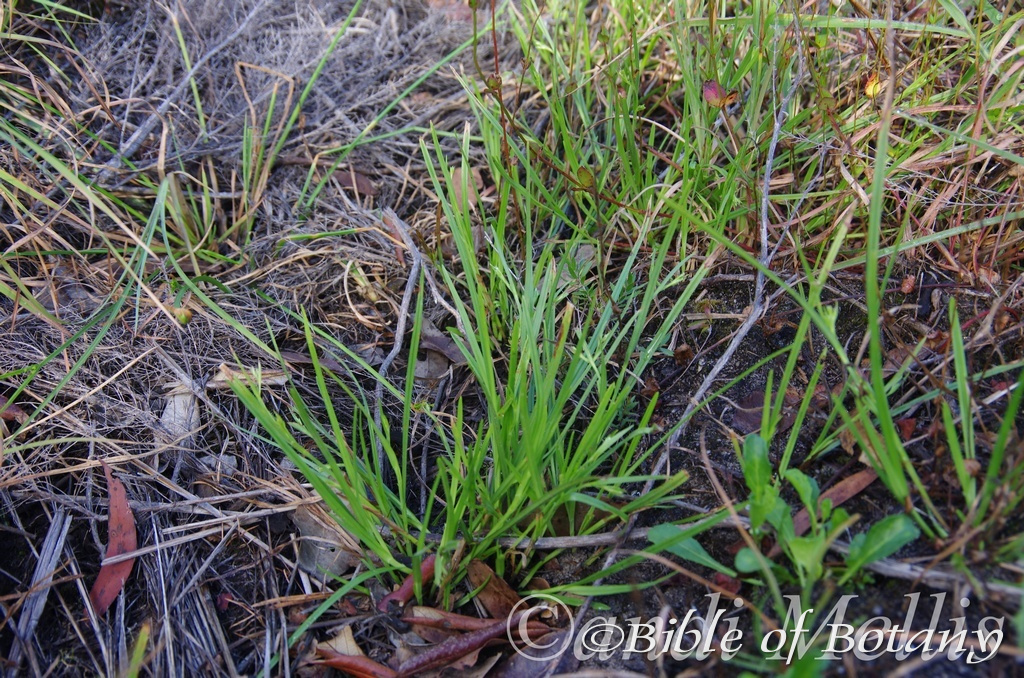
Fortis Creek National Park NSW
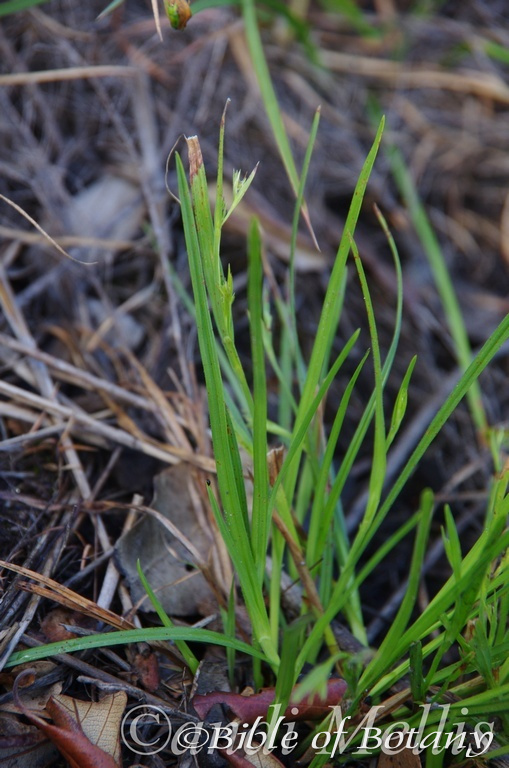
Fortis Creek National Park NSW
Scleria rugosa
Classification:
Unranked: Monocots
Class: Commelinids
Order: Poales
Family: Cyperaceae
Genus: From Scleros, which is Ancient Greek for hard. It refers to the stems or culms on some species, which are hard.
Specie: From Rūgōsum, which is Latin for creased, wrinkled or shrivelled. It refers to organs, which are markedly wrinkled or severely creased.
Sub specie:
Common Name:
Distribution:
Scleria rugosa is found north of a line from Long Island in the Buccaneer Archipelago off the north west coast of Western Australia to the Murchison Range in central Northern Territory then to the little River in Etheride before heading south to Aramac and then north east to the coast on the Ross River and Townsville in northern Queensland.
It is then found south along the coast to Grafton and the Clarence River including the off shore Islands.
https://avh.ala.org.au/occurrences/search?taxa=Scleria+rugosa#tab_mapView
Habitat Aspect Climate:
Scleria rugosa prefers partial shade to full sun. It grows in marshy flats along stream banks in rainforest margins, Melaleuca swamp forest, Eucalypt forest, woodlands, savannah woodlands or moist heaths around billabongs and dams. The altitude ranges from 5 meters ASL to 780 meters ASL.
The temperatures range from 2 degrees in August to 44 degrees in January and February.
Rainfalls range from lows of 400mm to 3200mm average per annum.
Soil Requirements:
Scleria rugosa prefers sandy loams to light fatty clays. The soils are usually derived from decomposed granites, sandstones or accumulated beach sands behind the frontal dunes. The soils pH ranges from 5.5pH to 6.6pH. It tolerates waterlogged soils often growing in shallow water for extended periods or where high water tables exist for extended periods. Non saline soils to moderately saline soils are tolerated.
Height & Spread:
Wild Plants: 0.05m to 0.2m by 0.2m to 0.4m.
Characteristics:
Scleria rugosa grows as a slender tufted annual with obliquely erect or decumbent culms. The culms are glabrous to densely covered in white villous hairs. The culms measure 50mm to 200mm by 0.5mm to 1.5mm in diameter.
The long leaves measure 50mm to 220mm in length by 2mm to 4mm in width. The bases are longitudinally caudate along the culms with a contra ligule of white hairs while the apexes are acute. The concolourous laminas are mid grass-green and sparsely to moderately covered in white hirsute hairs. The margins are entire while the apexes are acute.
The inflorescences are several disjunct clusters born along narrow spikes. The peduncles are glabrous to moderately covered in white villous or hirsute hairs. The spikes have numerous lanceolate to narrow ovate spikelets. The spikes measure 100mm to 300mm in length.
The spikelets are unisexual. The male spikelets measure 1mm to 2mm in length while the female spikelets measure 3mm to 4mm in length. The lower leaf like bract is grass-green and measures 12mm to 16mm in length and reduce in size with each successive cluster up the spike.
The dissimilar glumes are narrow elliptical to long acute with a mucronate apex. It is green to fawnish-brown. The female glumes are longer and measure 3mm to 4mm in length. The glumes are glabrous and usually covered in white ciliate to hispid hairs on the midrib. The lobes are somewhat spreading, membranous, broad, truncate and undulate.
The 3 anthers are pastel greenish and measure 2mm to 2.5mm in length. The tri lobed disc is off white to pale fawnish-brown and minutely papillose or colliculate. The disc measures 0.7mm to 0.9mm in length. The flowers appear from December to February.
Scleria rugosa The fruits are terete, globose or slightly depressed nuts. The semi glossy green nuts turn white or grey, are smooth to rugose and usually pitted especially in upper half or at times are tuberculate when ripe. The nuts measure 1.3mm to 2mm in length.
Wildlife:
Scleria rugosa wildlife is unknown to the author.
Cultivation:
Scleria rugosa is a medium, open semi erect tufted grass for small to large gardens above the high water mark of dams or above the water lines of slow moving water courses where it can form small colonies. It can be slashed and will recover very quickly but is not suitable for long term heavy grazing.
It is ideally suited for growing in full sun to lightly shaded areas on flats where it is free draining but maintains soil moisture for extended periods following good rain.
This is a lovely little grass that forms a tangled mass of leaves radiating from a central growing crown. It makes good border grass or rockery specimen for the collector of grasses as it is neat and compact. In cultivation it will grow 100mm to 150mm in height by 200mm to 3050mm in diameter.
It is not a preferred fodder rush for domestic animals or native wildlife.
Propagation:
Seeds: Collect the seeds after they turn white and begin to fall to the ground.
Sow the nuts directly into a seed raising mix and place the tray beneath 20mm shade cloth. Keep the trays moist at all times. When the seedlings are 25mm to 40mm tall, prick them out and plant them into 50mm native tubes using a seed raising mix. Return the tubes to a sunny position and place them in trays and keep wet at all times
Once the seedlings reach 100mm to 150mm in height plant them out into their permanent position. Mass plantings are best achieved with spacing’s of 1000mm to 1500mm centers. Alternatively the seedlings can be planted into 200mm squat pots. Cover the surface with a layer of gravel and placed the pots in a fish or frog pond where the water level is at the same level as the top of the pots.
Fertilize using seaweed, fish emulsion or organic chicken pellets soaked in water on an alternate basis. Fertilize every two months until the plants are established then twice annually in early September and March to maintain better colour, health, vitality and flowering.
Further Comments from Readers:
“Hi reader, it seems you use The Bible of Botany a lot. That’s great as we have great pleasure in bringing it to you! It’s a little awkward for us to ask, but our first aim is to purchase land approximately 1,600 hectares to link several parcels of N.P. into one at The Pinnacles NSW Australia, but we need your help. We’re not salespeople. We’re amateur botanists who have dedicated over 30 years to saving the environment in a practical way. We depend on donations to reach our goal. If you donate just $5, the price of your coffee this Sunday, We can help to keep the planet alive in a real way and continue to bring you regular updates and features on Australian plants all in one Botanical Bible. Any support is greatly appreciated. Thank you.”
In the spirit of reconciliation we acknowledge the Bundjalung, Gumbaynggirr and Yaegl and all aboriginal nations throughout Australia and their connections to land, sea and community. We pay our respect to their Elders past, present and future for the pleasures we have gained.
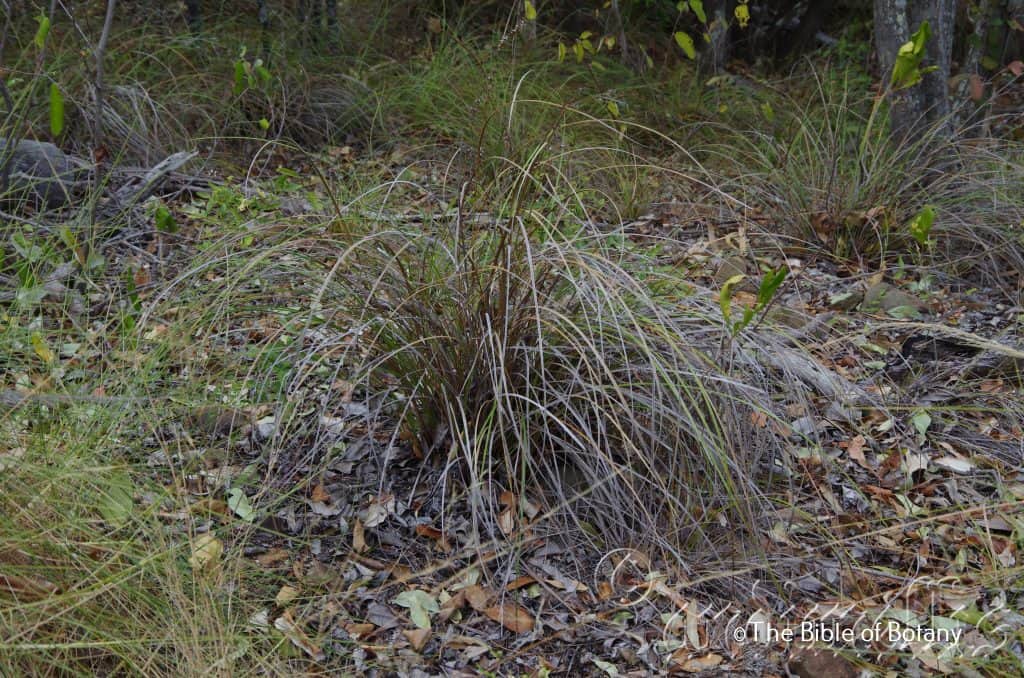
Magnetic Island Qld.
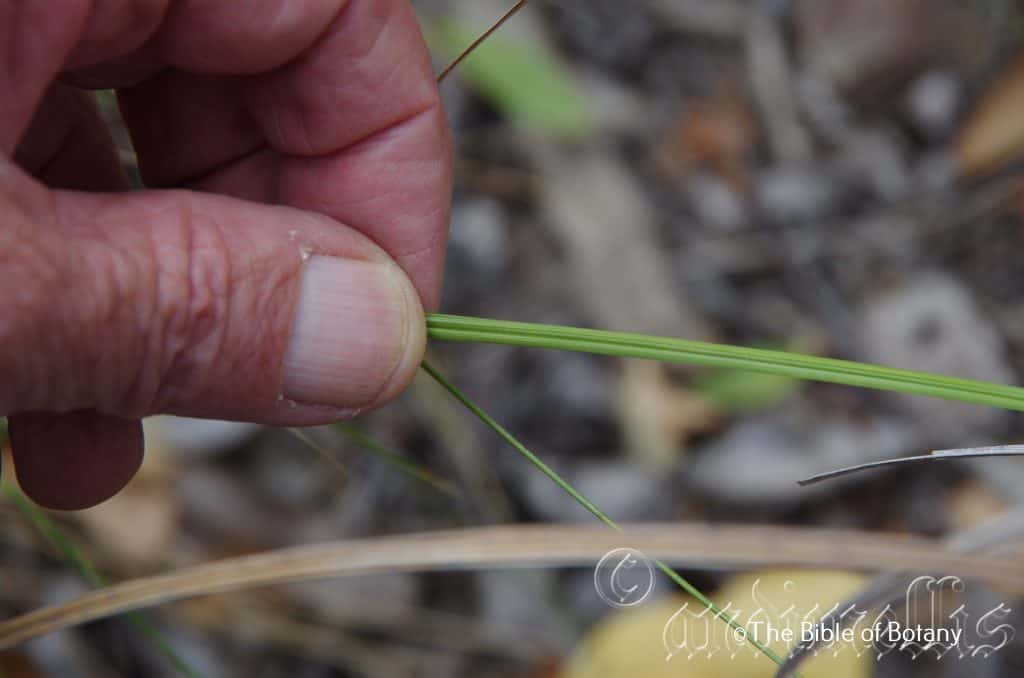
Magnetic Island Qld.
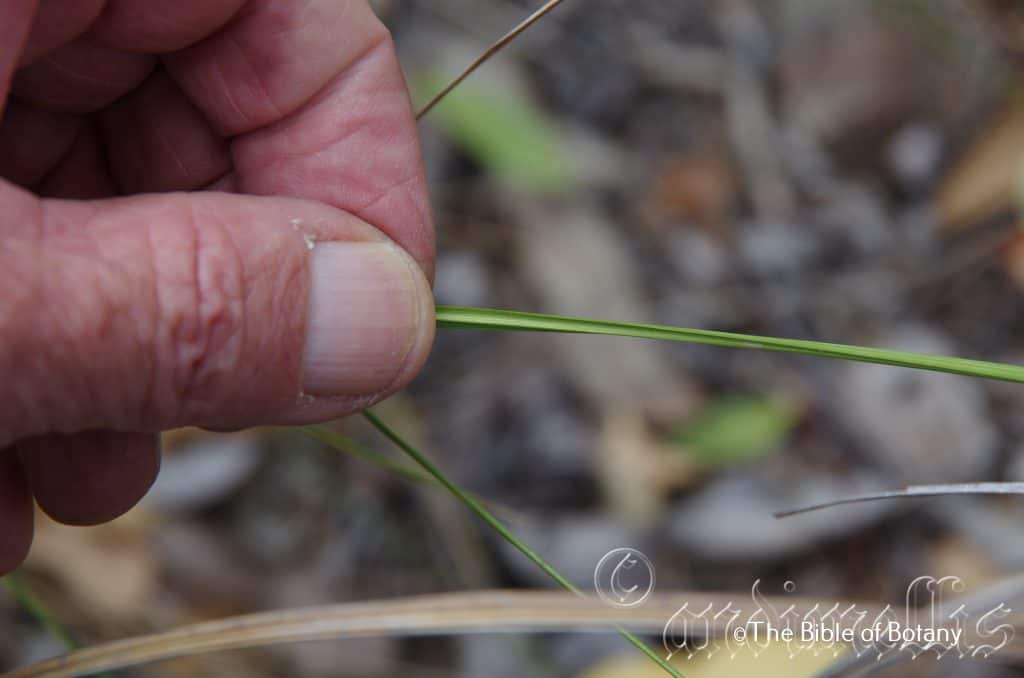
Magnetic Island Qld.
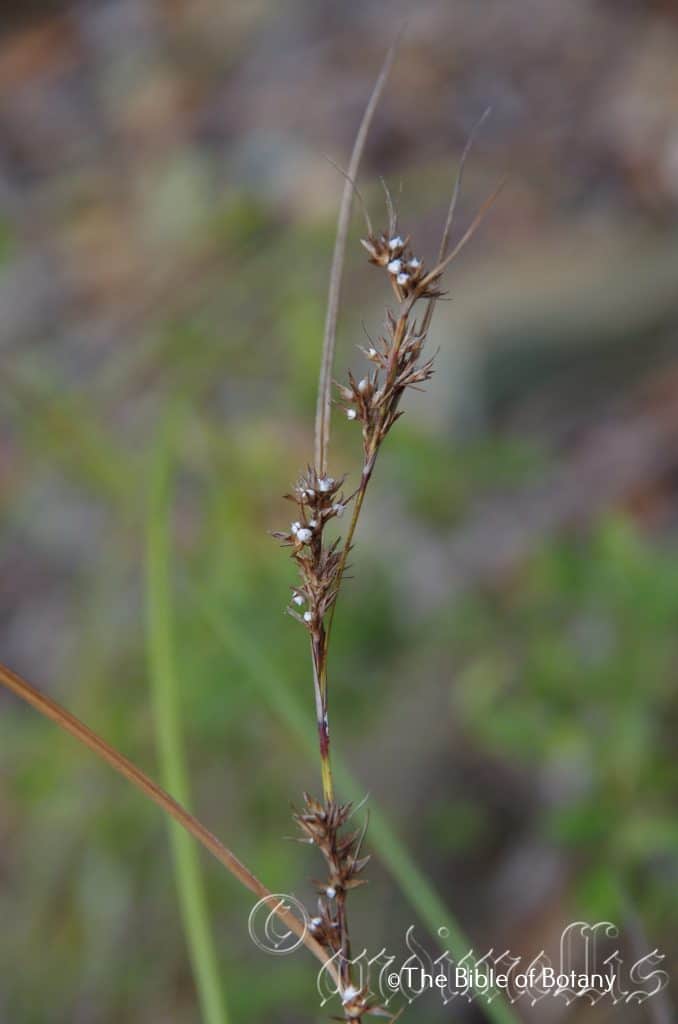
Magnetic Island Qld.
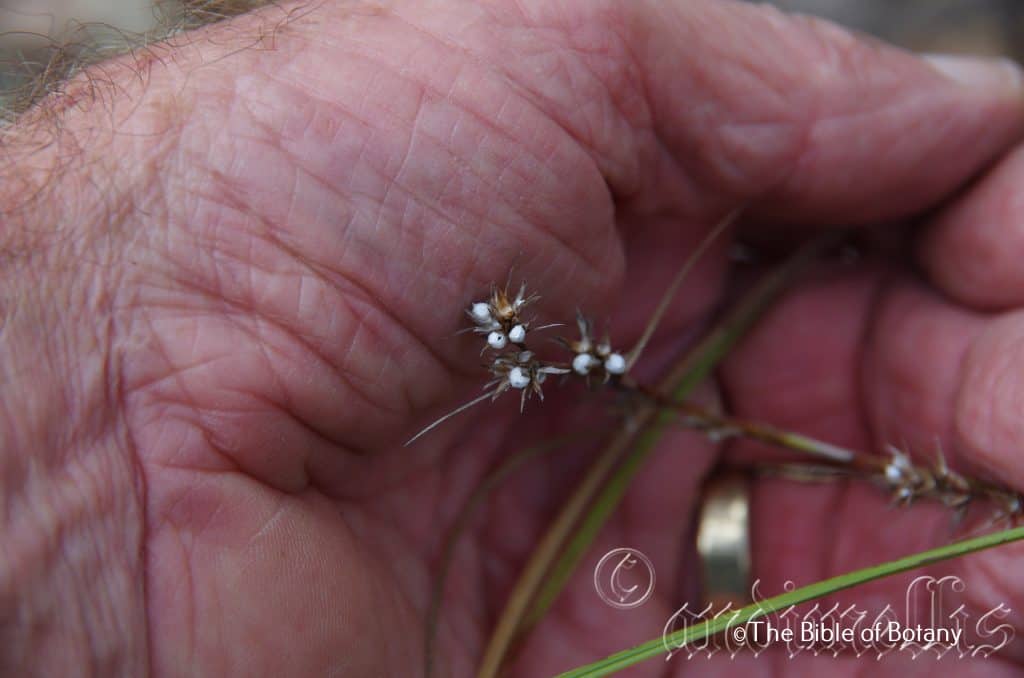
Magnetic Island Qld.
Scleria tricuspidata
Classification:
Unranked: Monocots
Class: Commelinids
Order: Poales
Family: Cyperaceae
Genus: From Scleros, which is Ancient Greek for hard. It refers to the stems or culms on some species, which are hard.
Specie: From Treîs/Tría, which are Ancient Greek or Tri, which is Latin for three and Cuspis, which is Latin for a point. It refers to sepals, which have three very prominent long acute apexes.
Sub specie:
Common Name:
Distribution:
Scleria tricuspidata is found north east of a line from Malay Bay to Groote Eyelandt in the Northern Territory including the off shore Islands, with a disjunct population further south in the Gregory National Park
In the east it grows south from the Torres Strait Islands to Moleville Rocks north of Grafton in northern New South Wales. It grows on and east of the Great Dividing Range to the coast except for a few disjunct populations and Blackbraes National Park and Sarina to Nebo Road near the range.
https://avh.ala.org.au/occurrences/search?taxa=Scleria+tricuspidata#tab_mapView
Habitat Aspect Climate:
Scleria tricuspidata prefers light dappled shade to full sun. It grows in swampy freshwater banks along creeks and streams or in swamps or wallums. The altitude ranges from 5 meters ASL to 800 meters ASL.
The temperatures range from minus 2 degrees in August to 40 degrees in January.
Rainfalls range from lows of 600mm to 3200mm average per annum.
Soil Requirements:
Scleria tricuspidata prefers sand to sandy loams or light silts to medium silts. The soils are usually derived from decomposed sandstones or at times granites, metamorphic rocks, brown basalts or black basalts. The soils pH ranges from 5.5pH to 6.6pH. It tolerates waterlogged soils often growing in seasonal shallow water for short periods. Non saline soils to moderately saline soils are tolerated.
Height & Spread:
Wild Plants: 0.1m to 0.3m by 0.2m to 0.5m.
Characteristics:
Scleria tricuspidata grows as a slender tufted annual with stems that are glabrous to moderately covered in white pubescent hairs. It is usually retrorsely scabrous. The culms measure 50mm to 300mm in length by 1mm to 2mm in diameter.
The leaves are often all reduced to bladeless or shortly bladed sheaths that measure 5mm to 200mm in length by 22mm to 4mm in width. The leaves are glabrous to moderately covered in white pubescent hairs. The contra ligule is short.
The inflorescences are 3 to 5 disjunct clusters born along narrow spikes. The peduncles are glabrous to moderately covered in white villous or hirsute hairs. The spikes have numerous lanceolate to narrow ovate spikelets. The spikes measure 100mm to 400mm in length.
The spikelets are unisexual. The male spikelets measure 3mm to 4mm in length while the female spikelets measure 4.5mm to 5mm in length. The lower leaf like bract is grass-green and measures 45mm to 65mm in length and reduce in size with each successive cluster up the spike.
The dissimilar glumes are narrow elliptical to long acute with a mucronate apex. It is white to fawnish-brown. The female glumes are longer than the male glumes and measure 4mm to 4.5mm in length. The glumes are usually glabrous or often scabrous along the midrib. The lobes are somewhat spreading, membranous, broad, truncate and undulate.
The 2 or 3 anthers are white and measure 1mm to 1.5mm in length. The triangular disc is pale fawnish-brown with very narrow reflexed margins and an erect mucronate tip at each corner. The flowers appear from December to February.
The fruits are obtusely trigonous, narrow ellipsoid nuts. The dull green nuts turn white or pale grey, are rugose and tuberculate on the apical half and are often sparsely covered in white puberulent hairs when ripe. The nuts measure 2mm to 2.5mm in length by 1.7mm to 2mm in diameter.
Wildlife:
Scleria tricuspidata is the host plant for the Little Native Mouse (Pseudomys delicatulus) and probably most other native mice and rats. It is also probably a stable food source for many small Parrots, Rosellas and finches however; as yet I have not witnessed these on the plants.
The leaves and stems are an important source of food for the Swamp Wallaby (Wallabia bicolor), the Pretty Face Wallaby (Macropus parryi), the Grey Kangaroo (Macropus giganteus), the Common Wombat (Vombatus ursinus) and the Northern Hairy Nosed Wombat (Lasiorhinus krefftii).
Cultivation:
Scleria tricuspidata is a medium, compact, erect, tufted grass for small to large gardens above the high water mark of dams or above the water lines of slow moving water courses where it can form small colonies. It can be slashed and will recover very quickly but is not suitable for long term heavy grazing.
It is ideally suited for growing in full sun to lightly shaded areas on flats where it is free draining but maintains soil moisture for extended periods following good rain.
It is a preferred fodder crop is unknown to the author as a food source of grazing stock but has been observed as a stand by grass for native animals when pressure mounts on surrounding grasses in times of drought. It has a strong dense root system which probably makes it ideal as a soil stabilizer in wet soggy ground though it does pull easy in softer ground.
Propagation:
Seeds: Collect the seeds after they turn white and begin to fall to the ground.
Sow the nuts directly into a seed raising mix and place the tray beneath 20mm shade cloth. Keep the trays moist at all times. When the seedlings are 25mm to 40mm tall, prick them out and plant them into 50mm native tubes using a seed raising mix. Return the tubes to a sunny position and place them in trays and keep wet at all times.
Once the seedlings reach 100mm to 150mm in height plant them out into their permanent position. Mass plantings are best achieved with spacing’s of 1000mm to 1500mm centers. Alternatively the seedlings can be planted into 200mm squat pots. Cover the surface with a layer of gravel and placed the pots in a fish or frog pond where the water level is at the same level as the top of the pots.
Fertilize using seaweed, fish emulsion or organic chicken pellets soaked in water on an alternate basis. Fertilize every two months until the plants are established then twice annually in early September and March to maintain better colour, health, vitality and flowering.
Further Comments from Readers:
“Hi reader, it seems you use The Bible of Botany a lot. That’s great as we have great pleasure in bringing it to you! It’s a little awkward for us to ask, but our first aim is to purchase land approximately 1,600 hectares to link several parcels of N.P. into one at The Pinnacles NSW Australia, but we need your help. We’re not salespeople. We’re amateur botanists who have dedicated over 30 years to saving the environment in a practical way. We depend on donations to reach our goal. If you donate just $5, the price of your coffee this Sunday, We can help to keep the planet alive in a real way and continue to bring you regular updates and features on Australian plants all in one Botanical Bible. Any support is greatly appreciated. Thank you.”
In the spirit of reconciliation we acknowledge the Bundjalung, Gumbaynggirr and Yaegl and all aboriginal nations throughout Australia and their connections to land, sea and community. We pay our respect to their Elders past, present and future for the pleasures we have gained.
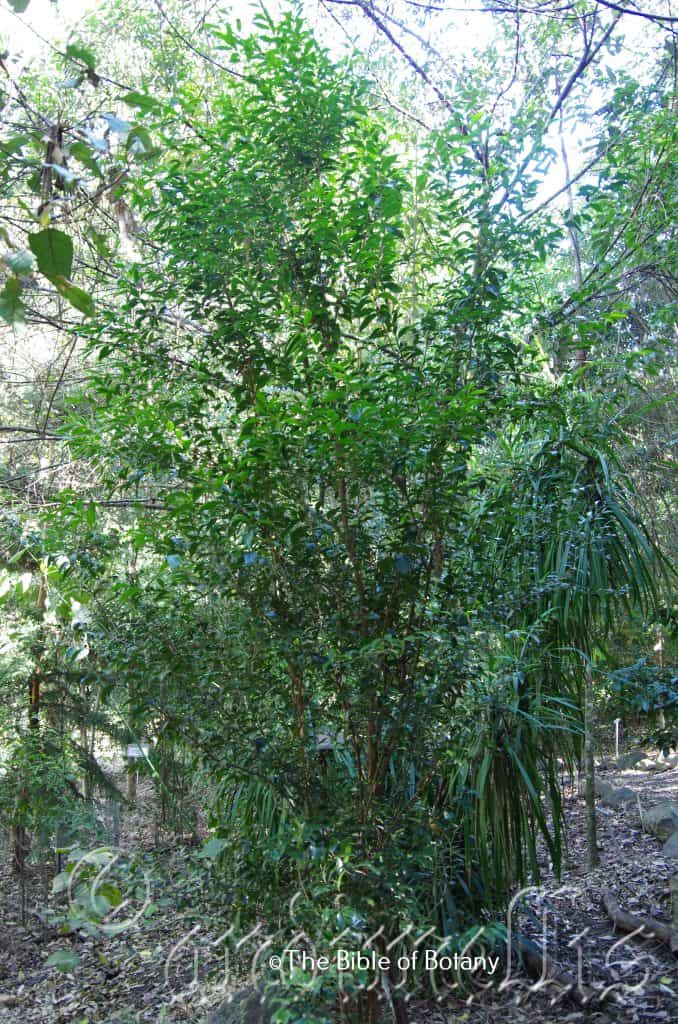
LBG Lismore NSW
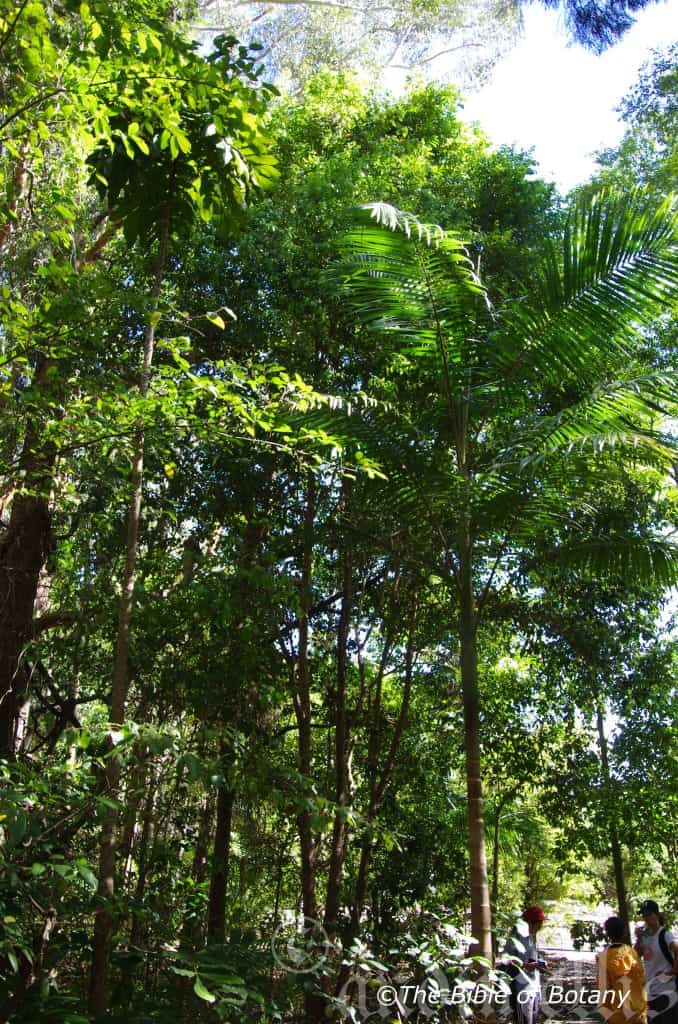
NCBG Coffs Harbour NSW
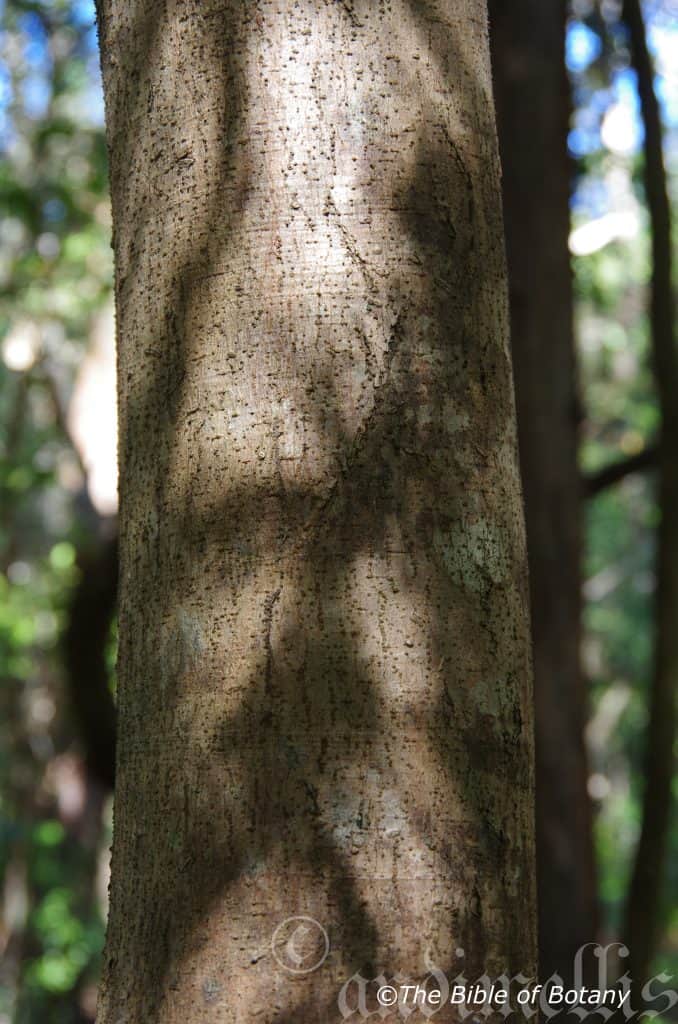
NCBG Coffs Harbour NSW
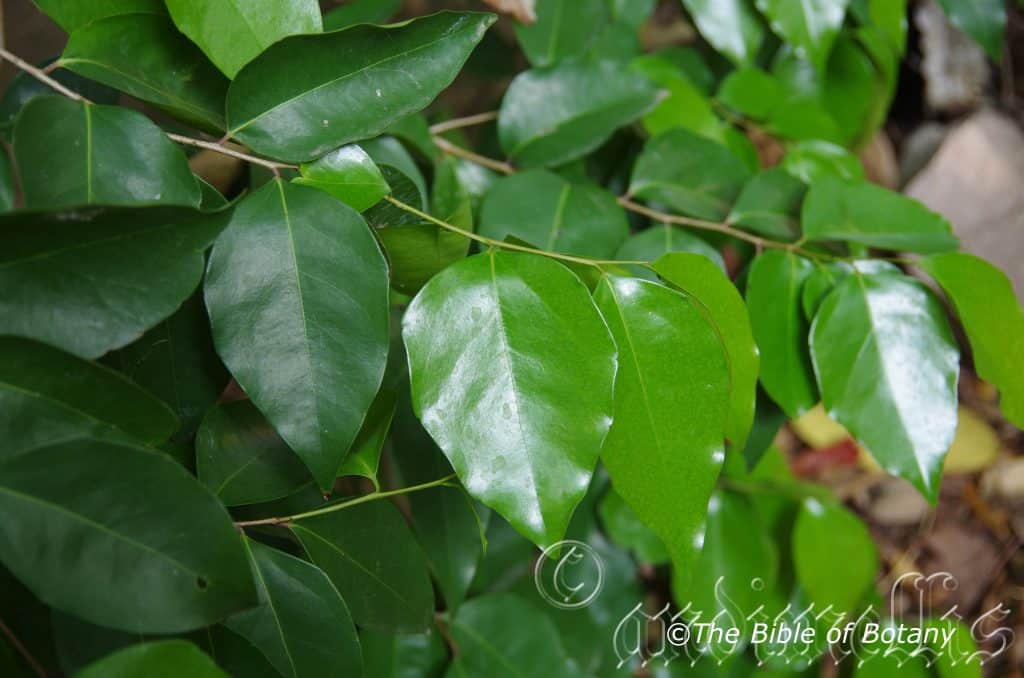
NCBG Coffs Harbour NSW
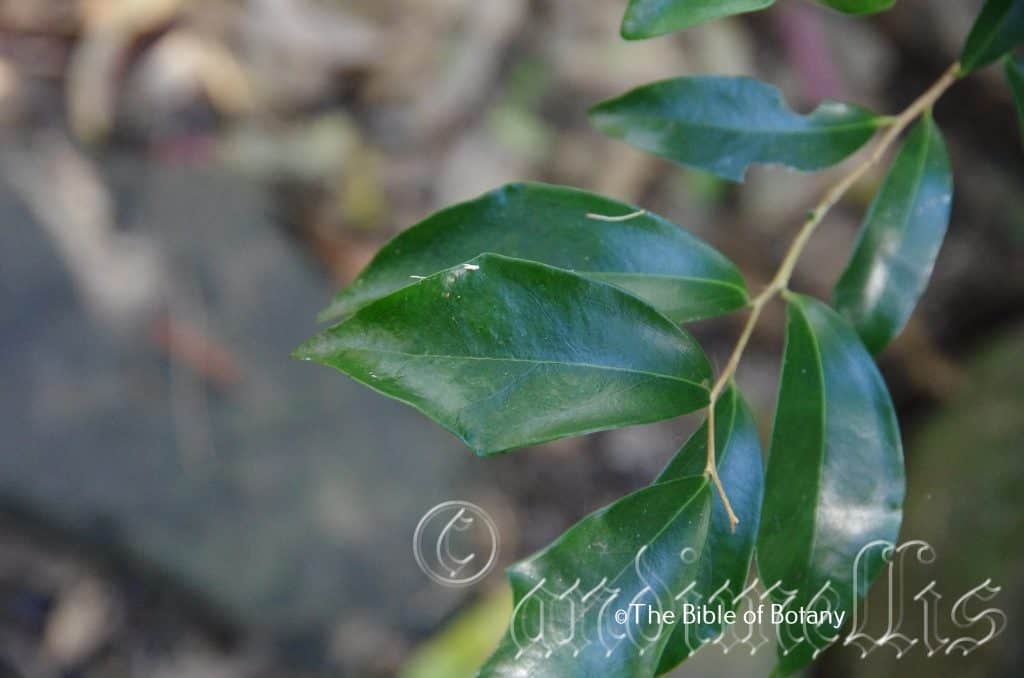
LBG Lismore NSW
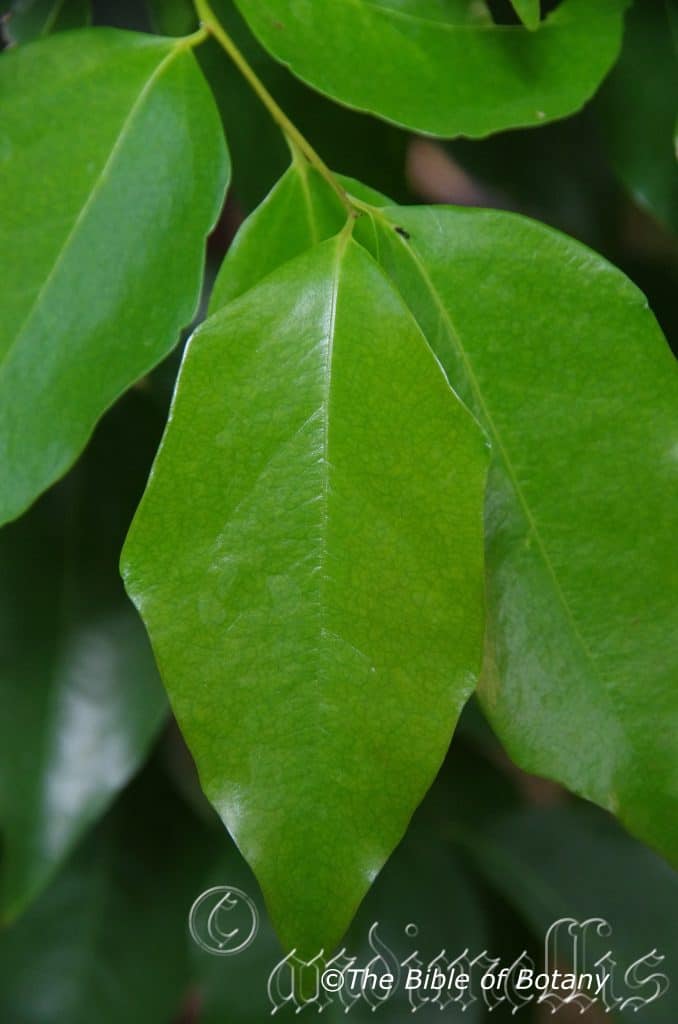
NCBG Coffs Harbour NSW
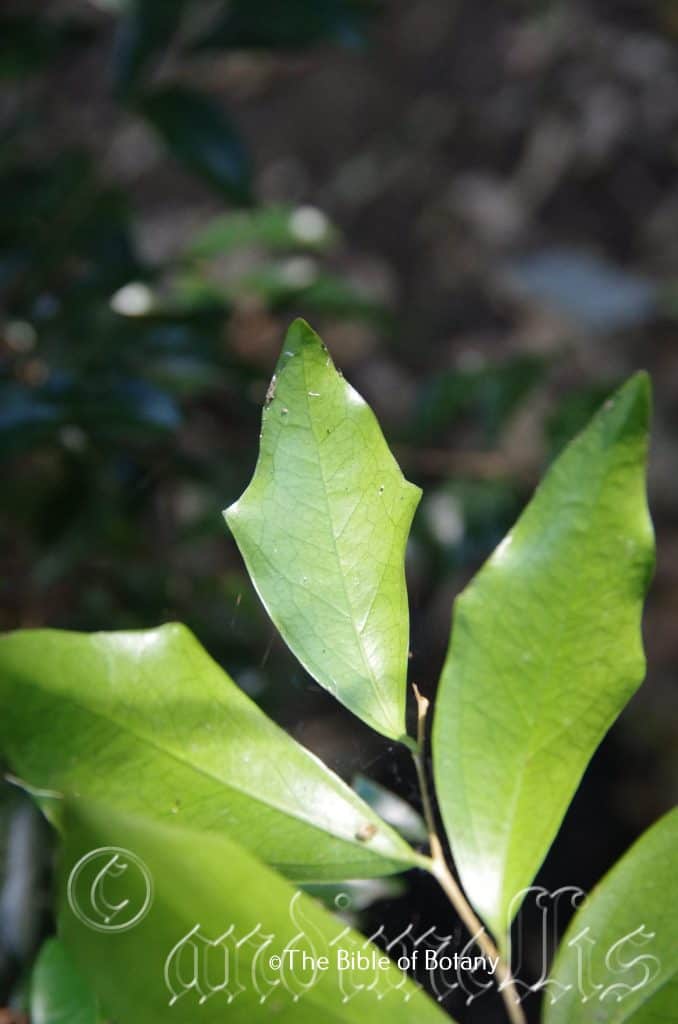
LBG Lismore NSW
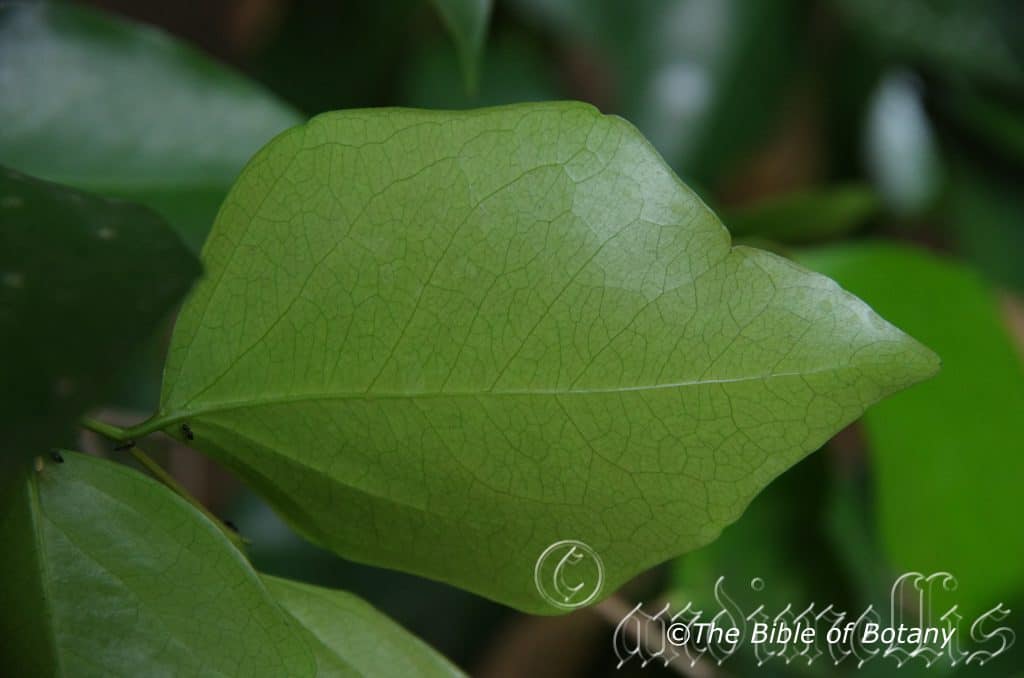
NCBG Coffs Harbour NSW
Scolopia braunii
Classification:
Unranked: Eudicots
Unranked: Rosids
Order: Malpighiales
Family: Salisaceae
Genus: From Scolopis, which is Ancient Greek for anything pointed. It refers to plants, which have sharp points or teeth on the margins of the leaves or other organs.
Specie: Is named in honour of Alexander Carl Heinrich Braun; 1805–1877 who was a Barvarian (now German) botanist who pioneered work on phyllotaxis (The position of leaves on plants) and cell morphology.
Sub specie:
Common Name: Flint Wood or Steel Wood.
Distribution:
Scolopia braunii is found from the eastern Torres Strait Islands and Cape York Peninsula in far north Queensland to Jervis Bay in New South Wales. It is found on and east of the Great Dividing Range.
https://avh.ala.org.au/occurrences/search?taxa=Scolopia+braunii#tab_mapView
Habitat Aspect Climate:
Scolopia braunii prefers partial shade to full sun. It grows in warm well developed tropical rainforests, sub-tropical rainforests dry rainforests, sclerophyll forests. The altitude ranges from 10 meters ASL to 900 meters ASL.
The temperatures range from minus 2 degrees in July to 36 degrees in January.
The rainfalls range from lows of 850mm to 3200mm average per annum.
Soil Requirements:
Scolopia braunii usually prefers better quality rocky sandy loams to gravelly clay loams. The soils are usually derived from decomposed sandstones, brown basalts, black basalts or at times granites. The soils pH ranges from 4.5pH to 6pH. It does not tolerant of waterlogged soils. Non saline soils to moderately saline soils are tolerated.
Height & Spread:
Wild Plants: 16m to 25m by 6m to 8m.
Characteristics:
Scolopia braunii grows as a tall, straight tree with pale grey, longitudinally fissured. The bark is hard while the branches are pale grey and only becoming pale green close to the apex where the newer leaf growth occurs. The branchlets are glabrous. New growth and coppice shoots often have soft caduceous spinose. The new shoots are glossy lime green or deep maroon-burgundy.
The alternate, lanceolate to rhombic or rarely elliptical leaves of Scolopia braunii measure 40mm to 90mm in length by 10mm to 40mm in width. The base is narrowly cuneate while the apex is acute with an obtuse tip. The discolourous laminas are deep grass-green, semi glossy and glabrous on the upper lamina while the lower lamina is slightly paler. The leaf margins are crenate, coarsely toothed with sharp angles especially on juvenile plants. The mid vein and 2 main laterals are prominent on the lower laminas. The petioles measure 5mm to 10mm in length.
Inflorescences of Scolopia braunii are born on small, compact racemes from the leaf axils. The racemes measure 20mm to 40mm in length. The lime green pedicels are glabrous and measure 4mm to 5mm in length. The 4 pale green, ovate calyx lobes are divaricate, glabrous and measure 1mm to 2mm in length. The 4 pale creamy green, ovate petals are divaricate and measure 1.2mm to 2.2mm in length.
The 36 filaments are free for their entire length and measure 6mm to 8mm in length. The filaments are white and very slender. The white anthers are basifixed.
The yellow style stigma and ovary are glabrous. The pistil measures 5mm to 6mm in length. Scolopia braunii’s flowers appear from early September through to late November.
The fruits of Scolopia braunii are ovoidal berries. The berries are glabrous and measure 12mm to 15mm in length by 10mm to 13mm in diameter. The green capsules first turn deep orange red then purple black when ripe externally and reddish orange internally. The calyx lobes are persistent at the base of the ripe fruit. The 3 to 5 glossy fawn seeds are ovoidal. The fruit ripen from December to April.
Wildlife:
Scolopia braunii support native bees along the coast. The fruits are eaten by the Brown Pigeon and Satin Bower Bird. It is probably eaten by most fruitigrove birds.
Reports of the fruits being edible and sweet are contradictory to my experiences around Coffs Harbour. Yes the fruits are edible but it is rather dry, insipid and slightly sour. Maybe the northern and southern fruits vary.
Cultivation:
Scolopia braunii is a magnificent small tree that should be grown in association with other rainforest specie. It is ideal at the edge of a rain forest or deep in the center of the rainforest. They also make great park trees offering dense shade and a dense canopy however growth is very slow. In cultivation they will grow from 12 meters to 15 meters in height by 6 meters to 8 meters in diameter when grown in the open or taller and narrower if grown closer together as a rainforest tree.
They grow exceptionally well on lighter soils where deep leaf litter keeps the soil cool and moisture at an even level. If these requirements are met they can cope with temperatures as low as minus 5 degrees and up to 36 degrees. It is moderately drought resistant.
Add to the above, if it is given an adequate supply of water and a little native fertilizer on a regular basis the plants should respond with good flowering and fruit over a long period.
Try using them in a court yard where the only other feature is a large rock, stump or formal or informal frog or fish pond. Next to such features their leaves, small flowers and attractive fruit are never overpowering but certainly noticed. I am surprised that they have never been used in commercial entrances and foyers to break the ice and give a feeling of business as usual but somehow make a statement of strength and success. There slow growth habit means that they can be used to great affect without needing replanting or recycling on a regular basis.
These trees make great host trees for the epiphytic orchid enthusiast.
Propagation:
Seeds: The seeds of Scolopia braunii can be removed easily from the fruits.
Sow seeds directly into a seed raising mix, keeping them moist not wet. Do not over water as the seeds will rot off before germination takes place. Place the trays in a warm shaded area with 50mm shade cloth in the bush house. The seeds are erratic in germination even from the same tree in the same season. Seeds may germinate as quickly as 3 weeks but usually take 2 to 6 months or longer to germinate.
When the seedlings are 20mm to 25mm tall, prick them out and plant them into 50mm native tubes using a good organic mix.
As the seedlings roots reach the bottom of the tubes plant them out into their permanent position. Do not delay.
Fertilize using seaweed, fish emulsion or organic chicken pellets soaked in water on an alternate basis. Fertilize every two months until the plants are established then twice annually in early September and March to maintain better colour, health, vitality and flowering.
Further Comments from Readers:
“Hi reader, it seems you use The Bible of Botany a lot. That’s great as we have great pleasure in bringing it to you! It’s a little awkward for us to ask, but our first aim is to purchase land approximately 1,600 hectares to link several parcels of N.P. into one at The Pinnacles NSW Australia, but we need your help. We’re not salespeople. We’re amateur botanists who have dedicated over 30 years to saving the environment in a practical way. We depend on donations to reach our goal. If you donate just $5, the price of your coffee this Sunday, We can help to keep the planet alive in a real way and continue to bring you regular updates and features on Australian plants all in one Botanical Bible. Any support is greatly appreciated. Thank you.”
In the spirit of reconciliation we acknowledge the Bundjalung, Gumbaynggirr and Yaegl and all aboriginal nations throughout Australia and their connections to land, sea and community. We pay our respect to their Elders past, present and future for the pleasures we have gained.
Secamone elliptica
Classification:
Unranked: Eudicots
Class: Asteids
Order: Gentianales
Family: Apocynaceae
Genus: From Skammonia, which is Ancient Greek or Scammonia which is Latin for the names given to some ancient African twinning plants. (The exact meaning of the name may have been derived from a lost African dialect for the vines and Latinized as there appears to be no reliable correlation anywhere for the name.)
Specie: From Elleiptikós, which is Ancient Greek for an elliptical or ovate shape. It refers to organs usually the leaves which have an elliptical shape.
Sub specie:
Common Name: Corky Milk Vine.
Distribution:
Secamone elliptica is found south from Napier Bay to the Broome Jetty in coastal Western Australia.
In the Northern Territory it is found north of a line east from Mount Septimus on the west coast to Elliot on the Sturt Plateau and the Robson River on the east coast in the north.
In the east it is found south from the Torres Strait Islands in far north Queensland to Deep Creek south of Casino and Iluka in northern New South Wales. It is found on the western slopes in Queensland, on and east of the Great Dividing Range to the coast.
It has a wide distribution world wide which includes Aldabra, Andaman Islands, Angola, Benin, Bismarck Archipelago, Borneo, Botswana, Burkina, Burundi, Cabinda, Cambodia, Cameroon, Cape Provinces, Central African Repu, China South-Central, China Southeast, Comoros, Congo, Ethiopia, Free State, Gabon, Gambia, Ghana, Guinea, Guinea-Bissau, Gulf of Guinea Islands, Hainan, India, Ivory Coast, Jawa, Kenya, KwaZulu-Natal, Laos, Lesser Sunda Is., Liberia, Madagascar, Malawi, Malaya, Mauritius, Mozambique, Myanmar, Namibia, New Caledonia, New Guinea, Nigeria, Papua, Philippines, Rodrigues, Rwanda, Réunion, Senegal, Seychelles, Sierra Leone, Socotra, Somalia, Sri Lanka, Sudan, Sulawesi, Sumatera, Swaziland, Taiwan, Tanzania, Thailand, Togo, Uganda, Vietnam, Zambia, Zaïre and Zimbabwe.
https://avh.ala.org.au/occurrences/search?taxa=Secamone+elliptica#tab_mapView
Habitat Aspect Climate:
Secamone elliptica prefers partial shade to full sun. It grows in warm littoral rainforests, warm dry rainforests or seasonally wet monsoonal forests. The altitude ranges from 5 meters ASL to 750 meters ASL.
The temperatures range from minus 4 degrees in July to 42 degrees in January.
The rainfalls range from lows of 850mm to 3200mm average per annum.
Soil Requirements:
Secamone elliptica prefers sands, rocky sandy loams to light fatty clays. The soils are usually derived from decomposed sandstones, granites metamorphic rocks, brown basalts, black basalts, podzolics, accumulated peaty beach sands, coral sands or alluvial deposits in and along seasonal creeks and streams. The soils pH ranges from 4.5pH to 8pH. It does not tolerate waterlogged soils. Non saline soils to moderately saline soils are tolerated.
Height & Spread:
Wild Plants: 16m to 25m by 6m to 8m.
Characteristics:
Secamone elliptica grows as a is tall glabrous climber with a thick, soft corky, fissured, deep grey bark on the older stems. The twig’s, petioles and leaves produce an opaque to milky latex. The small stems are mid bluish-green, glabrous with several small reddish glands visible on the twigs close to the point of attachment with the petioles.
The opposite, narrow lanceolate to ovate leaves measure 20mm to 55mm in length by 8mm to 28mm in width. The petioles measure 1mm to 9mm in length. The bases are rounded to broad cuneate while the apex is acute to acuminate. The discolourous laminas are deep green, dull to semi glossy and glabrous on the upper lamina while the lower laminas are much paler to pale bluish-green. The leaves are thin, soft to firm and hang vertically down. The laminas recurve gently to strongly upwards from the mid vein to the margins while the margins are entire and undulate. The mid vein and laterals are slightly prominent on both laminas.
The inflorescences of Secamone elliptica are branched cymes born from the leaf axils. The cymes measure 20mm to 35mm in length. The deep green peduncle, rachis and pedicels are glabrous. The peduncle measures 3mm to 6mm in length while the rachis measures 8mm to 20mm in length and the pedicels measure 1mm to 2mm in length.
The 5 pale green, triangular calyx lobes are glabrous and measure 1.1mm to 1.25mm in length. The creamy green, yellowish-green to yellow corolla tube measures 2.5mm to 3mm in length. The 5 pale creamy green, yellowish-green to yellow, oblong petals are divaricate with an acuminate apex. The petals measure 2mm to 3mm in length by 1mm in width.
The 5 broad filaments are fused together to form a corona and column. The anthers measure 1mm in length by 0.75mm in width. The pollinia are two per locule.
The mid lime-green, spherical stigma measures 0.6mm in diameter. The flowers appear from mid-September through to early February.
Secamone elliptica fruits are paired, lanceolate to fusiform follicles are flattened on one side. Each follicle is glabrous and measure 35mm to 70mm in length by 5mm to 9mm in diameter. The green follicles first turn deep orange red then purple black when ripe externally and reddish orange internally. The calyx lobes are persistent at the base of the ripe fruit. The 3 to 5 glossy fawn seeds are ovoidal. The numerous seeds are flat 6mm to 7.5mm in length by 1.6mm to 2mm in width. The plume measures 25mm to 30mm in length and is attached to one end of the seed.
Wildlife:
Secamone elliptica is the host plant for the Australian Crow butterfly, Euploea core and the Blue Tiger Butterfly, Tirumala limniace.
Cultivation:
Secamone elliptica is a beautiful liana that can be grown in association with other rainforest trees. It is ideal at the edge of a rain forest or deep in the center of the rainforest. It also makes great park trees offering dense shade and a dense canopy however growth is very slow. In cultivation it grows from 12 meters to 15 meters in height by 6 meters to 8 meters in width when grown in the open or taller and narrower if grown closer together as a rainforest liana.
It grows exceptionally well on lighter soils where deep leaf litter keeps the soil cool and moisture at an even level. If these requirements are met they can cope with temperatures as low as minus 2 degrees and up to 40 degrees. It is moderately drought resistant.
Add to the above, if it is given an adequate supply of water and a little native fertilizer on a regular basis the plants should respond with good flowering and fruit over a long period.
Propagation:
Seeds: The seeds can be removed easily from the mature follicles.
Sow the seeds directly into a seed raising mix covering them with 2mm to 5mm of the mix. Keep the seeds moist not wet as the seeds will rot off before germination takes place. Place the trays in a warm shaded area with 30mm shade cloth in the bush house. The seeds are erratic in germination even from the same vine in the same season. Seeds may germinate as quickly as 3 weeks but usually take 2 to 6 months to germinate.
When the seedlings are 20mm to 25mm tall, prick them out and plant them into 50mm native tubes using a good organic mix.
As the seedlings roots reach the bottom of the tubes plant them out into their permanent position. Do not delay.
Fertilize using seaweed, fish emulsion or organic chicken pellets soaked in water on an alternate basis. Fertilize every two months until the plants are established then twice annually in early September and March to maintain better colour, health, vitality and flowering.
Further Comments from Readers:
“Hi reader, it seems you use The Bible of Botany a lot. That’s great as we have great pleasure in bringing it to you! It’s a little awkward for us to ask, but our first aim is to purchase land approximately 1,600 hectares to link several parcels of N.P. into one at The Pinnacles NSW Australia, but we need your help. We’re not salespeople. We’re amateur botanists who have dedicated over 30 years to saving the environment in a practical way. We depend on donations to reach our goal. If you donate just $5, the price of your coffee this Sunday, We can help to keep the planet alive in a real way and continue to bring you regular updates and features on Australian plants all in one Botanical Bible. Any support is greatly appreciated. Thank you.”
In the spirit of reconciliation we acknowledge the Bundjalung, Gumbaynggirr and Yaegl and all aboriginal nations throughout Australia and their connections to land, sea and community. We pay our respect to their Elders past, present and future for the pleasures we have gained.
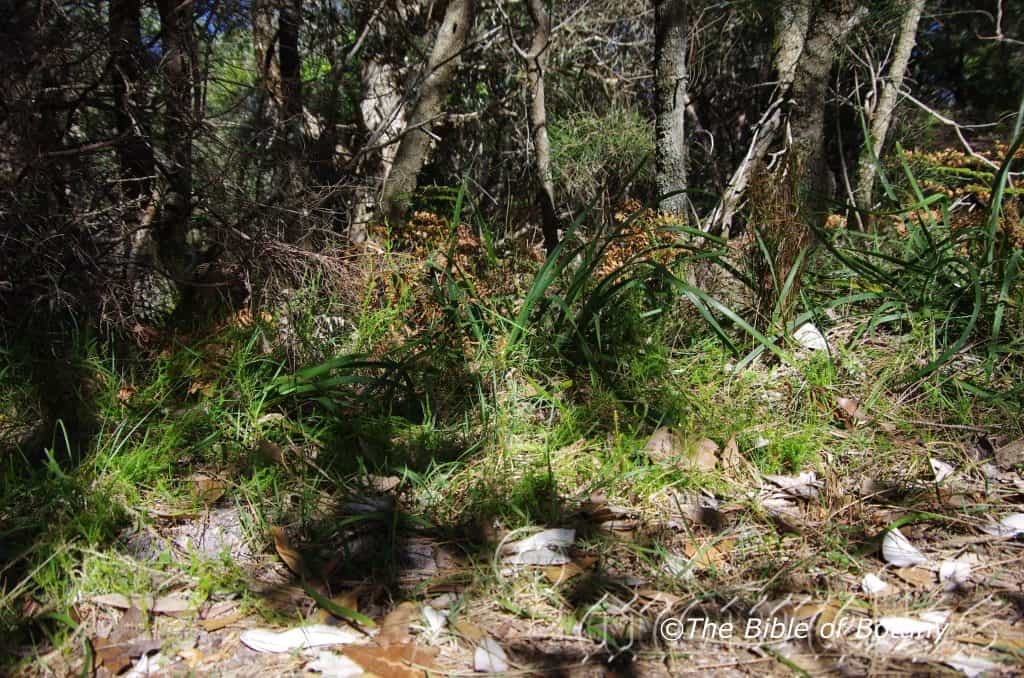
Yuraygir National Park NSW
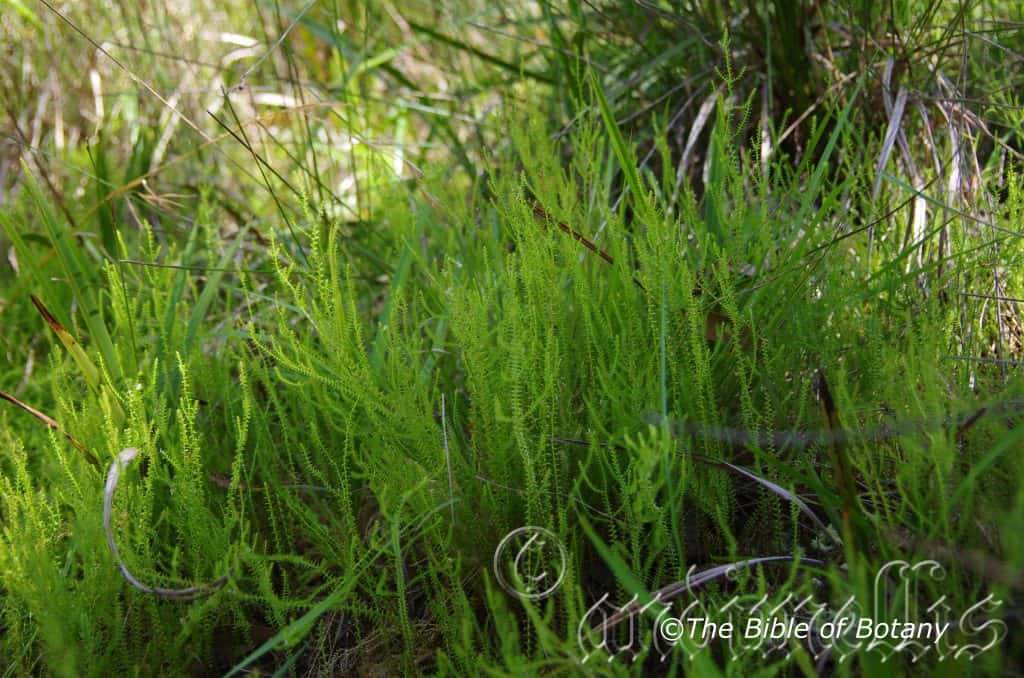
Yuraygir National Park NSW
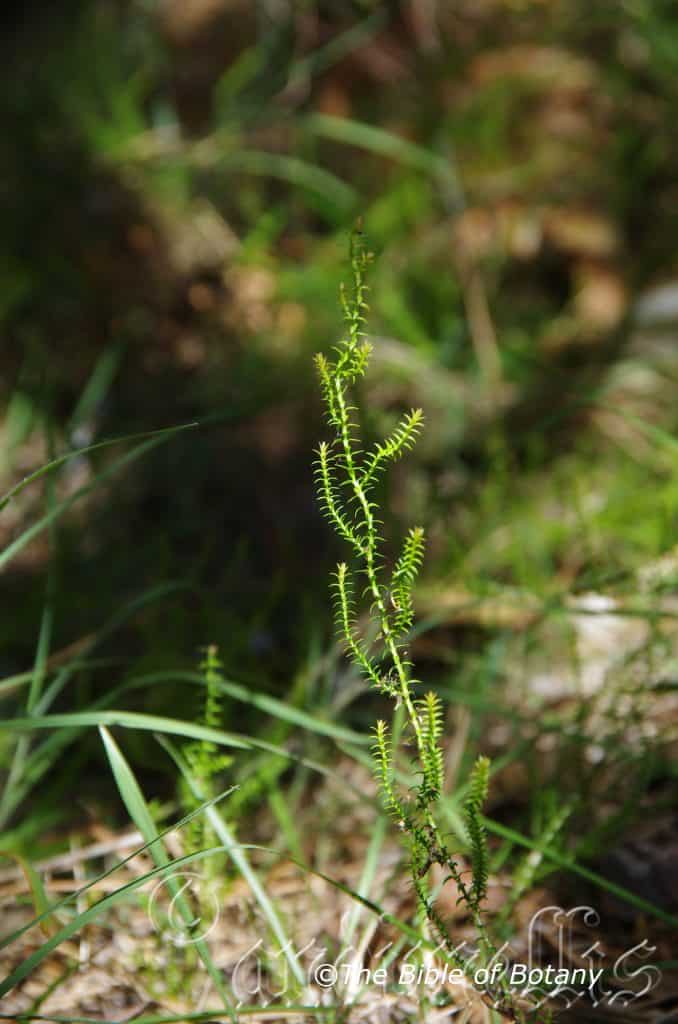
Yuraygir National Park NSW
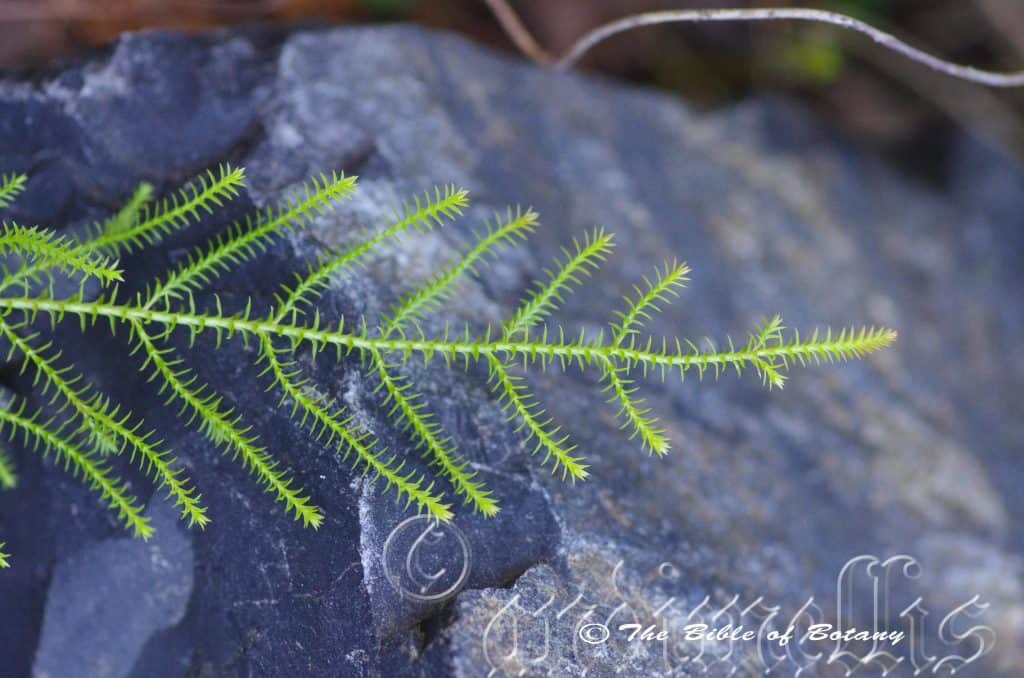
Cathedral Rocks National Park Ebor NSW
Selaginella uliginosa
Classification:
Unranked: Lycophytes
Class: Lycopodiidae
Order: Selaginellales
Family: Selaginellaceae
Genus: From Selago, which is Latin for one of the clubmosses, Lycopodium selago and Ella, which is Latin for feminine. It refers to plants, which have the appearance of a small dainty clubmoss.
Specie: From Ulignosus, which is Latin for to grow in wet habitats. It refers to plants, which prefer to grow in wet habitats like wallums or swampy places.
Sub specie:
Common Name: Swamp Selaginella.
Distribution:
Selaginella uliginosa is found in 4 isolated populations throughout mainland Australia and Tasmania. In the Northern Territory it is found between Melville Bathurst Island, Humptydoo, along the Oenpelli road to Oenpelli and Point Danger on Coburg Peninsula.
In the east it is found between Coen and the Hann River on Cape York Peninsula and south from Miriam Vale in central eastern Queensland to the southern tip of Tasmania including the off shore islands and the islands of the Bass Strait. It is found as far west as Picaninny Mountain in the Glenelg National Park in far western Victoria.
https://avh.ala.org.au/occurrences/search?taxa=Selaginella+uliginosa#tab_mapView
Habitat Aspect Climate:
Selaginella uliginosa prefers partial shade to full sunlight. It grows in wet situations in shallow depressions, drainage lines in moist woodlands, moist open forests or moist heaths especially in coastal wallums. The altitude ranges from 10 meters ASL to 650 meters ASL.
The temperatures range from minus 3 degrees in August to 39 degrees in January.
Rainfalls range from lows of 500mm to 3200mm average per annum though ground water retention is more important than the actual local rainfall.
Soil Requirements:
Selaginella uliginosa prefers poor quality sands to sandy loams or light silts. The soils are usually derived from decomposed fine to coarse sandstones with or without gravel, fine to coarse granitic sands with or without gravel or accumulated peaty beach sands. The soils pH ranges from 4.5pH to 7pH. It tolerates waterlogged soils often growing in shallow water for short periods or where the soils remain moist through capillary action in soils that experience seasonal high water tables for extended periods. Non saline soils to slightly saline soils are tolerated.
Height & Spread:
Wild Plants: 0.05m to 0.08m by 0.2m to 0.4m.
Characteristics:
Selaginella uliginosa grows as a perennial plant with long, white, wiry many branched subterranean rhizomes. The stems are erect with simple, rigid lateral branches. The stems are mid grass-green, yellow-green orange-green, orange to orange-brown and glabrous. They measure 50mm to 380mm in height.
The decussate, lanceolate to ovate, shortly pointed leaves of Selaginella uliginosaare crowded into 4 rows. The leaves measure 1.5mm to 3mm in length by 1mm to 3mm in width. The bases are sessile while the apexes are acute. The concolourous laminas are mid grass-green, yellow-green orange-green, orange to orange-brown and glabrous. The laminas are flat on the upper surface and keeled on the lower surface. The margins are entire.
The sporophylls are very similar to the leaves. It is aggregated into strobilus at the ends of branches and measure 5mm to 25mm in length. The mega sporangia are confined to the bases.
Wildlife:
Selaginella uliginosa’s wildlife is unknown to the author.
Cultivation:
Selaginella uliginosa is relatively easy to grow once established but is fussy on its requirements. It is a small, compact, erect club moss for small to large gardens. In the garden it does best in open sandy loams that are continuously moist, have high water tables in full sun sheltered by moist heath plants.
Selaginella uliginosa can be grown for its ornamental foliage outdoors in favourable climates or in the bush house where it is protected from drying winds and hot sun shine. In areas away from the cool tropics or subtropics, successful culture requires a high humid microclimate.
The environments found in many shade houses or terrariums are usually ideal. Most Selaginella specie are shade loving plants or favour filtered sunlight however Selaginella uliginosa can withstand full sun if all the other conditions are right. In full sun it displays its beautiful orange tones and provides us with a truly remarkable little fern like plant with plenty of character.
It makes an excellent potted plant in the bush house or patio provided it never dries out. In terrariums it often remains quite small growing from just 50mm to 100mm in height.
Provide protection from drying winds. Evening temperatures should not fall below zero or burning will occur with possible permanent damage to the rooting rhizomes.
Propagation:
Seeds: Selaginella uliginosa can be propagated by spores or cuttings. To grow new plants from the prothallus or spores as the first step in production is good for large numbers but is slow and more cumbersome. Division or layering is the best and quickest method for the home gardener who usually only wants a few plants.
Cuttings are the best means and easiest method for propagating new plants and it does well in the greenhouse. It is a matter of cutting all the fronds off back to just above the rhizome. Scatter the fronds over the soil of a propagating bench tray and partially cover them with the mix. Water thoroughly and cover the tray with glass or plastic. Try to maintain a minimum temperature of 20 degrees centigrade until the roots form.
Most people are put off at the thought of growing Selaginella species from spore. Like all plants that produce their offspring from seed or spore the methods are basically the same. Remember nature has been doing this for millions of years and has been very successful.
Step 1. Select spore from the plants leaves. Wait until the fern is just starting to release its spore. Rinse the fronds under clean running water and dry. This is to wash off any other spores from rogue ferns that may have settled onto the fronds. (There is nothing worse than having common brake or common soft bracken contaminating a prized tree fern or epiphyte.)
Step 2. Place the dry fronds in a clean brown paper bag and keep them in a cool dark place like the linen closet for about a week to ten days before you are ready to sow the spore. The exception to this rule applies to ferns, which produce green spores. These must be sown immediately that they are released. Todea Barbara is a good example of a fern, which produces green spore.
Step 3. Take a large ice cream container, a small ice cream container and a clean clear plastic bag large enough to seal the large ice cream container and three or four milk bottle tops.
Step 4. Punch or drill 6 to 10 5mm holes in the bottom of the small ice cream container.
Step 5. Wash both containers, tops and plastic bag so that they are very clean and sterile.
Step 6. Use a clean fine seed raising mi. We used 30mm fine sand, 30mm peat and 30mm perlite and 10mm vermiculite. We used crushed basalt, crusher dust and peat in a 50:50 ratio for epiphytes. Moisten the mix enough that water does not run out when the mix is squeezed between the fingers.
Step 7. Place the moisten mix (Enough to half fill the small ice cream container) in the microwave oven with a large glass of water for 7 or 8 minutes, until the water is boiling. Allow them to cool in the oven. You will need the water later so do not tip it out.
Step 8. Take the brown paper bag out of the linen closet. Shake the bag and remove the fronds. You should have a yellow, brown, black or rarely greenish brown or ochre powder or very fine, small round pin head size spore depending on the specie involved.
Step 9. Remove the mixture from the oven once it has cooled and place it in the small ice cream container and level.
Step 10. Sprinkle the spore sparsely over the mixture in the small ice cream container.
Step 11. Place the milk bottle tops in the large ice cream container with the flat surface facing down. Place the small ice cream container in the large ice cream container so that it is sitting on the milk bottle tops.
Step 12. Remove the water from the microwave and pour it into the larger ice cream container so there is 25mm to 30mm of water in the bottom.
Step 13. Place the ice cream containers in the plastic bag and seal. Step 14. Place the contents and bag in a warm shady place preferably 50mm to 70mm shade depending on the specie. Shade houses and some window sills are ideal.
Step 15. The surface should turn green within a week to two weeks. The prothallus will then develop. From the prthalus the first true fronds will appear. Wait until the ferns are 20mm to 35mm in height before you attempt to transplant them. Once they are ready open the bag up slightly and allow the air to flow around the little ferns. Every 3 to 5 days open the bag a little further so the ferns get use to their new environment. Allow them a week to two weeks to harden off before you transplant them following the removal of the plastic bag. Carefully prick them out into 50mm standard squat tubes as you would any seedling.
Do not try to transplant them as single plants as they are still a little delicate still.
Once the smaller ones again reach 50mm to 70mm you may wish to divide the stronger and hardier individual plants into smaller clumps in 100mm squat pots.
Step 16. We fertilized with seaweed, fish emulsion or organic chicken pellets soaked in water on an alternate basis until established. Fertilize every two months for one year even when in the ground.
Division: Selaginella uliginosa is most often propagated by dividing mature clumps and replanting the divisions. First select a healthy plant. Secondly it is best to divide plants just prior to the onset of new growth in early spring. Prior to removing the plant from the pot or ground plants should be given a deep watering a few days before removal, then again about 2 hours before removing them from the ground. It is best to soak potted plants in water for a couple of hours prior to removing the plant from the pot.
Divide the clumps so that there are several leaves and healthy rhizomes with roots on each division. This is best done using a sharp knife.
Remove any unwanted or dead material.
Do not remove the soil from around the roots. Replant the divided section into the new container to the same depth.
Water thoroughly but do not fertilize. Place the containers beneath 30mm shade cloth and keep moist. After a fortnight or after the signs of new roots or shoots fertilize with our recommended fertilizer and repeat after about a month.
Once the plants have re-established themselves plant out and fertilize as before.
Fertilize using seaweed, fish emulsion or organic chicken pellets soaked in water on an alternate basis. Fertilize every two months until the plants are established then twice annually in early September and March to maintain better colour, health, vitality and flowering.
Further Comments from Readers:
“Hi reader, it seems you use The Bible of Botany a lot. That’s great as we have great pleasure in bringing it to you! It’s a little awkward for us to ask, but our first aim is to purchase land approximately 1,600 hectares to link several parcels of N.P. into one at The Pinnacles NSW Australia, but we need your help. We’re not salespeople. We’re amateur botanists who have dedicated over 30 years to saving the environment in a practical way. We depend on donations to reach our goal. If you donate just $5, the price of your coffee this Sunday, We can help to keep the planet alive in a real way and continue to bring you regular updates and features on Australian plants all in one Botanical Bible. Any support is greatly appreciated. Thank you.”
In the spirit of reconciliation we acknowledge the Bundjalung, Gumbaynggirr and Yaegl and all aboriginal nations throughout Australia and their connections to land, sea and community. We pay our respect to their Elders past, present and future for the pleasures we have gained.
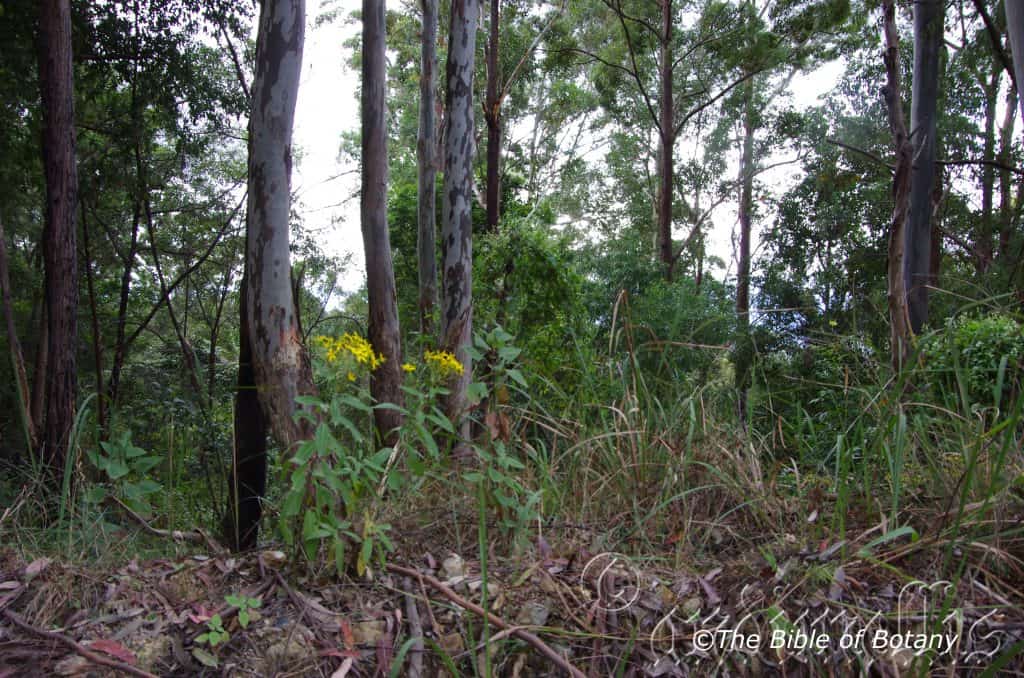
Nana Glen to Lowana NSW
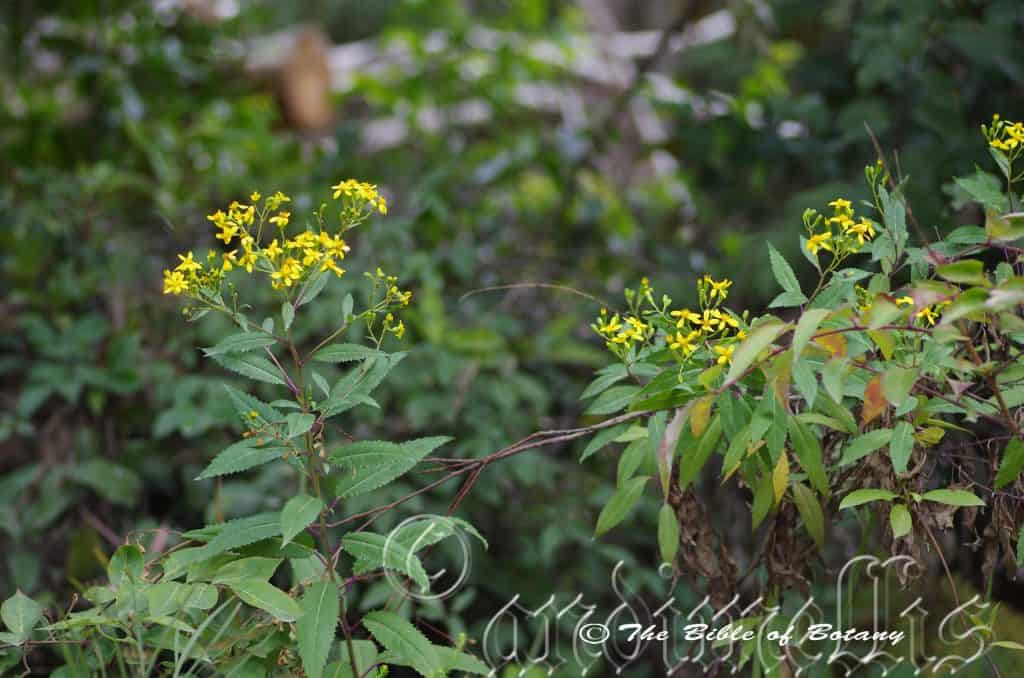
Nana Glen to Lowana NSW
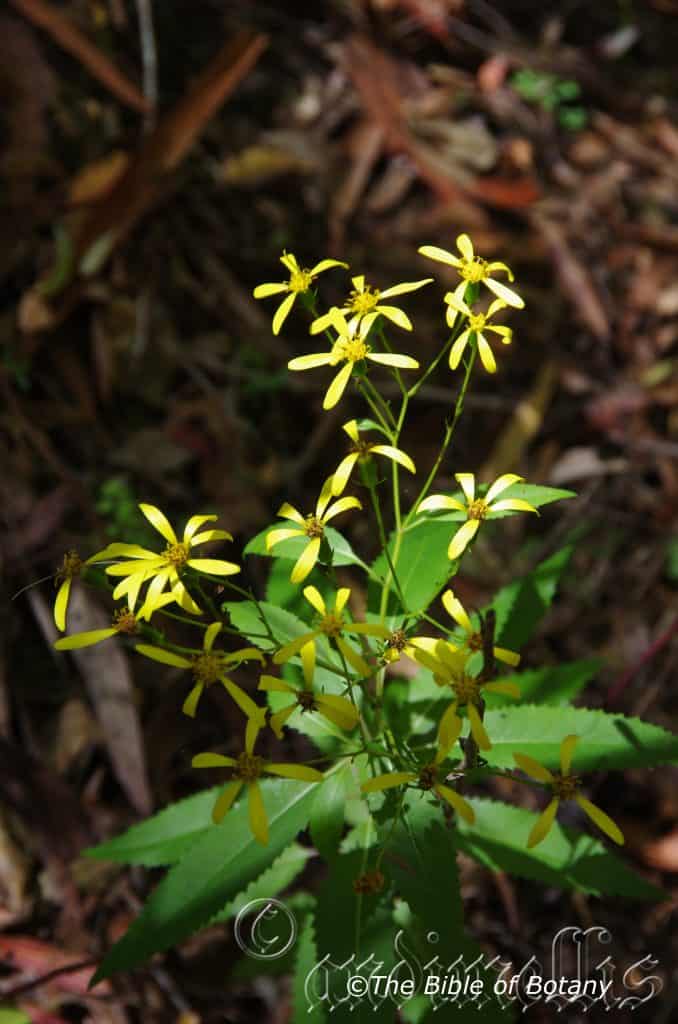
Pillar Valley NSW
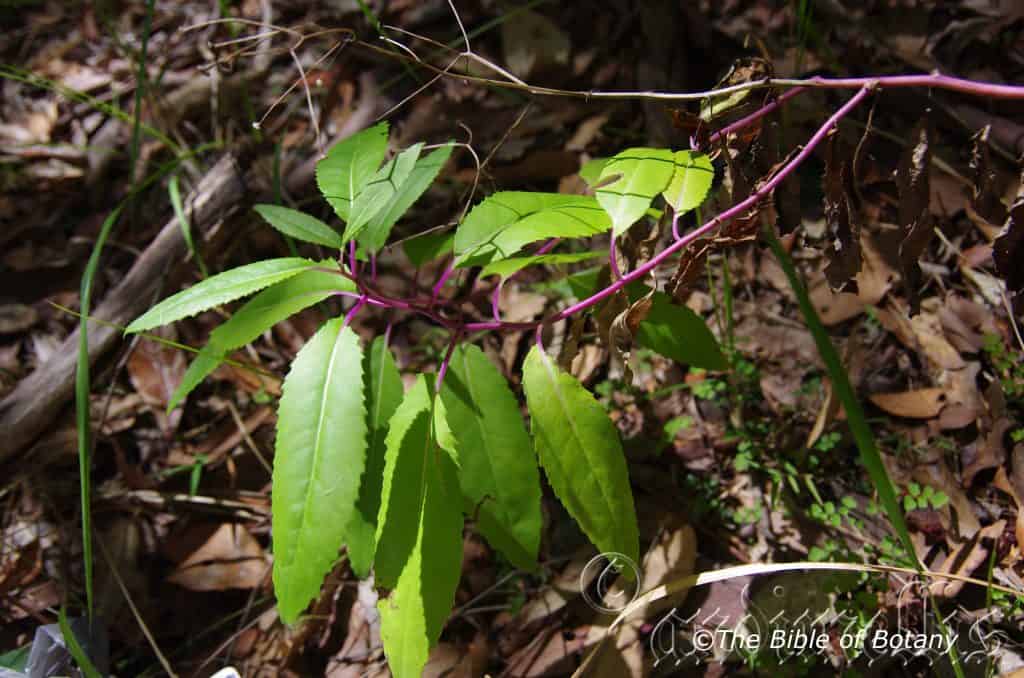
Pillar Valley NSW
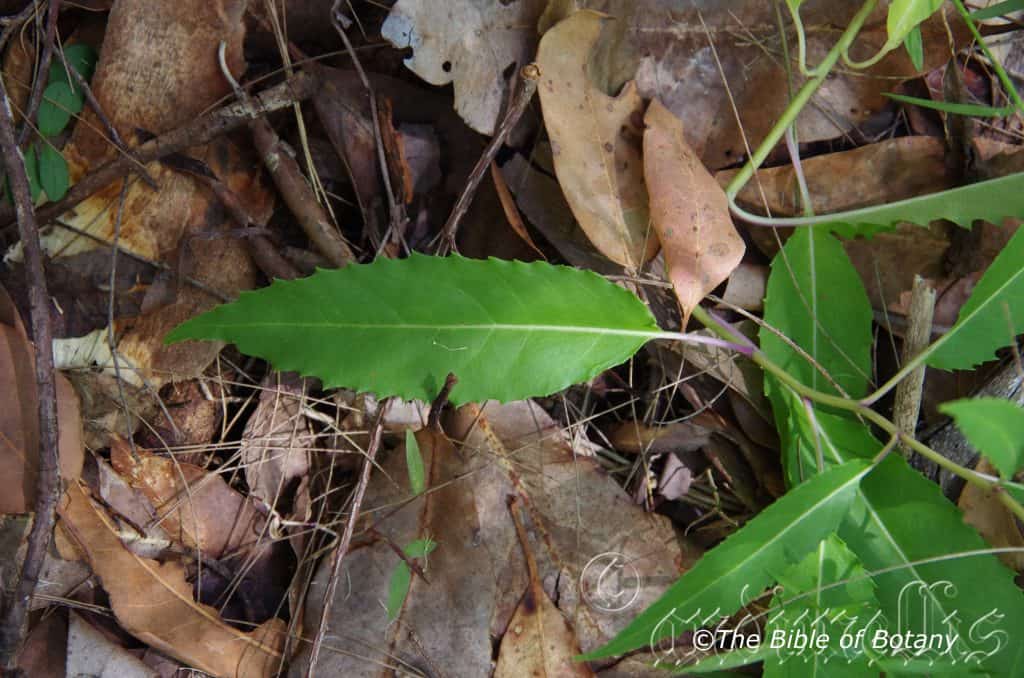
Pillar Valley NSW
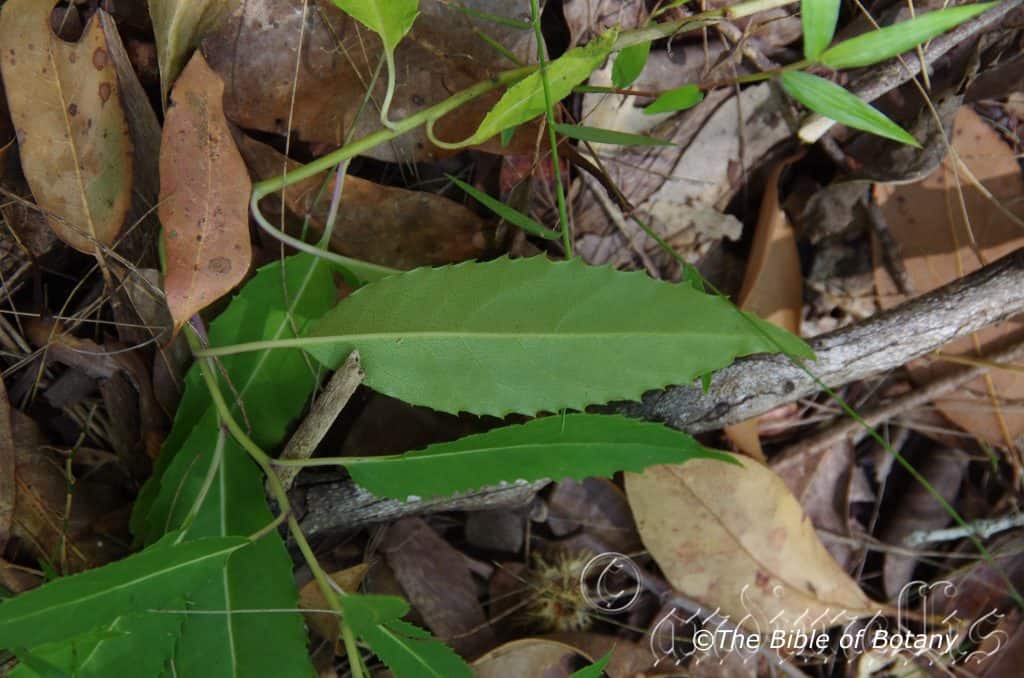
Pillar Valley NSW
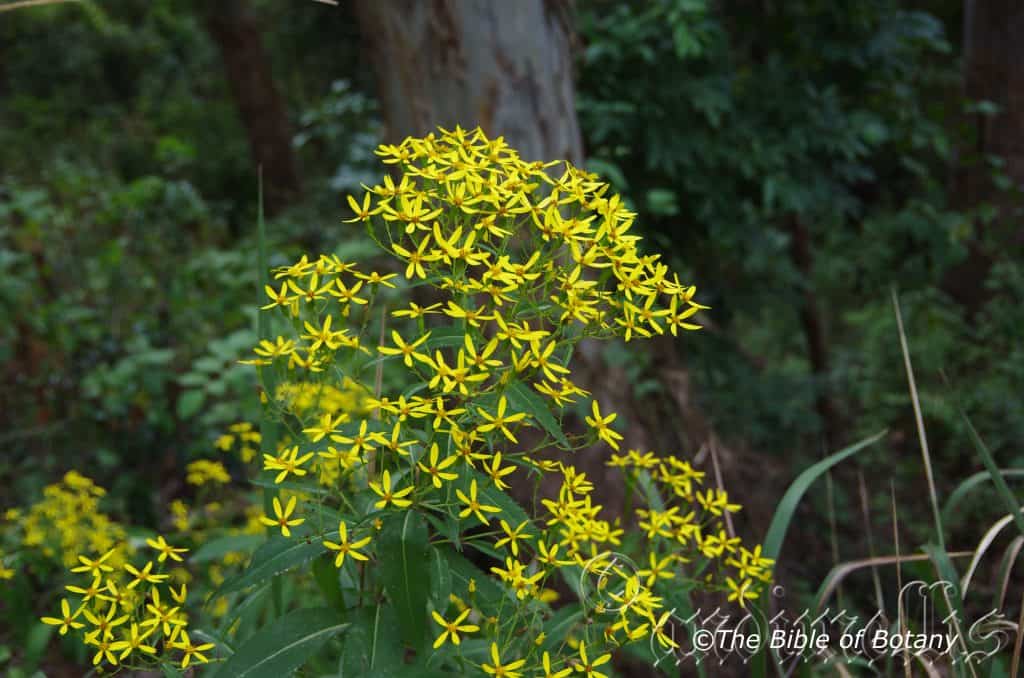
Nana Glen to Lowana NSW
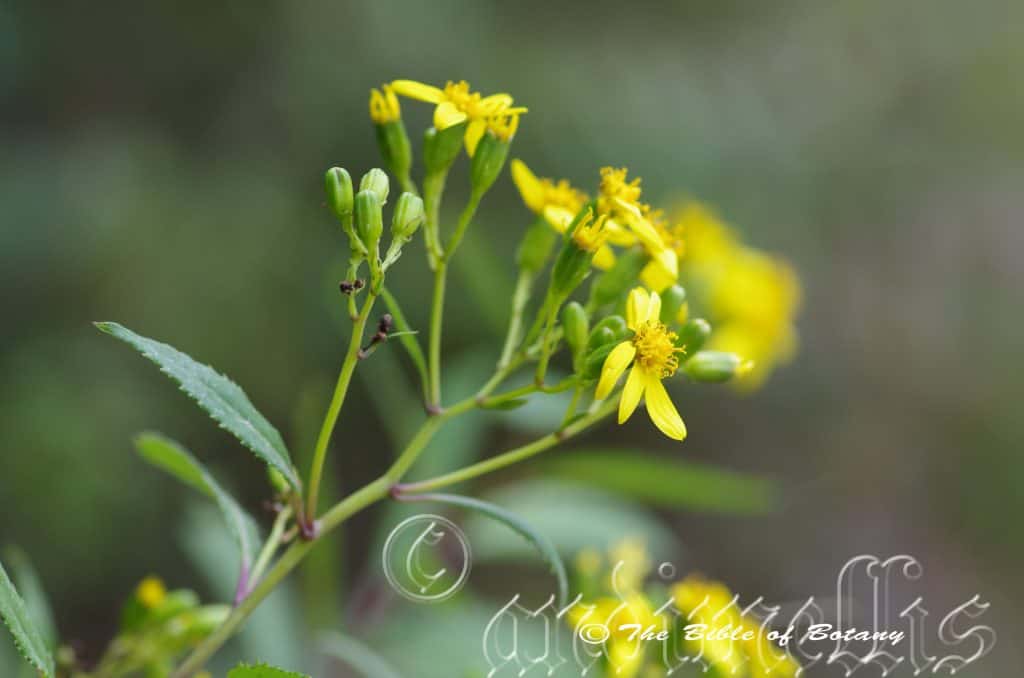
Nana Glen to Lowana NSW
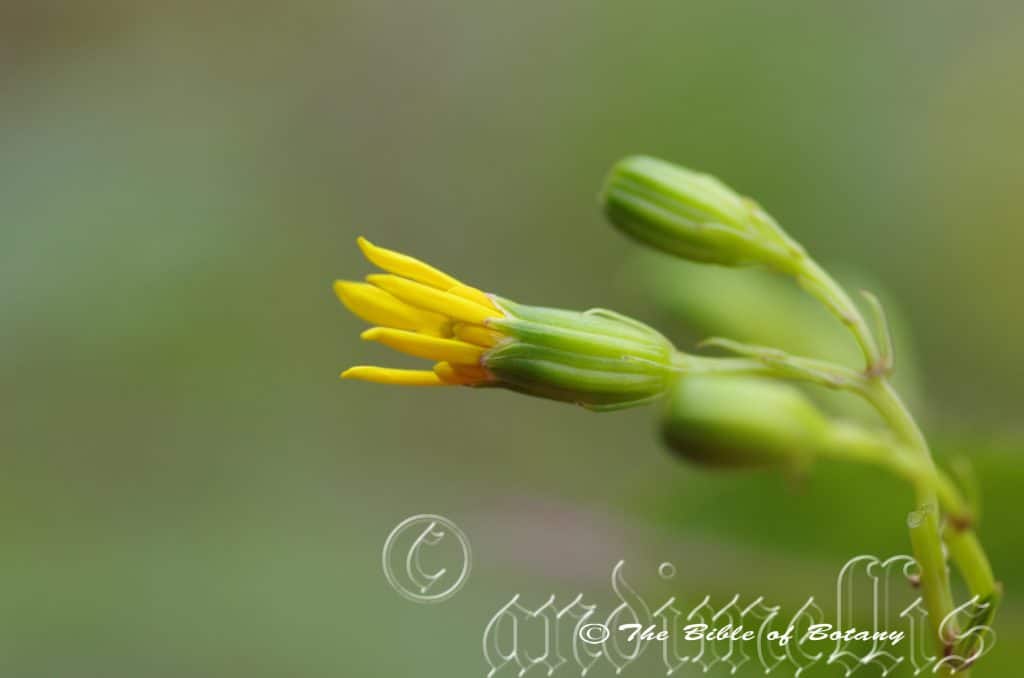
Nana Glen to Lowana NSW
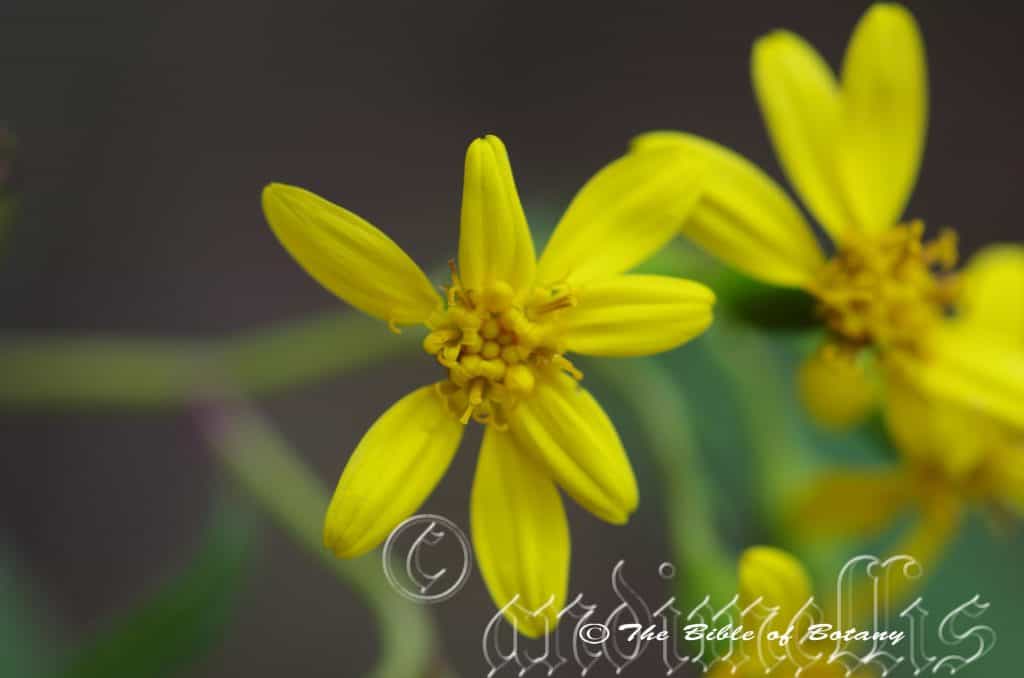
Nana Glen to Lowana NSW
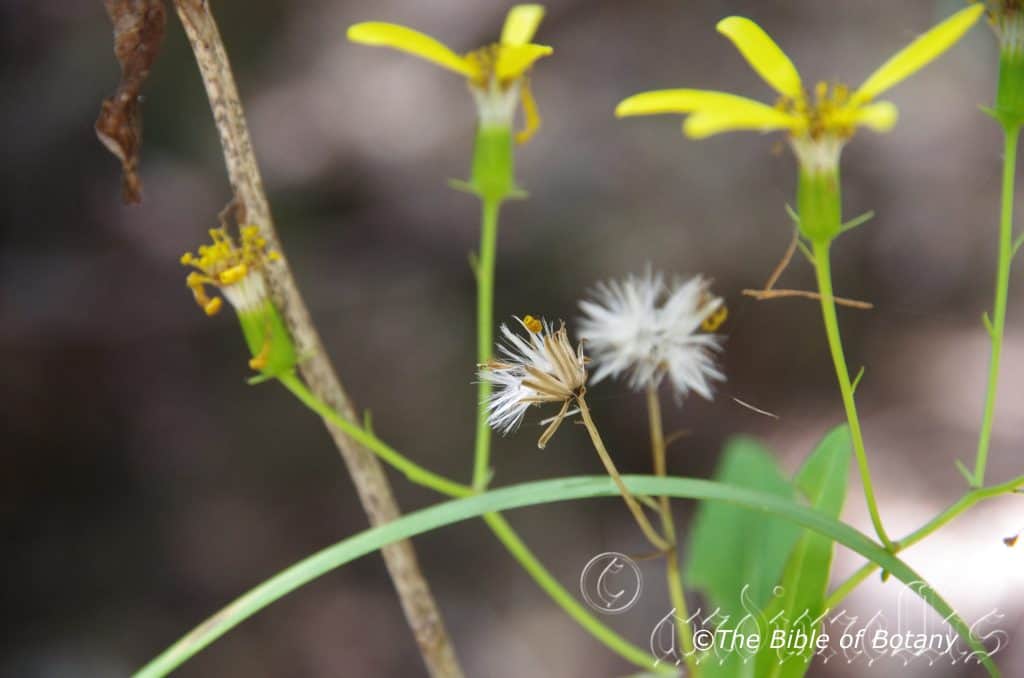
Nana Glen to Lowana NSW
Senecio amygdalifolius
Classification:
Unranked: Eudicots
Class: Asterids
Order: Asterales
Family: Asteraceae
Subfamily: Asteroideae
Supertribe: Seneciondae
Tribe: Senecioneae
Subtribe: Senecioninae
Genus: From Senescere/Senex, which is Ancient Greek for an old man. It refers to seeds which are covered in pale grey or white hairs like an old man’s beard.
Specie: From Amygdale, which is Ancient Greek or Amygdal which is Latin for an almond and Folium, which is Latin for foliage. It refers to the leaves, which are looking similar to those of the almond tree.
Sub specie:
Common Name: Almond Leaf Senecio.
Distribution:
Senecio amygdalifolius is found south from Gladstone in southern coastal Queensland to Gosford in New South Wales in the South. It is found on and east of the Great Dividing Range to the coast.
https://avh.ala.org.au/occurrences/search?taxa=Senecio+amygdalifolius#tab_mapView
Habitat Aspect Climate:
Senecio amygdalifolius prefers partial shade to full sun. It grows in openings or along creeks and rivers in warm well developed sub-tropical rainforests, tropical rainforests as well as moist gallery forests and moist Eucalyptus forests on the eastern side of the Great Dividing Range. The altitude ranges from 1 meter ASL to 550 meters ASL.
The temperatures range from minus 2 degrees in July to 36 degrees in January.
The rainfalls range from lows of 850mm to 3200mm average per annum.
Soil Requirements:
Senecio amygdalifolius prefers rocky sandy loams to clay loams. The soils are usually derived from decomposed sandstones, brown basalts, black basalts, shale, metamorphic rocks or granites. The soils pH ranges from 4.5pH to 6pH. It does not tolerate waterlogged soils. Non saline soils to moderately saline soils are tolerated.
Height & Spread:
Wild Plants: 0.6m to 1.5m by 0.6m to 0.8m.
Characteristics:
Senecio amygdalifolius grows as a perennial with straight, mid green, angulated stems. The stems have 4 narrow wings which measure 0.4mm to 0.5mm in length. The stems are glabrous.
The alternate, narrow ovate to elliptical leaves of Senecio amygdalifolius measure 50mm to 120mm in length by 10mm to 30mm in width. The bases are rounded usually asymmetrical or at times symmetrical while the apexes are acute to acuminate. The concolourous laminas are mid green, dull to semi glossy and glabrous. The laminas are flat, slightly raised between the lateral veins and decurve slightly near the apex. The mid vein is purplish-pink, strongly prominent on the lower laminas while the lateral veins and reticulate venation are flat to slightly raised on the lower laminas. The purplish-pink to purple, terete petioles measure 5mm to 20mm in length.
The inflorescences of Senecio amygdalifolius are simple corymbs born from the leaf axils. The mid green pedicels are glabrous and measure 10mm to 22mm in length.
The 12 to 14 involucral bracts measure 8mm to 10mm in length by 9mm to 11mm.The 4 to 8 ray florets are divaricate and bright yellow, glabrous and measure 10mm to 13mm in length by 3mm to 4mm in width.
The 12 to 14 individual florets are narrow campanulate and glabrous.
The lobes measure 2mm to 3.5mm in length. The 6 to 8, linear bracteoles measure 7mm to 9mm in length. Senecio amygdalifolius’s flowers appear from early September through to early December.
The fruits of Senecio amygdalifolius are long linear achenes. The achenes are glabrous and measure 4mm to 6mm in length by 1mm to 1.2mm in diameter. The pale pink to pale fawn pink pappus measure 8mm to 10mm in length.
Confusing Specie:
The exotic fire weed Senecio madagascariensis has given our native species a bad name and often causes confusion. It is normally found on derogated land especially cattle properties where the pH decrease to an extent where most plants cannot compete. It grows from 200mm to 600mm in height. Leaves narrow elliptical to narrow lanceolate and slightly decurve towards the margins. Floral bracts number 19 to 21.Floral Rays decurve not divaricate. Seeds 2.5mm long with 6.5mm pappus.
We had some terrible arguments with our local authority for 5 years who wanted us to blanket cover the property at Nana Glen with poisonous chemicals for this weed and Parramatta grass. We refused and continued to carry out good organic farming practices on the property. After 5 years the weeds completely disappeared without one drop of chemical being sprayed.
Wildlife:
Senecio amygdalifolius support native bees and numerous native flies and small butterflies that collect the pollen.
Cultivation:
Senecio amygdalifolius is a magnificent medium perennial herb that should be grown in both small and large rockeries. In cultivation it will grow from 1 meter to 1.5 meters in height by 0.8 meters to 1 meter in diameter when grown in the open.
It grows well on all soils where deep leaf litter keeps the soil cool and moisture at an even level. If these requirements are met, it can cope with temperatures as low as minus 3 degrees and up to 36 degrees. It is moderately drought resistant once established.
Add to the above, if it is given an adequate supply of water and a little native fertilizer on a regular basis the plants will respond with good flowering over a long period.
Senecio amygdalifolius would make outstanding contribution to a moist heath garden. Here it can be used as the taller growing plant scattered throughout the heath scene or tip pruned for a lower more spreading small shrub. When you design a flat heath garden in which Senecio amygdalifolius is well suited don’t use contours to display the plants as heath lands are almost always flat or have a slight rise. Plants must be planted close enough to touch each other at maturity and be short so you can see over the tallest ones with the exception of one or two plants at the most. These will be feature plants. The idea is to achieve a feeling of expansive flatness. This can be achieved with using Senecio amygdalifolius’s bright green linear leaves and having them contrasting with finer pale green or soft grey to glaucous coloured foliages. Use a lot of plants like Verticordia specie which have pink or red flowers as the yellow flowers of this Senecio are very strong. Mix them with other smaller shrubs so none of them dominate the scene but blend in to give a mosaic of foliage colours that you oversee. Here I immediately think of Actinotis helianthi or Grevillea thelemanniana for two great contrasting foliages.
Propagation:
Seeds: The seeds of Senecio amygdalifolius can be removed easily from the flower heads as the first seeds begin to disperse.
The seeds are best sown after scarification. Place the seeds in a small calico bag and place them in the vegetable crisper for 12 to 14 days. Do not freeze the seeds.
Sow treated seeds directly into a seed raising mix, keeping them moist not wet. Do not over water as the seeds will rot off before germination takes place. Place the trays in a warm shaded area with no more than 50mm shade cloth in the bush house. When the seedlings are 20 to 25 mm tall, prick them out and plant them into 50mm native tubes using a good organic mix.
As the seedlings roots reach the bottom of the tubes plant them out into their permanent position. Do not delay or flowering will be greatly affected.
Cuttings: Fortunately Senecio amygdalifolius cuttings strike easy. Use 100mm to 200mm long tip cuttings or lateral shoots from the present season’s growth. Take them in warmer months of the year. Remove half the leaves from the bottom section being careful not to tear the bark.
1 Prepare the cutting mix by adding two thirds sharp clean river sand, one third peat or one third perlite. These ingredients must be sterilized,
2 Select good material from non diseased plants,
3 Select semi green stems for cuttings. Look for a stem with two or three nodes,
4 Place the cutting on a flat, hard surface, and make a clean cut down one side of the cutting at the base for 10mm with a sharp sterile knife or razor blade. – This scarification of the node will increase the chances of roots emerging from this spot. Now remove all but one or two the leaves, leaving the apex leaves in tact. If the leaves are very large in proportion to the stem, cut off the apical halves.
5 Hormones are not required,
6 Use a small dipple stick or old pencil to poke a hole into the soilless potting mix. Ensure the hole is slightly larger than the stem diameter and be careful not to damage the base,
7 I like to place the tubes in bucket with holes drilled in the bottom to allow excess water to drain out. A plastic bag that fits over the bucket is ideal to help maintain temperature and moisture. Place in a semi shaded, warm position like under 50mm shade cloth.
8 When the cuttings have struck, open the bag to allow air circulation for a few days to a week,
9 Once hardened off remove the cuttings from the bag and allow to further hardening for a few more days to a week,
10 Transplant into a good potting mix to grow on.
Fertilize using seaweed, fish emulsion or organic chicken pellets soaked in water on an alternate basis. Fertilize every two months until the plants are established then twice annually in early September or March to maintain health, vitality and better flowering.
Further Comments from Readers:
“Hi reader, it seems you use The Bible of Botany a lot. That’s great as we have great pleasure in bringing it to you! It’s a little awkward for us to ask, but our first aim is to purchase land approximately 1,600 hectares to link several parcels of N.P. into one at The Pinnacles NSW Australia, but we need your help. We’re not salespeople. We’re amateur botanists who have dedicated over 30 years to saving the environment in a practical way. We depend on donations to reach our goal. If you donate just $5, the price of your coffee this Sunday, We can help to keep the planet alive in a real way and continue to bring you regular updates and features on Australian plants all in one Botanical Bible. Any support is greatly appreciated. Thank you.”
In the spirit of reconciliation we acknowledge the Bundjalung, Gumbaynggirr and Yaegl and all aboriginal nations throughout Australia and their connections to land, sea and community. We pay our respect to their Elders past, present and future for the pleasures we have gained.
Senecio bipinnatisectus
Classification:
Unranked: Eudicots
Class: Asterids
Order: Asterales
Family: Asteraceae
Subfamily: Asteroideae
Supertribe: Seneciondae
Tribe: Senecioneae
Subtribe: Senecioninae
Genus: From Senescere/Senex, which is Ancient Greek for an old man. It refers to seeds which are covered in pale grey or white hairs like an old man’s beard.
Specie: From Bi/Bis, which is Greek/Latin for two, Pinnatus, which is Latin for a feather and Sect which is Latin for to be cut into sections. It refers to leaves, which divided into at least two deeply cut equal parts similar in structure to a bird’s feather either side of the axis.
Sub specie:
Common Name:
Distribution:
Senecio bipinnatisectus is found in 2 disjunct populations on the east coast from Mount Lewis to Eacham on the Atherton tablelands in far north Queensland and south from Kroombit Tops in central eastern Queensland to Tanja in the Bega Valley. It is found on and east of the Great Dividing Range to the coast.
https://avh.ala.org.au/occurrences/search?taxa=Senecio+bipinnatisectus#tab_mapView
Habitat Aspect Climate:
Senecio bipinnatisectus prefers partial shade to full sun. It grows in openings in moist forests, moist cool tropical rainforests, warm sub-tropical rainforests, better developed littoral rainforests, moist gallery forest or along creeks and streams above the flood lines. The altitude ranges from 700 meters ASL to 900 meters ASL with the northern population while the southern population is found from 3 meters ASL to 840 meters ASL.
The temperatures range from minus 3 degrees in July to 38 degrees in January.
The rainfalls range from lows of 800mm to 2600mm average per annum.
Soil Requirements:
Senecio bipinnatisectus prefers better quality sandy loams to medium clays. The soils are usually derived from decomposed brown basalts, black basalts, shales, metamorphic rocks, sandstones or granites. The soils pH ranges from 5pH to 6.5pH. It does not tolerant of waterlogged soils. Non saline soils to moderately saline soils are tolerated.
Height & Spread:
Wild Plants: 0.6m to 1.2m by 0.6m to 1m.
Characteristics:
Senecio bipinnatisectus grows as an erect annual herb. The stems are glabrous to sparsely covered in white puberulent hairs.
The alternate pinnatisect to bipinnatisect elliptical leaves of Senecio bipinnatisectus measure 30mm to 100mm in length by 10mm to 60mm in width. The lobes measure 5mm to 50mm in length by 1mm to 3mm in width. Reduced pinnatisect auriculate stipules are present near the base of each petiole. The bases of the lobes are auriculate and extend to the next lobe while the apexes are acute. The discolourous laminas are pale grass-green, semi glossy and glabrous to sparsely covered in white hirsute hairs on the upper laminas while the lower laminas are much paler. The laminas are rounded while the margins are irregularly toothed or entire and revolute. The mid vein and main lateral vein to each lobe is strongly prominent on the lower laminas.
The inflorescences of Senecio bipinnatisectus are simple corymbosa born from the leaf axils. The cylindrical heads measure 2mm to 3mm diam. The pale grass-green pedicels are glabrous. The involucral 8 to 10 bracts measure 5mm to 7mm in length. There are 3 to 7 bracteoles.
The 20 to 25 yellow florets are slightly longer than involucre bracts. The outer florets are filiform while the inner florets are tubular.
The 4 to 8 ray florets are divaricate and bright yellow, glabrous and measure 10mm to 13mm in length by 3mm to 4mm in width. The 12 to 16 individual flowers are deep yellow with white or pale yellow corollas. The corolla tube is slender and measures 8mm to 11mm in length while the corolla lobes measure 0.25mm in length.
The anthers are fused to form a tube, filaments free while the pollen is yellow. The flowers appear from early September through to early December.
Senecio bipinnatisectus fruits are long linear achenes. The achenes are glabrous and measure 1.6mm to 2.2mm in length by 0.9mm to 1.1mm in diameter. The deep red achene’s pappus measure 5mm to 6mm in length.
Wildlife:
Senecio bipinnatisectus’s flowers support native bees and numerous native pollen flies and small butterflies that collect the pollen.
Cultivation:
Senecio bipinnatisectus is a lovely medium perennial herb that can be grown in both medium and large rockeries. In cultivation they will grow from 1 meter to 1.2 meters in height by 0.6 meters to 0.8 meter in diameter when grown in the open.
It grows well on all soils where deep leaf litter keeps the soil cool and moisture at an even level. If these requirements are met it can cope with temperatures as low as minus 3 degrees and up to 36 degrees. It is moderately drought resistant once established.
Add to the above, if it is given an adequate supply of water and a little native fertilizer on a regular basis the plants will respond with good flowering over a long period. Spent flowers should be removed to primate longer flowering season.
Senecio bipinnatisectus would make outstanding contribution to a moist heath garden. Here they can be used as the taller growing plant scattered throughout the heath scene or tip pruned for a lower more spreading small shrub. When you design a flat heath garden in which Senecio amygdalifolius is well suited don’t use contours to display the plants as heath lands are almost always flat or have a slight rise. Plants must be planted close enough to touch each other at maturity and be short so you can see over the tallest ones with the exception of one or two plants at the most. These will be feature plants. The idea is to achieve a feeling of expansive flatness. This can be achieved with using Senecio amygdalifolius’s bright green linear leaves and having them contrasting with finer pale green or soft grey to glaucous coloured foliages. Use a lot of plants like Verticordia specie which have pink or red flowers as the yellow flowers of this Senecio are very strong. Mix them with other smaller shrubs so none of them dominate the scene but blend in to give a mosaic of foliage colours that you oversee. Here I immediately think of Actinotis helianthi or Grevillea thelemanniana for two great contrasting foliages.
The exotic fire weed Senecio madagascariensis has given our native species a bad name and often causes confusion. It is normally found on derogated land especially cattle properties where the pH decrease to an extent where most plants cannot compete. It grows from 200mm to 600mm in height. Leaves narrow elliptical to narrow lanceolate and slightly decurve towards the margins. Floral bracts number 19 to 21.Floral Rays decurve not divaricate. Seeds 2.5mm long with 6.5mm pappus.
We had some terrible arguments with our local authority for 5 years who wanted us to blanket cover the property with poisonous chemicals for this weed and Parramatta grass. We refused and continued to carry out good organic farming practices on the property. After 5 years the weeds completely disappeared without one drop of chemical being sprayed.
Propagation:
Seeds: The seeds of Senecio bipinnatisectus can be removed easily from the flower heads as the first seeds begin to disperse.
The seeds are best sown after scarification. Place the seeds in a small calico bag and place them in the vegetable crisper for 12 to 14 days. Do not freeze the seeds.
Sow treated seeds directly into a seed raising mix, keeping them moist not wet. Do not over water as the seeds will rot off before germination takes place. Place the trays in a warm shaded area with no more than 20mm shade cloth in the bush house. When the seedlings are 20mm to 25mm tall, prick them out and plant them into 50mm native tubes using a good organic mix.
As the seedlings roots reach the bottom of the tubes plant them out into their permanent position. Do not delay or flowering will be greatly affected.
Cuttings: Fortunately Senecio bipinnatisectus cuttings strike easy. Use 100mm to 200mm long tip cuttings or lateral shoots from the present season’s growth. Take them in warmer months of the year. Remove half the leaves from the bottom section being careful not to tear the bark.
1 Prepare the cutting mix by adding two thirds sharp clean river sand, one third peat or one third perlite. These ingredients must be sterilized,
2 Select good material from non diseased plants,
3 Select semi green stems for cuttings. Look for a stem with two or three nodes,
4 Place the cutting on a flat, hard surface, and make a clean cut down one side of the cutting at the base for 10mm with a sharp sterile knife or razor blade. – This scarification of the node will increase the chances of roots emerging from this spot. Now remove all but one or two the leaves, leaving the apex leaves in tact. If the leaves are very large in proportion to the stem, cut off the apical halves.
5 Hormones are not required,
6 Use a small dipple stick or old pencil to poke a hole into the soilless potting mix. Ensure the hole is slightly larger than the stem diameter and be careful not to damage the base,
7 I like to place the tubes in bucket with holes drilled in the bottom to allow excess water to drain out. A plastic bag that fits over the bucket is ideal to help maintain temperature and moisture. Place in a semi shaded, warm position like under 50mm shade cloth.
8 When the cuttings have struck, open the bag to allow air circulation for a few days to a week,
9 Once hardened off remove the cuttings from the bag and allow to further hardening for a few more days to a week,
10 Transplant into a good potting mix to grow on.
Fertilize using seaweed, fish emulsion or organic chicken pellets soaked in water on an alternate basis. Fertilize every two months until the plants are established then twice annually in early September or March to maintain health, vitality and better flowering.
Further Comments from Readers:
“Hi reader, it seems you use The Bible of Botany a lot. That’s great as we have great pleasure in bringing it to you! It’s a little awkward for us to ask, but our first aim is to purchase land approximately 1,600 hectares to link several parcels of N.P. into one at The Pinnacles NSW Australia, but we need your help. We’re not salespeople. We’re amateur botanists who have dedicated over 30 years to saving the environment in a practical way. We depend on donations to reach our goal. If you donate just $5, the price of your coffee this Sunday, We can help to keep the planet alive in a real way and continue to bring you regular updates and features on Australian plants all in one Botanical Bible. Any support is greatly appreciated. Thank you.”
In the spirit of reconciliation we acknowledge the Bundjalung, Gumbaynggirr and Yaegl and all aboriginal nations throughout Australia and their connections to land, sea and community. We pay our respect to their Elders past, present and future for the pleasures we have gained.
Senecio diaschides
Classification:
Unranked: Eudicots
Class: Asterids
Order: Asterales
Family: Asteraceae
Subfamily: Asteroideae
Supertribe: Seneciondae
Tribe: Senecioneae
Subtribe: Senecioninae
Genus: From Senescere/Senex, which is Ancient Greek for an old man. It refers to seeds which are covered in pale grey or white hairs like an old man’s beard.
Specie: From Dis, which is Ancient Greek for two and Schidius, which is Latin for a cleft or to split. It refers to leaves, which have great variation in the size and number of the lobes.
Sub specie:
Common Name:
Distribution:
Senecio diaschides is found in 2 isolated populations on the south west coast of Western Australia and along the east coast. In the west it is found south from Bindoon north of Perth to Walpole near Albury. It is found within 60 kilometres of the coast.
In the east it is found south from Gympie in south east Queensland to the Wellington River in eastern Victoria. It is found on and east of the Great Dividing Range.
https://avh.ala.org.au/occurrences/search?taxa=Senecio+diaschides#tab_mapView
Habitat Aspect Climate:
Senecio diaschides prefers light shade to full sun. It grows in openings in moist sclerophyll forests on flats and shallow depressions. The altitude ranges from 5 meter ASL to 760 meters ASL.
The temperatures range from minus 2 degrees in July to 36 degrees in January.
The rainfalls range from lows of 700mm to 1900mm average per annum.
Soil Requirements:
Senecio diaschides prefers rocky sandy loams to medium clay loams with stone and rocks. The soils are usually derived from decomposed sandstones, black basalts, shale or granites. The soils pH ranges from 5pH to 6.5pH. It does not tolerate waterlogged soils. Non saline soils to moderately saline soils are tolerated.
Height & Spread:
Wild Plants: 0.5m to 1m by 0.2m to 0.4m.
Characteristics:
Senecio diaschides grows as an erect perennial herb with few major branches below inflorescence. The terete to slightly angulated stems are glabrous and measure 50mm to 100mm in length.
The lower, alternate, oblanceolate leaves of Senecio diaschides measure 100mm to 120mm in length by 15mm to 25mm in width. The petioles measure 12mm to 20mm in length. The margins are coarsely toothed and wither early. The alternate middle leaves are narrow oblanceolate to linear and measure 50mm to 100mm in length by 2mm to 10mm in width. The margins are usually irregularly, coarsely toothed or at times entire. The petioles become progressively sessile towards the apex. The bases are cuneate on the lower leaves and become progressively more attenuate on the upper leaves while the apexes are acute to obtuse. The discolourous laminas are mid grass-green, semi glossy to dull and glabrous on the upper laminas while the lower laminas are paler. The mid vein and main laterals are prominent on the lower laminas and clearly visible on the upper laminas.
The inflorescences of Senecio diaschides are simple corymbosa heads born from the terminals. The mid green peduncles, rachis and pedicels are glabrous. The peduncles measure about 25mm to 35mm in length while the rachises measure about 10mm to 15mm in length and the pedicels measure about 2mm to 4mm in length.
The individual cylindrical heads measure 2mm to 3mm in diameter. The single pedicel bract is narrow triangular to narrow lanceolate and measures 3mm to 4.5mm in length. The usually 8 or 9 or rarely 10 to 11 involucral bracts are grass grass-green and measure 4.5mm to 5mm in length. The 4 to 8 bracteoles are minute. The 8 to 20 individual florets measure 2mm longer than involucral bracts. The outer florets are filiform while the inner florets are tubular.
The flowers appear from early December to May.
Senecio diaschides fruits are long linear achenes. The achenes are reddish-brown, are finely longitudinally papillate and measure 2.4mm to 3mm in length by 0.7mm to 1mm in diameter. The filiform, glossy, white pappus measure 3mm to 5mm in length.
Wildlife:
Senecio diaschides support native bees and numerous native flies and small butterflies that collect the pollen.
Cultivation:
Senecio diaschides is a lovely small to medium perennial herb are best grown in small clusters of 3 to 5 individual plants in both small to large rockeries. In cultivation they will grow from 0.6 meter to 0.8 meters in height by 0.3 meters to 0.4 meter in diameter when grown in an open sunny position.
It grows well on all soils where deep leaf litter keeps the soil cool and moisture at an even level. If these requirements are met it can cope with temperatures as low as minus 3 degrees and up to 38 degrees. It is moderately drought resistant once established.
Add to the above, if it is given an adequate supply of water and a little native fertilizer on a regular basis the plants will respond with good flowering over a long period.
This plant is as good a reason as you can get why local indigenous plants are best in your area. In New Zealand and south west, Western Australia it has been listed as a noxious weed and is very aggressive against local specie of Senecio which have natural predators to keep them in check.
Senecio diaschides would make good contribution to a moist heath garden. Here they can be used as a smaller growing plant scattered throughout the heath scene or tip pruned for a lower more spreading smaller herb. When you design a flat heath garden in which Senecio diaschides is well suited don’t use contours to display the plants as heath lands are almost always flat or have a slight rise. Plants must be planted close enough to touch each other at maturity and be short so you can see over the tallest ones with the exception of one or two plants at the most. These will be feature plants. The idea is to achieve a feeling of expansive flatness. This can be achieved with using Senecio diaschides’s bright green linear leaves and having them contrasting with finer pale green or soft grey to glaucous coloured foliages. Use a lot of plants like Verticordia specie which have pink or red flowers as the yellow flowers of this Senecio are very strong. Mix them with other smaller shrubs so none of them dominate the scene but blend in to give a mosaic of foliage colours that you oversee. Here I immediately think of Actinotis helianthi or Grevillea thelemanniana for two great contrasting foliages. When the plants are used in the garden plant them in close proximately with 3 to 5 individual plants to make them look denser and more attractive.
The exotic fire weed Senecio madagascariensis has given our native species a bad name and often causes confusion. It is normally found on derogated land especially cattle properties where the pH decrease to an extent where most plants cannot compete. It grows from 200mm to 600mm in height. Leaves narrow elliptical to narrow lanceolate and slightly decurve towards the margins. Floral bracts number 19 to 21.Floral Rays decurve not divaricate. Seeds 2.5mm long with 6.5mm pappus.
We had some terrible arguments with our local authority for 5 years who wanted us to blanket cover the property with poisonous chemicals for this weed and Parramatta grass. We refused and continued to carry out good organic farming practices on the property. After 5 years the weeds completely disappeared without one drop of chemical being sprayed.
Propagation:
Seeds: The seeds of Senecio diaschides can be removed easily from the flower heads as the first seeds begin to disperse. The seeds are best sown after scarification. Place the seeds in a small calico bag and place them in the vegetable crisper for 12 to 14 days. Do not freeze the seeds.
Sow treated seeds directly into a seed raising mix, keeping them moist not wet. Do not over water as the seeds will rot off before germination takes place. Place the trays in a warm shaded area with no more than 20mm shade cloth in the bush house. When the seedlings are 20mm to 25mm tall, prick them out and plant them into 50mm native tubes using a good organic mix.
As the seedlings roots reach the bottom of the tubes plant them out into their permanent position. Do not delay or flowering will be greatly affected.
Cuttings: Fortunately Senecio diaschides cuttings strike easy. Use 100mm to 200mm long tip cuttings or lateral shoots from the present season’s growth. Take them in warmer months of the year. Remove half the leaves from the bottom section being careful not to tear the bark.
1 Prepare the cutting mix by adding two thirds sharp clean river sand, one third peat or one third perlite. These ingredients must be sterilized,
2 Select good material from non diseased plants,
3 Select semi green stems for cuttings. Look for a stem with two or three nodes,
4 Place the cutting on a flat, hard surface, and make a clean cut down one side of the cutting at the base for 10mm with a sharp sterile knife or razor blade. – This scarification of the node will increase the chances of roots emerging from this spot. Now remove all but one or two the leaves, leaving the apex leaves in tact. If the leaves are very large in proportion to the stem, cut off the apical halves.
5 Hormones are not required,
6 Use a small dipple stick or old pencil to poke a hole into the soilless potting mix. Ensure the hole is slightly larger than the stem diameter and be careful not to damage the base,
7 I like to place the tubes in bucket with holes drilled in the bottom to allow excess water to drain out. A plastic bag that fits over the bucket is ideal to help maintain temperature and moisture. Place in a semi shaded, warm position like under 50mm shade cloth.
8 When the cuttings have struck, open the bag to allow air circulation for a few days to a week,
9 Once hardened off remove the cuttings from the bag and allow to further hardening for a few more days to a week,
10 Transplant into a good potting mix to grow on.
Fertilize using seaweed, fish emulsion or organic chicken pellets soaked in water on an alternate basis. Fertilize every two months until the plants are established then twice annually in early September or March to maintain health, vitality and better flowering.
Further Comments from Readers:
“Hi reader, it seems you use The Bible of Botany a lot. That’s great as we have great pleasure in bringing it to you! It’s a little awkward for us to ask, but our first aim is to purchase land approximately 1,600 hectares to link several parcels of N.P. into one at The Pinnacles NSW Australia, but we need your help. We’re not salespeople. We’re amateur botanists who have dedicated over 30 years to saving the environment in a practical way. We depend on donations to reach our goal. If you donate just $5, the price of your coffee this Sunday, We can help to keep the planet alive in a real way and continue to bring you regular updates and features on Australian plants all in one Botanical Bible. Any support is greatly appreciated. Thank you.”
In the spirit of reconciliation we acknowledge the Bundjalung, Gumbaynggirr and Yaegl and all aboriginal nations throughout Australia and their connections to land, sea and community. We pay our respect to their Elders past, present and future for the pleasures we have gained.
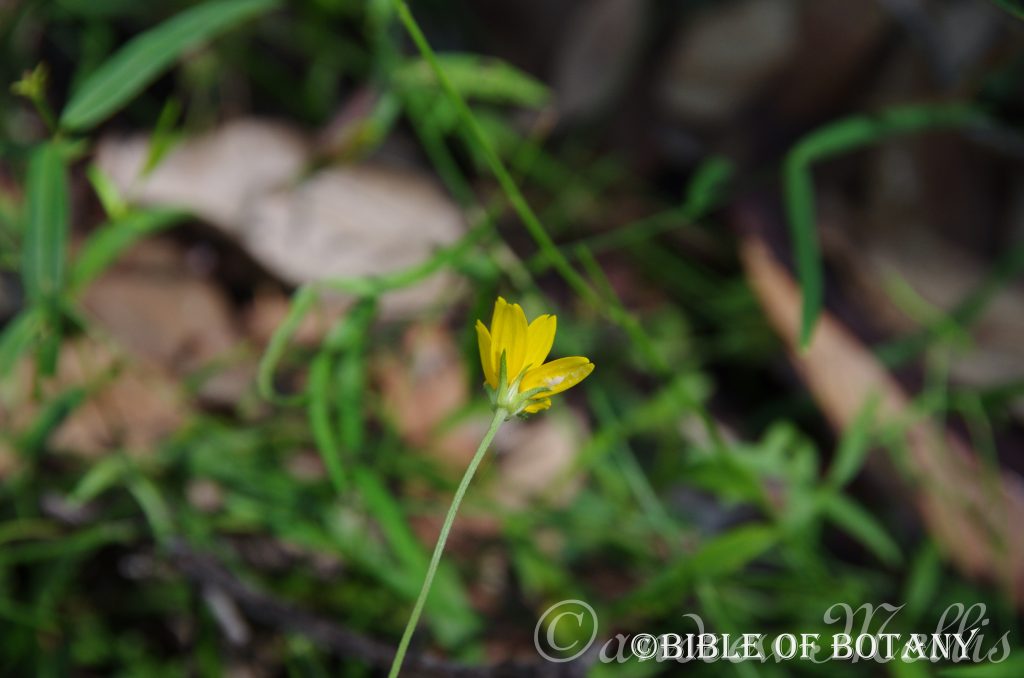
Washpool National Park NSW
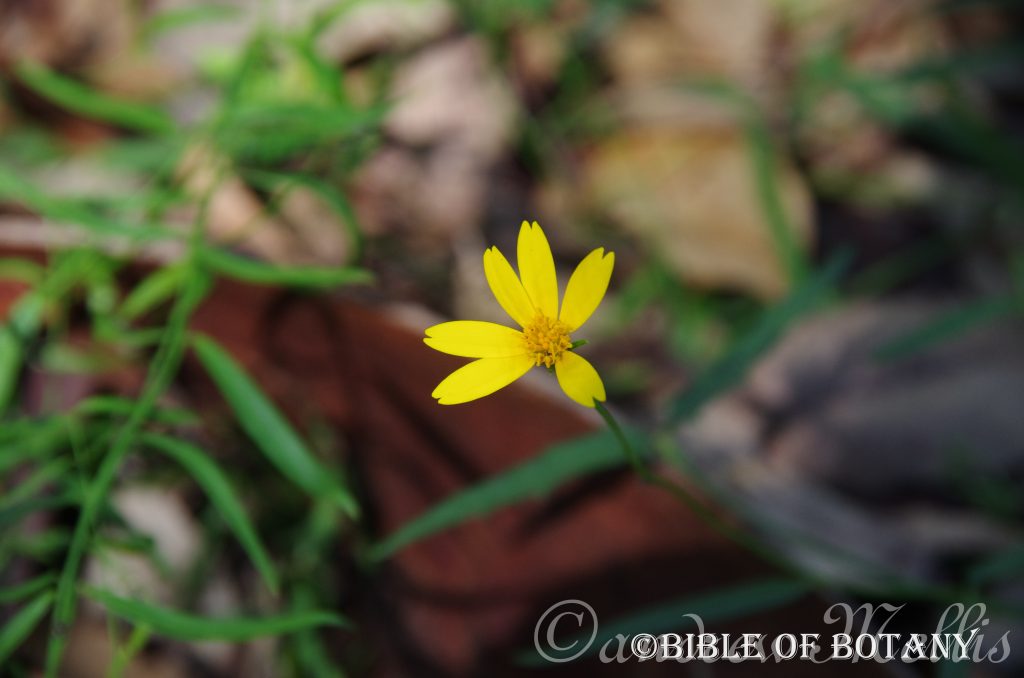
Washpool National Park NSW
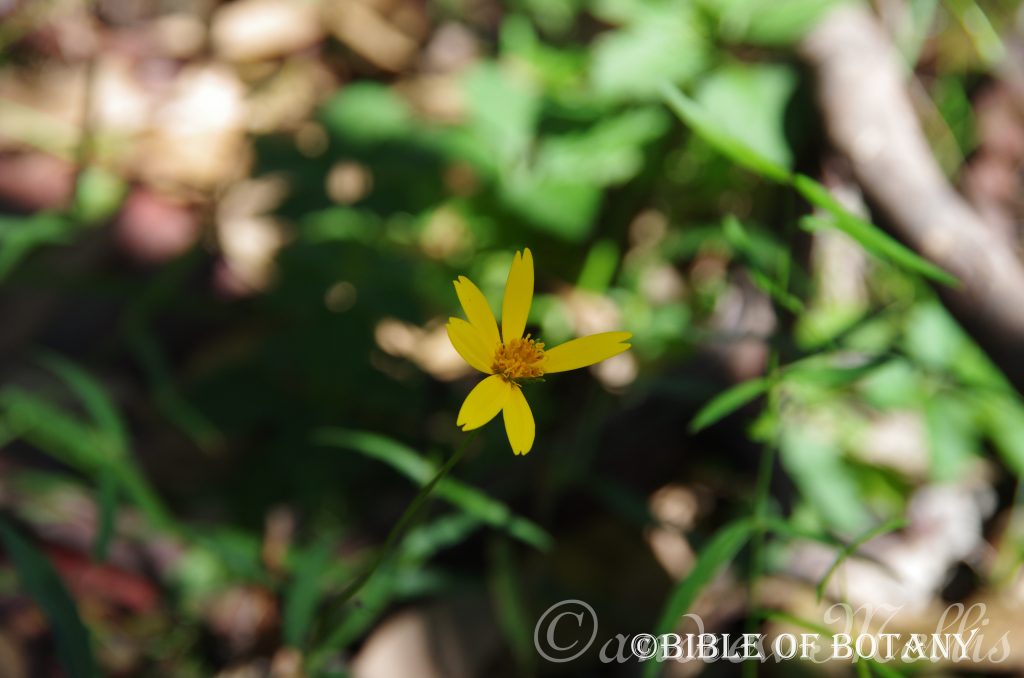
Washpool National Park NSW
Senecio linearifolius
Classification:
Unranked: Eudicots
Class: Asterids
Order: Asterales
Family: Asteraceae
Subfamily: Asteroideae
Supertribe: Seneciondae
Tribe: Senecioneae
Subtribe: Senecioninae
Genus: From Senescere/Senex, which is Ancient Greek for an old man. It refers to seeds which are covered in pale grey or white hairs like an old man’s beard.
Specie: From Linearis, which is Latin for straight lines. It refers to, leaves which are narrow and where the veins appear in straight lines.
Variety: Senecio linearifolius var. arachnoideus. From Aráchnē, which is Ancient Greek or Arachnida, which is Latin for a spider’s web. It refers to stems, which are covered in or appear as though it is covered in a spider’s web.
Variety: Senecio linearifolius var. dangarensis. From Dangar, which is Latinized for Mount Dangar and Anum/Ensis, which is Latin for originating from. It refers to plants, which were first discovered on Mount Dangar in the Goulburn River National Park NSW.
Variety: Senecio linearifolius var. denticulatus. From Odoús/Odonta, which is Ancient Greek or Dēns, which is Latin for a tooth or teeth and Ocalātum, which is Latin for with an eye. It refers to leaf margins which have very fine teeth that need a keen eye to see them.
Variety: Senecio linearifolius var. gariwerdensis. From Gariwerd, which is Latinized from the local Djab Wurrung and the Jardwadjali traditional owners of the land which is now a sacred place and Anum/Ensis, which is Latin for to originate from. It refers to plants, which were first discovered in the Grampians National Park in western Victoria.
Variety: Senecio linearifolius var. granitica. From Granitica which is Latin for types of intrusive based rocks that decompompose down into rather course silica sands. It refers to plants, which prefer to grow on granitic sands or between Granite boulders.
Variety: Senecio linearifolius var. intermedius. From Inter/Intra, which is Latin for between or among and Mésos, which is Ancient Greek or Medium, which is Latin for half way or in a middle position. It refers to a characteristic which has a position somewhere in the middle or very average of the species within the genus.
Variety: Senecio linearifolius var. latifolius. From Latus, which is Latin for broad and Folium, which is Latin for foliage. It refers to leaves, which are broader than other species in the genus.
Variety: Senecio linearifolius var. linearifolius. From Linearis, which is Latin for straight lines. It refers to, leaves which are narrow and where the veins appear in straight lines.
Variety: Senecio linearifolius var. macrodontus. From Makros, which is Ancient Greek for large and Donotos, which is Ancient Greek for a tooth or teeth. It refers to leaves, which have much larger teeth than other species in the genus.
Common Name: Fireweed or Groundsel.
Distribution:
Senecio linearifolius var. arachnoideus is found south from southern Darling Downs in southern Queensland to the central east coastal of Tasmania including the Bass Strait Islands. It is found on the Western Slopes of the Great Dividing Range, on and east of the Great Dividing Range to the coast. There is a disjunct population further west in the Grampians in western Victoria.
Senecio linearifolius var. dangarensis is only known from a small population west of Musselbrook in central eastern New South Wales.
Senecio linearifolius var. denticulatus is found south from Canberra in the ACT to Tasman Island near East Cliffs and the eastern Bass Strait Islands in Tasmania. It occurs mainly on the highlands of the Great Dividing Range and cooler areas to the coast.
Senecio linearifolius var. gariwerdensis is mainly in and around the Grampians National Park in western Victoria.
Senecio linearifolius var. granitica is found in a few scattered populations between Euroa and Seymore in central Victoria.
Senecio linearifolius var. intermedius is found south from Moreton National Park in New South Wales to Nunniong Plateau in northern Victoria. It is found on the Great Dividing Range at higher elevations.
There are three disjunct populations further west at the Yass Valley in New South Wales, near Albury and Pyrenees in central and northern Victoria.
Senecio linearifolius var. latifolius is found south from Palerang in southern New South Wales to the Strzelecki Ranges in south eastern Victoria. It is found on and east of the Great Dividing Range generally at higher elevations.
Senecio linearifolius var. linearifolius is found south from Wilkie Creek on the Darling Downs in southern Queensland to the southern tip of Tasmania including the Bass Strait Islands and west to Port Headland in south western Victoria. It is found on the Western Slopes, on and east of the Great Dividing Range to the coast.
There is one isolated population in north eastern Tasmania.
Senecio linearifolius var. macrodontus is found south from Barrington to Streamers Beach in south eastern New South Wales. It is found on and east of the Great Dividing Range to the coast.
There are four disjunct populations further south at the Tumit Pond Dam, east of Wangaratta and west of Warrambool in Victoria and Big
Chalky Island in Bass Strait in Tasmania.
https://avh.ala.org.au/occurrences/search?taxa=Senecio+linearifolius#tab_mapView
Habitat Aspect Climate:
Senecio linearifolius prefers partial shade to full sun. It grows in openings or along escarpments, ridges or heaths in moist sclerophyll forests. The altitude ranges from 5 meter ASL to 1650 meters ASL.
The temperatures range from minus 6 degrees in July to 38 degrees in January.
The rainfalls range from lows of 450mm to 2600mm average per annum.
Soil Requirements:
Senecio linearifolius prefer to grow on rocky sandy loams to light clay loams with or without copious quantities of stones, gravel, rocks or boulders. The soils are usually derived from decomposed granites or at times sandstone or basaltic screes. The soils pH ranges from 4.5pH to 6.5pH. It does not tolerate waterlogged soils. Non saline soils to moderately saline soils are tolerated.
Height & Spread:
Wild Plants: 0.5m to 2m by 0.4m to 1m.
Characteristics:
Senecio linearifolius grows as a perennial herb or shrub with a few branches that are glabrous to sparsely covered in white matted hairs. The stems measure 500mm to 150mm in length.
The alternate leaves are usually linear to lanceolate or narrow elliptic leaves of Senecio linearifolius measure 60mm to 150mm in length by 5mm to 15mm in width. The bases taper to the petiole that measures 1mm to 5mm in length while the apexes are acute. The discolourous laminas are mid bluish-green and glabrous on the upper laminas while the lower laminas are paler and usually covered in white matted hairs. The margins are slightly to moderately recurved and entire to sparsely toothed.
At times the leaves are elliptic to obovate and measure 50mm to100mm in length by 10mm to 30mm in width. The pale bluish-green petioles measure 1mm to 5mm in length. The bases scarcely taper and are cordate and auriculate while the apexes are acute. The discolourous laminas are mid bluish-green, semi glossy and glabrous on the upper laminas while the lower laminas are slightly paler and glabrous. The leaf margins are strongly and regularly toothed. The ovate mid vein is strongly prominent on the lower lamina while the lateral veins are slightly prominent and the tertiary veins are faintly prominent on the lower laminas.
The inflorescences of Senecio linearifolius are simple corymbosa heads born from the terminals. The mid green pedicels are glabrous and measure 10mm to 22mm in length. The cylindrical heads measure 2mm to 3mm in diameter. It is glabrous except at apices. The 10 to 12 involucral bracts measure 4mm to 5mm in length. The bracteoles measure 5mm to 6mm in length. The 4 to 8 ray florets have 4 to 6 ligules that measure 4mm to 6mm in length while the disc florets number 8 to 12.
The flowers appear throughout the year under favourable conditions.
Senecio linearifolius’ fruits are long, linear, compressed achenes. The brown achenes are glabrous and measure 1.5mm to 2.5mm in length by 1mm to 1.2mm in diameter. The glossy, white pappus measure 5mm to 8mm in length.
Confusing Species:
The exotic fire weed Senecio madagascariensis has given our native species a bad name and often causes confusion. It is normally found on derogated land especially cattle properties where the pH decrease to an extent where most plants cannot compete. It grows from 200mm to 600mm in height.
The alternate leaves are usually linear to lanceolate or narrow elliptic leaves and slightly decurve towards the margins. They measure 20mm to 90mm in length by 3mm to 10mm in width.
Floral bracts number 19 to 21. Floral Rays decurve not divaricate. Seeds 2.5mm long with 6.5mm pappus.
Senecio linearifolius alternate leaves are usually linear to lanceolate or narrow elliptic leaves of Senecio linearifolius measure 60mm to 150mm in length by 5mm to 15mm in width.
The 10 to 12 involucral bracts measure 4mm to 5mm in length. The bracteoles measure 5mm to 6mm in length. The 4 to 8 ray florets have 4 to 6 ligules that measure 4mm to 6mm in length while the disc florets number 8 to 12.
We had some terrible arguments with our local authority for 5 years who wanted us to blanket cover the property with poisonous chemicals for this weed and Parramatta grass. We refused and continued to carry out good organic farming practices on the property. After 5 years the weeds completely disappeared without one drop of chemical being sprayed.
Confusing Subspecies Varieties:
Senecio linearifolius var. dangarensis is found on mount Dangar on basaltic screes. It is an aromatic perennial often with growing as a weak shrub to 2 meters in height. It is glabrous and glaucous. The upper stem leaves are narrow to very narrow elliptic while the margins are denticulate. The lower laminas are always glabrous. The main vein is prominent while the lateral and tertiary venation is faintly prominent. The peduncles are glabrous or rarely covered in loose, white floccose hairs at anthesis. The 20 to 31 florets’ have 7 to 9 ligules. There are 13 to 22 disc florets. The achenes measure 2mm in length with appressed papillate hairs in bands. The pappus measure 4mm to 6mm in length.
Senecio linearifolius subsp. intermedius is found from Lake George to Bredbo in New South Wales and around Suggan Buggan and Mount Wheeler in Victoria. It is slightly glaucous and moderately glaucous on the new growth. The upper stem leaves are narrow to very narrow elliptic, narrow lanceolate, linear to narrow linear and measure to 100mm to 120mm in length. The attenuate or cuneate based leaves at times have small auricles. The margins entire to denticulate or at times are serrate. The lower laminas are usually glaucous and are sparsely covered in weak, coarse, spreading hairs commonly present between the veins. The lateral venation is faintly prominent while the tertiary venation is variably discernible. The peduncles are usually glabrous to variously glaucous or rarely covered in short white spindly matted hairs prior to anthesis. The 8 to 12 involucral bracts measures 3mm to 4mm in length. The 15 to 22 florets have 4 to 6 ligulata florets or rarely 8.There are 11 to 14 disc florets. The achenes measure 1.6mm to 2.3mm in length and are covered in white appressed papillose hairs in bands.
Senecio linearifolius subsp. latifolius is restricted to an area from the southern Tablelands to the Brindabella Range in Victoria and grows at altitudes over 1050 meters ASL. Plants are not glaucous. The upper stem leaves are narrow elliptic to lanceolate and measure 90mm to 140mm in length. The bases are broad cuneate, truncate, or cordate with or without auricles. The auricles are entire or with a much smaller secondary lobe present. The margins are denticulate, dentate to serrate. The lower surface is usually glabrous or rarely very sparsely covered in white matted hairs. The lateral veins are usually strongly prominent on the lower laminas while the tertiary venation is usually clearly visible. The peduncles are glabrous at anthesis. The 8 to 11 involucral bracts measure 2.5mm to 4mm in length. The 12 to 19 florets’ have 4 to 5 ligulata florets. There are 8 to 14 disc florets. The achenes measure 1.5mm to 2mm in length and are brown with appressed papillose hairs in bands.
Wildlife:
Senecio linearifolius support native bees and numerous native flies and small butterflies that collect the pollen.
Cultivation:
Senecio linearifolius is a magnificent medium perennial herb for both medium to large rockeries in cool temperate gardens. In cultivation it grows from 1 meter to 1.5 meters in height by 0.8 meters to 1 meter in diameter when grown in an open sunny position. Some tip pruning in the early stages will ensure a dense well shaped subject.
It grows well on all soils where deep leaf litter keeps the soil cool and moisture at an even level. If these requirements are met it can cope with temperatures as low as minus 6 degrees and up to 38 degrees. It is moderately drought resistant once established.
Add to the above, if it is given an adequate supply of water and a little native fertilizer on a regular basis the plants will respond with good flowering over a long period.
Senecio linearifolius would make good contribution to a moist heath garden. Here they can be used as a smaller growing plant scattered throughout the heath scene or tip pruned for a lower more spreading smaller herb. When you design a flat heath garden in which Senecio linearifolius is well suited don’t use contours to display the plants as heath lands are almost always flat or have a slight rise. Plants must be planted close enough to touch each other at maturity and be short so you can see over the tallest ones with the exception of one or two plants at the most. These will be feature plants. The idea is to achieve a feeling of expansive flatness. This can be achieved with using Senecio linearifolius’s bright green linear leaves and having them contrasting with finer pale green or soft grey to glaucous coloured foliages. Use a lot of plants like Verticordia specie which have pink or red flowers as the yellow flowers of this Senecio are very strong. Mix them with other smaller shrubs so none of them dominate the scene but blend in to give a mosaic of foliage colours that you oversee. Here I immediately think of Actinotis helianthi, small red flowering Grevillea specie or Grevillea thelemanniana for two great contrasting foliages. When the plants are used in the garden plant them in close proximately with 3 to 5 individual plants to make them look denser and more attractive.
Propagation:
Seeds: The seeds of Senecio linearifolius can be removed easily from the flower heads as the first seeds begin to disperse. The seeds are best sown after scarification. Place the seeds in a small calico bag and place them in the vegetable crisper for 12 to 14 days. Do not freeze the seeds.
Sow treated seeds directly into a seed raising mix, keeping them moist not wet. Do not over water as the seeds will rot off before germination takes place. Place the trays in a warm shaded area with no more than 20mm shade cloth in the bush house. When the seedlings are 20mm to 25mm tall, prick them out and plant them into 50mm native tubes using a good organic mix.
As the seedlings roots reach the bottom of the tubes plant them out into their permanent position. Do not delay or flowering will be greatly affected.
Cuttings: Fortunately Senecio linearifolia cuttings strike easy. Use 100mm to 200mm long tip cuttings or lateral shoots from the present season’s growth. Take them in warmer months of the year. Remove half the leaves from the bottom section being careful not to tear the bark.
1 Prepare the cutting mix by adding two thirds sharp clean river sand, one third peat or one third perlite. These ingredients must be sterilized,
2 Select good material from non diseased plants,
3 Select semi green stems for cuttings. Look for a stem with two or three nodes,
4 Place the cutting on a flat, hard surface, and make a clean cut down one side of the cutting at the base for 10mm with a sharp sterile knife or razor blade. – This scarification of the node will increase the chances of roots emerging from this spot. Now remove all but one or two the leaves, leaving the apex leaves in tact. If the leaves are very large in proportion to the stem, cut off the apical halves.
5 Hormones are not required,
6 Use a small dipple stick or old pencil to poke a hole into the soilless potting mix. Ensure the hole is slightly larger than the stem diameter and be careful not to damage the base,
7 I like to place the tubes in bucket with holes drilled in the bottom to allow excess water to drain out. A plastic bag that fits over the bucket is ideal to help maintain temperature and moisture. Place in a semi shaded, warm position like under 50mm shade cloth.
8 When the cuttings have struck, open the bag to allow air circulation for a few days to a week,
9 Once hardened off remove the cuttings from the bag and allow to further hardening for a few more days to a week,
10 Transplant into a good potting mix to grow on.
Fertilize using seaweed, fish emulsion or organic chicken pellets soaked in water on an alternate basis. Fertilize every two months until the plants are established then twice annually in early September or March to maintain health, vitality and better flowering.
Further Comments from Readers:
“Hi reader, it seems you use The Bible of Botany a lot. That’s great as we have great pleasure in bringing it to you! It’s a little awkward for us to ask, but our first aim is to purchase land approximately 1,600 hectares to link several parcels of N.P. into one at The Pinnacles NSW Australia, but we need your help. We’re not salespeople. We’re amateur botanists who have dedicated over 30 years to saving the environment in a practical way. We depend on donations to reach our goal. If you donate just $5, the price of your coffee this Sunday, We can help to keep the planet alive in a real way and continue to bring you regular updates and features on Australian plants all in one Botanical Bible. Any support is greatly appreciated. Thank you.”
In the spirit of reconciliation we acknowledge the Bundjalung, Gumbaynggirr and Yaegl and all aboriginal nations throughout Australia and their connections to land, sea and community. We pay our respect to their Elders past, present and future for the pleasures we have gained.
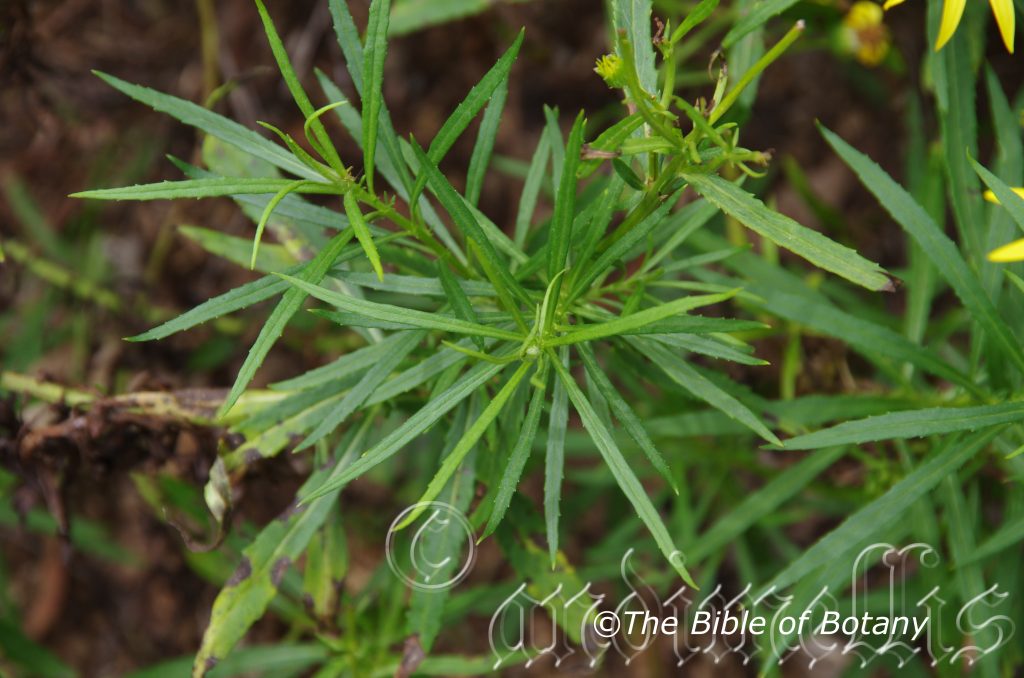
CSIRO Gardens ACT
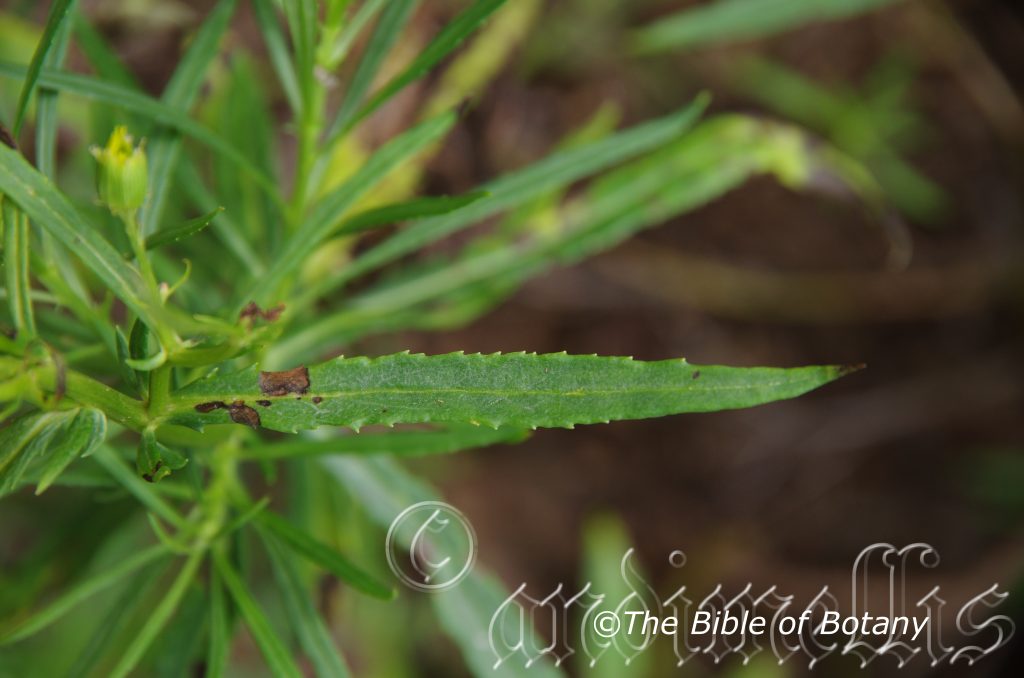
CSIRO Gardens ACT
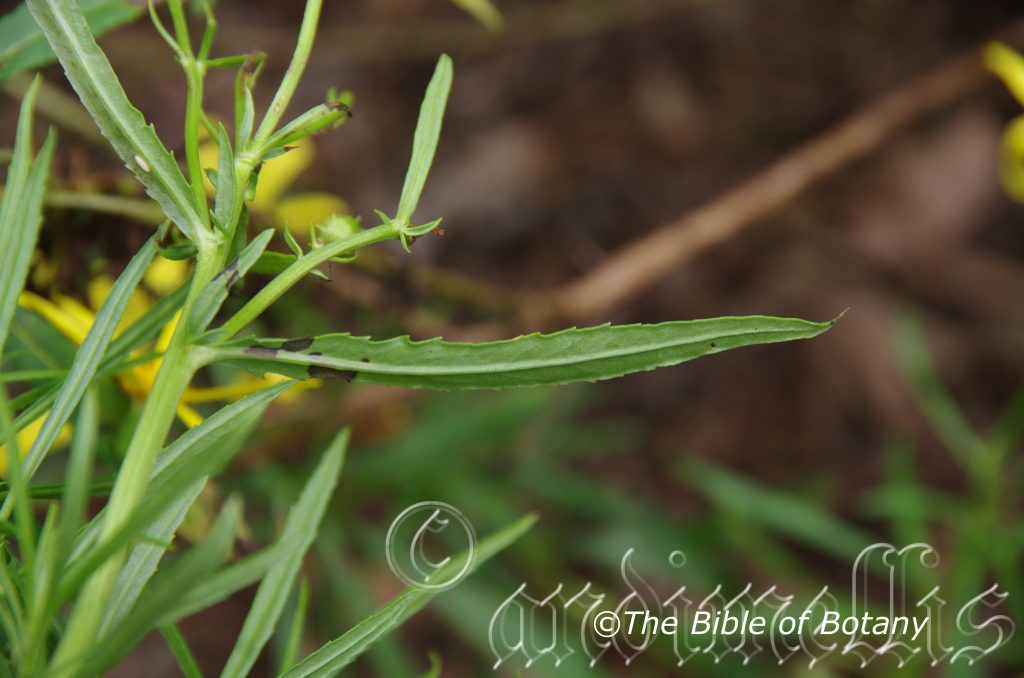
CSIRO Gardens ACT
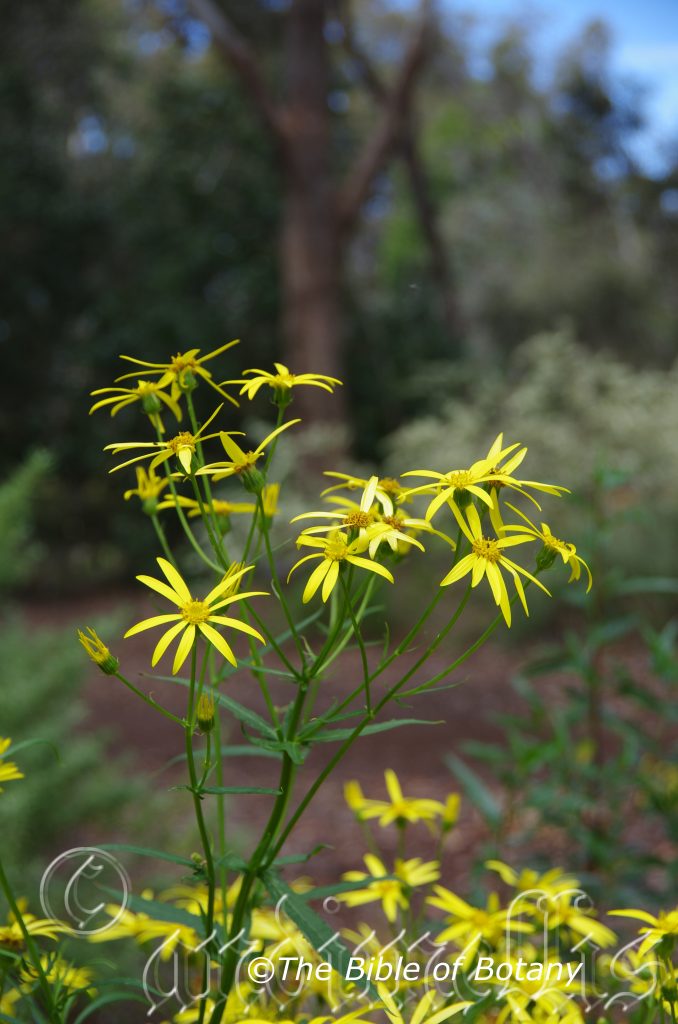
CSIRO Gardens ACT
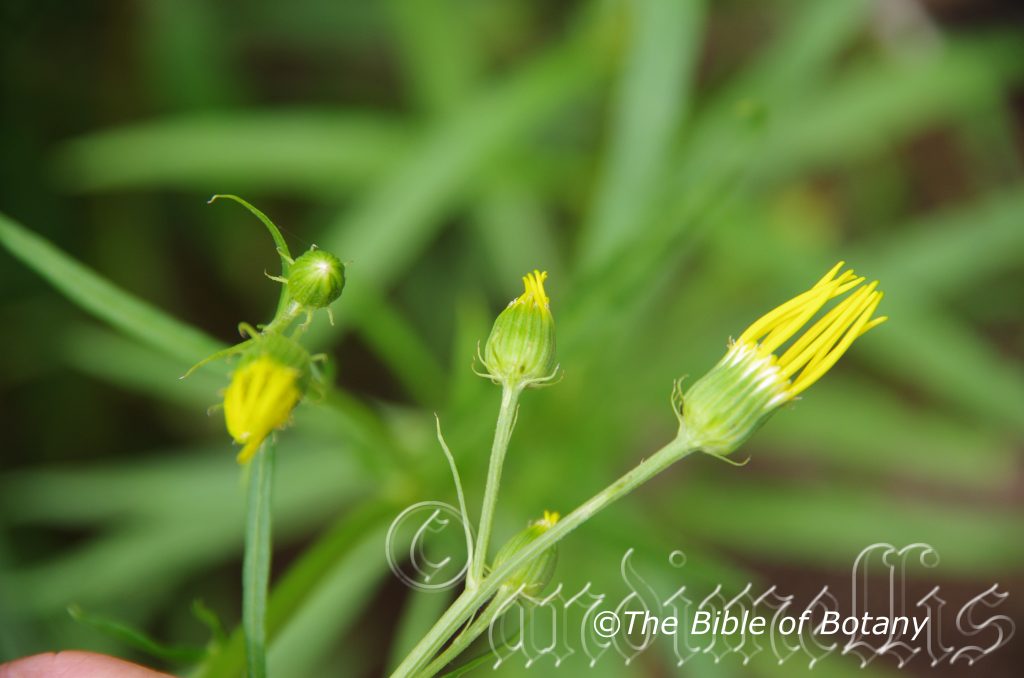
CSIRO Gardens ACT
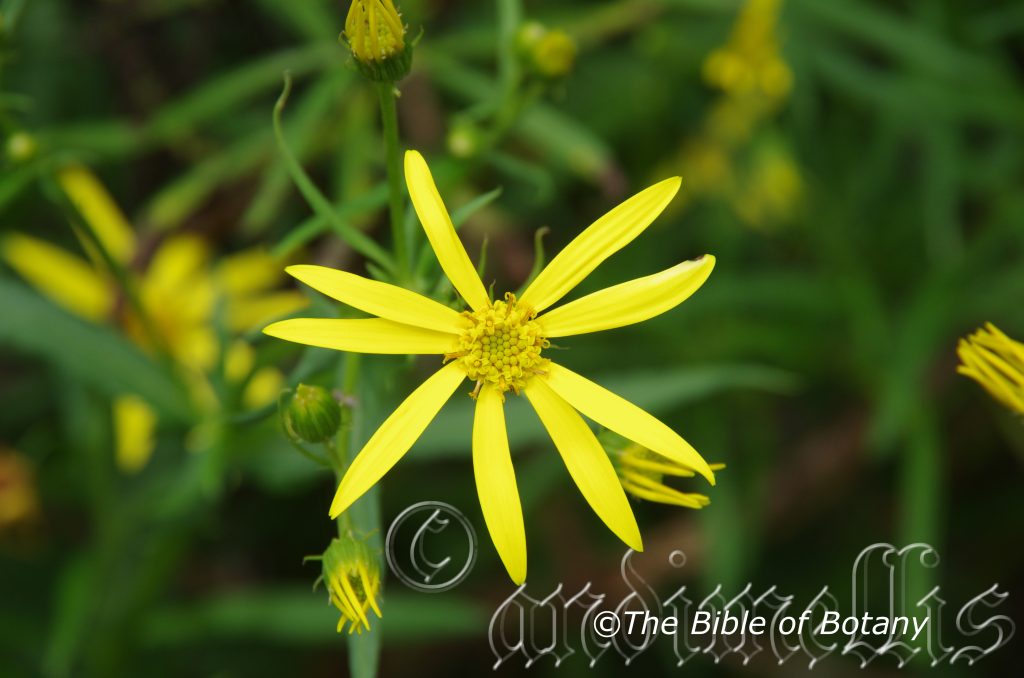
CSIRO Gardens ACT
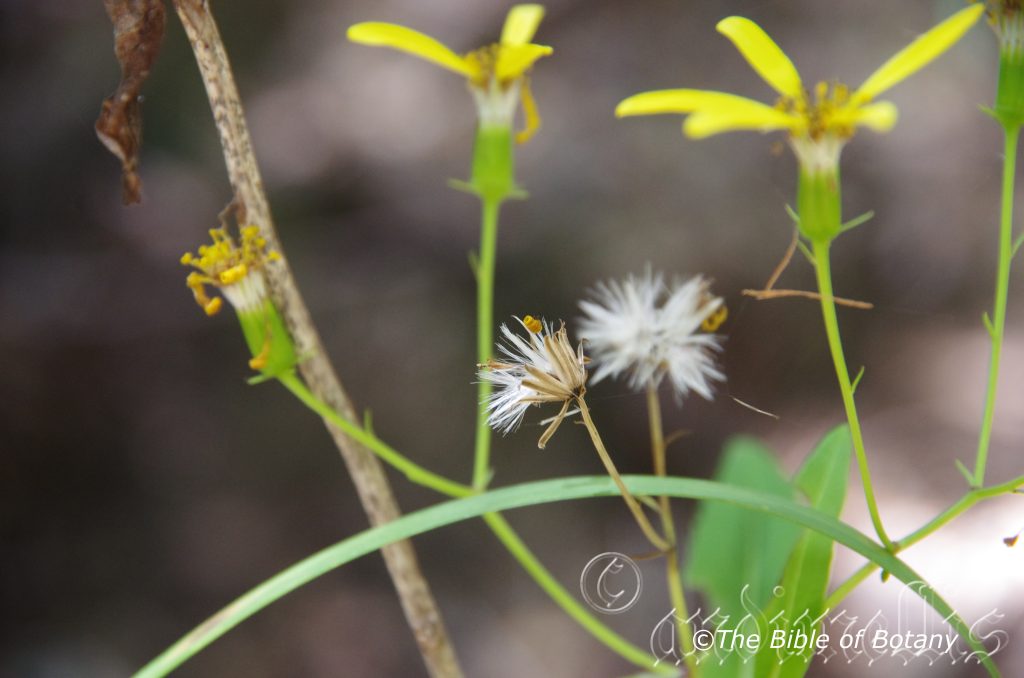
Pillar Valley NSW
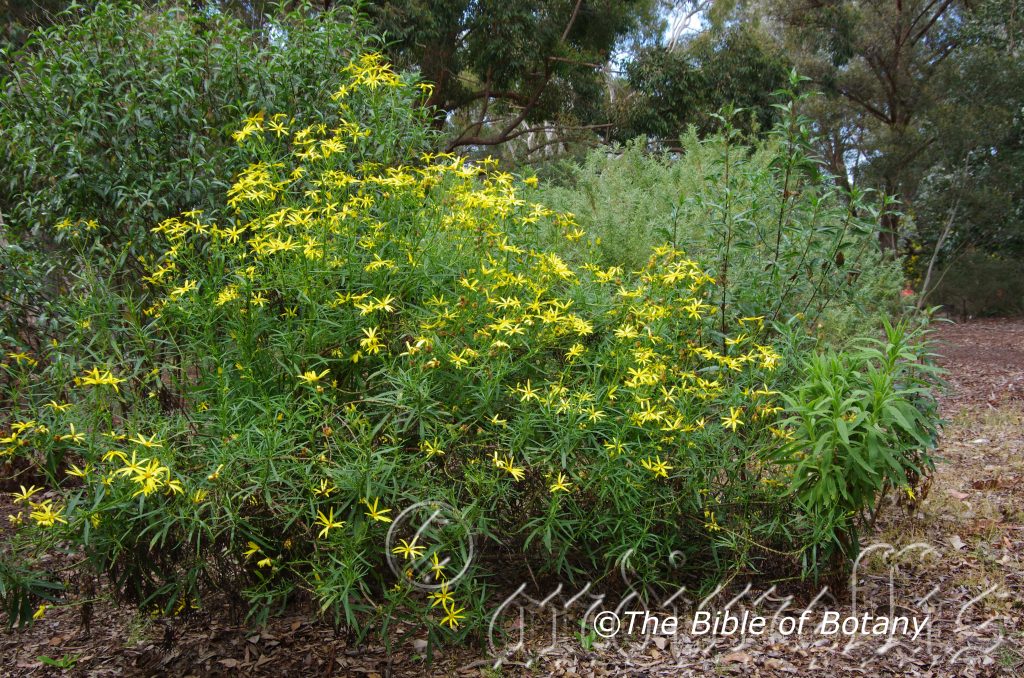
CSIRO Gardens ACT
Senecio macranthus
Classification:
Class: Equisetopsida
Subclass: Magnoliidae
Superorder: Asteranae
Order: Asterales
Family: Asteraceae
Tribe: Senecioceae
Genus: From Senescere/Senex, which is Ancient Greek for an old man. It refers to seeds which are covered in pale grey or white hairs like an old man’s beard.
Specie: From Macrantha, which is Latin and probably derived from an Ancient Greek dialect for to have large flowers. It refers to the flowers being larger than other species in the genus.
Sub specie:
Common Name: Large flower Groundsel or Large Flower Senecio.
Distribution:
Senecio macranthus is found west on the Western slopes of the Great Dividing Range and on the eastern sections of the western Plains south from Armidale to Ettrema Gorge and as far west as the Warrumbungles National Park in New South Wales.
https://avh.ala.org.au/occurrences/search?taxa=Senecio+macranthus#tab_mapView
Habitat Aspect Climate:
Senecio macranthus prefers full sun. It grows in sclerophyll forest along creeks, streams, drainage channels and low lying areas where water will accumulate for short periods. The altitude ranges from 500 meters SL to 1000 meters ASL.
The temperatures range from minus 5 degrees in July to 38 degrees in January.
The rainfalls range from lows of 400mm to 1200mm average per annum.
Soil Requirements:
Senecio macranthus prefers fine to course sands and sandy loams to medium clays with sand particles and stone. The soils are usually derived from decomposed granite. The soils pH ranges from 5pH to 7pH. It does not tolerate waterlogged soils. Non saline soils to very saline soils are tolerated.
Height & Spread:
Wild Plants: 0.5m to 1m by 0.6m to 1m.
Characteristics:
Senecio macranthus grows as a small perennial herb with glabrous, green stems. The smaller stems are ribbed
The crowded, linear to lanceolate leaves measure 40mm to 125mm in length by 2mm to 15mm in width. The base is slightly tapered and petiole like, while the apexes are narrow, long attenuate. The concolourous laminas are deep green, semi dull and glabrous. The leaf margins are margins entire to having regular, fine teeth. The mid vein and main laterals are slightly prominent on the lower laminas. The petioles are sessile.
Inflorescences are simple broad, campanulate heads born from the upper leaf axils or terminal. The deep green rachis and pedicels are glabrous.
The 18 to 22 individual involucral bracts are glabrous and measure 9mm to 12mm in length.
The 6 to 12 ray florets are broad linear to narrow elliptical. They are bright yellow, glabrous and measure 15mm to 25mm in length by 3.5mm to 6mm in width. Senecio macranthus’s flowers appear from early September through to early December with the odd flower appearing outside these times especially when good seasonal conditions prevail.
The fruits are long linear achenes. The achenes are glabrous and measure 4mm to 5mm in length by 1mm in diameter. The white to very pale grey pappus measure 8mm to 10mm in length.
Wildlife:
Senecio macranthus support native bees and numerous native flies and small butterflies that collect the pollen.
Cultivation:
Senecio macranthus is a magnificent medium perennial herb that should be grown in both small and large rockeries. In cultivation it will grow from 1 meter to 1.2 meters in height by 1 meters to 1.2 meter in diameter when grown in the open.
It grows well on most soils where deep litter keeps the soil cool and moisture at an even level. If these requirements are met they can cope with temperatures as low as minus 7 degrees and up to 36 degrees. It is moderately drought resistant once established.
Add to the above, if it is given an adequate supply of water and a little native fertilizer in late winter the plants will respond with good flowering over a long period.
It would make an outstanding contribution to a moist inland heath garden. Here it can be used as the taller growing plant scattered throughout the heath scene or tip pruned for a lower more spreading small shrub. When you design a flat heath garden in which Senecio macranthus is well suited don’t use contours to display the plants as heath lands are almost always flat or have a slight rise. The idea is to achieve a feeling of expansive flatness. This can be achieved by using Senecio macrantha’s bright deep green linear leaves and having them contrasting with finer pale green or soft grey to glaucous coloured foliages. Use a lot of plants like Verticordia specie which have pink or red flowers as the yellow flowers of this Senecio are very strong. Mix them with other smaller shrubs so none of them dominate the scene but blend in to give a mosaic of foliage colours that you oversee. Here I immediately think of Actinotis helianthi or Chloanthes parviflora.
It is also ideal planted as a fill in plant in mountain gardens or hillside plantings between large rocks and boulders on banks to add colour provided adequate moisture is available.
Propagation:
Seeds: The seeds of Senecio macranthus can be removed easily from the flower heads as the first seeds begin to disperse. The seeds are best sown after scarification. Place the seeds in a small calico bag and place them in the vegetable crisper for 12 to 14 days or until early spring. Do not freeze the seeds.
Sow treated seeds directly into a seed raising mix, keeping them moist not wet. Do not over water as the seeds will rot off before germination takes place. Place the trays in a warm semi shaded area with no more than 20mm shade cloth in the bush house. When the seedlings are 20mm to 25mm tall, prick them out and plant them into 50mm native tubes using a good organic mix.
As the seedlings roots reach the bottom of the tubes plant them out into their permanent position. Do not delay or flowering will be greatly affected.
Cuttings: Fortunately Senecio macranthus cuttings strike easy. Use 100mm to 200mm long tip cuttings or lateral shoots from the present season’s growth. Take them in warmer months of the year. Remove half the leaves from the bottom section being careful not to tear the bark.
1 Prepare the cutting mix by adding two thirds sharp clean river sand, one third peat or one third perlite. These ingredients must be sterilized,
2 Select good material from non diseased plants,
3 Select semi green stems for cuttings. Look for a stem with two or three nodes,
4 Place the cutting on a flat, hard surface, and make a clean cut down one side of the cutting at the base for 10mm with a sharp sterile knife or razor blade. – This scarification of the node will increase the chances of roots emerging from this spot. Now remove all but one or two the leaves, leaving the apex leaves in tact. If the leaves are very large in proportion to the stem, cut off the apical halves.
5 Hormones are not required,
6 Use a small dipple stick or old pencil to poke a hole into the soilless potting mix. Ensure the hole is slightly larger than the stem diameter and be careful not to damage the base,
7 I like to place the tubes in bucket with holes drilled in the bottom to allow excess water to drain out. A plastic bag that fits over the bucket is ideal to help maintain temperature and moisture. Place in a semi shaded, warm position like under 50mm shade cloth.
8 When the cuttings have struck, open the bag to allow air circulation for a few days to a week,
9 Once hardened off remove the cuttings from the bag and allow to further hardening for a few more days to a week,
10 Transplant into a good potting mix to grow on.
Fertilize using seaweed, fish emulsion or organic chicken pellets soaked in water on an alternate basis. Fertilize every two months until the plants are established then twice annually in early September or March to maintain health, vitality and better flowering.
Further Comments from Readers:
“Hi reader, it seems you use The Bible of Botany a lot. That’s great as we have great pleasure in bringing it to you! It’s a little awkward for us to ask, but our first aim is to purchase land approximately 1,600 hectares to link several parcels of N.P. into one at The Pinnacles NSW Australia, but we need your help. We’re not salespeople. We’re amateur botanists who have dedicated over 30 years to saving the environment in a practical way. We depend on donations to reach our goal. If you donate just $5, the price of your coffee this Sunday, We can help to keep the planet alive in a real way and continue to bring you regular updates and features on Australian plants all in one Botanical Bible. Any support is greatly appreciated. Thank you.”
In the spirit of reconciliation we acknowledge the Bundjalung, Gumbaynggirr and Yaegl and all aboriginal nations throughout Australia and their connections to land, sea and community. We pay our respect to their Elders past, present and future for the pleasures we have gained.
Senecio magnificus
Classification:
Class: Equisetopsida
Subclass: Magnoliidae
Superorder: Asteranae
Order: Asterales
Family: Asteraceae
Tribe: Senecioceae
Genus: From Senescere/Senex, which is Ancient Greek for an old man. It refers to seeds which are covered in pale grey or white hairs like an old man’s beard.
Specie: From Magnificus, which is Latin for eminent, imposing, distinguished magnificent. It refers to the flowering displays, which are very impressive.
Sub specie:
Common Name: Showy Groundsel, Magnificent Groundsel or Tall Showy Top.
Distribution:
Senecio magnificus is found east from Exmouth in central coastal Western Australia to Sandover council in central southern Northern Territory then south east to Frome in central South Australia and east to near Cobar in New South Wales and back to Murray Bridge in Southern South Australia and west to Kalgoorlie and north west to Sharks Bay in Western Australia.
It may be more widely distributed in central Australia than what is reported. It is not found in any of the Deserts of Australia.
https://avh.ala.org.au/occurrences/search?taxa=Senecio+magnificus#tab_mapView
Habitat Aspect Climate:
Senecio magnificus prefers full sun. It grows along creeks, streams, drainage channels and low lying areas where water will accumulate for short periods. It is also found on hard pan plains or course red sandy plains and gravelly red sands. The altitude ranges from 0 meters SL to 660 meters ASL.
The temperatures range from 2 degrees in July to 38 degrees in January.
The rainfalls range from lows of 850mm to 3200mm average per annum.
Soil Requirements:
Senecio magnificus prefers fine to course sands and sandy loams to medium clays with sand particles and stone. The soils are usually derived from decomposed red sandstones. The soils pH ranges from 4.5pH to 7pH. It does not tolerate waterlogged soils. Non saline soils to very saline soils are tolerated.
Height & Spread:
Wild Plants: 0.8m to 1.5m by 0.6m to 1m.
Characteristics:
Senecio magnificus grows as a small perennial herb with grey-green to grey, longitudinally striated stems. The smaller stems are angulated with 4 narrow wings which measure less than 0.5mm in length. The stems are glabrous and glaucous.
The alternate, oblanceolate to spathulate leaves of Senecio magnificus measure 50mm to 90mm in length by 10mm to 30mm in width. The base is tapered then attenuate to the stems and are semi clasping or auriculate. The apexes are broadly acute to obtuse with a mucronate tip. The concolourous laminas are grey green to grey, semi dull and glabrous. The leaf margins are coarsely toothed tending to be entire on the upper stems, flat and strongly recurve from the mid vein to the margins. The mid vein and main laterals are slightly prominent on the lower laminas. The petioles are sessile.
Inflorescences of Senecio magnificus are simple corymbs heads born from the upper leaf axils or are terminal. The grey green rachis and pedicels are glabrous and measure 30mm to 40mm in length and 20mm to 30mm respectively.
The 10 to 50 individual florets are broad campanulate and glabrous except for the apices. There are 12 to 14 involucral bracts which measure 7mm to 10mm in length and together have a diameter of 8mm to 10mm. The lobes measure 2mm to 3.5mm in length. The bracteoles measure 0mm to 2mm in length.
The 4 to 8 ray florets are divaricate to decurving at the apexes. It is bright yellow, glabrous and measure 8mm to 15mm in length by 3mm to 6mm in width. The 10 to 50 individual flowers are deep yellow with white or pale yellow corollas. Senecio magnificus’s flowers appear from early September through to early December with some flowers appearing throughout the year in favourable seasons.
The fruits of Senecio magnificus are long linear achenes. The achenes are glabrous and measure 5mm to 6mm in length by 1mm to 1.2mm in diameter. The pale yellow to pale fawn pappus measure 8mm to 10mm in length.
Wildlife:
Senecio magnificus support native bees and numerous native flies and small butterflies that collect the pollen.
Cultivation:
Senecio magnificus is a magnificent medium perennial herb that should be grown in both small and large rockeries. In cultivation it will grow from 1 meter to 1.2 meters in height by 0.6 meters to 0.8 meter in diameter when grown in the open.
It grows well on all soils where deep leaf litter keeps the soil cool and moisture at an even level. If these requirements are met they can cope with temperatures as low as minus 3 degrees and up to 36 degrees. It is moderately drought resistant once established.
Add to the above, if it is given an adequate supply of water and a little native fertilizer on a regular basis the plants will respond with good flowering over a long period.
Senecio magnificus would make outstanding contribution to a dry inland heath garden. Here it can be used as the taller growing plant scattered throughout the heath scene or tip pruned for a lower more spreading small shrub. When you design a flat heath garden in which Senecio magnificus is well suited don’t use contours to display the plants as heath lands are almost always flat or have a slight rise. Plants must be planted close enough to touch each other at maturity and be short so you can see over the tallest ones with the exception of one or two plants at the most. These will be feature plants. The idea is to achieve a feeling of expansive flatness. This can be achieved with using Senecio magnificus’s bright green linear leaves and having them contrasting with finer pale green or soft grey to glaucous coloured foliages. Use a lot of plants like Verticordia specie which have pink or red flowers as the yellow flowers of this Senecio are very strong. Mix them with other smaller shrubs so none of them dominate the scene but blend in to give a mosaic of foliage colours that you oversee. Here I immediately think of Actinotis helianthi or Grevillea thelemanniana for two great contrasting foliages.
It is also ideal planted as a fill in plant in arid gardens or planted between large rocks and boulders on banks to add colour.
Propagation:
Seeds: The seeds of Senecio magnificus can be removed easily from the flower heads as the first seeds begin to disperse. The seeds are best sown after scarification. Place the seeds in a small calico bag and place them in the vegetable crisper for 12 to 14 days. Do not freeze the seeds.
Sow treated seeds directly into a seed raising mix, keeping them moist not wet. Do not over water as the seeds will rot off before germination takes place. Place the trays in a warm shaded area with no more than 20mm shade cloth in the bush house. When the seedlings are 20mm to 25mm tall, prick them out and plant them into 50mm native tubes using a good organic mix.
As the seedlings roots reach the bottom of the tubes plant them out into their permanent position. Do not delay or flowering will be greatly affected.
Cuttings: Fortunately Senecio magnificus cuttings strike easy. Use 100mm to 200mm long tip cuttings or lateral shoots from the present season’s growth. Take them in warmer months of the year. Remove half the leaves from the bottom section being careful not to tear the bark.
1 Prepare the cutting mix by adding two thirds sharp clean river sand, one third peat or one third perlite. These ingredients must be sterilized,
2 Select good material from non diseased plants,
3 Select semi green stems for cuttings. Look for a stem with two or three nodes,
4 Place the cutting on a flat, hard surface, and make a clean cut down one side of the cutting at the base for 10mm with a sharp sterile knife or razor blade. – This scarification of the node will increase the chances of roots emerging from this spot. Now remove all but one or two the leaves, leaving the apex leaves in tact. If the leaves are very large in proportion to the stem, cut off the apical halves.
5 Hormones are not required,
6 Use a small dipple stick or old pencil to poke a hole into the soilless potting mix. Ensure the hole is slightly larger than the stem diameter and be careful not to damage the base,
7 I like to place the tubes in bucket with holes drilled in the bottom to allow excess water to drain out. A plastic bag that fits over the bucket is ideal to help maintain temperature and moisture. Place in a semi shaded, warm position like under 50mm shade cloth.
8 When the cuttings have struck, open the bag to allow air circulation for a few days to a week,
9 Once hardened off remove the cuttings from the bag and allow to further hardening for a few more days to a week,
10 Transplant into a good potting mix to grow on.
Fertilize using seaweed, fish emulsion or organic chicken pellets soaked in water on an alternate basis. Fertilize every two months until the plants are established then twice annually in early September or March to maintain health, vitality and better flowering.
Further Comments from Readers:
“Hi reader, it seems you use The Bible of Botany a lot. That’s great as we have great pleasure in bringing it to you! It’s a little awkward for us to ask, but our first aim is to purchase land approximately 1,600 hectares to link several parcels of N.P. into one at The Pinnacles NSW Australia, but we need your help. We’re not salespeople. We’re amateur botanists who have dedicated over 30 years to saving the environment in a practical way. We depend on donations to reach our goal. If you donate just $5, the price of your coffee this Sunday, We can help to keep the planet alive in a real way and continue to bring you regular updates and features on Australian plants all in one Botanical Bible. Any support is greatly appreciated. Thank you.”
In the spirit of reconciliation we acknowledge the Bundjalung, Gumbaynggirr and Yaegl and all aboriginal nations throughout Australia and their connections to land, sea and community. We pay our respect to their Elders past, present and future for the pleasures we have gained.
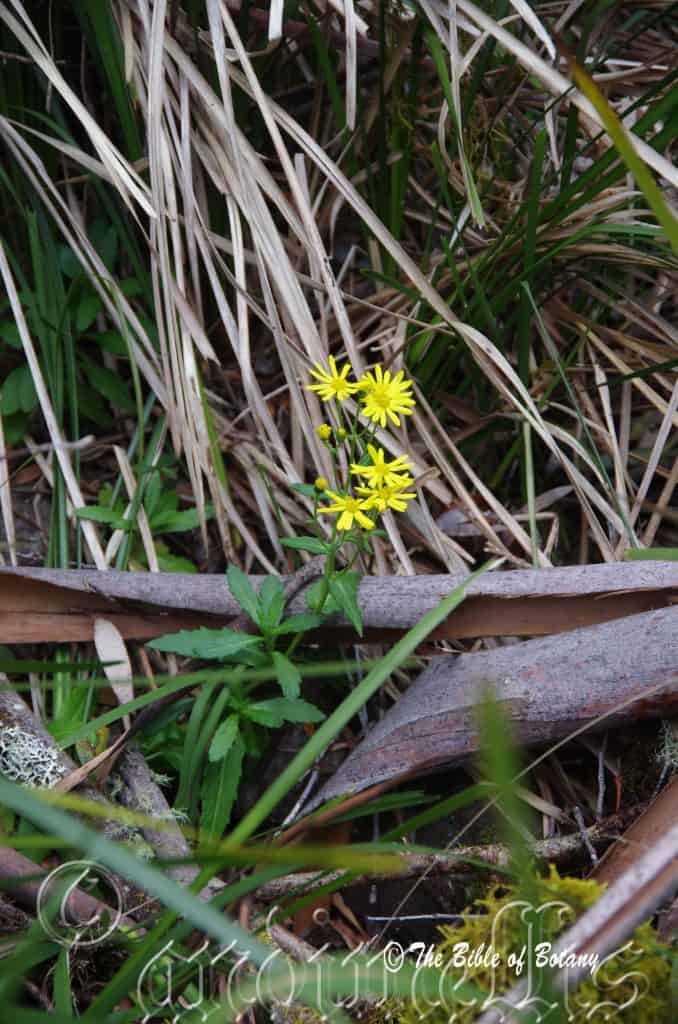
Point Lookout National Park Ebor NSW
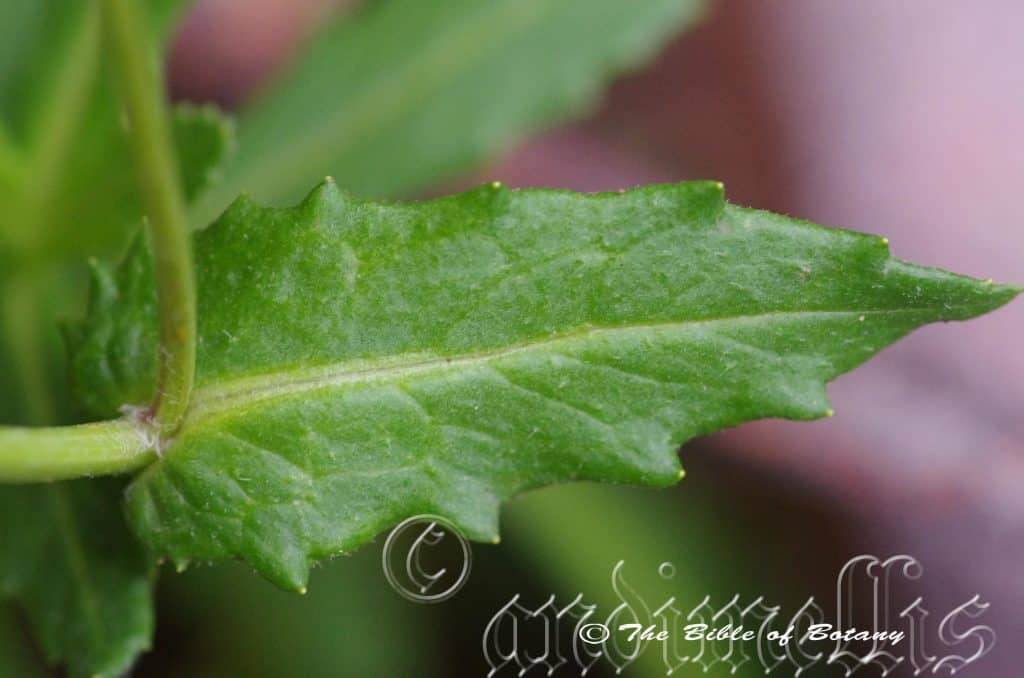
Point Lookout National Park Ebor NSW
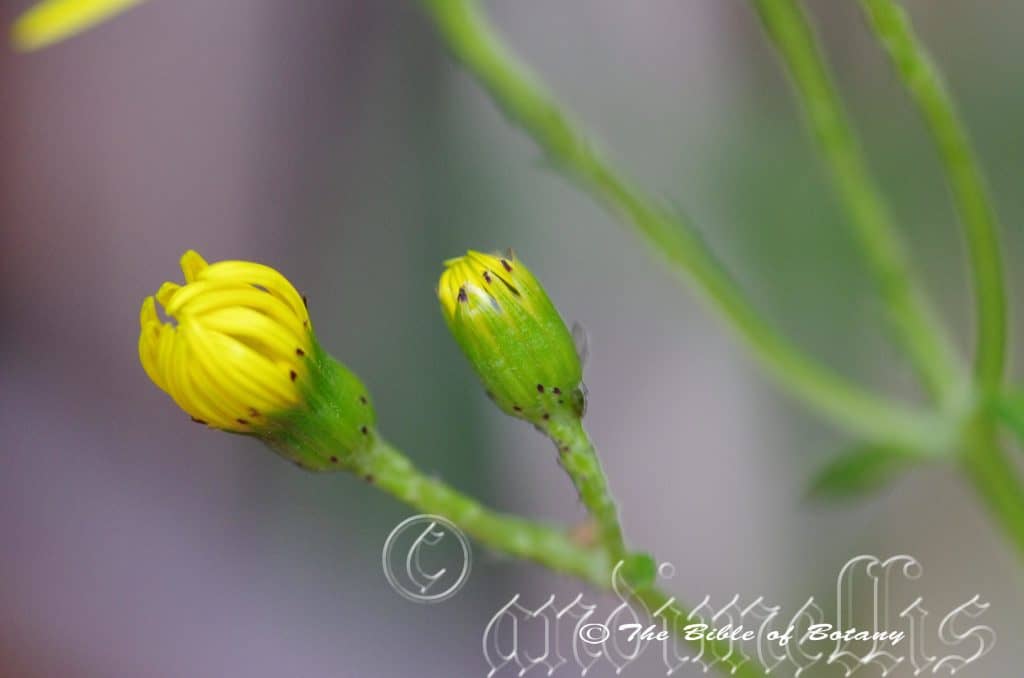
Point Lookout National Park Ebor NSW
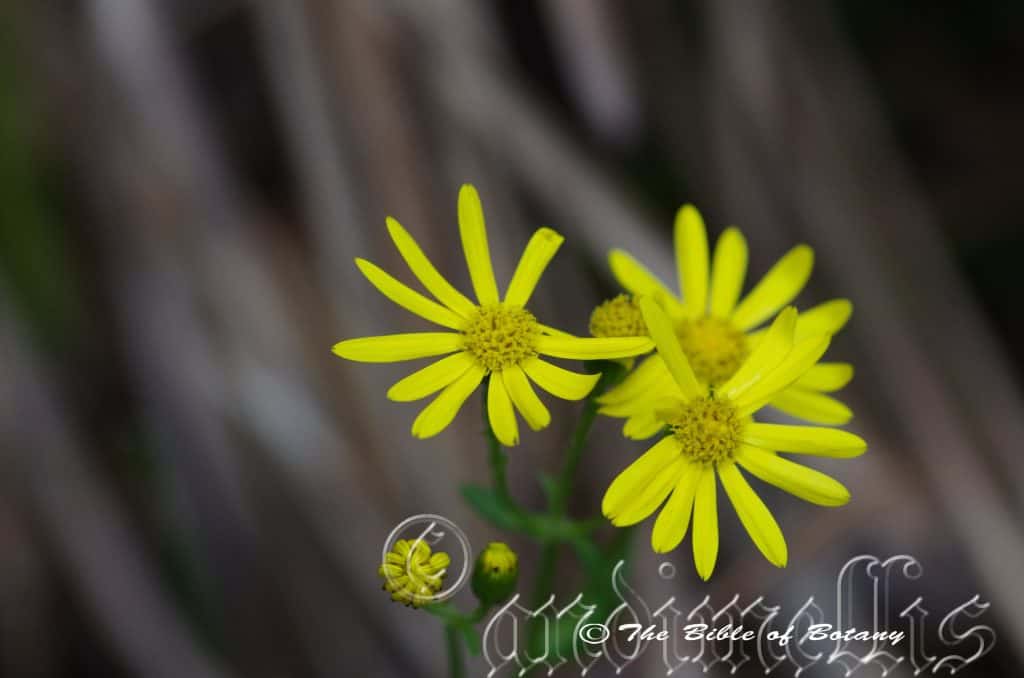
Point Lookout National Park Ebor NSW
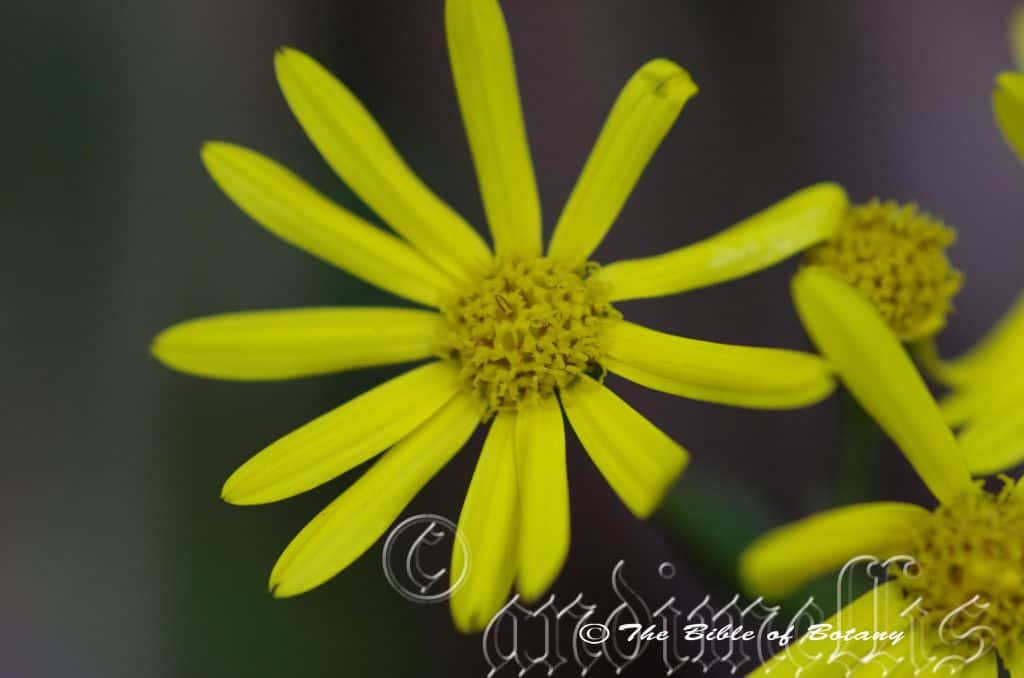
Point Lookout National Park Ebor NSW
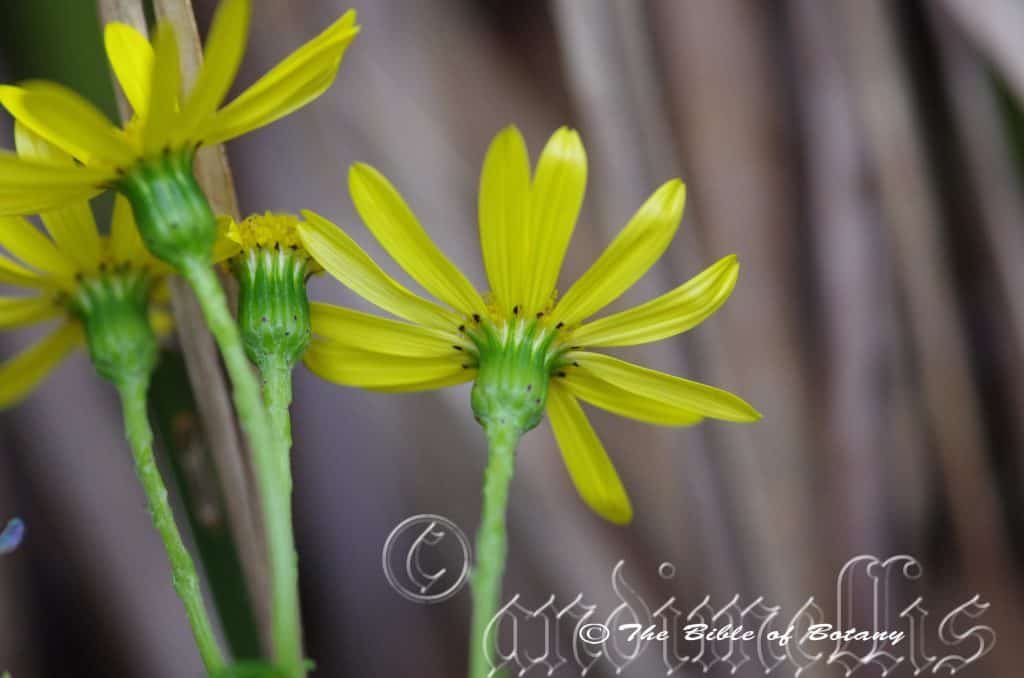
Point Lookout National Park Ebor NSW
Senecio minimus
Classification:
Unranked: Eudicots
Class: Asterids
Order: Asterales
Family: Asteraceae
Subfamily: Asteroideae
Supertribe: Seneciondae
Tribe: Senecioneae
Subtribe: Senecioninae
Genus: From Senescere/Senex, which is Ancient Greek for an old man. It refers to seeds which are covered in pale grey or white hairs like an old man’s beard.
Specie: From Miniatus, which is Latin for super small. It refers to plants, which usually have extremely small flowers.
Sub specie:
Common Name:
Distribution:
Senecio minimus is found south from Mount Glorious in south eastern Queensland to the southern tip of Tasmania excluding the highlands but includes most of the Bass Strait Islands. It is found as far west as Papinue and Rivoli Bay in south eastern South Australia. There is a disjunct population from east Adelaide south to Myponga and a small population on Kangaroo Island.
https://avh.ala.org.au/occurrences/search?taxa=Senecio+minimus#tab_mapView
Habitat Aspect Climate:
Senecio minimus prefers partial shade to full sun. It usually grows on the coast or coastal ranges but occasionally extends into subalpine habitats. It appears; to the author, that the plants are more common in transitional botanic zones or acetones. This was certainly the case with populations observed in Kungala and Braunstone. It grows in moist sclerophyll forests, woodlands and heaths. The altitude ranges from 4 meter ASL to 1250 meters ASL.
The temperatures range from minus 2 degrees in July to 36 degrees in January.
The rainfalls range from lows of 850mm to 3200mm average per annum.
Soil Requirements:
Senecio minimus prefers sandy loams to medium clays. The soils are usually derived from decomposed granites, sandstones, brown basalts, black basalts, shale, podsolics or metamorphic rocks. The soils pH ranges from 4.5pH to 6pH. It does not tolerate waterlogged soils. Non saline soils to moderately saline soils are tolerated.
Height & Spread:
Wild Plants: 0.3m to 1.5m by 0.2m to 0.3m.
Characteristics:
Senecio minimus grows as an erect short lived annual herb, usually with a few angulated stems below inflorescence. The stems usually measure 200mm to 1000mm in length but have been recorded at 2000mm in length. The deep grass-green to deep purple stems are stems are glabrous to sparsely covered in minute, hirtellous hairs on the basal half becoming glabrous on the apical half.
The alternate, lower and mid stem leaves of Senecio minimus are evenly spaced along the stems and are lanceolate to narrow elliptic or at times oblanceolate to narrow elliptic or rarely broadly elliptic. The lower leaves measure 50mm to 150mm in length while the middle leaves measure leaves measure 80mm to 230mm in length by 20mm to 75mm in width. The sessile bases are auriculate, to semi amplexicaulis while the apexes are acute. The discolourous laminas are deep green to deep greyish-green and glabrous to scaberulous on the upper laminas while the lower laminas are paler and glabrous or covered in short, white matted hairs or floccose hairs. The laminas are flat and gently decurve downwards from the base to the apex. The margins are not dissected but are often crenate to irregularly and unevenly crowded denticulate. The obtuse mid vein and main laterals are strongly prominent on the lower laminas while the tertiary veins are slightly prominent.
The upper leaves are usually narrow elliptic or at times linear or narrow lanceolate and measure 50mm to 150mm in length by 5mm to 50mm in width with widest point being at the auricles.
The inflorescences of Senecio minimus are simple corymbosa born from the terminals. The mid green pedicels are glabrous and measure 5mm to 10mm in length. The cylindrical heads measure 1.5mm to 2mm in diameter. The 7 to 9 involucral bracts measure 4.5mm to 7.5mm in length by 1mm to 1.5mm in width. The bracteoles number 2 or 3 or rarely to 5 measure 1mm to 2mm in length. The 12 to 24 florets measure 5.5mm to 8.5mm in length. The outer florets are filiform while the inner florets are tubular. 80mm of the florets are female that have 3 to 4 triangular lobes. The corolla lobes measure 0.2 mm to 0.3mm in length. The bisexual florets have 4 or 5 triangular lobes which are thickened apically. The corolla measures 4.5mm to 6mm in length. The flowers appear throughout the year where conditions are favourable with a peak from November to April.
Senecio minimus fruits are long linear cypsela. The deep brown to deep reddish-brown cypsela are covered in 6 or 7 longitudinal rows or short white hirtellous hairs or are rarely glabrous. The cypsela measure 1.6mm to 2.6mm in length by 0.45mm to 0.6mm in diameter. The long, glossy, white filiform pappus extend from the apex and measure 6mm to 7.5mm in length.
Wildlife:
Senecio minimus support native bees and numerous native flies and small butterflies that collect the pollen.
Cultivation:
Senecio minimus is a lovely medium annual herb that can be grown in both small and large rockeries. In cultivation it will grow from 1.2 meters to 1.5 meters in height by 0.2 meters to 0.3 meter in diameter when grown in the open.
It grows well on all soils where deep leaf litter keeps the soil cool and moisture at an even level. If these requirements are met they can cope with temperatures as low as minus 3 degrees and up to 36 degrees. It is moderately drought resistant once established.
Add to the above, if it is given an adequate supply of water and a little native fertilizer on a regular basis until the flowers appear the plants will respond with good flowering over a long period. It is best planted in small clusters of 5 to 9 plants to give it more body and bushiness.
Senecio minimus would make outstanding contribution to a moist heath garden. Here they can be used as the taller growing plant scattered throughout the heath scene or tip pruned for a lower more spreading small shrub. When you design a flat heath garden in which Senecio minimus is well suited don’t use contours to display the plants as heath lands are almost always flat or have a slight rise. Plants must be planted close enough to touch each other at maturity and be short so you can see over the tallest ones with the exception of one or two plants at the most. These will be feature plants. The idea is to achieve a feeling of expansive flatness. This can be achieved with using Senecio minimum’s bright green linear leaves and having them contrasting with finer pale green or soft grey to glaucous coloured foliages. Use a lot of plants like Verticordia specie which have pink or red flowers as the yellow flowers of Senecio minimus are very strong. Mix them with other smaller shrubs so none of them dominate the scene but blend in to give a mosaic of foliage colours that you oversee. Here I immediately think of Actinotis helianthi or Grevillea thelemanniana for two great contrasting foliages.
The exotic fire weed Senecio madagascariensis has given our native species a bad name and often causes confusion. It is normally found on derogated land especially cattle properties where the pH decrease to an extent where most plants cannot compete. It grows from 200mm to 600mm in height. Leaves narrow elliptical to narrow lanceolate and slightly decurve towards the margins. Floral bracts number 19 to 21. Floral Rays decurve not divaricate. Seeds 2.5mm long with 6.5mm pappus.
We had some terrible arguments with our local authority for 5 years who wanted us to blanket cover the property with poisonous chemicals for this weed and Parramatta grass. We refused and continued to carry out good organic farming practices on the property. After 5 years the weeds completely disappeared without one drop of chemical being sprayed.
Propagation:
Seeds: The seeds of Senecio minimus can be removed easily from the flower heads as the first seeds begin to disperse.
The seeds are best sown after scarification. Place the seeds in a small calico bag and place them in the vegetable crisper for 12 to 14 days. Do not freeze the seeds.
Sow treated seeds directly into a seed raising mix, keeping them moist not wet. Do not over water as the seeds will rot off before germination takes place. Place the trays in a warm shaded area with no more than 20mm shade cloth in the bush house. When the seedlings are 20mm to 25mm tall, prick them out and plant them into 50mm native tubes using a good organic mix.
As the seedlings roots reach the bottom of the tubes plant them out into their permanent position. Do not delay or flowering will be greatly affected.
Cuttings: Fortunately Senecio minimus cuttings strike easy. Use 100mm to 200mm long tip cuttings or lateral shoots from the present season’s growth. Take them in warmer months of the year. Remove half the leaves from the bottom section being careful not to tear the bark.
1 Prepare the cutting mix by adding two thirds sharp clean river sand, one third peat or one third perlite. These ingredients must be sterilized,
2 Select good material from non diseased plants,
3 Select semi green stems for cuttings. Look for a stem with two or three nodes,
4 Place the cutting on a flat, hard surface, and make a clean cut down one side of the cutting at the base for 10mm with a sharp sterile knife or razor blade. – This scarification of the node will increase the chances of roots emerging from this spot. Now remove all but one or two the leaves, leaving the apex leaves in tact. If the leaves are very large in proportion to the stem, cut off the apical halves.
5 Hormones are not required,
6 Use a small dipple stick or old pencil to poke a hole into the soilless potting mix. Ensure the hole is slightly larger than the stem diameter and be careful not to damage the base,
7 I like to place the tubes in bucket with holes drilled in the bottom to allow excess water to drain out. A plastic bag that fits over the bucket is ideal to help maintain temperature and moisture. Place in a semi shaded, warm position like under 50mm shade cloth.
8 When the cuttings have struck, open the bag to allow air circulation for a few days to a week,
9 Once hardened off remove the cuttings from the bag and allow to further hardening for a few more days to a week,
10 Transplant into a good potting mix to grow on.
Fertilize using seaweed, fish emulsion or organic chicken pellets soaked in water on an alternate basis. Fertilize every two months until the plants are established then twice annually in early September or March to maintain health, vitality and better flowering.
.
Further Comments from Readers:
“Hi reader, it seems you use The Bible of Botany a lot. That’s great as we have great pleasure in bringing it to you! It’s a little awkward for us to ask, but our first aim is to purchase land approximately 1,600 hectares to link several parcels of N.P. into one at The Pinnacles NSW Australia, but we need your help. We’re not salespeople. We’re amateur botanists who have dedicated over 30 years to saving the environment in a practical way. We depend on donations to reach our goal. If you donate just $5, the price of your coffee this Sunday, We can help to keep the planet alive in a real way and continue to bring you regular updates and features on Australian plants all in one Botanical Bible. Any support is greatly appreciated. Thank you.”
In the spirit of reconciliation we acknowledge the Bundjalung, Gumbaynggirr and Yaegl and all aboriginal nations throughout Australia and their connections to land, sea and community. We pay our respect to their Elders past, present and future for the pleasures we have gained.
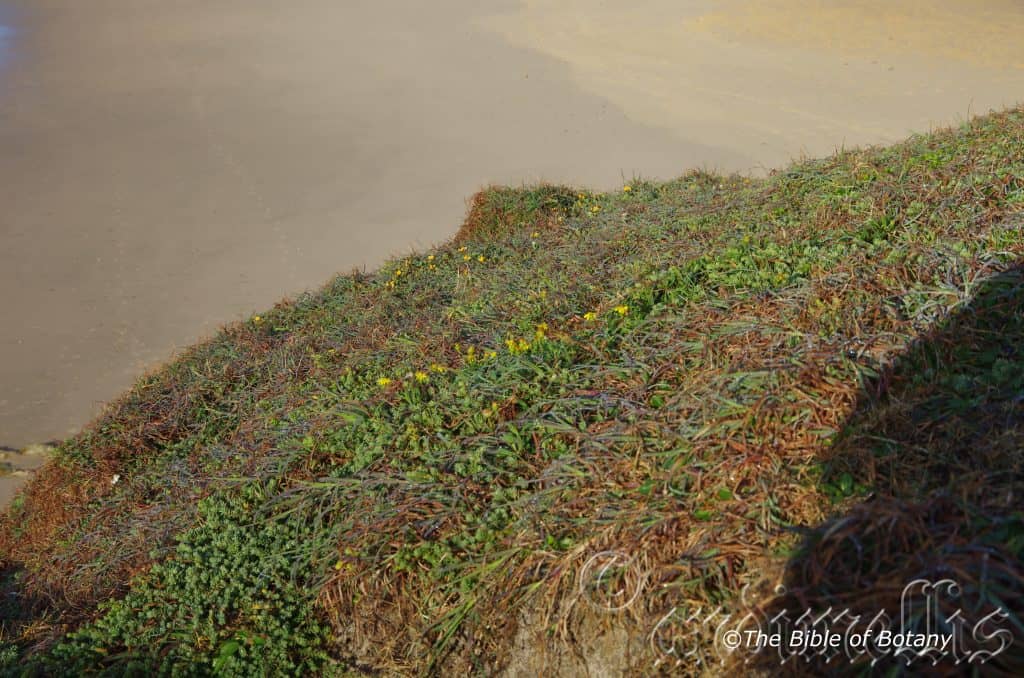
Moonee Headland NSW
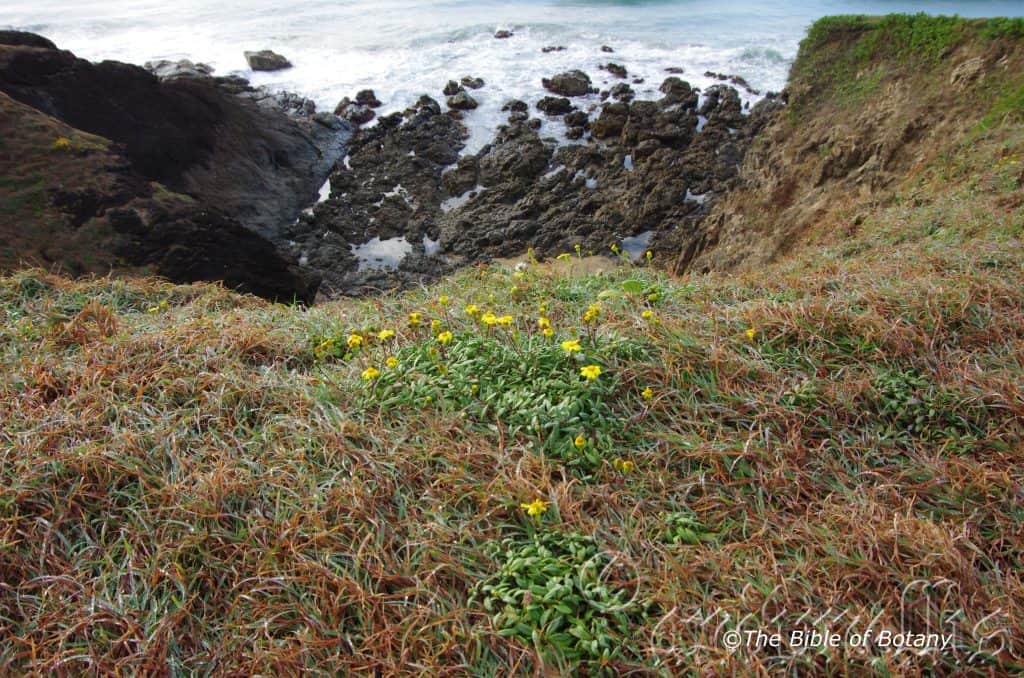
Moonee Headland NSW
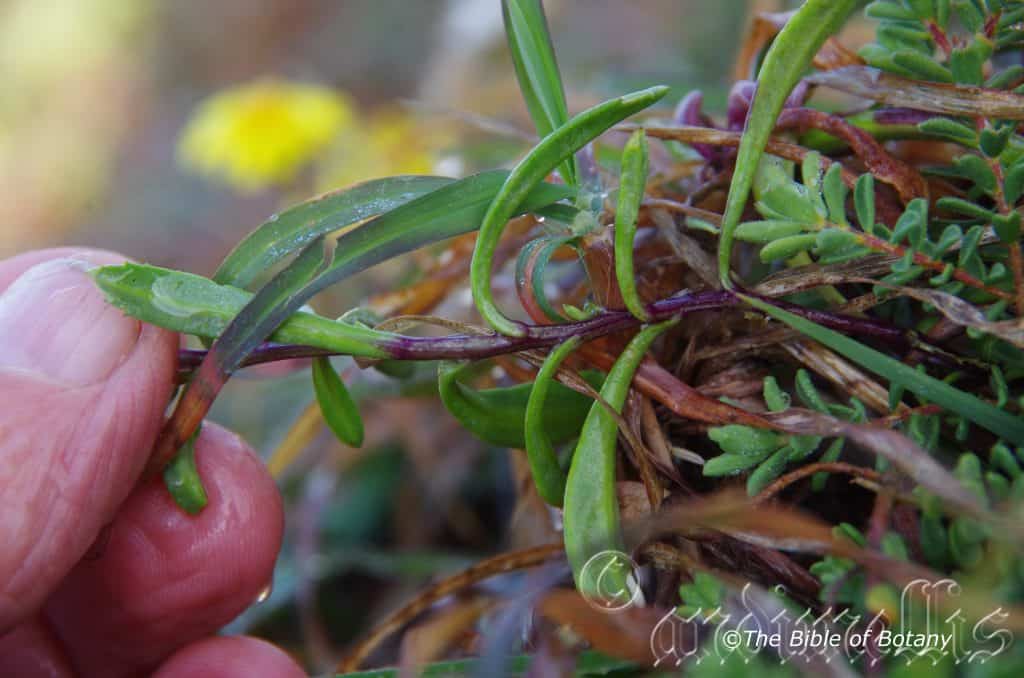
Moonee Headland NSW
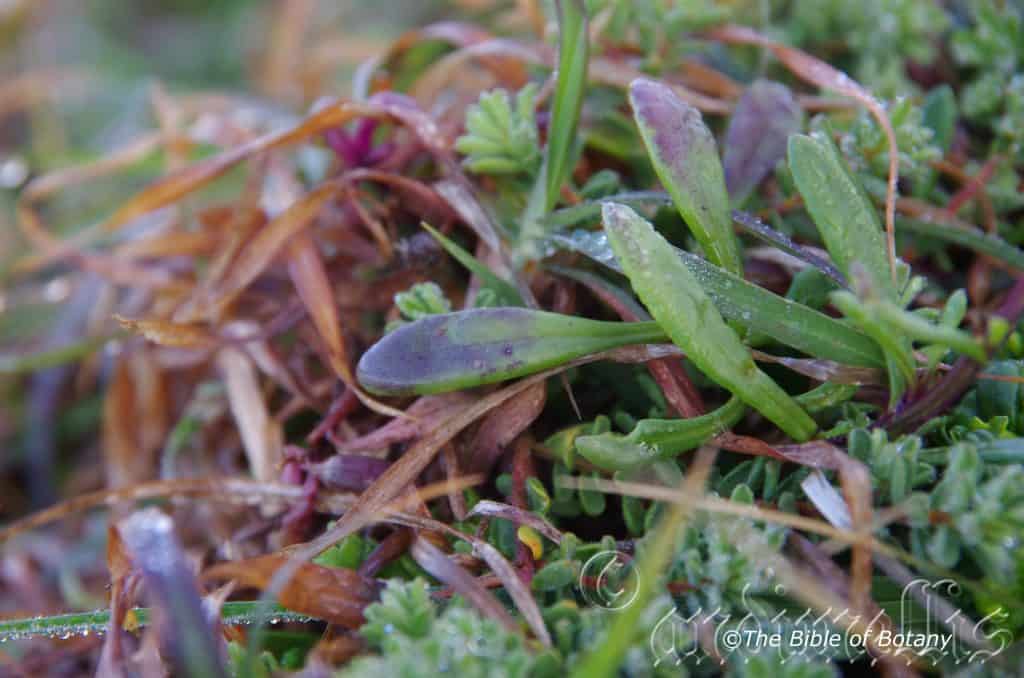
Moonee Headland NSW
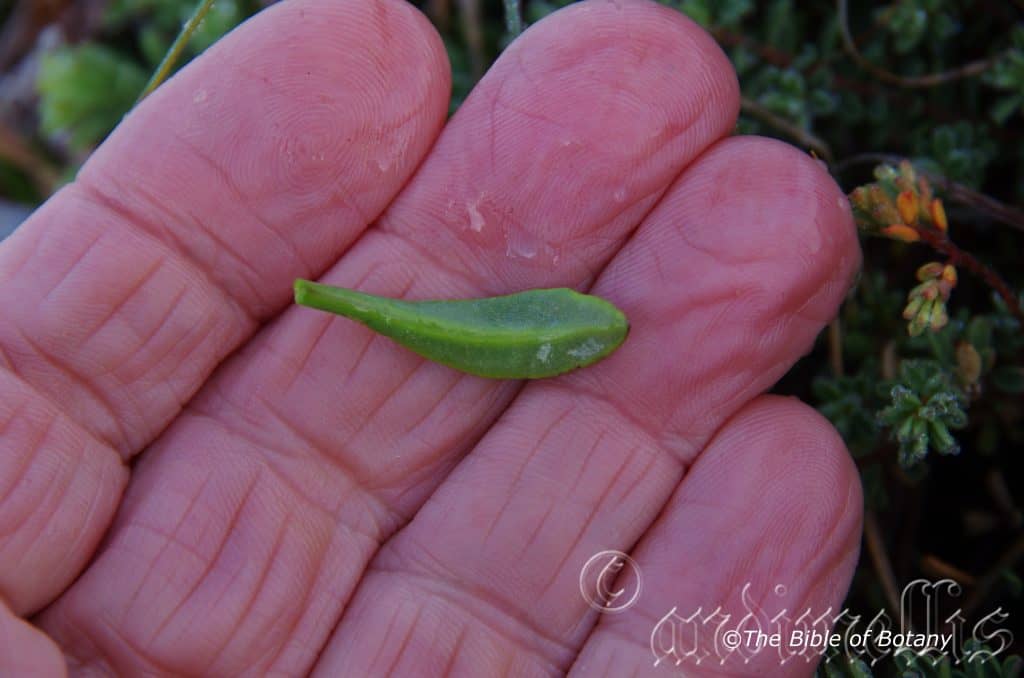
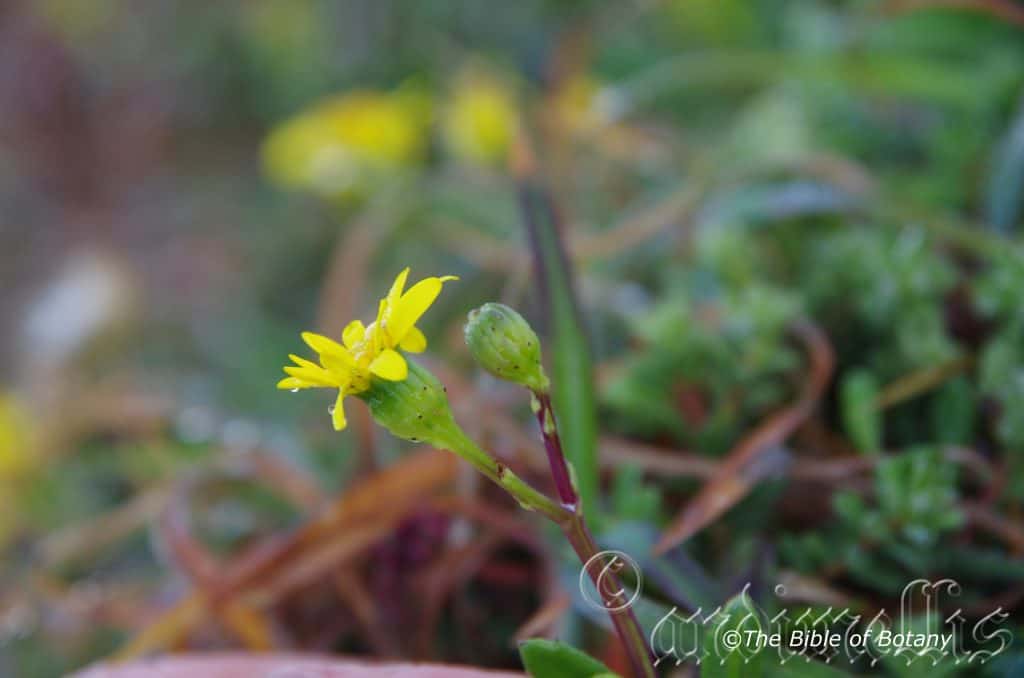
Moonee Headland NSW
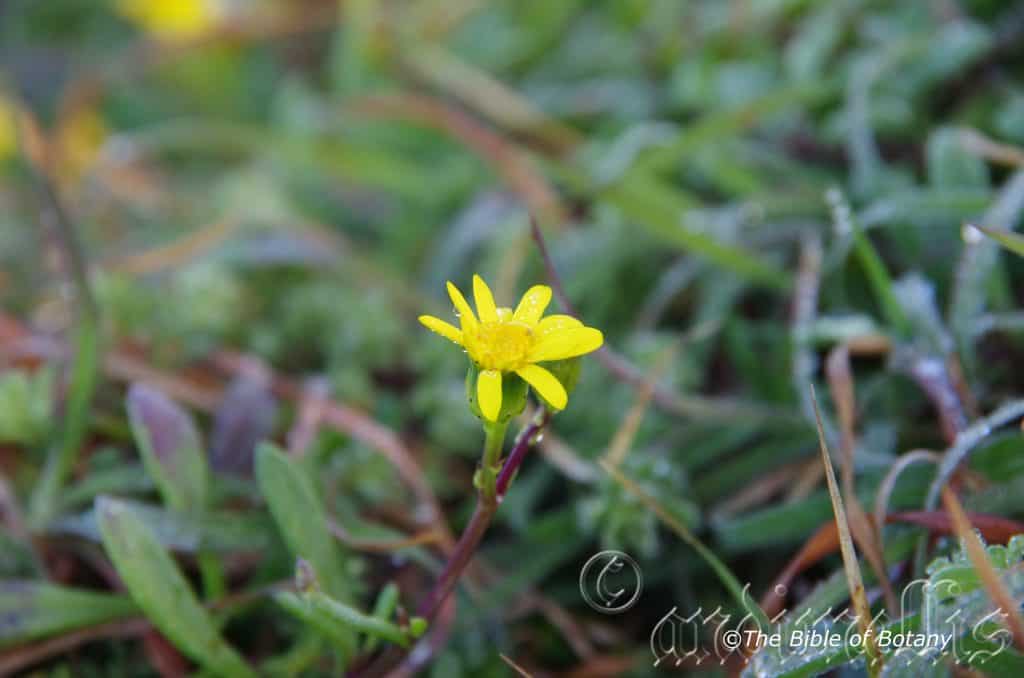
Moonee Headland NSW
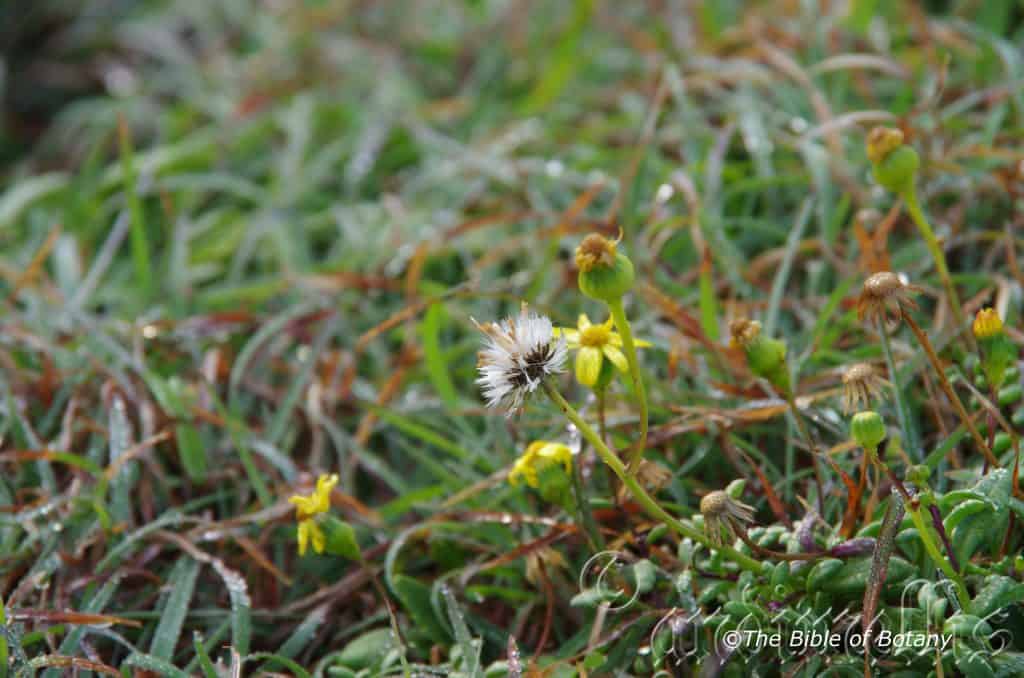
Moonee Headland NSW
Senecio pinnatifolius
Classification:
Unranked: Eudicots
Class: Asterids
Order: Asterales
Family: Asteraceae
Subfamily: Asteroideae
Supertribe: Seneciondae
Tribe: Senecioneae
Subtribe: Senecioninae
Genus: From Senescere/Senex, which is Ancient Greek for an old man. It refers to seeds which are covered in pale grey or white hairs like an old man’s beard.
Specie: From Pinna which is Latin for a pinna and Folium, which is Latin for foliage. It refers to leaves, which have divided leaf sections, where the clefts do not reach the main vein and are usually greater than 50mm of their length.
Variety: Senecio pinnatifolius var. alpinus. From Alpīnus which is Latin for the Alps. It refers to plants, which have their environments in subalpine areas of mountains below the permanent snow line.
Variety: Senecio pinnatifolius var. capillifolius. From Capillāre, which is Latin for thread and Folium, which is Latin for foliage. It refers to the leaves being somewhat acicular or like long hairs.
Variety: Senecio pinnatifolius var. lanceolatus. From Pinna which is Latin for a pinna and Folium, which is Latin for foliage. It refers to leaves, which have divided leaf sections, where the clefts do not reach the main vein and are usually greater than 50mm of their length.
Variety: Senecio pinnatifolius var. latilobus. From Latus which is Latin for broad and Lobós, which is Ancient Greek or Lobus which is Latin for a lobe. It refers to lobes, which are much wider than other species or sub species in the genus.
Variety: Senecio pinnatifolius var. leucocarpus. From Leukós, which is Ancient Greek for white and Karpós, which is Ancient Greek for a fruit. It refers to fruits, which are usually white.
Variety: Senecio pinnatifolius var. maritimus. From Marīnum, which is Latin for of the sea. It refers to plants, which grow along the coastline.
Variety: Senecio pinnatifolius var. pinnatifolius. From Pinna which is Latin for a pinna and Folium, which is Latin for foliage. It refers to leaves, which have divided leaf sections, where the clefts do not reach the main vein and are usually greater than 50mm of their length.
Variety: Senecio pinnatifolius var. serratus. From Serra/Serras, which are Latin for the teeth of a saw. It refers to structures or organ margins, which resemble the cutting edge of a saw.
Common Name: Variable Groundsel.
Distribution:
Senecio pinnatifolius var. alpinus is found south from Hanging Rock near Tamworth in north eastern New South Wales to Mount Baw Baw in southern Victoria. It occurs on at the higher altitudes on the Great Dividing Range. It also occurs in the central highlands of Tasmania.
Senecio pinnatifolius var. capillifolius is found on all the eastern Bass Strait Islands and far north eastern coastal Tasmania. There is an isolated population on Lawrence Rock at Portland in southern South Australia.
Senecio pinnatifolius var. lanceolatus is found in the southern portion of south eastern South Australia from Guichen Bay through the southern half of Victoria, the Bass Strait Islands and coastal Tasmania with disjunct populations further west on the lower Eyre Peninsula in southern South Australia.
Senecio pinnatifolius var. latilobus is found in the western portion of south western Western Australia south from Shark Bay to Bremer Bay with a few isolated populations further to the north east.
Senecio pinnatifolius var. leucocarpus is restricted to a single population in south west, Western Australia near Ranensthorpe.
Senecio pinnatifolius subsp. maritimus is found in the western quarter of south western Western Australia and the eastern third of Queensland and New South Wales through southern Victoria to the Narracoorte Coastal Plains in South Australia.
Senecio pinnatifolius var. pinnatifolius is found in the western quarter of south western Western Australia and the eastern third of Queensland and New South Wales through southern Victoria to the Narracoorte Coastal Plains in South Australia.
Senecio pinnatifolius var. serratus is found north west of Caloundra in southern Queensland to the Blue Mountains in New South Wales. It is mainly found on and east of the Great Dividing Range.
https://avh.ala.org.au/occurrences/search?taxa=Senecio+pinnatifolius#tab_mapView
Habitat Aspect Climate:
Senecio pinnatifolius prefers light dappled shade to full sun. It grows in open woodlands, dry forests or dry woodland heaths. The altitude ranges from 2 meters ASL to 900 meters ASL.
The temperatures range from minus 6 degrees in July to 40 degrees in January depending on the sub specie.
The rainfalls range from lows of 150mm to 2400mm average per annum depending on the sub specie.
Soil Requirements:
Senecio pinnatifolius prefers sandy loams to medium clays. The soils are usually derived from decomposed brown basalts, black basalts, shale, sandstones, laterites, granite and metamorphic rocks. The soils pH ranges 4.5pH to 7pH. It does not tolerate waterlogged soils. Non saline soils to moderately saline soils are tolerated.
Height & Spread:
Wild Plants: 0.3m to 1m by 0.6m to 1m.
Characteristics:
Senecio pinnatifolius grows as a sprawling to upright annual or perennial with straight, terete, pale green to deep green, glabrous stems.
The alternate leaves of Senecio pinnatifolius are extremely variable being finely pinnate to undivided.
The mid leaves of Senecio pinnatifolius var. alpinus when undivided are oblanceolate and longest midway along the stems and more elliptical near the apex of the stems. They measure 20mm to 100mm in length by 2mm to 9mm in width. The base is tapered then attenuate to the stems and are semi clasping or auriculate. The apexes are narrowly acute. The concolourous laminas are deep green, semi glossy to dull and glabrous. The leaf margins are denticulate to serrate, flat, decurve, or recurve and twisted or straight. The mid vein and main laterals are slightly prominent on the lower laminas. The petioles are sessile.
The mid leaves of Senecio pinnatifolius var. capillifolius are more
finely divided than the other sub species.
The mid leaves of Senecio pinnatifolius subsp. lanceolatus dissected and are ovate in outline. They measure 50mm to 150mm in length by 20mm to 100mm in width. The linear sections measure 25mm to 75mm in length by 5mm to 6mm in width. The base is tapered then attenuate to the stems and are semi clasping or auriculate. The apexes are narrowly acute. The concolourous laminas are deep green, semi glossy to dull and glabrous. The leaf is margins entire and flat. The mid vein and main laterals are slightly prominent on the lower laminas. The petioles are sessile glabrous or sparsely covered in white hirtellous hairs.
The mid leaves of Senecio pinnatifolius var. latilobus have wide lobes than the other sub species.
The mid carpels on Senecio pinnatifolius var. leucocarpus are
white.
The mid leaves of Senecio pinnatifolius var. pinnatifolius have
much longer lobes than the other sub species.
The mid leaves of Senecio pinnatifolius var. serratus are undivided or divided. It is oblanceolate with the longest leaves appearing midway along the stems and branches and measure 5mm to 150mm in length by 5mm to 30mm in width with the undivided leaves. The linear to narrow oblong divided leaves measure 5mm to 150mm in length by 1mm to 3mm in width. The base is truncate to cordate and is weakly clasping or sessile. The apexes are narrowly acute. The concolourous laminas are deep green, semi glossy to dull and glabrous. The leaf margins are denticulate to serrate and flat. The mid vein and main laterals are slightly prominent on the lower laminas.
Inflorescences of Senecio pinnatifolius are simple corymbs heads born from the upper leaf axils or are terminal. The pale green to deep green rachis and pedicels are glabrous or covered in white hirtellous hairs
The 1 to 30 individual flowers are campanulate and glabrous or covered in white hirtellous hairs. There are 12 to 21 involucral bracts. The lobes measure 0mm to 6mm in length. The bracteoles measure 0mm to 7mm in length.
The 4 to 8 ray florets are divaricate to decurving at the apexes. It is bright yellow, glabrous and measure 8mm to 15mm in length by 3mm to 6mm in width. The 40 to 80 individual flowers are deep yellow with white or pale yellow corollas. Senecio pinnatifolius’s flowers appear from early September through to early December with some flowers appearing throughout the year in favourable seasons. Senecio pinnatifolius’s flowers appear in July or from early September through to late December depending on the species.
Inflorescences of Senecio pinnatifolius var. alpinus are simple corymbs heads born from the upper leaf axils or are terminal. There are 3 to 15 flowers on the cymes. The deep green rachis and pedicels are sparsely to densely covered in white pulverulent hairs. The rachises measure 30mm to 40mm in length, while the pedicels 20mm to 30mm respectively.
The flowers are broad campanulate and glabrous except for the apices. There are 12 to 14 involucral bracts which measure 7mm to 10mm in length and together have a diameter of 8mm to 10mm. The lobes measure 2mm to 3.5mm in length. The bracteoles measure 1.5mm to 3mm in length and are densely covered in pulverulent hairs which have deep purple to black apexes.
The 8 to 13 ray florets are divaricate to decurving at the apexes. It is bright yellow, glabrous and measure 8mm to 15mm in length by 3mm to 6mm in width. The 60 to 80 individual flowers are deep yellow with white or pale yellow corollas.
Inflorescences of Senecio pinnatifolius var. lanceolatus are simple corymbs heads born from the upper leaf axils or are terminal. There are 2 to 20 flowers on the corymbs. The deep green rachis and pedicels are glabrous or occasionally sparsely covered in white hirtellous hairs. The rachises measure 30mm to 40mm in length, while the pedicels 20mm to 30mm respectively.
The flowers are broad campanulate and glabrous except for the apices. There are 12 to 21 involucral bracts which measure 4mm to 6mm in length and together have a diameter of 8mm to 10mm. The lobes measure 2mm to 3.5mm in length. The bracteoles measure 1.5mm to 3mm in length and are densely covered in pulverulent hairs which have deep purple to black apexes.
The 4 to 14 ray florets are divaricate to decurving at the apexes. It is bright yellow, glabrous and measure 8mm to 15mm in length by 3mm to 6mm in width. The 40 to 80 individual flowers are deep yellow with white or pale yellow corollas. The ligules measure 5mm to 12mm in length.
Inflorescences of Senecio pinnatifolius var. serratus are simple corymbs heads born from the upper leaf axils or are terminal. There are 3 to 20 flowers on the corymbs. The deep green rachis and pedicels are glabrous or occasionally sparsely covered in white hirtellous hairs. The rachises measure 30mm to 40mm in length, while the pedicels 20mm to 30mm respectively.
The flowers are broad campanulate and glabrous except for the apices. There are 12 to 21 involucral bracts which measure 4mm to 6mm in length and together have a diameter of 8mm to 10mm. The lobes measure 2mm to 3.5mm in length. The 6 to 10 bracteoles measure 1.5mm to 2.5mm in length and are sparsely covered in puberulent hairs which have deep purple apexes.
The 8 to 13 ray florets are divaricate to decurving at the apexes. It is bright yellow, glabrous and measure 8mm to 15mm in length by 3mm to 6mm in width. The 40 to 80 individual flowers are deep yellow with white or pale yellow corollas. The ligules measure 5mm to 12mm in length.
The fruits of Senecio pinnatifolius are long linear achenes. The achenes are glabrous and measure 2mm to 5mm in length by 1mm to 1.2mm in diameter. The pale yellow to pale fawn pappus measure 3mm to 5mm in length and are in narrow bands.
The fruits of Senecio pinnatifolius var. alpinus are long linear achenes. The achenes are glabrous or with papillosa hairs in narrow bands and measure 2.5mm to 3.5mm in length by 0.8mm to 1mm in diameter. The pale yellow to pale fawn pappus measure 3mm to 5mm in length and are in narrow bands.
The fruits of Senecio pinnatifolius subsp. lanceolatus are long linear achenes. The achenes are pale olive brown, brown or golden brown and are glabrous or covered in white pulverulent hairs. The pappus measure 2mm to 4.5mm in length by 0.8mm to 1mm in diameter. The pale yellow to pale fawn caduceus pappus measure 3mm to 5mm in length and are in narrow bands.
The fruits of Senecio pinnatifolius var. serratus are long linear achenes. The achenes are pale olive brown, brown or blackish-brown and are glabrous or covered in white papillosa hairs in grooves or bands.
Wildlife:
Senecio pinnatifolius are host to the Magpie butterfly, Nyctemera amica.
Cultivation:
Senecio pinnatifolius is a magnificent medium size perennial herb that should be grown in both small and large rockeries. In cultivation it will grow from 0.3 meters to 0.8 meters in height by 0.5 meters to 1 meter in diameter when grown in the open.
It grows well on all soils where deep leaf litter keeps the soil cool and moisture at an even level. If these requirements are met they can cope with temperatures as low as minus 5 degrees and up to 40 degrees. It is moderately drought resistant once established.
Add to the above, if it is given an adequate supply of water and a little native fertilizer on a regular basis the plants will respond with good flowering over a long period.
Senecio pinnatifolius would make outstanding contribution to any heath garden however care should be taken to which sub specie is selected. Here they can be used as the taller growing plant scattered throughout the heath scene or tip pruned for a lower more spreading small shrub. When you design a flat heath garden in which Senecio pinnatifolius is well suited don’t use contours to display the plants as heath lands are almost always flat or have a slight rise. Plants must be planted close enough to touch each other at maturity and be short so you can see over the tallest ones with the exception of one or two plants at the most. These will be feature plants. The idea is to achieve a feeling of expansive flatness. This can be achieved with using Senecio pinnatifolius’s deep green linear or pinnate leaves allow them to contrast with finer pale green or soft grey to glaucous coloured foliages. Use a lot of plants like Verticordia specie which have pink or red flowers as the yellow flowers of this Senecio are very strong. Mix them with other smaller shrubs so none of them dominate the scene but blend in to give a mosaic of foliage colours that you oversee. Here I immediately think of Actinotis helianthi or Grevillea thelemanniana for two great contrasting foliages.
It is also ideal planted as a fill in plant in arid gardens or planted between large rocks and boulders on banks to add colour.
This species was known earlier as Senecia lautus, which is now only known from New Zealand.
Propagation:
Seeds: The seeds of Senecio pinnatifolius can be removed easily from the flower heads as the first seeds begin to disperse.
The seeds are best sown after scarification. Place the seeds in a small calico bag and place them in the vegetable crisper for 12 to 14 days. Do not freeze the seeds.
Sow treated seeds directly into a seed raising mix, keeping them moist not wet. Do not over water as the seeds will rot off before germination takes place. Place the trays in a warm shaded area with no more than 20mm shade cloth in the bush house. When the seedlings are 20mm to 25mm tall, prick them out and plant them into 50mm native tubes using a good organic mix.
Fertilize using Seaweed, fish emulsion or organic chicken pellets soaked in water and apply the liquid on an alternate basis. Fertilize every two months.
As the seedlings roots reach the bottom of the tubes plant them out into their permanent position. Do not delay or flowering will be greatly affected.
Cuttings: Fortunately Senecio pinnatifolius cuttings strike easy. Use 100mm to 200mm long tip cuttings or lateral shoots from the present season’s growth. Take them in warmer months of the year. Remove half the leaves from the bottom section being careful not to tear the bark.
1 Prepare the cutting mix by adding two thirds sharp clean river sand, one third peat or one third perlite. These ingredients must be sterilized,
2 Select good material from non diseased plants,
3 Select semi green stems for cuttings. Look for a stem with two or three nodes,
4 Place the cutting on a flat, hard surface, and make a clean cut down one side of the cutting at the base for 10mm with a sharp sterile knife or razor blade. – This scarification of the node will increase the chances of roots emerging from this spot. Now remove all but one or two the leaves, leaving the apex leaves in tact. If the leaves are very large in proportion to the stem, cut off the apical halves.
5 Hormones are not required,
6 Use a small dipple stick or old pencil to poke a hole into the soilless potting mix. Ensure the hole is slightly larger than the stem diameter and be careful not to damage the base,
7 I like to place the tubes in bucket with holes drilled in the bottom to allow excess water to drain out. A plastic bag that fits over the bucket is ideal to help maintain temperature and moisture. Place in a semi shaded, warm position like under 50mm shade cloth.
8 When the cuttings have struck, open the bag to allow air circulation for a few days to a week,
9 Once hardened off remove the cuttings from the bag and allow to further hardening for a few more days to a week,
10 Transplant into a good potting mix to grow on.
Fertilize using seaweed, fish emulsion or organic chicken pellets soaked in water on an alternate basis. Fertilize every two months until the plants are established then twice annually in early September or March to maintain health, vitality and better flowering.
Further Comments from Readers:
“Hi reader, it seems you use The Bible of Botany a lot. That’s great as we have great pleasure in bringing it to you! It’s a little awkward for us to ask, but our first aim is to purchase land approximately 1,600 hectares to link several parcels of N.P. into one at The Pinnacles NSW Australia, but we need your help. We’re not salespeople. We’re amateur botanists who have dedicated over 30 years to saving the environment in a practical way. We depend on donations to reach our goal. If you donate just $5, the price of your coffee this Sunday, We can help to keep the planet alive in a real way and continue to bring you regular updates and features on Australian plants all in one Botanical Bible. Any support is greatly appreciated. Thank you.”
In the spirit of reconciliation we acknowledge the Bundjalung, Gumbaynggirr and Yaegl and all aboriginal nations throughout Australia and their connections to land, sea and community. We pay our respect to their Elders past, present and future for the pleasures we have gained.
Senecio prenanthoides
Classification:
Unranked: Eudicots
Class: Asterids
Order: Asterales
Family: Asteraceae
Subfamily: Asteroideae
Supertribe: Seneciondae
Tribe: Senecioneae
Subtribe: Senecioninae
Genus: From Senescere/Senex, which is Ancient Greek for an old man. It refers to seeds which are covered in pale grey or white hairs like an old man’s beard.
Specie: From Prenes, which is Ancient Greek for face down, ántha/ánthos, which are Ancient Greek for the male reproductive organs of a flower or the flower and Eîdos/Oides, which is Ancient Greek for alike or similar to. It refers to plants, which resemble the Prenanthes genus in that the flowers are bent downwards.
Sub specie:
Common Name:
Distribution:
Senecio prenanthoides is found in several disjunct populations on the Great Dividing Range from Mount Misch near Tolga to the Bunya Mountains in Queensland. From the Bunya Mountains it is found south to the southern tip on the eastern half of mainland Tasmania. It extends westward to the Narracoorte Coastal Plains in south eastern South Australia and from The Gap to Glen Shera Swamp on southern York Peninsula. There is also an isolated population near Cobar in central New South Wales.
https://avh.ala.org.au/occurrences/search?taxa=Senecio+prenanthoides#tab_mapView
Habitat Aspect Climate:
Senecio prenanthoides prefer partial shade to full sun. It usually grows in moist Eucalyptus forests, dry Eucalyptus forests or Eucalyptus woodlands on slopes and flats. The altitude ranges from 1 meter ASL to 1380 meters ASL.
The temperatures range from minus 4 degrees in July to 38 degrees in January.
The rainfalls range from lows of 500mm to 1600mm average per annum.
Soil Requirements:
Senecio prenanthoides prefers average to better quality rocky loams, coarse sandy loams to medium clays. The soils are usually derived from decomposed brown basalts, black basalts including rhyolitic soils, shales, metamorphic rocks and granites or at times sandstones. The soils pH ranges from 5pH to 6.5pH. It does not tolerate waterlogged soils. Non saline soils to moderately saline soils are tolerated.
Height & Spread:
Wild Plants: 0.2m to 0.8m by 0.15m to 0.2m.
Characteristics:
Senecio prenanthoides grows as an erect perennial herb usually unbranched from base or at times much branched. The lower stems are covered in white matted hairs while the apical stems are glabrous.
The alternate, lower leaves of Senecio prenanthoides are oblanceolate and measure 50mm to 100mm in length by 5mm to 12mm in width.
The middle and upper leaves narrow oblanceolate and measure 30m to 12mm in length by 2m to 6m in width.
The sessile leaves taper to being long attenuate and are truncate at the base while the apex is acute to tapering obtuse. The discolourous laminas are mid blue-green to mid grey-green, dull, and slightly scabrous and sparsely covered in white matted hairs on the upper laminas while the lower laminas are paler tinged purple to purple with mid blue-green to mid grey-green margins and mid vein and sparsely covered in white matted hairs. The laminas are flat to decurve gently from the mid vein to the margins while the margins are regularly toothed. The mid vein is slightly prominent on the lower lamina and is clearly visible and forms a groove on the upper lamina.
The inflorescences of Senecio prenanthoides are simple corymbosa born from the terminals. The mid green pedicels are glabrous and measure 5mm to 8mm in length. The few to many cylindrical heads measure 1.5mm to 2.5mm in diameter. The 11 to 13 involucral bracts measure 6mm to 7mm in length with 2 to 4 prominent longitudinal veins. There are 2 to 6 bracteoles. The 25 to 35 florets measure 6.5mm to 8mm in length. The outer florets are filiform while the inner florets are tubular. The flowers appear from early September through to early December.
Senecio prenanthoides’s fruits are long linear achenes. The rostrate achenes are glabrous, deep brown and measure 3mm to 3.5mm in length by 0.9mm to 1mm in diameter. The glossy, white filiform pappus measure 6mm to 8mm in length.
Confusing Specie:
The exotic fire weedSenecio madagascariensis has given our native species a bad name and often causes confusion. It is normally found on derogated land especially cattle properties where the pH decrease to an extent where most plants cannot compete. It grows from 200mm to 600mm in height. Leaves narrow elliptical to narrow lanceolate and slightly decurve towards the margins. Floral bracts number 19 to 21.Floral Rays decurve not divaricate. Seeds 2.5mm long with 6.5mm pappus.
We had some terrible arguments with our local authority for 5 years who wanted us to blanket cover the property with poisonous chemicals for this weed and Parramatta grass. We refused and continued to carry out good organic farming practices on the property. After 5 years the weeds completely disappeared without one drop of chemical being sprayed.
Wildlife:
Senecio prenanthoides support native bees and numerous native flies and small butterflies that collect the pollen.
Cultivation:
Senecio prenanthoides is a magnificent medium perennial herb that should be grown in both small and large rockeries. In cultivation it grows from 0.6 meter to 0.8 meters in height by 0.2 meters to 0.3 meters in diameter when grown in the open. It is best planted in small clusters of 5 to 9 plants so it gives a denser look in the garden.
It grows well on all soils where deep leaf litter keeps the soil cool and moisture at an even level. If these requirements are met it can cope with temperatures as low as minus 3 degrees and up to 36 degrees. It is moderately drought resistant once established.
Add to the above, if it is given an adequate supply of water and a little native fertilizer on a regular basis the plants will respond with good flowering over a longer period.
Senecio prenanthoides would make outstanding contribution to a moist heath garden. Here they can be used as the taller growing plant scattered throughout the heath scene or tip pruned for a lower more spreading small shrub. When you design a flat heath garden in which Senecio prenanthoides is well suited don’t use contours to display the plants as heath lands are almost always flat or have a slight rise. Plants must be planted close enough to touch each other at maturity and be short so you can see over the tallest ones with the exception of one or two plants at the most. These will be feature plants. The idea is to achieve a feeling of expansive flatness. This can be achieved with using Senecio prenanthoides’s bright green linear leaves and having them contrasting with finer pale green or soft grey to glaucous coloured foliages. Use a lot of plants like Pattersonia specie, Dampier specie or something a little taller would be Boronia ledifolia which have pink or red flowers as the yellow flowers of this Senecio are very strong. Mix them with other smaller shrubs so none of them dominate the scene but blend in to give a mosaic of foliage colours that you oversee. Here I immediately think of Actinotis helianthi or Grevillea thelemanniana for two great contrasting foliages.
Propagation:
Seeds: The seeds of Senecio prenanthoides can be removed easily from the flower heads as the first seeds begin to disperse.
The seeds are best sown after scarification. Place the seeds in a small calico bag and place them in the vegetable crisper for 12 to 14 days. Do not freeze the seeds.
Sow treated seeds directly into a seed raising mix, keeping them moist not wet. Do not over water as the seeds will rot off before germination takes place. Place the trays in a warm shaded area with no more than 20mm shade cloth in the bush house. When the seedlings are 20mm to 25mm tall, prick them out and plant them into 50mm native tubes using a good organic mix.
As the seedlings roots reach the bottom of the tubes plant them out into their permanent position. Do not delay or flowering will be greatly affected.
Cuttings: Fortunately Senecio prenanthoides cuttings strike easy. Use 100mm to 200mm long tip cuttings or lateral shoots from the present season’s growth. Take them in warmer months of the year. Remove half the leaves from the bottom section being careful not to tear the bark.
1 Prepare the cutting mix by adding two thirds sharp clean river sand, one third peat or one third perlite. These ingredients must be sterilized,
2 Select good material from non diseased plants,
3 Select semi green stems for cuttings. Look for a stem with two or three nodes,
4 Place the cutting on a flat, hard surface, and make a clean cut down one side of the cutting at the base for 10mm with a sharp sterile knife or razor blade. – This scarification of the node will increase the chances of roots emerging from this spot. Now remove all but one or two the leaves, leaving the apex leaves in tact. If the leaves are very large in proportion to the stem, cut off the apical halves.
5 Hormones are not required,
6 Use a small dipple stick or old pencil to poke a hole into the soilless potting mix. Ensure the hole is slightly larger than the stem diameter and be careful not to damage the base,
7 I like to place the tubes in bucket with holes drilled in the bottom to allow excess water to drain out. A plastic bag that fits over the bucket is ideal to help maintain temperature and moisture. Place in a semi shaded, warm position like under 50mm shade cloth.
8 When the cuttings have struck, open the bag to allow air circulation for a few days to a week,
9 Once hardened off remove the cuttings from the bag and allow to further hardening for a few more days to a week,
10 Transplant into a good potting mix to grow on.
Fertilize using seaweed, fish emulsion or organic chicken pellets soaked in water on an alternate basis. Fertilize every two months until the plants are established then twice annually in early September or March to maintain health, vitality and better flowering.
Further Comments from Readers:
“Hi reader, it seems you use The Bible of Botany a lot. That’s great as we have great pleasure in bringing it to you! It’s a little awkward for us to ask, but our first aim is to purchase land approximately 1,600 hectares to link several parcels of N.P. into one at The Pinnacles NSW Australia, but we need your help. We’re not salespeople. We’re amateur botanists who have dedicated over 30 years to saving the environment in a practical way. We depend on donations to reach our goal. If you donate just $5, the price of your coffee this Sunday, We can help to keep the planet alive in a real way and continue to bring you regular updates and features on Australian plants all in one Botanical Bible. Any support is greatly appreciated. Thank you.”
In the spirit of reconciliation we acknowledge the Bundjalung, Gumbaynggirr and Yaegl and all aboriginal nations throughout Australia and their connections to land, sea and community. We pay our respect to their Elders past, present and future for the pleasures we have gained.
Senecio tenuiflorus
Classification:
Unranked: Eudicots
Class: Asterids
Order: Asterales
Family: Asteraceae
Subfamily: Asteroideae
Supertribe: Seneciondae
Tribe: Senecioneae
Subtribe: Senecioninae
Genus: From Senescere/Senex, which is Ancient Greek for an old man. It refers to seeds which are covered in pale grey or white hairs like an old man’s beard.
Specie: From Tenui which is Latin for slender and fine Flōris which is Latin for a flower or Flōs which is the Roman Goddess of spring and flowers and Um, which is Greek/Latin for a degree. It refers to petals, which are much more slender than other species in the genus.
Sub specie:
Common Name:
Distribution:
Senecio tenuiflorus is found in several disjunct populations in southern central Australia and again in the eastern Australia. It is found in an area bounded by the coast from Coffin Bay, Kanyaka on the Flinders Ranges in South Australia and the lower Glenelg River in far south western Victoria.
In the east it is found in an area bounded by the coast from Keppel’s Bay into Longreach Queensland to Woods Reef near Tamworth, Monteagle and Australian Bush Heritage Reserve, Brogo in southern New South Wales.
https://avh.ala.org.au/occurrences/search?taxa=Senecio+tenuiflorus#tab_mapView
Habitat Aspect Climate:
Senecio tenuiflorus prefers partial shade to full sun. It grows in openings or along creeks and rivers in warm well developed sub-tropical rainforests, tropical rainforests as well as moist gallery forests or moist Eucalyptus forests on the eastern side of the Great Dividing Range. The altitude ranges from 2 meter ASL to 560 meters ASL.
The temperatures range from minus 3 degrees in July to 36 degrees in January.
The rainfalls range from lows of 300mm to 1550mm average per annum.
Soil Requirements:
Senecio tenuiflorus prefers rocky light clays, sandy loams to medium clays. The soils are usually derived from decomposed sandstones, black basalts, granites or at times metamorphic rocks. The soils pH ranges from 5pH to 6pH. It does not tolerate waterlogged soils. Non saline soils to moderately saline soils are tolerated.
Height & Spread:
Wild Plants: 0.4m to 1m by 0.3m to 0.4m.
Characteristics:
Senecio tenuiflorus grows as an erect or ascending annual or biennial herb with few stems which are more prolific immediately below inflorescence. The stems are sparsely covered in white matted hairs.
The alternate, crowded lower leaves of Senecio tenuiflorus are oblanceolate and measure 40mm to 100mm in length by 5mm to 15mm in width. The middle leaves are lanceolate and measure 30mm to 80mm in length by 2mm to 8mm in width. The bases are caudate attenuate while the apexes are acute to tapering obtuse. The discolourous laminas are mid grey-green to mid blue-green, dull scabrous and very sparsely covered in white matted hairs on the upper laminas while the lower laminas are paler, whitish or mid purple-pink and covered in long, white, bristly multicellular with tapering filaments. The obtuse mid vein is prominent on the lower laminas and is clearly visible on the upper lamina where it forms a groove. The margins are entire to irregularly tooth.
The inflorescences of Senecio tenuiflorus are simple corymbosa heads born from the terminals. The mid green pedicels are glabrous and measure 12mm to 18mm in length. The heads are narrow cylindrical and measure 2mm to 3mm in diameter. The 9 to 13 involucral bracts measure 7mm to 8mm in length with 1 prominent vein. There are 3 to 5 bracteoles. The 20 to 55 florets measure 7mm to 8mm in length. The outer florets are filiform while the inner florets are tubular. The flowers appear from early December to May.
Senecio tenuiflorus’s fruits are long linear achenes with faintly angulated ribs. The reddish-brown achenes are glabrous and measure 2.2mm to 2.5mm in length by 0.7mm to 0.8mm in diameter. The pale pink to pale fawn pink pappus measure 6mm to 8mm in length.
Wildlife:
Senecio tenuiflorus support native bees and numerous native flies and small butterflies that collect the pollen.
Cultivation:
Senecio tenuiflorus is a magnificent medium perennial herb that should be grown in both small and large rockeries. In cultivation it grows from 0.8 meters to 1 meter in height by 0.3 meters to 0.4 meter in diameter when grown in the open. It is best planted in small clusters of 4 to 8 to give the best displays when in flower.
It grows well on all soils where deep leaf litter keeps the soil cool and moisture at an even level. If these requirements are met they can cope with temperatures as low as minus 3 degrees and up to 38 degrees. It is moderately drought resistant once established.
Add to the above, if it is given an adequate supply of water and a little native fertilizer on a regular basis the plants will respond with good flowering over a longer period.
Senecio tenuiflorus would make a good contribution to a moist heath garden. Here they can be used as the taller growing plant scattered throughout the heath scene or tip pruned for a lower more spreading small shrub. When you design a flat heath garden in which Senecio tenuiflorus is well suited don’t use contours to display the plants as heath lands are almost always flat or have a slight rise. Plants must be planted close enough to touch each other at maturity and be short so you can see over the tallest ones with the exception of one or two plants at the most. These will be feature plants. The idea is to achieve a feeling of expansive flatness. This can be achieved with using Senecio tenuiflorus’s bright green linear leaves and having them contrasting with finer pale green or soft grey to glaucous coloured foliages. Use a lot of plants like Verticordia specie which have pink or red flowers as the yellow flowers of Senecio tenuiflorus are very strong. Mix them with other smaller shrubs so none of them dominate the scene but blend in to give a mosaic of foliage colours that you oversee. Here I immediately think of Actinotis helianthi or Grevillea thelemanniana for two great contrasting foliages.
The exotic fire weed Senecio madagascariensis has given our native species a bad name and often causes confusion. It is normally found on derogated land especially cattle properties where the pH decrease to an extent where most plants cannot compete. It grows from 200mm to 600mm in height. Leaves narrow elliptical to narrow lanceolate and slightly decurve towards the margins. Floral bracts number 19 to 21.Floral Rays decurve not divaricate. Seeds 2.5mm long with 6.5mm pappus.
We had some terrible arguments with our local authority for 5 years who wanted us to blanket cover the property with poisonous chemicals for this weed and Parramatta grass. We refused and continued to carry out good organic farming practices on the property. After 5 years the weeds completely disappeared without one drop of chemical being sprayed.
Propagation:
Seeds: The seeds of Senecio tenuiflorus’s can be removed easily from the flower heads as the first seeds begin to disperse.
The seeds are best sown after scarification. Place the seeds in a small calico bag and place them in the vegetable crisper for 12 to 14 days. Do not freeze the seeds.
Sow treated seeds directly into a seed raising mix, keeping them moist not wet. Do not over water as the seeds will rot off before germination takes place. Place the trays in a warm shaded area with no more than 20mm shade cloth in the bush house. When the seedlings are 20mm to 25mm tall, prick them out and plant them into 50mm native tubes using a good organic mix.
As the seedlings roots reach the bottom of the tubes plant them out into their permanent position. Do not delay or flowering will be greatly affected.
Cuttings: Fortunately Senecio tenuiflorus cuttings strike easy. Use 100mm to 200mm long tip cuttings or lateral shoots from the present season’s growth. Take them in warmer months of the year. Remove half the leaves from the bottom section being careful not to tear the bark.
1 Prepare the cutting mix by adding two thirds sharp clean river sand, one third peat or one third perlite. These ingredients must be sterilized,
2 Select good material from non diseased plants,
3 Select semi green stems for cuttings. Look for a stem with two or three nodes,
4 Place the cutting on a flat, hard surface, and make a clean cut down one side of the cutting at the base for 10mm with a sharp sterile knife or razor blade. – This scarification of the node will increase the chances of roots emerging from this spot. Now remove all but one or two the leaves, leaving the apex leaves in tact. If the leaves are very large in proportion to the stem, cut off the apical halves.
5 Hormones are not required,
6 Use a small dipple stick or old pencil to poke a hole into the soilless potting mix. Ensure the hole is slightly larger than the stem diameter and be careful not to damage the base,
7 I like to place the tubes in bucket with holes drilled in the bottom to allow excess water to drain out. A plastic bag that fits over the bucket is ideal to help maintain temperature and moisture. Place in a semi shaded, warm position like under 50mm shade cloth.
8 When the cuttings have struck, open the bag to allow air circulation for a few days to a week,
9 Once hardened off remove the cuttings from the bag and allow to further hardening for a few more days to a week,
10 Transplant into a good potting mix to grow on.
Fertilize using seaweed, fish emulsion or organic chicken pellets soaked in water on an alternate basis. Fertilize every two months until the plants are established then twice annually in early September or March to maintain health, vitality and better flowering.
Further Comments from Readers:
“Hi reader, it seems you use The Bible of Botany a lot. That’s great as we have great pleasure in bringing it to you! It’s a little awkward for us to ask, but our first aim is to purchase land approximately 1,600 hectares to link several parcels of N.P. into one at The Pinnacles NSW Australia, but we need your help. We’re not salespeople. We’re amateur botanists who have dedicated over 30 years to saving the environment in a practical way. We depend on donations to reach our goal. If you donate just $5, the price of your coffee this Sunday, We can help to keep the planet alive in a real way and continue to bring you regular updates and features on Australian plants all in one Botanical Bible. Any support is greatly appreciated. Thank you.”
In the spirit of reconciliation we acknowledge the Bundjalung, Gumbaynggirr and Yaegl and all aboriginal nations throughout Australia and their connections to land, sea and community. We pay our respect to their Elders past, present and future for the pleasures we have gained.
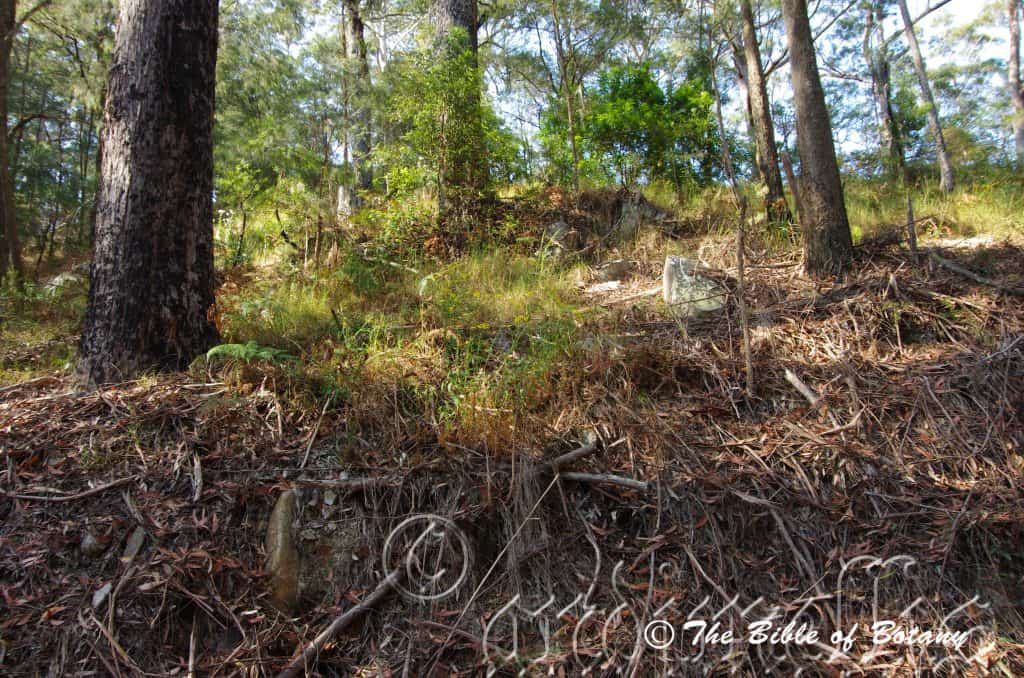
North Brother National Park NSW
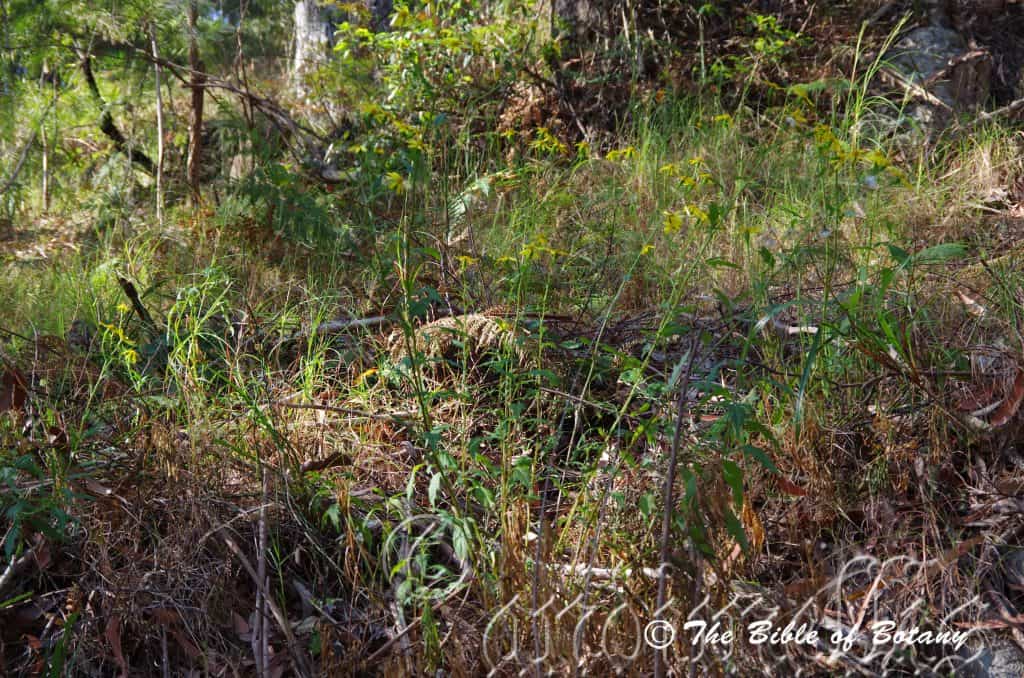
North Brother National Park NSW
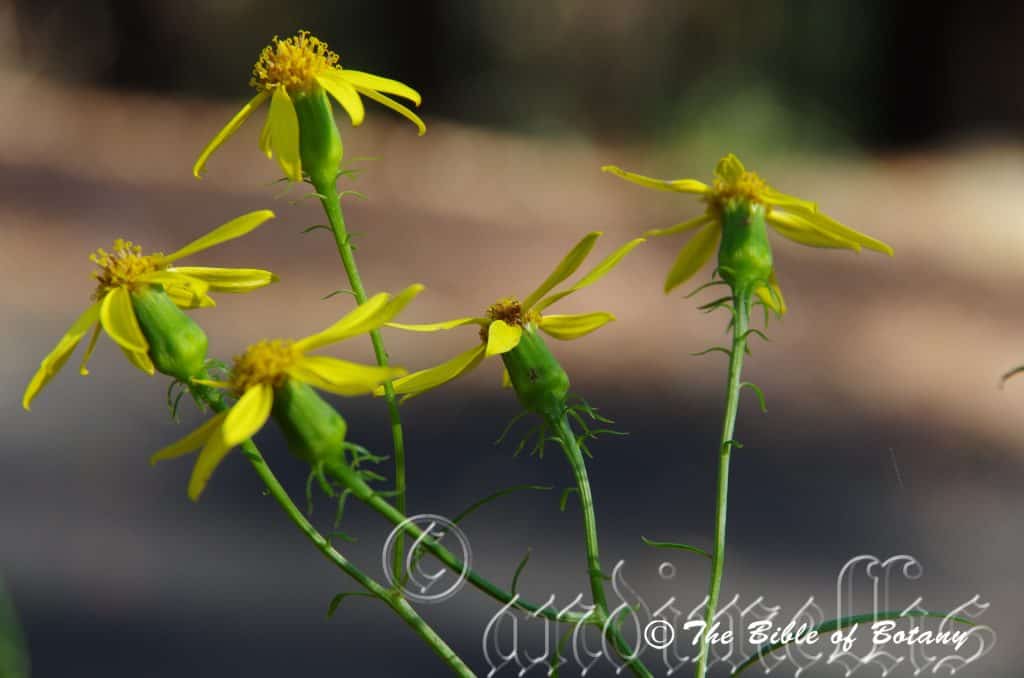
North Brother National Park NSW
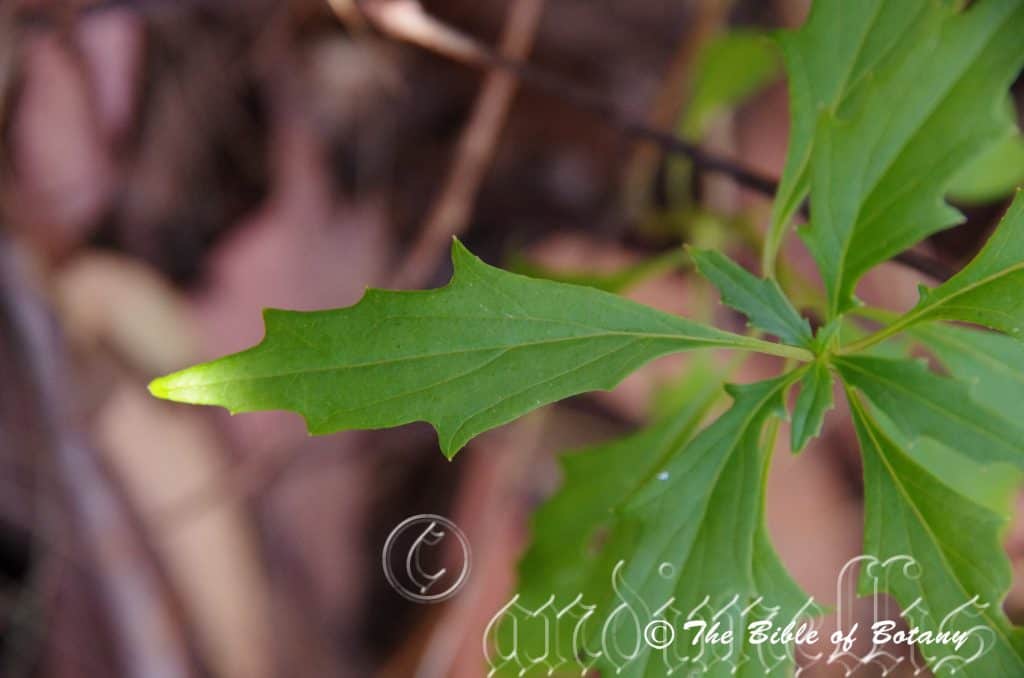
North Brother National Park NSW
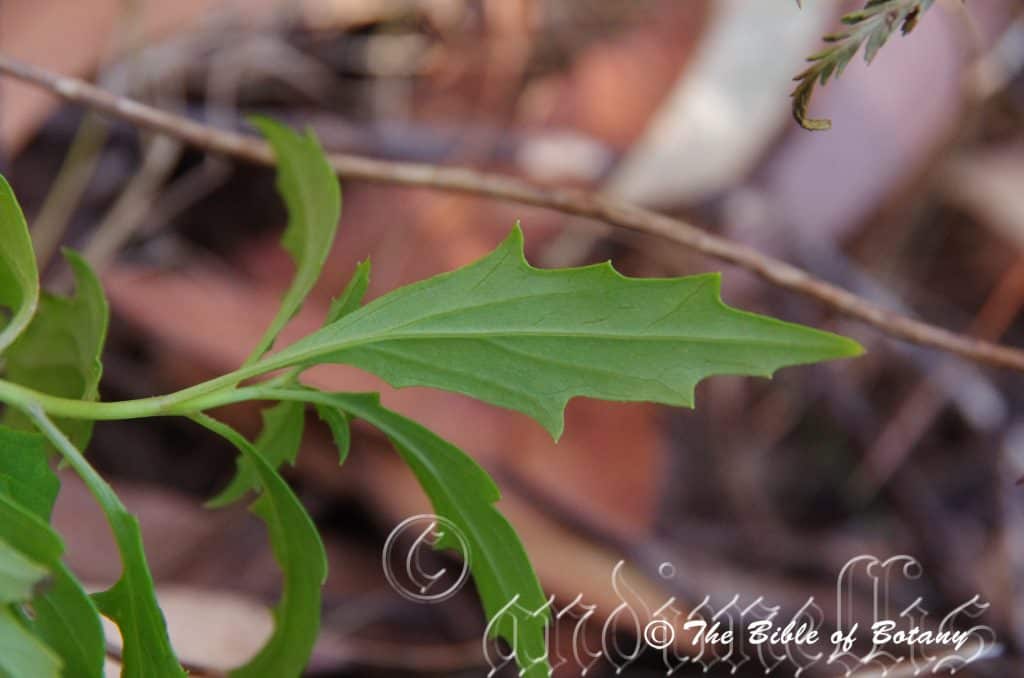
North Brother National Park NSW
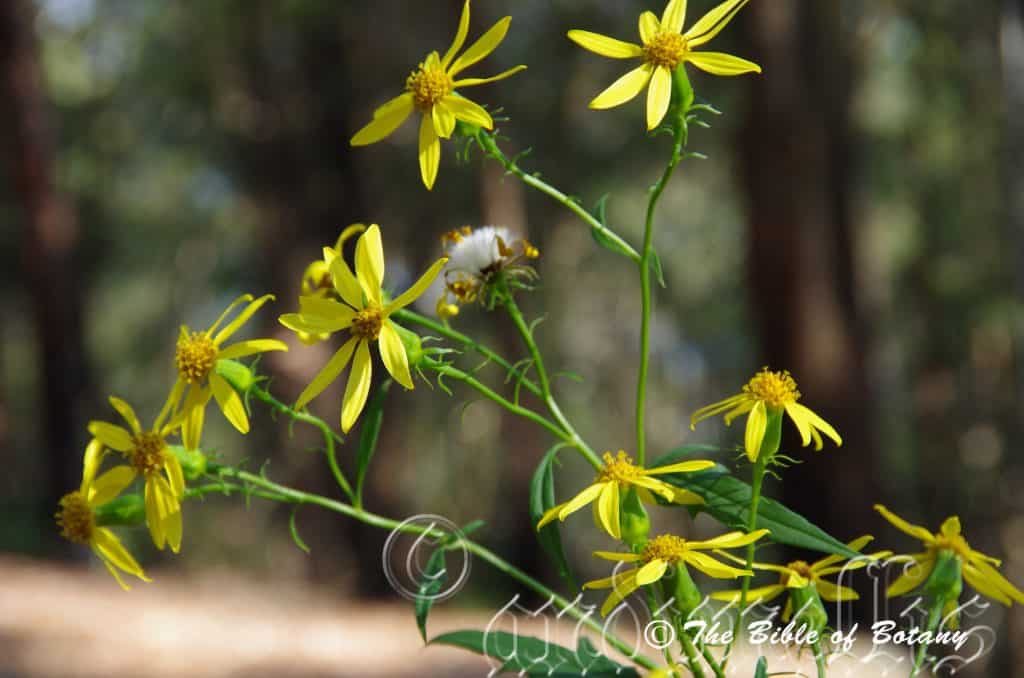
North Brother National Park NSW
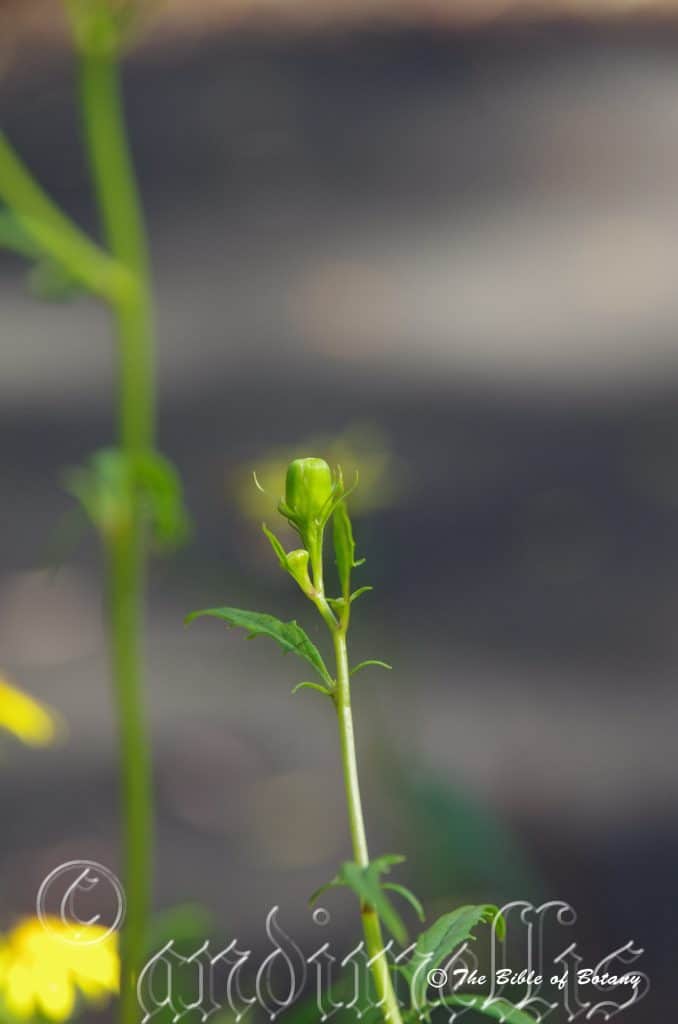
North Brother National Park NSW
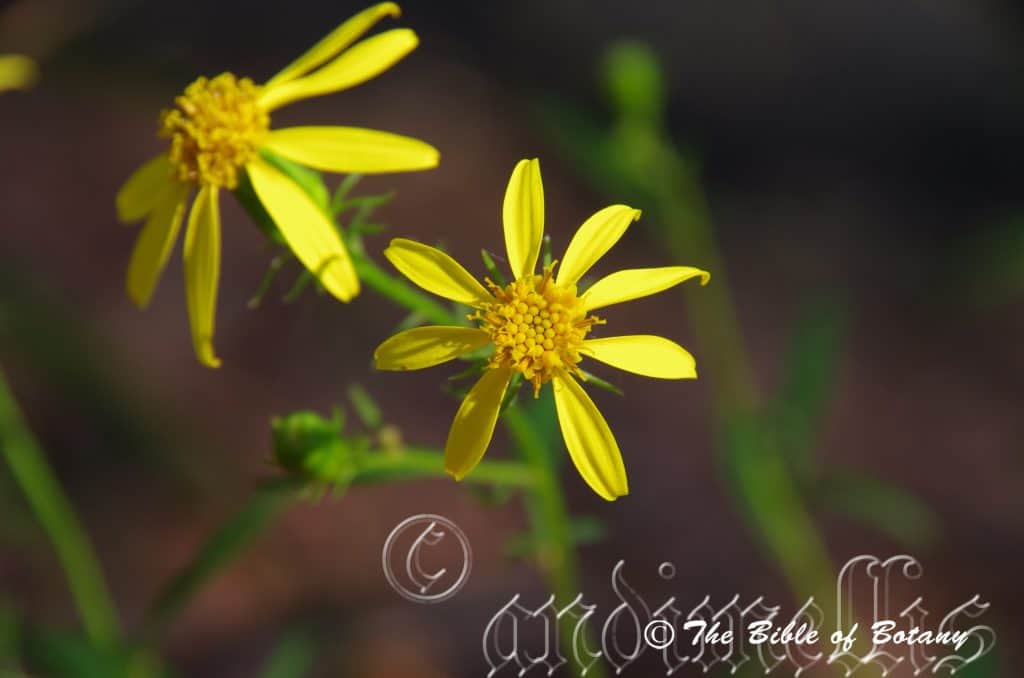
North Brother National Park NSW
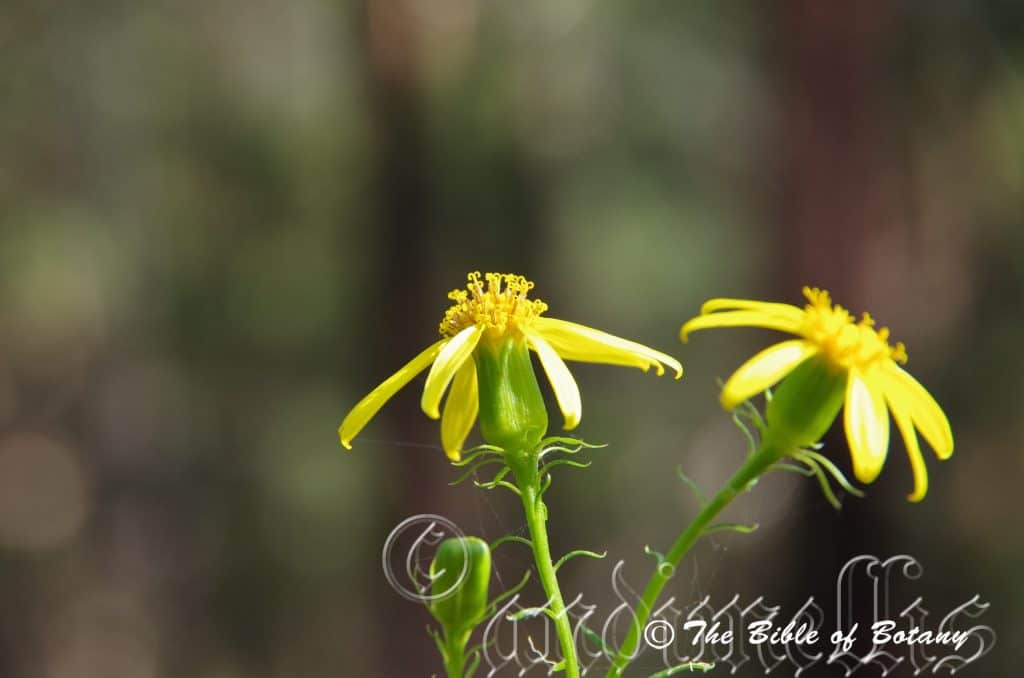
North Brother National Park NSW
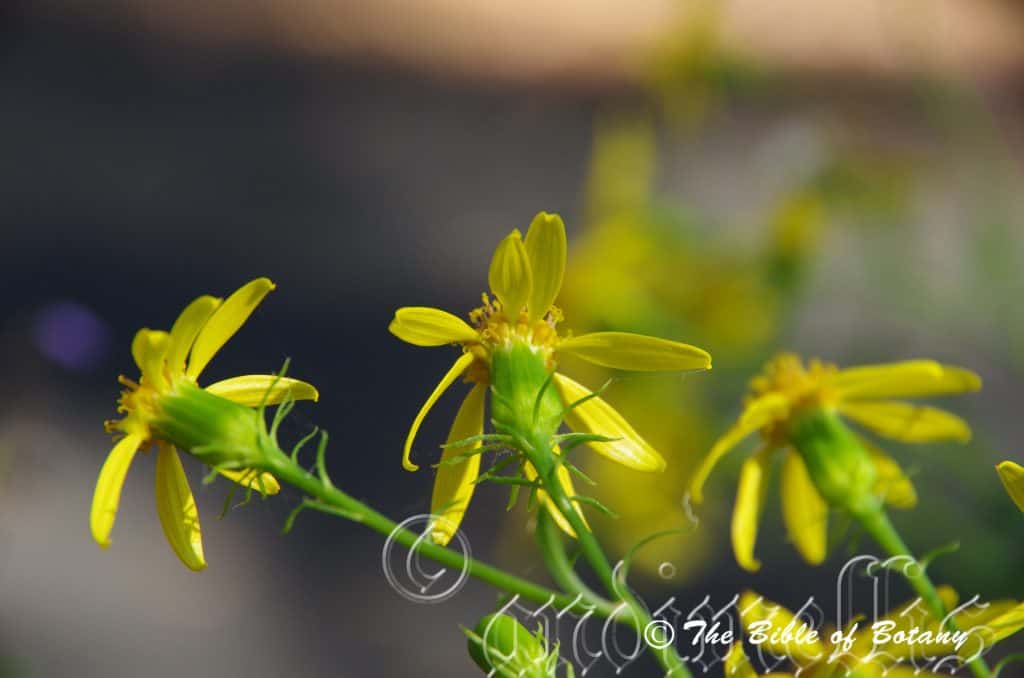
North Brother National Park NSW
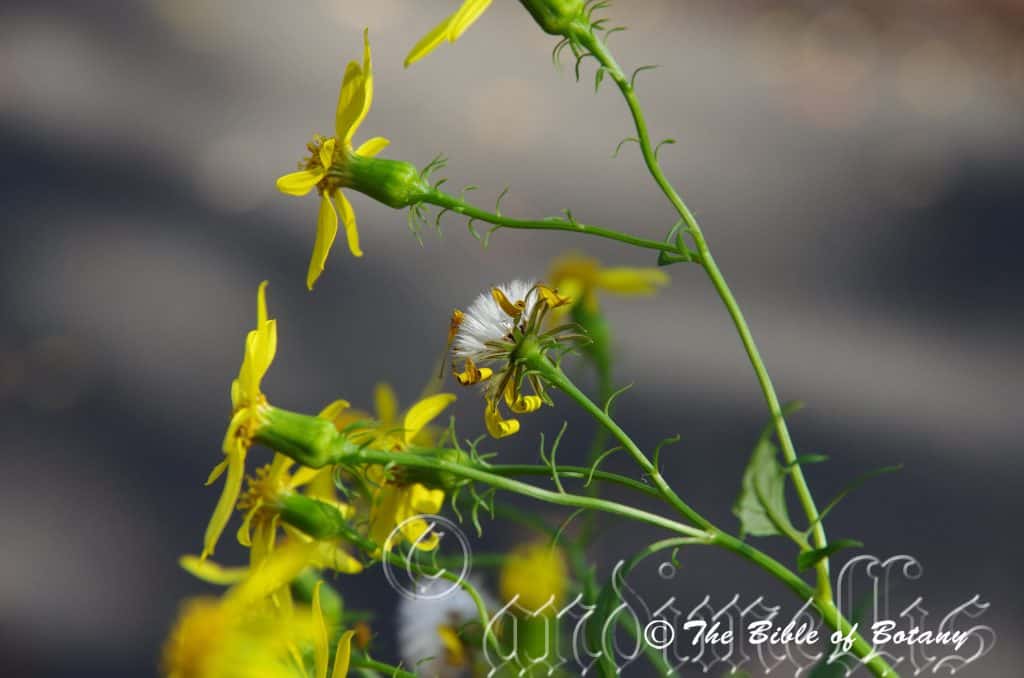
North Brother National Park NSW
Senecio vagus
Classification:
Unranked: Eudicots
Class: Asterids
Order: Asterales
Family: Asteraceae
Subfamily: Asteroideae
Supertribe: Seneciondae
Tribe: Senecioneae
Subtribe: Senecioninae
Genus: From Senescere/Senex, which is Ancient Greek for an old man. It refers to seeds which are covered in pale grey or white hairs like an old man’s beard.
Specie: From Vagus, which is Latin for to wander or be vague. It refers to plants, which have a creeping growth habit or are contentious as to what growth habit it is likely to undertake.
Sub specie: Senecio vagus subsp. alpestris. From Alpestris, which is Latin for the Alps. It refers to plants, which prefer subalpine areas of mountains below the permanent snow line or in spring thaw zones. They prefer the warmer areas.
Sub specie: Senecio vagus subsp. eglandulosus. From Ex, which is Greek/Latin for out of the ordinary or outside and Glandula, which is Latin for glands. It refers to a description of a plant that does not have any glands.
Sub specie: Senecio vagus subsp. vagus. From Vagus, which is Latin for to wander or be vague. It refers to plants, which have a creeping growth habit or are contentious as to what growth habit it is likely to undertake.
Common Name: Saw Groundsel.
Distribution:
Senecio vagus subsp. alpestris is found south from the Hastings River in New South Wales to Wilsons Promontory in the south and the Grampians in the west of Victoria. It is mainly found on the Great Dividing Range in Victoria.
It also occurs on Flinders Island in Bass Strait of Tasmania.
Senecio vagus subsp. eglandulosus is found south from the Clarence River to Bago in New South Wales. It is mainly found on and east of the Great Dividing Range.
Senecio vagus subsp. vagus is found south from Port Macquarrie in New South Wales to Wilsons Promontory in the south and the Grampians in the west of Victoria. It is mainly found on the Great Dividing Range in Victoria. It also occurs on Flinders Island in Bass Strait of Tasmania.
https://avh.ala.org.au/occurrences/search?taxa=Senecio+vagus#tab_mapView
Habitat Aspect Climate:
Senecio vagus prefers partial shade to full sun. It grows in openings or along creeks and rivers in warm well developed sub-tropical rainforests, tropical rainforests as well as moist gallery forests or moist Eucalyptus forests. It is found on and east of the Great Dividing Range. It is quick to recolonize areas following bush fires. The altitude ranges from 5 meters ASL to 600 meters ASL.
The temperatures range from minus 5 degrees in July to 34 degrees in January.
The rainfalls range from lows of 70mm to 1400mm average per annum.
Soil Requirements:
Senecio vagus prefers sandy loams to medium course clays. The soils are usually derived from decomposed brown basalts, black basalts, shale, sandstone or granites. The soils pH ranges from 4.5pH to 6pH. It does not tolerate waterlogged soils. Non saline soils to moderately saline soils are tolerated.
Height & Spread:
Wild Plants: 0.6m to 1.5m by 0.5m to 0.6m.
Characteristics:
Senecio vagus grows as a perennial herb with straight, erect, pale green to mid-green or at times deep purple almost black stems. The smaller stems are round in cross section. The stems are glabrous and glaucous.
The alternate, ovate to lanceolate leaves of Senecio vagus measure 40mm to 140mm in length by 10mm to 80mm in width. The lower leaves are usually pinnatisect with 2 to 6 lobes. The lobes are attenuate between the lobes. The bases are truncate or rounded, semi clasping or auriculate. The apex is narrow acute to narrow acuminate. The concolourous laminas are pale grass-green to mid grass-green, semi dull and glabrous. The leaf margins are coarsely and irregularly toothed on the lower parts of the plant tending to be more finely toothed or entire on rare occasions on the upper stems. It is flat and strongly recurve from the mid vein to the margins. The mid vein and main laterals are slightly prominent on the lower laminas. The petioles measure 5mm to 30mm in length.
Inflorescences of Senecio vagus are simple corymbs heads born from the upper leaf axils or are terminal. There are 3 to 20 flowers on a cyme. The grass-green rachis and pedicels are glabrous and measure 16mm to 40mm in length and 6mm to 12mm respectively.
The flowers are broad campanulate and glabrous or covered in white glandular papillose hairs. There are 13 to 15 involucral bracts which measure 8mm to 10mm in length and together have a diameter of 6mm to 8mm.
Senecio vagus subsp. vagus’s invocular bracts are sparsely covered in black glandular hairs. The 10 to 16 bracteoles margins are prominently toothed and measure 1mm to 2mm in length and are covered in black glands.
Senecio vagus subsp. eglandulosus invocular bracts are sparsely covered in black glandular hairs. The 10 to 16 bracteoles margins are entire or very sparsely toothed and measure 1mm to 2mm in length and are glabrous.
The 6 to 9 ray florets are divaricate and decurve close to the apexes. It is bright yellow, glabrous and measure 8mm to 10mm in length by 3mm to 4.5mm in width. The 60 to 80 individual flowers are deep yellow with white or pale yellow corollas. The ligules measure 8mm to 11mm in length. Senecio vagus’s flowers appear from early September through to early March with some flowers appearing throughout the year in favourable seasons.
The achenes of Senicio vagus measures 4mm to 5mm in length by 1mm to 1.2mm in diameter. The white pappus measure 7mm to 10mm in length.
Confusing Subspecie Varieties:
Senecio vagus susp. vagus’s fruits are long linear achenes. The achenes are deep brown and glabrous.
Senecio vagus subsp. eglandulosus’s fruits are achenes that are sparsely covered in white puberulent hairs.
Wildlife:
Senecio vagus support native bees and numerous native flies and small butterflies that collect the pollen.
Cultivation:
Senecio vagus is a beautiful medium perennial herb that should be grown in both small and large rockeries. In cultivation it grows from 0.8 meters to 1 meter in height by 0.5 meters to 0.6 meters in diameter when grown in the open. It responds to tip pruning very well in the early stages after being planted out to increasing bushiness and reduced size. It is best planted in small clusters of 3 to 6 plants so it looks bushier and gives more colour when in flower.
It grows well on all soils where deep leaf litter keeps the soil cool and moisture at an even level. If these requirements are met they can cope with temperatures as low as minus 3 degrees and up to 36 degrees. It is moderately drought resistant once established.
Add to the above, if it is given an adequate supply of water and a little native fertilizer on a regular basis the plants will respond with good flowering over a long period.
Senecio vagus would make outstanding contribution to a moist heath gardens along the coast or along the ranges. Here they can be used as the taller growing plant scattered throughout the heath scene or tip pruned for a lower more spreading small perennial. When you design a flat heath garden in which Senecio vagus is well suited don’t use contours to display the plants as heath lands are almost always flat or have a slight rise. Plants must be planted close enough to touch each other at maturity and be short so you can see over the tallest ones with the exception of one or two plants at the most. These will be feature plants. The idea is to achieve a feeling of expansive flatness. This can be achieved with using Senecio vagus’s bright green linear leaves help in creating a contrast in foliages with finer pale green or soft grey to glaucous coloured foliages. Use a lot of plants like Verticordia specie, Dampier specie or Scaevola specie which have pink or red flowers as the yellow flowers of this Senecio are very strong. Mix them with other smaller shrubs so none of them dominate the scene but blend in to give a mosaic of foliage colours that you oversee. Here I immediately think of Actinotis helianthi or Grevillea thelemanniana for two great contrasting foliages.
It is also ideal planted as a fill in plant in arid gardens or planted between large rocks and boulders on banks to add colour.
Propagation:
Seeds: The seeds of Senecio vagus can be removed easily from the fruits.
Sow freshly treated seeds directly into a seed raising mix, keeping them moist not wet. Do not over water as the seeds will rot off before germination takes place. Place the trays in a cool shaded area with 50mm shade cloth in the bush house. When the seedlings are 20mm to 25mm tall, prick them out and plant them into 50mm native tubes using a good organic mix.
As the seedlings roots reach the bottom of the tubes plant them out into their permanent position. Do not delay or flowering will be greatly affected.
Fertilize using seaweed, fish emulsion or organic chicken pellets soaked in water on an alternate basis. Fertilize every two months until the plants are established then twice annually in early September and March to maintain better colour, health, vitality and flowering.
Cuttings:
Fortunately Senecio vagus cuttings strike easy. Use 100mm to 200mm long tip cuttings or lateral shoots from the present season’s growth. Take them in warmer months of the year. Remove half the leaves from the bottom section being careful not to tear the bark.
1 Prepare the cutting mix by adding two thirds sharp clean river sand, one third peat or one third perlite. These ingredients must be sterilized,
2 Select good material from non diseased plants,
3 Select semi green stems for cuttings. Look for a stem with two or three nodes,
4 Place the cutting on a flat, hard surface, and make a clean cut down one side of the cutting at the base for 10mm with a sharp sterile knife or razor blade. – This scarification of the node will increase the chances of roots emerging from this spot. Now remove all but one or two the leaves, leaving the apex leaves in tact. If the leaves are very large in proportion to the stem, cut off the apical halves.
5 Hormones are not required,
6 Use a small dipple stick or old pencil to poke a hole into the soilless potting mix. Ensure the hole is slightly larger than the stem diameter and be careful not to damage the base,
7 I like to place the tubes in bucket with holes drilled in the bottom to allow excess water to drain out. A plastic bag that fits over the bucket is ideal to help maintain temperature and moisture. Place in a semi shaded, warm position like under 50mm shade cloth.
8 When the cuttings have struck, open the bag to allow air circulation for a few days to a week,
9 Once hardened off remove the cuttings from the bag and allow to further hardening for a few more days to a week,
10 Transplant into a good potting mix to grow on.
Fertilize using seaweed, fish emulsion or organic chicken pellets soaked in water on an alternate basis. Fertilize every two months until the plants are established then twice annually in early September or March to maintain health, vitality and better flowering
Further Comments from Readers:
“Hi reader, it seems you use The Bible of Botany a lot. That’s great as we have great pleasure in bringing it to you! It’s a little awkward for us to ask, but our first aim is to purchase land approximately 1,600 hectares to link several parcels of N.P. into one at The Pinnacles NSW Australia, but we need your help. We’re not salespeople. We’re amateur botanists who have dedicated over 30 years to saving the environment in a practical way. We depend on donations to reach our goal. If you donate just $5, the price of your coffee this Sunday, We can help to keep the planet alive in a real way and continue to bring you regular updates and features on Australian plants all in one Botanical Bible. Any support is greatly appreciated. Thank you.”
In the spirit of reconciliation we acknowledge the Bundjalung, Gumbaynggirr and Yaegl and all aboriginal nations throughout Australia and their connections to land, sea and community. We pay our respect to their Elders past, present and future for the pleasures we have gained.
Senegalia albizioides
Classification:
Unranked: Eudicots
Class: Rosids
Order: Fabales
Family: Fabaceae
Subfamily: Caesalpiniodeae
Tribe: Acacieae
Genus: Is named in honour of Albiz an Italian botanist and Eîdos/Oides, which is Ancient Greek for alike or similar to. It refers to plants, which resemble the Albizia genus in one or more of its characteristics.
Specie: From Vagus, which is Latin for to wander or be vague. It refers to plants, which have a creeping growth habit or are contentious as to what growth habit it is likely to undertake.
Sub specie:
Common Name: Climbing Wattle or Climbing Acacia.
Distribution:
Senegalia albizioides is found on and east of the Great Dividing Range south from the Iron Range National Park to the Paluma National Park in far northern coastal Queensland.
https://avh.ala.org.au/occurrences/search?taxa=Senegalia+albizioides#tab_mapView
Habitat Aspect Climate:
Senegalia albizioides prefers partial shade to full sun. It grows in openings or along creeks and rivers, in or adjacent to well-developed tropical rainforests, moist gallery forests or at times monsoonal forests. The altitude ranges from 1 meter ASL to 550 meters ASL.
The temperatures range from 6 degrees in July to 36 degrees in January.
The rainfalls range from lows of 1600mm to 3200mm average per annum.
Soil Requirements:
Senegalia albizioides prefers rocky sandy loams to clay loams. The soils are usually derived from decomposed brown, red or orange-brown sandstones. The soils pH ranges from 4.5pH to 6pH. It does not tolerant of waterlogged soils. Non saline soils to very saline soils are tolerated.
Height & Spread:
Wild Plants: 15m to 30m by 10m to 15m.
Characteristics:
Senegalia albizioides grows as a tall liana with pale grey to mid grey brown and fine flaky or scaly bark. The longitudinally fissured bark is hard rough and somewhat corky. The branchlets are pale blue green to emerald green. The trunk and stems are sparsely covered in large recurved prickles and small white lenticels. The branchlets are glabrous.
The alternate, bipinnate leaves of Senegalia albizioides measure 50mm to 200mm in length by 120mm to 220mm in width. The rachises and petioles are pale olive-green to pale blue-green and sparsely covered in pale white to pale golden-brown puberulent hairs. The rachises measure 50mm to 180mm in length. The petioles have a groove along the upper surface which ends in a subulate point. The opposite petioles also have a large domed gland about 8mm to 10mm from the base on the upper surface. There are 3 to 9 opposite petioles on a rachis. The petiolules are sessile to less than 0.2mm in length.
There are 16 to 28 pairs of oblong leaflets to a petiolule which are strongly asymmetrical. They measure 6mm to 16mm in length by 1.5mm to 5mm in width. The bases are truncate while the apexes are broad obtuse with an emarginated tip or mucronate tip. The discolourous laminas are pale blue-green, dull and glabrous on the upper laminas while the lower laminas are sparsely covered in long white appressed hairs. The laminas are flat and straight while the margins are entire.
Inflorescences of Senegalia albizioides are born on a raceme or panicle from the terminals. The fawn peduncle, rachis and pedicels are densely covered in pale golden brown pulverulent hairs. The peduncles measure 15mm to 30mm in length while the pedicels measure 1mm in length. The reddish buds are born in spherical heads along peduncles which measure 15mm to 30mm in length. There are 24 to 36 individual flowers in a head. The calyx tubes are covered in short golden brown puberulent hairs and measure 1.5mm to 2mm in length while the lobes measure less than 0.5mm in length. The white corollas turn cream to pale creamy yellow after anthesis and measure 2mm to 3mm in length while the lobes measure 1mm to 3mm in length.
The white filaments are free for their entire length and measure 3mm to 4mm in length beyond the corolla. The anthers are pale cream.
The white style and stigma are glabrous while the ovary is green. The pistil measures 3.5mm to 4.5mm in length beyond the corolla. The ovary has 6 to 8 ovules and measures 1mm in length. Senegalia albizioides’s flowers appear from early October through to late December.
Senegalia albizioides’ fruits are long twisted or straight, flattened, coriaceous pods. The large pods are glabrous with the margins being irregularly constricted between the seeds and slightly constricted between the seeds on the surface. They measure 45mm to 80mm in length by 12mm to 20mm in width by 8mm to 10mm in thickness. The green capsules turn grey-brown when ripe. The pods remain on the trees for an extended period and are tardily dehiscent.
The 5 to 10 glossy, black, oblong seeds measure 9mm to 11mm in length by 4.5mm to 7mm in diameter. The filiform funicle is folded twice at the base of the seed while the areola is black and inconspicuous.
Wildlife:
Senegalia albizioides support native bees including the colony bee, Tetragonula carbonaria, the native bumble bee, Bombus terrestris and the Blue banded bee, Amegilla cingulata and other insects which require pollen in their diet.
Cultivation:
Senegalia albizioides is a magnificent large liana that can be grown in Tropical and subtropical gardens in association with other rainforest specie. It is ideal at the edge of a rain forest or deep in the center of the rainforest. In cultivation it will grow from 12 meters to 15 meters in height by 8 meters to 12 meters in width when grown in the open or taller and narrower if grown closer together as a rainforest tree.
It grows exceptionally well on most better quality soils where deep leaf litter keeps the soil cool and moisture at an even level. If these requirements are met they can cope with temperatures at least as low as 5 degrees and up to 36 degrees. It is moderately drought resistant once established.
Add to the above, if it is given an adequate supply of water and a little native fertilizer on a regular basis the plants should respond with good flowering and fruit over a long period.
Propagation:
Seeds: The seeds of Senegalia albizioides can be removed easily from the pods once they start to dehisce.
Treat the seeds by placing them in hot water at around 80 degrees centigrade and allow the water to cool and soak for 2 to 4 hours. Rinse and sow the seeds.
Sow freshly treated seeds directly into a seed raising mix, keeping them moist not wet. Do not over water as the seeds will rot off before germination takes place. Place the trays in a cool shaded area with 50mm shade cloth in the bush house. When the seedlings are 20mm to 25mm tall, prick them out and plant them into 50mm native tubes using a good organic mix.
As the seedlings roots reach the bottom of the tubes plant them out into their permanent position. Do not delay.
Fertilize using seaweed, fish emulsion or organic chicken pellets soaked in water on an alternate basis. Fertilize every two months until the plants are established then twice annually in early September and March to maintain better colour, health, vitality and flowering.
Further Comments from Readers:
“Hi reader, it seems you use The Bible of Botany a lot. That’s great as we have great pleasure in bringing it to you! It’s a little awkward for us to ask, but our first aim is to purchase land approximately 1,600 hectares to link several parcels of N.P. into one at The Pinnacles NSW Australia, but we need your help. We’re not salespeople. We’re amateur botanists who have dedicated over 30 years to saving the environment in a practical way. We depend on donations to reach our goal. If you donate just $5, the price of your coffee this Sunday, We can help to keep the planet alive in a real way and continue to bring you regular updates and features on Australian plants all in one Botanical Bible. Any support is greatly appreciated. Thank you.”
In the spirit of reconciliation we acknowledge the Bundjalung, Gumbaynggirr and Yaegl and all aboriginal nations throughout Australia and their connections to land, sea and community. We pay our respect to their Elders past, present and future for the pleasures we have gained.
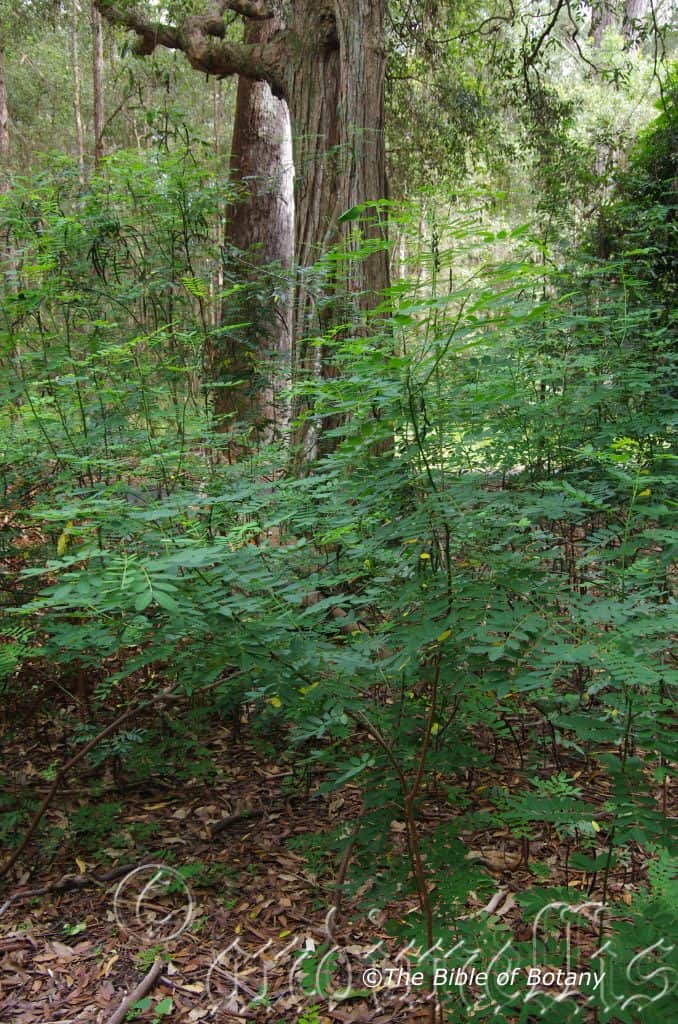
NCBG Coffs Harbour NSW
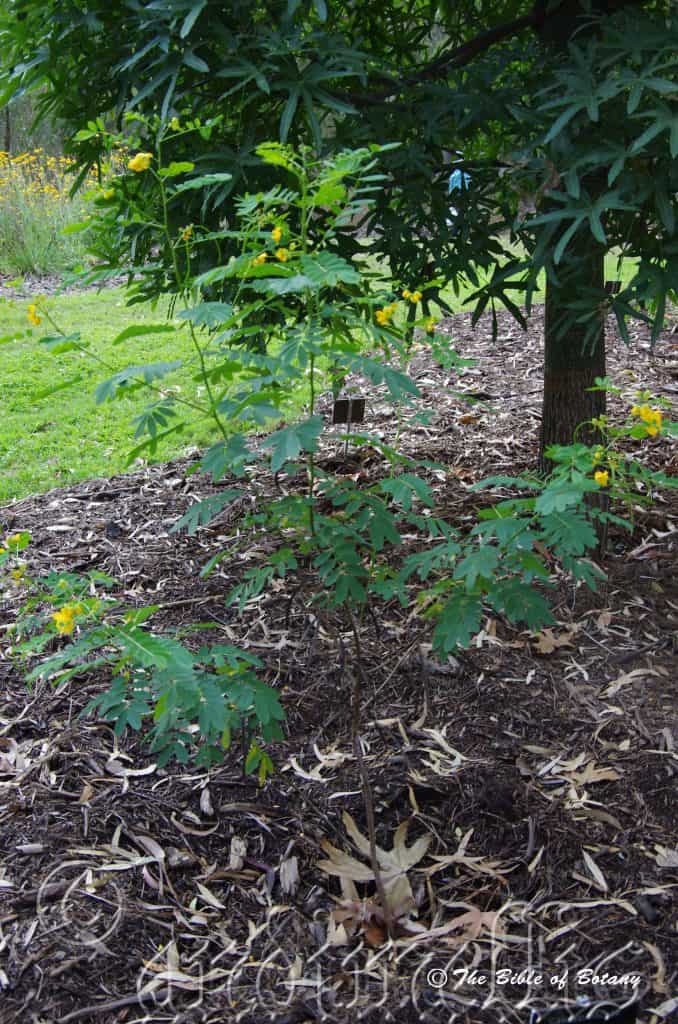
NCBG Coffs Harbour NSW
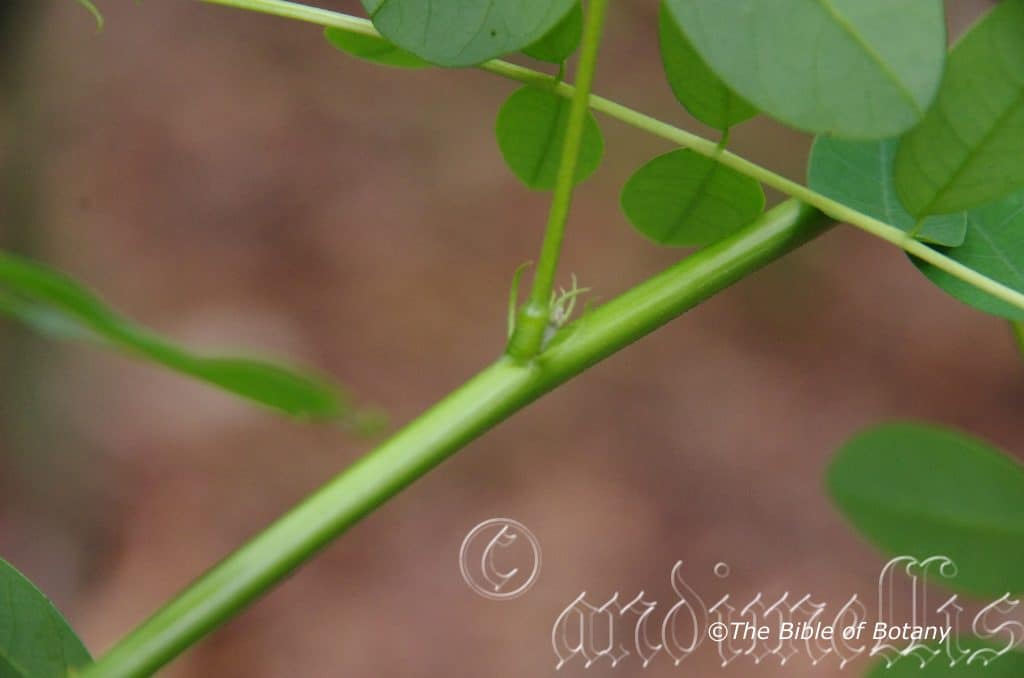
Mount Cootha Botanical Gardens Qld.
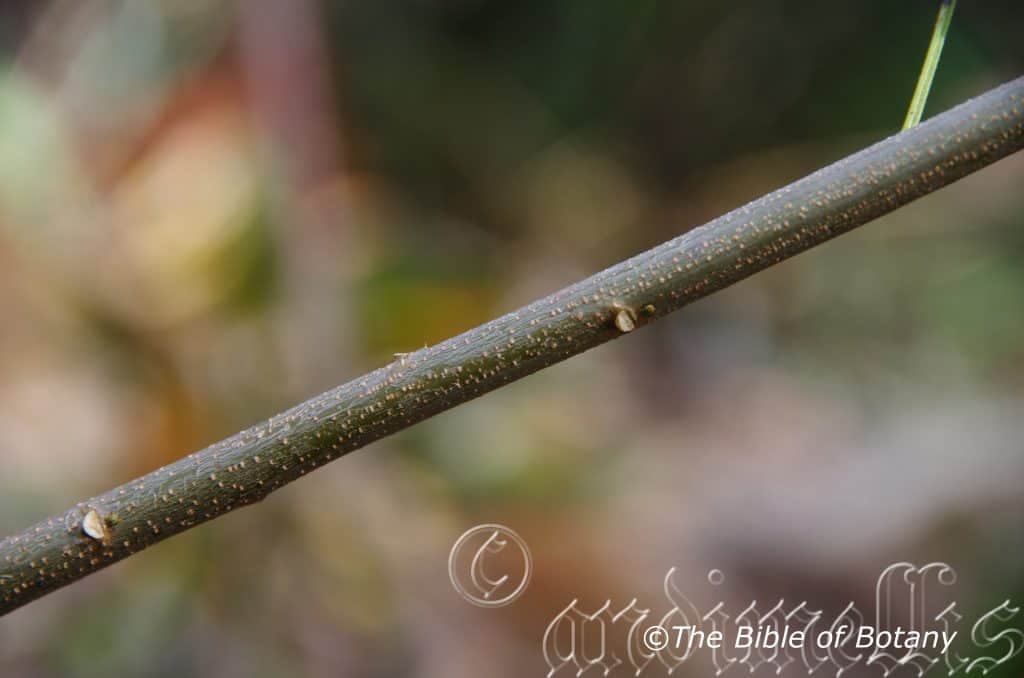
NCBG Coffs Harbour NSW
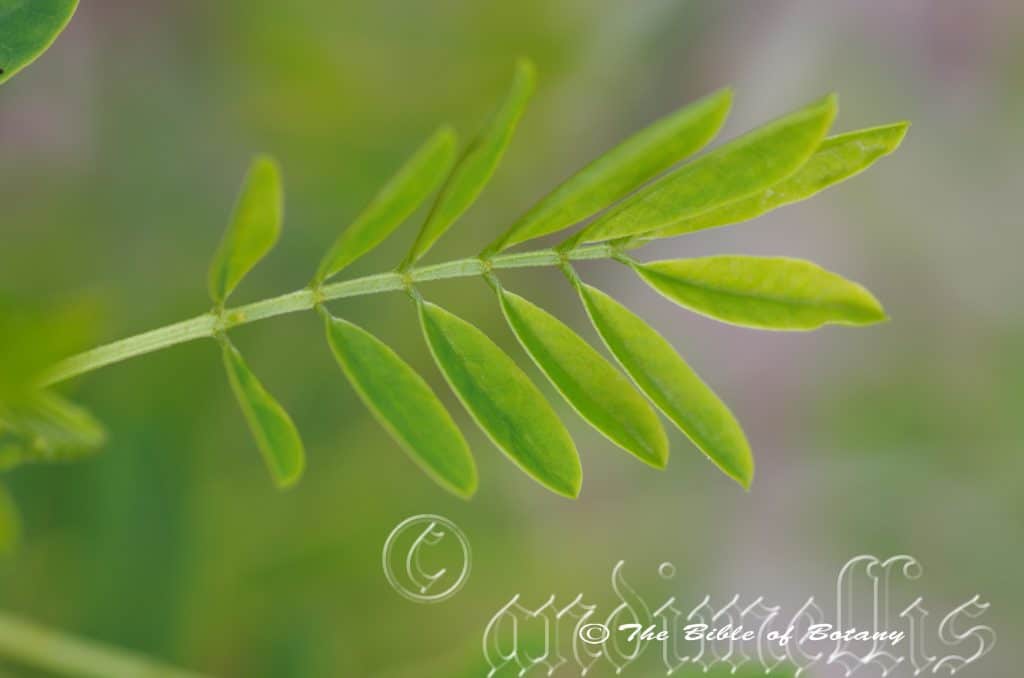
Rosser Gardens Benowa Qld.
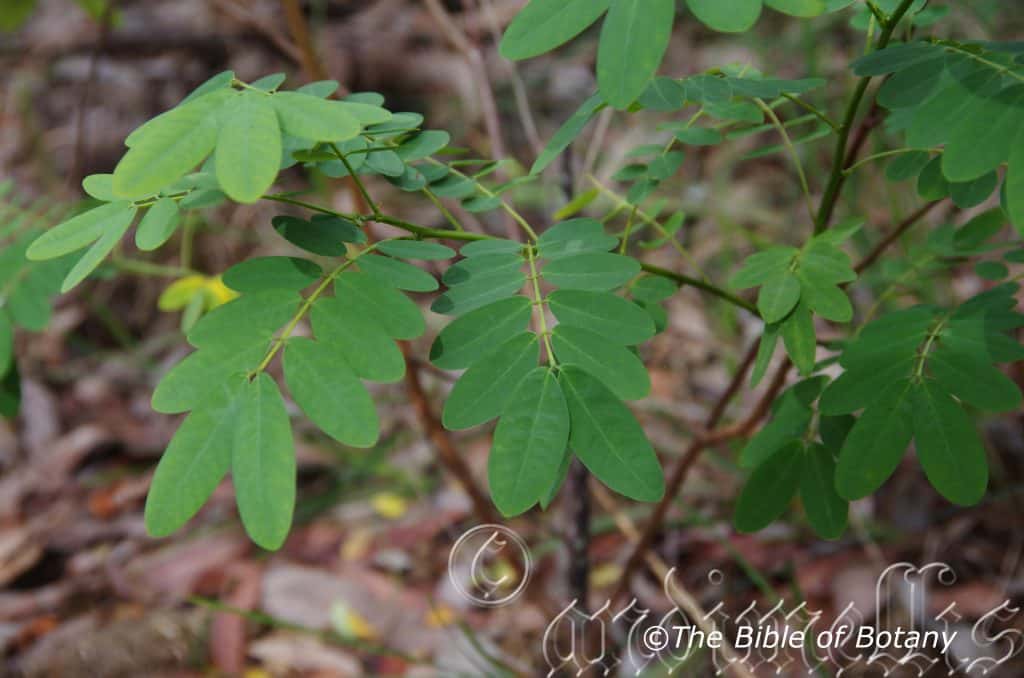
Author’s Garden The Pinnacles NSW
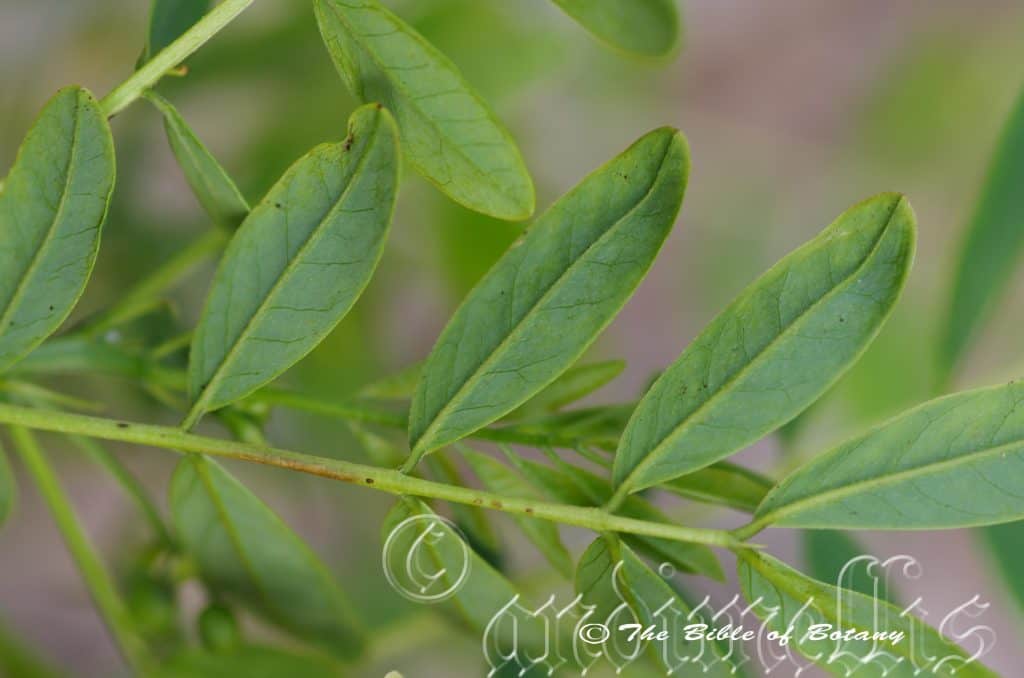
Rosser Gardens Benowa Qld.
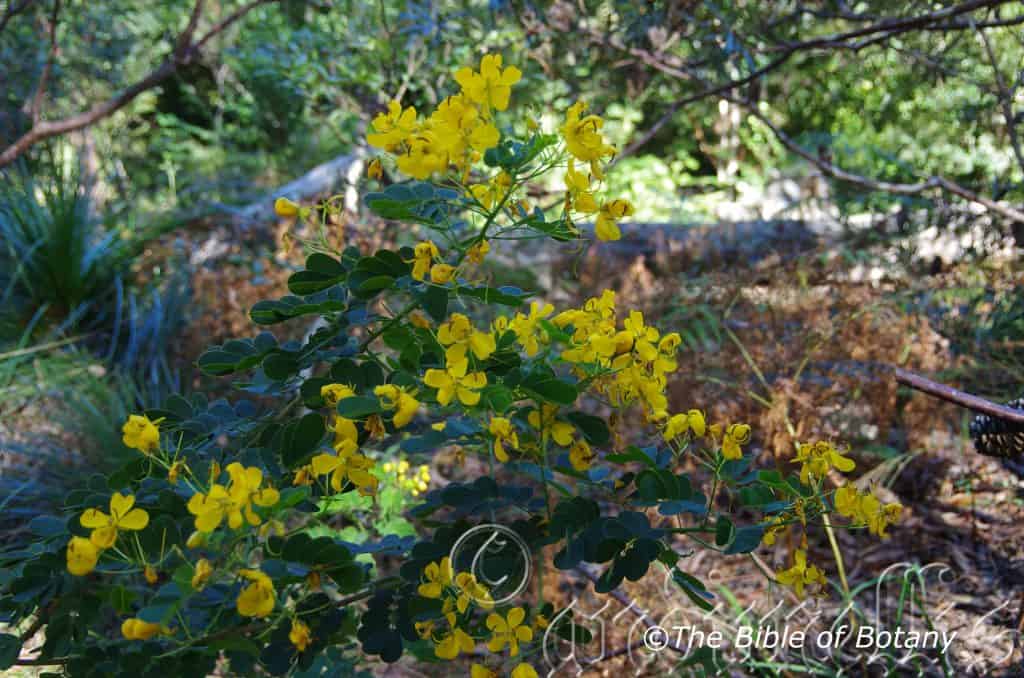
Author’s Garden The Pinnacles NSW
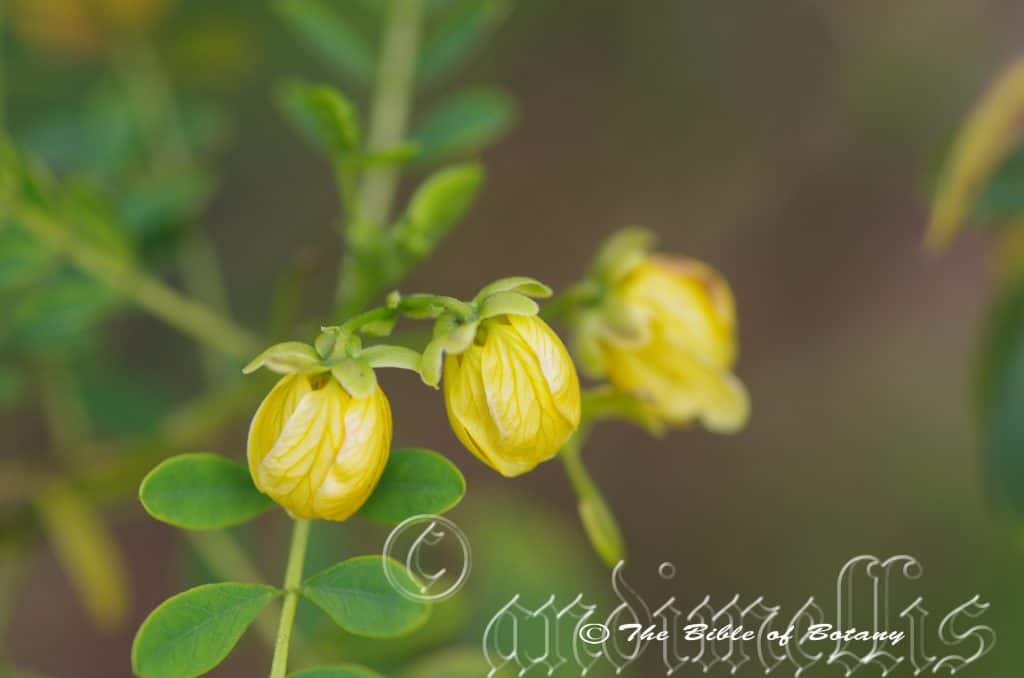
Rosser Gardens Benowa Qld.
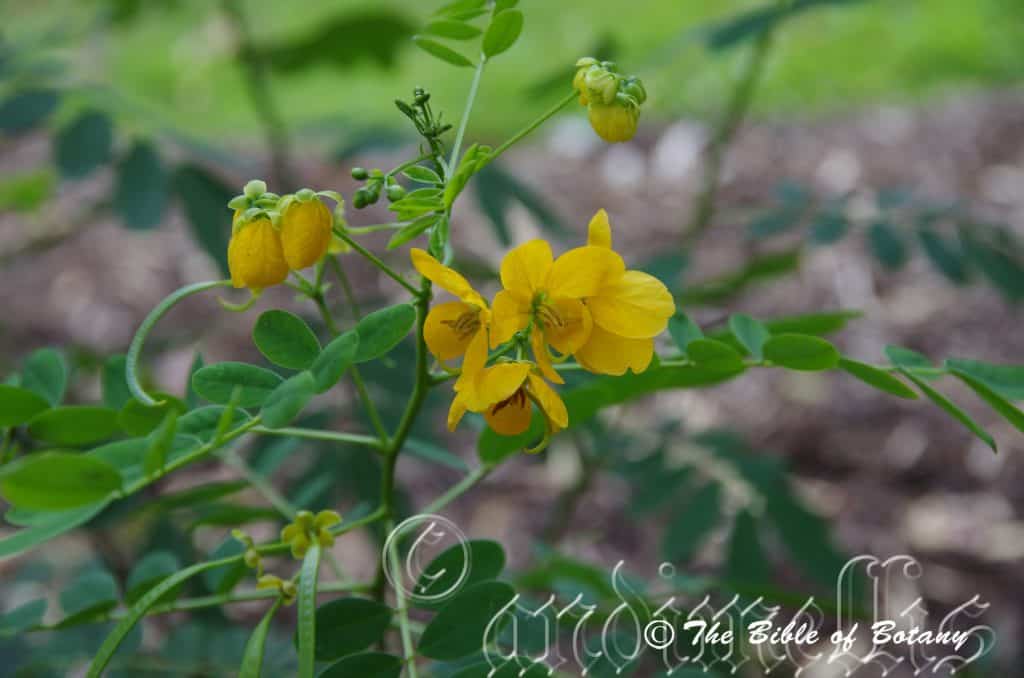
Mount Cootha Botanical Gardens Qld.
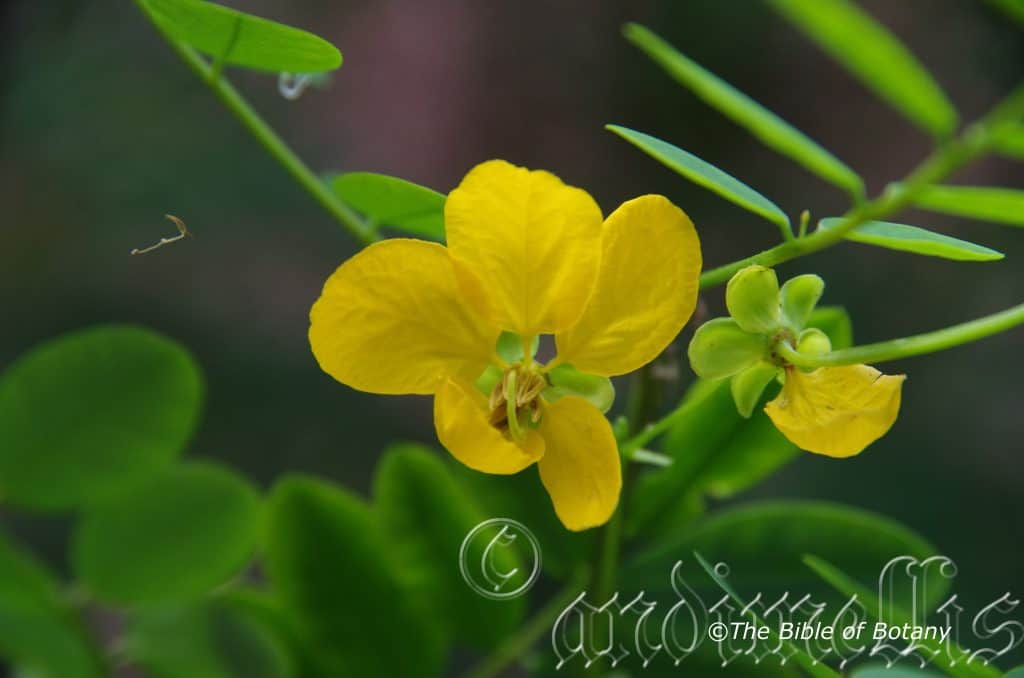
NCBG Coffs Harbour NSW
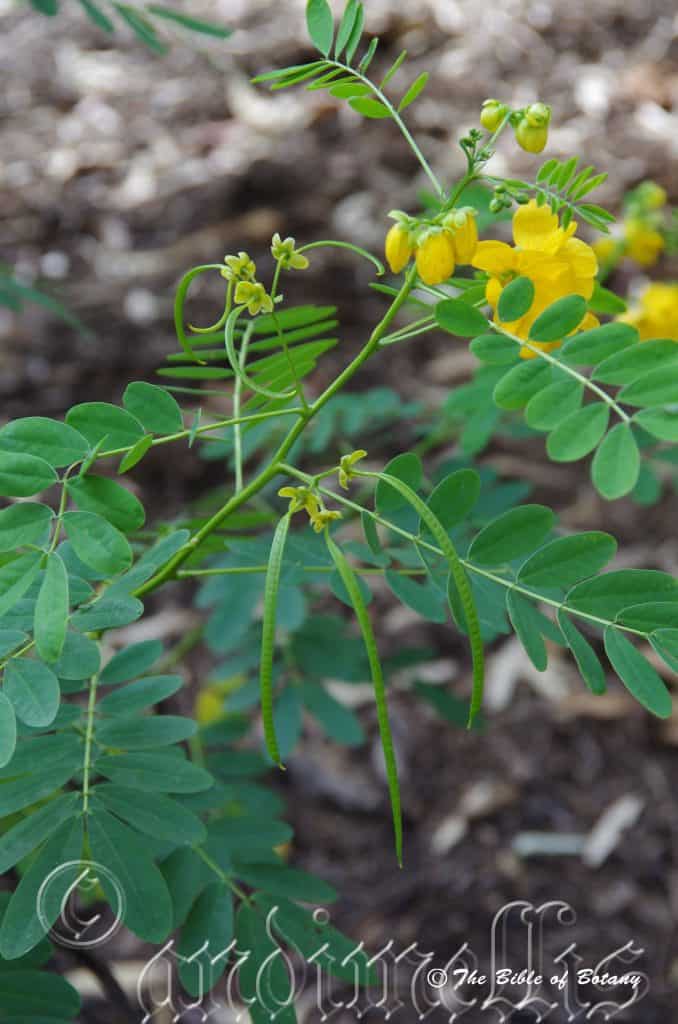
Mount Cootha Botanical Gardens Qld.
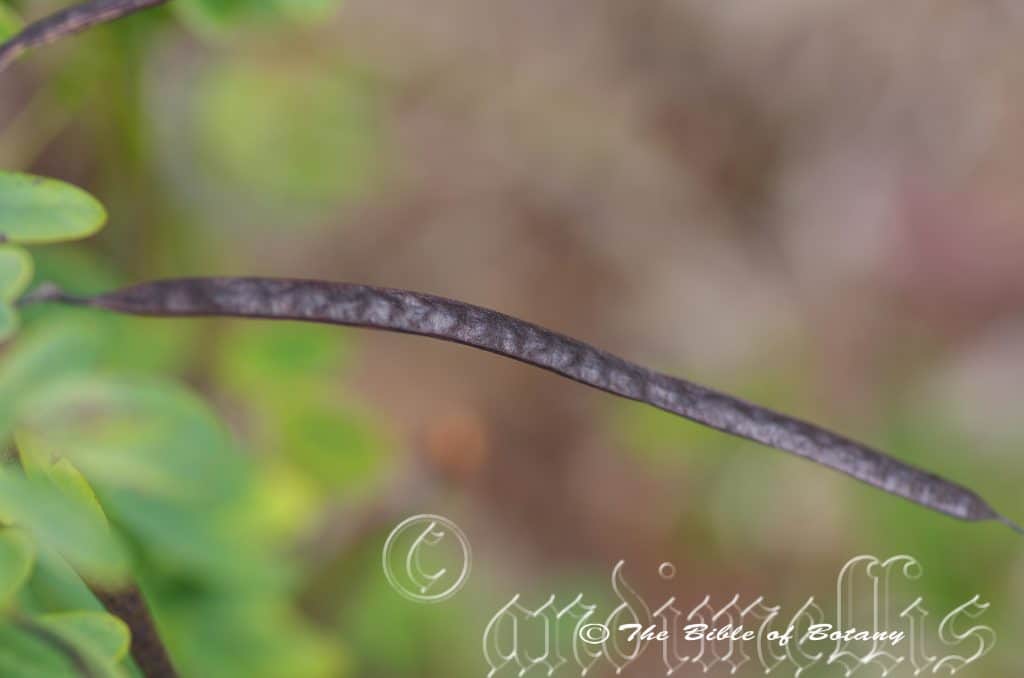
Author’s Garden The Pinnacles NSW
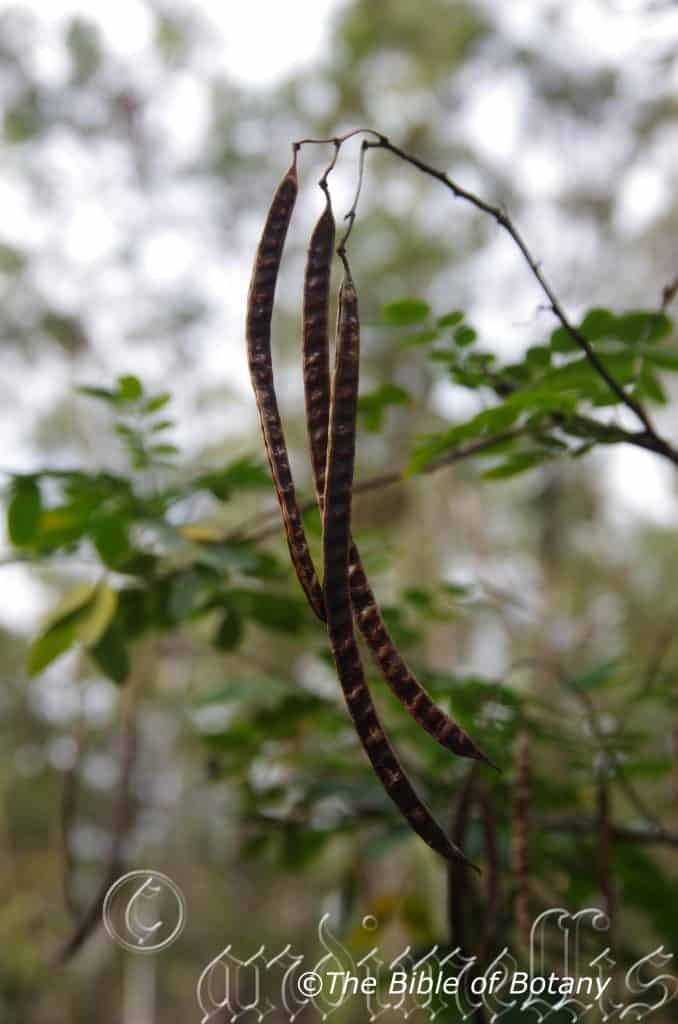
Author’s Garden The Pinnacles NSW
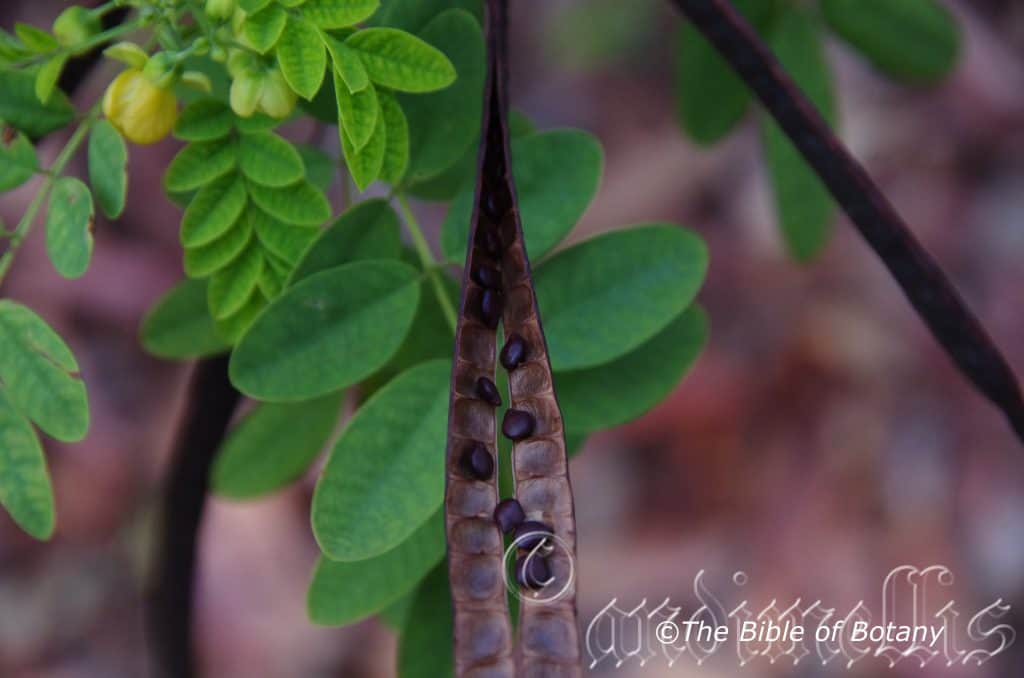
Author’s Garden The Pinnacles NSW
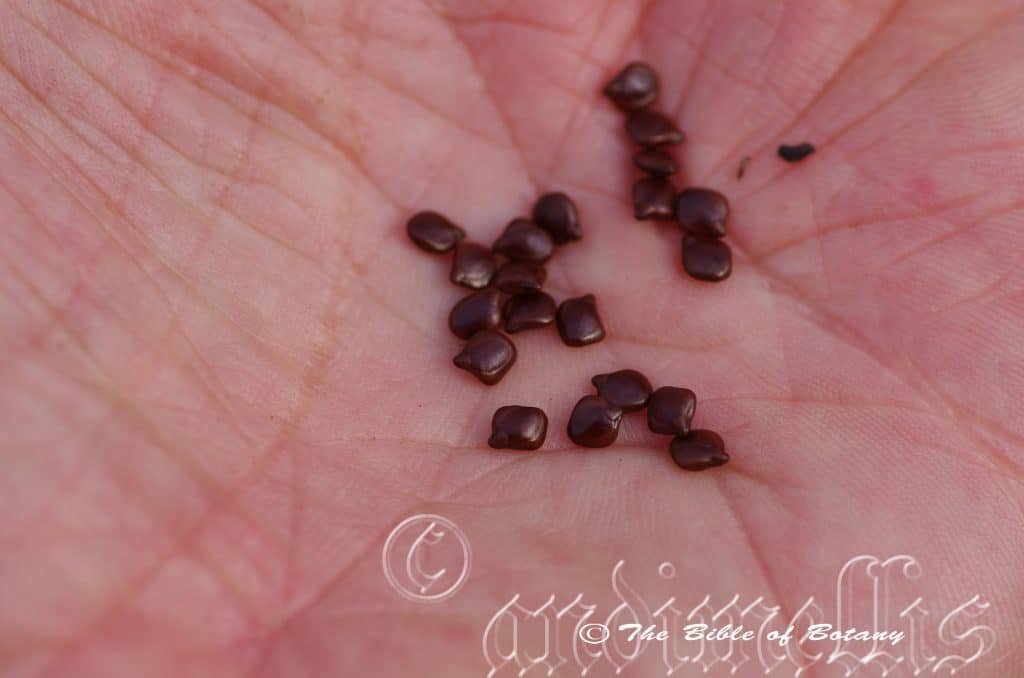
Rosser Gardens Benowa Qld.
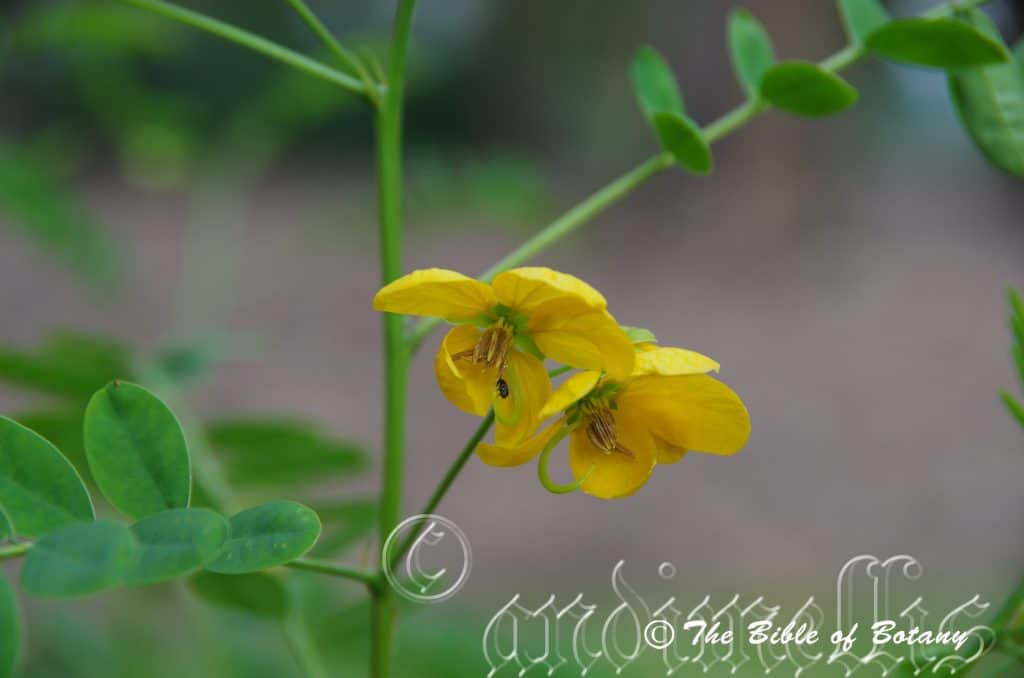
Senna-acclinis
Classification:
Class: Eudicots
Subclass: Rosids
Order: Fabales
Family: Fabaceae
Subfamily: Caesalpiniodeae
Tribe: Cassieae
Sub Tribe: Cassiinae
Genus: From Sana, which is Latinized from the Arabic vernacular for plants, which have leaves and pods that have catharitic and laxative properties. It refers to plants, which are catharitic.
Specie: From Acclīne/Acclīnis, which is Latin for to lean against or to be inclined. It refers to plants, which, appear to be weak and have a tendency to lean up against other stronger plants.
Sub specie:
Common Name: Rainforest Senna.
Distribution:
Senna acclinis is a very rare species that is facing extinction in its native habitats in New South Wales due to over clearing of its natural habitat and is barely holding on in patches in Queensland. It is also succumbing to the weevils introduced with the exotic Senna, Senna indica. For personal use I will supply seeds free by contacting me on my email.
Fortunately it is being grown in many Botanic Gardens so seed may become available for restoration projects in the future. It is found south from Townsville in north east Queensland to the Great Lakes in central New South Wales.
https://avh.ala.org.au/occurrences/search?taxa=Senna+acclinis#tab_mapView
Habitat Aspect Climate:
Senna acclinis prefer light dappled shade to full sun. It grows on the edges of moist well developed rainforests, in openings or along creeks streams where other smaller sturdier shrubs grow. Here it can lean on or scramble over the other shrubs. At times it appears to be a small weak climber. The altitude ranges from 5 meters ASL to 750 meters ASL.
The temperatures range from minus 4 degrees in July to 36 degrees in January.
The rainfalls range from lows of 100mm to 600mm average per annum.
Soil Requirements:
Senna acclinis prefers rocky sandy loams to clay loams. The soils are usually derived from decomposed brown, red, or orange-brown sandstones or conglomerates. The soils pH ranges from 5pH to 6pH. It does not tolerate waterlogged soils. Non saline soils to very saline soils are tolerated.
Height & Spread:
Wild Plants: 2m to 3m by 2m to 3m.
Characteristics:
Senna acclinis grows as a medium shrub with long, slender, olive-grey to olive-brown stems. The bark is hard and slightly rough to touch. The branchlets are dull, lime green and glabrous.
The alternate, even pinnate leaves of Senna acclinis measure 100mm to 160mm in length by 60mm to 100mm in width. The petiolules measure 15mm to 30mm while the rachises measure 15mm to 60mm in length and the petioles measure 2mm to 4mm in length. There are 1 to 4 glands on the rachis between the base and first pair of linage. The 3 to 7 pairs of pinnae are oblong to broadly elliptical and measure 12mm to 50mm in length by 8mm to 16mm in width. The base pair of pinnae are the smallest and are divaricate while the apex pair are the longest and are angled at about 45 degrees. The bases are broad cuneate to rounded while the apex is obtuse to broadly acute-obtuse. The concolourous laminas are pale blue green to mid blue green, dull and glabrous on the upper lamina while the lower lamina is glabrous or very sparsely covered in fawn hairs. The leaf margins are entire, and flat. The mid vein is slightly prominent on the lower laminas.
Inflorescences of Senna acclinis are born in loose umbels or sub umbellatus from the leaf axils. There are 2 to 5 flowers on a peduncle. The pale green peduncle and pedicels are glabrous. The peduncles measure 20mm to 40mm in length while the pedicels measure 10mm to 15mm in length. The pale green bracts are minute and persistent or caducous. The 5 pale green cupuliform sepals are oblong with an obtuse apex, glabrous and measure 5mm to 7mm in length. The 5 bright yellow petals are oblong to oblong-ovate with an obtuse apex and measure 12mm to 16mm in length including the 8mm to 13mm stalk by 14mm to 20mm in width.
The 10 fertile filaments are free for their entire length and measure 1mm to 2.5mm in length. The filaments are yellow and much narrower than the bright yellow anthers. 9 of the adnately fixed dimorphic anthers measure 5mm to 6.5mm in length by 1.5mm to 2mm in width at the base while the 10th anther is longer than the others.
The bright green style, stigma and ovary are glabrous. The pistil measures 10mm to 16mm in length. Senna acclinis’s flowers appear from September to late February.
Senna acclinis’s fruits are long, plump, flat pods. The pods are glabrous and measure 120mm to 150mm in length by 6mm to 8mm in width and 2mm to 3.5mm in depth. The green capsules turn deep red brown to deep grey black externally and fawn internally when ripe. The pods do not contain pith nor are the seeds segregated. The pods are not laterally compressed and are only slightly compressed between the seeds. The 15 to 28 glossy deep brown to black seeds are slightly flattened, ellipsoidal and pointed at the apex. The glossy seeds measure 4mm to 5mm in length by 4mm to 5mm in width. The large areole is ovate.
Wildlife:
Senna acclinis support many species of native bees along the coast. At Point Halliday research by rgbsyd New South Wales indicated that at least 8 native species of bees visit the flowers regularly at this point.
It is also the host plant for at least 2 butterflies the small Grass-yellow, Eurema Smilax and the Yellow Migrant, Catopsilia Gorgophone.
The seed pods in affected areas are attacked by weevils and beetles like the Callosobruchus maculatus beetle (photograph 7.1.) This weevil is from Africa and can cause considerable damage amongst cow peas and other legume seeds that are in storage.
Cultivation:
Senna acclinis is a magnificent small shrub that should be grown in association with other rainforest specie. It is ideal at the edge of a rainforest where there is strong sunlight, in openings along riparian zones or at the center of the rainforest. In cultivation it requires better quality loams and will grow from 2 meters to 2.5 meters in height by 2 meters to 3 meters in diameter when grown in the open or taller and narrower if grown closer together as a rainforest tree. Because of its open sprawling habit it best planted in small groups and tip pruned to help make it bushier.
It can cope with temperatures as low as minus 2 degrees and up to 44 degrees. It is moderately drought resistant once established.
Add to the above, if it is given an adequate supply of water and a little native fertilizer on a regular basis the plants will respond with good flowering and fruit over a long period.
Senna acclinis would make an outstanding contribution to the rear of a moist heath garden. Here it can be used as the taller border growing plant giving depth and height to the heath scene. When you design a flat type of heath garden which Senna acclinis is well suited, plant ir in random positions to the rear. To display the other plants in the heath scatter plant it so the plants are planted close together and are shorter so you can see over them with the exception of the Senna acclinis at the rear. These will be feature plants. This can be achieved with using the Senna acclinis’s blue-green broad leaves and having them contrasting with finer pale green or soft grey to glaucous coloured foliages in front. Use a lot of procumbent plants like Carpobrotus edulis or small Hovea species close to the path. Mix them with other smaller shrubs so none of them dominate the scene but blend in to give a mosaic of foliage colours that you oversee. Here I immediately think of Actinotis helianthi or Grevillea thelemanniana and various Verticordia species for three great contrasting foliages with contrasting flower colours.
Propagation:
Seeds: The seeds of Senna acclinis can be removed easily from the pods.
Sow fresh seeds directly into a seed raising mix, keeping them moist not wet. Do not over water as the seeds will rot off before germination takes place. Place the trays in a cool shaded area with 50mm shade cloth in the bush house. When the seedlings are 20 to 25 mm tall, prick them out and plant them into 50mm native tubes using a good organic mix.
Fertilize using Seaweed, fish emulsion or organic chicken pellets soaked in water and apply the liquid on an alternate basis. Fertilize every two months.
As the seedlings roots reach the bottom of the tubes plant them out into their permanent position. Do not delay.
Fertilize using seaweed, fish emulsion or organic chicken pellets soaked in water on an alternate basis. Fertilize every two months until the plants are established then twice annually in early September and March to maintain better colour, health, vitality and flowering.
Further Comments from Readers:
“Hi reader, it seems you use The Bible of Botany a lot. That’s great as we have great pleasure in bringing it to you! It’s a little awkward for us to ask, but our first aim is to purchase land approximately 1,600 hectares to link several parcels of N.P. into one at The Pinnacles NSW Australia, but we need your help. We’re not salespeople. We’re amateur botanists who have dedicated over 30 years to saving the environment in a practical way. We depend on donations to reach our goal. If you donate just $5, the price of your coffee this Sunday, We can help to keep the planet alive in a real way and continue to bring you regular updates and features on Australian plants all in one Botanical Bible. Any support is greatly appreciated. Thank you.”
In the spirit of reconciliation we acknowledge the Bundjalung, Gumbaynggirr and Yaegl and all aboriginal nations throughout Australia and their connections to land, sea and community. We pay our respect to their Elders past, present and future for the pleasures we have gained.
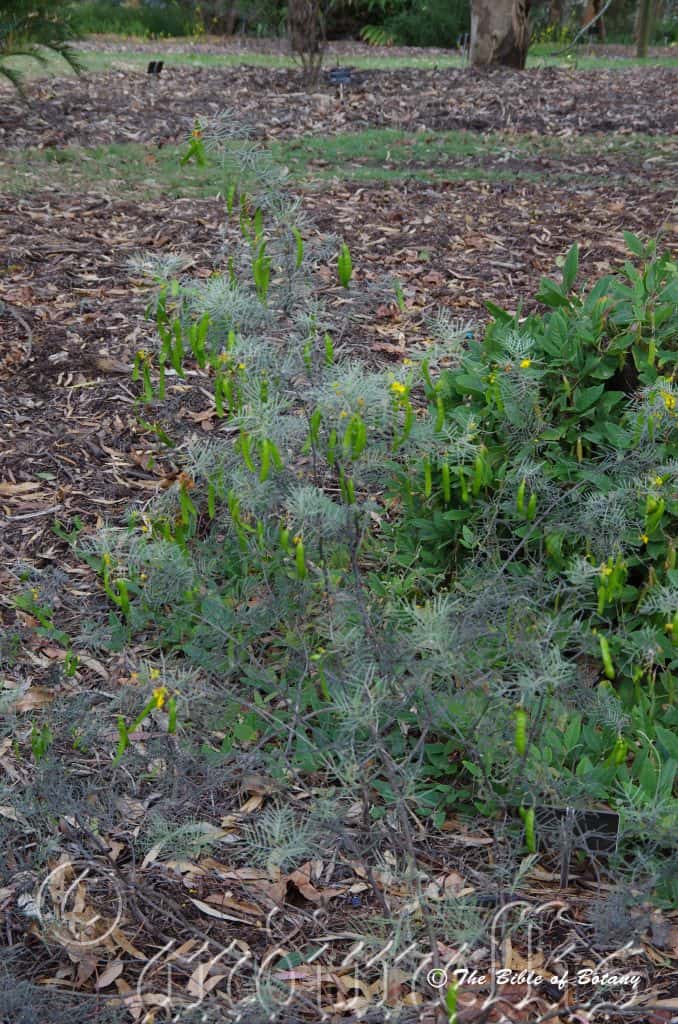
Mount Cootha Botanical Gardens Qld.
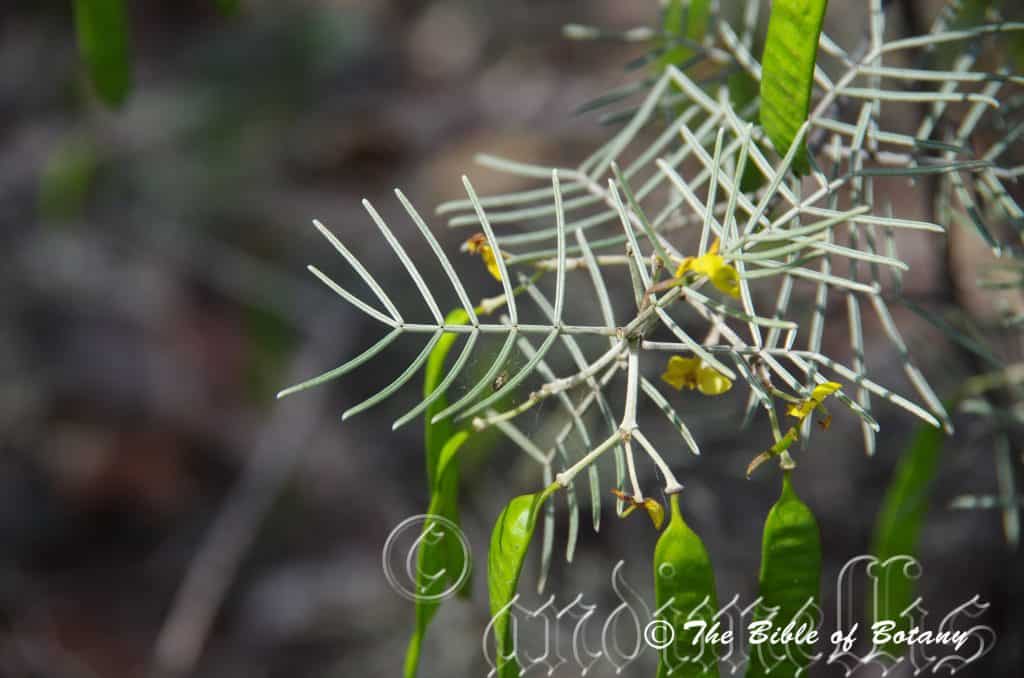
Mount Cootha Botanical Gardens Qld.
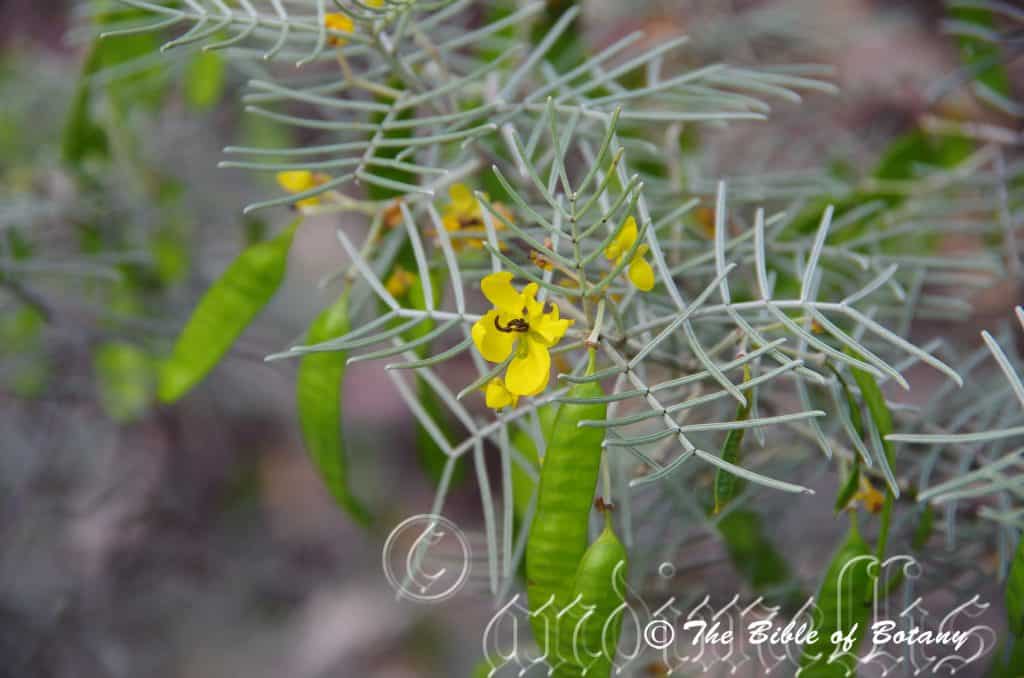
Mount Cootha Botanical Gardens Qld.
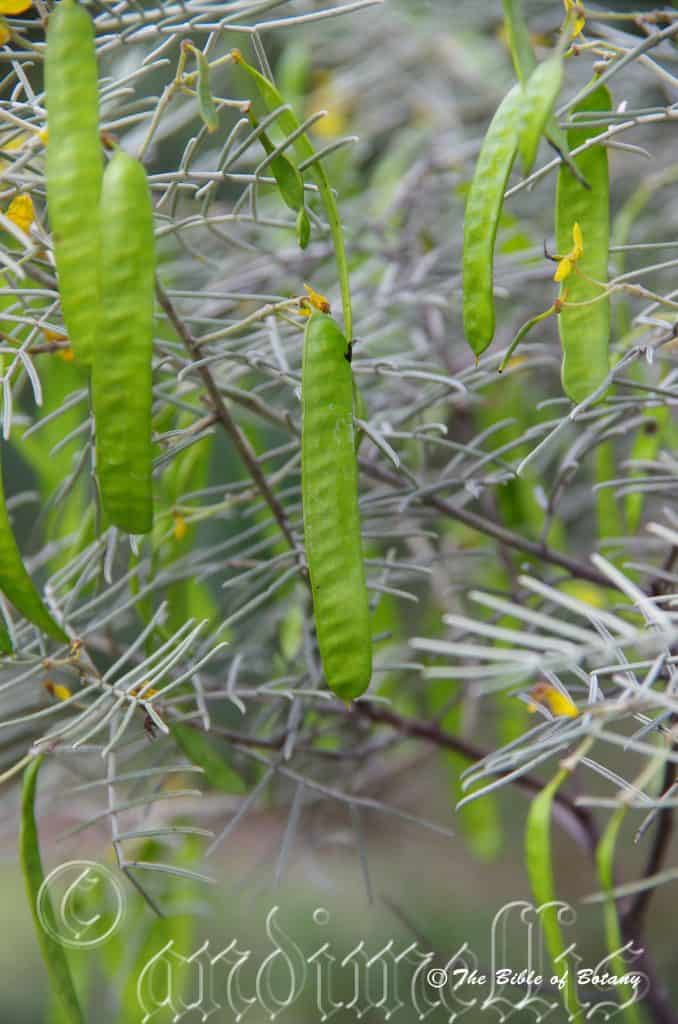
Mount Cootha Botanical Gardens Qld.
Senna artemisioides
Classification:
Class: Eudicots
Subclass: Rosids
Order: Fabales
Family: Fabaceae
Subfamily: Caesalpiniodeae
Tribe: Cassieae
Sub Tribe: Cassiinae
Genus: From Sana, which is Latinized from the Arabic vernacular for plants, which have leaves and pods that have catharitic and laxative properties. It refers to plants, which are catharitic.
Specie: From Artemisia, which is Ancient Greek for the virgin goddess of the hunt and moon and Oides, for alike or similar to. It refers to shrubs, which closely resemble the African Artemisia genus in that the foliage is silvery.
Sub specie: Senna artemisiodes subsp. alica. Is named in honour of Donna Alicia who apparently was a former first lady of the Philippines.
Sub specie: Senna artemisiodes subsp. artemisioides. From Artemisia, which is Ancient Greek for the virgin goddess of the hunt and moon and Oides, for alike or similar to. It refers to shrubs, which closely resemble the African Artemisia genus in that the foliage is silvery.
Sub specie: Senna artemisiodes subsp. circcinnata. From Circinus, which is Latin for to make round or circular. It refers to plants, which have leaves or phyllodes, which are more circular than other species or sub species in the genus.
Sub specie: Senna artemisiodes subsp. coriacea. From Coriceous, which is Latin for like leather or leathery. It refers to leaves, phyllodes and fronds which are thick and leathery to touch.
Sub specie:Senna artemisiodes subsp. filicifolia. From Filices/filix, which is Latin for a fern and Folium, which is Latin for foliage. It refers to a plant leaves, which resemble the fronds of a fern than the other sub species.
Sub specie: Senna artemisiodes subsp. glauciphylla. From Glaucous, which is Latin for a filmy blueish or greyish white powdery covering and Phullon/Phýllon, which is Ancient Greek for a leaf. It refers to leaves or phyllodes, which are covered in a blueish-grey, powdery film.
Sub specie: Senna artemisiodes subsp. hamersleyensis. From Hamersley, which is Latinized for the Hamersley Range and Anum/Ensis, which is Latin for originating from. It refers to plants, which were first discovered from the Hamersley Range in Western Australia.
Sub specie: Senna artemisiodes subsp. helmsii. Is probably named in honour of Richard Helms; 1842-1914, who was an Australian naturalist.
Sub specie: Senna artemisiodes subsp. oligophylla. From Olígoi, which is Ancient Greek for a few and Phullon/Phýllon, which is Ancient Greek for a leaf. It refers to plants, which have fewer leaflets than other species in the genus.
Sub specie: Senna artemisiodes subsp. petiolaris. From Petiolus, which is Latin for a leaf stalk. It refers to leaf stalks, which much longer than other species in the genus.
Sub specie: Senna artemisiodes subsp. quadrifolia. From Quād, which is Latin for four and Folium, which is Latin for foliage. It refers to leaves which have a square or rhomboic shape.
Sub specie: Senna artemisiodes subsp. sturtii. Is named in honour of Captain Charles Napier Sturt; 1795–1869, who was a British born explorer in the interior of Australia and Anum/Ensis which is Latin for to originate from. It refers to plants which were first discovered in the Sturt desert region.
Sub specie: Senna artemisiodes subsp. zygophylla. From Zygos, which is Ancient Greek for joined or a yoke and Phullon/Phýllon, which is Ancient Greek for a leaf. It refers to paired sets of leaves or leaflets, which are joined at the base.
Common Name: Silver Cassia.
Distribution:
Senna artemisiodes subsp. alica is a widespread species found in central Australia with a few populations extending into far eastern Western Australia.
Senna artemisiodes subsp. artemisioides is a widespread species found in the southern three quarters of the Australian mainland and the southern portion of Victoria.
Senna artemisiodes subsp. circcinnata is a widespread species found in the southern central half of Queensland on the western slopes and the western slopes to the far south west plains of New South Wales.
Senna artemisiodes subsp. coriacea is found in the southern three quarters of the Australian mainland including the far north west of Victoria. It is not found in the true deserts.
Senna artemisiodes subsp. filifolia is a widespread species found in the southern three quarters of the Australian mainland and the western half of Victoria.
Senna artemisiodes subsp. glauciphylla is a widespread species found south from 80 mile Beach to Yalgool in Western Australia east to the Central Desert in the Northern Territory.
Senna artemisiodes subsp. hamersleyensis is found in the Hamersley area of Western Australia.
Senna artemisiodes subsp. helmsii
Senna artemisiodes subsp. oligophylla
Senna artemisiodes subsp. petiolaris
Senna artemisiodes subsp. quadrifolia
Senna artemisiodes subsp. sturtii
Senna artemisiodes subsp. zygophylla
https://avh.ala.org.au/occurrences/search?taxa=Senna+artemisiodes#tab_mapView
Habitat Aspect Climate:
Senna artemisioides prefer light dappled shade to full sun. It grows in openings, along seasonal creeks, streams, drainage channels or along roadside drains in semi-arid to desert areas of the continent. The altitude ranges from 2 meters ASL to 650 meters ASL.
The temperatures range from minus 4 degrees in July to 36 degrees in January.
The rainfalls range from lows of 100mm to 600mm average per annum.
Soil Requirements:
Senna artemisioides prefer rocky sandy loams to clay loams. The soils are usually derived from decomposed brown, red, orange-brown sandstones or granites. The soils pH ranges from 4.5pH to 6pH. It does not tolerant of waterlogged soils. Non saline soils to very saline soils are tolerated.
Height & Spread:
Wild Plants: 1m to 3.5m by 1m to 3m.
Characteristics:
Senna artemisioides grows as a medium open to dense shrub with long, slender, olive-grey to olive-brown or bluish-grey stems. The dull stems are glabrous.
The alternate, even pinnate leaves of Senna artemisioides subsp. alica measure 20mm to 30mm in length by 20mm to 40mm in width. The petiolules are terete and measure 4mm to 5mm in length. The single pair of pinnae are oblong to broadly elliptical and measure 10mm to 20mm in length by 8mm to 16mm in width. The base is rounded while the apex is obtuse. The concolourous laminas are pale blue green to mid blue green, dull and glabrous on the upper lamina while the lower lamina is glabrous or very sparsely covered in fawn hairs. The leaf margins are entire, and are strongly recurve. The mid vein is slightly prominent on the lower laminas.
The alternate, mature leaves pinnae are absent in Senna artemisiodes subsp. circcinatta. It is linear and measure 10mm to 20mm in length by 2mm to 4mm in width. The petiolules are terrete and measure 30mm to 50mm in length. The base is difficult to distinguish from the petiole while the apex is narrowly acute. The concolourous laminas are pale blue green to mid blue green, dull and glabrous. The leaf margins are entire, and are strongly recurve. The mid vein is slightly prominent on the lower laminas.
The alternate, even pinnate leaves of Senna artemisiodes subsp. filicifolia measure 20mm to 30mm in length by 20mm to 40mm in width. The petioles are terrete and measure 15mm to 25mm. There are 1 to 4 pairs of pinnae which are oblong to broadly elliptical and measure 10mm to 20mm in length by 8mm to 16mm in width. The base is rounded while the apex is obtuse. The concolourous laminas are pale blue green to mid blue green, dull and glabrous on the upper lamina while the lower lamina is glabrous or very sparsely covered in pale grey hairs. The leaf margins are entire and flat. The mid vein is slightly prominent on the lower laminas.
The alternate, even pinnate leaves of Senna artemisiodes subsp. helmsii measure 15mm to 30mm in length by 20mm to 45mm in width. The petioles are laterally flattenned and measure 20mm to 60mm in length. There are 2 to 4 pairs of pinnae which are obovate and measure 15mm to 30mm in length by 20mm to 45mm in width. The base is rounded while the apex is obtuse. The concolourous laminas are pale blue green to mid blue green, dull and sparsely to densely covered in pale grey pilose hairs. The lamina surfaces are pruinose darken with age. The leaf margins are entire and strongly recurve. The mid vein is slightly prominent on the lower laminas.
The alternate, even pinnate leaves of Senna artemisiodes subsp. petiolarisi measure 20mm to 30mm in length by 20mm to 40mm in width. The petioles are terrete and measure 20mm to 60mm in length by 2mm to 8mm in width. There are 1 to 2 pairs of pinnae which are usually caduceus. It is linear and measure 10mm to 25mm in length by 1.5mm to 8mm in width. The base is rounded while the apex is obtuse. The concolourous laminas are pale blue green to mid blue green, dull and glabrous to densely covered in pale grey hirsute or pulverulent hairs. When glabrous the pinnae are usually pruinose. The leaf margins are entire and strongly recurve. The mid vein is slightly prominent on the lower laminas.
The alternate, even pinnate leaves of Senna artemisiodes subsp. zygophylla measure 20mm to 30mm in length by 20mm to 40mm in width. The petioles are terrete and measure 10mm to 25mm. There are 2 to 3 pairs of pinnae which are elliptical and measure 18mm to 40mm in length by 2mm to 6mm in width. The base is rounded while the apex is obtuse. The concolourous laminas are pale blue green to mid blue green, dull, glaucous and glabrous. The leaf margins are entire and strongly decurve to appear terrete. The mid vein is slightly prominent on the lower laminas.
The inflorescences of Seena artemisiodes measurements are based on Senna artemisiodes subsp. circcinatta and are born in loose peduncles from the leaf axils. There are 3 to 4 (Up to 7 with other sub specie.) flowers on a raceme. The pale green pedicels and peduncules are glabrous and measure 15mm to 20mm in length and 1mm to 2mm respectively. The 5 yellow green sepals are oblong with an obtuse apex, glabrous and measure 5mm to 8mm in length. The 5 bright yellow petals are obovate with an entire margin and measure 10mm to 14mm in length including the 2mm to 3mm stalk by 4mm to 8mm in width.
The 10 filaments are free for their entire length and measure 1mm to 2mm in length. The filaments are yellow and much narrower than the bright yellow brown or ochre anthers. The adnately fixed anthers measure 4mm to 6mm in length by 1mm to 1.5mm in width at the base.
The bright green style, stigma and ovary are glabrous. The pistil measures 8mm to 12mm in length.
Senna artemisiodes subsp. alica’s flowers appear from early June to late November.
Senna artemisiodes subsp. circcinnata’s flowers appear throughout the year.
Senna artemisiodes subsp. filifolia’s flowers appear from early June to late November.
Senna artemisiodes subsp. petiolaris’s flowers appear from early June to late November
Senna artemisiodes subsp. zygophylla’s flowers appear from early June to late November.
Senna artemisiodes’ fruits are long, flat to semi ovate in cross section pods. The pods are glabrous and measure 40mm to 75mm in length by 10mm to 16mm in width and 2mm to 3.5mm in depth. The green capsules turn deep orange brown externally and paler internally when ripe. The pods do not contain pith nor are the seeds segregated. The pods are not laterally compressed and are only slightly compressed between the seeds. The style is persistent on the pods.
The 3 to 9 glossy, deep brown to black seeds are flattened, ellipsoidal and pointed at the apex. The seeds measure 5mm to 6mm in length by 4mm to 5mm in width.
Senna artemisiodes sub sp. circcinnata’s pods are flat and helically coiled once or twice. They measure 60mm to 120mm in length by 8mm to 10mm in width
Wildlife:
Senna artemisiodes support many species of native bees, beetles and butterflies and other pollen eating insects throughout central Australia.
Cultivation:
Seena artemisiodes is a magnificent medium shrub that is worthwhile persevering with in marginal areas along the coast especially in south western, Western Australia and Victoria. It is ideal at the edge of a dry schlerophyll forest garden or in mallee gardens mixed with small growing Eucalyptus specie. They have lost favour with home gardeners in the east because of the nursery trade introducing it to sub-tropical and tropical areas where it quickly succumbs to high rainfall in arid areas. In higher rainfall areas the soil should be left bare to allow for better aeration. Humidity does not seem to be the problem. In cultivation it will grow from 1.5 meters to 2 meters in height by 1.5 meters to 3 meters in diameter when grown in the open.
It grows exceptionally well on lighter soils where deep leaf litter keeps the soil cool and some moisture is retained during dry spells. If these requirements are met they can cope with temperatures as low as minus 3 degrees and up to 36 degrees. It is very drought resistant.
Add to the above, if it is given a little native fertilizer on a regular basis during rain periods the plants will respond with good flowering and fruit over a long period.
It often reaches its full potential in just 2 to 3 years and flower from the second year from seed.
Senna artemisiodes would make an outstanding contribution to the rear of a dry heath or desert garden. Here they can be used as the taller border growing plant giving depth and height to the heath scene. When you design a flat type of heath garden which Senna artemisiodes is well suited use the plants with contours to the rear. To display the other plants in the heath scatter plant them so that the plants are planted close together and are shorter so you can see over them with the exception of the Senna artemisiodes at the rear. These will be feature plants. This can be achieved with using Senna artemisiodes’s blue green narrow leaves contrasting with finer or broader leaf plants in the foreground. Use a lot of procumbent plants like Carpobrotus edulis or Hibbertia specie close to the path. Mix them with other smaller shrubs so none of them dominate the scene but blend in to give a mosaic of foliage colours that you oversee. Here I immediately think of Actinotis helianthi, Grevillea thelemanniana or Verticordia species for three great contrasting foliages.
It is exceptional plants for dry, hot, sunny, sandy banks or scattered amongst boulders.
Another good use is to place the shrubs along the sunny side of sheds below taller trees to enhance shade and cooling.
Propagation:
Seeds: The seeds of Senna artemisiodes can be removed easily from the pods.
Sow fresh seeds directly into a seed raising mix, keeping them moist not wet. Do not over water as the seeds will rot off before germination takes place. Place the trays in a cool shaded area with 50mm shade cloth in the bush house. When the seedlings are 20 to 25 mm tall, prick them out and plant them into 50mm native tubes using a good organic mix.
As the seedlings roots reach the bottom of the tubes plant them out into their permanent position. Do not delay.
Fertilize using seaweed, fish emulsion or organic chicken pellets soaked in water on an alternate basis. Fertilize every two months until the plants are established then twice annually in early September and March to maintain better colour, health, vitality and flowering.
Cuttings:
Fortunately Senna artemisiodes cuttings strike easy. Use 100mm to 200mm long tip cuttings or lateral shoots from the present season’s growth. Take them in warmer months of the year. Remove half the leaves from the bottom section being careful not to tear the bark.
1 Prepare the cutting mix by adding two thirds sharp clean river sand, one third peat or one third perlite. These ingredients must be sterilized,
2 Select good material from non diseased plants,
3 Select semi green stems for cuttings. Look for a stem with two or three nodes,
4 Place the cutting on a flat, hard surface, and make a clean cut down one side of the cutting at the base for 10mm with a sharp sterile knife or razor blade. – This scarification of the node will increase the chances of roots emerging from this spot. Now remove all but one or two the leaves, leaving the apex leaves in tact. If the leaves are very large in proportion to the stem, cut off the apical halves.
5 Hormones are not required,
6 Use a small dipple stick or old pencil to poke a hole into the soilless potting mix. Ensure the hole is slightly larger than the stem diameter and be careful not to damage the base,
7 I like to place the tubes in bucket with holes drilled in the bottom to allow excess water to drain out. A plastic bag that fits over the bucket is ideal to help maintain temperature and moisture. Place in a semi shaded, warm position like under 50mm shade cloth.
8 When the cuttings have struck, open the bag to allow air circulation for a few days to a week,
9 Once hardened off remove the cuttings from the bag and allow to further hardening for a few more days to a week,
10 Transplant into a good potting mix to grow on.
Fertilize using seaweed, fish emulsion or organic chicken pellets soaked in water on an alternate basis. Fertilize every two months until the plants are established then twice annually in early September or March to maintain health, vitality and better flowering.
Further Comments from Readers:
“Hi reader, it seems you use The Bible of Botany a lot. That’s great as we have great pleasure in bringing it to you! It’s a little awkward for us to ask, but our first aim is to purchase land approximately 1,600 hectares to link several parcels of N.P. into one at The Pinnacles NSW Australia, but we need your help. We’re not salespeople. We’re amateur botanists who have dedicated over 30 years to saving the environment in a practical way. We depend on donations to reach our goal. If you donate just $5, the price of your coffee this Sunday, We can help to keep the planet alive in a real way and continue to bring you regular updates and features on Australian plants all in one Botanical Bible. Any support is greatly appreciated. Thank you.”
In the spirit of reconciliation we acknowledge the Bundjalung, Gumbaynggirr and Yaegl and all aboriginal nations throughout Australia and their connections to land, sea and community. We pay our respect to their Elders past, present and future for the pleasures we have gained.
Senna barronfieldii
Classification:
Class: Eudicots
Subclass: Rosids
Order: Fabales
Family: Fabaceae
Subfamily: Caesalpiniodeae
Tribe: Cassieae
Sub Tribe: Cassiinae
Genus: From Sana, which is Latinized from the Arabic vernacular for plants, which have leaves and pods that have catharitic and laxative properties. It refers to plants, which are catharitic.
Specie: Is named in honour of Barron Field; 1786-1846, who was an English born Australian who was a lawyer and naturalist.
Sub specie:
Common Name: Scented Cassia.
Distribution:
Senna barronfieldii is found in several disjunct populations in the north becoming more continuous in the south. It is found east from Mount Isa along the Flinders Highway to Ingham, Proserpine and Townsville in far north Queensland then south to Bega on the southern coast of New South Wales.
It is mainly found on the Western Slopes, on and east of the Great Dividing Range to the coast.
https://avh.ala.org.au/occurrences/search?taxa=Senna+barronfieldii#tab_mapView
Habitat Aspect Climate:
Senna barronfieldii prefers light dappled shade to full sun. It grows in dry to moist Eucalyptus forests or on the margins of dry rainforests. The altitude ranges from 5 meters ASL to 680 meters ASL.
The temperatures range from minus 3 degrees in July to 36 degrees in January.
The rainfalls range from lows of 800mm to 2000mm average per annum.
Soil Requirements:
Senna barronfieldii prefers red sandy loams to medium clays on gentle slopes, hills and mountains. The soils are usually derived from decomposed brown or black basalts, sandstones or metamorphic rocks. The soils pH ranges from 4.5pH to 6.5pH. It is not tolerant of waterlogged soils. Non saline soils to slightly saline soils are tolerated.
Height & Spread:
Wild Plants: 1.8m to 2.5m by 1.5m to 2.5m.
Characteristics:
Senna barronfieldii grows as an erect shrub with deep burgundy brown to reddish purple, glabrous stems. The branchlets turn grass green to olive green closer to the apexes and are densely covered in soft white caducous hirsute and tomentose hairs.
The alternate leaves measure 85mm to 160mm in length by 32mm to 62mm in width. The terete petioles, rachises and petiolules are green to blue green, are slightly winged and covered in soft white hirtellous hairs. The petiolules measure 6mm to 14mm in length while the rachises measure 20mm to 60mm in length and the petioles measure 0mm to 1mm in length. There several small gland between the pinnae.
The 8 to 13 pairs of pinnae are elliptical, lanceolate to oblong. The pinnae measure 10mm to 30mm in length by 5mm to 10mm in width. The bases are slightly obliquely and rounded while the apex is obtuse to acute or mucronate. The discolourous laminas are blue green to deep blue green, dull, glabrous on the upper lamina while the lower lamina is mid grass green. The leaf margins are entire, convex from the mid vein and decurve downwards close to the margins and near the apex. The mid vein and main laterals are slightly prominent on the lower laminas and are distinctly visible from the upper lamina.
Inflorescences are born on a peduncle from the upper leaf axils or terminally. The grass green peduncles are sparsely covered in soft white hirtellous hairs and measure 30mm to 60mm in length. The grass-green pedicels are sparsely covered in soft white hirtellous hairs and measure 15mm to 30mm in length. The 5 grass green, erect, elliptical bracts measure 3.5mm to 6mm in length by 1.5mm to 2mm in width.
There are 3 to 5 individual flowers on a peduncle. The decurve oblanceolate sepals are grass green to olive green and are sparsely covered in soft white hirtellous hairs near the base externally and are glabrous internally. They have a broadly acute apex and measure 7mm to 12mm in length by 5mm to 7mm in width. The 5 bright yellow ovate petals are glabrous and measure 12mm to 20mm in length including the 2mm to 4mm stalk by 10mm to 15mm in width.
There are 10 stamens are free for their entire length. The filaments generally measure 1mm to 1.5mm in length with a 2 or 3 measuring 2mm to 3mm in length. The filaments are yellow and narrower than the bright yellow ochre anthers. The anthers are unequal and measure 4mm to 8mm in length by 1mm to 1.6mm in width.
The bright yellow green style turns yellow ochre near the yellow ochre stigma are glabrous while the green ovary is covered in white hirtellous hairs. The style recurves while the pistil measures 10mm to 15mm in length. The flowers are faintly scented and appear from late September through to late February.
The fruit is a long straight, flat pods. The pods are glabrous with a thickened edge and measure 80mm to 120mm in length by 5mm to 7mm in width. The green to blue green pods turn reddish brown and semi glossy externally and paler and duller internally when ripe. It is very slightly restricted between the seeds. The style is persistent on the pods. The 7 to 11 semi glossy pale brown seeds are flattened, ellipsoidal and measure 3mm to 4mm in length by 2mm to 3mm in width.
Wildlife:
Senna barronfieldii supports many species of native bees, beetles and butterflies along the east coast of Australia.
Cultivation:
Senna barronfieldii is an unusual medium shrub that is worthwhile growing east of the Great Dividing Range and in the arid areas of Australia. It is ideal at the edge of a moist Eucalyptus forest garden. In cultivation they will grow from 1.5 meters to 2.5 meters in height by 1.5 meters to 2.5 meters in diameter when grown in the open.
It can be lightly tipped pruned to enhance bushiness and consequently more blooms in the following season.
It grows exceptionally well on all soils where deep leaf litter keeps the soil cool and some moisture is retained during dry spells in arid areas. In higher rainfall areas the soil should be left bare to allow for better aeration. If these requirements are met they can cope with temperatures as low as 2 degrees and up to 40 degrees. It is very drought resistant once established.
Add to the above, if it is given a little native fertilizer during rain periods in rain in higher rainfall zones or a little extra water in drier zones on a regular basis the plants will respond with excellent flowering and pod set over a long period.
Senna barronfieldii would make an outstanding contribution to the rear of a moist heath. Here they can be used as a taller border growing plant giving depth and height to the small heath scene. When you design a flat heath garden which it is well suited use the plants with contours to the rear for a step up affect or scatter plant them for colour throughout the bed. To display the other plants in the heath scatter plant them so that the plants are planted close together and are shorter so you can see over them with the exception of the Senna barronfieldii. These will be feature plants. This can be achieved with using Senna barronfieldii’s beautiful green oblong pinnae contrasting with the golden yellow rachises as the draw card. These will then further contrast with broader or narrower bright green leaf plants either in the foreground or surrounding the Senna. This will make the garden look deeper from the path and taller at the back. Use a lot of procumbent plants like Carpobrotus edulis or Rhodanthe roseum close to the path. Mix them with other smaller shrubs so none of them dominate the scene but blend in to give a mosaic of foliage colours that you oversee. Here I immediately think of Actinotis helianthi, Grevillea thelemanniana or Verticordia species for three great contrasting foliages.
It is exceptional plants for moist, hot, sunny, sandy banks or scattered sparingly amongst boulders.
Propagation:
Seeds: The seeds can be removed easily from the mature pods.
Sow fresh seeds directly into a seed raising mix, keeping them moist not wet. Do not over water as the seeds will rot off before germination takes place. Place the trays in a cool shaded area with 50mm shade cloth in the bush house. When the seedlings are 20 to 25 mm tall, prick them out and plant them into 50mm native tubes using a good organic mix.
As the seedlings roots reach the bottom of the tubes plant them out into their permanent position. Do not delay.
Mass plantings are best achieved with spacing’s of 2 meter centers.
Fertilize using seaweed, fish emulsion or organic chicken pellets soaked in water on an alternate basis. Fertilize every two months until the plants are established then twice annually in early September and March to maintain better colour, health, vitality and flowering.
Further Comments from Readers:
“Hi reader, it seems you use The Bible of Botany a lot. That’s great as we have great pleasure in bringing it to you! It’s a little awkward for us to ask, but our first aim is to purchase land approximately 1,600 hectares to link several parcels of N.P. into one at The Pinnacles NSW Australia, but we need your help. We’re not salespeople. We’re amateur botanists who have dedicated over 30 years to saving the environment in a practical way. We depend on donations to reach our goal. If you donate just $5, the price of your coffee this Sunday, We can help to keep the planet alive in a real way and continue to bring you regular updates and features on Australian plants all in one Botanical Bible. Any support is greatly appreciated. Thank you.”
In the spirit of reconciliation we acknowledge the Bundjalung, Gumbaynggirr and Yaegl and all aboriginal nations throughout Australia and their connections to land, sea and community. We pay our respect to their Elders past, present and future for the pleasures we have gained.
Senna cardiosperma
Classification:
Class: Eudicots
Subclass: Rosids
Order: Fabales
Family: Fabaceae
Subfamily: Caesalpiniodeae
Tribe: Cassieae
Sub Tribe: Cassiinae
Genus: From Sana, which is Latinized from the Arabic vernacular for plants, which have leaves and pods that have catharitic and laxative properties. It refers to plants, which are catharitic.
Specie: From Kardía, which is Ancient Greek for a heart and Sperma/Spermum, which is Ancient Greek for seeds or a seed. It refers to the seeds or pods which are heart shape or having spots on the seeds.
Sub specie:
Common Name:
Distribution:
Senna cardiosperma is a widespread species found in southern Western Australia south from Southern Cross and Queen Victoria Spring Nature Reserve to the Esperance Coastal Plains and east from Laverton to Dagger Hills. There are several disjunct populations as far north as the Pilbara.
https://avh.ala.org.au/occurrences/search?taxa=Senna+cardiosperma#tab_mapView
Habitat Aspect Climate:
Senna cardiosperma prefer light dappled shade to full sun. It grows on plains and gentle slopes in open woodlands and shallow depressions. The altitude ranges from 250 meters ASL to 350 meters ASL.
The temperatures range from 4 degrees in July to 36 degrees in January.
The rainfalls range from lows of 150mm to 600mm average per annum.
Soil Requirements:
Senna cardiosperma prefers rocky sandy loams to clay loams. The soils are usually derived from decomposed brown, red, orange-brown sandstones or conglomerates. The soils pH ranges from 4.5pH to 6pH. It does not tolerant of waterlogged soils. Non saline soils to very saline soils are tolerated.
Height & Spread:
Wild Plants: 1.5m to 2m by 2m to 3m.
Characteristics:
Senna cardiosperma grows as a medium bushy shrub long, slender rusty-brown to greyish-green stems. The dull stems are glabrous to sparsely covered in white puberulent hairs.
The alternate, pinnate leaves of Senna cardiosperma measure 5mm to 11mm in length by 20mm to 30mm in width. The terete peduncle and rachis are glabrous. The peduncle measures 2mm to 2.5mm. The acicular stipules are caducous. The pinnae are spaced 1mm to 5mm apart along the rachis. There is a single gland between the lowest pair of leaves. The 2 to 8 opposite pinnae are linear to narrow spathulate and measure 8mm to 15mm in length by 1mm to 3mm in width. The bases taper to the rachis while the apexes are obtuse or emarginate. The concolourous laminas are pale blue green to mid blue green, dull and glabrous. The leaf margins are entire while the lamina is concave between the margins. The mid vein is slightly prominent on the lower laminas.
Inflorescences of Senna cardiosperma are born in loose sub umbellate from the leaf axils. There are 2 to 4 flowers on a peduncle. The pale green peduncules and pedicels are glabrous. The peduncles measure 3mm to 5mm in length while the pedicels measure 5mm to 10mm respectively. The bracts are caducous. The 5 cupuliform pale orange-brown sepals are ovate with an obtuse apex and hyaline yellowish margins. The glabrous sepals measure 2mm to 2.6mm in length. The 5 bright yellow petals are ovate with an obtuse apex and measure 4mm to 6.5mm in length by 4mm to 6mm in width.
The 10 fertile filaments are free for their entire length and measure 1mm to 2mm in length. The filaments are yellow and much narrower than the bright yellow anthers. 9 of the adnately fixed anthers measure 2mm to 3mm in length by 0.8mm to 1.2mm in width at the base while the 10th anther is much longer than the others.
The bright green style, stigma and ovary are glabrous. The pistil measures 6mm to 8mm in length. Senna acclinis’s flowers appear from late August through to late February.
Senna cardiosperma’s fruits are long, flat pods. The pods are glabrous and measure 20mm to 50mm in length by 6mm to 8mm in width and 2mm to 3.5mm in depth. The green capsules turn deep red brown to deep grey black externally and fawn internally when ripe. The pods do not contain pith nor are the seeds segregated. The pods are not laterally compressed and are only slightly compressed between the seeds. The style is persistent on the pods. The 3 to 8 dull deep brown seeds are slightly flattened and ellipsoidal. The seeds measure 4mm to 5mm in length by 4mm to 5mm in width.
Wildlife:
Senna cardiosperma support many species of native bees, beetles and butterflies in central Western Australia.
Cultivation:
Senna cardiosperma is a magnificent medium shrub that is worthwhile growing in marginal areas along the coast especially in south western, Western Australia and Victoria. It is ideal at the edge of a dry schlerophyll forest garden or in mallee gardens mixed with small growing Eucalyptus. They have lost favour with home gardeners in the east because the nursery trade introduced it to sub-tropical and tropical areas where it quickly succumbed to high rainfall. Humidity does not seem to be the problem. In cultivation they will grow from 1.5 meters to 2 meters in height by 2 meters to 3 meters in diameter when grown in the open.
They grow exceptionally well on lighter soils where deep leaf litter keeps the soil cool and some moisture is retained during dry spells in arid areas. In higher rainfall areas the soil should be left bare to allow for better aeration. If these requirements are met they can cope with temperatures as low as minus 2 degrees and up to 36 degrees. It is very drought resistant.
Add to the above, if it is given a little native fertilizer on a regular basis during rain periods the plants will respond with good flowering over a long period.
They often reach their full potential in just 2 to 3 years and flower from the second year from seed.
Senna cardiosperma would make an outstanding contribution to the rear of a dry heath or desert garden. Here they can be used as the taller border growing plant giving depth and height to the heath scene. When you design a flat type of heath garden which Senna acclinis is well suited use the plants with contours to the rear. To display the other plants in the heath scatter plant them so that the plants are planted close together and are shorter so you can see over them with the exception of the Senna artemisioides at the rear. These will be feature plants. This can be achieved with using Senna artemisiodes’s blue green narrow leaves contrasting with finer or broader leaf plants in the foreground. Use a lot of procumbent plants like Carpobrotus edulis or Hibbertia specie close to the path. Mix them with other smaller shrubs so none of them dominate the scene but blend in to give a mosaic of foliage colours that you oversee. Here I immediately think of Actinotis helianthi, Grevillea thelemanniana or Verticordia species for three great contrasting foliages.
It is exceptional plants for dry, hot, sunny, sandy banks or scattered amongst boulders.
Another good use is to place the shrubs along the sunny side of sheds below taller trees to enhance shade and cooling.
Propagation:
Seeds: The seeds of Senna cardiosperma can be removed easily from the pods.
Sow fresh seeds directly into a seed raising mix, keeping them moist not wet. Do not over water as the seeds will rot off before germination takes place. Place the trays in a cool shaded area with 50mm shade cloth in the bush house. When the seedlings are 20 to 25 mm tall, prick them out and plant them into 50mm native tubes using a good organic mix.
As the seedlings roots reach the bottom of the tubes plant them out into their permanent position. Do not delay.
Fertilize using seaweed, fish emulsion or organic chicken pellets soaked in water on an alternate basis. Fertilize every two months until the plants are established then twice annually in early September and March to maintain better colour, health, vitality and flowering.
Further Comments from Readers:
“Hi reader, it seems you use The Bible of Botany a lot. That’s great as we have great pleasure in bringing it to you! It’s a little awkward for us to ask, but our first aim is to purchase land approximately 1,600 hectares to link several parcels of N.P. into one at The Pinnacles NSW Australia, but we need your help. We’re not salespeople. We’re amateur botanists who have dedicated over 30 years to saving the environment in a practical way. We depend on donations to reach our goal. If you donate just $5, the price of your coffee this Sunday, We can help to keep the planet alive in a real way and continue to bring you regular updates and features on Australian plants all in one Botanical Bible. Any support is greatly appreciated. Thank you.”
In the spirit of reconciliation we acknowledge the Bundjalung, Gumbaynggirr and Yaegl and all aboriginal nations throughout Australia and their connections to land, sea and community. We pay our respect to their Elders past, present and future for the pleasures we have gained.
Senna charlesiana
Classification:
Class: Eudicots
Subclass: Rosids
Order: Fabales
Family: Fabaceae
Subfamily: Caesalpiniodeae
Tribe: Cassieae
Sub Tribe: Cassiinae
Genus: From Sana, which is Latinized from the Arabic vernacular for plants, which have leaves and pods that have catharitic and laxative properties. It refers to plants, which are catharitic.
Specie: Is named in honour of Charles.
Sub specie:
Common Name:
Distribution:
Senna charlesiana is mainly found in an area bounded east from Shark’s Bay to Lorna-Glen Reserve then south to Lake Goongarie and west to Perth.
https://avh.ala.org.au/occurrences/search?taxa=Senna+charlesiana#tab_mapView
Habitat Aspect Climate:
Senna charlesiana prefers light full sun. It grows on plains and gentle slopes in shallow depressions in open dry woodland heaths or open Acacia woodlands. The altitude ranges from 5 meters ASL to 350 meters ASL.
The temperatures range from 4 degrees in July to 36 degrees in January.
The rainfalls range from lows of 150mm to 600mm average per annum.
Soil Requirements:
Senna charlesiana prefers rocky sandy loams to clay loams. The soils are usually derived from decomposed brown, red, or orange-brown sandstones or granitic sands. The soils pH ranges from 4.5pH to 6pH. It does not tolerant of waterlogged soils. Non saline soils to very saline soils are tolerated.
Height & Spread:
Wild Plants: 1m to 2m by 1m to 2m.
Characteristics:
Senna charlesiana grows as an erect to small spreading shrub with long, slender, deep reddish-brown bark. The bark is hard and covered in paler, fine tuberculate lumps and nodules from discarded leaves. The smaller stems are mid green and sparsely to densely covered in white pubescent hairs.
The alternate, terete or laterally compressed leaflets of Senna charlesiana measure 40mm to 100mm in length. The petioles are acicular or slightly compressed terete and measures 4mm to 10mm in length by 1mm to 2mm in diameter. The petiolules and leaflets are deep sea-green, semi dull and glabrous or sparsely to densely covered in white, caducous, pubescent hairs. The caducous stipules are acicular. The single leaf or 1 or 2 pairs of leaflets measure 5mm to 20mm in length by 1mm to 3mm in width. The second pair when present is 15mm above the first pair. The 1 or 2 glands are flat or globular.
Inflorescences of Senna charlesiana are born sub umbellatus from the leaf axils. There are 2 to 4 flowers on a peduncle. The pale green peduncles and pedicels are glabrous. The peduncles measure 10mm to 20mm in length while the pedicels measure 5mm to 7mm in length. The minute bracts are caducous or persistent. The 5 mid blue-green cupuliform sepals are ovate with an obtuse apex and are sparsely to densely covered in white pubescent hairs. The sepals measure 2mm to 2.5mm in length. The 5 bright yellow petals are ovate with an obtuse apex, entire margin and are sparsely to moderately covered in white pubescent hairs externally and are glabrous internally. The petals measure 11mm to 15mm in length by 9mm to 11mm in width.
The 10 filaments are free for their entire length, are unequal in length and measure 0.8mm to 2mm in length. The filaments are yellow and much narrower than the ochre brown anthers. 9 of the adnately fixed anthers measure 2mm to 3mm in length by 1mm to 2mm in width at the base while the 10th anther is longer than the others and measures 3mm to 4mm in length.
The bright green style stigma and ovary are glabrous. The compressed terete style curves 90 degrees as it approaches the stigma. The pistil measures 12mm to 16mm in length. Senna acclinis’s flowers appear from late August through to late February. The flowers appear from early June to late October.
Senna charlesiana fruits are long, flat to semi ovate in cross section pods. The pods are glabrous and measure 50mm to 60mm in length by 11mm to 14mm in width and 2mm to 3.5mm in depth. The green capsules turn deep fawn externally and fawn internally and twist when ripe. The pods do not contain pith nor are the seeds segregated. The pods are not laterally compressed and are only slightly compressed between the seeds. The style is persistent on the pods.
The 3 to 8 dull, deep brown seeds are oblong and flat.
Wildlife:
Senna charlesiana support many species of native bees like Tetragonula carbonaria, beetles and butterflies in central Western Australia.
Cultivation:
Senna charlesiana is an unusual medium shrub that is worthwhile growing in marginal areas along the coast especially in south western, Western Australia, South Australia and central Victoria. It is ideal at the edge of a dry schlerophyll forest garden or in mallee gardens mixed with small growing Eucalyptus. In cultivation it will grow from 1.5 meters to 2 meters in height by 2 meters to 3 meters in diameter when grown in the open.
It grows exceptionally well on heavier soils where deep leaf litter keeps the soil cool and some moisture is retained during dry spells in arid areas. In higher rainfall areas the soil should be left bare to allow for better aeration. If these requirements are met they can cope with temperatures as low as minus 2 degrees and up to 36 degrees. It is very drought resistant.
Add to the above, if it is given a little native fertilizer on a regular basis during rain periods the plants will respond with good flowering over a long period.
It often reaches its full potential in just 2 to 3 years and flower from the second year from seed.
Senna charlesiana would make an outstanding contribution to the rear of a dry heath or desert garden. Here it can be used as the taller border growing plant giving depth and height to the heath scene. When you design a flat heath garden which Senna charlesiana is well suited use the plants with contours to the rear. To display the other plants in the heath scatter plant them so that the plants are planted close together and are shorter so you can see over them with the exception of the Senna cardiosperma at the rear. These will be feature plants. This can be achieved with using Senna artemisiodes’s deep green acicular leaves and contrast them with broader grey leaf plants in the foreground. This will make the garden look deeper from the path and taller at the back. Use a lot of procumbent plants like Carpobrotus edulis or Hibbertia specie close to the path. Mix them with other smaller shrubs so none of them dominate the scene but blend in to give a mosaic of foliage colours that you oversee. Here I immediately think of Actinotis helianthi, Grevillea thelemanniana or Verticordia species for three great contrasting foliages.
It is exceptional plants for dry, hot, sunny, sandy banks or scattered amongst boulders.
Another good use is to place the shrubs along the sunny side of sheds below taller trees to enhance shade and cooling.
Propagation:
Seeds: The seeds of Senna charlesiana can be removed easily from the pods.
Sow fresh seeds directly into a seed raising mix, keeping them moist not wet. Do not over water as the seeds will rot off before germination takes place. Place the trays in a cool shaded area with 50mm shade cloth in the bush house. When the seedlings are 20 to 25 mm tall, prick them out and plant them into 50mm native tubes using a good organic mix.
As the seedlings roots reach the bottom of the tubes plant them out into their permanent position. Do not delay.
Fertilize using seaweed, fish emulsion or organic chicken pellets soaked in water on an alternate basis. Fertilize every two months until the plants are established then twice annually in early September and March to maintain better colour, health, vitality and flowering.
Further Comments from Readers:
“Hi reader, it seems you use The Bible of Botany a lot. That’s great as we have great pleasure in bringing it to you! It’s a little awkward for us to ask, but our first aim is to purchase land approximately 1,600 hectares to link several parcels of N.P. into one at The Pinnacles NSW Australia, but we need your help. We’re not salespeople. We’re amateur botanists who have dedicated over 30 years to saving the environment in a practical way. We depend on donations to reach our goal. If you donate just $5, the price of your coffee this Sunday, We can help to keep the planet alive in a real way and continue to bring you regular updates and features on Australian plants all in one Botanical Bible. Any support is greatly appreciated. Thank you.”
In the spirit of reconciliation we acknowledge the Bundjalung, Gumbaynggirr and Yaegl and all aboriginal nations throughout Australia and their connections to land, sea and community. We pay our respect to their Elders past, present and future for the pleasures we have gained.
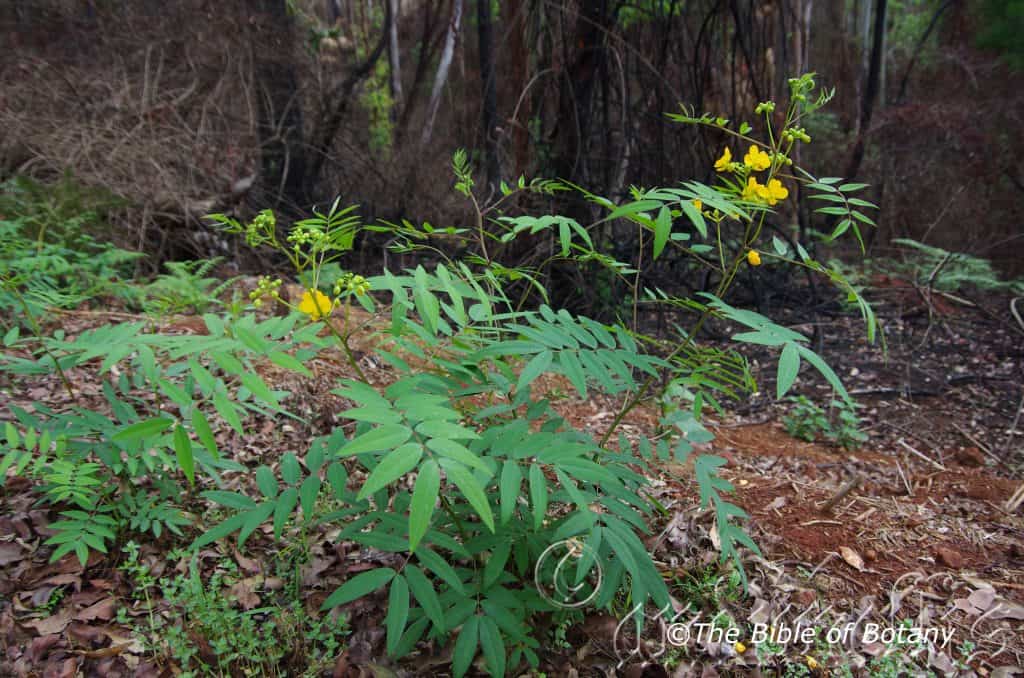
Ewingar Floral Reserve NSW
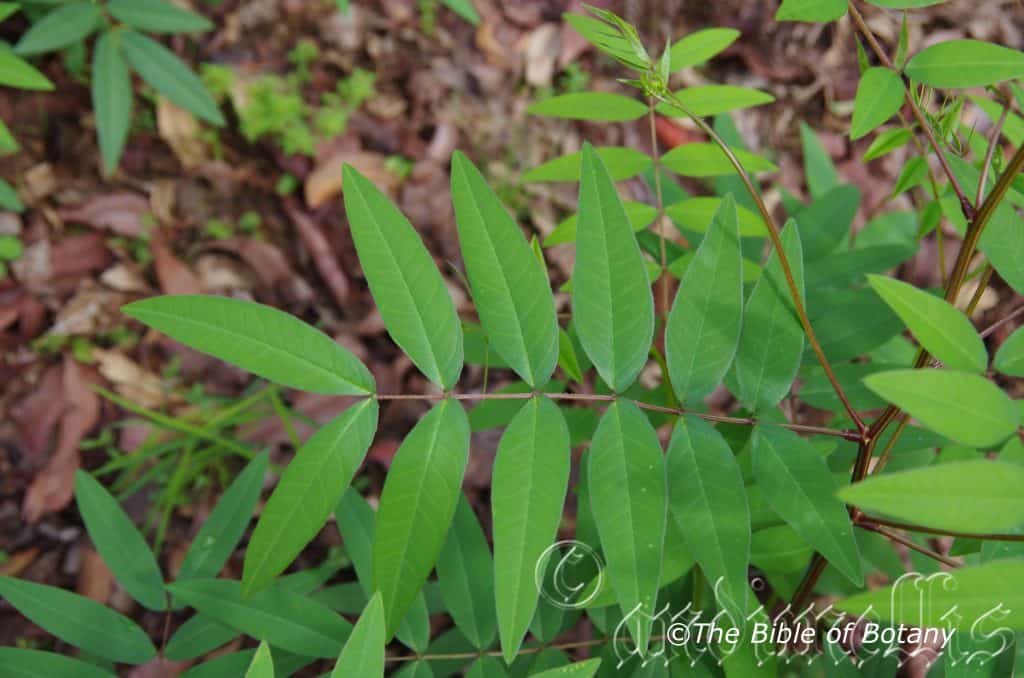
Ewingar Floral Reserve NSW
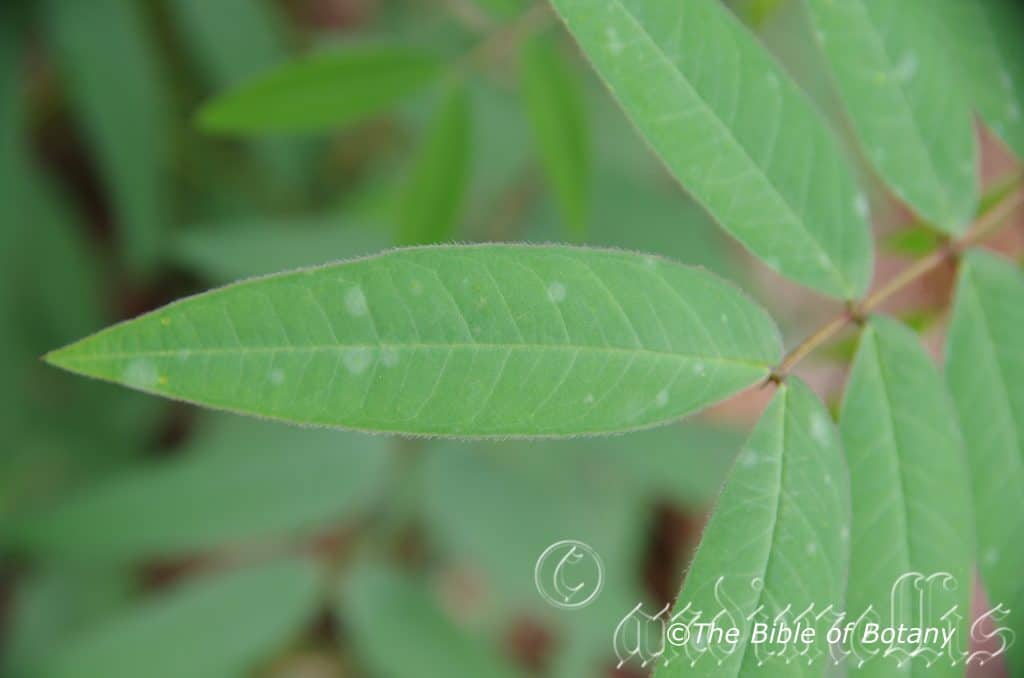
Ewingar Floral Reserve NSW
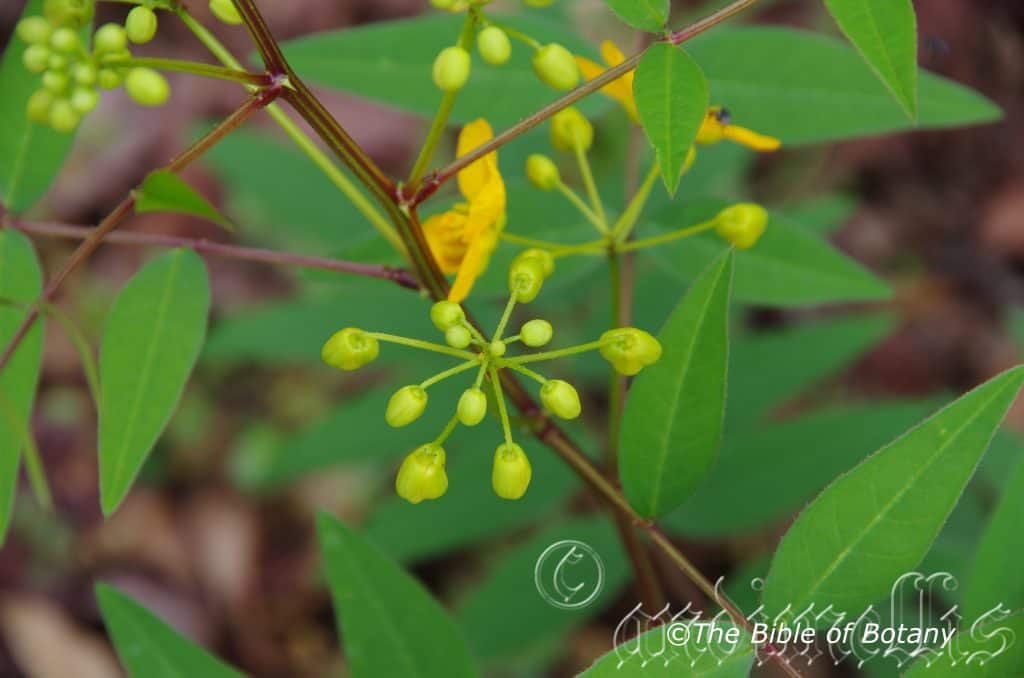
Ewingar Floral Reserve NSW
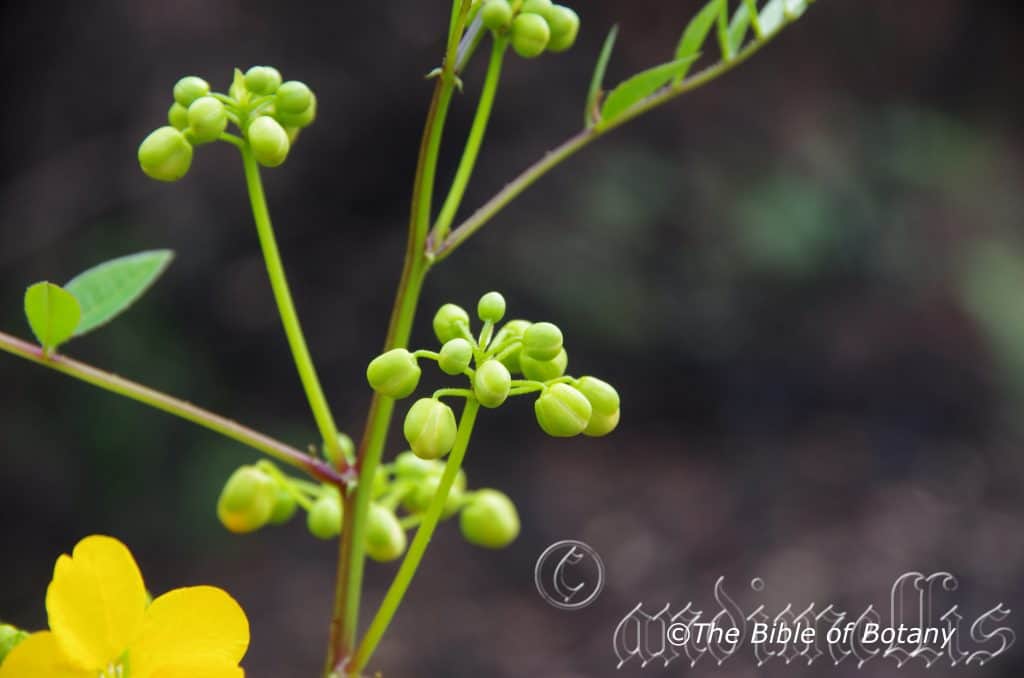
Ewingar Floral Reserve NSW
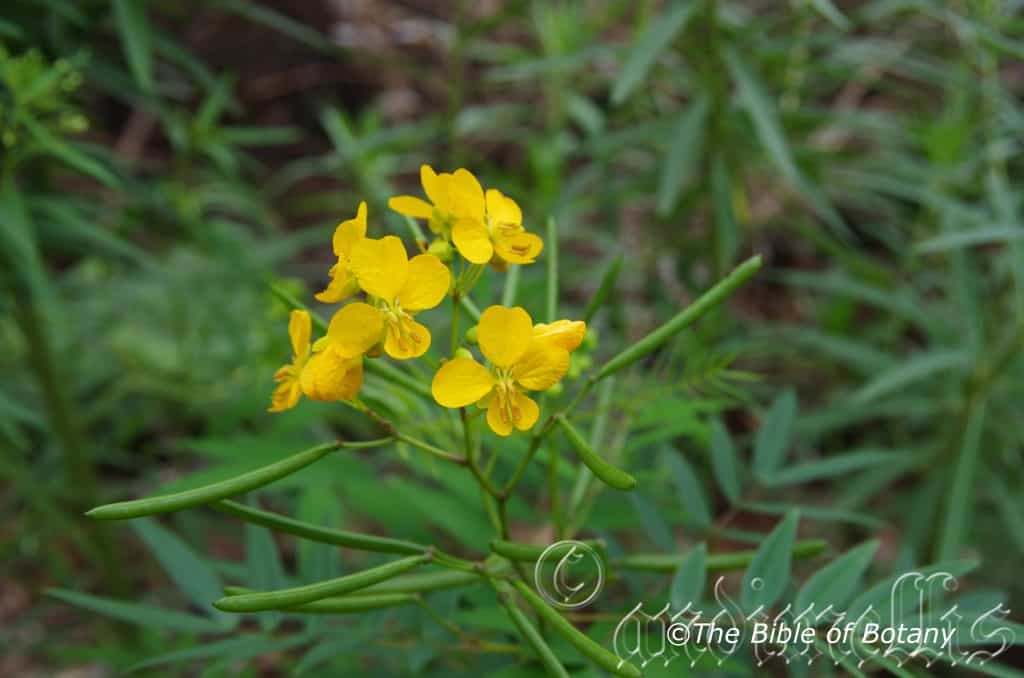
Ewingar Floral Reserve NSW
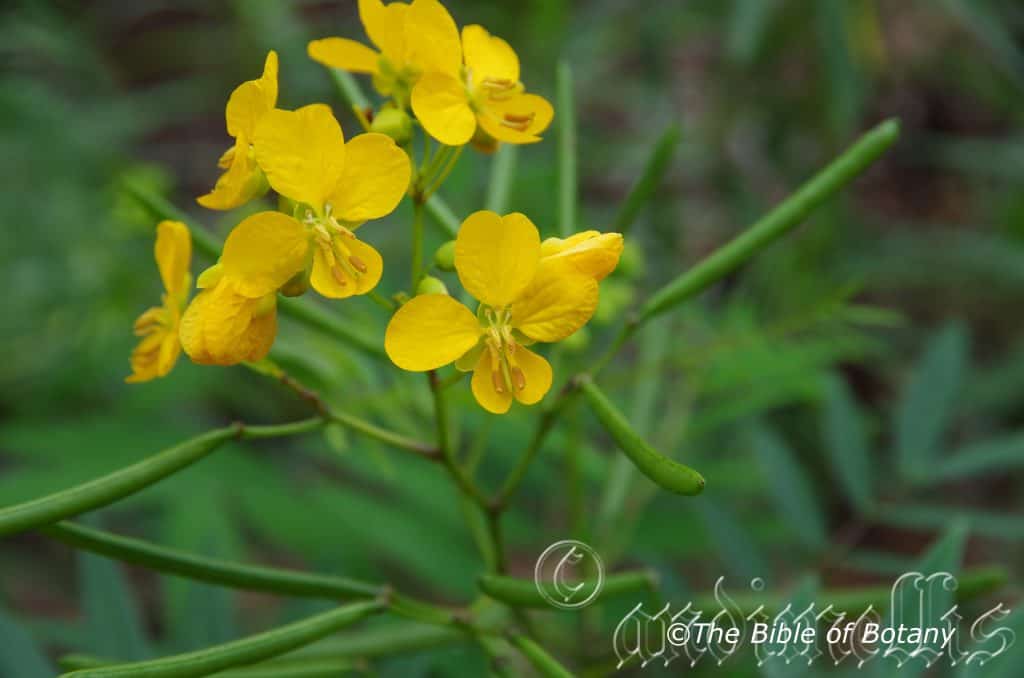
Ewingar Floral Reserve NSW
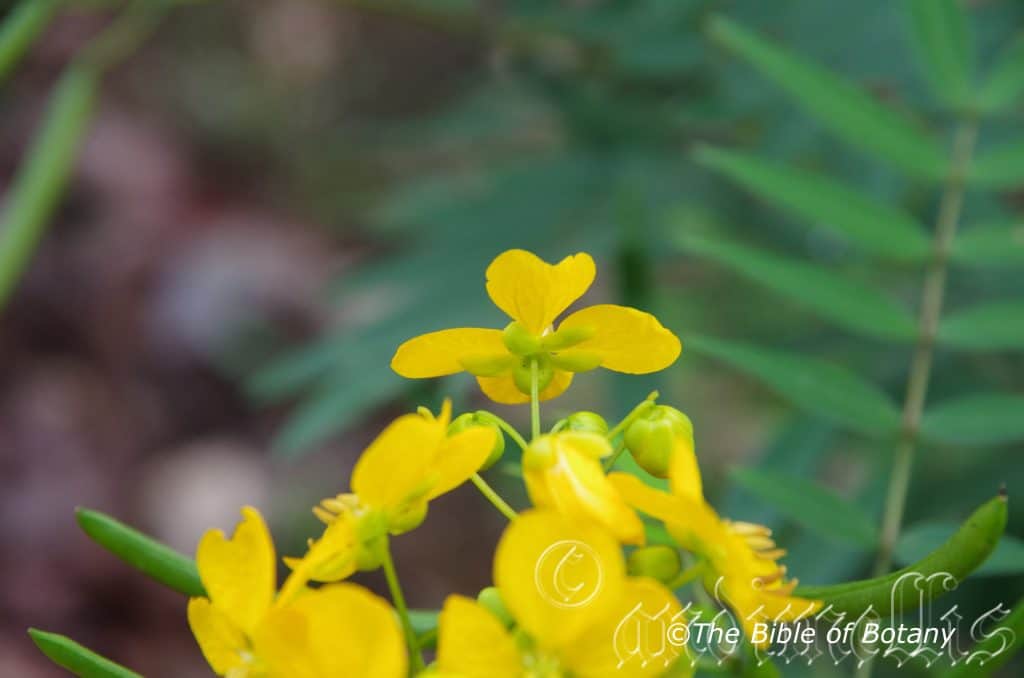
Ewingar Floral Reserve NSW
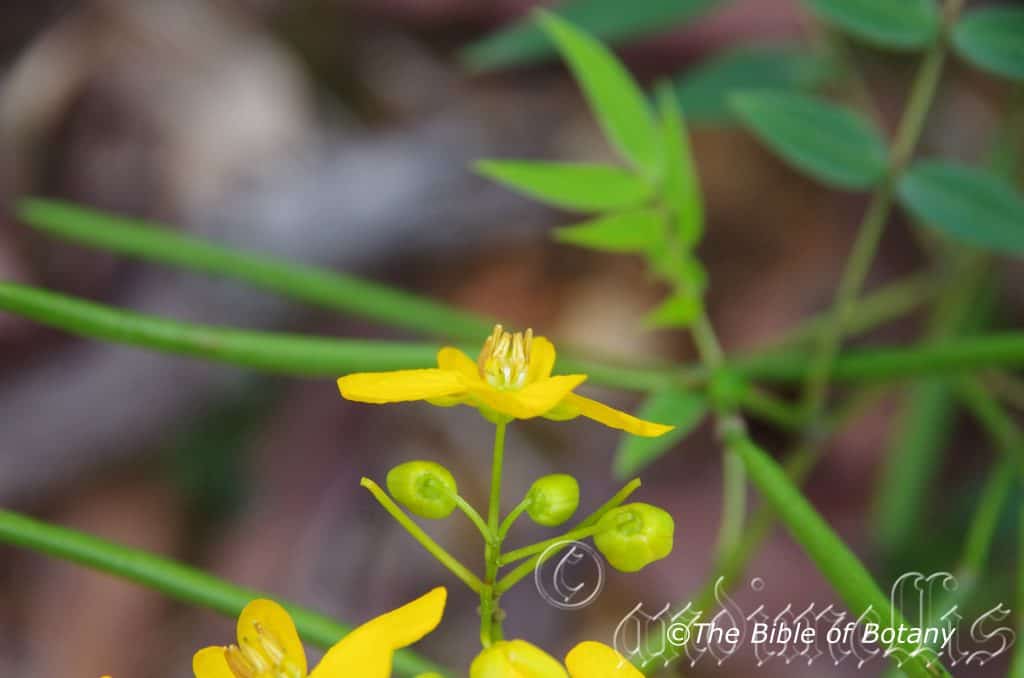
Ewingar Floral Reserve NSW
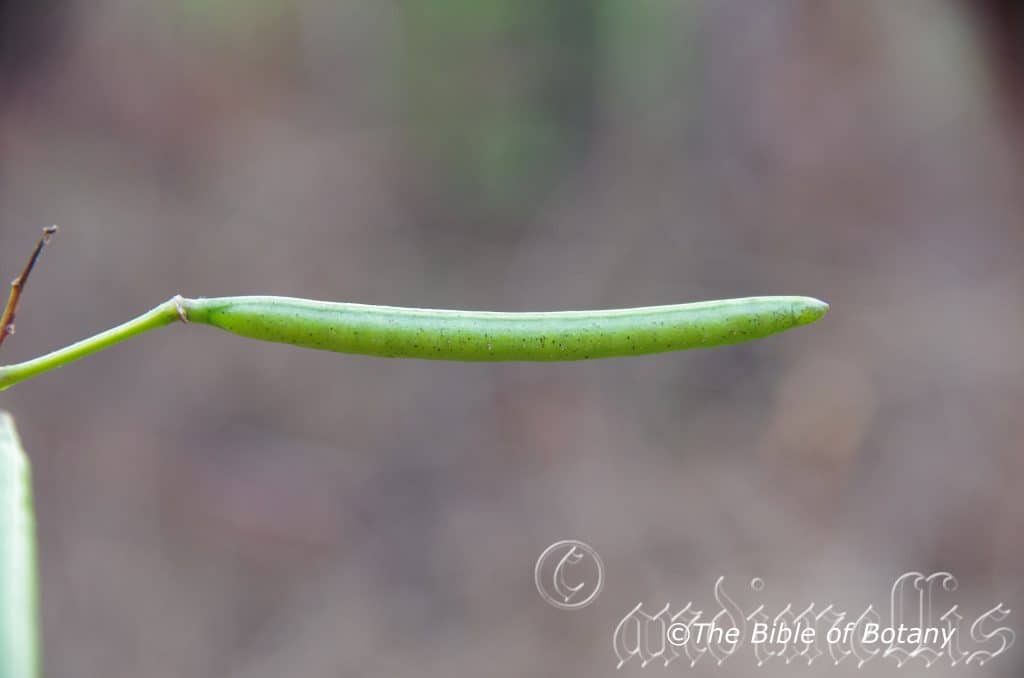
Ewingar Floral Reserve NSW
Senna clavigera
Classification:
Class: Eudicots
Subclass: Rosids
Order: Fabales
Family: Fabaceae
Subfamily: Caesalpiniodeae
Tribe: Cassieae
Sub Tribe: Cassiinae
Genus: From Sana, which is Latinized from the Arabic vernacular for plants, which have leaves and pods that have catharitic and laxative properties. It refers to plants, which are catharitic (purgative).
Specie: From Clavatum which is Latin for a club. It refers to organs, which have a club shape.
Sub specie:
Common Name:
Distribution:
Senna clavigera is found in several disjunct populations south from Girringun National Park west of Cardwell in far north Queensland to Morton National Park in southern coastal New South Wales. It is mainly found on and east of the Great Dividing Range except for a population from the Barcoo River to the Carnarvon Gorge National Park.
https://avh.ala.org.au/occurrences/search?taxa=Senna+clavigera#tab_mapView
Habitat Aspect Climate:
Senna clavigera prefers light dappled shade to full sun. It grows in or adjacent to warm, well developed rainforests. The altitude ranges from 5 meters ASL to 800 meters ASL.
The temperatures range from minus 2 degree in July to 36 degrees in January.
The rainfalls range from lows of 800mm to 3000mm average per annum.
Soil Requirements:
Senna clavigera prefers better quality loams to medium clay loams on flats or gentle slopes. The soils are usually derived decomposed brown or black basalts, sandstones or metamorphic rocks. The soils pH ranges from 4.5pH to 6.5pH. It is not tolerant of waterlogged soils. Non saline soils to moderately saline soils are tolerated.
Height & Spread:
Wild Plants: 1m to 1.5m by 1m to 1.5m.
Characteristics:
Senna clavigera grows as a small to medium shrub long, slender, mid green stems. The branchlets are green and very sparsely covered in white hirsute hairs. The new growth is sparsely to densely covered in white caducous hirsute hairs.
The alternate, pinnate leaves of Senna clavigera have 4 to 6 pairs of pinnae and measure 100mm to 125mm in length by 50mm to 70mm in width. The petioles have 2 triangular stipules which measure 1mm to 2.4mm in length. The rachis has a gland between 5mm and 8mm from the base. The petiole and rachis are sparsely covered in white hirsute hairs and a have a channel on the upper surface. The petioles measure 15mm to 35mm in length while the rachis measures 40mm to 90mm in length. The elliptical to narrow elliptical pinnae measure 30mm to 70mm in length by 8mm to 20mm in width. The discolourous pinnae are deep blue green, semi dull and glabrous or sparsely covered in white, caducous, hirsute hairs. The pinnae margins are entire, flat and curve slightly upwards from the rachis.
Inflorescences of Senna clavigera are born on short loose cymes from the leaf axils. The green peduncles and pedicels are glabrous to sparsely cover in white hirsute hairs and measure 20mm to 40mm in length and 12mm to 15mm in length respectively. The 5 pale green to pale green sepals are divaricate, glabrous to sparsely covered in white hirsute hairs and measure 1mm to 1.5mm in length. The 5 lemon yellow petals are ovate with an obtuse apex with an entire margin. The petals measure 9mm to 12mm in length including the 1mm to 1.5mm stalk by 6mm to 8mm in width.
The 10 filaments are free for their entire length. There are 6 fertile stamens and 4 staminodes. The fertile anthers are unequal in length with 4 being longer and 2 being shorter. The filaments measure 1.5mm to 2mm in length for the shorter stamens and 3mm to 4mm for the longer anthers. The filaments are yellow and much narrower than the ochre anthers. The anthers measure 2mm to 2.5mm on the shorter anthers and 3mm to 3.5mm in length by 1mm in width for the longer anthers.
The bright green style and stigma are glabrous while the green ovary is sparsely covered in white hirsute hairs. The recurved style curves. The pistil measures 5mm to 6mm in length. Senna acclinis’s flowers appear from late November through to late February.
The fruits of Senna clavigera are cylindrical pods. The pods are glabrous and measure 40mm to 65mm in length by 5mm to 6.5mm in diameter. The olive green pods turn deep brown externally and paler internally with paler margins when ripe. It is very slightly restricted between the seeds. The style is persistent on the pods. The 35 to 50 glossy olive green seeds are flattened, ellipsoidal and measure 3mm to 4mm in length by 2mm to 3mm in width.
Wildlife:
Cassia clavigera supports many species of native bees, beetles and butterflies along the east coast of Australia.
Cultivation:
Senna clavigera is an unusual medium shrub that is worthwhile growing east of the Great Dividing Range and on the western slopes. It is ideal at the edge of a dry schlerophyll forest garden or in mallee gardens mixed with small growing Eucalyptus. In cultivation they will grow from 0.8 meters to 1.2 meters in height by 0.8 meters to 1.2 meters in diameter when grown in the open.
They grow exceptionally well on heavier soils where deep leaf litter keeps the soil cool and some moisture is retained during dry spells in arid areas. In higher rainfall areas the soil should be left bare to allow for better aeration. If these requirements are met they can cope with temperatures as low as minus 2 degrees and up to 36 degrees. It is very drought resistant.
Add to the above, if it is given a little native fertilizer during rain periods of rain in higher rainfall zones or a little extra water in drier zones on a regular basis the plants will respond with good flowering over a long period.
They often reach their full potential in just 2 to 3 years and flower from the second year from seed.
Senna clavigera would make an outstanding contribution to the rear of a moist heath. Here they can be used as a taller border growing plant giving depth and height to the small heath scene. When you design a flat heath garden which Cassia clavigera is well suited use the plants with contours to the rear for a step up affect or scatter plant them for colour throughout the bed. To display the other plants in the heath scatter plant them so that the plants are planted close together and are shorter so you can see over them with the exception of the Cassia clavigera. These will be feature plants. This can be achieved with using Cassia clavigera’s blue green elliptical leaves as the draw card, contrasting them with broader or narrower grey leaf plants either in the foreground or surrounding the Senna. This will make the garden look deeper from the path and taller at the back. Use a lot of procumbent plants like Carpobrotus edulis or Rhodanthe roseum close to the path. Mix them with other smaller shrubs so none of them dominate the scene but blend in to give a mosaic of foliage colours that you oversee. Here I immediately think of Actinotis helianthi, Grevillea thelemanniana or Verticordia species for three great contrasting foliages.
It is exceptional plants for dry, hot, sunny, sandy banks or scattered amongst boulders.
Another good use is to place the shrubs along the sunny side of sheds below taller trees to enhance shade and cooling.
Propagation:
Seeds: The seeds of Senna clavigera can be removed easily from the pods.
Sow fresh seeds directly into a seed raising mix, keeping them moist not wet. Do not over water as the seeds will rot off before germination takes place. Place the trays in a cool shaded area with 50mm shade cloth in the bush house. When the seedlings are 20 to 25 mm tall, prick them out and plant them into 50mm native tubes using a good organic mix.
As the seedlings roots reach the bottom of the tubes plant them out into their permanent position. Do not delay.
Fertilize using seaweed, fish emulsion or organic chicken pellets soaked in water on an alternate basis. Fertilize every two months until the plants are established then twice annually in early September and March to maintain better colour, health, vitality and flowering.
Further Comments from Readers:
“Hi reader, it seems you use The Bible of Botany a lot. That’s great as we have great pleasure in bringing it to you! It’s a little awkward for us to ask, but our first aim is to purchase land approximately 1,600 hectares to link several parcels of N.P. into one at The Pinnacles NSW Australia, but we need your help. We’re not salespeople. We’re amateur botanists who have dedicated over 30 years to saving the environment in a practical way. We depend on donations to reach our goal. If you donate just $5, the price of your coffee this Sunday, We can help to keep the planet alive in a real way and continue to bring you regular updates and features on Australian plants all in one Botanical Bible. Any support is greatly appreciated. Thank you.”
In the spirit of reconciliation we acknowledge the Bundjalung, Gumbaynggirr and Yaegl and all aboriginal nations throughout Australia and their connections to land, sea and community. We pay our respect to their Elders past, present and future for the pleasures we have gained.
Senna ferraria
Classification:
Class: Eudicots
Subclass: Rosids
Order: Fabales
Family: Fabaceae
Subfamily: Caesalpiniodeae
Tribe: Cassieae
Sub Tribe: Cassiinae
Genus: From Sana, which is Latinized from the Arabic vernacular for plants, which have leaves and pods that have catharitic and laxative properties. It refers to plants, which are catharitic.
Specie: Is named in honour of Giovanni Baptista (also Battista) Ferrari; 1584–1655, who was an Italian Jesuit and professor in Rome, a botanist, and an author of illustrated botanical books.
Sub specie:
Common Name:
Distribution:
Senna ferraria is restricted to a triangle between Karratha to Exmouth and Dampier in the north and east to Newman.
https://avh.ala.org.au/occurrences/search?taxa=Senna+ferraria#tab_mapView
Habitat Aspect Climate:
Senna ferraria prefers light dappled shade to full sun. It grows on plains slopes or hillsides in arid scrub lands or open woodlands close to the coast. The altitude ranges from 5 meters ASL to 500 meters ASL.
The temperatures range from minus 5 degree in July to 40 degrees in January.
The rainfalls range from lows of 200mm to 300mm average per annum.
Soil Requirements:
Senna ferraria prefers medium clay loams to rocky skeletal soils. The soils are usually derived from decomposed brown, red or orange sandstones or limestone outcrops. The soils pH ranges from 5pH to 8pH. It is not tolerant of waterlogged soils. Non saline soils to moderately saline soils are tolerated.
Height & Spread:
Wild Plants: 0.6m to 4m by 1m to 2m
Characteristics:
Senna ferraria grows as a large shrub with long, slender, erect, mid grey rough flaky branches. The branchlets are green and very sparsely covered in white puberulent hairs. The new growth is semi glaucous to glaucous and sparsely covered in white puberulent hairs.
The opposite, leaves of Senna ferraria measure 60mm to 85mm in length including the thick terete petioles that measure 5mm to 15mm in length. The 2 acicular stipules are usually persistent or at times caducous. The 2 to 4 pairs of broad elliptical to obovate leaflets are spaced 12mm to 20mm apart on the rachis. There are 2 glands between the lowest set of leaflets. The bases are sessile while the apexes are obtuse or emarginate. The sessile leaflets measure 12mm to 20mm in length by 16mm to 24mm in width. The discolourous leaves are dull grey-green and sparsely covered in white puberulent hairs on the upper laminas while the lower laminas are paler. The laminas recurve upwards from the mid vein the margins while the margins are entire often tinged yellow to yellow hyaline. The mid vein is strongly keeled on the lower laminas and is distinctly visible from the upper laminas.
Inflorescences of Senna ferraria are born in sub umbellata from the upper leaf axils with 8 to 15 individual flowers. The grey green peduncle, rachis and pedicels are glabrous. The peduncles measure 22mm to 30mm in length while the pedicels measure 15mm to 20mm in length. The bracts are usually caducous. The 5 grey-green cupuliform sepals are ovate, glabrous and measure 2mm to 4mm in length. The 5 deep yellow petals are sparsely covered in white puberulent hairs externally and are glabrous internally. They measure 13mm to 17mm in length by 12mm to 18mm in width.
The 10 filaments are free for their entire length and usually measure 0.5mm to 1mm in length or at times measure up to 3mm in length. The filaments are yellow and much narrower than the bright yellow anthers. The anthers measure 5mm to 7mm in length by 1mm to 1.6mm in width.
The bright yellow style and stigma are glabrous while the green ovary is glabrous. The recurved style curves. The flowers appear from August to September.
Senna ferraria’s fruits are long, flat pods. The pods are entire, coarsely crenate and measure 50mm to 70mm in length by 10mm to 20mm in width. The olive green pods turn deep brown externally and paler internally with paler margins when ripe. It is very slightly restricted between the seeds. The style is persistent on the pods. The 3 to 7 dull seeds are ellipsoidal and flat.
Wildlife:
Senna ferraria supports many species of native bees, beetles and butterflies along the central western areas of Western Australia.
Cultivation:
Cassia ferraria is an unusual medium shrub that is worthwhile growing west of the Great Dividing Range and in the arid areas. It is ideal at the edge of a dry schlerophyll forest garden or in mallee gardens mixed with small growing Eucalyptus. In cultivation they will grow from 2 meters to 4 meters in height by 1 meter to 2 meters in diameter when grown in the open.
They grow exceptionally well on heavier soils where deep leaf litter keeps the soil cool and some moisture is retained during dry spells in arid areas. In higher rainfall areas the soil should be left bare to allow for better aeration. If these requirements are met they can cope with temperatures as low as minus 2 degrees and up to 40 degrees. It is very drought resistant once established.
Add to the above, if it is given a little native fertilizer during rain periods of rain in higher rainfall zones or a little extra water in drier zones on a regular basis the plants will respond with good flowering over a long period.
They often reach their full potential in just 2 to 3 years and flower from the second year from seed.
Cassia ferraria would make an outstanding contribution to the rear of a dry arid heath or desert scene. Here they can be used as a taller border growing plant giving depth and height to the small heath scene. When you design a flat heath garden which Cassia ferraria is well suited use the plants with contours to the rear for a step up affect or scatter plant them for colour throughout the bed. To display the other plants in the heath scatter plant them so that the plants are planted close together and are shorter so you can see over them with the exception of the Cassia ferraria. These will be feature plants. This can be achieved with using Cassia ferraria’s blue green elliptical leaves as the draw card, contrasting them with broader or narrower grey leaf plants either in the foreground or surrounding the Senna. This will make the garden look deeper from the path and taller at the back. Use a lot of procumbent plants like Carpobrotus edulis or Rhodanthe roseum close to the path. Mix them with other smaller shrubs so none of them dominate the scene but blend in to give a mosaic of foliage colours that you oversee. Here I immediately think of Actinotis helianthi, Grevillea thelemanniana or Verticordia species for three great contrasting foliages.
It is exceptional plants for dry, hot, sunny, sandy banks or scattered amongst boulders.
Another good use is to place the shrubs along the sunny side of sheds below taller trees to enhance shade and cooling.
Propagation:
Seeds: Seeds of Cassia ferraria can be removed easily from the pods.
Sow fresh seeds directly into a seed raising mix, keeping them moist not wet. Do not over water as the seeds will rot off before germination takes place. Place the trays in a cool shaded area with 50mm shade cloth in the bush house. When the seedlings are 20 to 25 mm tall, prick them out and plant them into 50mm native tubes using a good organic mix.
As the seedlings roots reach the bottom of the tubes plant them out into their permanent position. Do not delay.
Fertilize using seaweed, fish emulsion or organic chicken pellets soaked in water on an alternate basis. Fertilize every two months until the plants are established then twice annually in early September and March to maintain better colour, health, vitality and flowering.
Further Comments from Readers:
“Hi reader, it seems you use The Bible of Botany a lot. That’s great as we have great pleasure in bringing it to you! It’s a little awkward for us to ask, but our first aim is to purchase land approximately 1,600 hectares to link several parcels of N.P. into one at The Pinnacles NSW Australia, but we need your help. We’re not salespeople. We’re amateur botanists who have dedicated over 30 years to saving the environment in a practical way. We depend on donations to reach our goal. If you donate just $5, the price of your coffee this Sunday, We can help to keep the planet alive in a real way and continue to bring you regular updates and features on Australian plants all in one Botanical Bible. Any support is greatly appreciated. Thank you.”
In the spirit of reconciliation we acknowledge the Bundjalung, Gumbaynggirr and Yaegl and all aboriginal nations throughout Australia and their connections to land, sea and community. We pay our respect to their Elders past, present and future for the pleasures we have gained.
Senna notabilis
Classification:
Class: Eudicots
Subclass: Rosids
Order: Fabales
Family: Fabaceae
Subfamily: Caesalpiniodeae
Tribe: Cassieae
Sub Tribe: Cassiinae
Genus: From Sana, which is Latinized from the Arabic vernacular for plants, which have leaves and pods that have catharitic and laxative properties. It refers to plants, which are catharitic.
Specie: From Notābilis, which is Latin for noteworthy. It refers to plants, which are rather beautiful and worthy of taking note of.
Sub specie:
Common Name: Cockroach Bush.
Distribution:
Senna notabilis is widespread specie throughout central and northern parts of Western Australia. It is found from Exmouth in central coastal Western Australia to Charleville, Alpha and Winton in western Queensland to Home Bush, Pamaya and Gregory National Park in the Northern Territory and back across to Wyndham in Western Australia. It is also found around barradale on the Darling River in western New South Wales.
https://avh.ala.org.au/occurrences/search?taxa=Senna+notabilis#tab_mapView
Habitat Aspect Climate:
Senna notabilis prefers light dappled shade to full sun. It grows on plains, sandy slopes and along seasonal creek banks. The altitude ranges from 5 meters ASL to 700 meters ASL.
The temperatures range from 3 degree in July to 44 degrees in January.
The rainfalls range from lows of 150mm to 1550mm average per annum.
Soil Requirements:
Senna notabilis prefers red sandy loams to medium stony clays on plains and gentle slopes. The soils are usually derived from decomposed red or orange sandstones. The soils pH ranges from 4.5pH to 6pH. It is not tolerant of waterlogged soils. Non saline soils to moderately saline soils are tolerated.
Height & Spread:
Wild Plants: 0.3m to 2m by 1m to 3m.
Characteristics:
Senna notabilis grows as a wide spreading medium shrub which is not erect and not divaricate. The deep grey-brown stems are glabrous. The branchlets are golden brown to olive-tan and are densely covered in soft white hirsute and tomentose hairs.
The alternate leaves of Senna notabilis measure 100mm to 200mm in length by 32mm to 62mm in width. The terete petioles and rachises are golden brown and covered in soft white hirsute and tomentose hairs. The petioles measure 15mm to 20mm in length while the rachises measure 70mm to 170mm in length. The petiolules are golden brown and covered in white hirsute and tomentose hairs. They measure 3mm to 8mm in length. There is a small gland between the pinnae
The 6 to 12 pairs of pinnae are oblong to lanceolate and symmetrical except for the base and apex. They measure 15mm to 30mm in length by 8mm to 12mm in width. The base is obliquely rounded while the apex is asymmetrically narrowly acute to asymmetrically aristate. The concolourous laminas are blue green to deep blue green, dull, glabrous and sparsely covered in soft white hirsute and tomentose hairs on the upper lamina while the lower lamina is densely covered in soft white hirsute to tomentose hairs. The leaf margins are entire, flat and curve downwards near the apex. The mid veins are slightly prominent on the lower lamina and distinctly visible from the upper lamina.
Inflorescences of Senna notabilis are born in dense racemes from the upper leaf axils or terminally. The rich golden brown peduncles are densely covered in soft white hirsute and tomentose hairs and measure 10mm to 20mm in length. The rich golden brown rachises are densely covered in soft white hirsute and tomentose hairs and measure 20mm to 45mm in length. The rich golden brown pedicels are densely covered in soft white hirsute and tomentose hairs and measure 2mm to 4mm in length. The 5 blue green bracts are strongly asymmetrically ovate on one side and narrowly linear on the opposite side of the mid vein.
There are 20 to 30 individual flowers on a raceme. The decurve, oblanceolate sepals are bright yellow and densely covered in soft white hirsute and tomentose hairs externally and are glabrous internally. They measure 4mm to 10mm in length by 2mm to 5mm in width. The 5 bright yellow petals are sparsely covered in cream hirtellous hairs externally and are glabrous internally. They measure 9mm to 14mm in length including the 1mm to 1.5mm stalk by 4mm to 6mm in width.
There are 7 stamens and 3 staminodes which all are free for their entire length. The filaments measure 1mm to 1.5mm in length. The filaments are yellow and much narrower than the bright yellow anthers. The anthers are unequal and measure 2mm to 4mm in length by 1mm to 1.6mm in width.
The bright olive yellow to grass green style and stigma are glabrous while the green ovary is covered in white hirsute and tomentose hairs. The styles recurve. The pistil measures 10mm to 15mm in length. Senna notabilis’s flowers appear from late April through to late October.
The fruits of Senna notabilis are straight, flat pods. The pods are densely covered in off white to pale grey pulverulent hairs, have a thickened edge and measure 25mm to 45mm in length by 10mm to 15mm in width. The green to blue green pods turn golden brown to golden olive brown and semi glossy externally and paler and duller internally with deeper coloured margins when ripe. The pods margins are straight and not constricted though the surfaces are very tightly constricted between the seeds. The style is not persistent on the ripe pods. The 3 to 6 glossy deep brown almost black seeds are flattened, ellipsoidal and measure 3mm to 4mm in length by 2mm to 3mm in width
Wildlife:
Senna notabilis supports many species of native bees, beetles and butterflies along the central western areas of Western Australia.
Cultivation:
Senna notabilis is an unusual medium shrub that is worthwhile growing west of the Great Dividing Range and in the arid areas of Australia. It is ideal at the edge of a dry schlerophyll forest garden, in mallee gardens mixed with small growing Eucalyptus or as in a desert scene. In cultivation they will grow from 1 meter to 2 meters in height by 1 meter to 2.5 meters in diameter when grown in the open.
It can be lightly tipped pruned to enhance bushiness and consequently more blooms in the following season.
It grows exceptionally well on all soils where deep leaf litter keeps the soil cool and some moisture is retained during dry spells in arid areas. In higher rainfall areas the soil should be left bare to allow for better aeration. If these requirements are met it can cope with temperatures as low as 2 degrees and up to 40 degrees. It is very drought resistant once established.
Add to the above, if it is given a little native fertilizer during rain periods in rain in higher rainfall zones or a little extra water in drier zones on a regular basis the plants will respond with excellent flowering and pod set over a long period.
Senna notabilis would make an outstanding contribution to the rear of a dry heath. Here they can be used as a taller border growing plant giving depth and height to the small heath scene. When you design a flat heath garden which Senna notabilis is well suited use the plants with contours to the rear for a step up affect or scatter plant them for colour throughout the bed. To display the other plants in the heath scatter plant them so that the plants are planted close together and are shorter so you can see over them with the exception of the Senna notabilis. These will be feature plants. This can be achieved with using Senna notabilis’s beautiful green oblong pinnae contrasting with the golden yellow rachises as the draw card. These will then further contrast with broader or narrower bright green leaf plants either in the foreground or surrounding the Senna. This will make the garden look deeper from the path and taller at the back. Use a lot of procumbent plants like Carpobrotus edulis or Rhodanthe roseum close to the path. Mix them with other smaller shrubs so none of them dominate the scene but blend in to give a mosaic of foliage colours that you oversee. Here I immediately think of Actinotis helianthi, Grevillea thelemanniana or Verticordia species for three great contrasting foliages.
It is exceptional plants for dry, hot, sunny, sandy banks or scattered sparingly amongst boulders.
Another good use is to place the shrubs along the sunny side of sheds below taller trees or surrounding the homestead below scattered taller tress to enhance shade and cooling of the sheds and home.
Propagation:
Seeds: Seeds of Senna notabilis can be removed easily from the pods.
Sow fresh seeds directly into a seed raising mix, keeping them moist not wet. Do not over water as the seeds will rot off before germination takes place. Place the trays in a cool shaded area with 50mm shade cloth in the bush house. When the seedlings are 20 to 25 mm tall, prick them out and plant them into 50mm native tubes using a good organic mix.
As the seedlings roots reach the bottom of the tubes plant them out into their permanent position. Do not delay.
Mass plantings are best achieved with spacing’s of 2 meter centers.
Fertilize using seaweed, fish emulsion or organic chicken pellets soaked in water on an alternate basis. Fertilize every two months until the plants are established then twice annually in early September and March to maintain better colour, health, vitality and flowering.
Further Comments from Readers:
“Hi reader, it seems you use The Bible of Botany a lot. That’s great as we have great pleasure in bringing it to you! It’s a little awkward for us to ask, but our first aim is to purchase land approximately 1,600 hectares to link several parcels of N.P. into one at The Pinnacles NSW Australia, but we need your help. We’re not salespeople. We’re amateur botanists who have dedicated over 30 years to saving the environment in a practical way. We depend on donations to reach our goal. If you donate just $5, the price of your coffee this Sunday, We can help to keep the planet alive in a real way and continue to bring you regular updates and features on Australian plants all in one Botanical Bible. Any support is greatly appreciated. Thank you.”
In the spirit of reconciliation we acknowledge the Bundjalung, Gumbaynggirr and Yaegl and all aboriginal nations throughout Australia and their connections to land, sea and community. We pay our respect to their Elders past, present and future for the pleasures we have gained.
Senna stricta
Classification:
Class: Eudicots
Subclass: Rosids
Order: Fabales
Family: Fabaceae
Subfamily: Caesalpiniodeae
Tribe: Cassieae
Sub Tribe: Cassiinae
Genus: From Sana, which is Latinized from the Arabic vernacular for plants, which have leaves and pods that have catharitic and laxative properties. It refers to plants, which are catharitic.
Specie: From Stricta, which is Latin for to draw tight. It refers to organs, which are stiff and rigid.
Sub specie:
Common Name:
Distribution:
Senna stricta is found in an area bounded by the Rudall River National Park to South Headland and south west to near Yannari then south to Murchinson in central west Western Australia. There are several isolated populations further south to west of Kalgoorlie.
https://avh.ala.org.au/occurrences/search?taxa=Senna+stricta#tab_mapView
Habitat Aspect Climate:
Senna stricta prefers light dappled shade to full sun. It grows on plains or gentle slopes in open woodland heaths or dry heaths. The altitude ranges from 5 meters ASL to 500 meters ASL.
The temperatures range from 3 degree in July to 36 degrees in January.
The rainfalls range from lows of 100mm to 400mm average per annum.
Soil Requirements:
Senna stricta prefers red sandy loams to red skeletal sands over sandstone. The soils are usually derived from decomposed red or orange sandstones. The soils pH ranges from 5pH to 7pH. It is not tolerant of waterlogged soils. Non saline soils to moderately saline soils are tolerated.
Height & Spread:
Wild Plants: 1.8m to 2.4m by 1.5m to 2m.
Characteristics:
Senna stricta grows as a medium dense shrub with semi erect reddish to reddish-brown, glabrous stems.
The opposite leaves of Senna stricta measure 25mm to 40mm in length including the terete petiole that measures 6mm to 15mm in length. The rachises and petiolules are mid green and glabrous. The petioles measure 5mm to 10mm in length while the rachises measure 3mm to 8mm in length and the petiolules measure 0mm to 1mm in length. There are 1 to 3 glands between the first and second pair of leaflets. The acicular stipules are caducous or persistent. The 2 to 5 pairs of leaflets are spaced 6mm to 9mm apart along the rachis. The linear leaflets measure 10mm to 25mm in length by 1mm to 2mm in width. The concolourous laminas are mid green and glabrous. The laminas recurve gently upwards from the bases to the apexes. The margins are entire. The mid vein and main laterals are faintly visible from the both laminas.
The inflorescences ofSenna stricta are born on sub umbellata born from the upper leaf axils. The peduncles rachises and pedicels are grass green and glabrous. The peduncle measure 8mm to 35mm in length while the pedicels measure 6mm to 15mm in length. The 5 mid green bracts are caducous.
There are 3 to 5 individual flowers on a rachis. The ovate, cupuliform, glabrous sepals are pale grass-green blending to yellowish-green at the margins. They have an obtuse apex and measure 1.2mm to 2mm in length by 1.2mm to 2mm in width. The 5 bright yellow broad ovate petals are glabrous and measure 8mm to 11mm in length by 8mm to 11mm in width.
There are 10 dimorphic fertile stamens are free for their entire length. The 7 adaxial filaments measure 0.1mm to 0.5mm in length while the 3 abaxial filaments measure 2mm to 2.5mm in length. The dimorphic anthers measure 3mm to 5mm in length by 0.8mm to 1mm in width.
The pale yellow green styles and stigmas are glabrous as is the lime green ovary. The falcate pistil is green. The flowers appear from July to late October.
Senna stricta’s fruits are long straight, flat pods. The pods are glabrous with a thickened edge and measure 70mm to 120mm in length by 12mm to 17mm in width. The green to blue-green pods turn reddish brown and semi glossy when ripe. It is very slightly constricted between the seeds. The 7 to 11 semi dull brown seeds are flattened and ellipsoidal.
Wildlife:
Senna stricta supports many species of native bees, beetles and butterflies along the east coast of Australia.
Cultivation:
Senna stricta is a bushy medium shrub that is worthwhile growing east of the Great Dividing Range and in the arid areas of Australia. It is ideal at the edge of a moist Eucalyptus forest garden. In cultivation they will grow from 1.5 meters to 2.5 meters in height by 1.5 meters to 2.5 meters in diameter when grown in the open.
It can be lightly tipped pruned to enhance bushiness and consequently more blooms in the following season.
It grows exceptionally well on all soils where deep leaf litter keeps the soil cool and some moisture is retained during dry spells in arid areas. In higher rainfall areas the soil should be left bare to allow for better aeration. If these requirements are met it can cope with temperatures as low as 2 degrees and up to 40 degrees. It is very drought resistant once established.
Add to the above, if it is given a little native fertilizer during rain periods in rain in higher rainfall zones or a little extra water in drier zones on a regular basis the plants will respond with excellent flowering and pod set over a long period.
Senna stricta would make an outstanding contribution to the rear of a moist heath. Here they can be used as a taller border growing plant giving depth and height to the small heath scene. When you design a flat heath garden which Senna stricta is well suited use the plants with contours to the rear for a step up affect or scatter plant them for colour throughout the bed. To display the other plants in the heath scatter plant them so that the plants are planted close together and are shorter so you can see over them with the exception of the Senna stricta. These will be feature plants. This can be achieved with using Senna stricta’s beautiful green oblong pinnae contrasting with the golden yellow rachises as the draw card. These will then further contrast with broader or narrower bright green leaf plants either in the foreground or surrounding the Senna. This will make the garden look deeper from the path and taller at the back. Use a lot of procumbent plants like Carpobrotus edulis or Rhodanthe roseum close to the path. Mix them with other smaller shrubs so none of them dominate the scene but blend in to give a mosaic of foliage colours that you oversee. Here I immediately think of Boronia ledifolia Philotheca specie, Grevillea thelemanniana, Correa baeuerlenii or Verticordia species for three great contrasting foliages.
It is exceptional plants for moist, hot, sunny, sandy banks or scattered sparingly amongst boulders.
Propagation:
Seeds: Seeds of Senna stricta can be removed easily from the pods.
Sow fresh seeds directly into a seed raising mix, keeping them moist not wet. Do not over water as the seeds will rot off before germination takes place. Place the trays in a cool shaded area with 50mm shade cloth in the bush house. When the seedlings are 20 to 25 mm tall, prick them out and plant them into 50mm native tubes using a good organic mix.
As the seedlings roots reach the bottom of the tubes plant them out into their permanent position. Do not delay.
Mass plantings are best achieved with spacing’s of 2 meter centers.
Fertilize using seaweed, fish emulsion or organic chicken pellets soaked in water on an alternate basis. Fertilize every two months until the plants are established then twice annually in early September and March to maintain better colour, health, vitality and flowering.
Further Comments from Readers:
“Hi reader, it seems you use The Bible of Botany a lot. That’s great as we have great pleasure in bringing it to you! It’s a little awkward for us to ask, but our first aim is to purchase land approximately 1,600 hectares to link several parcels of N.P. into one at The Pinnacles NSW Australia, but we need your help. We’re not salespeople. We’re amateur botanists who have dedicated over 30 years to saving the environment in a practical way. We depend on donations to reach our goal. If you donate just $5, the price of your coffee this Sunday, We can help to keep the planet alive in a real way and continue to bring you regular updates and features on Australian plants all in one Botanical Bible. Any support is greatly appreciated. Thank you.”
In the spirit of reconciliation we acknowledge the Bundjalung, Gumbaynggirr and Yaegl and all aboriginal nations throughout Australia and their connections to land, sea and community. We pay our respect to their Elders past, present and future for the pleasures we have gained.
Senna symonii
Classification:
Class: Eudicots
Subclass: Rosids
Order: Fabales
Family: Fabaceae
Subfamily: Caesalpiniodeae
Tribe: Cassieae
Sub Tribe: Cassiinae
Genus: From Sana, which is Latinized from the Arabic vernacular for plants, which have leaves and pods that have catharitic and laxative properties. It refers to plants, which are catharitic.
Specie: Is named in honour of David Eric Symon; 1920-2011, who was an English born Australian botanist who worked tirelessly as an honorary herbarium worker at the South Australian herbarium.
Sub specie: Confusion: Some references refer to this species as sub specie of Senna artemisioides. Until it is ascertained to where it should be placed I have maintained the Flora of Western Australia’s account that it is a separate species.
Common Name:
Distribution:
Senna symonii is found in central, coastal Western Australia through to the western parts of the Northern Territory It is found in scattered disjunct populations throughout its range from the Geraldton Sand Plains to the Victoria River Catchment.
https://avh.ala.org.au/occurrences/search?taxa=Senna+symonii#tab_mapView
Habitat Aspect Climate:
Senna symonii prefers light dappled shade to full sun. It grows plains and gentle slopes. The altitude ranges from 5 meters ASL to 350 meters ASL.
The temperatures range from 6 degree in July to 36 degrees in January.
The rainfalls range from lows of 150mm to 1200mm average per annum.
Soil Requirements:
Senna symonii prefers red sandy loams to light, red gravelly clays. Most the soils have copious quantities of pebbles and weathered rocks. The soils are usually derived from decomposed red or orange sandstones. The soils pH ranges from 5pH to 7pH. It is not tolerant of waterlogged soils. Non saline soils to moderately saline soils are tolerated.
Height & Spread:
Wild Plants: 0.6m to 1.8m by 1m to 2m.
Characteristics:
Senna symonii grows as a medium shrub with erect, glaucous stems that are sparsely to densely covered in white appressed hirsute hairs
The alternate, even pinnate leaves of Senna symonii measure 20mm to 30mm in length including the terete petiole that measures 3mm to 8mm in length. The petioles, rachises and petiolules are pale grey to pale blue-grey and are densely covered in fine white appressed hirsute hairs. The stipules are persistent or at times caducous. The 2 to 3 pairs of leaflets are spaced 1mm to 8mm apart on the rachis. The obovate leaflets measure 8mm to 20mm in length by 5mm to 7mm in width. The bases are rounded while the apexes are obtuse. There is a single gland between the basal pair of leaflets.
The inflorescences of Senna symonii and are born in sub umbellate from the upper leaf axils. There are 3 to 5 individual flowers on a raceme. The pale grey to blue-grey peduncles and pedicels are sparsely to densely covered in fine white appressed hirsute hairs. The peduncles measure 10mm to 30mm in length while the pedicels measure 12mm to 18mm in length. The bracts are persistent. The 5 grey-green cupuliform sepals are ovate with an obtuse apex and are covered in fine white appressed hirsute hairs externally and are glabrous internally. They measure 1.5mm to 2mm in length by 1.5mm to 2mm in width. The 5 bright yellow to flat petals are orbicular with an entire margin, a tapering base to the stalk and an obtuse apex. The petals measure 7mm to 10mm in length including the including the 1.5mm to 2mm stalks by 6mm to 8mm in width.
The 10 filaments are free for their entire length. The 7 adaxial filaments measure 0.1mm to 0.5mm in length while the 3 abaxial filaments measure 1mm to 1.5mm in length. The dimorphic, yellow anthers measure 2.5mm to 4mm in length by 0.7mm to 1.1mm in width near the base.
The bright green falcate style, stigma and ovary are glabrous. The strongly curved pistil measures 5mm to 7mm in length. The flowers appear from early July to late September.
Senna symonii fruits are long, flat pods. The pods are glabrous and measure 40mm to 50mm in length by 8mm to 10mm in width and 2mm to 3.5mm in depth. The green pods turn brown when ripe. The pods do not contain pith nor are the seeds segregated. The pods margins are compressed and are only slightly compressed between the seeds. The style is persistent on the pods. The 3 to 9 dull black seeds are flattened and ellipsoidal.
Wildlife:
Senna symonii support many species of native bees, beetles and butterflies and other pollen eating insects throughout central Australia.
Cultivation:
Senna symonii is a magnificent medium shrub that is worthwhile persevering with in marginal areas along the coast especially in south western, Western Australia and Victoria or in arid areas on the western side of the Great Dividing Range. It is ideal at the edge of a dry schlerophyll forest gardens or in mallee gardens mixed with small growing Eucalyptus. They have lost favour with home gardeners in the east because of the nursery trade introducing it to sub-tropical and tropical areas where it quickly succumbs to high rainfall in arid areas. In cultivation it will grow from 1.5 meters to 2.2 meters in height by 1.5 meters to 2.2 meters in diameter when grown in the open.
It grows exceptionally well on lighter soils where deep leaf litter keeps the soil cool and some moisture is retained during dry spells. In higher rainfall areas the soil should be left bare to allow for better aeration. If these requirements are met they can cope with temperatures as low as minus 1 degree and up to 44 degrees. It is very drought resistant once established.
Add to the above, if it is given a little native fertilizer on a regular basis during rain periods the plants will respond with good flowering over a long period.
It often reaches its full potential in just 2 to 3 years and flower from the second year from seed.
Senna symonii would make an outstanding contribution to the rear of a dry heath or desert garden. When you design medium size desert garden, use contours to display the plants to their best advantage. Plant a row of small shrubs on the top to represent the hills or a ridge or use them on the plains to give a feeling of expansive flatness with the hills in the distance. Another method would be to contour your block so that you are looking down a valley or with 2 gentle slopes on either side of a meandering center line. Here they can be used as the taller growing plant scattered at the top of the mounds on either side. The valley could be planted out sparsely with small annuals or perennials for changing colour and foliage contrasts. Rocks or boulders can add to the harshness, serenity and loneliness of the garden. When you design a desert garden which Senna symonii is well suited don’t use plants so you can see over the tallest ones, but try to keep them below your knee height unless you have a very large garden. Senna symonii’s grey lanceolate leaves offer the gardener a large scope in selecting contrasting foliages that are pale green or deep green, soft or brutishly spinulose, fine or broad. Use a lot of procumbent plants like Carpobrotus edulis or Hibbertia species. Mix them with other smaller shrubs so none of them dominate the scene but blend in to give a mosaic of foliage colours that you oversee. Here I immediately think of Actinotis helianthi or Grevillea thelemanniana green leaf form for two great contrasting foliages.
Imagine a tall single trunk or multi trunk tree standing alone near the back of the garden or bed. It is surrounded in scattered plantings of grey leaf Senna symonii and bright green foliages of prostrate Grevillea with exposed ground in between. For a formal scene the tree could have bands or rings of alternating grey foliage and bright green foliages. Here Grevillea thelemanniana alternating with Senna symonii would give great contrasting effects of colour, height and texture.
Another good use is to place the shrubs along the sunny side of sheds below taller trees to enhance shade and cooling.
Whatever you do with Senna symonii be imaginative.
Propagation:
Seeds: The seeds of Senna symonii can be removed easily from the pods.
Sow fresh seeds directly into a seed raising mix, keeping them moist not wet. Do not over water as the seeds will rot off before germination takes place. Place the trays in a cool shaded area with 50mm shade cloth in the bush house. When the seedlings are 20 to 25 mm tall, prick them out and plant them into 50mm native tubes using a good organic mix.
As the seedlings roots reach the bottom of the tubes plant them out into their permanent position. Do not delay.
Fertilize using seaweed, fish emulsion or organic chicken pellets soaked in water on an alternate basis. Fertilize every two months until the plants are established then twice annually in early September and March to maintain better colour, health, vitality and flowering.
Further Comments from Readers:
“Hi reader, it seems you use The Bible of Botany a lot. That’s great as we have great pleasure in bringing it to you! It’s a little awkward for us to ask, but our first aim is to purchase land approximately 1,600 hectares to link several parcels of N.P. into one at The Pinnacles NSW Australia, but we need your help. We’re not salespeople. We’re amateur botanists who have dedicated over 30 years to saving the environment in a practical way. We depend on donations to reach our goal. If you donate just $5, the price of your coffee this Sunday, We can help to keep the planet alive in a real way and continue to bring you regular updates and features on Australian plants all in one Botanical Bible. Any support is greatly appreciated. Thank you.”
In the spirit of reconciliation we acknowledge the Bundjalung, Gumbaynggirr and Yaegl and all aboriginal nations throughout Australia and their connections to land, sea and community. We pay our respect to their Elders past, present and future for the pleasures we have gained.
Senna venusta
Classification:
Class: Eudicots
Subclass: Rosids
Order: Fabales
Family: Fabaceae
Subfamily: Caesalpiniodeae
Tribe: Cassieae
Sub Tribe: Cassiinae
Genus: From Sana, which is Latinized from the Arabic vernacular for plants, which have leaves and pods that have catharitic and laxative properties. It refers to plants, which are catharitic.
Specie: From Venus, which is Latin goddess for charm, beauty sexual desire and seductiveness to the flowers. It refers to plants, which have an overall beauty and charm.
Sub specie:
Common Name:
Distribution:
Senna venusta is found in central west Western Australia in scattered disjunct populations in a line north from the Ashburton River in Western Australia to the Finke and Palmer rivers in the south of the Northern territory to the Flinders River in northern Queensland.
https://avh.ala.org.au/occurrences/search?taxa=Senna+venusta#tab_mapView
Habitat Aspect Climate:
Senna venusta prefers light dappled shade to full sun. They grow on plains close to and in seasonally dry creek beds along river flats, and beneath cliffs with gravelly screes. The altitude ranges from 1 meters ASL to 700 meters ASL.
The temperatures range from 6 degree in July to 42 degrees in January.
The rainfalls range from lows of 150mm to 2400mm average per annum.
Soil Requirements:
Senna venusta prefers red sandy gravelly loams to light, red gravelly clays with lateritic stones. The soils are derived from decomposed red or orange sandstones. The soils pH ranges from 4pH to 6pH. It is not tolerant of waterlogged soils however periodic inundations may occur with low lying plants for short periods. Non saline soils to moderately saline soils are tolerated.
Height & Spread:
Wild Plants: 0.5m to 3m by 1m to 5m.
Characteristics:
Senna venusta grows as an erect shrub with brown stems. The stems and olive-brown new growth is densely covered in white pubescent stems.
The alternate, divaricate even pinnate leaves of Senna venusta measure 100mm to 350mm in length. The narrow, cordate, leaf bracts are yellow-green with a long tapering apexes. The persistent bracts measure 10mm to 18mm in length by 5mm to 7mm in width near the bases. The petioles, rachises and petiolules are olive-brown and densely covered in white pubescent hairs. The petioles measure 10mm to 30mm in length while the rachises measure 50mm to 90mm in length and the petiolules measure 0.5mm to 1.5mm in length. The 6 to 15 pairs of leaflets are spaced 15mm to 30mm apart along the rachis. The oblong to ovate leaflets apexes are acute, obtuse or mucronate. The leaflets measure 30mm to 80mm in length by 10mm to 35mm in width. The discolourous laminas are mid blue-green to deep blue-green and sparsely to moderately covered in white pubescent hairs. The laminas are flat, straight and held at right angles to the stem while the margins are entire. The mid vein is strongly prominent on the lower laminas and is distinctly visible from the upper lamina. There are small glands are located between most of the leaflet pairs.
The inflorescences of Senna venusta are born in large racemes from the terminals and leaf axils. There are 15 to 40 individual flowers on each raceme. The peduncle, rachis and pedicels are olive-brown and moderately to densely covered in white pubescent hairs. The peduncle measures 40mm to 80mm in length while the pedicels measure 12mm to 15mm in length. The bracts are obtuse, yellowish to olive-yellow and persistent. The 5 pale green cupuliform sepals measure 3.5mm to 4.5mm in length. The 5 ovate to orbicular petals measure 15mm to 18mm in length.
There are 7 fertile and 3 adaxial sterile filaments that are free for their entire length. The 2 lateral filaments measure 3mm to 3.5mm in length while the other 5 filaments measure 1.5mm to 2mm in length. The narrow deltoid anthers are deep brown. Those on the lateral filaments measure 10mm to 13mm in length while the other anthers on the 5 shorter filaments measure 5mm to 8mm in length.
The yellow falcate pistil and ovary are pale brown and glabrous. The pistil measures 10mm to 15mm in length. The flowers appear from early March to late October.
Senna venusta fruits are long, broad, flat pods. The pods are glabrous and measure 40mm to 80mm in length by 9mm to 14mm in width and 4mm to 5mm in depth. The green capsules turn grey-brown when ripe. The pods do not contain pith nor are the seeds segregated by a membrane. The pods are only slightly compressed along the margins and are strongly compressed between the seeds. The style remnant is persistent on the pods. The 3 to 9 dull obloidal black seeds are measure 7.5mm to 9mm in length by 4mm to 5mm in diameter. The seeds have a small but distinct areole.
Wildlife:
Senna venusta support many species of native bees, beetles, butterflies and other pollen eating insects throughout central Australia. This is one shrub that maybe attacked by aphids in areas of higher rainfall and humidity. In its natural habitat the plants play host to the honey dew or honey pot ants (Camponotus inflatus), which harvest the aphids to produce the nectar needed to raise the colony.
Cultivation:
Senna venusta is a magnificent medium shrub that is worthwhile persevering with in marginal areas along the coast especially in south western, Western Australia and Victoria or in semi-arid areas on the either side of the Great Dividing Range in frost free areas. It is so spectacular it is one that I intend growing at the Pinnacles as soon as I return home. It is ideal at the edge of a dry schlerophyll forest gardens or in mallee gardens mixed with small growing Eucalyptus. In cultivation it grows from 2 meters to 4 meters in height by 2.5 meters to 4.5 meters in diameter when grown in the open. It is somewhat bare close to the ground giving the appearance of a small well shape spreading tree.
It grows exceptionally well on lighter soils or on gravels where deep leaf litter keeps the soil cool and some moisture is retained during dry spells. In higher rainfall areas the soil should be left bare to allow for better aeration and evaporation. If these requirements are met they can cope with temperatures as low as 1 degree and up to 44 degrees. It is quite drought resistant once established.
Add to the above, if it is given a little native fertilizer on a regular basis during rain periods or with a little additional water in arid areas they will respond with excellent flowering over a long period.
It often reaches its full potential in just 2 to 3 years and flowers from the second year from seed. It may be short lived close to the coast in southern Australia. It is also likely to be attacked by aphids with numerous ant species protecting and harvesting the nectar.
Imagine it as a small tree standing alone near the back or center of the garden or bed. It is surrounded with scattered plantings of prostrate Grevillea specie with exposed ground in between for that informal look. For a formal scene the tree could have bands or rings of alternating grey foliage and bright green foliages. Here Grevillea thelemanniana alternating with Senna symonii would give great contrasting effect of foliage colour, height and texture. Various ground cover Grevillea specie would make a great contrast in foliages and flower colour in any bed.
Senna venusta would make an excellent contribution to a sandy or rocky terrain rock garden on flats slopes or steep rises in higher rainfall areas. Here they can be used as fill in plants, scattered throughout the boulders or the main feature in an otherwise boring patch of ground. When you use them in an area that is strewn with large boulders do not over crowd the scene as the boulders are a formidable part of the scene. This Senna is well suited to such conditions so use contours to display the plants. Boulder country are almost always rising and falling in contour and have sharp rises. Plants must be planted sparingly with short colourful annuals between to give vibrant colour. Make the scene so you can see over the tallest ones with the exception of one or two plants at the most. The idea is to achieve a feeling of expansive harshness. This can be achieved with using Senna venusta’s blue green pinnate leaves contrasting with finer pale green or soft grey to glaucous coloured foliages and rocks. Do not use large deep green leaf plants as the leaves would clash. Use a lot of procumbent plants like small Verticordia specie to make the rocks look larger and the spaces between the plants bigger. Mix them with other smaller shrubs so none of them dominate the scene but blend in to give a mosaic of foliage colours that you oversee. Here I immediately think of Anigozanthos manglesii in particular as a bold contrast or if it is not suitable some of the hybrids with Anigozanthos flavida that have red flowers.
Another good use is to place the shrubs along the sunny side of sheds below taller trees to enhance shade and cooling.
Whatever you do with Senna venusta be imaginative and it won’t let you down.
Propagation:
Seeds: The seeds of Senna venusta can be removed easily from the ripe pods.
Sow fresh seeds directly into a seed raising mix, keeping them moist not wet. Do not over water as the seeds will rot off before germination takes place. Place the trays in a cool shaded area with 50mm shade cloth in the bush house. When the seedlings are 20 to 25 mm tall, prick them out and plant them into 50mm native tubes using a good organic mix.
As the seedlings roots reach the bottom of the tubes plant them out into their permanent position. Do not delay.
Fertilize using seaweed, fish emulsion or organic chicken pellets soaked in water on an alternate basis. Fertilize every two months until the plants are established then twice annually in early September and March to maintain better colour, health, vitality and flowering.
Further Comments from Readers:
“Hi reader, it seems you use The Bible of Botany a lot. That’s great as we have great pleasure in bringing it to you! It’s a little awkward for us to ask, but our first aim is to purchase land approximately 1,600 hectares to link several parcels of N.P. into one at The Pinnacles NSW Australia, but we need your help. We’re not salespeople. We’re amateur botanists who have dedicated over 30 years to saving the environment in a practical way. We depend on donations to reach our goal. If you donate just $5, the price of your coffee this Sunday, We can help to keep the planet alive in a real way and continue to bring you regular updates and features on Australian plants all in one Botanical Bible. Any support is greatly appreciated. Thank you.”
In the spirit of reconciliation we acknowledge the Bundjalung, Gumbaynggirr and Yaegl and all aboriginal nations throughout Australia and their connections to land, sea and community. We pay our respect to their Elders past, present and future for the pleasures we have gained.
Seringia arborescens
Classification:
Clade: Eudicots
Class: Rosids
Order: Malvales
Family: Malvaceae
Subfamily: Byttnerioideae
Tribe: Lasiopetaleae
Genus: From Seringa, which is Latin for the vernacular of the Brazilian word for the tree. It refers to several Brazilian trees in the Euphorbiaceae family and Hevea genus which yield rubber.
Specie: From Arborescent, which is Latin for a tree. It refers to plants, which are more tree like than other species in the genus.
Sub species:
Common Name:
Distribution:
Seringia arborescens is found south from the conjunction of the Tinana and Coondoo Creeks in south eastern Queensland to Tilba in south eastern New South Wales. There are two disjunct populations further north in Queensland at Kroombit Tablands south of Gladstone and Kairi Creek in the Danbulla area. It is found on and east of the Great Dividing Range.
https://avh.ala.org.au/occurrences/search?taxa=Seringia+arborescens#tab_mapView
Habitat Aspect Climate:
Seringia arborescens prefers full sun to light dappled shade. It grows in moist to wet Eucalyptus forests. The altitude ranges from 10 meters ASL to 970 meters ASL.
The temperatures range from minus 3 degree in August to 42 degrees in January.
The rainfall ranges from lows of 700mm to an average of 1600mm annually.
Soil Requirements:
Seringia arborescens prefers deep loams, light fatty sands or light gravelly clays. The soils are derived from generally from decomposed basalts. The soils pH ranges from 5.5pH to 7pH are preferred. It prefers even moisture with short periods of inundation but does not tolerate waterlogged soils. Non saline soils to moderately saline soils are tolerated.
Height & Spread:
Wild Plants: 4m to 8m by 2m to 5m.
Characteristics:
Seringia arborescens’s grows as small tree with a slightly furrowed, grey-brown trunk. The grey-brown branches are erect to spreading and are densely covered in rusty–brown tomentose hairs. The dull creamy pastel green-blue branchlets are densely covered in rusty brown tomentose and velutinous hairs.
The alternateovate to broad lanceolate leaves measure 50mm to 155mm in length by 15mm to 70mm in width. The bases are rounded while the apexes are acute. The petioles measure 5mm to 12mm in length and are white or pale pinkish-fawn tomentose and stellate hairs. The discolourous leaves are mid grass-green to deep green and are glabrous or almost glabrous on the upper laminas, while the lower laminas are much paler to white to silvery-white and covered in white or pale pinkish-fawn tomentose and stellate hairs. The laminas are raised on the upper laminas between the mid vein, lateral veins and secondary veins. The margins are broad, shallow teeth. The mid vein is strongly prominent on the lower lamina, while the lateral veins are prominent. The mid vein and lateral veins are distinctly visible on the upper laminas.
The inflorescences are short cymes mostly leaf opposed. The flowers are few to as many as 40 to a cyme. The dull creamy creamy-green pedicles are densely covered in white tomentose hairs. The cymes measure 20mm to 120mm in diameter, while the pedicels measure 8mm to 15mm in length. The dull pale green calyxes are densely covered in short, white tomentose hairs and measure 3mm to 5mm in length. The petals are pale greenish-white or pale creamy-pink and covered in white tomentose hairs.
The 10 stamens are in 5 pairs, are decurve and situated on the apical rim and form a ring around the style. The deep yellow-orange anthers are obloidal. The flowers appear sporadically throughout the year when weather conditions are favourable.
Seringia arborescens’s fruits are broad globose, 5 chamber, coriaceous capsules. The capsules measure 8mm to 12mm diameter. The carpels are densely covered in course, white tomentose hairs especially between the furrowed carpels. The green carpels turn grey-brown, are rounded externally and scarcely separate when ripe. The cuboidal seeds are black.
Wildlife:
Seringia arborescens wildlife is unknown to the author.
Cultivation:
Seringia arborescens are magnificent medium to large shrubs that are frequently overlooked by gardeners because of their spindly appearance in pots. It is suitable for small, medium and large sunny gardens close to the coast, temperate and sub-tropical areas, especially where the soils are better quality loams to medium clays which experience seasonal drainage problems. As garden subjects they will probably grow to 3meters to 5 meters in height by 2 meter to 3meters in diameter when grown in the open. It is fast growing and are cold tolerant to temperatures as low as minus 4 degrees once established.
It is most suitable for use in large rockeries, as a backdrop plant or in the foreground when planted adjacent to natural bush gardens. Mass plantings of 5 or more plants even in small areas; really do the plants justification especially when it is in flower and trimmed to different heights.
It is best used adjacent to small areas of bush close to paths or the house so their flowers can be viewed regularly. Plants can be placed near a bend in the garden or along a long driveway with other smaller broad or finer green leaf shrubs. They will gain a lot of attention and highlight the other finer green leaf shrubs. Mass plant them (3 to 8) with plants with deep green broader simple leaves in the foreground and with prostrate plants with broad deep green leaves like Grevillea biternata.
When mass planting use plants like Jacksonia scoparia between the individual plants of Seringia arborescens as the contrasts in flower, foliage, texture, coupled with the vertical and horizontal growth habits are extraordinarily different but not overpowering and very pleasant to the eye. Some of the dwarf Acacia species can be used similarly to give a wide flat heath like feeling to a garden. Here I think of Acacia cultiformis dwarf and Acacia baileyana.
Propagation:
Seeds: Seringia arborescens seeds can be sown directly into a seed raising mix. Sow thinly and cover them with 5mm to 6mm of fine weed free mulch and keep moist. Place the tray in a warm sunny position. Seedlings usually appear in 10 to 18 days. Harden plants off by placing them in full sun for a week before transplanting. This should be started when the seedlings are just 20mm tall. When the seedlings are 20mm to 25mm tall, prick them out and plant them into 50mm native tubes using a good organic mix.
Once the seedlings reach 100mm to 150mm in height they can be planted out into their permanent position.
Fertilize using seaweed, fish emulsion or organic chicken pellets soaked in water on an alternate basis. Fertilize every two months until the plants are established then annually in early September or October to maintain health, vitality and better flowering.
Further Comments from Readers:
“Hi reader, it seems you use The Bible of Botany a lot. That’s great as we have great pleasure in bringing it to you! It’s a little awkward for us to ask, but our first aim is to purchase land approximately 1,600 hectares to link several parcels of N.P. into one at The Pinnacles NSW Australia, but we need your help. We’re not salespeople. We’re amateur botanists who have dedicated over 30 years to saving the environment in a practical way. We depend on donations to reach our goal. If you donate just $5, the price of your coffee this Sunday, We can help to keep the planet alive in a real way and continue to bring you regular updates and features on Australian plants all in one Botanical Bible. Any support is greatly appreciated. Thank you.”
In the spirit of reconciliation we acknowledge the Bundjalung, Gumbaynggirr and Yaegl and all aboriginal nations throughout Australia and their connections to land, sea and community. We pay our respect to their Elders past, present and future for the pleasures we have gained.
Seringia corollata
Classification:
Clade: Eudicots
Class: Rosids
Order: Malvales
Family: Malvaceae
Subfamily: Byttnerioideae
Tribe: Lasiopetaleae
Genus: From Seringa, which is Latin for the vernacular of the Brazilian word for the tree. It refers to several Brazilian trees in the Euphorbiaceae family and Hevea genus which yield rubber.
Specie: From Korṓnē, which is Ancient Greek or much later Coronatus, which is Latin for a crown, garland or wreath, which was presented to athletes, the gods, or the dead in honour. It refers to all the sectors of a flower when speaking generally about an individual flower being more prominently seen on this species than other species in the genus.
Sub species:
Common Name:
Distribution:
Seringia corollata is found in far north eastern northern Territory including Groot Eylandt. There is an isolated population near the Barkley Highway near Barry’s caves. It is found in Queensland south from Star Creek near Laura to Cox’s gap north east of Mudgee in central New South Wales. It is found west, on and east of the Great Dividing Range.
https://avh.ala.org.au/occurrences/search?taxa=Seringia+corollata#tab_mapView
Habitat Aspect Climate:
Seringia corollata prefers full sun to light dappled shade. It grows on hills in drier schlerophyll woodlands and Eucalyptus forests. The altitude ranges from near sea-level to 950 meters ASL.
The temperatures range from minus 3 degree in August to 42 degrees in January.
The rainfall ranges from lows of 300mm to an average of 2000mm annually.
Soil Requirements:
Seringia corollata prefers deep sandy loams, light fatty sands or light gravelly clays. The soils are derived from sandstones or granites. The soils pH ranges from 5pH to 6pH are preferred. It does not tolerate waterlogged soils. Non saline soils to moderately saline soils are tolerated.
Height & Spread:
Wild Plants: 1m to 2m by 0.8m to 2.6m.
Characteristics:
Seringia corollata’s grows as small tree with a slightly furrowed, grey-brown trunk. The grey-brown branches are erect to spreading and are densely covered in rusty–brown tomentose hairs. The dull creamy pastel green-blue branchlets are densely covered in rusty brown tomentose and velutinous hairs.
Seringia The lanceolate, ovate or elliptic leaves measure 30mm to 120mm in length by 8mm to 40mm in width. The bases are rounded while the apexes are acute. The discolourous leaves are mid grass-green to mid blue-green and covered in rusty-fawn pulverulent hairs on the upper laminas especially along the veins while the lower laminas are white to silvery-white and covered in rusty-fawn pulverulent hairs. The laminas are raised on the upper laminas between the mid vein, lateral veins and secondary veins, recurve slightly from the mid vein to the margins and decurve strongly at the apex. The margins are entire. The mid vein is strongly prominent on the lower laminas while the lateral veins are prominent. The mid vein and lateral veins are distinctly visible on the upper laminas. The dull creamy pastel green-blue petioles are moderately covered in rusty-fawn pulverulent hairs and measure 2mm to 8mm in length.
The inflorescences are short cymes born from the upper leaf axils. There are 2 to 5 individual flowers on the cymes. The dull creamy pastel green-blue cymes and pedicels are sparsely to densely covered in rusty-fawn pulverulent hairs. The cymes measure 4mm to 8mm in length while the pedicels measure 4mm to 7mm in length. The dull creamy pastel green-blue calyxes are moderately to densely covered in long off white to pale rusty-fawn pulverulent hairs externally and shorter pulverulent hairs internally. The petals are usually bluish-purple to deep purple or at times white and are moderately to densely covered in long off white to pale rusty-fawn pulverulent hairs externally and shorter pulverulent hairs internally.
The 10 stamens are in 5 pairs, are decurve and situated on the apical rim of the style and form a ring around the stigma. Deep yellow-orange anthers are obloidal. The flowers have been sporadically throughout the year when weather conditions are favourable.
The fruits are broad globose, 5 chamber, coriaceous capsules. The capsules measure 8mm to 12mm diameter. The carpels are densely covered in white hirsute hairs especially between the furrowed carpels. The green carpels turn grey-brown, are rounded externally and scarcely separate when ripe. The cuboidal seeds are brown to deep rusty-brown.
Wildlife:
Seringia corollata’s flowers attract native colony bees like Tetragonula carbonaria.
Cultivation:
Seringia corollata by gardeners because of their spindly appearance in pots. It is suitable for small, medium and large sunny gardens close to the coast, semi-arid, temperate and sub-tropical areas, especially where the soils are sandy loams to medium clays which experience seasonal drainage problems. As garden subjects they will probably grow to 1.5 meters to 2 meters in height by 1 meter to 2.6 meters in diameter when grown in the open. It is fast growing and are cold tolerant to temperatures as low as minus 4 degrees once established.
It is most suitable for use in large rockeries, along drive ways or adjacent to natural bush gardens. Mass plantings of 5 or more plants even in small areas; really do the plants justification especially when it is in flower and trimmed to different heights.
It is best used adjacent to small areas of bush close to paths or the house so their brilliant purple and yellow flowers can be viewed regularly. Plants can be placed near a bend in the garden or along a long driveway with other smaller broad or finer green leaf shrubs. They will gain a lot of attention and highlight the other broader or finer green leaf shrubs. Mass plant them (4 to 8) with plants with deep green broader simple leaves in the foreground and with prostrate plants with broad deep green leaves. If fine leaf plants are used they will be lost in a miniature jungle that will look very untidy. Ensure that the whole plant or at least most of it is on display from most sections of the garden as the flowers are a real bonus.
When mass planting use plants like Jacksonia scoparia between the individual plants of Seringia corollata as the contrasts in flower, foliage, texture, coupled with the vertical and horizontal growth habits are extraordinarily different but not overpowering and very pleasant to the eye. Some of the dwarf Acacia species can be used similarly to give a wide flat heath like feeling to a garden. Here I think of Acacia cultiformis dwarf and Acacia baileyana.
Propagation:
Seeds: Seringia corollata seeds can be sown directly into a seed raising mix. Sow thinly and cover them with 5mm to 6mm of fine weed free mulch and keep moist. Place the tray in a warm sunny position. Seedlings usually appear in 10 to 18 days. Harden plants off by placing them in full sun for a week before transplanting. This should be started when the seedlings are just 10mm tall. When the seedlings are 20mm to 25mm tall, prick them out and plant them into 50mm native tubes using a good organic mix. Be very careful at this stage as the plants are very susceptible to damping off as they resent root disturbance. I usually did this before watering the plants so the mix was semi dry.
Once the seedlings reach 100mm to 150mm in height they can be planted out into their permanent position.
Fertilize using seaweed, fish emulsion or organic chicken pellets soaked in water on an alternate basis. Fertilize every two months until the plants are established then twice annually in early September or March to maintain health, vitality and better flowering.
Cuttings: Fortunately Seringia corollata cuttings strike relatively easy. Use 80mm to 200mm long tip cuttings or lateral shoots from the present season’s growth or hardwood cuttings. Take them in warmer months of the year. Remove half the leaves from the bottom section being careful not to tear the bark.
1 Prepare the cutting mix by adding two thirds sharp clean river sand, one third peat or one third perlite. These ingredients must be sterilized,
2 Select good material from non diseased plants,
3 Select semi green stems for cuttings. Look for a stem with two or three nodes,
4 Place the cutting on a flat, hard surface, and make a clean cut down one side of the cutting at the base for 10mm with a sharp sterile knife or razor blade. – This scarification of the node will increase the chances of roots emerging from this spot. Now remove all but one or two the leaves, leaving the apex leaves in tact. If the leaves are very large in proportion to the stem, cut off the apical halves.
5 Hormones are not required or if used try a liquid vitamin B complex,
6 Use a small dipple stick or old pencil to poke a hole into the soilless potting mix. Ensure the hole is slightly larger than the stem diameter and be careful not to wipe the rooting hormone off the cuttings base,
7 I like to place the tubes in bucket with holes drilled in the bottom to allow excess water to drain out. A plastic bag that fits over the bucket is ideal to help maintain temperature and moisture. Place in a semi shaded, warm position like under 50mm shade cloth.
8 When the cuttings have struck, open the bag to allow air circulation for a few days to a week,
9 Once hardened off remove the cuttings from the bag and allow to further hardening for a few more days to a week,
10 Transplant into a good potting mix to grow on.
Fertilize using seaweed, fish emulsion or organic chicken pellets soaked in water on an alternate basis. Fertilize every two months until the plants are established then twice annually in early September or March to maintain health, vitality and better flowering.
Further Comments from Readers:
“Hi reader, it seems you use The Bible of Botany a lot. That’s great as we have great pleasure in bringing it to you! It’s a little awkward for us to ask, but our first aim is to purchase land approximately 1,600 hectares to link several parcels of N.P. into one at The Pinnacles NSW Australia, but we need your help. We’re not salespeople. We’re amateur botanists who have dedicated over 30 years to saving the environment in a practical way. We depend on donations to reach our goal. If you donate just $5, the price of your coffee this Sunday, We can help to keep the planet alive in a real way and continue to bring you regular updates and features on Australian plants all in one Botanical Bible. Any support is greatly appreciated. Thank you.”
In the spirit of reconciliation we acknowledge the Bundjalung, Gumbaynggirr and Yaegl and all aboriginal nations throughout Australia and their connections to land, sea and community. We pay our respect to their Elders past, present and future for the pleasures we have gained.
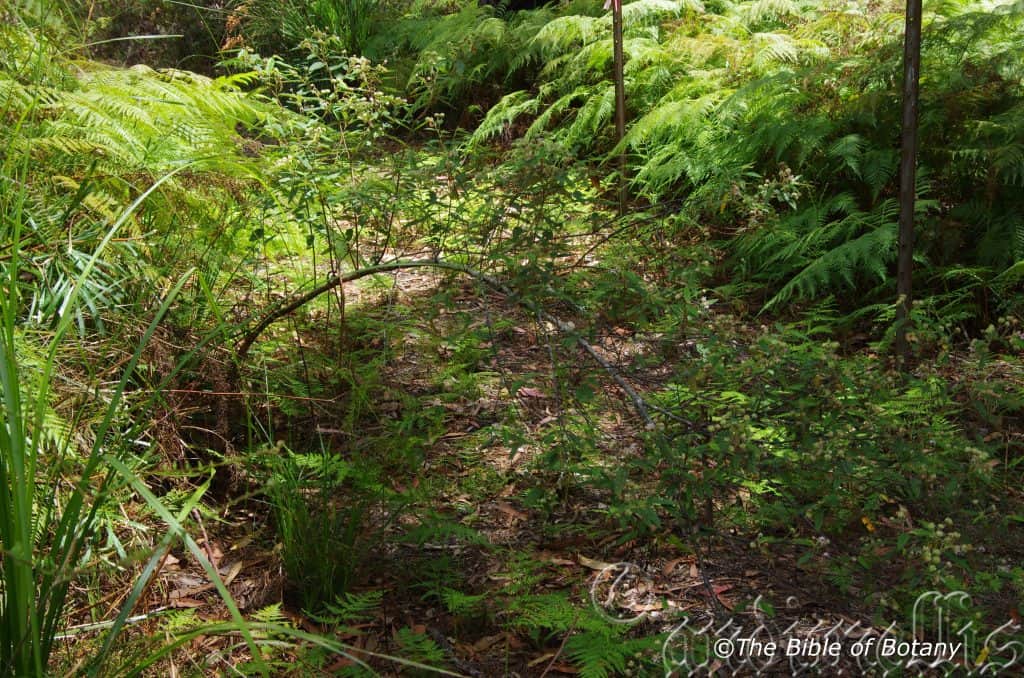
The Pinnacles NSW
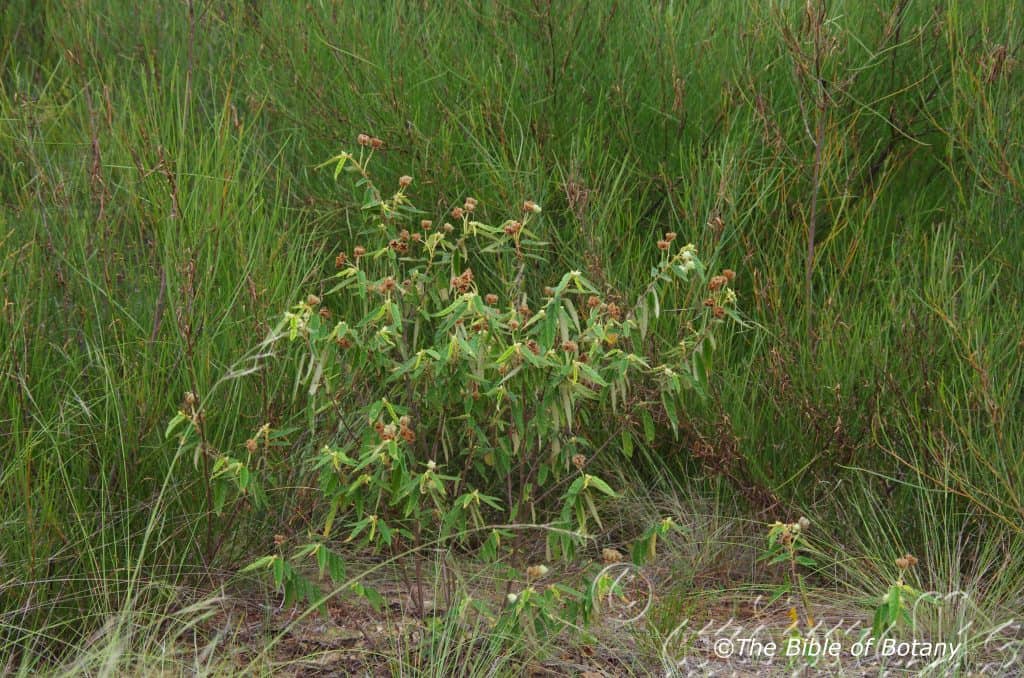
Rocky Creek The Pinnacles NSW
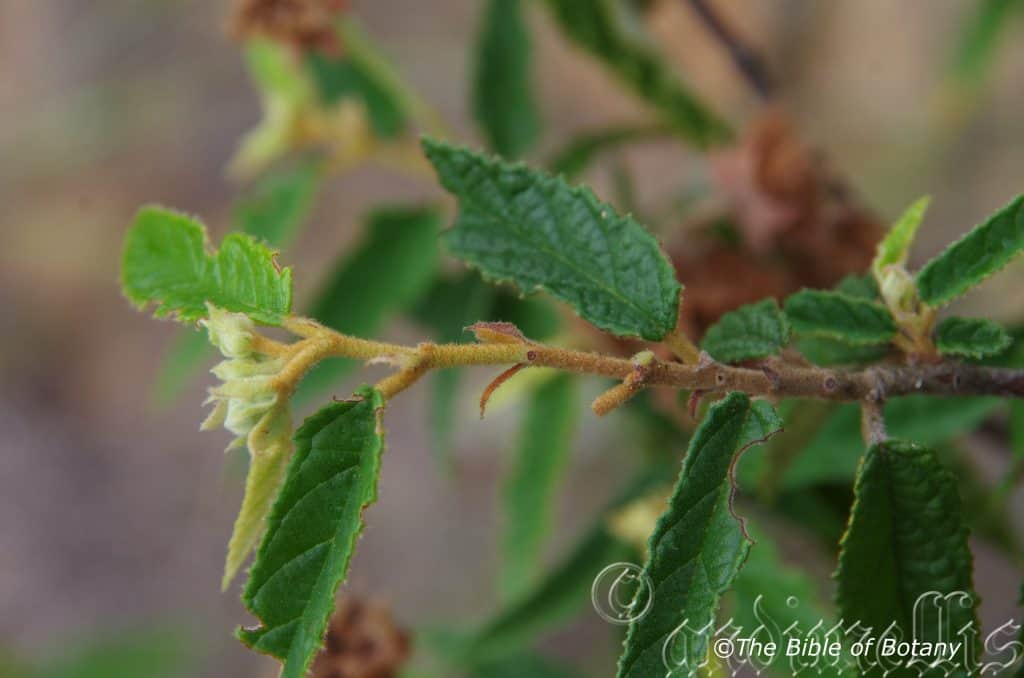
Rocky Creek The Pinnacles NSW
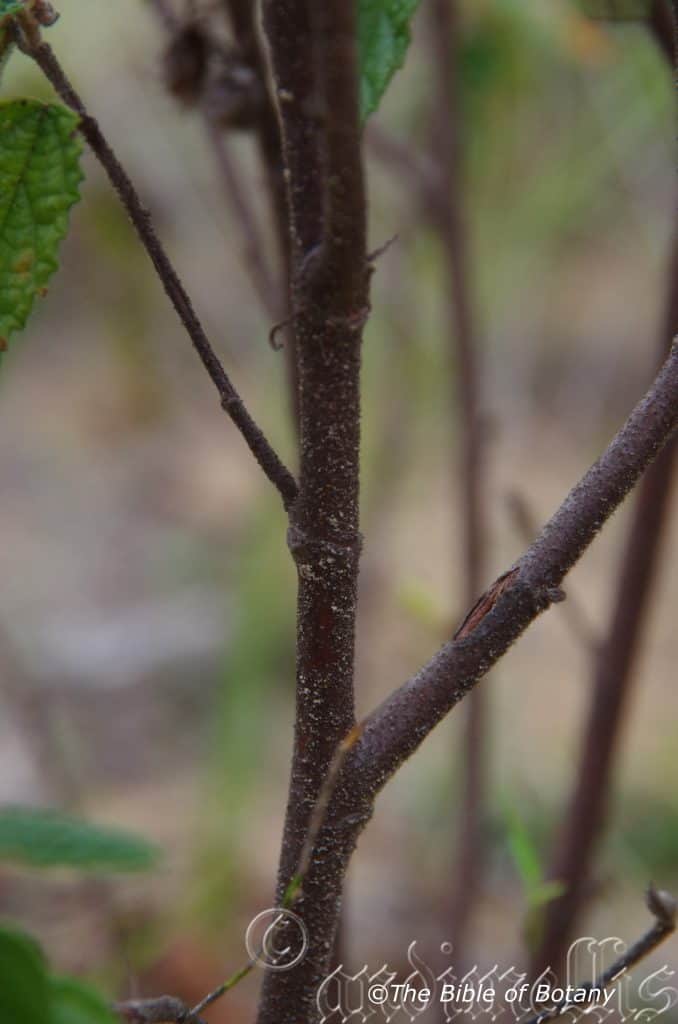
Rocky Creek The Pinnacles NSW
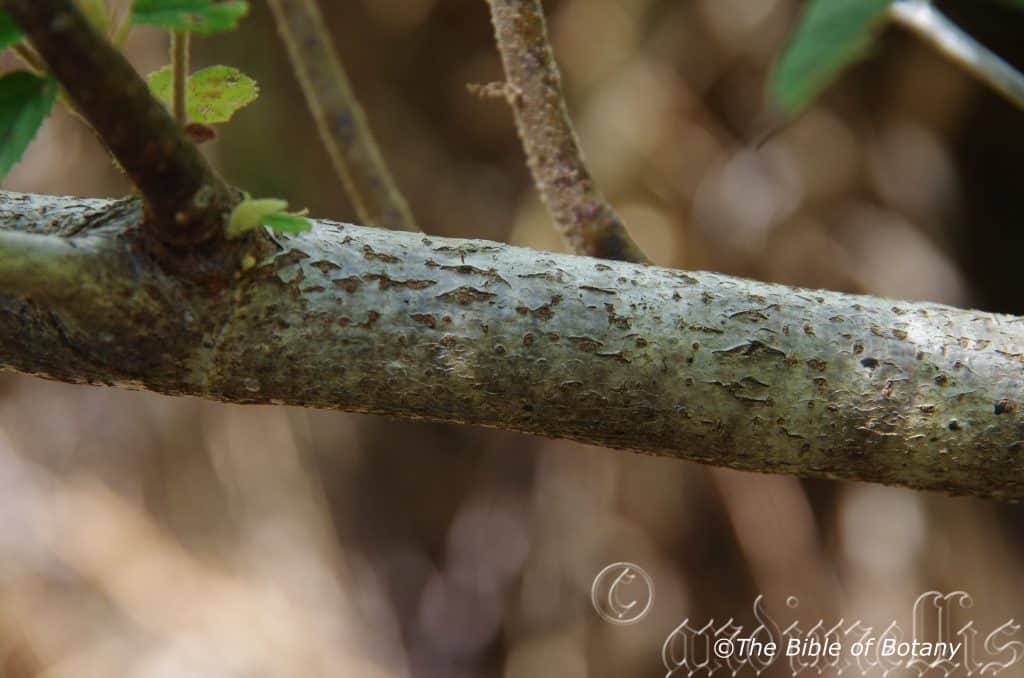
The Pinnacles NSW
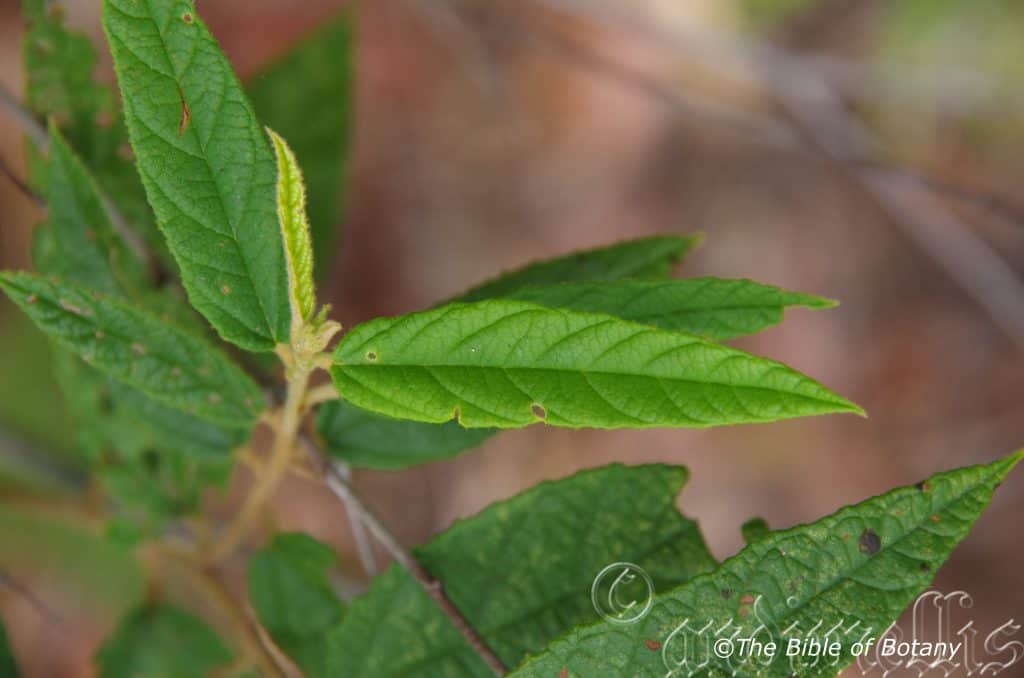
The Pinnacles NSW
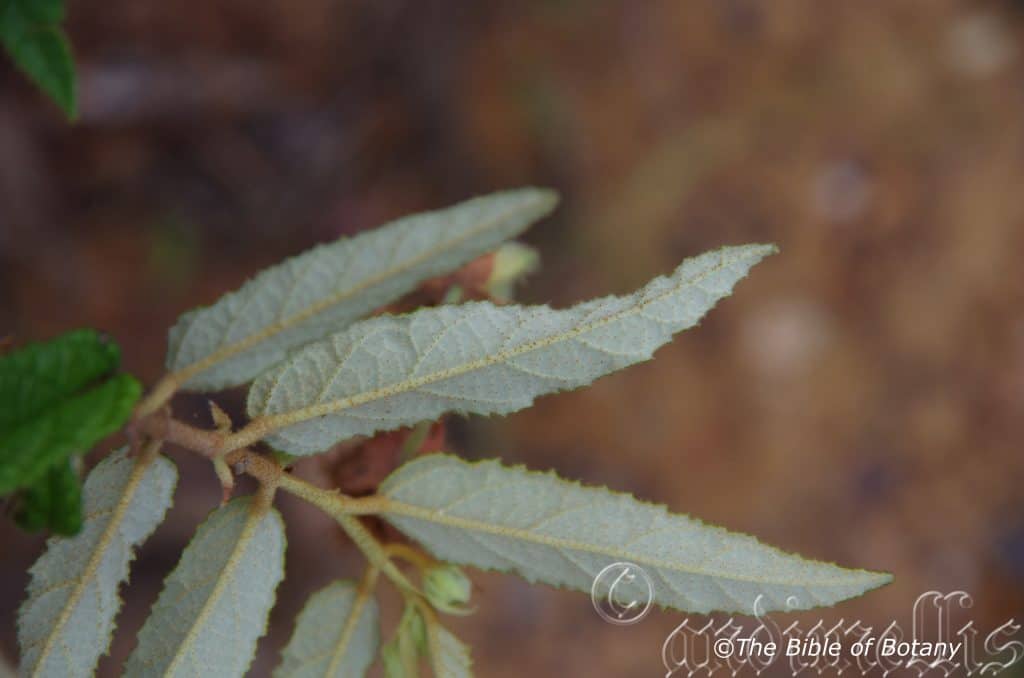
Rocky Creek The Pinnacles NSW
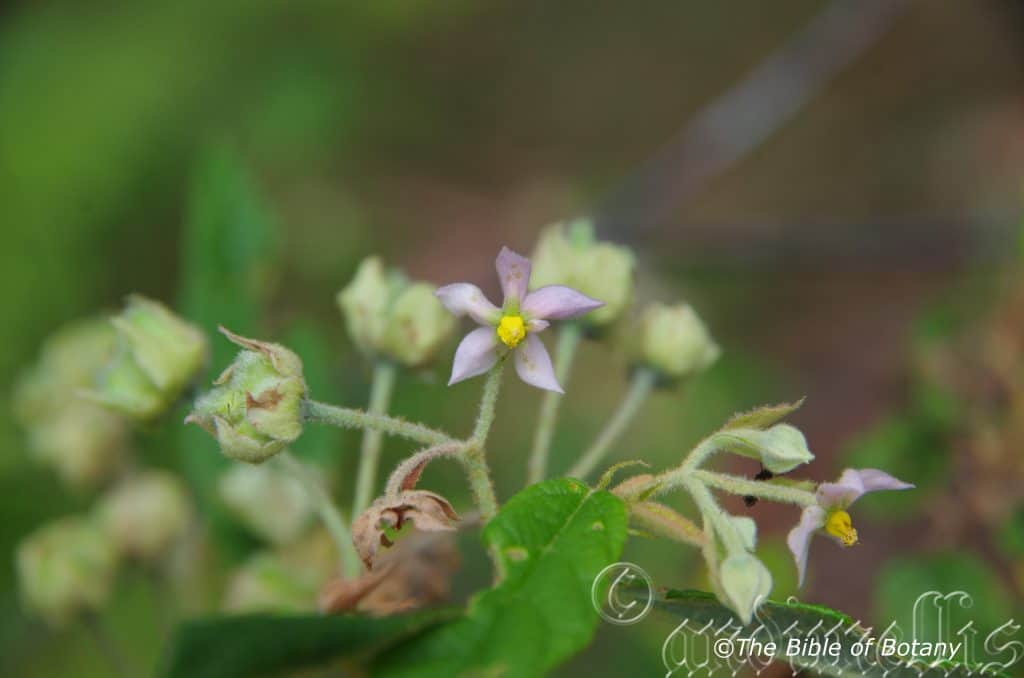
The Pinnacles NSW
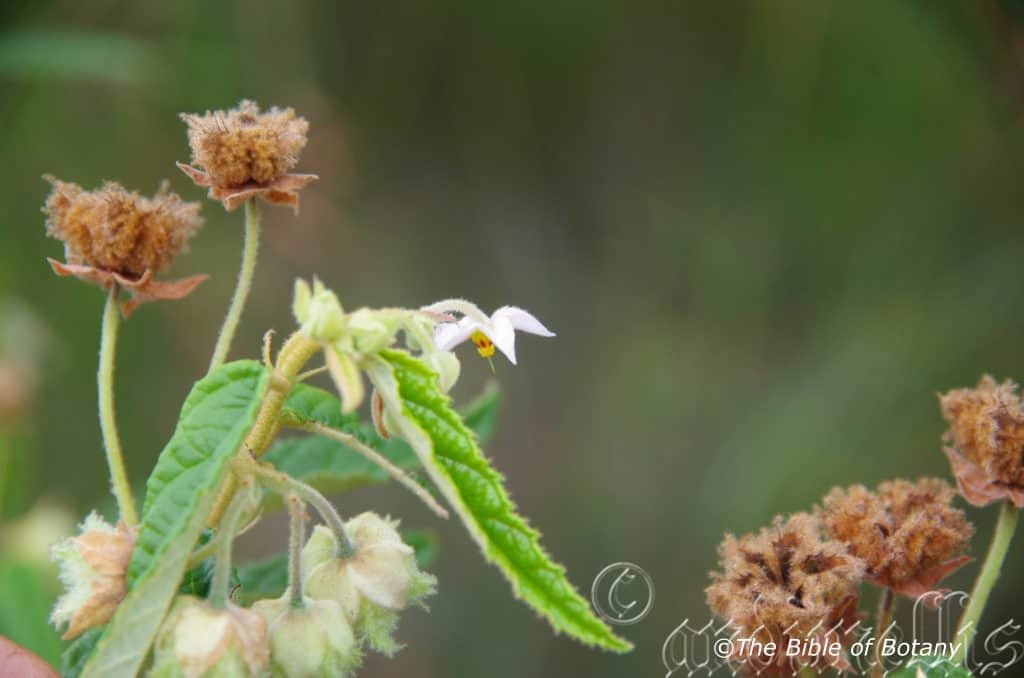
Rocky Creek The Pinnacles NSW
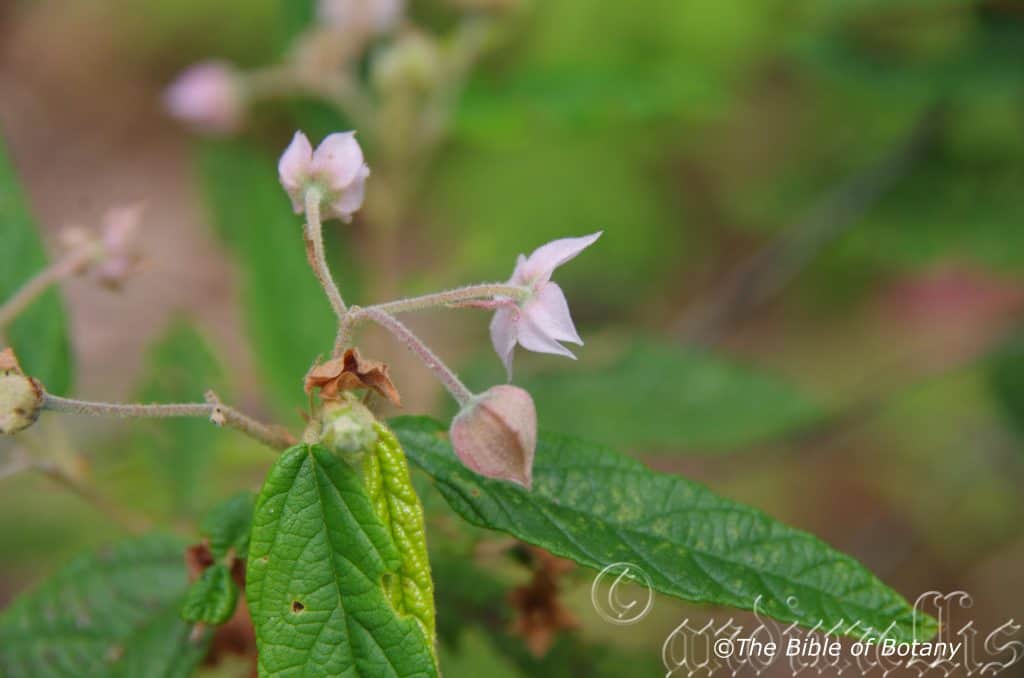
The Pinnacles NSW
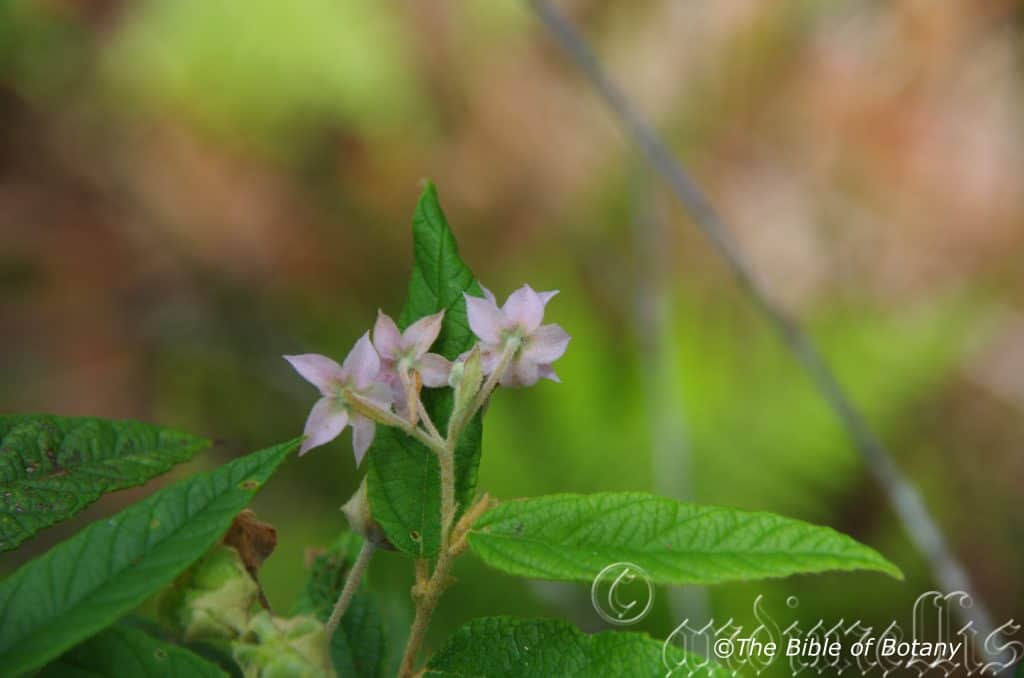
The Pinnacles NSW
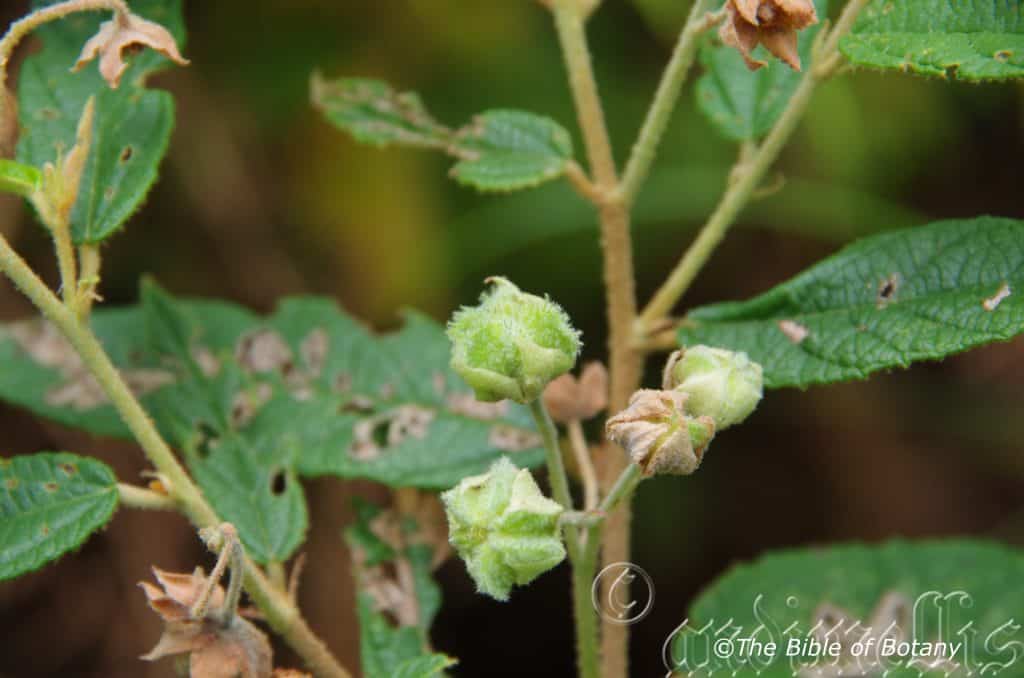
Rocky Creek The Pinnacles NSW
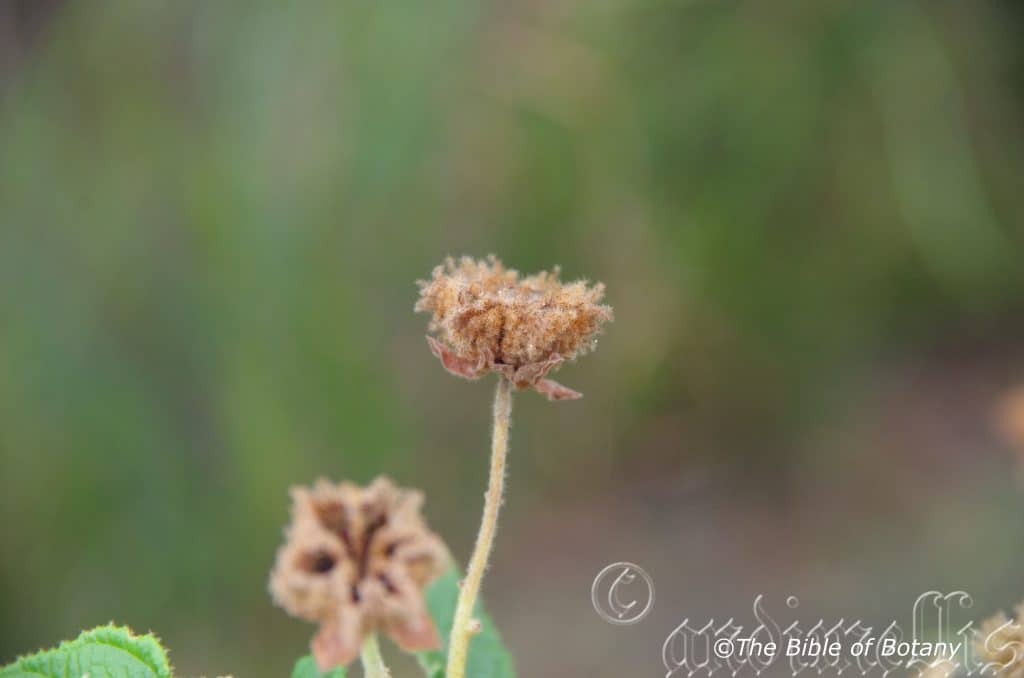
Rocky Creek The Pinnacles NSW
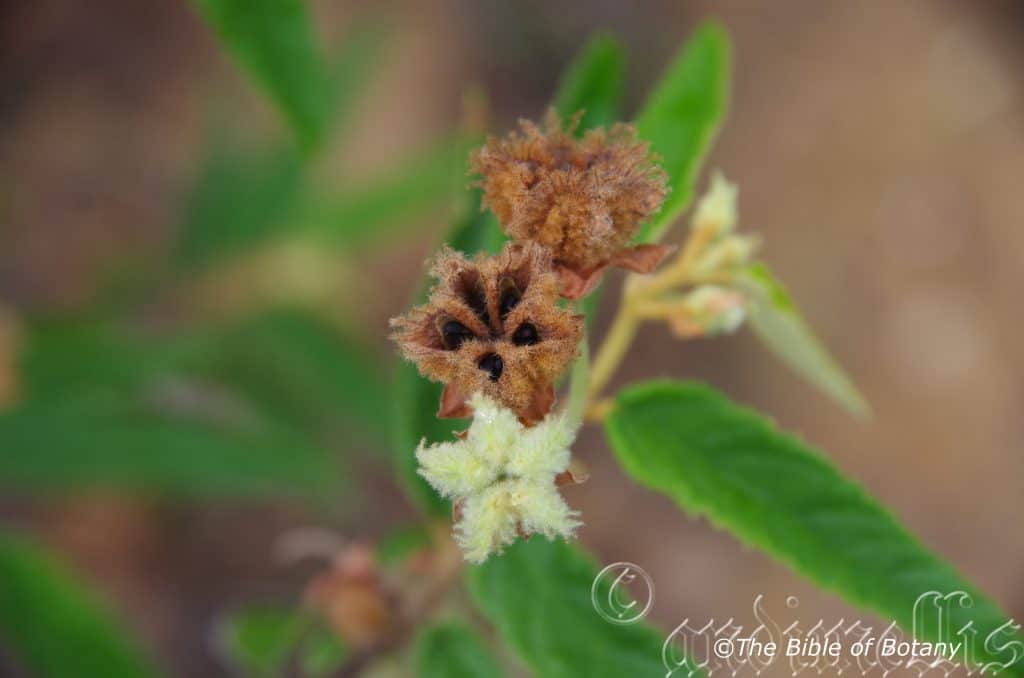
Rocky Creek The Pinnacles NSW
Seringia denticulata
Classification:
Clade: Eudicots
Class: Rosids
Order: Malvales
Family: Malvaceae
Subfamily: Byttnerioideae
Tribe: Lasiopetaleae
Genus: From Seringa, which is Latin for the vernacular of the Brazilian word for the tree. It refers to several Brazilian trees in the Euphorbiaceae family and Hevea genus which yield rubber.
Specie: From Odoús/Odonta, which is Ancient Greek or Dēns, which is Latin for a tooth or teeth and Ocalātum which is Latin for with an eye. It refers to leaf margins which have very fine teeth that often need a keen eye to see them.
Sub species:
Common Name:
Distribution:
Seringia denticulata is found in several disjunct populations from the Seaview Range east of Charters Towers, between Collinsville and Scottville in north eastern Queensland, Rockhampton, Gladstone and the Brisbane Valley in eastern Queensland, the Clarence Valley and between Newcastle and the Sydney Basin in eastern New South Wales. It is found east of the Great Dividing Range.
https://avh.ala.org.au/occurrences/search?taxa=Seringia+denticulata#tab_mapView
Habitat Aspect Climate:
Seringia denticulata prefers full sun to light dappled shade. It grows on hills in drier schlerophyll woodlands and Eucalyptus forests. The altitude ranges from near sea level to 250 meters ASL.
The temperatures range from 3 degree in August to 38 degrees in January.
The rainfall ranges from lows of 900mm to an average of 1250mm annually.
Soil Requirements:
Seringia denticulata prefers deep sandy loams, light fatty sands or light gravelly clays. The soils are usually derived from sandstones or granites over sandstone or granite. The soils pH ranges from 5pH to 6pH are preferred. It does not tolerate waterlogged soils but does best where soil moisture is assured. Non saline soils to moderately saline soils are tolerated.
Height & Spread:
Wild Plants: 1m to 2m by 0.8m to 1.6m.
Characteristics:
Seringia denticulata grows as medium size shrub with a slightly furrowed, grey-brown trunk. The grey-brown branches are erect to spreading and are densely covered in rusty–brown tomentose hairs. The dull creamy pastel green-blue stems are densely covered in rusty brown tomentose and velutinous hairs.
The ovate to elliptic leaves measure 70mm to 120mm in length by 25mm to 40mm in width. The bases are rounded while the apexes are acute. The discolourous leaves are mid grass-green to deep green and covered in rusty-fawn pulverulent hairs on the upper laminas especially along the veins while the lower laminas are whitish to silvery-white and covered in rusty-fawn pulverulent hairs. The laminas are raised on the upper laminas between the mid vein, lateral veins and secondary veins, recurve slightly from the mid vein to the margins and decurve strongly at the apex. The margins are prominently toothed on most specimens evenly toothed to entire. The mid vein is strongly prominent on the lower laminas while the lateral veins are prominent. The mid vein and lateral veins are distinctly visible on the upper laminas. The dull creamy pastel green-blue petioles are moderately covered in rusty-fawn pulverulent hairs and measure 5mm to 8mm in length.
The inflorescences are short cymes born from the upper leaf axils. There are 2 to 5 usually 3 individual flowers on the cymes. The dull creamy pastel green-blue cymes and pedicels are sparsely to densely covered in rusty-fawn pulverulent hairs. The cymes measure 4mm to 8mm in length while the pedicels measure 4mm to 7mm in length. The dull creamy pastel green-blue calyxes are moderately to densely covered in long off white to pale rusty-fawn pulverulent hairs externally and shorter pulverulent hairs internally. The petals are pastel pink to deep bluish-purple or deep purple-pink and are moderately to densely covered in long off white to pale rusty-fawn pulverulent hairs externally and shorter pulverulent hairs internally.
The 10 stamens are in 5 pairs, are decurve and situated on the apical rim of the style and form a ring around the stigma. Deep yellow-orange anthers are obloidal. The flowers appear sporadically throughout the year when weather conditions are favourable.
The fruit is a broad globose, 5 chamber, coriaceous capsule. The capsules measure 10mm to 15mm diameter. The carpels are densely covered in long, fawn hirsute hairs especially between the furrowed carpels. The green carpels turn deep fawn to mid brown, are rounded externally and separate when ripe. The cuboidal seeds are brown to deep brown almost black when ripe.
Wildlife:
Seringia denticulata wildlife is unknown to the author.
Cultivation:
Seringia denticulata are magnificent medium shrubs that are frequently overlooked by gardeners because of their spindly appearance in pots. It is suitable for small, medium and large sunny gardens close to the coast, semi-arid, temperate and sub-tropical areas, especially where the soils are sandy loams to medium clays which experience seasonal drainage problems. As garden subjects it grows to around 2 meters in height by 1 meter to 1.5 meters in diameter when grown in the open. It is fast growing and is cold tolerant to temperatures as low as one degree once established. It can be pruned if a smaller denser shrub is required
It is most suitable for use in large rockeries, along drive ways or adjacent to natural bush gardens. Mass plantings of 5 or more plants even in small areas; really do the plants justification especially when it is in flower and trimmed to different heights.
It is best used adjacent to small areas of bush close to paths or the house so their brilliant purple and yellow flowers can be viewed regularly. Plants can be placed near a bend in the garden or along a long driveway with other smaller broad or finer green leaf shrubs. They will gain a lot of attention and highlight the other broader or finer green leaf shrubs. Mass plant them (4 to 8) with plants with fine, bright green leaves in the foreground or prostrate plants with fine bright green leaves like Grevillea biternata. This ensures that the majority of the plant is on display.
I have used the plant very effectively with Jacksonia scoparia as the contrasts in flower, foliage, texture, coupled with the vertical and horizontal growth habits are extraordinarily different but not overpowering and very pleasant to the eye especially when the Jacksonia scoparia sin flower. Some of the dwarf Acacia species can be used similarly to give a wider, flat heath like feeling to a garden. Here I think of Acacia cultiformis dwarf or Acacia baileyana for contrasting foliage
Propagation:
Seeds: The seeds can be sown directly into a seed raising mix and is easy to propagate. Sow thinly and cover them with 5mm to 6mm of fine weed free mulch and keep moist. Place the tray in a warm sunny position. Seedlings usually appear in 10 to 18 days. Harden plants off by placing them in full sun for a week before transplanting. This should be started when the seedlings are just 10mm tall. When the seedlings are 20mm to 25mm tall, prick them out and plant them into 50mm native tubes using a good organic mix. Be very careful at this stage as the plants are very susceptible to damping off as they resent root disturbance. I usually did this before watering the plants so the mix was semi dry.
Once the seedlings reach 100mm to 150mm in height they can be planted out into their permanent position.
Fertilize using seaweed, fish emulsion or organic chicken pellets soaked in water on an alternate basis. Fertilize every two months until the plants are established then twice annually in early September or March to maintain health, vitality and better flowering.
Cuttings:
Fortunately Seringia denticulata cuttings strike relatively easy. Use 80mm to 200mm long tip cuttings or lateral shoots from the present season’s growth or hardwood cuttings. Take them in warmer months of the year. Remove half the leaves from the bottom section being careful not to tear the bark.
1 Prepare the cutting mix by adding two thirds sharp clean river sand, one third peat or one third perlite. These ingredients must be sterilized,
2 Select good material from non diseased plants,
3 Select semi green stems for cuttings. Look for a stem with two or three nodes,
4 Place the cutting on a flat, hard surface, and make a clean cut down one side of the cutting at the base for 10mm with a sharp sterile knife or razor blade. – This scarification of the node will increase the chances of roots emerging from this spot. Now remove all but one or two the leaves, leaving the apex leaves in tact. If the leaves are very large in proportion to the stem, cut off the apical halves.
5 Hormones are not required or if used try a liquid vitamin B complex,
6 Use a small dipple stick or old pencil to poke a hole into the soilless potting mix. Ensure the hole is slightly larger than the stem diameter and be careful not to wipe the rooting hormone off the cuttings base,
7 I like to place the tubes in bucket with holes drilled in the bottom to allow excess water to drain out. A plastic bag that fits over the bucket is ideal to help maintain temperature and moisture. Place in a semi shaded, warm position like under 50mm shade cloth.
8 When the cuttings have struck, open the bag to allow air circulation for a few days to a week,
9 Once hardened off remove the cuttings from the bag and allow to further hardening for a few more days to a week,
10 Transplant into a good potting mix to grow on.
Fertilize using seaweed, fish emulsion or organic chicken pellets soaked in water on an alternate basis. Fertilize every two months until the plants are established then twice annually in early September or March to maintain health, vitality and better flowering
Further Comments from Readers:
“Hi reader, it seems you use The Bible of Botany a lot. That’s great as we have great pleasure in bringing it to you! It’s a little awkward for us to ask, but our first aim is to purchase land approximately 1,600 hectares to link several parcels of N.P. into one at The Pinnacles NSW Australia, but we need your help. We’re not salespeople. We’re amateur botanists who have dedicated over 30 years to saving the environment in a practical way. We depend on donations to reach our goal. If you donate just $5, the price of your coffee this Sunday, We can help to keep the planet alive in a real way and continue to bring you regular updates and features on Australian plants all in one Botanical Bible. Any support is greatly appreciated. Thank you.”
In the spirit of reconciliation we acknowledge the Bundjalung, Gumbaynggirr and Yaegl and all aboriginal nations throughout Australia and their connections to land, sea and community. We pay our respect to their Elders past, present and future for the pleasures we have gained.
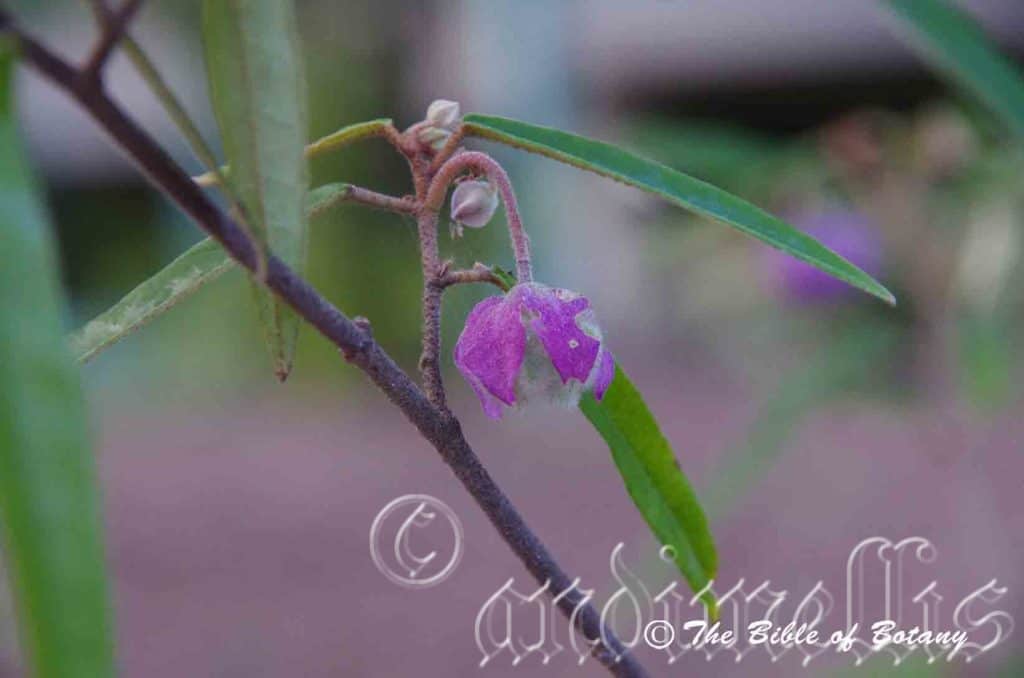
Mount Cootha Botanical Gardens Qld.
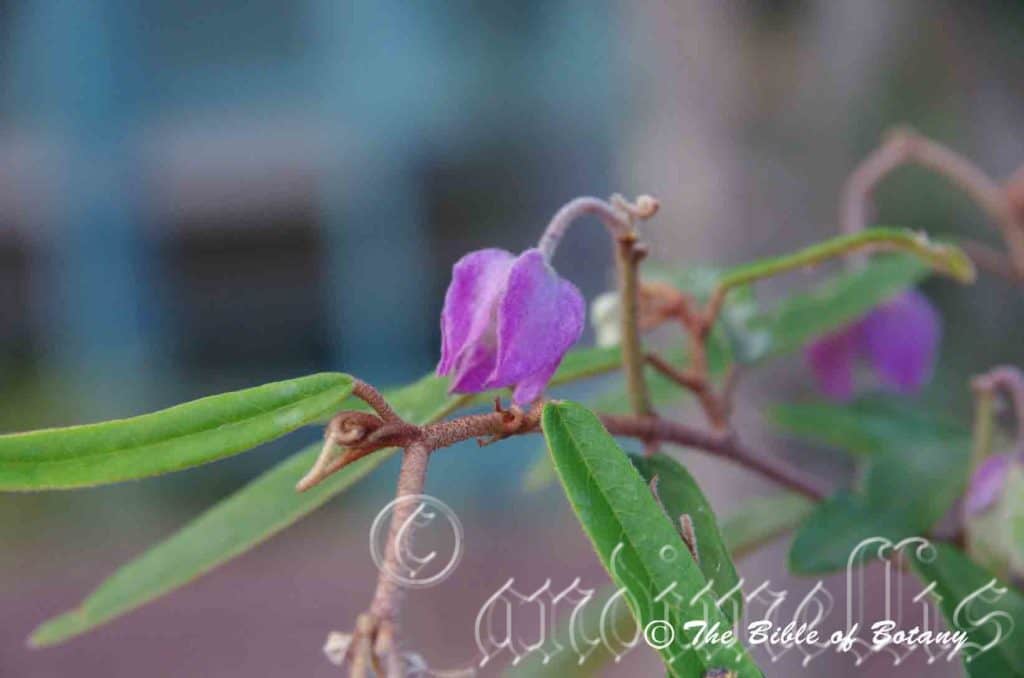
Mount Cootha Botanical Gardens Qld.
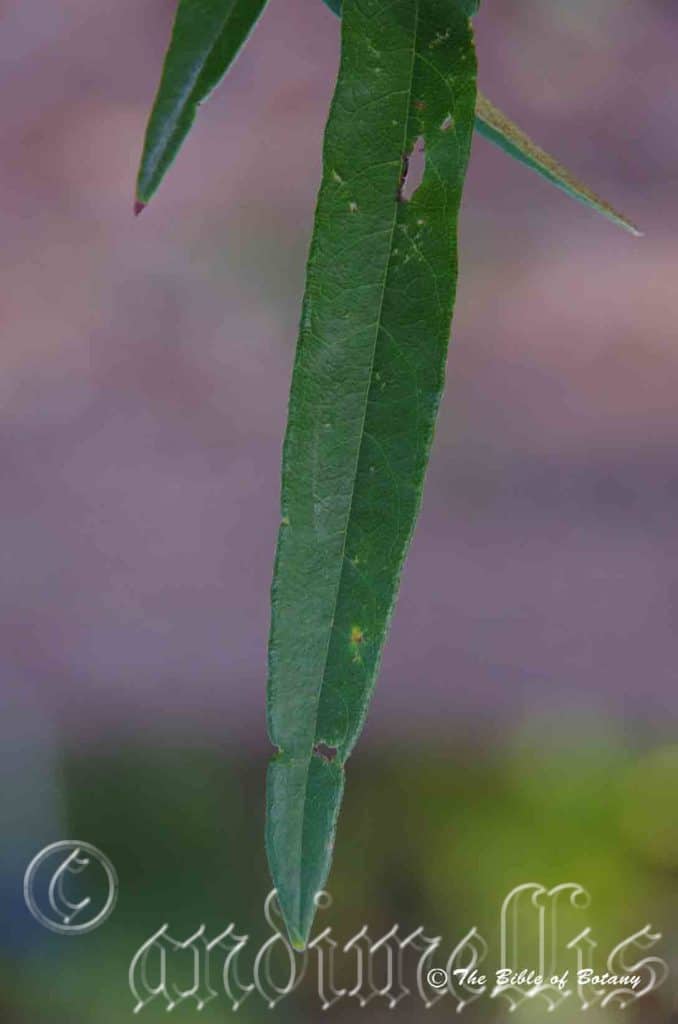
Mount Cootha Botanical Gardens Qld.
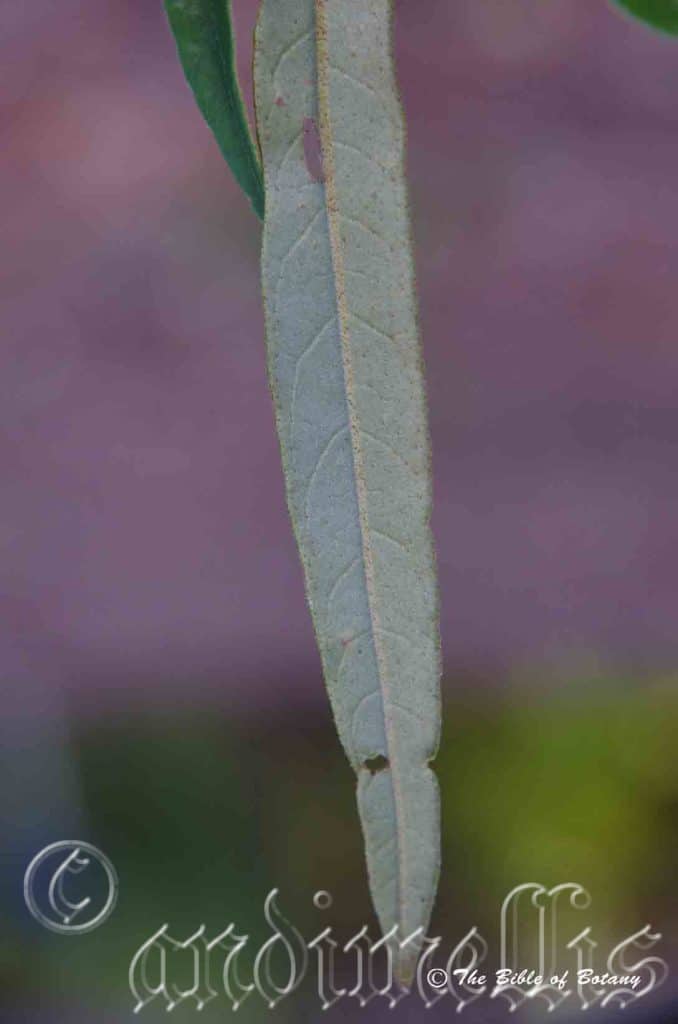
Mount Cootha Botanical Gardens Qld.
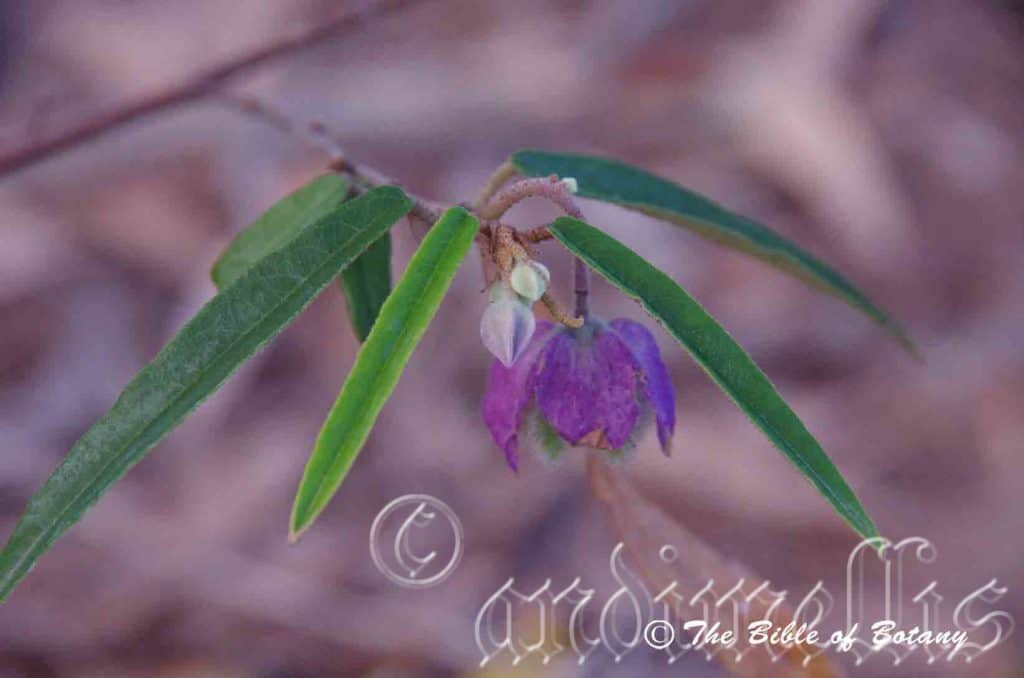
Mount Cootha Botanical Gardens Qld.
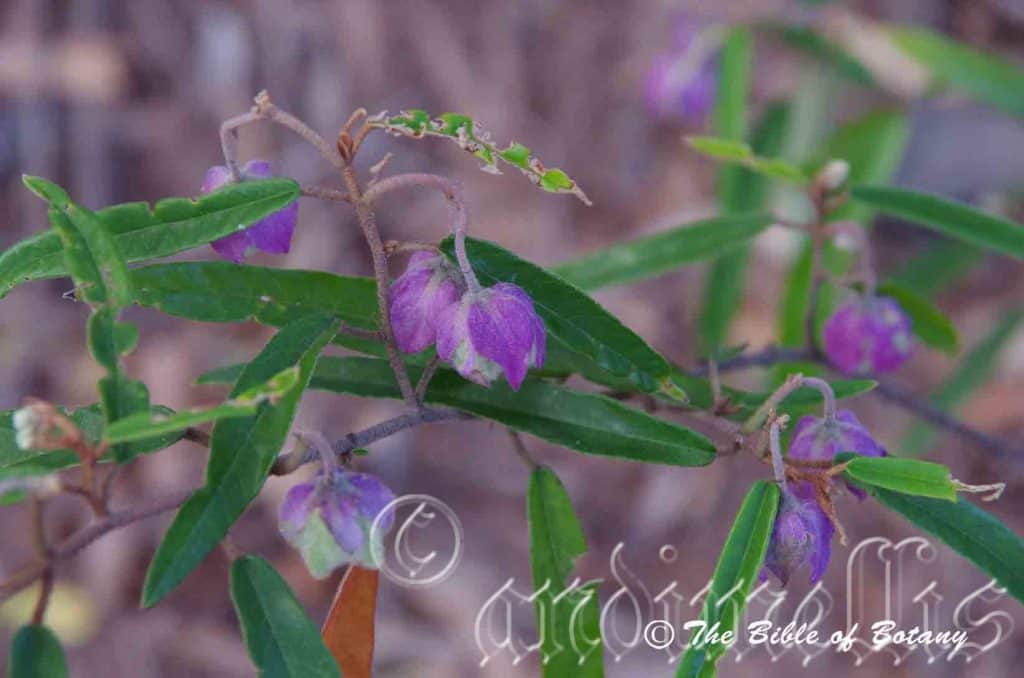
Mount Cootha Botanical Gardens Qld.
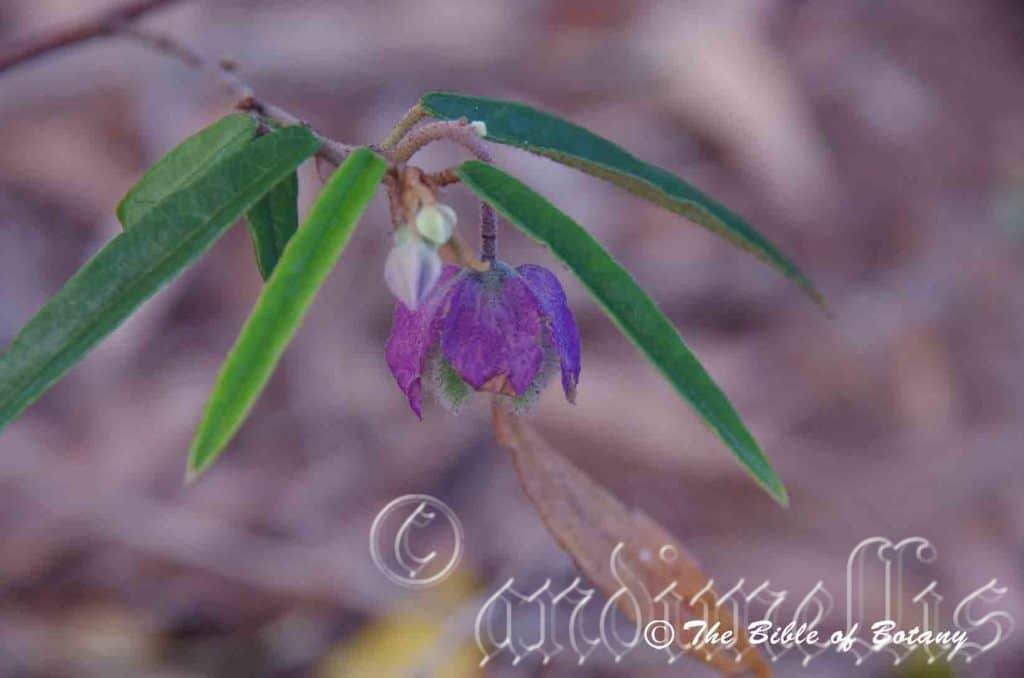
Mount Cootha Botanical Gardens Qld.
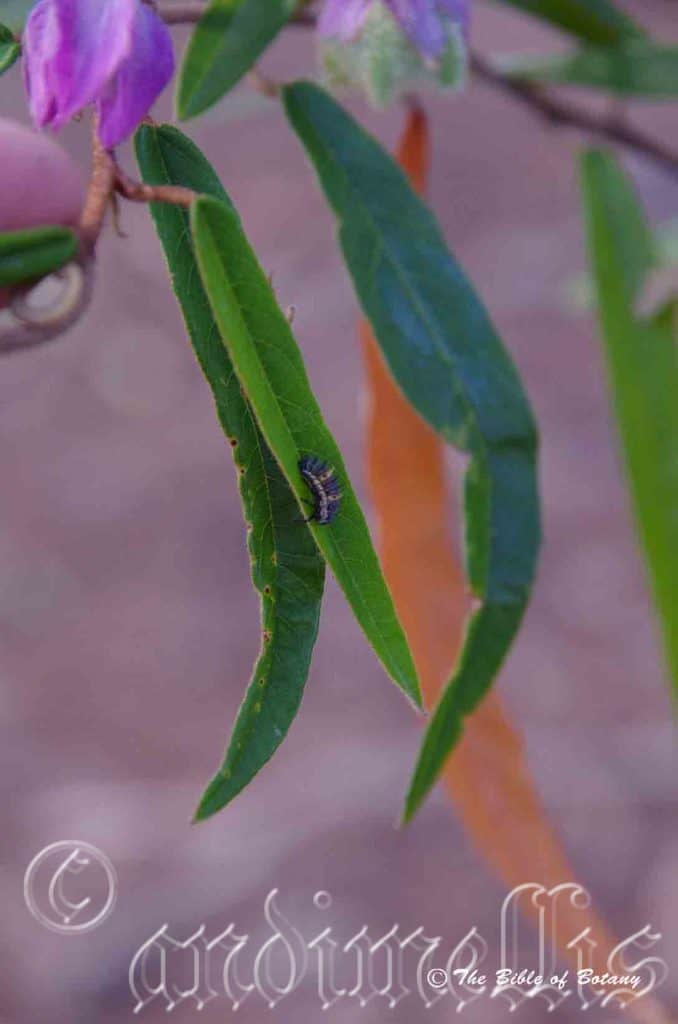
Mount Cootha Botanical Gardens Qld.
Seringia hillii
Classification:
Unranked: Eudicots
Class Rosids
Order: Malvales
Family: Malvaceae
Subspecies: Byttnerioideae
Tribe: Lasiopetaeae
Genus: From Seringa, which is Latin for the vernacular of the Brazilian word for the tree. It refers to several Brazilian trees in the Euphorbiaceae family and Hevea genus which yield rubber and have similar visual appearances.
Specie: Is named in honour of Leslie J. Hill; 1908-2003, who was a botanical philanthropist and collector of South African succulents.
Sub species:
Common Name:
Distribution:
Seringia hillii is found south in scattered populations from Bundaberg in central coastal Queensland south to Gosford in central coastal New South Wales. It occurs on and east of the Great Dividing Range to the coast.
There is an isolated population on Mount White west of Townsville in north Queensland.
It grows on coastal ranges east of the Great Dividing Range.
https://avh.ala.org.au/occurrences/search?taxa=Seringia+hillii#tab_mapView
Habitat Aspect Climate:
Seringia hillii prefers full sun to light dappled shade. It grows on hills in dry schlerophyll woodlands or Eucalyptus forests. The altitude ranges from 90 meters ASL to 426 meters ASL.
The temperatures range from 3 degree in August to 38 degrees in January.
The rainfall ranges from lows of 300mm to an average of 1600mm annually.
Soil Requirements:
Seringia hillii prefers better quality loams to medium clays. The soils are usually derived from comendite a fast cooling type of basalt. The soils pH ranges from 5pH to 6pH are preferred. It does not tolerate waterlogged soils. Non saline soils to moderately saline soils are tolerated.
Height & Spread:
Wild Plants: 1m to 3m by 1.5m to 2m.
Characteristics:
Seringia hillii grows as a medium shrub with multiple grey-brown stems branching from near the base. The stems are semi erect to spreading and are densely covered in rusty–brown tomentose hairs. The dull creamy pastel green-blue branchlets are densely covered in short, rusty-brown tomentose hairs.
The broad linear to lanceolate leaves measure 40mm to 90mm in length by 4mm to 8mm or at times to 12mm in width. The bases are rounded while the apexes are acute. The discolourous leaves are mid grass-green to deep green and are glabrous on the upper laminas while the lower laminas are white to silvery-white and sparsely covered in rusty-fawn to rusty-brown puberulent hairs. The laminas recurve slightly from the mid vein to the margins while the margins are entire. The mid vein is strongly prominent on the lower laminas while the lateral veins are prominent. The mid vein and lateral veins are distinctly visible on the upper laminas. The dull creamy pastel green-blue petioles are moderately covered in rusty-fawn to rusty-brown pulverulent hairs and measure 5mm to 10mm in length.
The inflorescences are short cymes born from the leaf axils. There are 2 to 5 individual flowers on the cymes. The dull creamy pastel green-blue cymes and pedicels are densely covered in rusty-fawn to rust-brown pubescent hairs. The cymes measure 6mm to 12mm in length while the pedicels measure 8mm to 14mm in length. The calyxes are dull creamy-grey moderately to densely covered in long off white pubescent hairs externally. The calyx lobes are deep purple to deep purple-pink and are sparsely covered in short white puberulent hairs. The ovate calyxes have an acuminate apex and measure 8mm to 15mm in length. The petals are bluish-purple to deep purplish-pink and are densely covered in long white velutinous hairs externally and are deep bluish-purple and sparsely covered in short pulverulent hairs internally. The ovate lobes have an acuminate apex and measure
The 10 stamens are in 5 pairs, are decurve and situated on the apical rim of the style and form a ring around the stigma. Deep yellow-orange anthers are obloidal. The flowers have been sporadically throughout the year when weather conditions are favourable.
The fruit is a broad globose, 5 chamber, coriaceous capsule. The capsule measure 12mm to 15mm diameter. The carpels are densely covered in white hirsute hairs especially between the furrowed carpels. The green carpels turn grey-brown, are rounded on the back and scarcely separate when ripe.
Wildlife:
Seringia hillii’s wildlife is unknown to the author.
Cultivation:
Seringia hillii are magnificent medium shrubs that are frequently overlooked by gardeners because of their spindly appearance in pots. It is suitable for small, medium and large sunny gardens close to the coast, semi-arid, temperate and sub-tropical areas, especially where the soils are sandy loams to medium clays which experience seasonal drainage problems. As garden subjects they will grow to 2 meters to 2.5 meters in height by 2 meter to 3meters in diameter when grown in the open. It is fast growing and are cold tolerant to temperatures as low as minus 4 degrees once established.
It is most suitable for use in large rockeries, along drive ways or adjacent to natural bush gardens. Mass plantings of 5 or more plants even in small areas; really do the plants justification especially when it is in flower and trimmed to different heights.
It is best used adjacent to small areas of bush close to paths or the house so their brilliant purple and yellow flowers can be viewed regularly. Plants can be placed near a bend in the garden or along a long driveway with other smaller broad or finer green leaf shrubs. They will gain a lot of attention and highlight the other broader or finer green leaf shrubs. Mass plant them (4 to 8) with plants with deep green broader simple leaves in the foreground and with prostrate plants with broad deep green leaves. If fine leaf plants are used they will be lost in a miniature jungle that will look very untidy. Ensure that the whole plant or at least most of it is on display from most sections of the garden as the flowers are a real bonus.
When mass planting use plants like Jacksonia scoparia between the individual plants of Seringia hillii as the contrasts in flower, foliage, texture, coupled with the vertical and horizontal growth habits are extraordinarily different but not overpowering and very pleasant to the eye. Some of the dwarf Acacia species can be used similarly to give a wide flat heath like feeling to a garden. Here I think of Acacia cultiformis dwarf and Acacia baileyana.
Propagation:
Seeds: Seringia hillii seeds can be sown directly into a seed raising mix. Sow thinly and cover them with 5mm to 6mm of fine weed free mulch and keep moist. Place the tray in a warm sunny position. Harden plants off by placing them in full sun for a week before transplanting. This should be started when the seedlings are just 10mm tall. When the seedlings are 20mm to 25mm tall, prick them out and plant them into 50mm native tubes using a good organic mix. Be very careful at this stage as the plants are very susceptible to damping off as they resent root disturbance. I usually did this before watering the plants so the mix was semi dry.
Once the seedlings reach 100mm to 150mm in height they can be planted out into their permanent position.
Fertilize using seaweed, fish emulsion or organic chicken pellets soaked in water on an alternate basis. Fertilize every two months until the plants are established then twice annually in early September or March to maintain health, vitality and better flowering.
Cuttings:
Fortunately Seringia hillii cuttings strike relatively easy. Use 80mm to 200mm long tip cuttings or lateral shoots from the present season’s growth or hardwood cuttings. Take them in warmer months of the year. Remove half the leaves from the bottom section being careful not to tear the bark.
1 Prepare the cutting mix by adding two thirds sharp clean river sand, one third peat or one third perlite. These ingredients must be sterilized,
2 Select good material from non diseased plants,
3 Select semi green stems for cuttings. Look for a stem with two or three nodes,
4 Place the cutting on a flat, hard surface, and make a clean cut down one side of the cutting at the base for 10mm with a sharp sterile knife or razor blade. – This scarification of the node will increase the chances of roots emerging from this spot. Now remove all but one or two the leaves, leaving the apex leaves in tact. If the leaves are very large in proportion to the stem, cut off the apical halves.
5 Hormones are not required or if used try a liquid vitamin B complex,
6 Use a small dipple stick or old pencil to poke a hole into the soilless potting mix. Ensure the hole is slightly larger than the stem diameter and be careful not to wipe the rooting hormone off the cuttings base,
7 I like to place the tubes in bucket with holes drilled in the bottom to allow excess water to drain out. A plastic bag that fits over the bucket is ideal to help maintain temperature and moisture. Place in a semi shaded, warm position like under 50mm shade cloth.
8 When the cuttings have struck, open the bag to allow air circulation for a few days to a week,
9 Once hardened off remove the cuttings from the bag and allow to further hardening for a few more days to a week,
10 Transplant into a good potting mix to grow on.
Fertilize using seaweed, fish emulsion or organic chicken pellets soaked in water on an alternate basis. Fertilize every two months until the plants are established then twice annually in early September or March to maintain health, vitality and better flowering.
Further Comments from Readers:
“Hi reader, it seems you use The Bible of Botany a lot. That’s great as we have great pleasure in bringing it to you! It’s a little awkward for us to ask, but our first aim is to purchase land approximately 1,600 hectares to link several parcels of N.P. into one at The Pinnacles NSW Australia, but we need your help. We’re not salespeople. We’re amateur botanists who have dedicated over 30 years to saving the environment in a practical way. We depend on donations to reach our goal. If you donate just $5, the price of your coffee this Sunday, We can help to keep the planet alive in a real way and continue to bring you regular updates and features on Australian plants all in one Botanical Bible. Any support is greatly appreciated. Thank you.”
In the spirit of reconciliation we acknowledge the Bundjalung, Gumbaynggirr and Yaegl and all aboriginal nations throughout Australia and their connections to land, sea and community. We pay our respect to their Elders past, present and future for the pleasures we have gained.
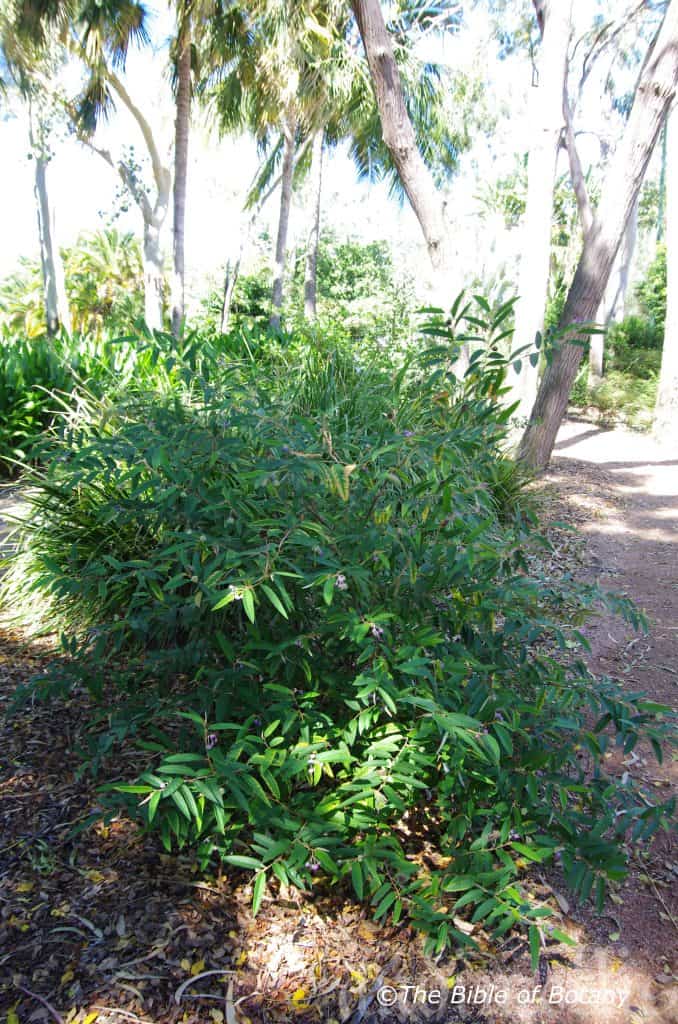
Townsville Qld.
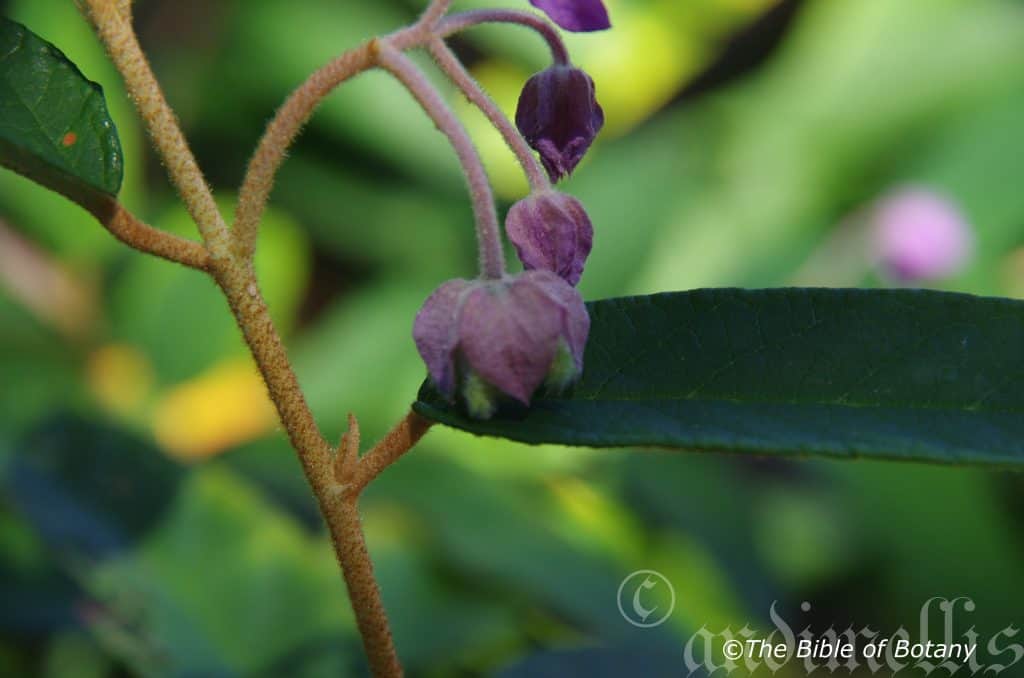
Townsville Qld.
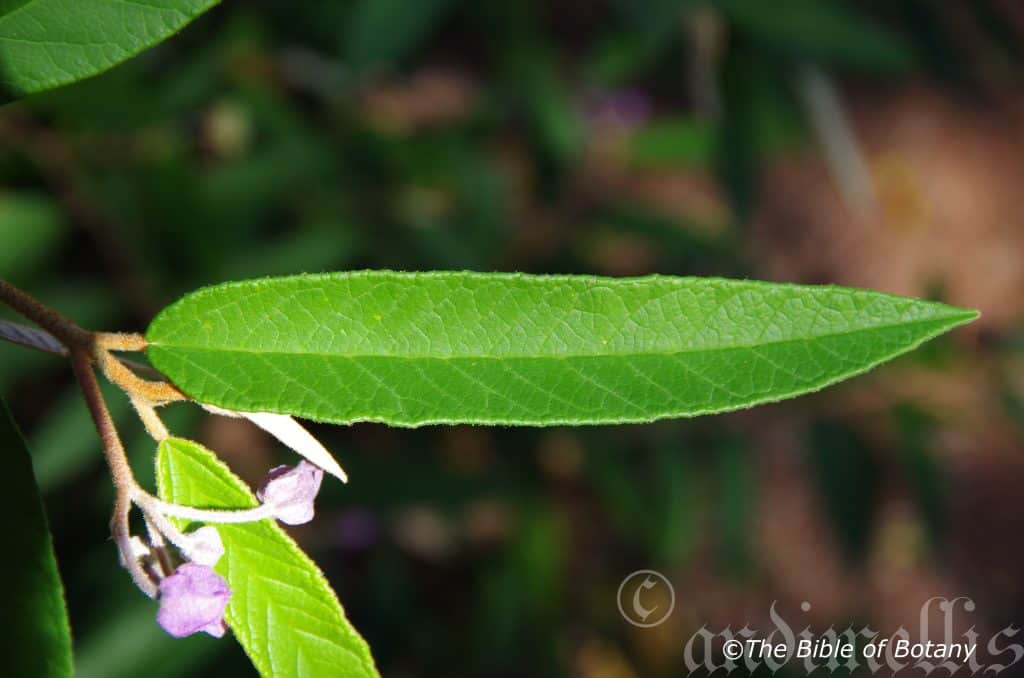
Townsville Qld.
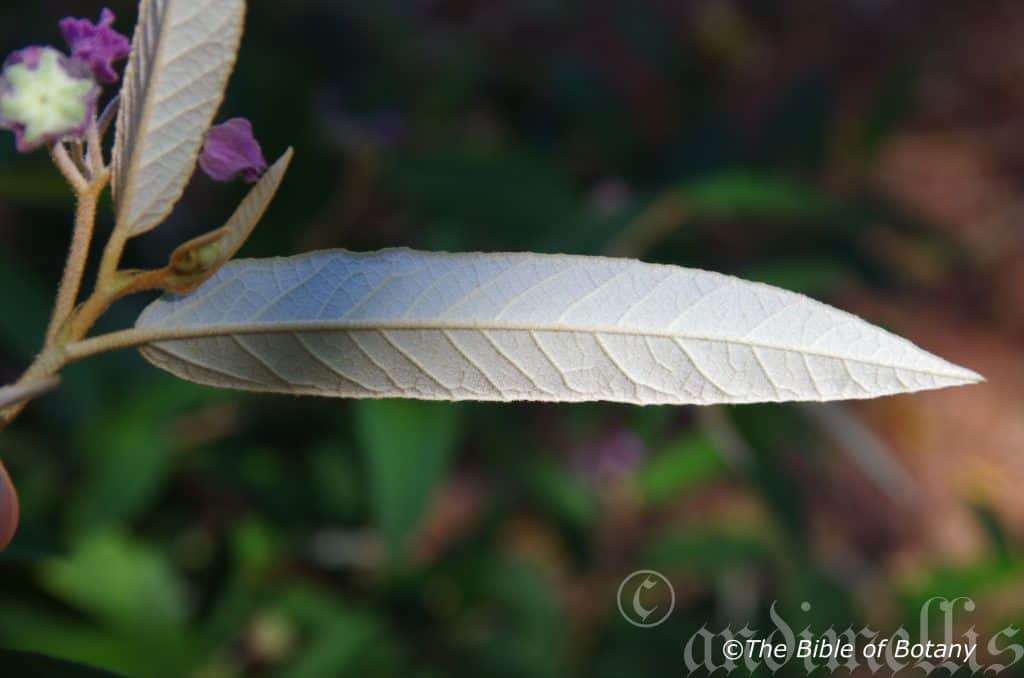
Townsville Qld.
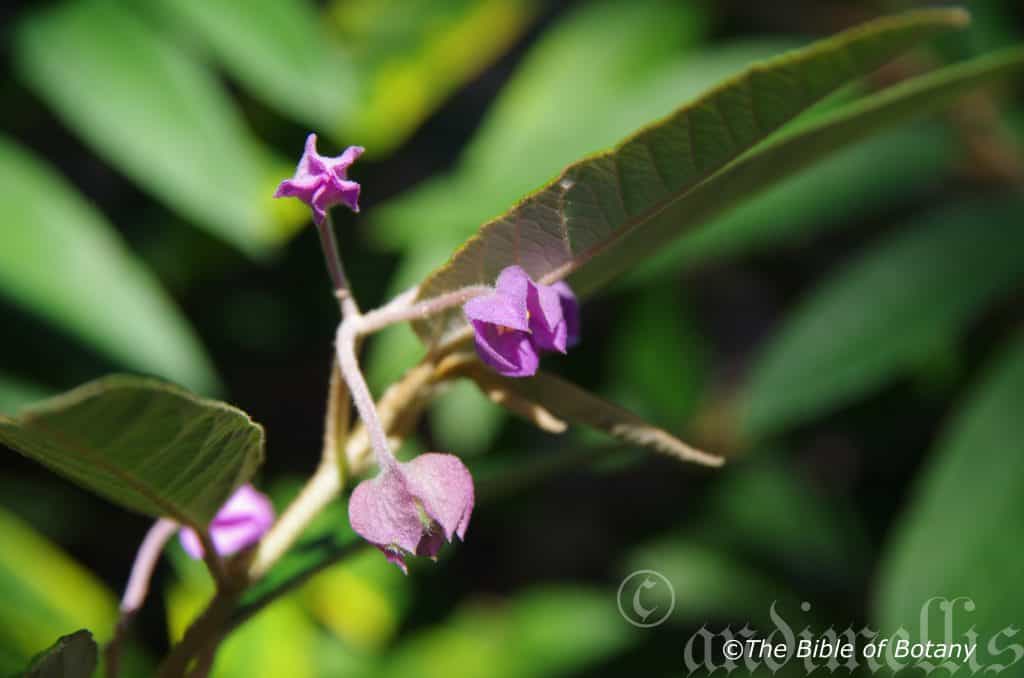
Townsville Qld.
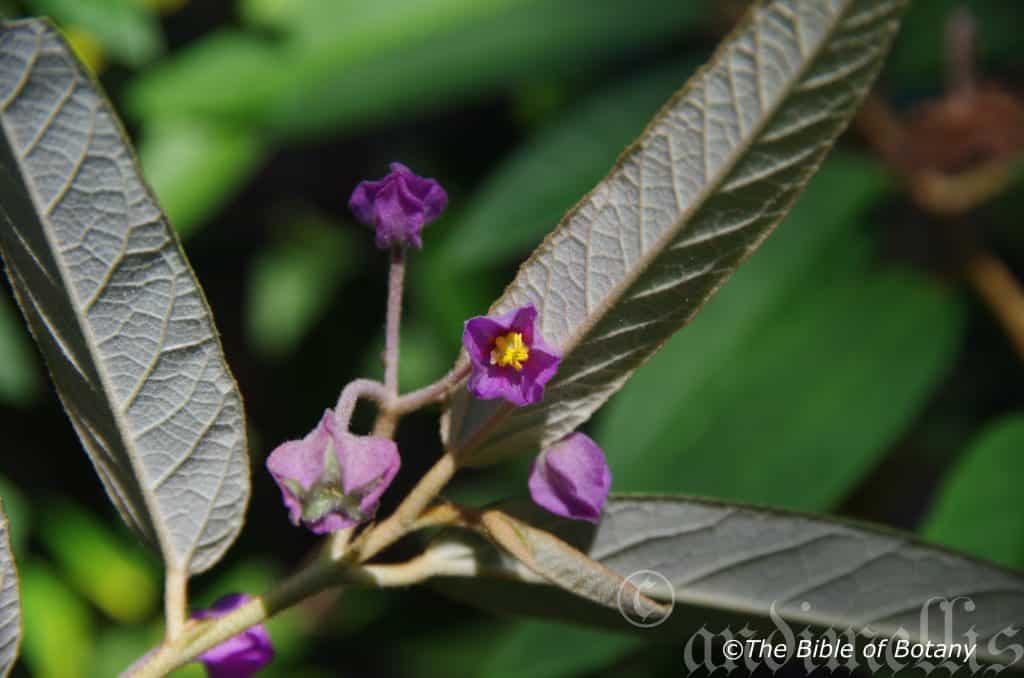
Townsville Qld.
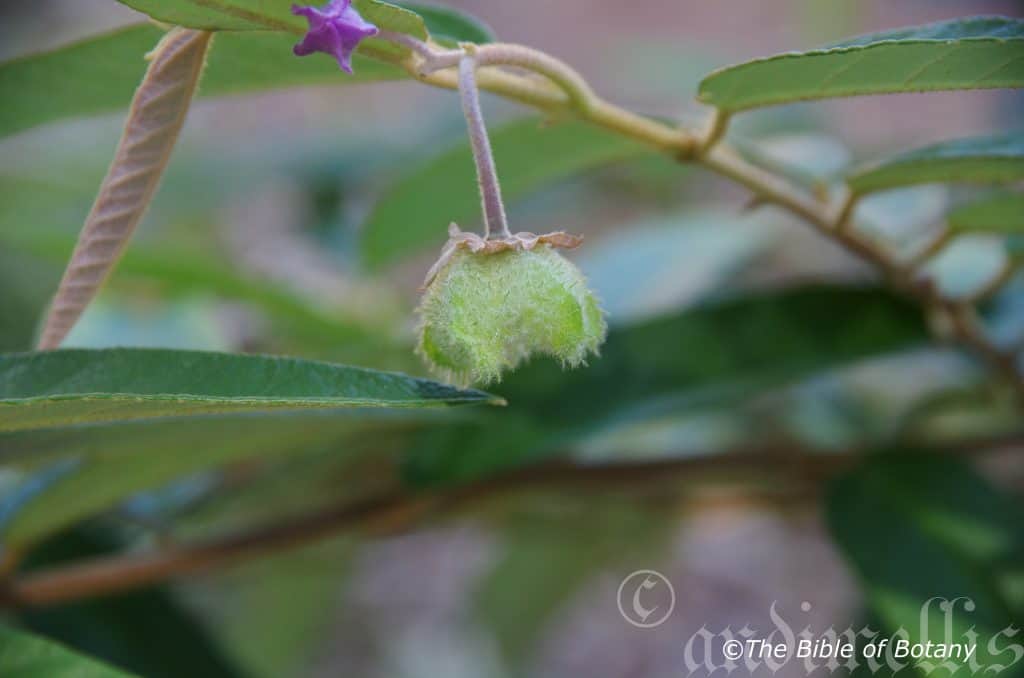
Townsville Qld.
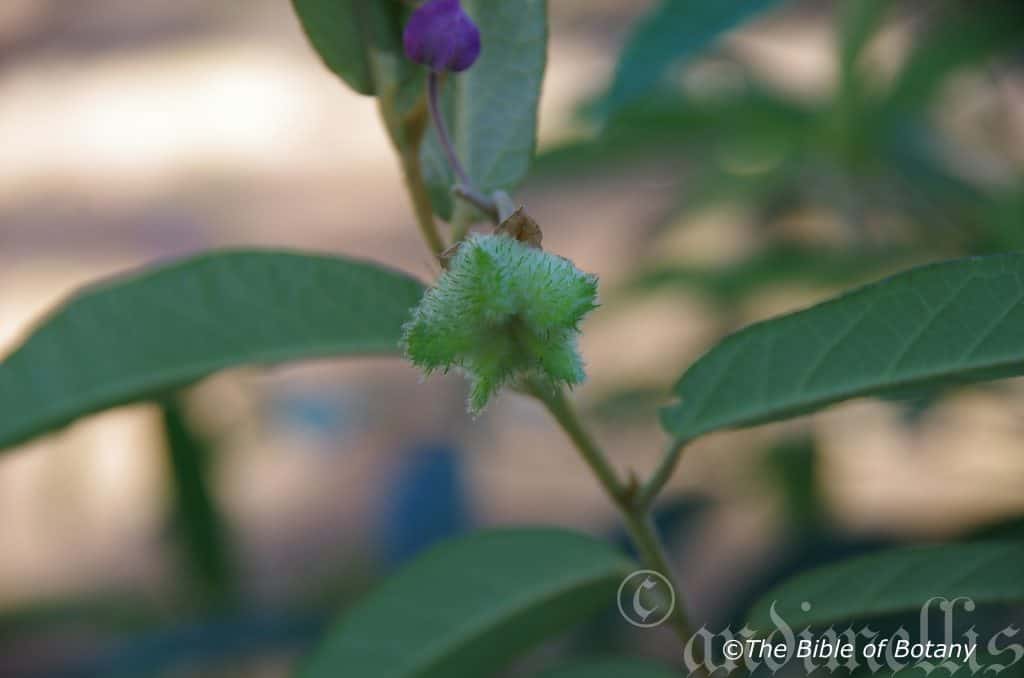
Townsville Qld.
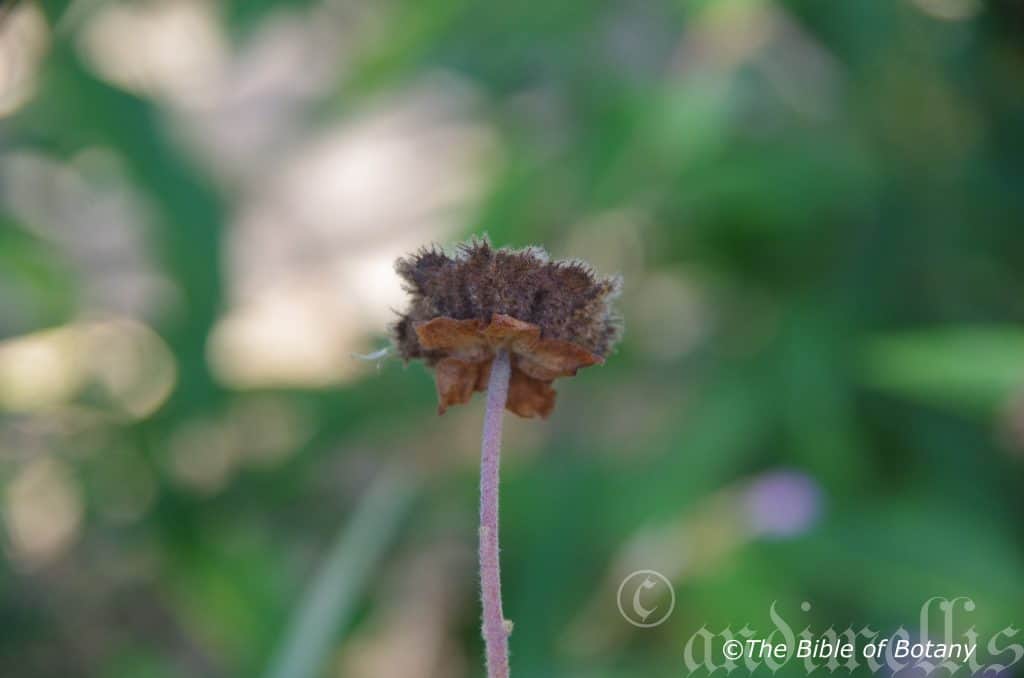
Townsville Qld.
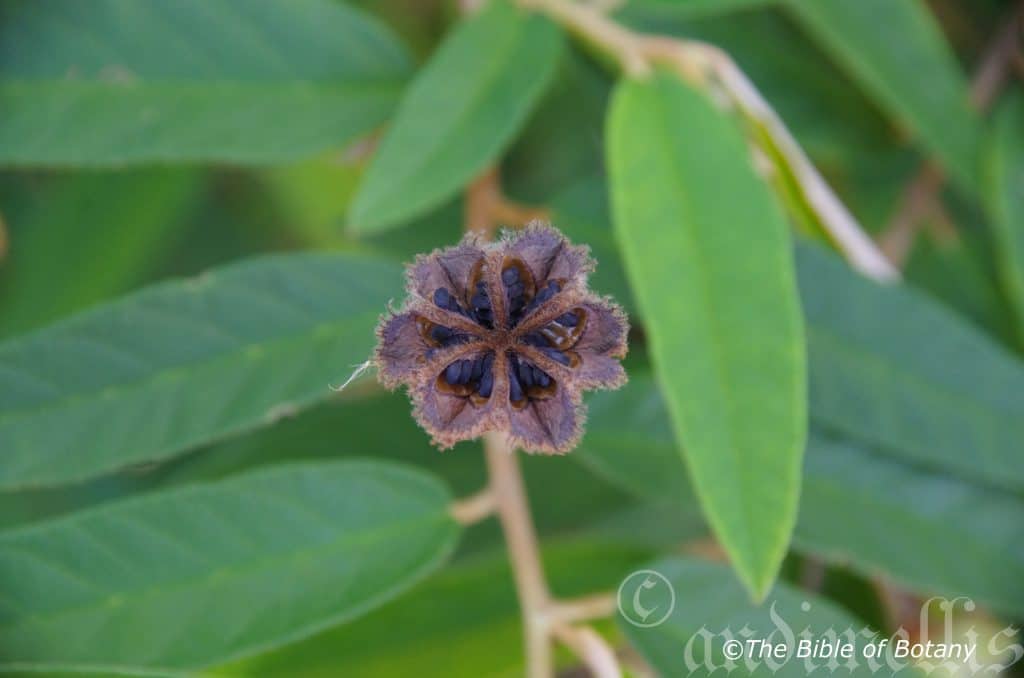
Townsville Qld.
Seringia lanceolata
Classification:
Unranked: Eudicots
Class Rosids
Order: Malvales
Family: Malvaceae
Subspecies: Byttnerioideae
Tribe: Lasiopetaleae
Genus: From Seringa, which is Latin for the vernacular of the Brazilian word for the tree. It refers to several Brazilian trees in the Euphorbiaceae family and Hevea genus which yield rubber and have similar visual appearances.
Specie: From lanceolata, which is Latin for to have the form or shape of a lance. It refers refers to organs or structures usually the leaves, which have a lance shape.
Sub species:
Common Name:
Distribution:
Seringia lanceolata is found south in scattered populations from Mount mulligan in north eastern Queensland to Cunninghams gap in far south eastern Queensland. It grows on the western slopes of the Great Dividing Range on and east of the range to the coastal headlands.
https://avh.ala.org.au/occurrences/search?taxa=Seringia+lanceolata#tab_mapView
Habitat Aspect Climate:
Seringia lanceolata prefers full sun to light dappled shade. It grows on hills in dry schlerophyll woodlands or Eucalyptus forests. The altitude ranges from 10 meters ASL to 960 meters ASL.
The temperatures range from 3 degree in August to 42 degrees in January.
The rainfall ranges from lows of 450mm to an average of 3000mm annually.
Soil Requirements:
Seringia lanceolata prefers better quality loams to medium clays. The soils are usually derived from decomposed granites over granite, brown and black basalt or at times sandstone. The soils pH ranges from 5pH to 7pH are preferred. It does not tolerate waterlogged soils. Non saline soils to moderately saline soils are tolerated.
Height & Spread:
Wild Plants: 1m to 3m by 1.5m to 2m.
Characteristics:
Seringia lanceolata grows as medium size shrub with a slightly furrowed, grey-brown trunk. The grey-brown branches are erect to spreading and are densely covered in rusty–brown tomentose hairs. The dull creamy pastel green-blue stems are densely covered in rusty brown pubescent and stellate hairs. Like all seringea they have rhizamatic growth. This refers to plants, which can reproduce from their rhizomes, roots or stolons.
The lanceolate leaves measure 60mm to 100mm in length by 25mm to 40mm in width. The bases are rounded, while the apexes are acute. The discolourous leaves are deep green and glabrous on the upper laminas, while the lower laminas are whitish to silvery-white and very sparsely covered in rusty-fawn pubescent and stellate hairs. The laminas are raised on the upper laminas between the mid vein, lateral veins and secondary veins, recurve slightly upwards from the mid vein to the margins and near the apex. The margins are irregularly and sparsely toothed and sparsely covered in rusty brown pubescent and stellate hairs. The mid vein and lateral veins are strongly prominent on the lower lamina, while the seconadary veins are slightly prominent on the lower lamina. The mid vein and lateral veins are distinctly visible on the upper lamina. The petioles are densely covered in rusty brown pubescent and stellate hairs and measure 5mm to 8mm in length.
The inflorescences are short cymes born from the upper leaf axils. There are usually 4 individual flowers on the cymes. The dull creamy pastel green-blue peduncles and pedicels are densely covered in rusty-fawn pubescent and stellate hairs. The peduncles measure 8mm to 12mm in length while the pedicels measure 8mm to 14mm in length. The 5 petal like calyxes are pastel pink to deep bluish-purple or deep purple-pink and are moderately to densely covered in white pubescent hairs externally and shorter pubescent hairs internally.
The 10 stamens are in 5 pairs, are decurve and situated on the apical rim of the style and form a ring around the stigma. The deep yellow anthers are linear. The flowers appear sporadically throughout the year when weather conditions are favourable.
Seringia lanceolata’s fruits are broad globose, 5 chambered, coriaceous capsules. The capsules measure 10mm to 14mm diameter. The carpels are covered in long lanceolate fleshy appendages, which are densely covered in long, white stellate hairs especially between the furrowed carpels. The green carpels turn deep fawn to mid brown, are rounded externally and separate when ripe. The cuboidal seeds are brown to deep brown almost black when ripe.
Wildlife:
Seringia lanceolata’s wildlife is unknown to the author.
Cultivation:
Seringia lanceolata is a magnificent medium size shrub that is frequently overlooked by gardeners because of their spindly appearance in pots. It is suitable for small, medium and large sunny gardens close to the coast, semi-arid, temperate and sub-tropical areas, especially where the soils are sandy loams to medium clays which experience seasonal drainage problems. As a garden subject it will grow to 2 meters to 2.5 meters in height by 2 meter to 3meters in diameter when grown in the open. It is fast growing and are cold tolerant to temperatures as low as minus 4 degrees once established.
It is most suitable for use in large rockeries, along drive ways or adjacent to natural bush gardens. Mass plantings of 5 or more plants even in small areas; really do the plants justification especially when it is in flower and trimmed to different heights.
It is best used adjacent to small areas of bush close to paths or the house so their brilliant purple and yellow flowers can be viewed regularly. Plants can be placed near a bend in the garden or along a long driveway with other smaller broad or finer green leaf shrubs. It will gain a lot of attention and highlight the other broader or finer green leaf shrubs. Mass plant them (4 to 8) with plants with deep green broader simple leaves in the foreground and with prostrate plants with broad deep green leaves. If fine leaf plants are used they will be lost in a miniature jungle that will look very untidy. Ensure that the whole plant or at least most of it is on display from most sections of the garden as the flowers are a real bonus.
When mass planting use plants like Jacksonia scoparia between the individual plants of Seringia lanceolata as the contrasts in flower, foliage, texture, coupled with the vertical and horizontal growth habits are extraordinarily different but not overpowering and very pleasant to the eye. Some of the dwarf Acacia species can be used similarly to give a wide flat heath like feeling to a garden. Here I think of Acacia cultiformis dwarf and Acacia baileyana.
Propagation:
Seeds: The seeds can be sown directly into a seed raising mix. Sow thinly and cover them with 5mm to 6mm of fine weed free mulch and keep moist. Place the tray in a warm sunny position. Harden plants off by placing them in full sun for a week before transplanting. This should be started when the seedlings are just 10mm tall. When the seedlings are 20mm to 25mm tall, prick them out and plant them into 50mm native tubes using a good organic mix. Be very careful at this stage as the plants are very susceptible to damping off as they resent root disturbance. I usually did this before watering the plants so the mix was semi dry.
Once the seedlings reach 100mm to 150mm in height they can be planted out into their permanent position.
Fertilize using seaweed, fish emulsion or organic chicken pellets soaked in water on an alternate basis. Fertilize every two months until the plants are established then twice annually in early September or March to maintain health, vitality and better flowering.
Cuttings:
Fortunately Seringia lanceolata cuttings strike relatively easy. Use 80mm to 200mm long tip cuttings or lateral shoots from the present season’s growth or hardwood cuttings. Take them in warmer months of the year. Remove half the leaves from the bottom section being careful not to tear the bark.
1 Prepare the cutting mix by adding two thirds sharp clean river sand, one third peat or one third perlite. These ingredients must be sterilized,
2 Select good material from non diseased plants,
3 Select semi green stems for cuttings. Look for a stem with two or three nodes,
4 Place the cutting on a flat, hard surface, and make a clean cut down one side of the cutting at the base for 10mm with a sharp sterile knife or razor blade. – This scarification of the node will increase the chances of roots emerging from this spot. Now remove all but one or two the leaves, leaving the apex leaves in tact. If the leaves are very large in proportion to the stem, cut off the apical halves.
5 Hormones are not required or if used try a liquid vitamin B complex,
6 Use a small dipple stick or old pencil to poke a hole into the soilless potting mix. Ensure the hole is slightly larger than the stem diameter and be careful not to wipe the rooting hormone off the cuttings base,
7 I like to place the tubes in bucket with holes drilled in the bottom to allow excess water to drain out. A plastic bag that fits over the bucket is ideal to help maintain temperature and moisture. Place in a semi shaded, warm position like under 50mm shade cloth.
8 When the cuttings have struck, open the bag to allow air circulation for a few days to a week,
9 Once hardened off remove the cuttings from the bag and allow to further hardening for a few more days to a week,
10 Transplant into a good potting mix to grow on.
Fertilize using seaweed, fish emulsion or organic chicken pellets soaked in water on an alternate basis. Fertilize every two months until the plants are established then twice annually in early September or March to maintain health, vitality and better flowering.
Further Comments from Readers:
“Hi reader, it seems you use The Bible of Botany a lot. That’s great as we have great pleasure in bringing it to you! It’s a little awkward for us to ask, but our first aim is to purchase land approximately 1,600 hectares to link several parcels of N.P. into one at The Pinnacles NSW Australia, but we need your help. We’re not salespeople. We’re amateur botanists who have dedicated over 30 years to saving the environment in a practical way. We depend on donations to reach our goal. If you donate just $5, the price of your coffee this Sunday, We can help to keep the planet alive in a real way and continue to bring you regular updates and features on Australian plants all in one Botanical Bible. Any support is greatly appreciated. Thank you.”
In the spirit of reconciliation we acknowledge the Bundjalung, Gumbaynggirr and Yaegl and all aboriginal nations throughout Australia and their connections to land, sea and community. We pay our respect to their Elders past, present and future for the pleasures we have gained.
Sesbania cannabina
Classification:
Unranked: Eudicots
Class: Rosids
Order: Fabales
Family: Fabaceae
Genus: From Seisaban, which is Latinized for the vernacular of a local name of an Arabic (Yemen) or Sisaban which is Latinized for the vernacular of a local name in Persia (Iraq).
Specie: From Kannabis, which is Ancient Greek for the hemp plant. It may refer to the plants, which have bark fibres similar to Cannabis sativa.
Sub specie: Sesbania cannabina var. cannabina from Kannabis, which is Ancient Greek for the hemp plant. It may refer to the plants, which have bark fibres similar to Cannabis sativa.
Sesbania cannabina var. sericea from Sēricum, which is Latin for silky. It refers to hirs, which are soft and silky to touch.
Common Name: Yellow Pea Bush or Sesbania Pea.
Distribution:
Sesbania cannabina var. cannabina is found in the far northern quarter of Western Australia and the northern half of the Northern Territory. It is also found throughout Queensland, the far north eastern corner of South Australia, the northern quarter of New South Wales and along the Darling River.
Sesbania cannabina var. sericea is very sparsely scattered in the northern half of Western Australia and The Northern Territory.
https://avh.ala.org.au/occurrences/search?taxa=Sesbania+cannabina#tab_mapView
Habitat Aspect Climate:
Sesbania cannabina prefers light dappled shade to full sun. It usually grows in open woodlands, savannah dry monsoonal forests or vine forests. The altitude ranges from 10 meters BSL to 700 meters ASL.
The temperatures range from minus 3 degree in July to 44 degrees in February.
The rainfalls range from lows of 150mm to 2800mm average per annum.
Soil Requirements:
Sesbania cannabina prefers better quality light clays to heavy clays including pindin soils to clay pans. The soils are usually derived from decomposed brown basalts, black basalts, metamorphic rocks, granites, podsolics or lateritic soils. The soils pH ranges 4.5pH to 8pH. It does not tolerate waterlogged soils however periodic inundations may occur with plants growing in low lying areas prior to seed germination. Non saline soils to extremely saline soils are tolerated as are salt laden winds.
Height & Spread:
Wild Plants: 1m to 3m by 0.5m to 0.7m.
Characteristics:
Sesbania cannabina grows as a tall annual with reddish-brown stems and grass-green new growth. The young stems are sparsely covered in white spreading caducous hirsute hairs.
The alternate, oblong leaves measure 50mm to 200mm in length. The 12 to 30 pairs of leaflets are oblong and measure 7mm to 20mm in length by 2mm to 4mm in width. The petiole, rachis and petiolules are mid bluish-green. The petioles measure 1mm to 10mmin length while the rachises measure 70mm to 20mm in length and the petiolules measure 1mm to 1.5mm in length. The bases are rounded while the apexes are obtuse, truncate or apiculate. The discolourous laminas are mid blue-green, dull and glabrous on the upper laminas while the lower laminas are paler to glaucous. The laminas are flat and straight while the margins are entire. The mid vein is strongly prominent on the lower lamina and is distinctly visible from the upper lamina.
The inflorescences are born in racemes of 2 or 8 flowers from the leaf axils.
The peduncle, rachis and pedicel are blue-green and glabrous. The peduncles measure 2.5mm to 20mm in length while the rachis measures 5mm to 20mm in length and the wiry pedicels 3mm to 7mm in length. The calyx’s tubes are mid green, spotted and finely streaked with reddish markings externally. The calyx tube measures 3mm to 4mm in length while the calyx’s triangular lobes measure 2mm to 2.5mm in length.
The standard is yellow, spotted and finely streaked with purple externally and measures 9mm to 11mm in length by 10mm to 13mm in width. The yellow, oblong-spathulate wing petals partially surround the keel petals and measure 8mm to 10mm in length by 3mm to 3.5mm in height. The keel petals measure 7mm to 9mm in length by 3mm to 3.5mm in height.
The 10 inserted filaments are attached at the base with 9 of them fused to form a column while one stamen is free. The ovary and style are glabrous. The flowers appear from late November to late April.
The fruits are long, narrow terete pods. The pods are glabrous and measure 125mm to 200mm in length by 2.5mm to 3.5mm in diameter. The green pods turn dull brown and are slightly constricted between the seeds when ripe. The 30 to 42 drab, semi glossy tan seeds measure 3mm to 4mm in length by 1.2mm to 1.8mm in diameter. The white, elliptical hilum measures 0.4mm in length by 0.2mm in width
Wildlife:
Sesbania cannabina support native bees along the coast. The leaves are a high quality feed nutritional food source for both native and domestic animals but is not palatable therefore most animals shy away from it. It is being trialled as a mixed forage plant in prepared feeds. The plants nutritional value quickly declines as the stems harden off and become woodier. However, some feeding trials have shown no adverse effect. The seeds are poisonous to pigs and should be treated with caution to other domestic animals.
Cultivation:
Sesbania cannabina is a beautiful small perrannual shrub that can be grown in association with other dry bushland and semi-arid plants. It is ideal where quick growth is required especially in new gardens devoid of vegetation. In cultivation it grows from 2.2 meter to 2.8 meters in height by 0.5 meters to 0.7 meters in diameter when grown in open sunny position.
Its beauty starts with it accepting all types of soils and thrives, where deep leaf litter keeps the soil a little cooler.
Add to the above, if it is given a little extra water and a little native fertilizer the plants should respond with good flowering over a longer period.
Propagation:
Seeds: The seeds can be removed easily from the mature fruits and stored for several years without decreasing seed viability.
Sow freshly treated seeds directly into a seed raising mix, keeping them moist not wet. Do not over water as the seeds will rot off before germination takes place. Place the trays in a cool shaded area with 20mm shade cloth in the bush house. When the seedlings are 40mm to 50mm tall, prick them out and plant them into 50mm native tubes using a good organic mix.
As the seedlings roots reach the bottom of the tubes plant them out into their permanent position. Do not delay.
Fertilize using Seaweed, fish emulsion or organic chicken pellets soaked in water and apply the liquid on an alternate basis. Fertilize every 2 months until the plants are well established then on an annual in spring or autumn basis to maintain health, vigour and better flowering.
Further Comments from Readers:
“Hi reader, it seems you use The Bible of Botany a lot. That’s great as we have great pleasure in bringing it to you! It’s a little awkward for us to ask, but our first aim is to purchase land approximately 1,600 hectares to link several parcels of N.P. into one at The Pinnacles NSW Australia, but we need your help. We’re not salespeople. We’re amateur botanists who have dedicated over 30 years to saving the environment in a practical way. We depend on donations to reach our goal. If you donate just $5, the price of your coffee this Sunday, We can help to keep the planet alive in a real way and continue to bring you regular updates and features on Australian plants all in one Botanical Bible. Any support is greatly appreciated. Thank you.”
In the spirit of reconciliation we acknowledge the Bundjalung, Gumbaynggirr and Yaegl and all aboriginal nations throughout Australia and their connections to land, sea and community. We pay our respect to their Elders past, present and future for the pleasures we have gained.
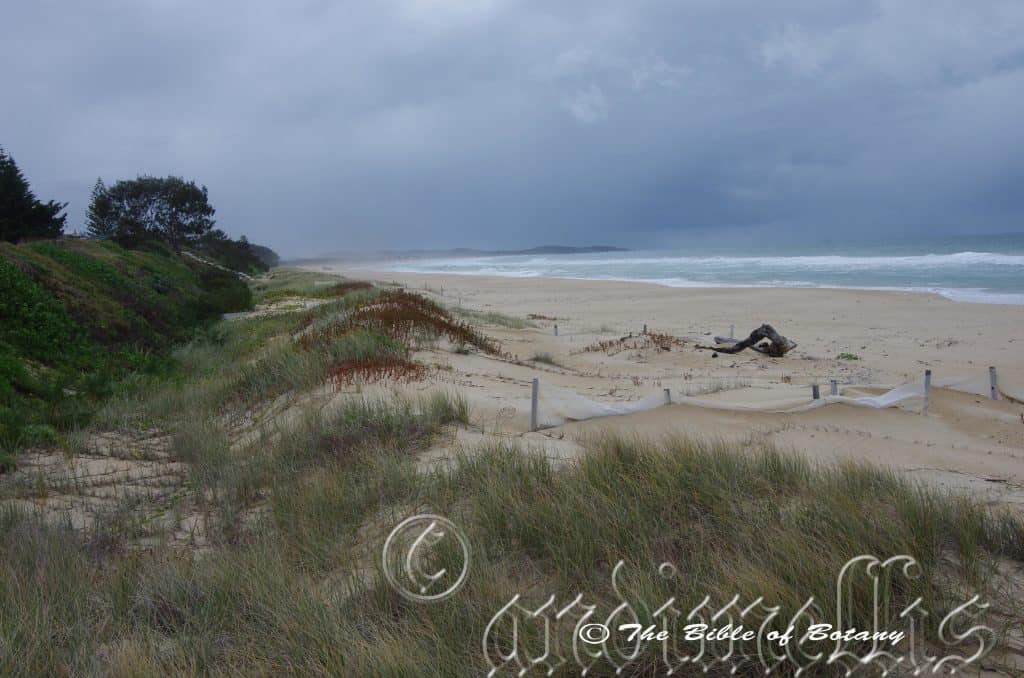
Woolli Frontal Dunes NSW
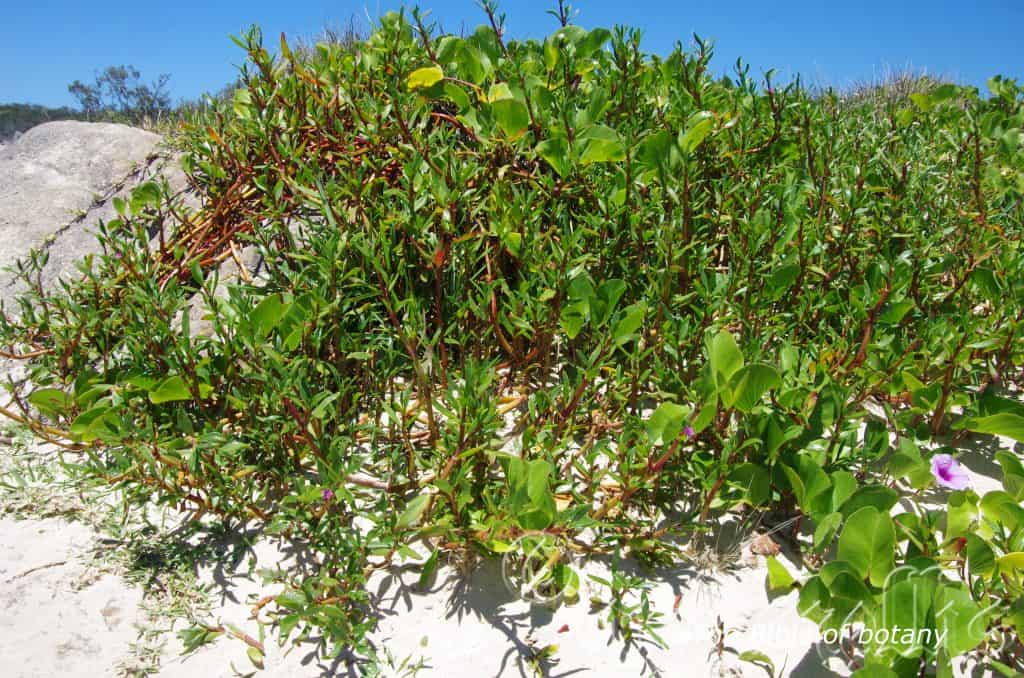
Woolli Frontal Dunes NSW
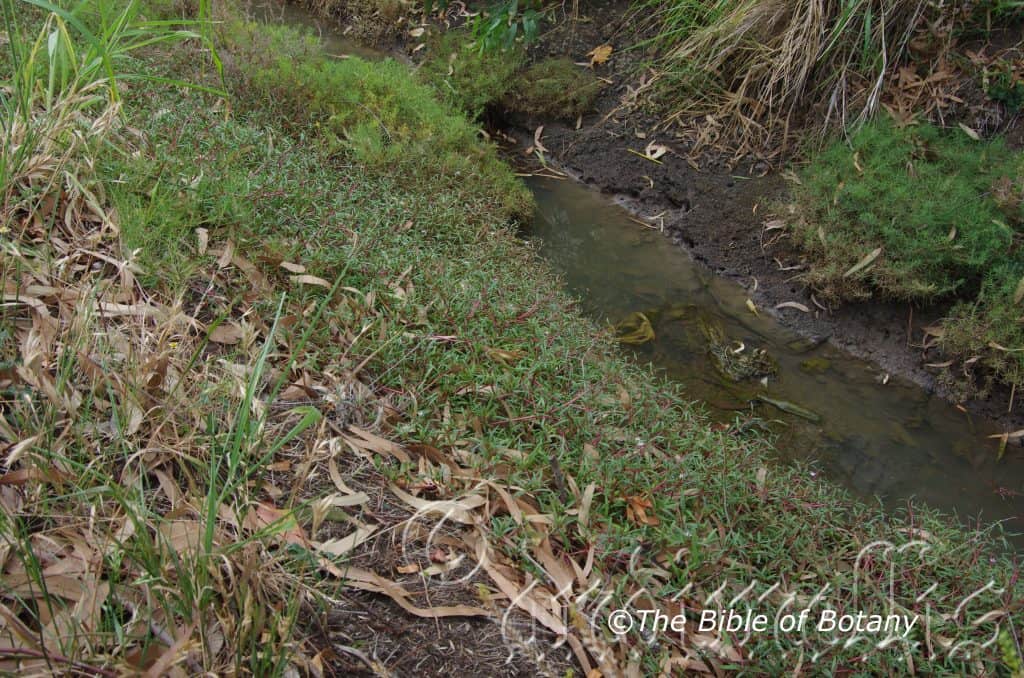
Sandgate Salina Table Drain Qld.
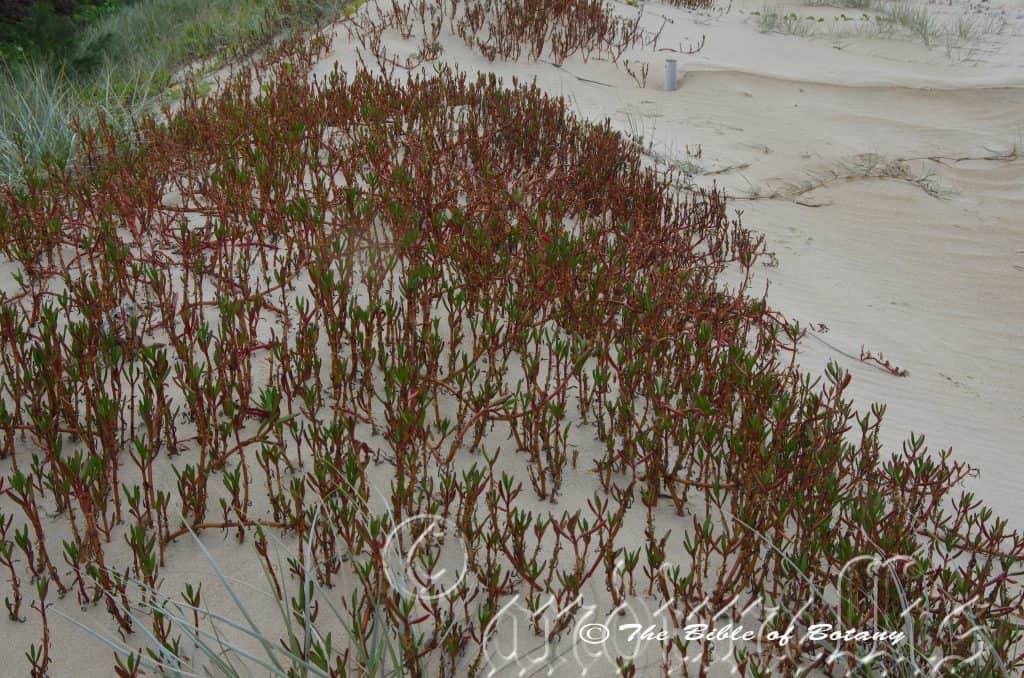
Woolli Frontal Dunes NSW
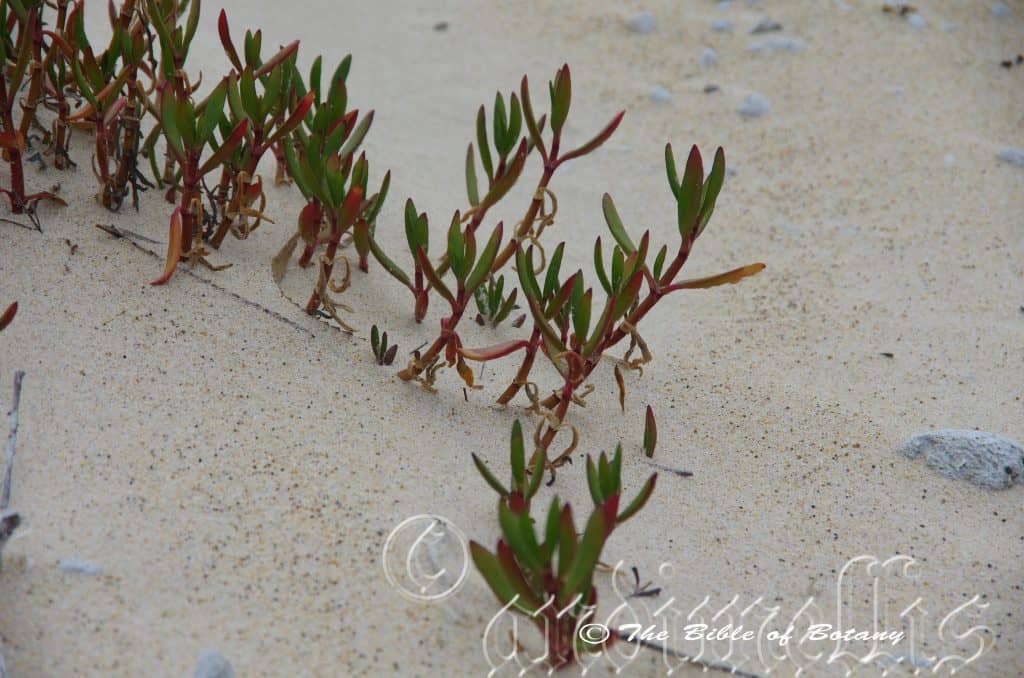
Woolli Frontal Dunes NSW
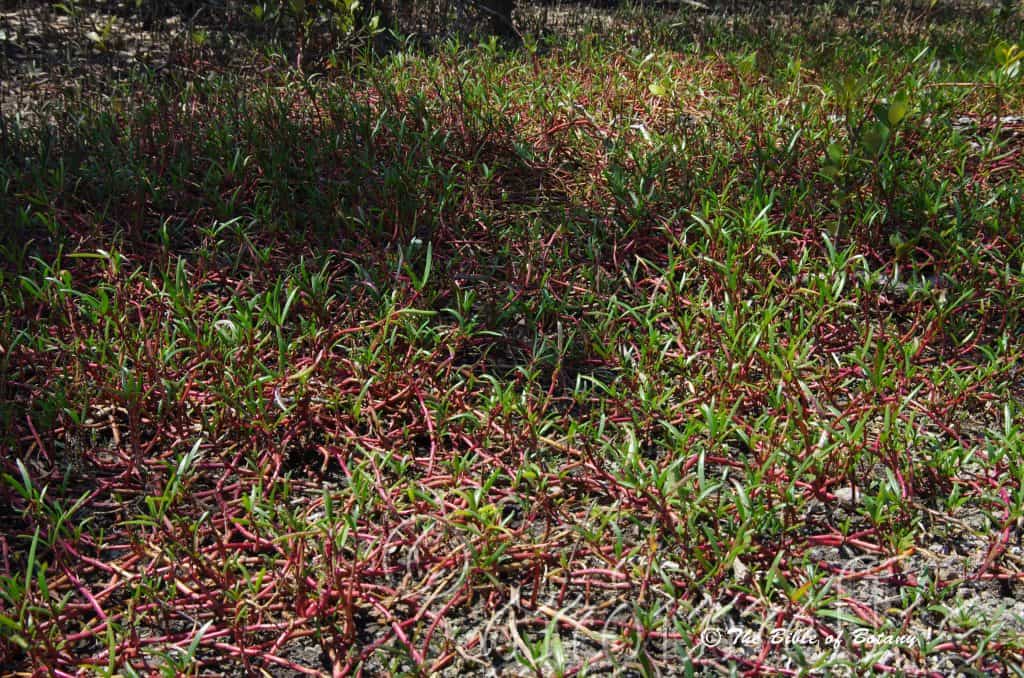
Wynumm Qld.
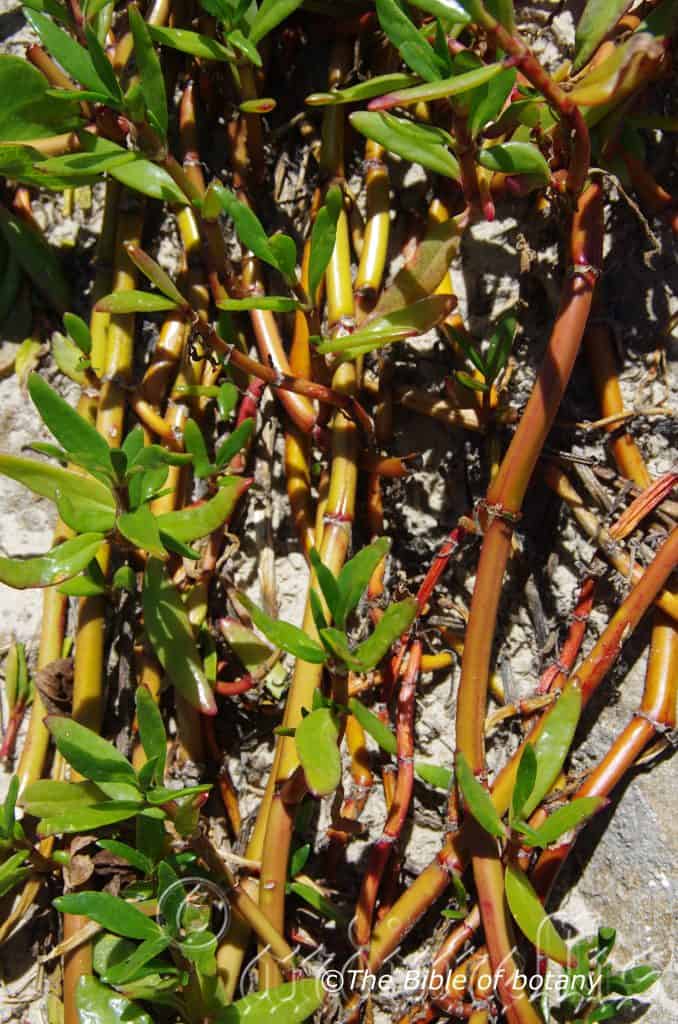
Woolli Frontal Dunes NSW
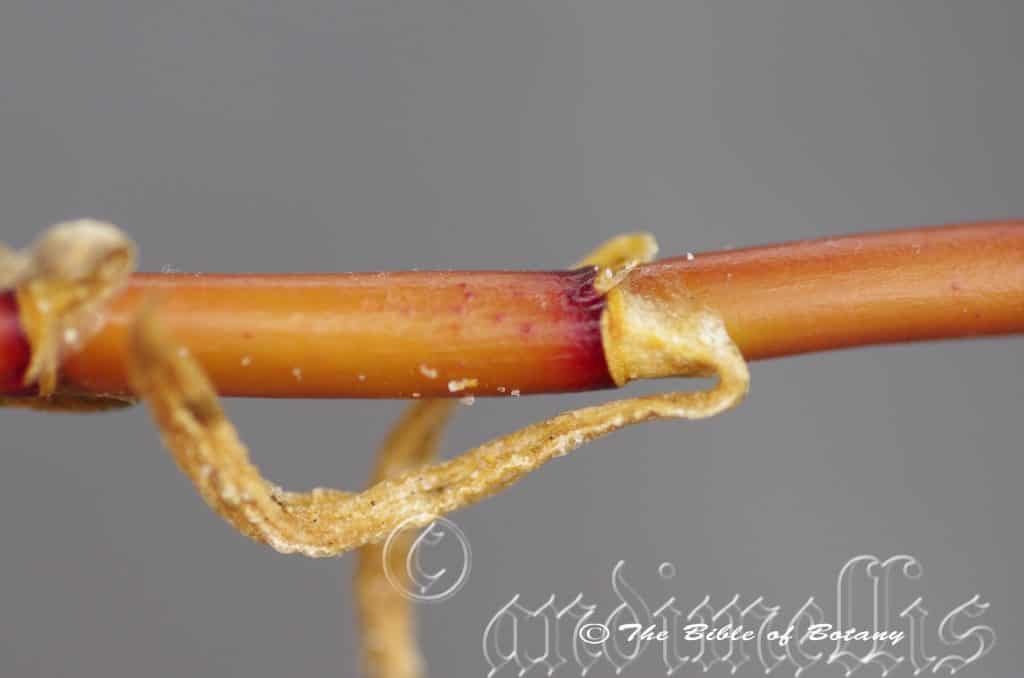
Woolli Frontal Dunes NSW
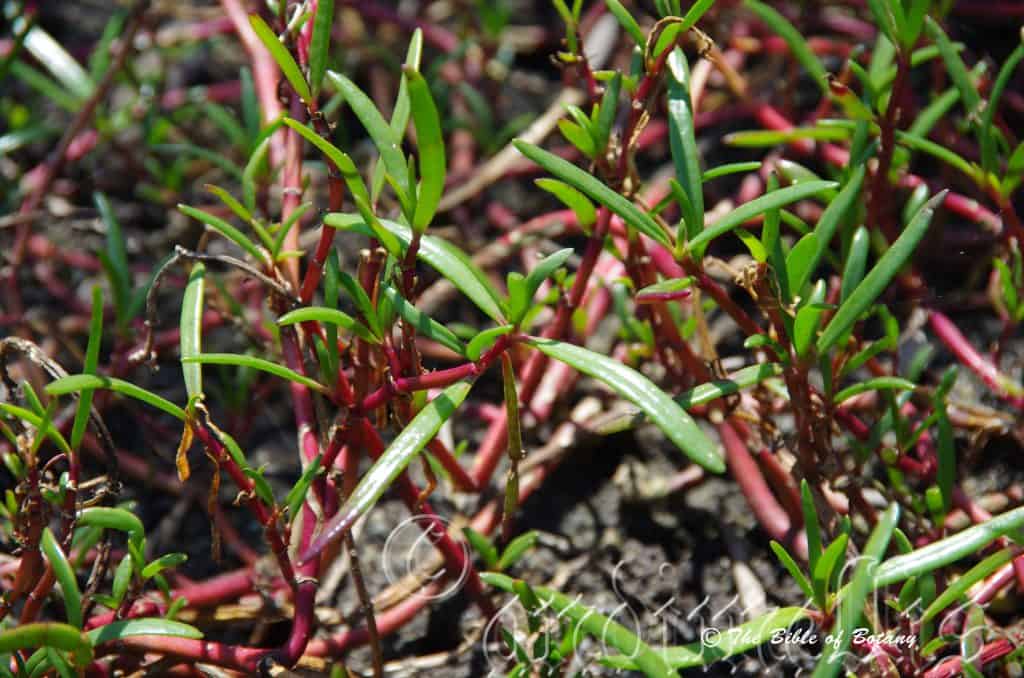
Wynumm Qld.
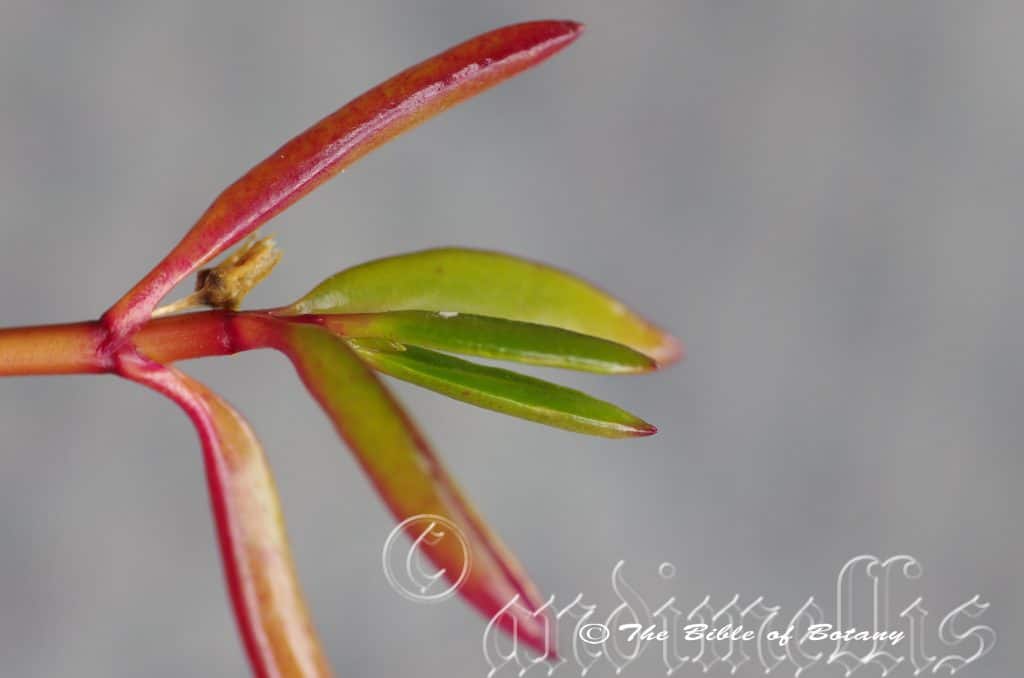
Woolli Frontal Dunes NSW
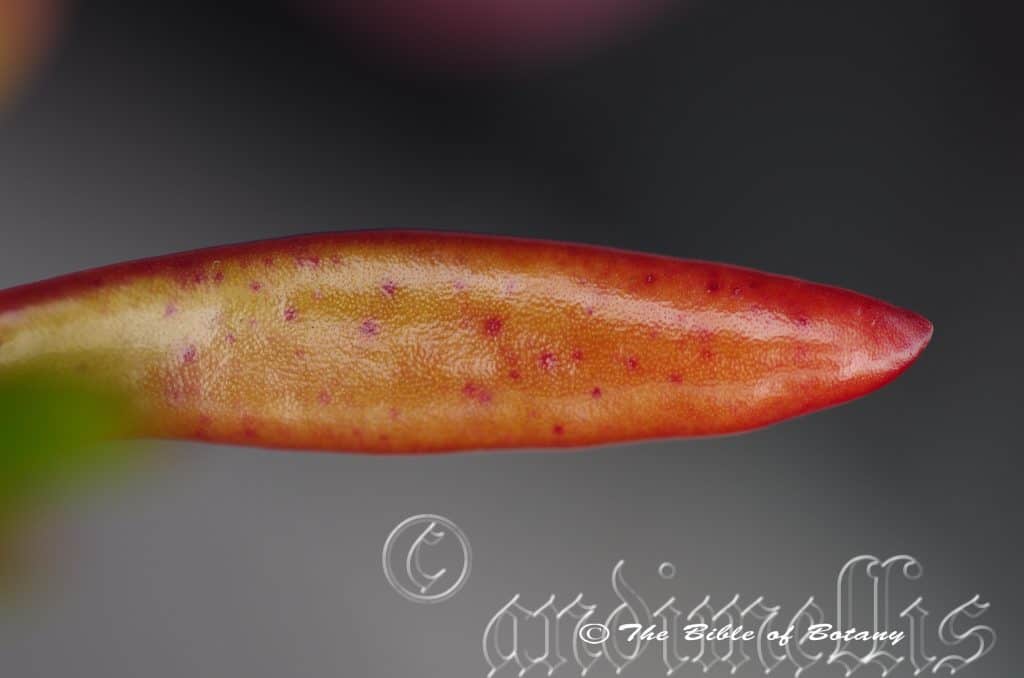
Woolli Frontal Dunes NSW
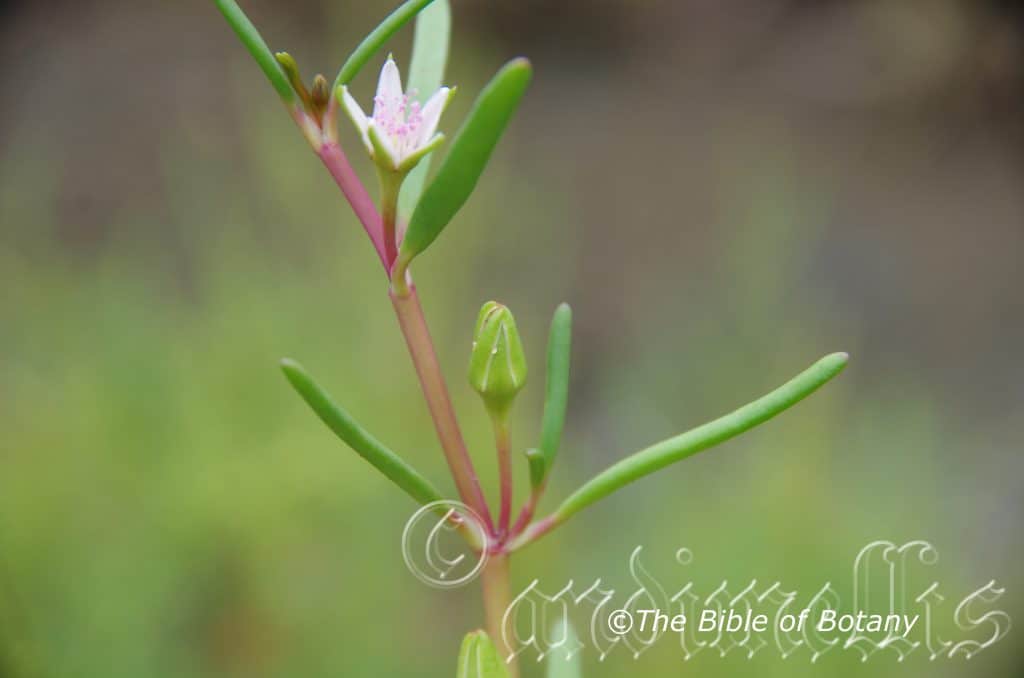
Sandgate Saline Tidal Drain Qld.
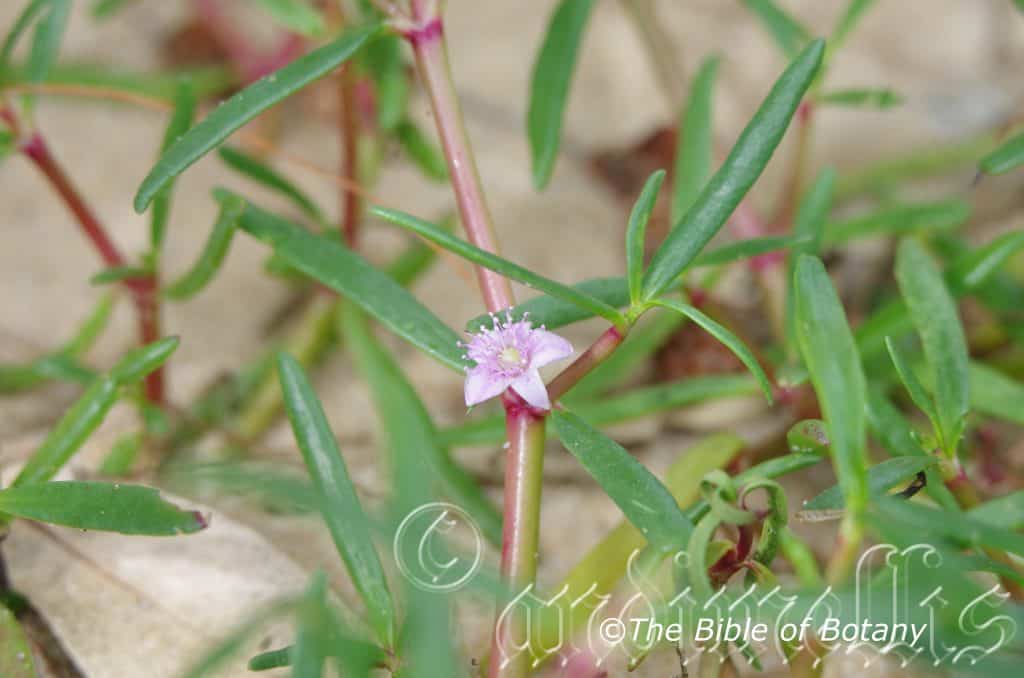
Crystal Creek Estuary North Qld.
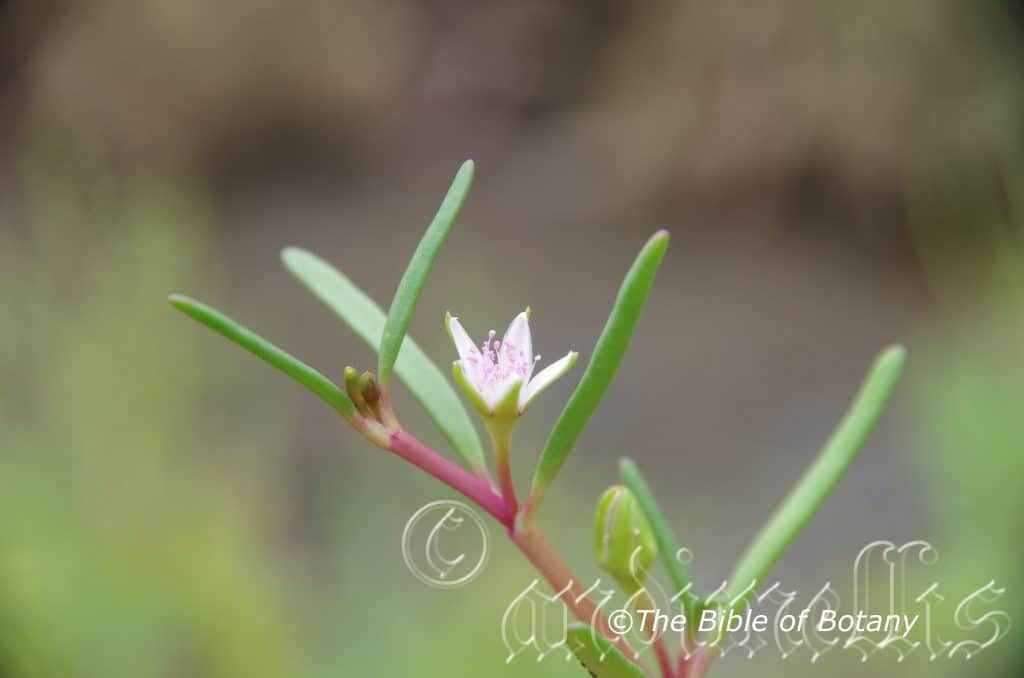
Sandgate Saline Tidal Drain Qld.
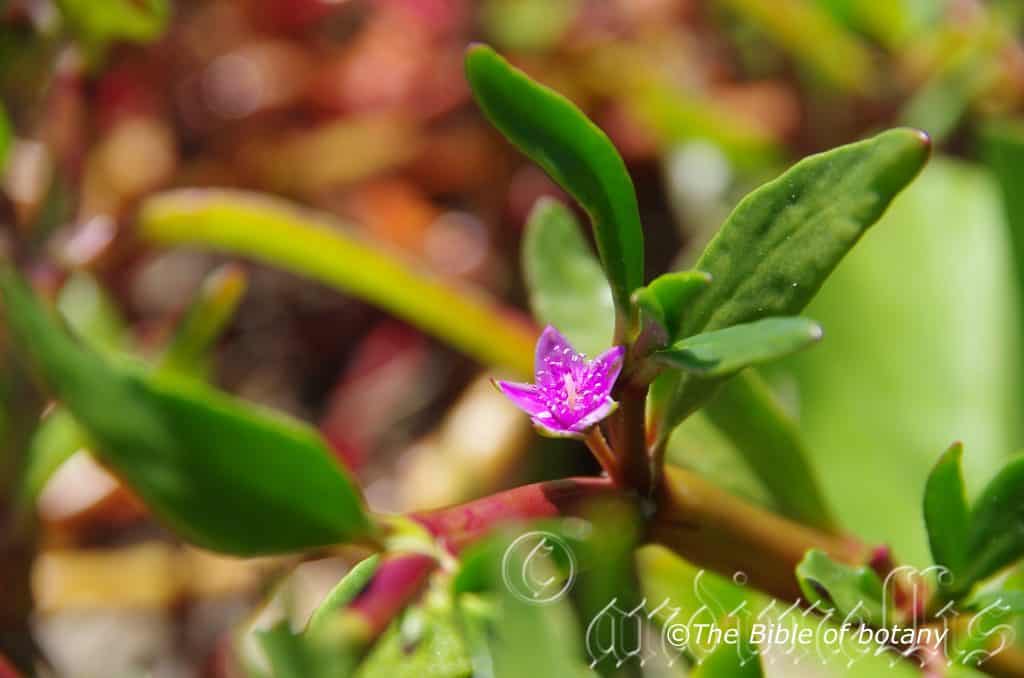
Woolli Frontal Dunes NSW
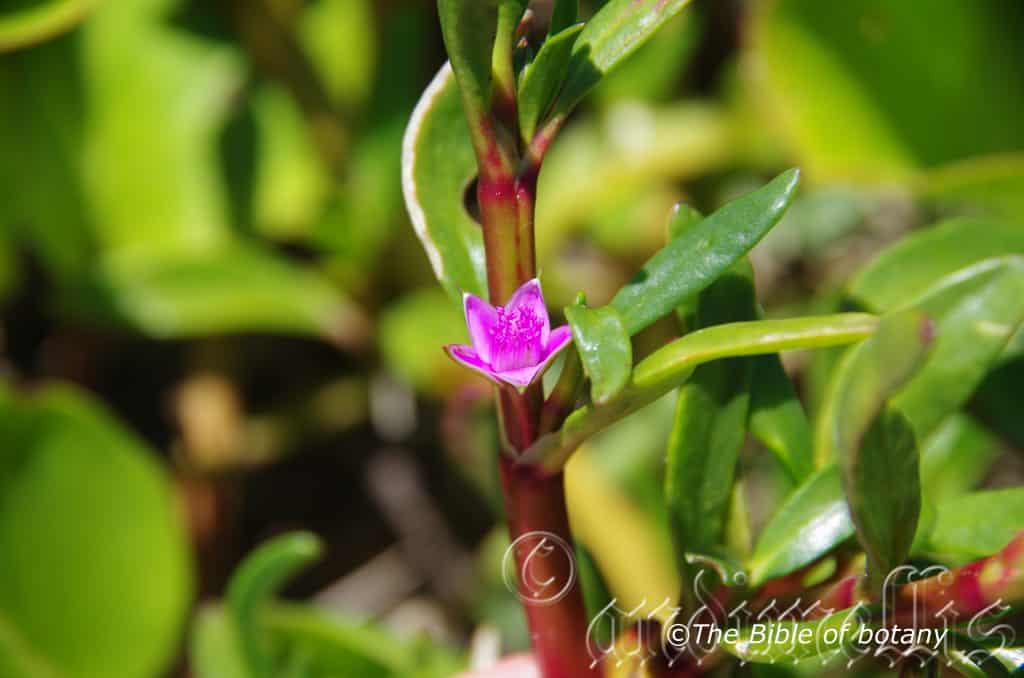
Woolli Frontal Dunes NSW
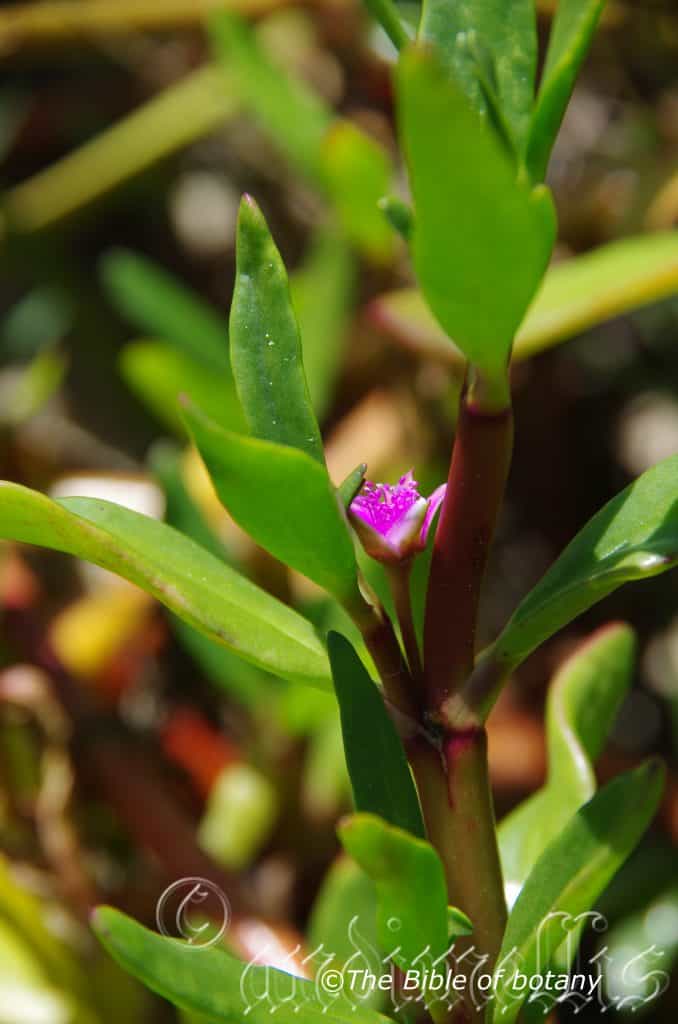
Woolli Frontal Dunes NSW
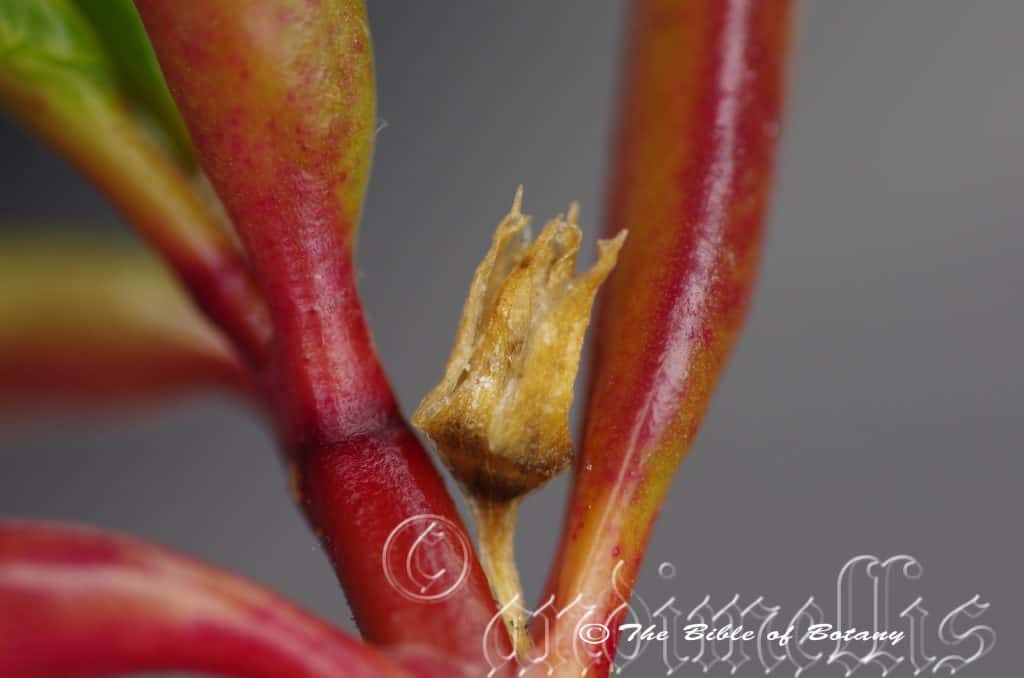
Woolli Frontal Dunes NSW
Sesuvium portulacastrum
Classification:
Unranked: Eudicots
Class: Rosids
Order: Caryophyllales
Family: Aizoaceae
Subsamily: Sesuvioideae
Genus: From Sesuvii, which is Latinized from the vernacular from the Sesuvii people who were a Gallic tribe.
Specie: From Portulāca, which is Latin for a door or portal and Castrum, which is Latin for a fort or castle. It refers to fruits, which have a cover or membrane that that protects the seeds until it is ready for dispersal.
Sub specie:
Common Name: Shoreline Purslane or Beach Pusrlane.
Distribution:
Sesuvium portulacastrum is found around the coast line of the northern half of Australia from Dorre Island and Sharks Bay in central coastal Western Australia to Tuggerah Lake in central coastal New South Wales.
It is found further inland on the Geraldton Sand Plains, the Ord River, Kakadu National Park, the Macarthur River and the Yarrowmere cattle Station. It is also found on Lord Howe Island.
It is alsio found in Indonesia, Papua, New Guinee and most of the Pacific Island Nations.
https://avh.ala.org.au/occurrences/search?taxa=Sesuvium+portulacastrum#tab_mapView
Habitat Aspect Climate:
Sesuvium portulacastrum prefers light dappled shade to full sun. It grows along the foreshores, estuaries close to the mouths of creeks, streams or smaller rivers or often behind Mangroves just above the high tide marks. The altitude ranges from 1 meters ASL to 50 meters ASL.
The temperatures range from 1 degree in July to 44 degrees in January.
The rainfalls range from lows of 400mm to 3200mm average per annum.
Soil Requirements:
Sesuvium portulacastrum prefers fine sands, medium silts to very fine silts or silty mud. The soils are usually derived from accumulated beach sands, sandy alluvial deposits or accumulated muddy flats. The soils pH ranges from 5pH to 7.5pH. It does not tolerate waterlogged soils however periodic inundations may occur during king tides or large floods. Non saline soils to extremely saline soils are tolerated as are salt laden winds.
Height & Spread:
Wild Plants: 0.05m to 0.2m by 0.5m to 1.5m.
Characteristics:
Sesuvium portulacastrum grows as a repent perennial with glabrous grass-green, reddish or maroon stems to 1 meter that root at the nodes.
The alternate, linear to lanceolate or oblanceolate leaves measure 15mm to 70mm in length by 5mm to 10mm in width. The sessile bases are cuneate or rounded while the apex is obtuse to acute-obtuse. The succulent, concolourous laminas are deep grass-green, semi glossy and glabrous. The laminas are terete to ovate in cross section while the margins are entire.
The inflorescences are born singularly from the leaf axils. The pale green pedicels are succulent, glabrous and measure 3mm to 6mm in length. The succulent hypanthium are green and glabrous. The 5 hypanthium lobes are mid green externally and pastel pink to deep rose pink internally. They measure 6mm to 10mm in length. The apical mucronate tip measures 1mm to1.5mm in length.
The 24 to 50 filaments are pastel pink to deep rose pink and measure 5mm to 6mm in length. The dorsifixed anthers are yellow, deep pink to deep purplish-pink and dehisce by being versatile. The anthers measure 1mm to 1.2mm in length by 0.3mm to 0.4mm in width.
The trilobed stigma is green or white. The flowers appear from late January to late February.
The fruits are conical capsules. The capsules are glabrous and measure 7mm to 10mm in length by 4mm to 5mm in diameter. The green capsules turn dull grey when ripe. The smooth, dull to semi glossy, black seeds measure 1.2mm to 1.5mm in diameter.
Wildlife:
Sesuvium portulacastrum support native bees along the coast. The leaves are the host to the Beet Webworm butterfly, Spoladea recurvalis.
Cultivation:
Sesuvium portulacastrum is a magnificent low growing creeping perennial for dry, sunny rockeries. It is ideal at the edge of a dry heath garden, mixed with annuals or an arid landscape garden. It is an excellent seaside succulent herb. In cultivation it grows from 0.05 meters to 0.1 meters in height by 1 meter to 1.6 meters in diameter when grown in an open sunny position.
They grow exceptionally well on sandy soils close to the coast and along exposed sandy creek lines. It can cope with temperatures as low as minus 2 degrees and up to 44 degrees. It is drought resistant once established in most climatic zone.
Add to the above, if it is given a little extra water and a little native fertilizer on a monthly basis the plants should respond with good flowering and better fruit production over a long period.
For best results plant them at 30mm to 500mm centres.
Propagation:
Seeds: The seeds can be removed easily from the mature fruits.
Sow freshly treated seeds directly into a seed raising mix, keeping them moist not wet. Do not over water as the seeds will rot off before germination takes place. Place the trays in a cool shaded area with 20mm shade cloth in the bush house. When the seedlings are 40mm to 50mm tall, prick them out and plant them into 50mm native tubes using a good organic mix.
As the seedlings roots reach the bottom of the tubes plant them out into their permanent position. Do not delay.
Fertilize using seaweed, fish emulsion or organic chicken pellets soaked in water on an alternate basis. Fertilize every two months until the plants are established then twice annually in early September and March to maintain better colour, health, vitality and flowering.
Cuttings:
Fortunately Sesuvium portulacastrumcuttings are very to strike. Use 100mm to 200mm long tip cuttings or lateral shoots from the present season’s growth that have at least 2 pairs of nodes. You can take them at any time of the year where frosts are not a problem.
1 Prepare the cutting mix by adding two thirds sharp clean river sand, one third peat or one third perlite. These ingredients must be sterilized,
2 Select good material from non diseased plants,
3 Select semi green stems for cuttings. Look for a stem with two or three nodes,
4 Place the cutting on a flat, hard surface, and make a clean cut down one side of the cutting at the base for 10mm with a sharp sterile knife or razor blade.
5 Hormones are not required,
6 Use a small dipple stick or old pencil to poke a hole into the soilless potting mix. Ensure the hole is slightly larger than the stem diameter and be careful not to damage the base,
7 I like to place the tubes in bucket with holes drilled in the bottom to allow excess water to drain out. A plastic bag that fits over the bucket is ideal to help maintain temperature and moisture. Place in a semi shaded, warm position like under 50mm shade cloth.
8 When the cuttings have struck, open the bag to allow air circulation for a few days to a week,
9 Once hardened off remove the cuttings from the bag and allow to further hardening for a few more days to a week,
10 Transplant into a good potting mix to grow on.
Fertilize using seaweed, fish emulsion or organic chicken pellets soaked in water on an alternate basis. Fertilize every two months until the plants are established then twice annually in early September or March to maintain health, vitality and better flowering.
Further Comments from Readers:
“Hi reader, it seems you use The Bible of Botany a lot. That’s great as we have great pleasure in bringing it to you! It’s a little awkward for us to ask, but our first aim is to purchase land approximately 1,600 hectares to link several parcels of N.P. into one at The Pinnacles NSW Australia, but we need your help. We’re not salespeople. We’re amateur botanists who have dedicated over 30 years to saving the environment in a practical way. We depend on donations to reach our goal. If you donate just $5, the price of your coffee this Sunday, We can help to keep the planet alive in a real way and continue to bring you regular updates and features on Australian plants all in one Botanical Bible. Any support is greatly appreciated. Thank you.”
In the spirit of reconciliation we acknowledge the Bundjalung, Gumbaynggirr and Yaegl and all aboriginal nations throughout Australia and their connections to land, sea and community. We pay our respect to their Elders past, present and future for the pleasures we have gained.
Setaria australiensis
Classification:
Class: Monocots
Class: Commelinids
Order: Poales
Family: Poaceae
Subfamily: Panicoidea
Supertribe: Panicodae
Tribe: Paniceae
Subtribe: Cenchrinae
Genus: From Seta/Setae, which is Latin for a bristle. It refers to long bristles which surround the seeds.
Specie: From Terra Australis, which is Latin for land of the south and Anum/Ensis, which is Latin for to originate from. It refers to plants, which were first discovered from the land down under.
Sub specie:
Common Name: Scrub Pigeon Grass.
Distribution:
Setaria australiensis is found south from the Torres Strait Islands in far north Queensland to Moona Plains near Walcha in coastal northern New South Wales. It is found on the Western Slopes, on and east of the Great Dividing range to the coast including the off shore Islands.
https://avh.ala.org.au/occurrences/search?taxa=Setaria+australiensis#tab_mapView
Habitat Aspect Climate:
Setaria australiensis prefers dappled shade. It grows in shaded closed forests especially along creeks and streams or at times rivers. The altitude ranges from 3 meters ASL to 1047 meters ASL.
The temperatures range from minus 3 degrees in August to 38 degrees in January.
Rainfalls range from lows of 600mm to 3200mm average per annum.
Soil Requirements:
Setaria australiensis prefers better quality sandy loams to medium clays. The soils are usually 2 opposing origins. The soils are derived from decomposed brown basalts, black basalts, accumulated peaty beach sands or at times accumulated coral sands. The soils pH ranges from 4pH to 8pH. It tolerates waterlogged soils often growing in shallow water for extended periods following the wet season or soils that have seasonal high water tables. Non saline soils to very saline soils are tolerated however best growth is seen amongst plants growing on medium clays with medium salt concentrations.
Height & Spread:
Wild Plants: 0.6m to 2.2m by 0.5m to 1.2m.
Characteristics:
Setaria australiensis grows as a tall cane like perennial forming large loose tufts. The culms are terete, stout at the base and more compressed and slender on the apical section. It is glabrous and smooth except below the panicles where it is covered in short white hirtellous hairs. The mid culms are glabrous. The sheaths are more or less compressed, glabrous, smooth and striated. The ligules are very densely covered in long, stiff white hirsute hairs. The hairs measure 2mm to 3mm in length.
The long, narrow lanceolate leaves measure 50mm to 320mm in length by 5mm to 20mm in width. The apexes are acuminate. The concolourous laminas are mid green to bluish-green and finely scabrous. The laminas are flat while the margins are entire.
The broad linear to narrow lanceolate inflorescences are contracted and rather dense panicles. The peduncles, rachis and pedicels are finely scabrous. The panicles measure 60mm to 200mm in length.
The spikelets are broadly lanceolate, elliptical to narrowly ovate and measure 3mm to 4mm in length. Each one is subtended by 1 to 3 purple-maroon bristles that measure 8mm to 20mm in length.
The similar glumes are thinner than fertile lemmas. The acute to apiculate lower glumes measure 1mm to 2mm in length. The broad ovate upper glumes measure 3mm to 4mm in length.
Lower lemma is as long as the spikelet. The lemmas are acute with 5 to 7 nerves. The broad lanceolate palea is almost as long as lemma. The acute or apiculate upper lemma is bisexual and is as long as the spikelet. It is coarsely transversely rugose below. The margins are broad and smooth.
There are 3 anthers. The flowers appear from September to February.
The fruits are globose grains. The green grains turn pastel fawnish-white when ripe. The grains measure 1.2mm to 1.3mm in length.
Wildlife:
Setaria australiensis wildlife is unknown to the author.
Cultivation:
Setaria australiensis is a large, compact, erect, tufted grass for large areas above the high water mark of dams, above the water lines of slow moving water courses or in drainage problem soils where it can form small colonies. It can be slashed several times a year and recovers very quickly.
The grass supplies good quantities of mulch for orchards but is very problemsome around the trees if it gets a hold in an area. It is ideally suited for growing in full sun to lightly shaded areas on flats where it is free draining and maintains soil moisture for extended periods following good rain.
It is an intermediate fodder crop for domestic animals. The food nutritional value is unknown to the author however grazing stock relished the opportunities graze on tufts in the orchard. It has been noted that native animals preferred other grasses and only grazed it in times of drought.
It has a strong dense root system which makes it ideal as a soil stabilizer in wet soggy ground and is difficult to pull even on soft wet ground. It grew well adjacent to the back end of the dam where iron oxide bacteria flourished on the block and was the major grass growing in that section in semi shade.
It gives high yields of good quality mulch at the same time can out compete local grasses and can be problemsome around orchard trees depriving trees of moisture. It thrives under organic conditions where we have recorded plants close to 2.5 meters in height with a spread of over 1.5 meters.
Propagation:
Seeds: Collect seeds as the seed heads turn fawn. Cut the heads off and place them into a brown paper bag.
Sow the seeds directly into a seed raising mix and place the tray beneath 20mm shade cloth. Keep the trays moist at all times. When the seedlings are 25mm to 40mm tall, prick them out and plant them into 50mm native tubes using a seed raising mix. Return the tubes to a sunny position and place them in trays and keep wet at all times
Once the seedlings reach 100mm to 150mm in height plant them out into their permanent position. Mass plantings are best achieved with spacing’s of 1000mm to 1500mm centers. Alternatively the seedlings can be planted into 200mm squat pots. Cover the surface with a layer of gravel and placed the pots in a fish or frog pond where the water level is at the same level as the top of the pots.
Fertilize using seaweed, fish emulsion or organic chicken pellets soaked in water on an alternate basis. Fertilize every two months until the plants are established then twice annually in early September and March to maintain better colour, health, vitality and flowering.
Further Comments from Readers:
“Hi reader, it seems you use The Bible of Botany a lot. That’s great as we have great pleasure in bringing it to you! It’s a little awkward for us to ask, but our first aim is to purchase land approximately 1,600 hectares to link several parcels of N.P. into one at The Pinnacles NSW Australia, but we need your help. We’re not salespeople. We’re amateur botanists who have dedicated over 30 years to saving the environment in a practical way. We depend on donations to reach our goal. If you donate just $5, the price of your coffee this Sunday, We can help to keep the planet alive in a real way and continue to bring you regular updates and features on Australian plants all in one Botanical Bible. Any support is greatly appreciated. Thank you.”
In the spirit of reconciliation we acknowledge the Bundjalung, Gumbaynggirr and Yaegl and all aboriginal nations throughout Australia and their connections to land, sea and community. We pay our respect to their Elders past, present and future for the pleasures we have gained.
Sicyos australis
Classification:
Class: Equisetopsida
Subclass: Magnoliidae
Superorder: Lilianae
Order: Cucurbitales
Family: Curcuitaceae
Genus: From Sicyos, which is Latin for a cucumber. It refers to the plants, which are related to the commercially grown cucumber.
Specie: From Terra Australis, which is Latin for land of the south and Anum/Ensis, which is Latin for to originate from. It refers to plants, which were first discovered from the land down under.
Sub specie:
Common Name: Angled Cucumber, Star Cucumber or Angled Star Cucumber.
Distribution:
Sicyos australis is found south from Mount Garnet to the Tambo River near Bairnsdale in eastern Victoria. There is an isolated population further south near Broken Head south of Geelong and a disjunct population further north in the Iron Range National Park. It is found on the western slopes in Queensland and on and east of the Great Dividing Range over the rest of its range south.
It is also found on the northern tip of Flinders Island, Inner Sister Island and West Sister Island in the Furneaux group of Islands in Bass Strait with further populations on Lord Howe Island and Norfolk Island.
https://avh.ala.org.au/occurrences/search?taxa=Sicyos+australis#tab_mapView
Habitat Aspect Climate:
Sicyos australis prefers light dappled shade to full sun. It grows in monsoonal forests, vine thickets, adjacent to moist subtropical rainforests, tropical Rainforests, warm temperate rainforests or littoral rainforests. The altitude ranges from 10 meters ASL to 840 meters ASL.
The temperatures range from minus 2 degrees in July to 36 degrees in February.
The rainfalls range from lows of 600mm to 2000mm average per annum.
Soil Requirements:
Sicyos australis prefers to grow on better quality sandy loams to medium clays. The soils are usually derived from decomposed brown basalts, black basalts, metamorphic rocks granites or sandstones. The soils pH ranges from 5pH to 6pH. It does not tolerate waterlogged soils. Non saline soils to moderately saline soils are tolerated.
Height & Spread:
Wild Plants: 3m to 10m by 3m to 4m.
Characteristics:
Sicyos australis grows as a small, slender, tendril annual climber with multiple stems which are sparsely covered in white hirsute hairs. The tendrils are 2 to 5 branched. The tendrils are at 90 degrees to leaf opposed and tightly coiled beyond the first branch.
The alternate, palmate leaves measure 45mm to 70mm in length by 50mm to 80mm in width. There are usually 5 lobes or at times 3 or 7 lobes. The mid grass-green petioles are sparsely covered in white hirsute hairs and measure 10mm to 30mm in length. The bases are rounded, truncate to deeply sagittate while the apexes are obtuse to acute. The concolourous laminas are mid grass-green, dull and sparsely covered in white hirsute hairs and or erect glandular hairs. The laminas are soft and flat while the margins are linear dentate and covered in short white ciliate hairs. The mid veins, laterals and reticulated tertiary veins are prominent on the lower laminas and are visible from the upper lamina.
The inflorescences are born in unisexual racemes or cymes from the leaf axils.
The male inflorescences have 8 to 20 individual flowers on a raceme. The racemes peduncle, raceme and pedicels are mid grass-green and are sparsely scaberulous and sparsely covered in long, white hirsute or glandular hairs. The peduncle measures 15mm to 120mm in length while the raceme measures 10mm to 35mm in length and the pedicels measure 3mm to 11mm in length. The hypanthium is broad campanulate and measures 2.4mm to 2.7mm in diameter. The calyx lobes are linear and measure 0.4mm to 0.7mm in length. The rotate corolla measures 4.5mm to 7.8mm in diameter. It is usually glabrous with the lobe apexes being covered in white pulverulent hairs. The 5 white lobes are broad triangular to ovate with obtuse apexes. The lobes measure 2mm to 2.6mm in length. The disc measures 1.2mm in diameter.
The 3 stamens form a staminal column that measures 1.5mm to 1.8mm in length while the united divaricate anthers flare outwards at the apex. The anther locules are sinuous. The locules measure 0.7mm to 0.8mm in length by 0.9mm to 1mm in width.
The female inflorescences have 6 to 11 individual flowers in a clustered cyme. The peduncles and pedicels are mid grass-green and are sparsely scaberulous and sparsely covered in long, white hirsute or glandular hairs. The peduncles measure 8mm to 33mm in length while the pedicels measure 0mm to less than 2mm in length.
The ovate ovary is attenuate and measures 3mm to 3.5mm in length by 1.3mm to 1.4mm in diameter. The ovaries are minutely and densely echinulate which are barbed aculei. The hypanthium above the constriction is broad urceolate and measures 1.5mm to 1.7mm in diameter. The disc is covered in minute glandular hairs while the linear grass-green calyx lobes measure 0.4mm to 0.7mm in length. The corolla measures 2.5mm to 3.5mm in diameter. The corollas are glabrous while the lobe apices are covered in white pulverulent hairs. The 5 white to pastel green lobes are triangular–ovate with obtuse apexes. The lobes measure 1.6mm to 2mm in length. The grass-green disc measures 1mm to 1.3mm in diameter while the style measures 1.4mm to 2mm in length while the 2 lobed stigma’s recurved lobes measure 0.3mm to 0.5mm in length.
Sicyos australis fruits are narrow ovoidal berries. The green berries turn fawnish grey when ripe. The pedicels measure 2mm to 3.5mm in length. The berries measure 6.4mm to 12mm in length by 2.8mm to 4.0mm in diameter. The apexes are attenuate while the surfaces are glabrous to scaberulous and are densely covered in short white echinulate hairs. The retrorsely barbed aculei measure 1.6mm to 3.6mm in length.
The ellipsoidal to ovoidal brown seeds measure 4mm to 6mm in length by 2.8mm to 3.4mm.
Wildlife:
Sicyos australis’s wildlife is unknown to the author however it is known to be affected by the Cucumber mosaic virus (CMV). This virus is found worldwide and is very easily spread. It causes severe leaf damage to the host and will affect fruit yields. CMV is known to be transmitted by more than 60 different aphid species and other vectors. CMV is known to infect over 1200 plant species including important vegetable crops and ornamentals.
It is a virulent plant pathogenic virus in the family Bromoviridae which mainly affects plants in the Curcuitaceae. To read more about this virus and its control go to Plant Viruses.
Cultivation:
Sicyos australis is a medium fast growing spreading perennial vine for medium to large gardens.
It is ideally suited for growing in full sun on flats where it there is free drainage, but where soil moisture is maintained for extended periods following good rain. It makes a good starter vine for the bare garden or new garden.
Propagation:
Seeds: Cut the heads off and place them into a paper bag.
Sow the seeds directly into a seed raising mix that has been placed into 50mm native tube and place the tubes beneath 20mm shade cloth. Keep the tubes moist at all times. When the seedlings are 50mm to 100mm tall plant them out into their permanent position. Mass plantings are best achieved with spacing’s of 2 meter to 3 meter centers.
Fertilize using seaweed, fish emulsion or organic chicken pellets soaked in water on an alternate basis. Fertilize every two months until the plants are established then twice annually in early September and March to maintain better colour, health, vitality and flowering.
Further Comments from Readers:
“Hi reader, it seems you use The Bible of Botany a lot. That’s great as we have great pleasure in bringing it to you! It’s a little awkward for us to ask, but our first aim is to purchase land approximately 1,600 hectares to link several parcels of N.P. into one at The Pinnacles NSW Australia, but we need your help. We’re not salespeople. We’re amateur botanists who have dedicated over 30 years to saving the environment in a practical way. We depend on donations to reach our goal. If you donate just $5, the price of your coffee this Sunday, We can help to keep the planet alive in a real way and continue to bring you regular updates and features on Australian plants all in one Botanical Bible. Any support is greatly appreciated. Thank you.”
In the spirit of reconciliation we acknowledge the Bundjalung, Gumbaynggirr and Yaegl and all aboriginal nations throughout Australia and their connections to land, sea and community. We pay our respect to their Elders past, present and future for the pleasures we have gained.
Sida cordifolia
Classification:
Unranked: Eudicots
Class: Rosids
Order: Malvales
Family: Malvaceae
Subfamily: Malvoideae
Tribe: Malveae
Genus: From Sida, which was Greek for a type of water lily but now refers to a type of Mallow. It refers to plants, which are in the Malvaceae family.
Specie: From Kordātum, which is Ancient Greek or Cordātum, which is Latin for a heart shape and Folium, which is Latin for foliage. It refers to leaves, which have a heart shape.
Sub specie:
Common Name: Fan Petal, Flannel Weed, Bala, Country Mallow, Heart-leaf sida or Sida.
Distribution:
Sida cordifolia is found north a line from Broome in coastal northern, Western Australia to the Ord River and Katherine in the Northern Territory to Dorrigo and the Bellinger River in north eastern New South Wales. There are 5 isolated populations below this line at the Barkley in the Alyawarr Desert, around the Devils Marbles and the Eurolley Bore at Jervois Cattle Station in the Northern Territory, Ernabella and the Cadney Park Railway station and Gilruth Plains near Cunnamullain western New South Wales.
https://avh.ala.org.au/occurrences/search?taxa=Sida+cordifolia#tab_mapView
Habitat Aspect Climate:
Sida cordifolia prefers light dappled shade to full sun. It grows in and adjacent to dry subtropical, tropical Rainforests or monsoonal forests. The altitude ranges from 5 meters ASL to 900 meters ASL.
The temperatures range from 2 degrees in August to 44 degrees in February.
The rainfalls range from lows of 150mm to 3200mm average per annum however the lower rainfall areas have the plants growing close to permanent ground water supplies.
Soil Requirements:
Sida cordifolia prefers better quality light clays to heavy clays or light silts to heavy silts podsolics and vertisols pindin soils. The soils are usually derived from decomposed sandstones, brown basalts, black basalts, metamorphic rocks granites, accumulated beach sands or accumulated coral sands. The soils pH ranges from 4.5pH to 6pH. It does not tolerate waterlogged soils however periodic inundations may occur with plants growing in riparian zones, flood plains and clay pans. Non saline soils to very saline soils are tolerated.
Height & Spread:
Wild Plants: 0.5m to 2m by 0.5m to 0.8m.
Characteristics:
Sida cordifolia grows as an erect, much branched sub shrub or small shrub. The pale green to pale blue-green stems are densely covered in short, white tomentose hairs.
The alternate, ovate to broad ovate leaves measure 10mm to 40mm in length by 6mm to 30mm in width. The petioles are moderately to densely covered in short, white stellate pubescent hairs with the occasional longer, white hirtellous or hirsute hairs. They measure 10mm to 30mm in length. The bases are slightly cordate, rounded to truncate while the apexes are acute to narrowing obtuse. The discolourous laminas are soft grass-green, soft bluish-green to pale blue-green and moderately to densely covered in short, white stellate pubescent hairs on the upper laminas while the lower laminas are paler and densely covered in short, white stellate pubescent hairs. The laminas are flat to recurve upwards near the margins while the margins are crenate. The mid vein and usually 10 lateral veins and main secondary veins are strongly prominent on the lower laminas and are distinctly visible from the upper laminas.
The inflorescences are born in dense terminal or upper axillary clusters from the leaf axils or terminals. The pale bluish-green to pale green peduncle, rachis and pedicels are moderately to densely covered in short, white stellate pubescent hairs with the occasional long, white hirsute hair. The peduncle measures 5mm to 25mm in length while the rachis measures 6mm to 25mm in length and the pedicels measure 3mm to 6mm in length.
The 5 pale bluish-green to pale green calyx lobes are strongly ribbed during the bud stage, are moderately to densely covered in short, white stellate pulverulent hairs with the occasional long, white hirsute hair externally and are less hairy and glandular internally. Calyx lobes have acuminate apexes and measure 5mm to 8mm in length.
The 5 petals are pale yellow, deep yellow or creamy-orange with deeper coloured throats. The broad ovate petals are glabrous while the margins are covered in short, white ciliate hairs. The petals measure 8mm to 10mm in length by 8mm to 11mm in width.
The usually 20 staminal filaments are fused to form an andrphore tube. The 10 locular ovary has a 10 branched style. The flowers appear from late January through to late February.
Sida cordifolia’s fruits are globose, obovoidal or depressed globular mericarps. The mericarps measure 3mm to 4.5mm in length by 6mm to 8mm in diameter. The bluish–green turn orange to pale yellow when ripe and split into 8 to 10 individual nutlets. The calyx lobes are persistent on the ripe mericarps. The nutlets are 2 awned with the awns being retrorsely barbed and measure 2.5mm to 3.6mm in length. The nutlets are covered in minute, fawnish stellate hairs.
Wildlife:
The flowers are very attractive to native bees. The seeds are distributed by attaching themselves to the fur of animals.
Cultivation:
Sida cordifolia has attractive foliage and lovely yellow contrasting flowers. It is a good plant where bulk green manure is wanted. If it is grown as a garden subject it can become quite weedy but is easy to control.
It grows exceptionally well on most soil types especially where deep leaf litter keeps the soil cool and moisture at an even level. If these requirements are metit can cope with temperatures as low as minus 2 degrees and up to 44 degrees. It is moderately drought resistant once established in their climatic zone.
Add to the above, if it is given an adequate supply of water and a little native fertilizer on a regular basis the plants will respond with good flowering and better fruit production over a long period which can see it escaping the garden under ideal conditions. It develops a long tough tap root which makes it difficult to remove however grubbed plants rarely regrow.
Propagation:
Seeds: The seeds can be removed easily from the fruits ripening fruit once the first nutlets appear.
Sow freshly treated seeds directly into a seed raising mix, keeping them moist not wet. Do not over water as the seeds will rot off before germination takes place. Place the trays in a cool shaded area with 20mm shade cloth in the bush house. When the seedlings are 40mm to 50mm tall, prick them out and plant them into 50mm native tubes using a good organic mix.
As the seedlings roots reach the bottom of the tubes plant them out into their permanent position.
The plants are best planted with spacing of 0.6 meter to 0.8 meter centers in full sun and in double rows 1.5 meters apart. Plants for use as herbs should be replaced on an annual basis.
Fertilize using seaweed, fish emulsion or organic chicken pellets soaked in water on an alternate basis. Fertilize every two months until the plants are established then twice annually in early September and March to maintain better colour, health, vitality and flowering.
Further Comments from Readers:
“Hi reader, it seems you use The Bible of Botany a lot. That’s great as we have great pleasure in bringing it to you! It’s a little awkward for us to ask, but our first aim is to purchase land approximately 1,600 hectares to link several parcels of N.P. into one at The Pinnacles NSW Australia, but we need your help. We’re not salespeople. We’re amateur botanists who have dedicated over 30 years to saving the environment in a practical way. We depend on donations to reach our goal. If you donate just $5, the price of your coffee this Sunday, We can help to keep the planet alive in a real way and continue to bring you regular updates and features on Australian plants all in one Botanical Bible. Any support is greatly appreciated. Thank you.”
In the spirit of reconciliation we acknowledge the Bundjalung, Gumbaynggirr and Yaegl and all aboriginal nations throughout Australia and their connections to land, sea and community. We pay our respect to their Elders past, present and future for the pleasures we have gained.
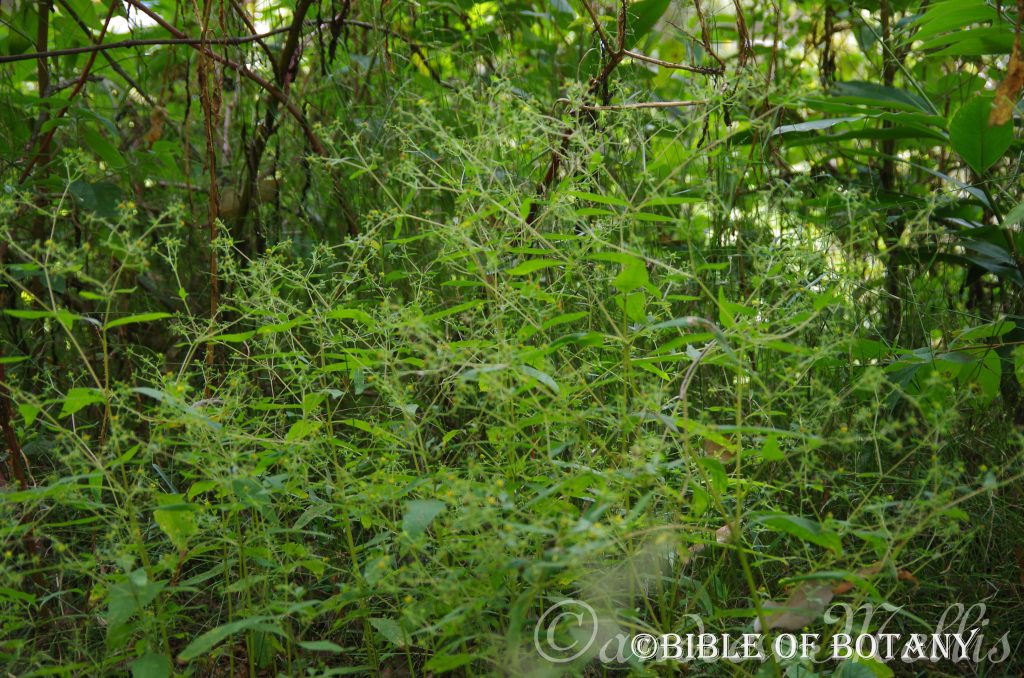
Washpool National Park NSW
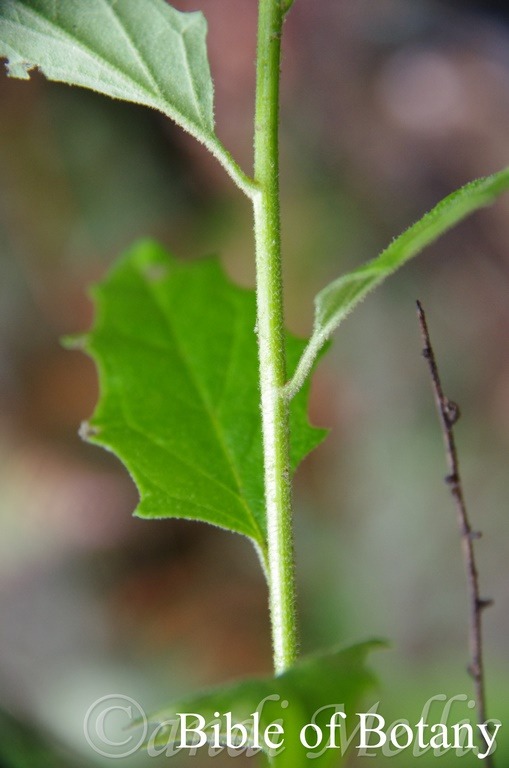
Wombat Creek Conservation Park NSW
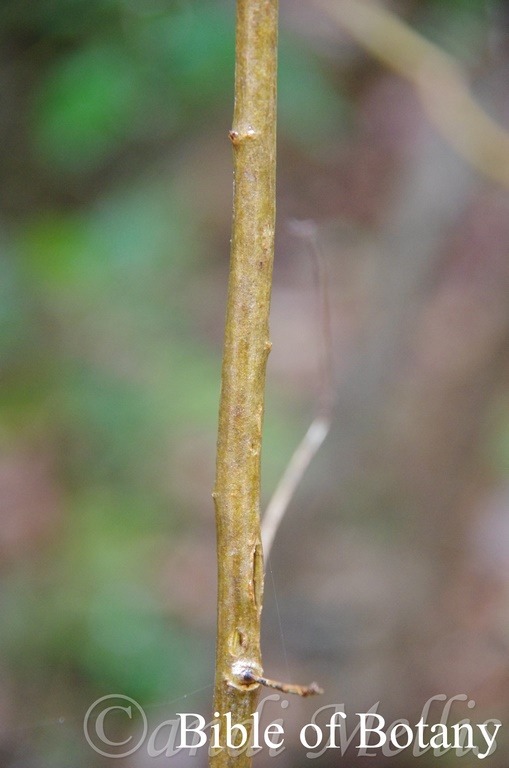
Wombat Creek Conservation Park NSW
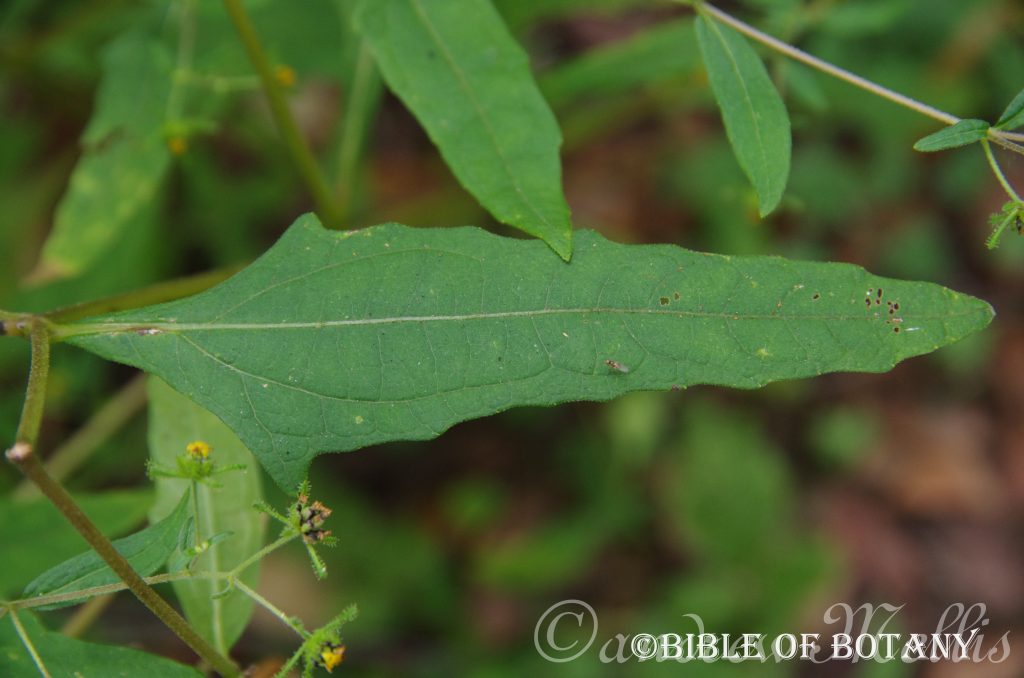
Washpool National Park NSW
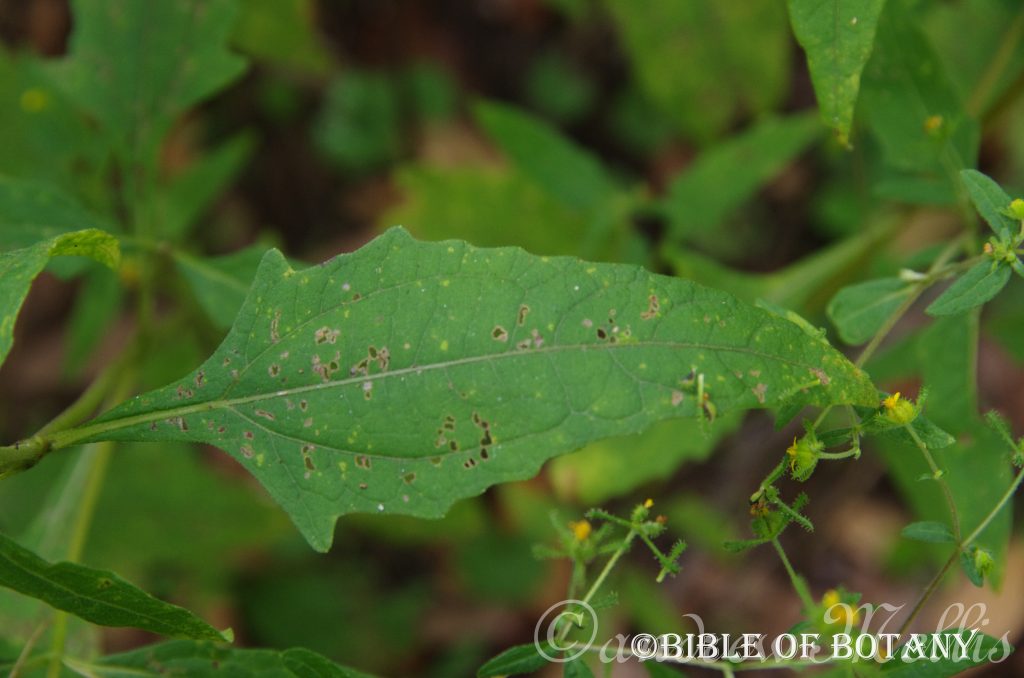
Washpool National Park NSW

Wombat Creek Conservation Park NSW
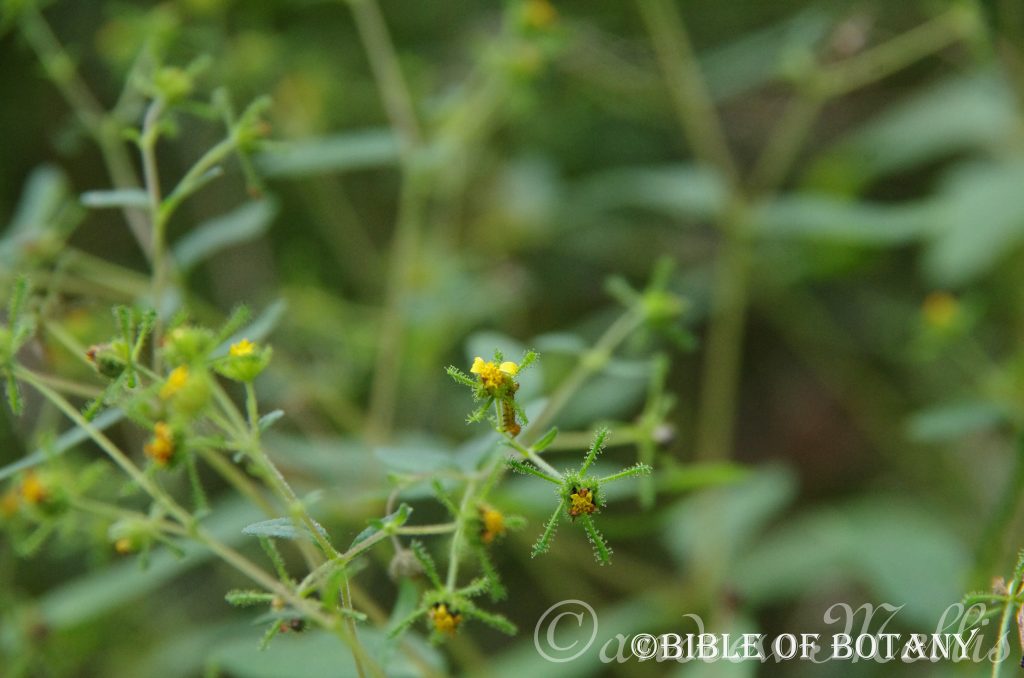
Washpool National Park NSW
Sigsbeckia orientalis
Classification:
Eudicots: Eudicots
Class: Rosids
Order: Asterales
Family: Asteraceae
Subfamily: Millerieae
Genus: Is named in honour of Johanne George Siegesbeck; 1686-1755, who was the director of the St Petersburg Apothecary’s Gardens. Linnaeus named this bitter weed after a bitter opponent of his system.
Specie: From Orientalis, which is Latin for the oriental or eastern. It refers to plants, which were first discovered in the east or the orient.
Sub specie:
Common Name: Indian Weed or Farmers Lice.
Distribution:
Sigsbeckia orientalis is found in several isolated populations throughout Australia. It is found between Learmonth to the Hamersleigh Range National Park, Weeli Wooli Creek north of Newman and south of Newman on the central coast. It is also found in the south west corner of Western Australia close to the coast from the Swan River Plain to the Gorge of the Porongurup.
In the centre it is found in disjunct populations from Stuart Pass to Schwerin Mural Crescent, Mount Fanny and Mount Margarete. Further south it is found from the northern Flinders Lofty Block south to Port Augusta and from Mount Bryan to the lower tip of Yorke Peninsula and Kangaroo Island. It covers the eastern half of Queensland contracting eastward from Cobar to Jocks Creek and Wollondilly River near Goodmans Ford.
In Tasmania it is found on Flinders Island and from the Chain of Lagoons to the Aspley Waterhole in the Aspley-Douglas National Park.
https://avh.ala.org.au/occurrences/search?taxa=Senna+acclinis#tab_mapView
Habitat Aspect Climate:
Sigsbeckia orientalis prefers light dappled shade to full sun. It grows in and adjacent to dry subtropical, tropical Rainforests, monsoonal forests, open woodlands, savannah woodlands, on creek and stream meanders or river banks. The altitude ranges from 5 meters ASL to 1380 meters ASL.
The temperatures range from minus 3 degrees in July to 39 degrees in January.
The rainfalls range from lows of 150mm to 3200mm average per annum.
Soil Requirements:
Sigsbeckia orientalis prefers better quality skeletal to deep loams, stony or gravelly light fatty clays to medium clays to rich fertile soils on the banks of creeks, streams and Rivers. The soils are usually derived from most types of alluvial deposits. The soils pH ranges from 4.5pH to 7pH. It does not tolerate waterlogged soils however periodic inundations may occur with plants growing in riparian zones. Non saline soils to slightly saline soils are tolerated.
Height & Spread:
Wild Plants: 0.4m to 0.8m by 0.3m to 0.9m.
Characteristics:
Sigsbeckia orientalis grows as an erect herb with deep purple–red stems. The smaller stems are sparsely covered in brown puberulent hairs. The twigs are scared with what appears to be old stipula scars. Stipules are absent on this species. The stems are hollow without pith.
The disjunct, opposite, variable lanceolate, ovate, oval, oblong, deltoid or broad sagittate leaves are measure 20mm to 150mm in length by 7mm to 70mm in width. The petioles are sparsely covered in white puberulent hairs or glandular hairs and measure 1mm to 42mm in length. The bases are rounded, truncate broad cuneate or attenuate while the apexes are acute, broad acute to acute-obtuse. The discolourous laminas are pale grass-green to mid bluish-green, dull and glabrous on the upper lamina while the lower lamina is much paler and sparsely covered in small to minute yellow to yellow-orange glands. The laminas are flat, slightly recurve gently upwards from the mid vein to the margins or slightly decurve gently downwards near the margins and are straight or decurve gently downwards on the apical half. The laminas are slightly raised between the mid vein, lateral veins and tertiary veins. The margins are sparsely toothed, sinuate or strongly variably lobed. The mid vein and laterals are prominent on the lower laminas and are distinctly visible from the upper lamina while the tertiary reticulate veins are slightly prominent on the lower laminas. The lateral veins form loops well inside the margins.
The inflorescences of Sigsbeckia orientalis are born in dense heads on loose cymes or panicles from the leaf axils or terminals. The individual heads contain 12 to 18 deep yellow disc florets. Each flower head is subtended by an involucre of 4 to 6 usually 5 green spathulate bracts. The bracts are moderately to densely covered in sticky, deep greenish glandular hairs. The outer bracts measure 5mm to 11mm in length by 0.5 mm to 0.6mm in width.
The sessile disc florets usually contain a mixture of male, female and hermaphroditic flowers. The unisexual flowers have 3 lobed perianths while the hermaphroditic flowers have 5 lobed perianths. The perianth tubes enclose the 5 anthers which are fused into a tube. The corolla is green on the basal half blending to orange to yellow on the apical half. The usually 8 yellow ray floret’s ligules are broad oblong and have 2 or 3 teethed at apex. They measure 1mm to 2 mm in length.
The inserted 5 filaments are attached to the disc. The ovary is glabrous. The filaments and anthers are pale creamy yellow. The green style and yellowish stigma is level with the corolla. The flowers appear from November to May.
The fruits are slightly angulated achenes. The achenes are glabrous and measure 2mm to 3mm in length. The greenish achenes turn black when ripe.
Wildlife:
Sigsbeckia orientalis support native bees along the coast when in flower.
Cultivation:
Sigsbeckia orientalis is classified as a weed wherever it is found.
A patent on the plant indicates that it stimulates wound healing and to restore skin elasticity on damaged skin removing signs of scaring.
Propagation:
Seeds: The seeds can be removed easily from the mature fruits.
Sow freshly treated seeds directly into a seed raising mix, keeping them moist not wet. Do not over water as the seeds will rot off before germination takes place. Place the trays in a cool shaded area with 50mm shade cloth in the bush house. When the seedlings are 40 to 50mm tall, prick them out and plant them into 50mm native tubes using a good organic mix.
As the seedlings roots reach the bottom of the tubes plant them out into their permanent position. Do not delay.
Fertilize using seaweed, fish emulsion or organic chicken pellets soaked in water on an alternate basis. Fertilize every two months until the plants are established then twice annually in early September and March to maintain better colour, health, vitality and flowering.
Further Comments from Readers:
“Hi reader, it seems you use The Bible of Botany a lot. That’s great as we have great pleasure in bringing it to you! It’s a little awkward for us to ask, but our first aim is to purchase land approximately 1,600 hectares to link several parcels of N.P. into one at The Pinnacles NSW Australia, but we need your help. We’re not salespeople. We’re amateur botanists who have dedicated over 30 years to saving the environment in a practical way. We depend on donations to reach our goal. If you donate just $5, the price of your coffee this Sunday, We can help to keep the planet alive in a real way and continue to bring you regular updates and features on Australian plants all in one Botanical Bible. Any support is greatly appreciated. Thank you.”
In the spirit of reconciliation we acknowledge the Bundjalung, Gumbaynggirr and Yaegl and all aboriginal nations throughout Australia and their connections to land, sea and community. We pay our respect to their Elders past, present and future for the pleasures we have gained.
Siphonodon australis
Classification:
Unranked: Eudicots
Unranked: Rosids
Order: Celastrales
Family: Celasteaceae
Genus: From Siphon, which is Ancient Greek for a tube and Odontos which is Ancient Greek for a tooth. It refers to the apex of some petals on some flowers having a distinct tooth like ending and also having a long pedicel which continues to grow following anthesis.
Specie: From Terra Australis, which is Latin for land of the south. It refers to plants, which were first discovered in the southern section of the country.
Sub specie:
Common Name:
Distribution:
Siphonodon australis is found east of the Great Dividing Range from the tip of Cape York Peninsula to Bowen in several disjunct populations in far north Queensland then south from the Byfield National Park in central coastal Queensland to Casino in north eastern New South Wales. It is mainly found on and east of the Great Dividing Range to the coast except where it extends westward to the Carnarvon Gorge National Park.
https://avh.ala.org.au/occurrences/search?taxa=Siphonodon+australis#tab_mapView
Habitat Aspect Climate:
Siphonodon australis prefers light dappled shade to full sun. It grows in monsoonal forests, in or adjacent to dry subtropical and tropical Rainforests, open Eucalyptus forests, open Eucalyptus woodlands. The altitude ranges from 2 meters ASL to1100 meters ASL.
The temperatures range from 1 degree in July to 36 degrees in January.
The rainfalls range from lows of 900mm to 3200mm average per annum.
Soil Requirements:
Siphonodon australis prefers better quality loams and light clays. The soils are usually derived from decomposed brown, black basalts or metamorphic rocks. The soils pH ranges from 4.5pH to 6pH. It does not tolerate waterlogged soils however periodic inundations may occur with plants growing in riparian zones. Non saline soils to slightly saline soils are tolerated.
Height & Spread:
Wild Plants: 25m to 30m by 8m to 12m.
Characteristics:
Siphonodon australis grows as a tall tree with a straight, pale grey, glabrous to slightly rough. The bark is hard and is always encrusted in lichens, mosses epiphytic ferns and orchids. The branches are pale grey and only becoming pale yellow green near the apex where the leaves occur. The branchlets are glabrous. Branchlets on juvenile trees are often maroon-red.
The alternate, obovate, elliptical or oblong-obovate leaves of Siphonodon australis are asymmetrical and measure 45mm to 130mm in length by 25mm to 60mm in width. The bases are cuneate tending to be slightly attenuate while the apex is obtuse to acute-obtuse. The discolourous laminas are deep grass-green, semi glossy and glabrous on the upper lamina while the lower lamina is paler and dull. The leaf margins are entire, flat to recurve very slightly upwards. The mid vein and main laterals are prominent on the upper laminas especially near the base and are distinctly visible from the lower lamina. The linear stipules measure 0.5mm to 1mm in length. The petioles measure 7mm to 12mm in length.
Inflorescences of Siphonodon australis are born in loose cymes with 2 or 3 flowers from the leaf axils. The pale yellow green pedicels are glabrous and measure 8mm to 10mm in length. The 5 pale creamy yellow calyx lobes are semicircular, glabrous and measure 1.5mm to 3mm in length. The petals are pale creamy yellow to creamy yellow green. The 2 lateral petals measure 5mm to 8mm in length by 7mm to 10mm in width while the 3 remaining petals measure 5mm to 8mm in length by 5mm to 8mm in width.
The inserted 5 filaments are attached to the disc and measure 1.4mm to 1.6mm in length by 1.4mm to 1.6mm in diameter. The filaments and anthers are pale creamy yellow. The anthers measure 1.5mm to 1.8mm in diameter.
The green stigma is level with the disc while the style is situated in a shallow, narrow depression within the center of the disc. The ovary is a pentagon with the angles rounded, has about 5 ovules in each sector and is glabrous. Siphonodon australis’s flowers appear from late January through to late February.
The fruits of Siphonodon australis are globose, obovoidal or depressed globular berries. The large berries are glabrous and measure 25mm to 42mm in length by 25mm to 50mm in diameter. The green berries turn yellow or drab yellow orange externally and pale creamy yellow internally when ripe. The calyx lobes are persistent on the ripe fruit. The 30 to 40 drab, dull fawn seeds are surrounded by a granulated pericarp. The seeds measure 5mm to 6mm in length by 2mm to 3mm in width and 2mm to 3mm in depth.
Wildlife:
Siphonodon australis support native bees along the coast. Flying foxes and Cassowaries eat the fruits.
Cultivation:
Siphonodon australis is a magnificent large tree that should be grown in association with other rainforest specie. It is ideal at the edge of a rain forest or deep in the center of the rainforest. In cultivation they will grow from 15 meters to 20 meters in height by 12 meters to 16 meters in diameter when grown in the open or taller and narrower if grown closer together as a rainforest tree.
They also make great park trees offering reasonable growth, and good shade provided the soils are friable and of good quality.
They grow exceptionally well on all soil types where deep leaf litter keeps the soil cool and moisture at an even level. If these requirements are met they can cope with temperatures as low as minus 2 degrees and up to 36 degrees. It is moderately drought resistant once established in their climatic zone.
Add to the above, if it is given an adequate supply of water and a little native fertilizer on a regular basis the plants should respond with good flowering and better fruit production over a long period.
They often reach their full potential in just 12 to 15 years and flower from the seventh or eighth year from seed.
This is a must tree for the epiphytic orchid and epiphytic fern collector.
Propagation:
Seeds: The seeds of Siphonodon australis can be removed easily from the fruits.
Sow freshly treated seeds directly into a seed raising mix, keeping them moist not wet. Do not over water as the seeds will rot off before germination takes place. Place the trays in a cool shaded area with 50mm shade cloth in the bush house. When the seedlings are 40 to 50mm tall, prick them out and plant them into 50mm native tubes using a good organic mix.
As the seedlings roots reach the bottom of the tubes plant them out into their permanent position. Do not delay.
Fertilize using seaweed, fish emulsion or organic chicken pellets soaked in water on an alternate basis. Fertilize every two months until the plants are established then twice annually in early September and March to maintain better colour, health, vitality and flowering.
Further Comments from Readers:
“Hi reader, it seems you use The Bible of Botany a lot. That’s great as we have great pleasure in bringing it to you! It’s a little awkward for us to ask, but our first aim is to purchase land approximately 1,600 hectares to link several parcels of N.P. into one at The Pinnacles NSW Australia, but we need your help. We’re not salespeople. We’re amateur botanists who have dedicated over 30 years to saving the environment in a practical way. We depend on donations to reach our goal. If you donate just $5, the price of your coffee this Sunday, We can help to keep the planet alive in a real way and continue to bring you regular updates and features on Australian plants all in one Botanical Bible. Any support is greatly appreciated. Thank you.” In the spirit of reconciliation we acknowledge the Bundjalung, Gumbaynggirr and Yaegl and all aboriginal nations throughout Australia and their connections to land, sea and community. We pay our respect to their Elders past, present and future for the pleasures we have gained.
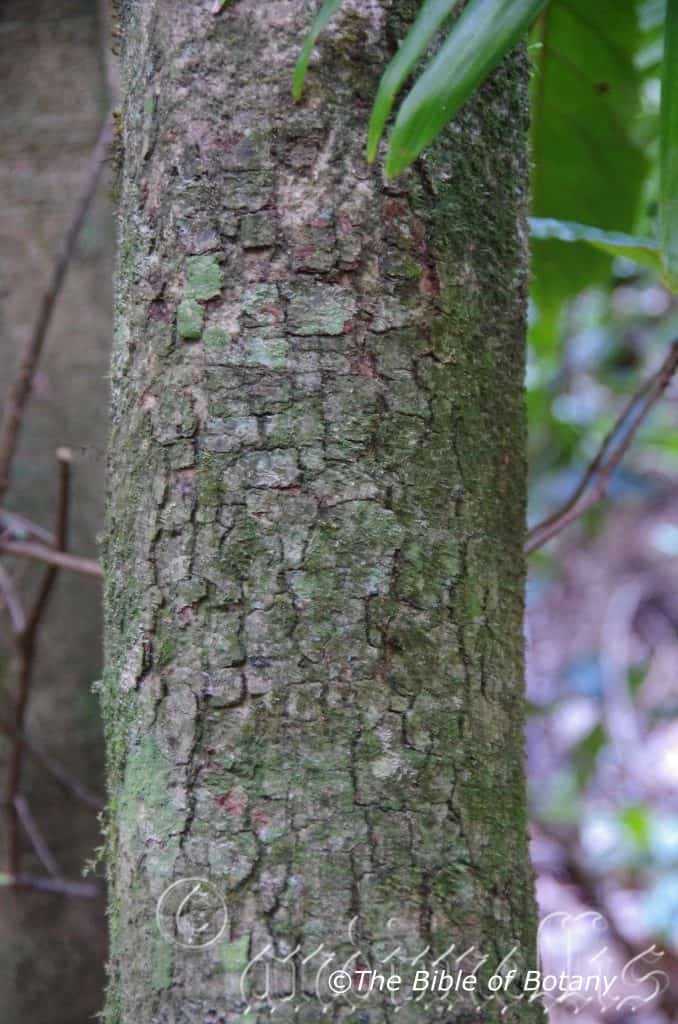
Border Ranges National Park NSW
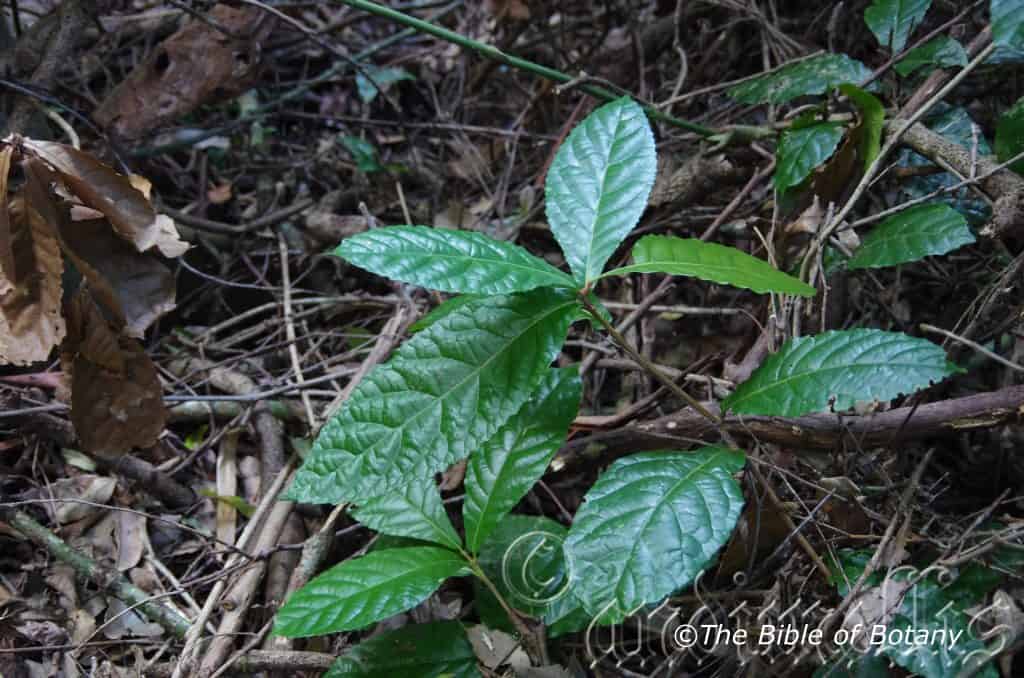
Border Ranges National Park NSW
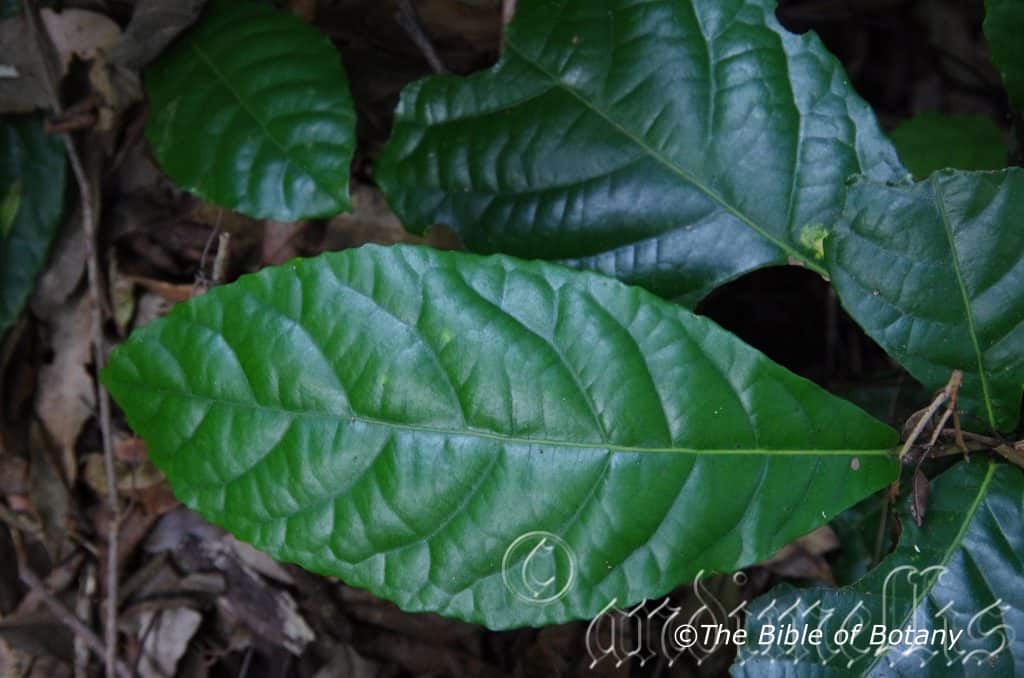
Border Ranges National Park NSW
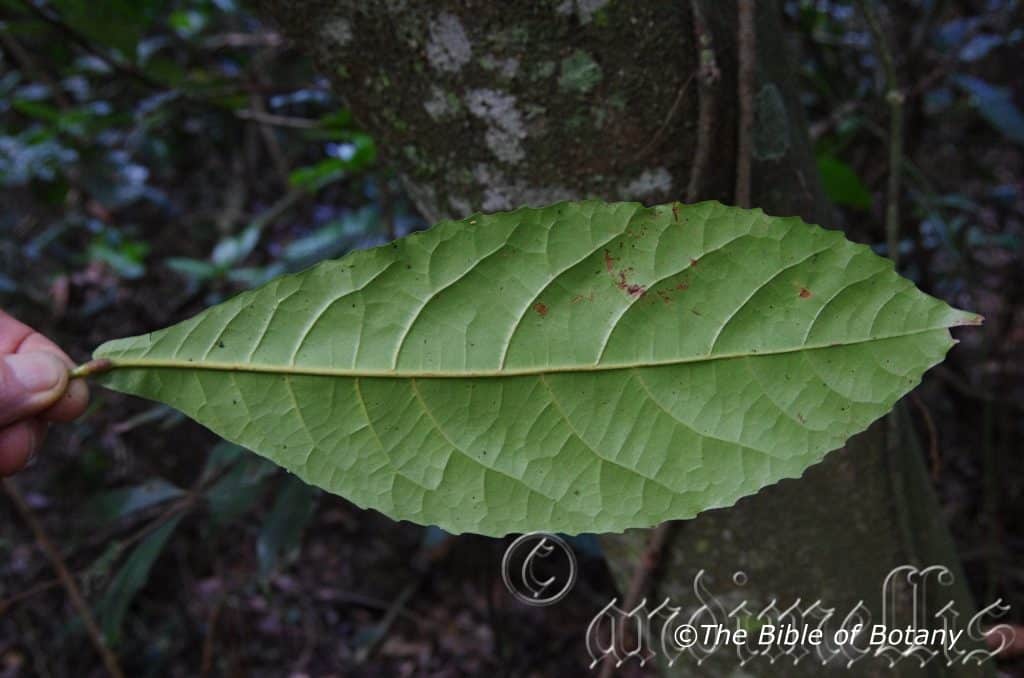
Border Ranges National Park NSW

Border Ranges National Park NSW
Sloanea australis
Classification:
Unranked: Eudicots
Unranked: Rosids
Order: Oxalidales
Family: Eleocarpaceae
Genus: Is named in honour of Sir Hans Sloan; 1660-1753, who was an English Physician and naturalist.
Specie: From Terra Australis, which is Latin for land of the south. It refers to plants, which were first discovered in the southern section of the country.
Sub specie: Sloanea australis subsp. australis. From Terra Australis, which is Latin for land of the south. It refers to plants, which were first discovered in the southern section of the country.
Sub specie: Sloanea australis subsp. parviflora. From Paûros, which is Ancient Greek or much later Parvum, which is late Latin for small, little or puny and Flōra, which is Latin for a flower or Flos, which is Roman for the goddess of spring and flowers. It refers flowers, which are much smaller than other species in the genus.
Common Name: Maidens Blush or Beetroot Leaf.
Distribution:
Sloanea australis subsp. australis is found south from Maryborough in south eastern Queensland to the Kangaroo Valley in southern coastal Northern New South Wales. It occurs on and east of the Great Dividing Range.
Sloanea australis subsp. parviflora is found south from Cairns to the Paluma National Park in north eastern Queensland.
https://avh.ala.org.au/occurrences/search?taxa=Sloanea+australis#tab_mapView
Habitat Aspect Climate:
Sloanea australis prefers light dappled shade to full sun. It grows in warm moist subtropical rainforests or cool, moist tropical Rainforests. The altitude ranges from 20 meters ASL to 1100 meters ASL.
The temperatures range from minus 3 degrees in August to 36 degrees in January.
The rainfalls range from lows of 900mm to 3000mm average per annum.
Soil Requirements:
Sloanea australis prefers better quality loams and light clays. The soils are usually derived from decomposed brown, black basalts or metamorphic rocks. The soils pH ranges from 4.5pH to 6pH. It does not tolerate waterlogged soils however periodic inundations may occur with plants growing in riparian zones. Non saline soils to slightly saline soils are tolerated.
Height & Spread:
Wild Plants: 25m to 30m by 8m to 12m.
Characteristics:
Sloanea australis grows as a tall tree with a straight or crooked, pale grey to mid grey, glabrous to slightly rough trunk. The bark is hard and often covered in lichens and mosses with coppice growth near the base even on very old trees. The trunk is also irregularly fluted and buttressed. The branches are pale grey and only becoming pale green near the apex where the newer leaf growth occurs. The branchlets are glabrous.
The alternate to near opposite, obovate, leaves of Sloanea australis subsp. australis measure 70mm to 300mm in length by 30mm to 100mm in width. The bases are tapering before ending in a small cordate junction with the petiole while the apex is broad obtuse with a small acute tip. The discolourous laminas are deep sea-green, semi glossy and glabrous on the upper lamina while the lower lamina is mid olive green and dull. The leaf margins are toothed, flat and decurve slightly or strongly near the apex. The mid vein and main laterals are prominent on the upper laminas and distinctly visible from the lower lamina. Domatia are absent. The stipules measure 5mm to 7mm in length. The petioles are short and thick and measures 5mm to 30mm in length.
Sloanea australis subsp. parviflora measure 120mm to 200mm in length by 40mm to 100mm in width. Domatia appear on the leaves as rusty tufts of hirtellous hairs. The stipules measure 5mm to 6mm in length.
Inflorescences of Sloanea australis are born in loose cymes from the upper leaf axils or terminal. The lime green peduncles, rachises and pedicels are glabrous. The peduncles measure 15mm to 20mm while the rachises measure 45mm to 70mm in length and the pedicels measure 15mm to 22mm in length.
The 4 or at times 5 creamy yellow sepals of Sloanea australis subsp. australis are oblong to narrow obovate, divaricate and glabrous. The sepals measure 8mm to 11mm in length. The creamy yellow petals are oblong to narrow obovate, divaricate and glabrous. The petals measure 9mm to 15mm in length by 5mm to 7mm in width.
The 4 or at times 5 creamy pink sepals of Sloanea australis subsp. parviflora are oblong to narrow obovate, divaricate and glabrous. The sepals measure 6mm to 9mm in length. The creamy yellow petals are oblong to narrow obovate, divaricate and glabrous. The petals measure 6mm to 12mm in length by 3mm to 5.5mm in width.
The inserted 36 to 50 filaments are free for their entire length and measure 0.6mm to 1mm in length. The filaments are white and narrower than the anthers at the base while the anthers are creamy green and densely covered in short cream hirtellous hairs. The anthers measure 1.5mm to 2mm in length.
The pale green style and stigma are glabrous while the ovary is green and densely covered in short white pilose or canescent hairs. The pistil measures 2mm to 3mm in length while the ovary also measures 2mm to 3mm in length. Sloanea australis’s flowers appear from late September through to early February.
The fruits of Sloanea australis subsp. australis are globose to wide obovoidal capsules. The capsules are covered in fawn stiff hirtellous hairs or soft spines which measure 1.8mm to 2.2mm in length. The capsules measure 10mm to 12mm in length by 9mm to 11mm in diameter not including the hairs. The green capsules turn pinkish fawn to pale creamy orange externally and pale creamy fawn internally when ripe and split widely into 3 to 5 valves. The 1 to 2 dull fawn seeds are oblong and measure 7.5mm to 9mm by 3mm to 4.5mm in diameter. The scarlet red aril partially surrounds the seed.
The fruits of Sloanea australis subsp. parviflora are globose to wide obovoidal capsules. The capsules are covered in pinkish fawn stiff hirtellous hairs or soft spines which measure 1.8mm to 2.2mm in length. The capsules measure 15mm to 17mm in length by 15mm to 17mm in diameter not including the hairs. The green capsules turn pinkish fawn to pale creamy orange externally and pale creamy fawn internally when ripe and split widely into 3 to 4 valves. The 1 to 2 dull fawn seeds are oblong and measure 9mm to 10mm by 3mm to 5mm in diameter. The scarlet red aril almost completely surrounds the seed.
Wildlife:
Sloanea australis support native bees along the coast when in flower.
Cultivation:
Sloanea australis is a magnificent medium tree that should be grown in association with other rainforest specie. It is ideal at the edge of a rain forest or deep in the center of the rainforest. In cultivation they will grow from 16 meters to 20 meters in height by 8 meters to 12 meters in diameter when grown in the open or taller and narrower if grown closer together as a rainforest tree.
Sloanea australis also make great park trees offering quick growth, and good shade provided the soil is friable and of good quality. The trunks will commence to form a small buttress after 12 years.
They grow exceptionally well on lighter soils where deep leaf litter keeps the soil cool and moisture at an even level. If these requirements are met they can cope with temperatures as low as minus 3 degrees and up to 36 degrees. It is moderately drought resistant once established in their climatic zone.
Add to the above, if it is given an adequate supply of water and a little native fertilizer on a regular basis the plants respond with good growth from an early stage.
They often reach their full potential in just 12 to 15 years and flower from the seventh or eighth year from seed.
Propagation:
Seeds: The seeds of Sloanea australis can be removed easily from the fruits.
Sow freshly treated seeds directly into a seed raising mix, keeping them moist not wet. Do not over water as the seeds will rot off before germination takes place. Seeds also have a tendency to damp off even after germination. Place the trays in a cool shaded area with 50mm shade cloth in the bush house. When the seedlings are 40 to 50 mm tall, prick them out and plant them into 50mm native tubes using a good organic mix.
As the seedlings roots reach the bottom of the tubes plant them out into their permanent position. Do not delay.
Fertilize using seaweed, fish emulsion or organic chicken pellets soaked in water on an alternate basis. Fertilize every two months until the plants are established then twice annually in early September and March to maintain better colour, health, vitality and flowering.
Further Comments from Readers:
“Hi reader, it seems you use The Bible of Botany a lot. That’s great as we have great pleasure in bringing it to you! It’s a little awkward for us to ask, but our first aim is to purchase land approximately 1,600 hectares to link several parcels of N.P. into one at The Pinnacles NSW Australia, but we need your help. We’re not salespeople. We’re amateur botanists who have dedicated over 30 years to saving the environment in a practical way. We depend on donations to reach our goal. If you donate just $5, the price of your coffee this Sunday, We can help to keep the planet alive in a real way and continue to bring you regular updates and features on Australian plants all in one Botanical Bible. Any support is greatly appreciated. Thank you.”
In the spirit of reconciliation we acknowledge the Bundjalung, Gumbaynggirr and Yaegl and all aboriginal nations throughout Australia and their connections to land, sea and community. We pay our respect to their Elders past, present and future for the pleasures we have gained.
Sloanea woollsii
Classification:
Unranked: Eudicots
Unranked: Rosids
Order: Oxalidales
Family: Eleocarpaceae
Genus: Is named in honour of Sir Hans Sloan; 1660-1753, who was an English Physician and naturalist.
Specie: Is named in honour of the Reverend William Wools; 1814-1893, who was a clergyman and botanist.
Sub specie:
Common Name: Yellow Carabean.
Distribution:
Sloanea woollsii is found south from west of Innisfail, near Mackay and the Callide River in eastern Queensland to the Kangaroo Valley in central coastal New South Wales. It is found on and east of the Great Dividing Range
https://avh.ala.org.au/occurrences/search?taxa=Sloanea+woollsii#tab_mapView
Habitat Aspect Climate:
Sloanea woollsii prefers light dappled shade to full sun. It grows in warm moist subtropical rainforests, cool, moist tropical Rainforests particularly in riparian zones or river flats. The altitude ranges from 2 meters ASL to 900 meters ASL.
The temperatures range from minus 3 degrees in August to 36 degrees in January.
The rainfalls range from lows of 900mm to 2800mm average per annum.
Soil Requirements:
Sloanea woollsii prefers better quality sandy loams to light clays. The soils are usually derived from decomposed brown or black basalts or better quality metamorphic rocks. The soils pH ranges pH from 4.5pH to 6pH. It does not tolerate waterlogged soils however periodic inundations may occur with plants growing in riparian zones. Non saline soils to slightly saline soils are tolerated.
Height & Spread:
Wild Plants: 25m to 30m by 8m to 12m.
Characteristics:
Sloanea woollsii grows as a tall tree with straight, pale grey brown bark and massive buttress from 2 meters to 5 meters in height on very old trees. The branches are pale grey brown and become browner as they approach the branchlets. The new growth is glossy lime green and glabrous.
The alternate, elliptical to lanceolate leaves of Sloanea woollsii measure 70mm to 190mm in length by 20mm to 60mm in width but often much larger on juvenile trees. The bases are cuneate and becomes rounded at the junction with the petiole while the apex is broadly acuminate. The concolourous laminas are deep sea-green, semi glossy and glabrous when mature and brilliant glossy lime green as they emerge. The leaf margins are bluntly toothed, flat and decurve near the apex. The upper lamina is slightly convex between the lateral veins. The mid vein and main laterals are prominent on the lower laminas and distinctly visible from the upper laminas. Domatia are present on the lower lamina beneath tufted hirsute hairs. The petioles measures 10mm to 45mm in length.
Inflorescences of Sloanea woollsii are born in loose cymes from the upper leaf axils or terminal. The lime green peduncles, rachises and pedicels are glabrous. There are 6 to 20 individual flowers to a cyme. The peduncles measure 18mm to 28mm while the rachises measure 28mm to 50mm in length and the pedicels measure 20mm to 30mm in length. The 4 white, elliptical sepals are divaricate and glabrous. The sepals measure 10mm to 16mm in length by 8mm to 12mm in width. The petals are absent in this species.
The inserted 20 to 30 filaments are free for their entire length and measure 0.6mm to 1mm in length. The filaments are cream and narrower than the anthers at the base while the anthers are creamy green to creamy yellow and densely covered in short cream hirtellous hairs. The anthers measure 2mm to 3mm in length.
The yellow style and stigma are glabrous while the ovary is green and densely covered in short white pilose or canescent hairs. The pistil measures 2mm to 3mm in length while the ovary also measures 3mm to 4mm in length. Sloanea woollsii’s flowers appear from early September through to late November.
The fruits of Sloanea woollsii are long obovoidal capsules. The capsules are covered in greenish rigid hirtellous hairs or soft spines which measure 2.5mm to 4.5mm in length. The capsules measure 10mm to 20mm in length by 7mm to 10mm in diameter not including the hairs. The green capsules turn mid yellow green externally and white internally when ripe. The capsules split widely into 2 valves. The single black seed is oblong and measure 9mm to 11mm by 5mm to 6.5mm in diameter. The scarlet red aril almost completely surrounds the seed. The fruit ripen from February to July.
Wildlife:
Sloanea woollsii support native bees along the coast.
Cultivation:
Sloanea woollsii is a magnificent medium tree that should be grown in association with other rainforest specie. It is a large tree with large impressive buttresses when mature. It is ideal at the edge of a rain forest or deep in the center of the rainforest. In cultivation they will grow from 16 meters to 20 meters in height by 14 meters to 18 meters in diameter when grown in the open or taller and narrower if grown closer together as a rainforest tree.
Sloanea woollsii also make great park trees offering quick growth, and good shade provided the soil is friable and of good quality. The trunks will commence to form a small buttress after 12 to 15 years.
They grow exceptionally well on lighter soils where deep leaf litter keeps the soil cool and moisture at an even level. If these requirements are met they can cope with temperatures as low as minus 3 degrees and up to 36 degrees. It is moderately drought resistant once established in their climatic zone.
Add to the above, if it is given an adequate supply of water and a little native fertilizer on a regular basis the plants respond with good growth from an early stage. It is prolific flowers and set prolific quantities of seed.
They often reach their full potential in just 12 to 15 years and flower from the seventh or eighth year from seed.
Propagation:
Seeds: Seeds of Sloanea woollsii can be removed easily from the fruits.
Sow freshly treated seeds directly into a seed raising mix, keeping them moist not wet. Do not over water as the seeds will rot off before germination takes place. Seeds also have a tendency to damp off even after germination. Place the trays in a cool shaded area with 50mm shade cloth in the bush house. When the seedlings are 40 to 50 mm tall, prick them out and plant them into 50mm native tubes using a good organic mix.
Fertilize using Seaweed, fish emulsion or organic chicken pellets soaked in water and apply the liquid on an alternate basis. Fertilize every two months.
As the seedlings roots reach the bottom of the tubes plant them out into their permanent position. Do not delay.
Fertilize using seaweed, fish emulsion or organic chicken pellets soaked in water on an alternate basis. Fertilize every two months until the plants are established then twice annually in early September and March to maintain better colour, health, vitality and flowering.
Further Comments from Readers:
“Hi reader, it seems you use The Bible of Botany a lot. That’s great as we have great pleasure in bringing it to you! It’s a little awkward for us to ask, but our first aim is to purchase land approximately 1,600 hectares to link several parcels of N.P. into one at The Pinnacles NSW Australia, but we need your help. We’re not salespeople. We’re amateur botanists who have dedicated over 30 years to saving the environment in a practical way. We depend on donations to reach our goal. If you donate just $5, the price of your coffee this Sunday, We can help to keep the planet alive in a real way and continue to bring you regular updates and features on Australian plants all in one Botanical Bible. Any support is greatly appreciated. Thank you.”
In the spirit of reconciliation we acknowledge the Bundjalung, Gumbaynggirr and Yaegl and all aboriginal nations throughout Australia and their connections to land, sea and community. We pay our respect to their Elders past, present and future for the pleasures we have gained.
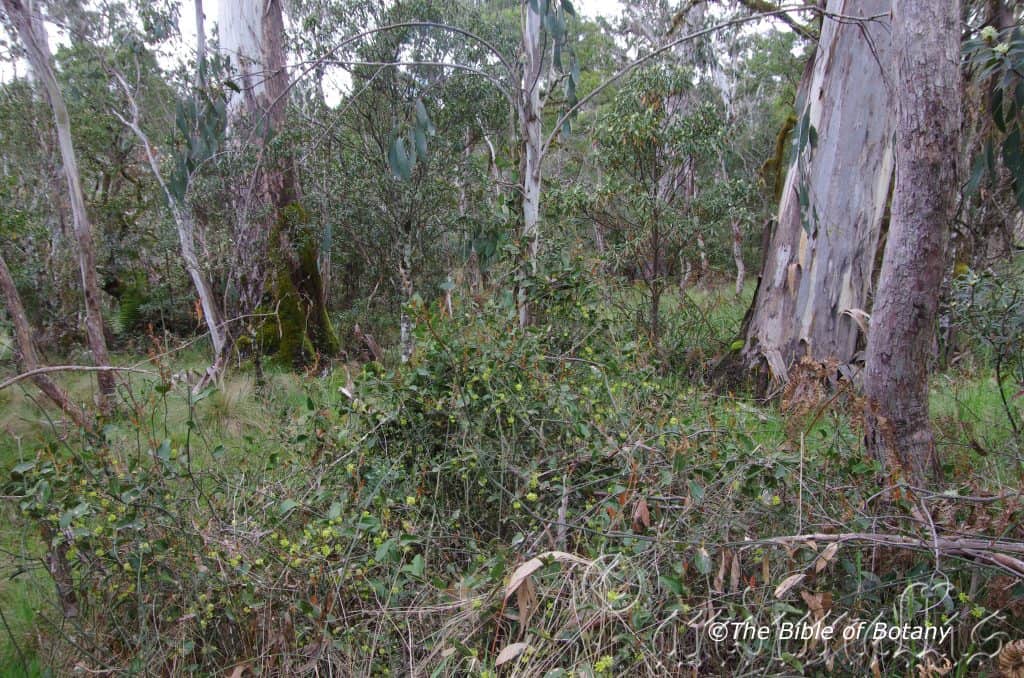
Point Lookout National Park Ebor NSW
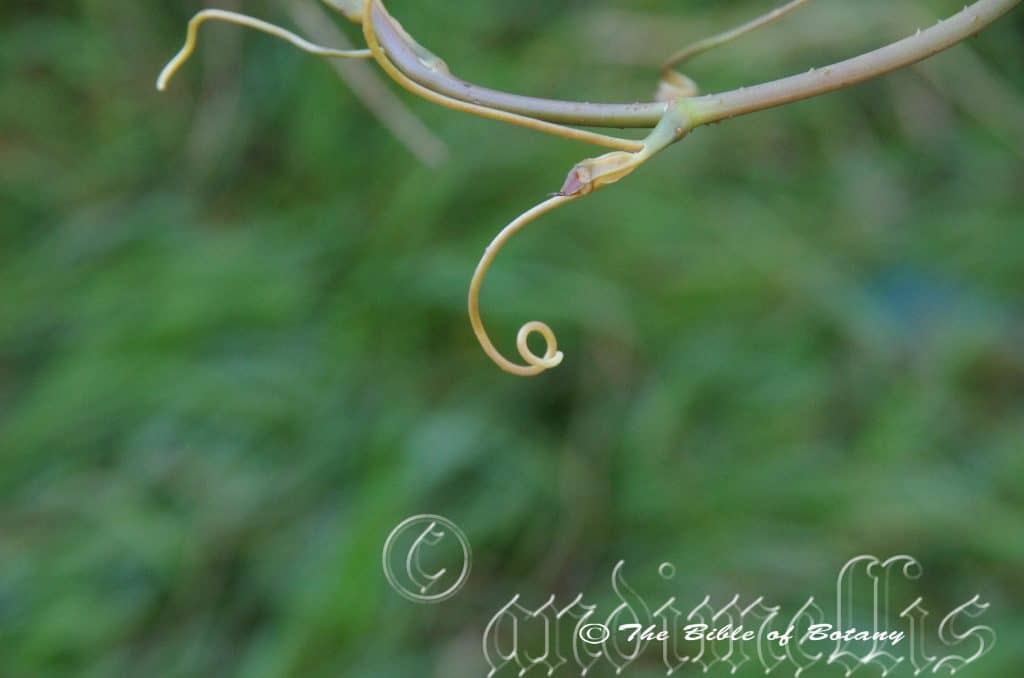
Moonee Beach Headland NSW
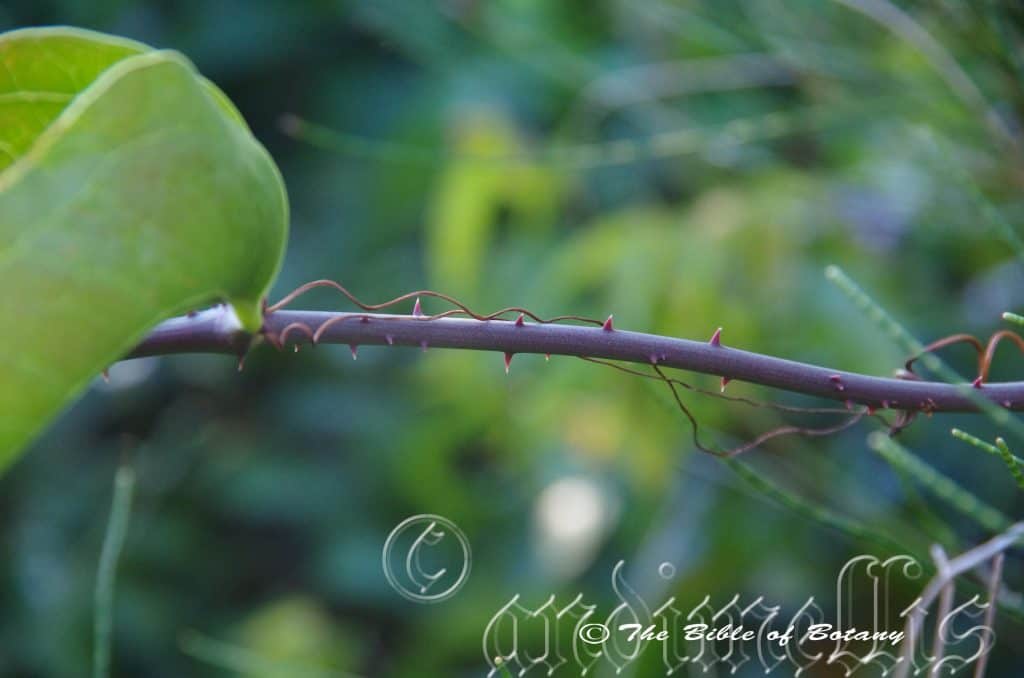
Moonee Beach Headland NSW
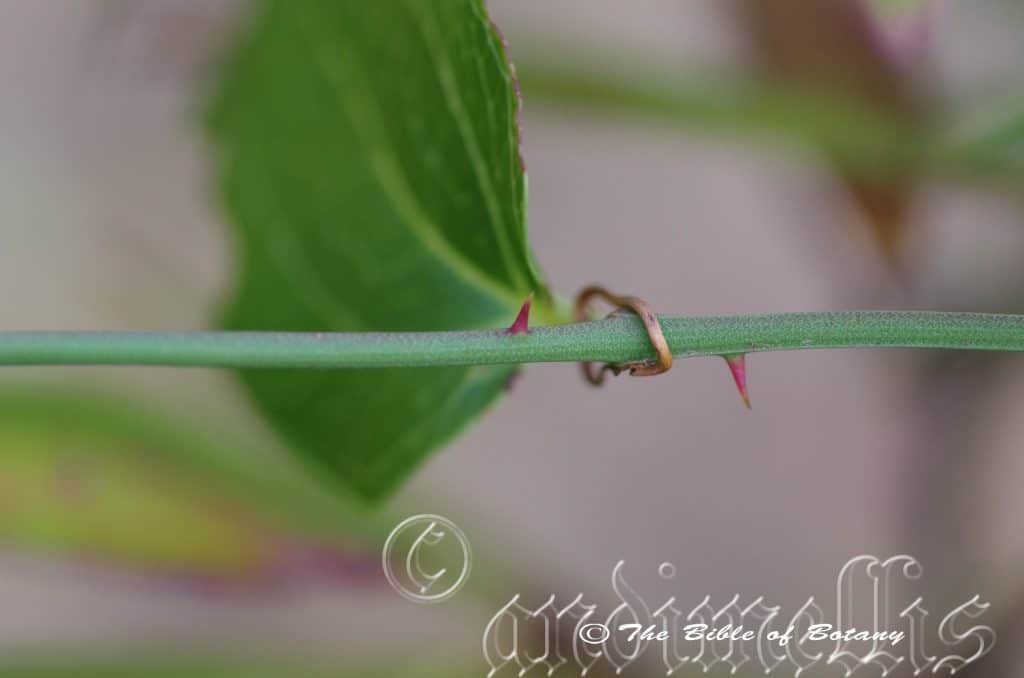
Point Lookout National Park Ebor NSW
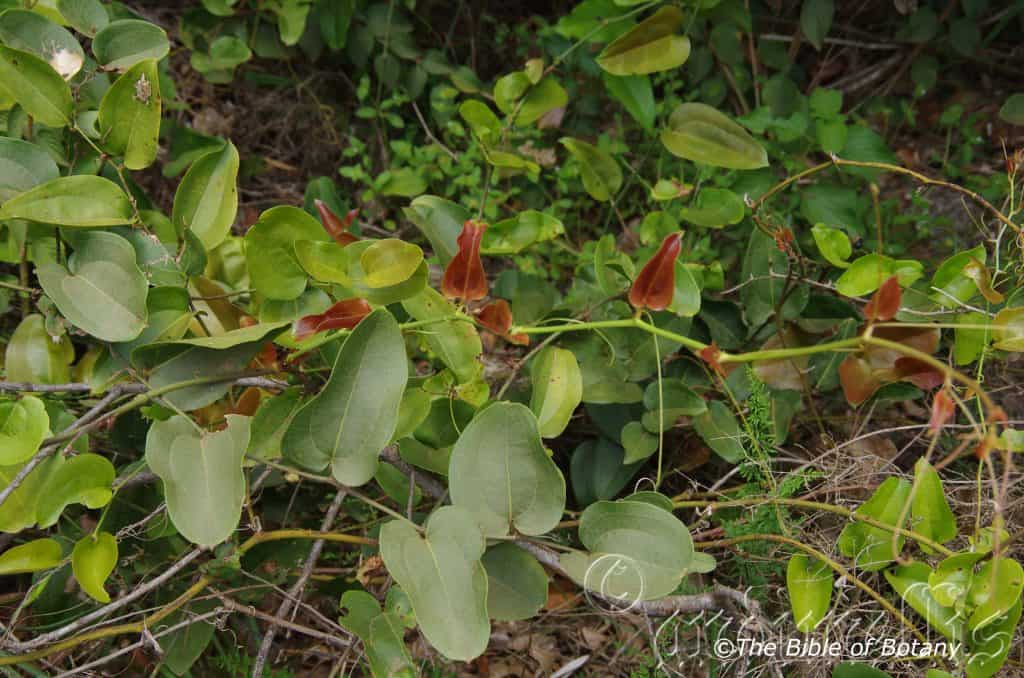
Boorkoom Yuraigir National Park NSW
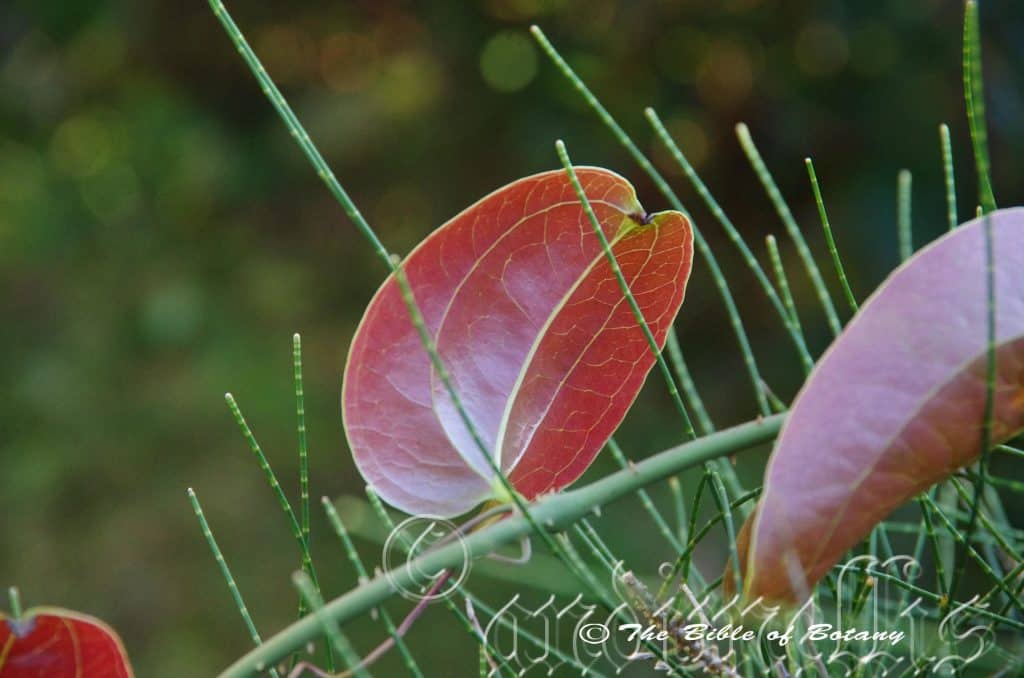
Moonee Beach Headland NSW
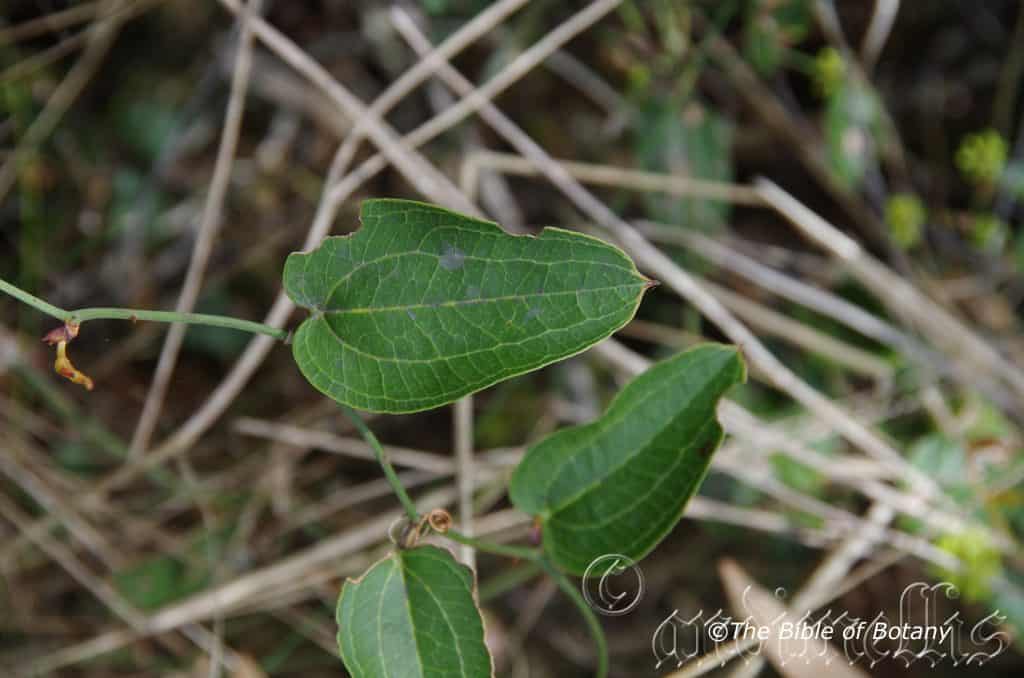
Point Lookout National Park Ebor NSW
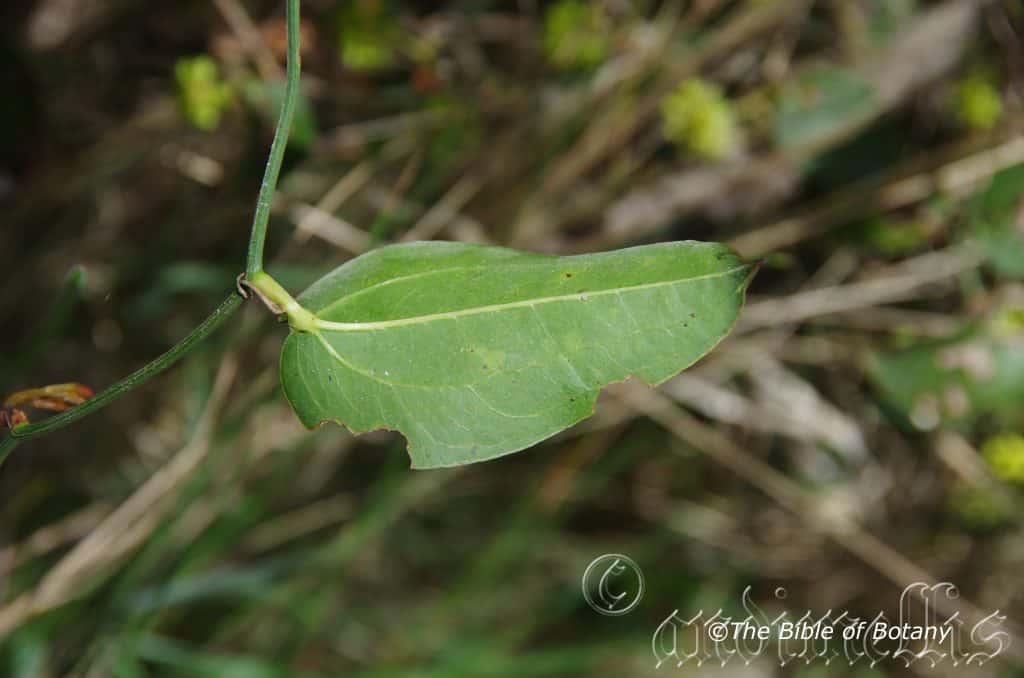
Point Lookout National Park Ebor NSW
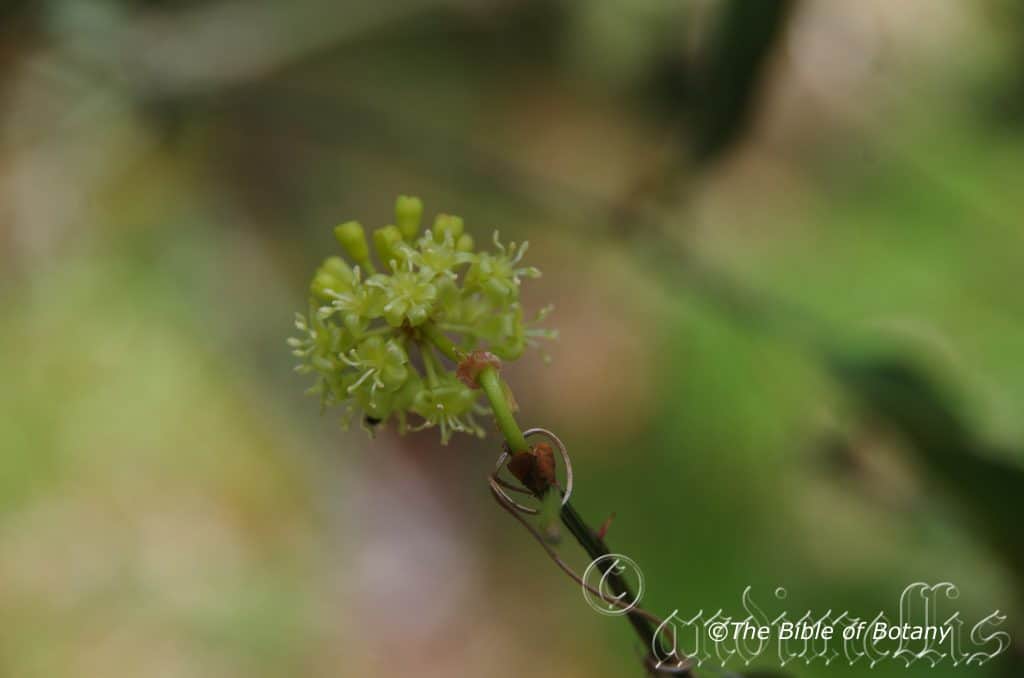
Point Lookout National Park Ebor NSW
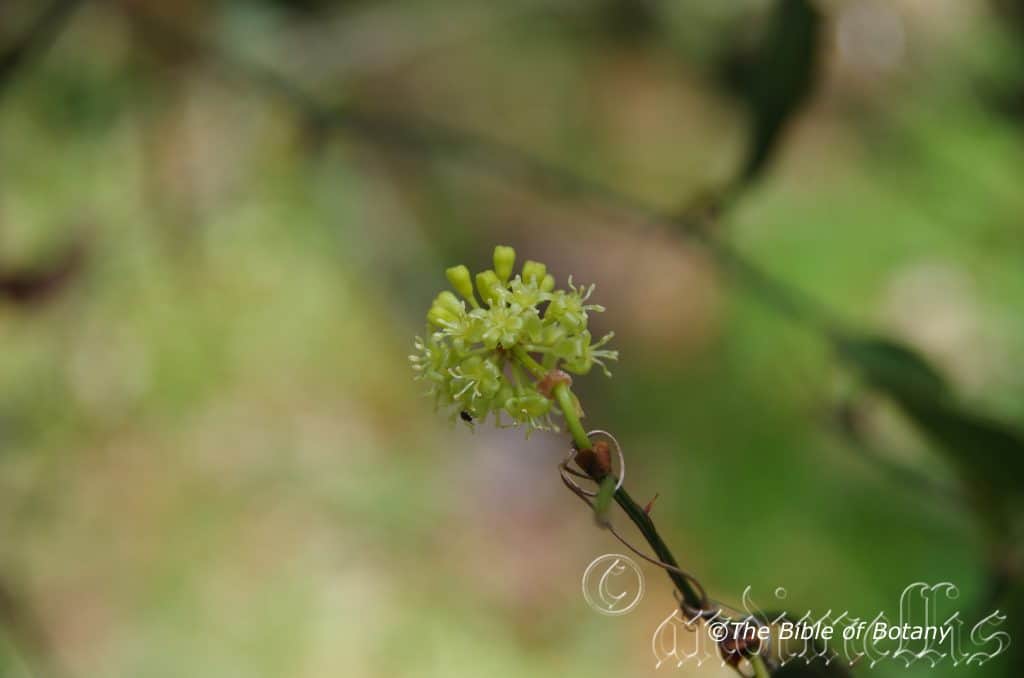
Point Lookout National Park Ebor NSW
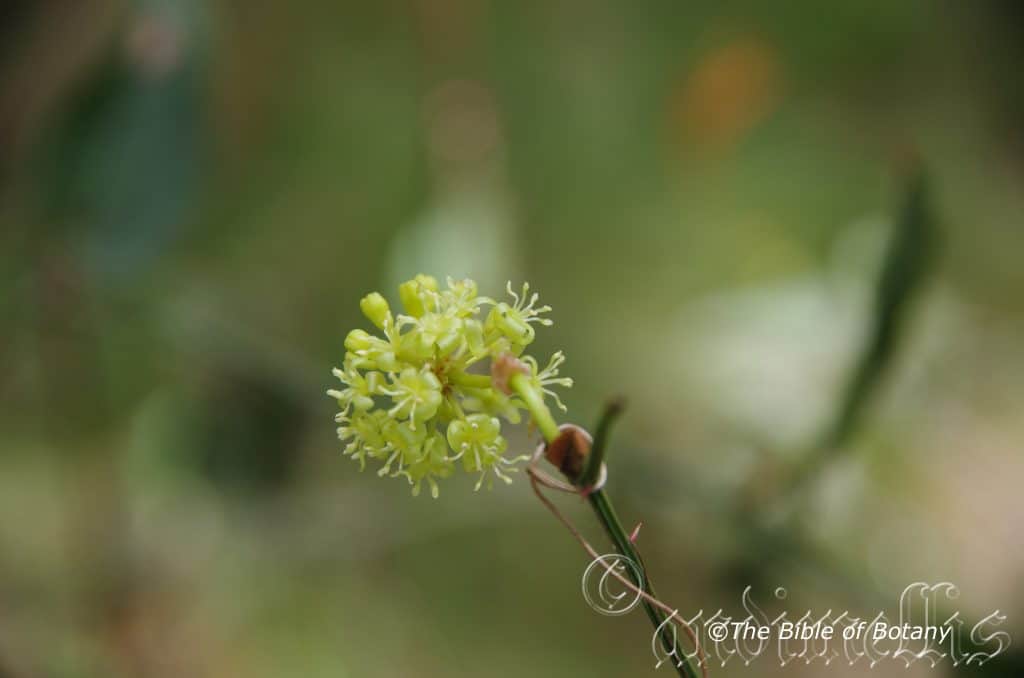
Point Lookout National Park Ebor NSW
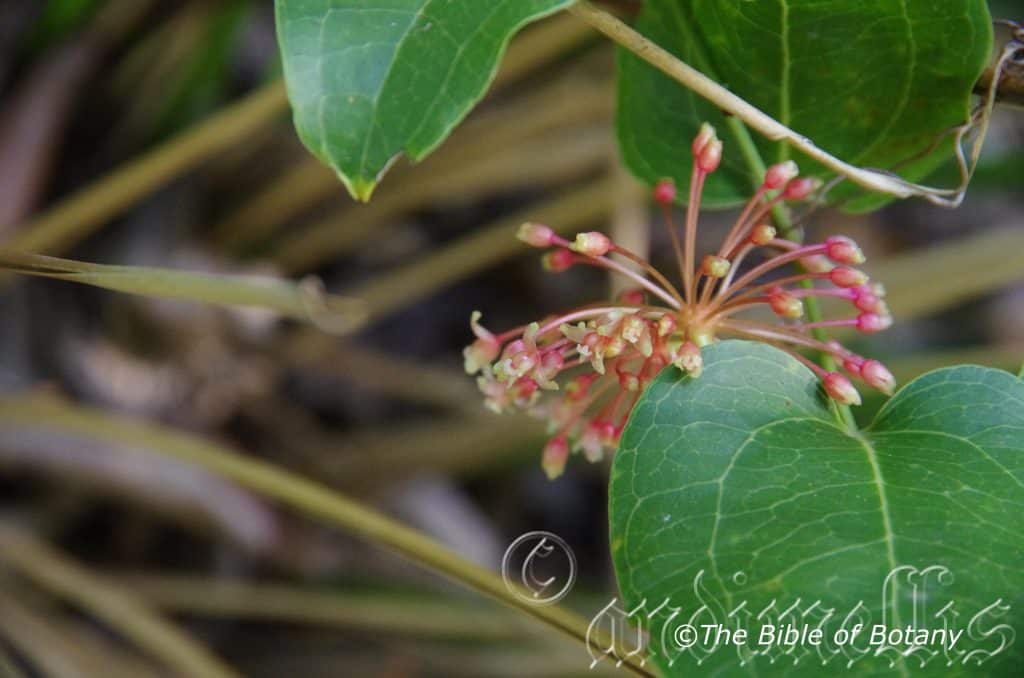
Mount Cootha Botanic Gardens Qld.
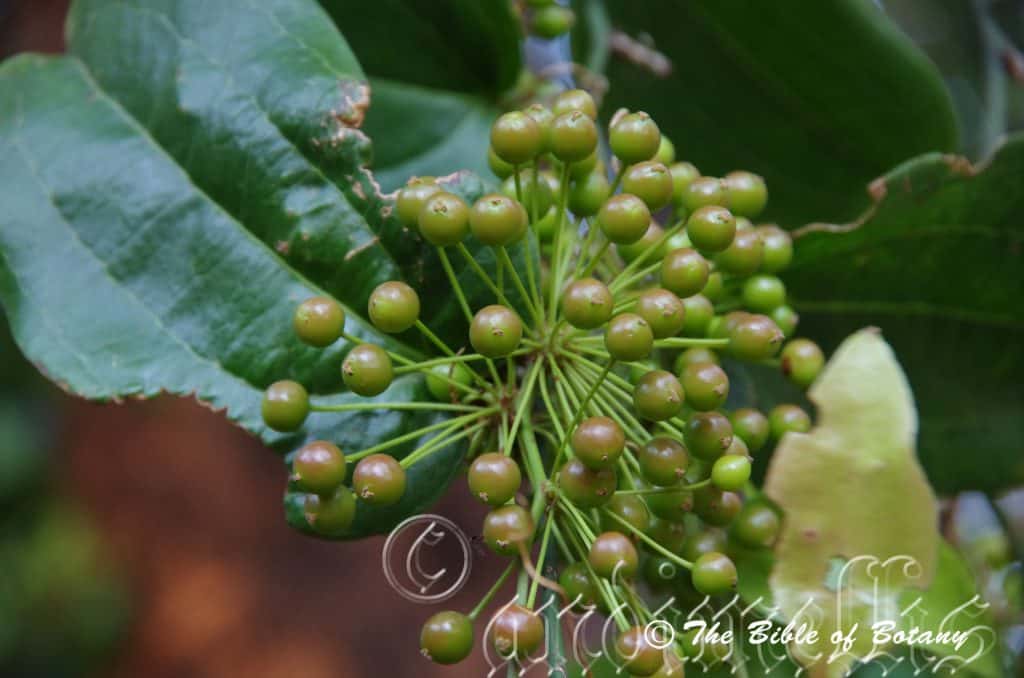
North Brother National Park NSW
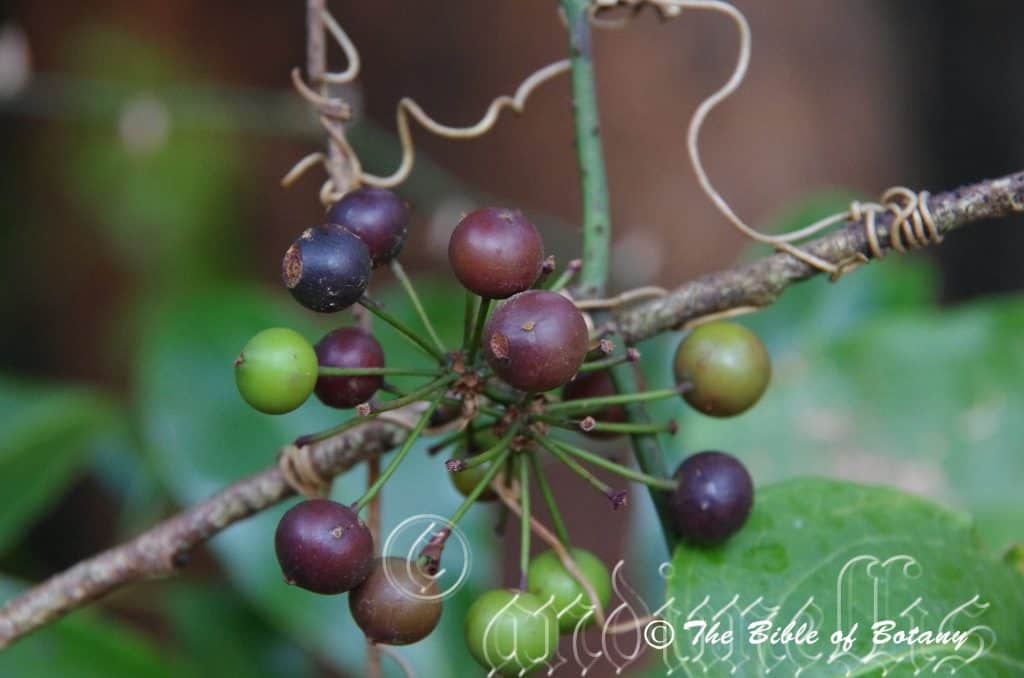
North Brother National Park NSW
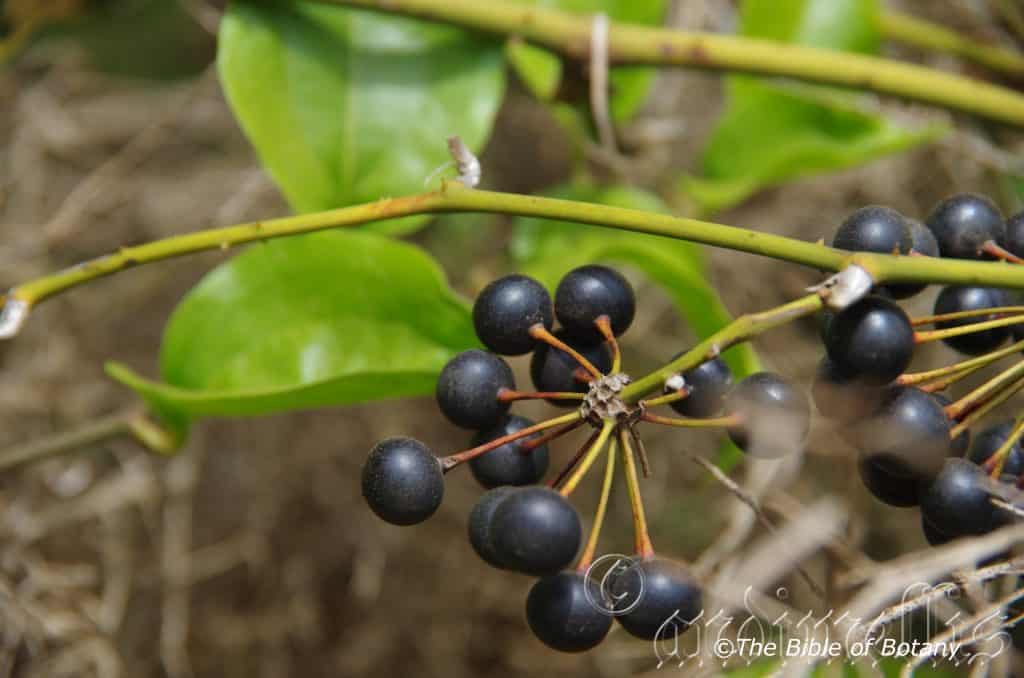
Boorkoom Yuraigir National Park NSW
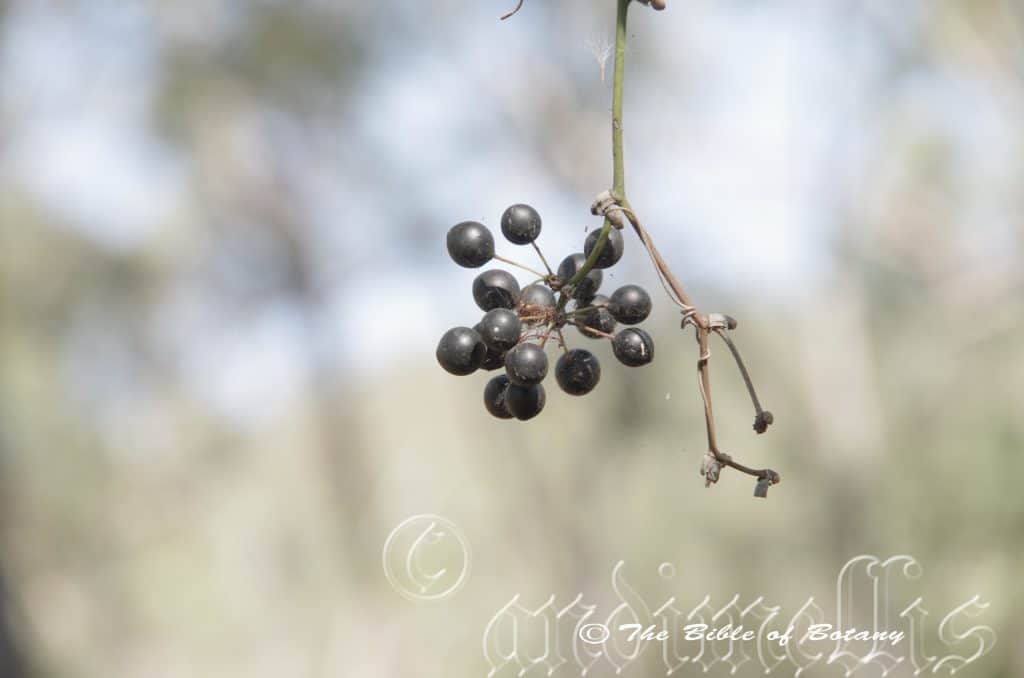
Crystal Creek Paluma Range National Park Qld.
Smilax australis
Classification:
Unranked: Monocots
Order: Liliales
Family: Smilacaceae
Genus: From Smilax, which is a Greek for a nymph. It refers to the Nymph Smilax, who was slighted by her lover Krokos; who was unhappy with her, so he transformed her into a prickly bramble that no one would dare touch.
Specie: From Terra Australis, which is Latin for land of the south. It refers to plants, which were first discovered from the land down under.
Sub specie:
Common Name: Wait a While Vine or Barbed Wire Vine or Lawyer Vine.
In the Gumbaynggirr Aboriginal language it is known as Jugiil.
Distribution:
Smilax australis is found east and north of a line from the Kimberley Coast and Range to the Ord River in north western, Western Australia to Groote Eyelandt and the Roper River in the north of the Northern Territory.
In the east it is found south from the Torres Strait Islands and the tip of Cape York Peninsula to Orbost in northern coastal Victoria including most of the off shore Islands. It is mainly found on and east of the Great Dividing Range to the coast.
https://avh.ala.org.au/occurrences/search?taxa=Smilax+australis#tab_mapView
Habitat Aspect Climate:
Smilax australis prefers light dappled shade to full sun. It grows in warm moist subtropical or Tropical Rainforests. The altitude ranges from 5 meters ASL to 1300 meters ASL.
The temperatures range from minus 3 degrees in August to 36 degrees in January.
The rainfalls range from lows of 780mm to 3200mm average per annum.
Soil Requirements:
Smilax australis prefers better quality loams and light clays derived from decomposed brown or black basalts or metamorphic rocks. The soils pH ranges from 4.5pH to 6pH. It does not tolerate waterlogged soils however periodic inundations may occur with plants growing in riparian zones. Non saline soils to moderately saline soils are tolerated.
Height & Spread:
Wild Plants: 1m to 5m by 1m to 3m.
Characteristics:
Smilax australis grows as a small twinning creeper with pale grey-green, to deep sea-green stems. The young stems are pale deep sea green gradually turning to a deep green near the apex where the newer leaf growth occurs. The young stems are glabrous. All the stems are covered with small prickles though they may be soft on the younger stems. The stems can reach 10 meters under ideal conditions but are usually 4 meters to 6 meters in length.
The alternate, ovate, broad elliptical to broad lanceolate leaves of Smilax australis measure 50mm to 150mm in length by 30mm to 90mm in width. The bases are broad cuneate to rounded or slightly cordate while the apex is narrow acute, broad acute, emarginated, caudate or rarely acuminate. The concolourous laminas are deep sea-green, dull to semi glossy and glabrous while the new growth varies from being pale green t through to being deep maroon reds. The leaf margins are entire, flat or slightly undulating to recurve to the margins and decurving near the apex, thin or leathery. The mid vein and 2 parallel lateral veins are prominent on both the lower lamina and distinctly visible on the upper lamina. The stipules are attached to the base of the petioles and measure 7mm to 10mm in length. These often grow out to form tendrils to 200mm in length. The petiole measures 5mm to 15mm in length.
The dioecious inflorescences of Smilax australis are born on simple or compound umbels from the leaf axils. The deep sea-green, red or maroon pedicels and peduncules are glabrous. The peduncle is swollen at the junction with the pedicels. The peduncles measure 15mm to 25mm in length while the pedicels measure 8mm to 13mm in length. The 6 very pale creamy green or very pale pink linear to narrow oblong tepals are strongly recurve, cuspidate near the apex, glabrous and measure 3mm to 4mm in length by 1.2mm to 1.6mm in width.
The male flowers 6 flagella like filaments are free for their entire length and measure 5mm to 6.5mm in length. The filaments are very pale green and support the basifixed white anthers. The anthers measure 1.5mm to 2mm in length.
The white style and stigma are glabrous while the green ovary measures 3mm to 4mm in diameter. The style measures less than 0.3mm in length while the trilobed stigma measures 1.2mm to 1.4mm in length. Smilax australis’s flowers appear throughout the year but mainly from late September through to late February.
The fruits of Smilax australis are globose berries. The berries are glabrous and measure 5mm to 8mm in length by 5mm to 8mm in diameter. The green berries turn deep purple black externally and pale creamy green to creamy yellow internally when ripe. The calyx lobes are not persistent on the ripe fruit. The 1 or 2 glossy, ovoidal, black seeds measure 1mm to 2mm in diameter.
Wildlife:
Smilax australis support native bees, flies and small butterflies when in flower. The fruits are eaten by the Satin Bower Bird, Regent Bower bird, Lewin’s Honey eater and Silver eyes. Most fruitigrove birds would probably consume the fruits.
The fruits have a strong, sweet flavour which is difficult to describe. It is not pleasant but at the same time not bitter or sour.
Cultivation:
Smilax australis is a magnificent medium creeper that should be grown in association with other rainforest specie. It is ideal at the edge of a rain forest or deep in the center of the rainforest garden where there is some light penetrating the canopy. In cultivation they will grow from 2 meters to 2.5 meters in height by 3 meters to 4 meters wide when grown in the open on a trellis.
They grow exceptionally well on lighter soils where deep leaf litter keeps the soil cool and moisture at an even level. If these requirements are met they can cope with temperatures as low as minus 3 degrees and up to 36 degrees. It is moderately drought resistant once established in their climatic zone.
Add to the above, if it is given an adequate supply of water and a little native fertilizer on a regular basis the plants should respond with good flowering and fruit over a long period.
Propagation:
Seeds: The seeds of Smilax australis can be removed easily from the berries.
Sow fresh seeds directly into a seed raising mix, keeping them moist not wet. Do not over water as the seeds will rot off before germination takes place. Place the trays in a cool shaded area with 50mm shade cloth in the bush house. When the seedlings are 20 to 25 mm tall, prick them out and plant them into 50mm native tubes using a good organic mix.
As the seedlings roots reach the bottom of the tubes plant them out into their permanent position. Do not delay.
Fertilize using seaweed, fish emulsion or organic chicken pellets soaked in water on an alternate basis. Fertilize every two months until the plants are established then twice annually in early September and March to maintain better colour, health, vitality and flowering.
Further Comments from Readers:
“Hi reader, it seems you use The Bible of Botany a lot. That’s great as we have great pleasure in bringing it to you! It’s a little awkward for us to ask, but our first aim is to purchase land approximately 1,600 hectares to link several parcels of N.P. into one at The Pinnacles NSW Australia, but we need your help. We’re not salespeople. We’re amateur botanists who have dedicated over 30 years to saving the environment in a practical way. We depend on donations to reach our goal. If you donate just $5, the price of your coffee this Sunday, We can help to keep the planet alive in a real way and continue to bring you regular updates and features on Australian plants all in one Botanical Bible. Any support is greatly appreciated. Thank you.”
In the spirit of reconciliation we acknowledge the Bundjalung, Gumbaynggirr and Yaegl and all aboriginal nations throughout Australia and their connections to land, sea and community. We pay our respect to their Elders past, present and future for the pleasures we have gained.
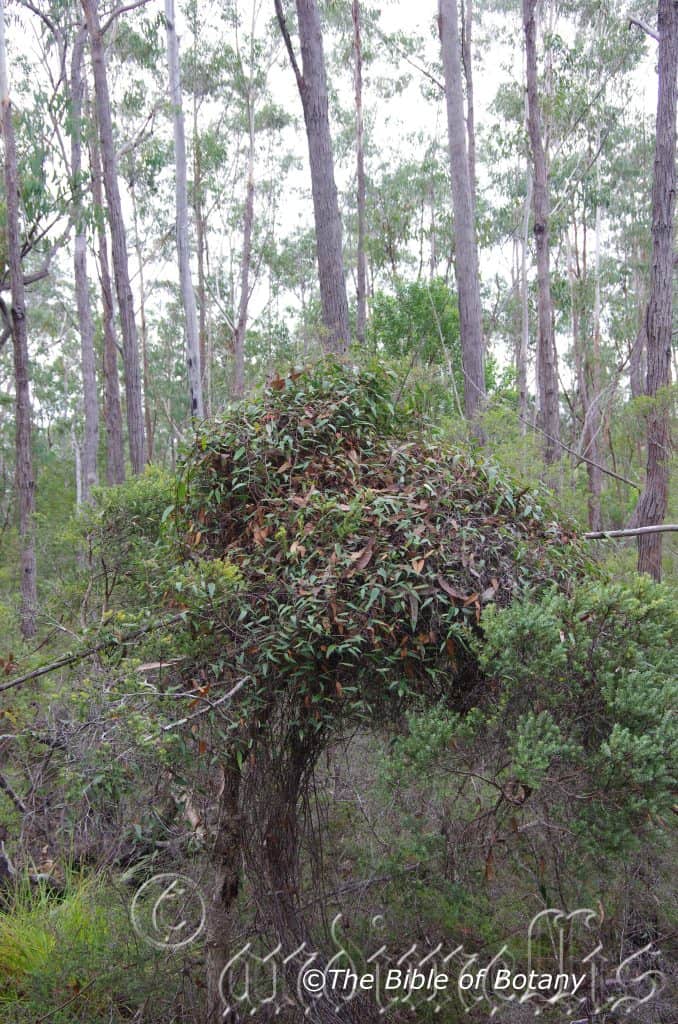
Author’s Garden The Pinnacles NSW
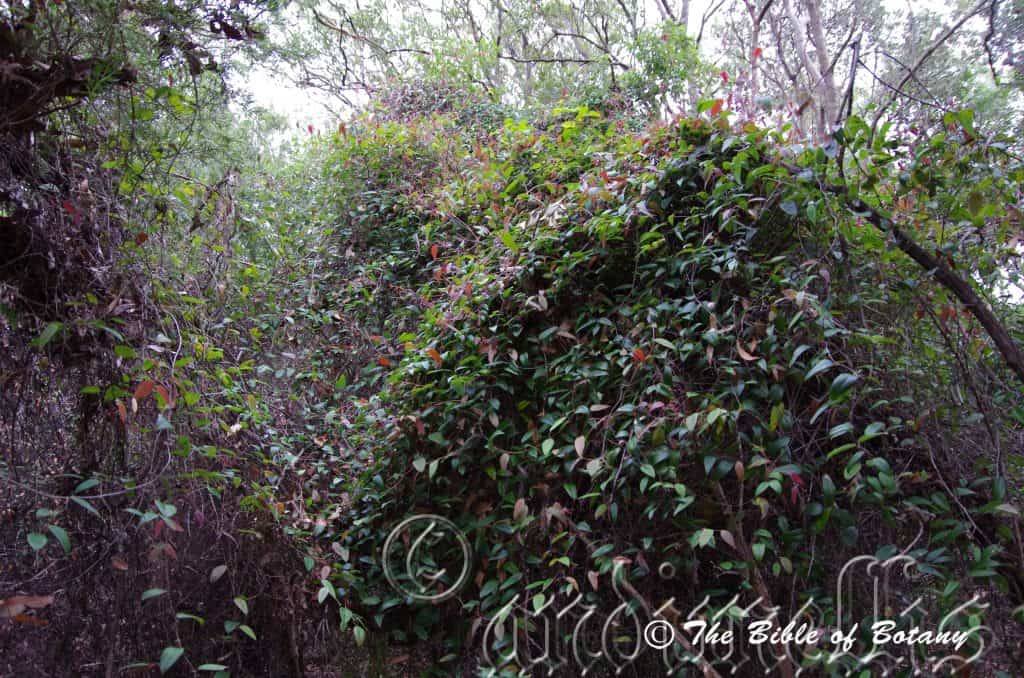
Innes Lake National Park NSW
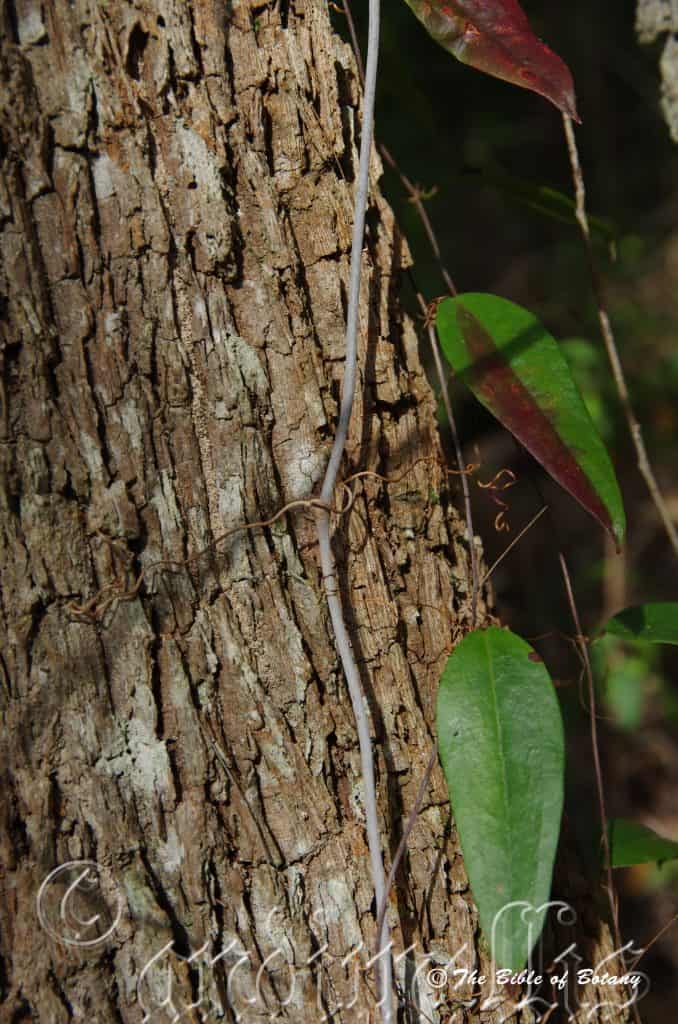
Kendall NSW
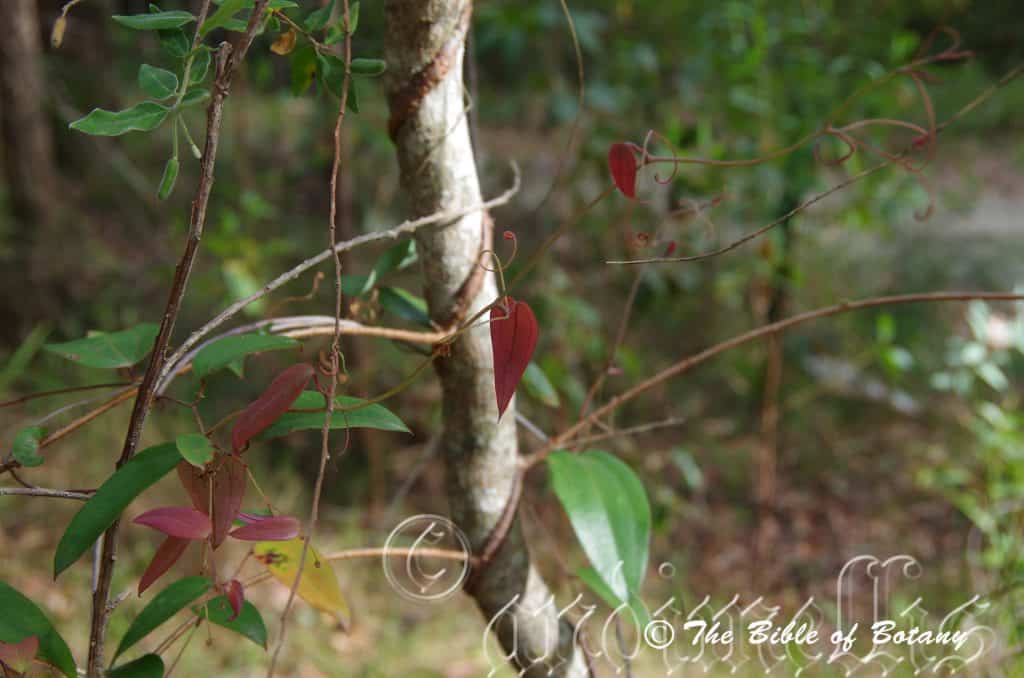
Kendall NSW
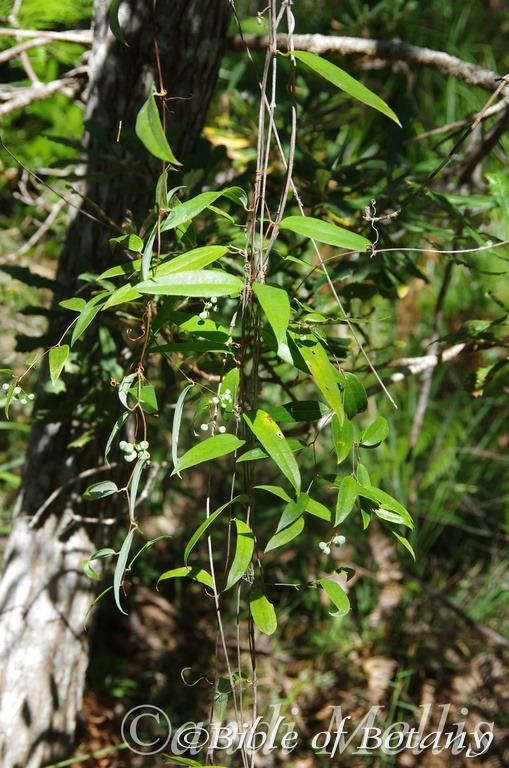
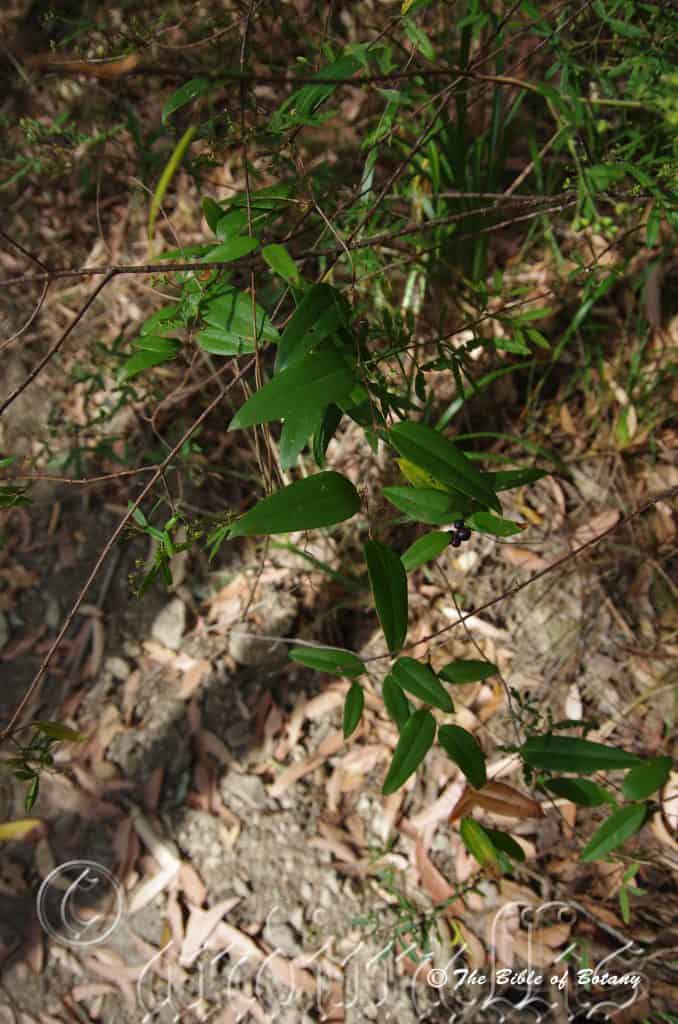
Kendall NSW
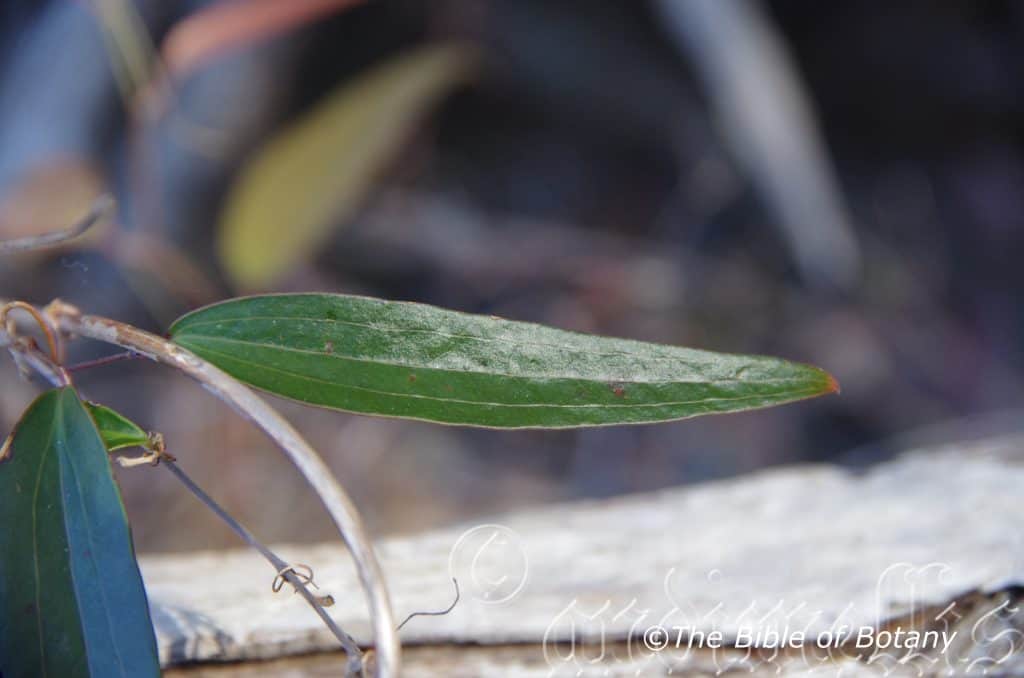
Author’s Garden The Pinnacles NSW
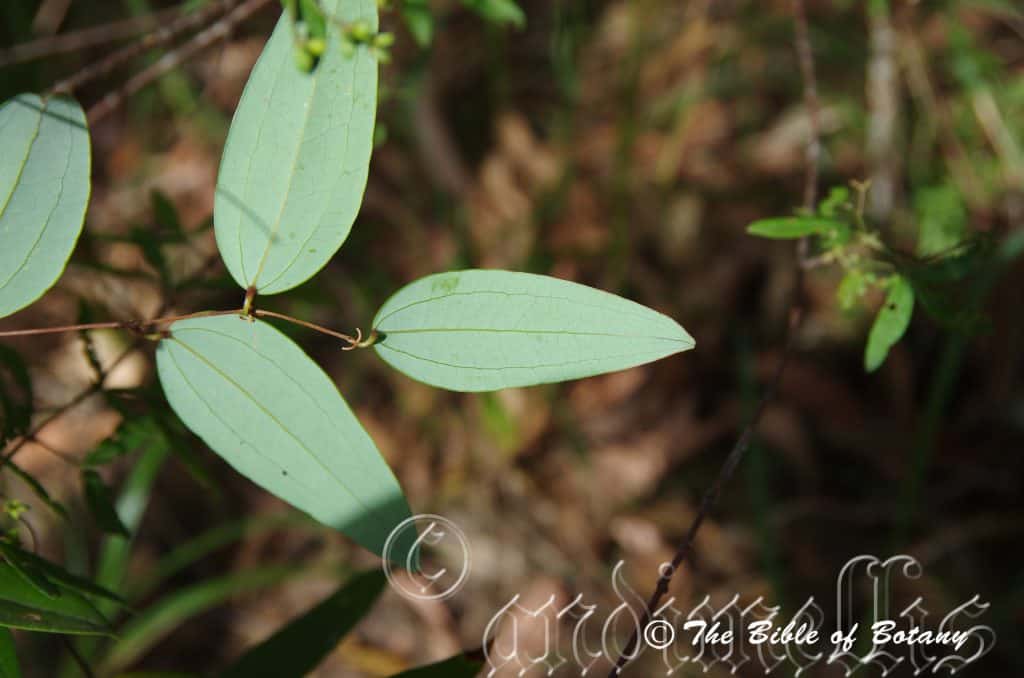
Kendall NSW
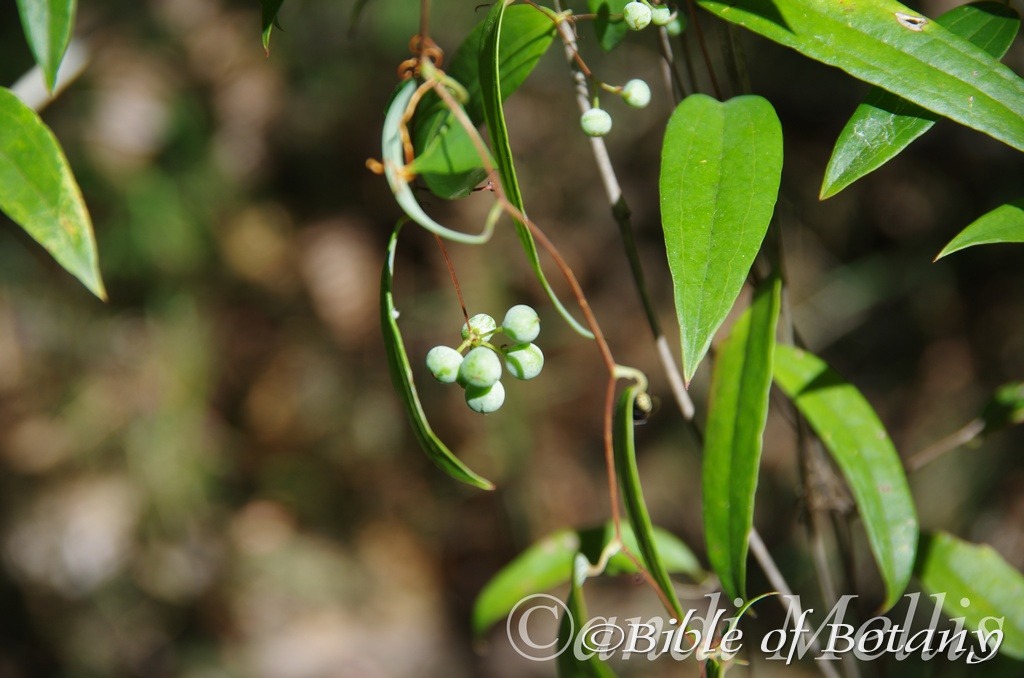
Author’s Garden The Pinnacles NSW
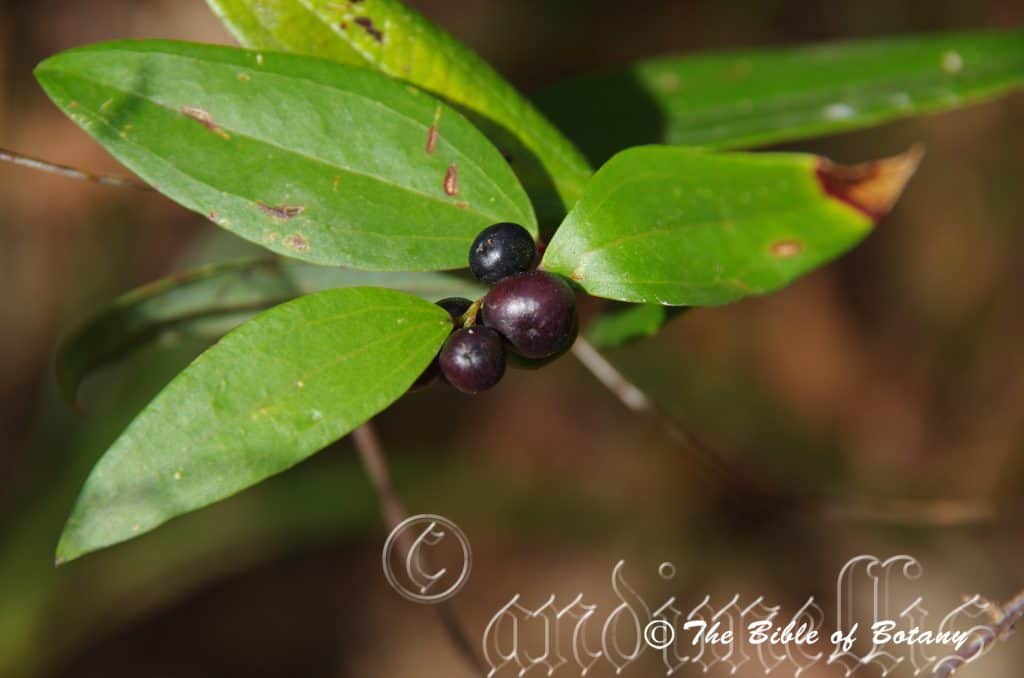
Kendall NSW
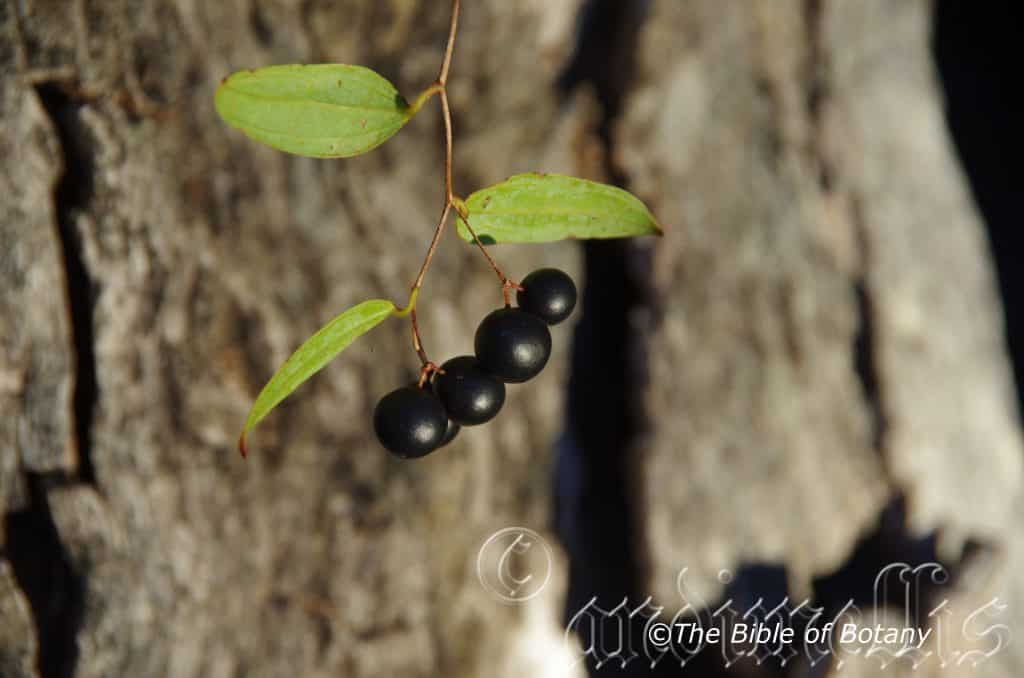
Author’s Garden The Pinnacles NSW
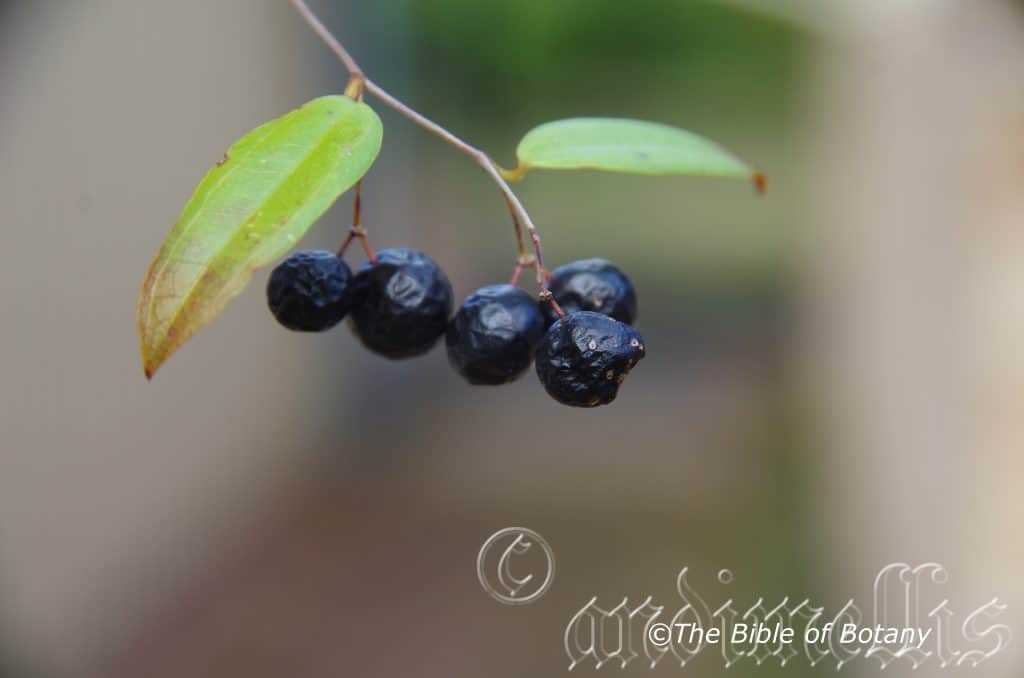
Author’s Garden The Pinnacles NSW
Smilax glyciphylla
Classification:
Unranked: Monocots
Order: Liliales
Family: Smilacaceae
Genus: From Smilax is Greek for a poisonous tree that causes scratching. It refers to the very fine prickles which often cause much irritation and scratching.
Specie: FromGlukús, which is Ancient Greek for sweet and Phullon/Phýllon, which is Ancient Greek for a leaf. It refers to leaves, which have a sweet taste.
Sub specie:
Common Name: Sarsaparilla Vine or Native Sarsaparilla.
In the Gumbaynggirr Aboriginal language it is known as Jugiil.
Distribution:
Smilax glyciphylla is found south from the tip of Cape York Peninsula to Temeil in southern coastal Northern New South Wales. It is mainly found on and east of the Great Dividing Range. There is an isolated population on the west coast of Cape York Peninsula on the lower reaches of the Mitchell and Alice Rivers.
https://avh.ala.org.au/occurrences/search?taxa=Smilax+glyciphylla#tab_mapView
Habitat Aspect Climate:
Smilax glyciphylla prefers light dappled shade to full sun. It grows in warm moist subtropical, tropical Rainforests, monsoonal forests or vine thickets. The altitude ranges from 3 meters ASL to 1500 meters ASL.
The temperatures range from minus 3 degrees in August to 36 degrees in January.
The rainfalls range from lows of 900mm to 3200mm average per annum.
Soil Requirements:
Smilax glyciphylla prefers better quality loams and light clays. The soils are usually derived from decomposed brown or black basalts heavier types of sandstones, granites or metamorphic rocks. The soils pH ranges from 4.5pH to 7pH. It does not tolerate waterlogged soils however periodic inundations may occur with plants growing in riparian zones. Non saline soils to moderately saline soils are tolerated.
Height & Spread:
Wild Plants: 1m to 5m by 1m to 3m.
Characteristics:
Smilax glyciphylla grows mainly as a small twinning creeper with pale grey-green to deep sea-green stems. The young stems are pale deep sea green gradually turning to a deep green near the apex where the newer leaf growth occurs. The young stems are glabrous. Prickles are absent on this species. The stems can reach 5 meters under ideal conditions but are usually 2 meters to 4 meters in length.
The alternate, disjunct, lanceolate leaves of Smilax glyciphylla measure 40mm to 100mm in length by 15mm to 40mm in width. The bases are rounded while the apexes are narrow acute to broad acute. The discolourous laminas are deep sea-green, dull to semi glossy and glabrous on the upper lamina while the lower lamina is glaucous. The new growth varies from being pale green through to being deep brown reds and glossy. The leaf margins are entire, flat and decurve near the apex. It is thin in texture. The mid vein and 2 parallel lateral veins are prominent on both the lower lamina and distinctly visible on the upper lamina. The stipules are attached to the base of the petioles and grow out to form tendrils to 80mm in length. The petiole measures 5mm to 10mm in length.
The dioecious inflorescences of Smilax glyciphylla are born on simple or compound umbels from the leaf axils. The deep sea-green, red or maroon pedicels and peduncules are glabrous. The peduncle is swollen at the junction with the pedicels. The peduncles measure 5mm to 12mm in length while the pedicels measure 4mm to 7mm in length. The 6 very pale creamy green linear to narrow oblong tepals are strongly recurve, cuspidate near the apex, glabrous and measure 3mm to 4mm in length by 1.2mm to 1.6mm in width.
The 6 flagella like filaments in the male flowers are free for their entire length and measure 3mm to 3.5mm in length. The filaments are very pale creamy green and support the basifixed white anthers. The anthers measure 0.5mm to 1mm in length.
The white style and stigma are glabrous while the green ovary measures 1mm to 1.4mm in length. The trilobed stigma measures 1.2mm to 1.4mm in width. Smilax glyciphylla’s flowers appear from late September through to late February.
The fruits of Smilax glyciphylla are globose berries. The berries are glabrous and measure 5mm to 8mm in length by 5mm to 8mm in diameter. The green berries turn deep purple black externally and pale creamy green to creamy yellow internally when ripe. The calyx lobes are not persistent on the ripe fruit. The 1 to 3, “V” shape, black seed measures 2mm to 2.5mm on one arm and 2.5mm to 3.5mm in length on the other arm by 2mm to 2.5mm in diameter.
Wildlife:
Smilax glyciphylla support native bees, flies and small butterflies when in flower. The fruits are eaten by the Satin Bower Bird, Regent Bower bird, Lewin’s Honey eater and Silver eyes. Most fruitigrove birds would probably consume the fruits.
The fruits have a bland, somewhat sweet flavour which is difficult to describe. The leaves have a distinct sweet, sarsaparilla taste which last for a considerable time in the mouth when chewed.
Cultivation:
Smilax glyciphylla is a beautiful small wiry creeper that should be grown in association with other rainforest specie or moist Eucalyptus bush gardens. It is ideal at the edge of a forest or deep in the center of the rainforest garden where there is some light penetrating the canopy. In cultivation they will grow from 1.5 meters to 2 meters in height by 2 meters to 3 meters wide when grown in the open on a trellis.
It grows exceptionally well on medium to heavier soils where deep leaf litter keeps the soil cool and moisture at an even level. If these requirements are met they can cope with temperatures as low as minus 3 degrees and up to 36 degrees. It is moderately drought resistant once established in their climatic zone.
Add to the above, if it is given an adequate supply of water and a little native fertilizer on a regular basis the plants should respond with good flowering and fruit over a long period. The vines can be tip pruned to induce more lateral growth and leaf growth. It is best planted in small groups of 2 or 3 on a trellis, fence or as a ground cover.
Propagation:
Seeds: The seeds of Smilax glyciphylla can be removed easily from the fruits.
Sow fresh seeds directly into a seed raising mix, keeping them moist not wet. Do not over water as the seeds will rot off before germination takes place. Place the trays in a cool shaded area with 50mm shade cloth in the bush house. When the seedlings are 20 to 25 mm tall, prick them out and plant them into 50mm native tubes using a good organic mix.
As the seedlings roots reach the bottom of the tubes plant them out into their permanent position. Do not delay.
Fertilize using seaweed, fish emulsion or organic chicken pellets soaked in water on an alternate basis. Fertilize every two months until the plants are established then twice annually in early September and March to maintain better colour, health, vitality and flowering.
Further Comments from Readers:
“Hi reader, it seems you use The Bible of Botany a lot. That’s great as we have great pleasure in bringing it to you! It’s a little awkward for us to ask, but our first aim is to purchase land approximately 1,600 hectares to link several parcels of N.P. into one at The Pinnacles NSW Australia, but we need your help. We’re not salespeople. We’re amateur botanists who have dedicated over 30 years to saving the environment in a practical way. We depend on donations to reach our goal. If you donate just $5, the price of your coffee this Sunday, We can help to keep the planet alive in a real way and continue to bring you regular updates and features on Australian plants all in one Botanical Bible. Any support is greatly appreciated. Thank you.”
In the spirit of reconciliation we acknowledge the Bundjalung, Gumbaynggirr and Yaegl and all aboriginal nations throughout Australia and their connections to land, sea and community. We pay our respect to their Elders past, present and future for the pleasures we have gained.